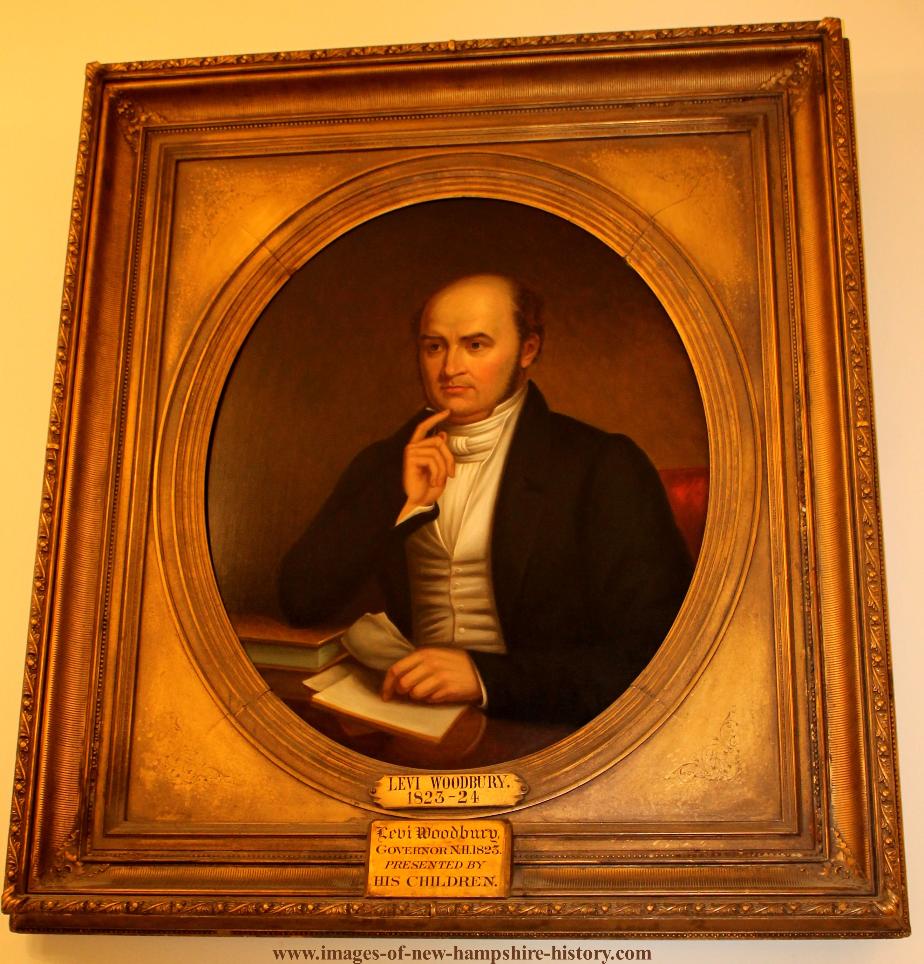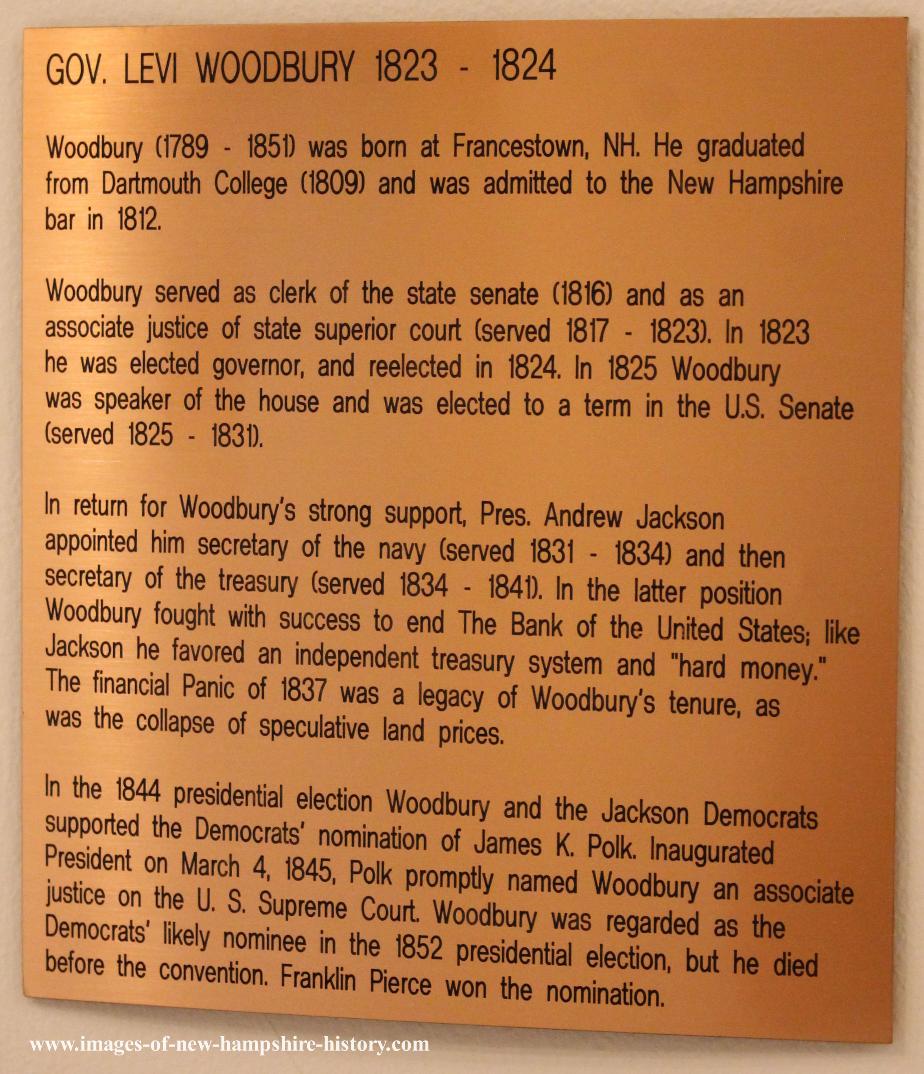List of Portraits in the New Hampshire State House

|
NH State House Portraits.pdf Size : 390.986 Kb Type : pdf |
New Hampshire State House Civil War Mural


First Commencement at Dartmouth - State Senate Chamber Painting
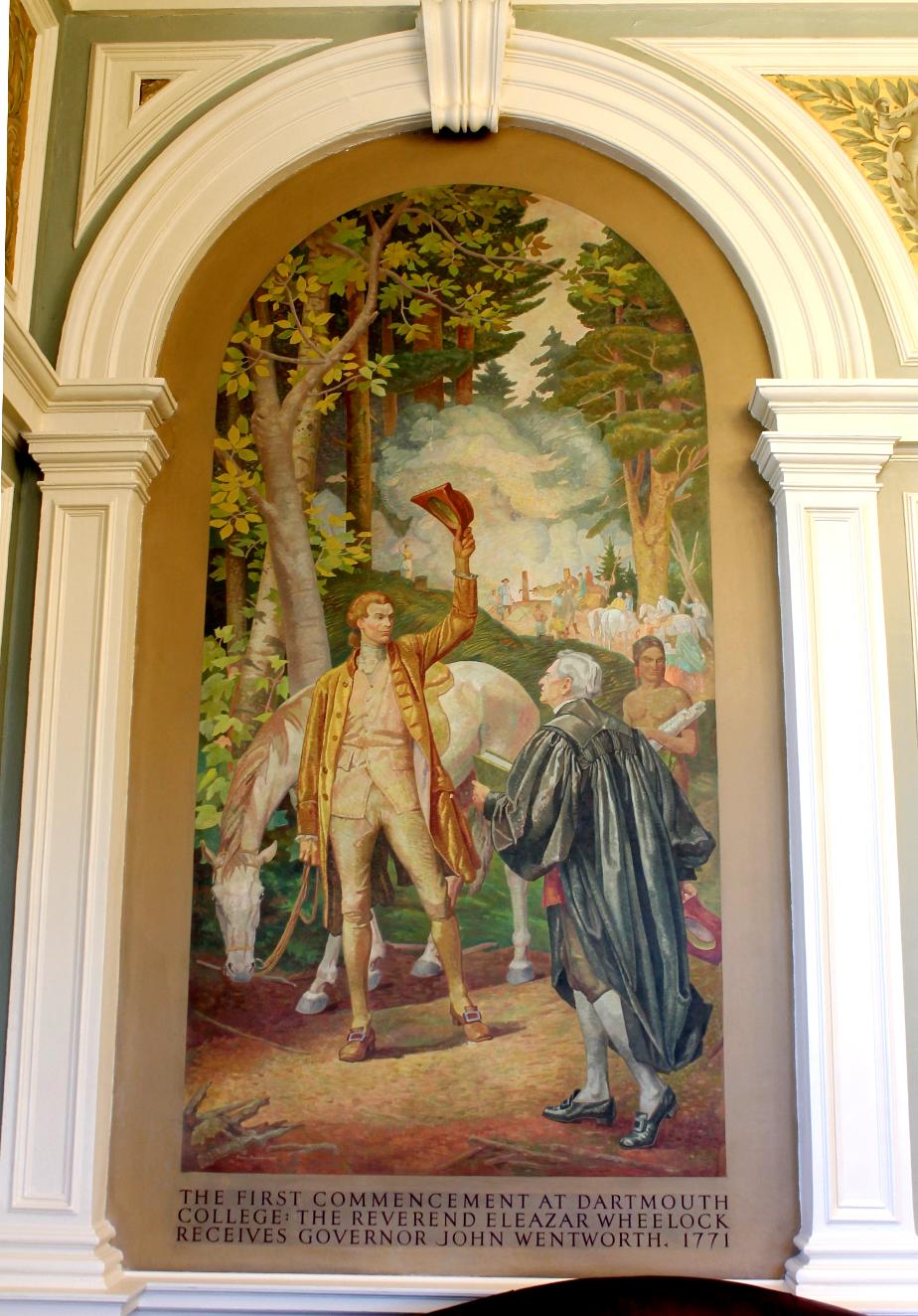
`
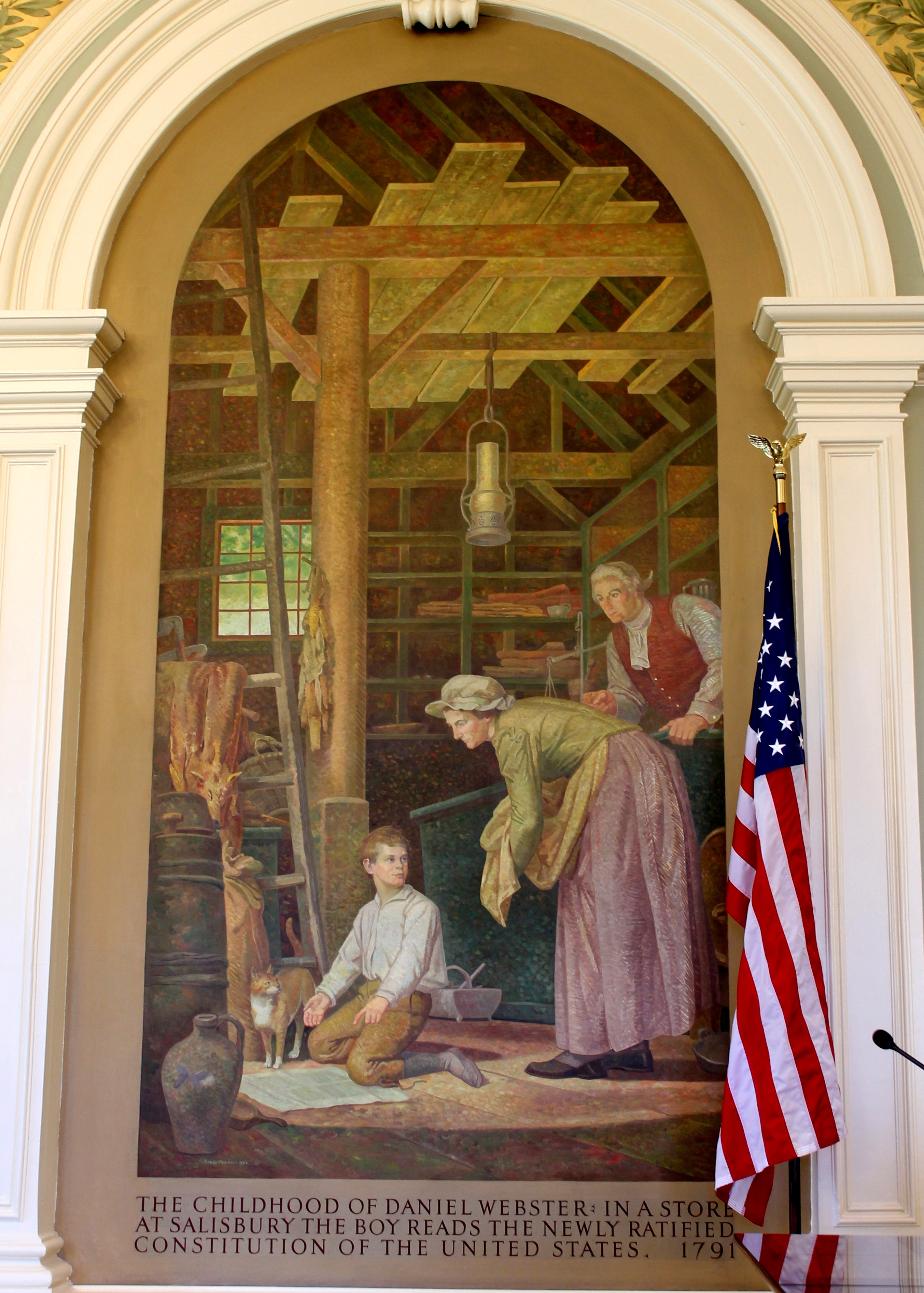
Abbott Thayer - Painter & Scientist, State House Senate Chamber Painting
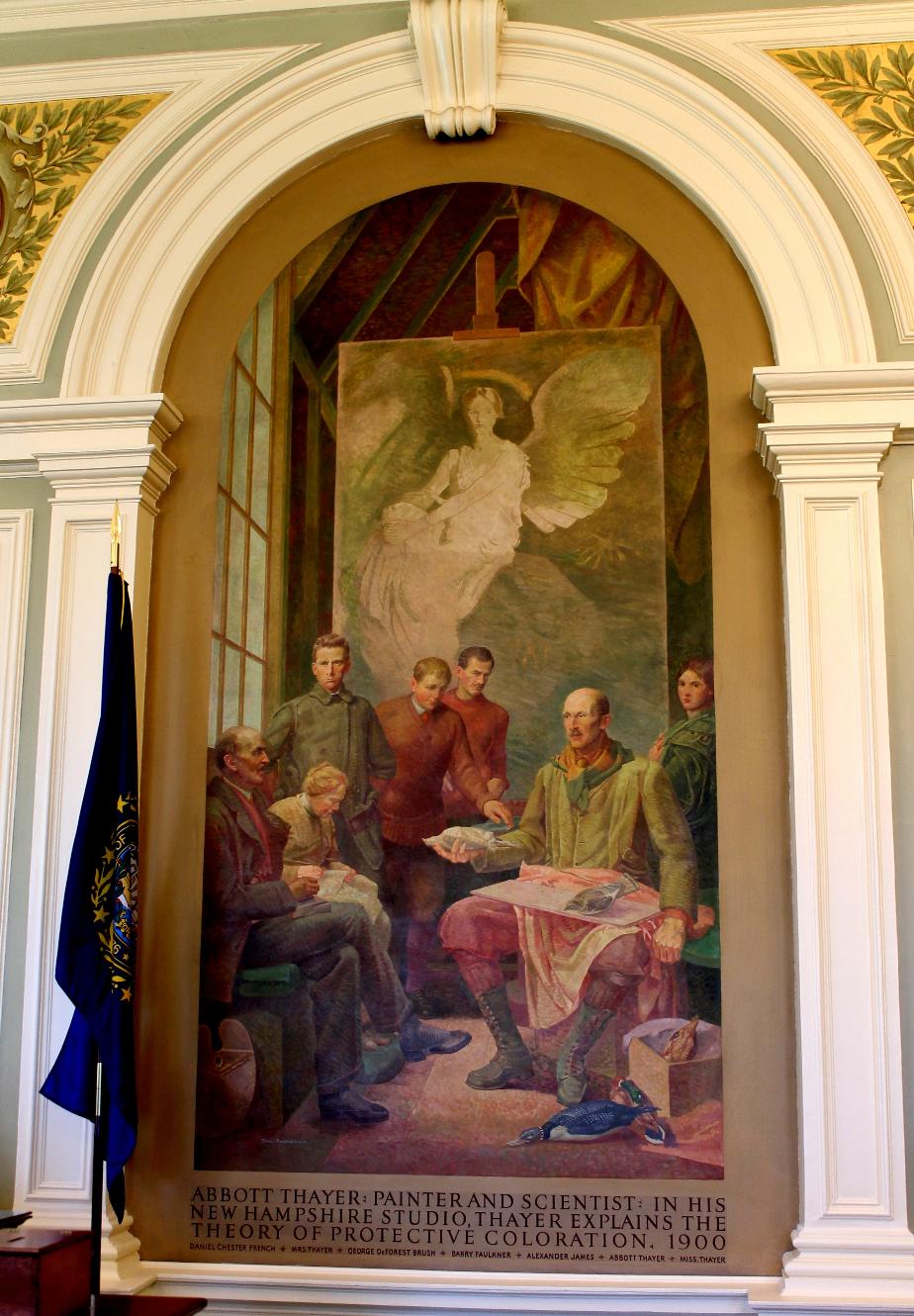
John Stark at Amoskeag Falls - State House Senate Chamber Painting

Mayflower Dedication Tablet
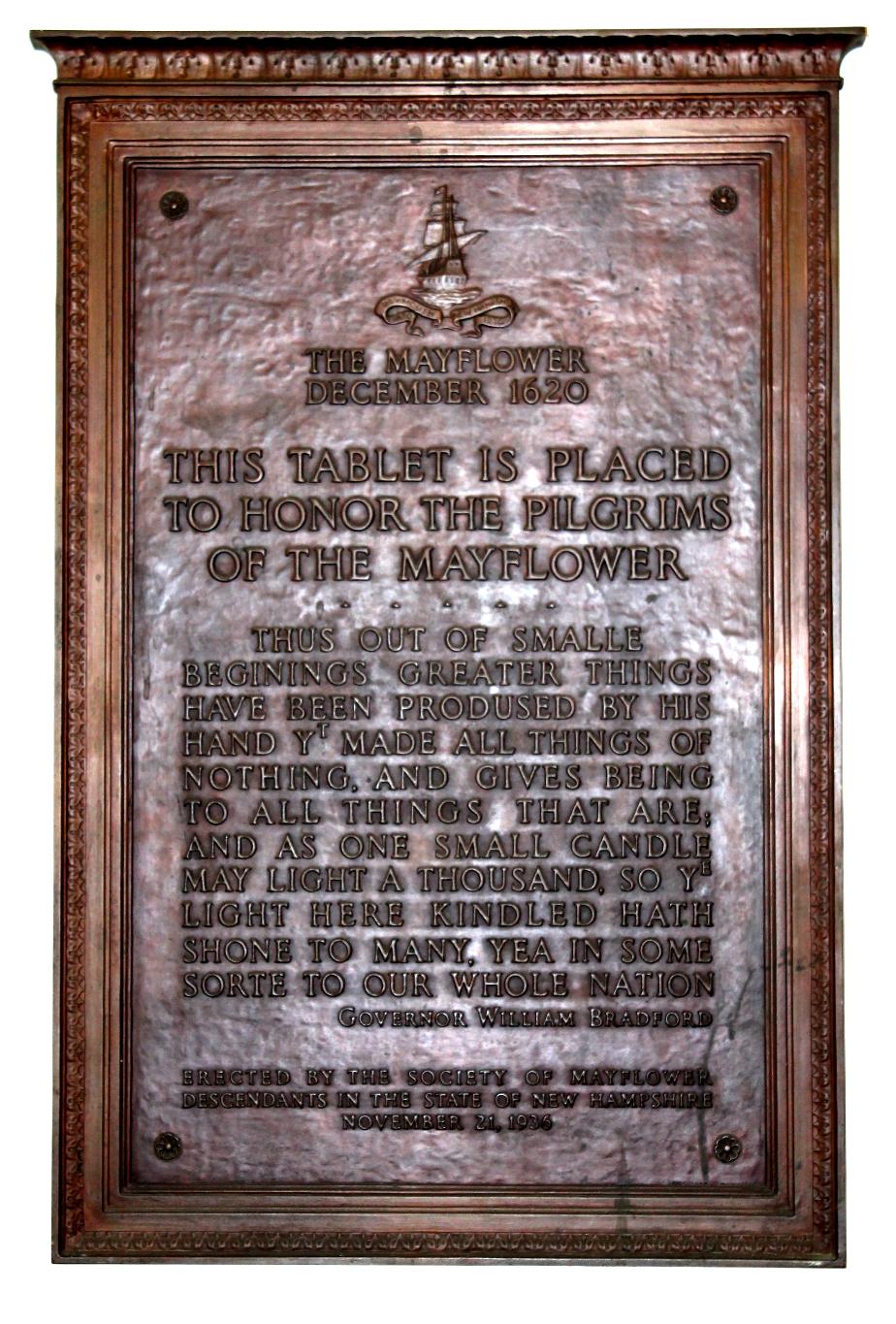
State House Remodeling Portrait - Gov. Henry Quimby
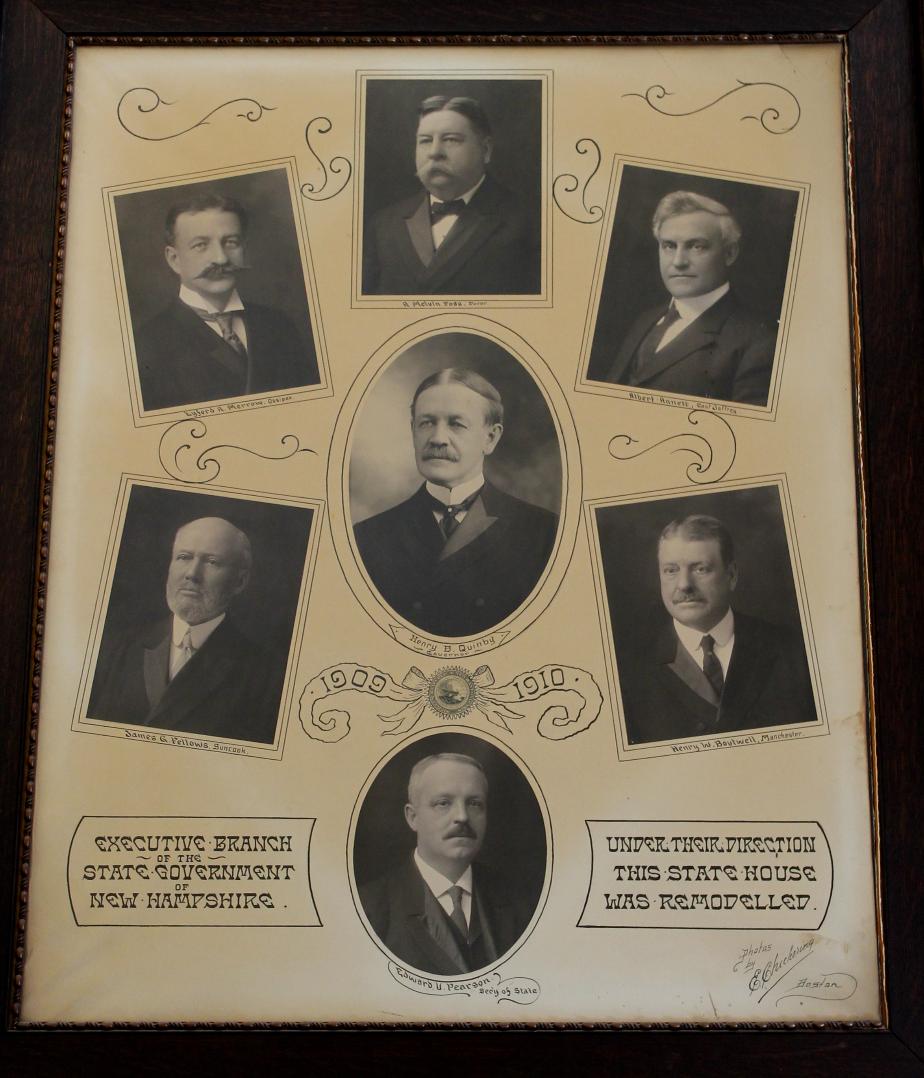
George H Adams - (Campton) - NH Senate President 1905
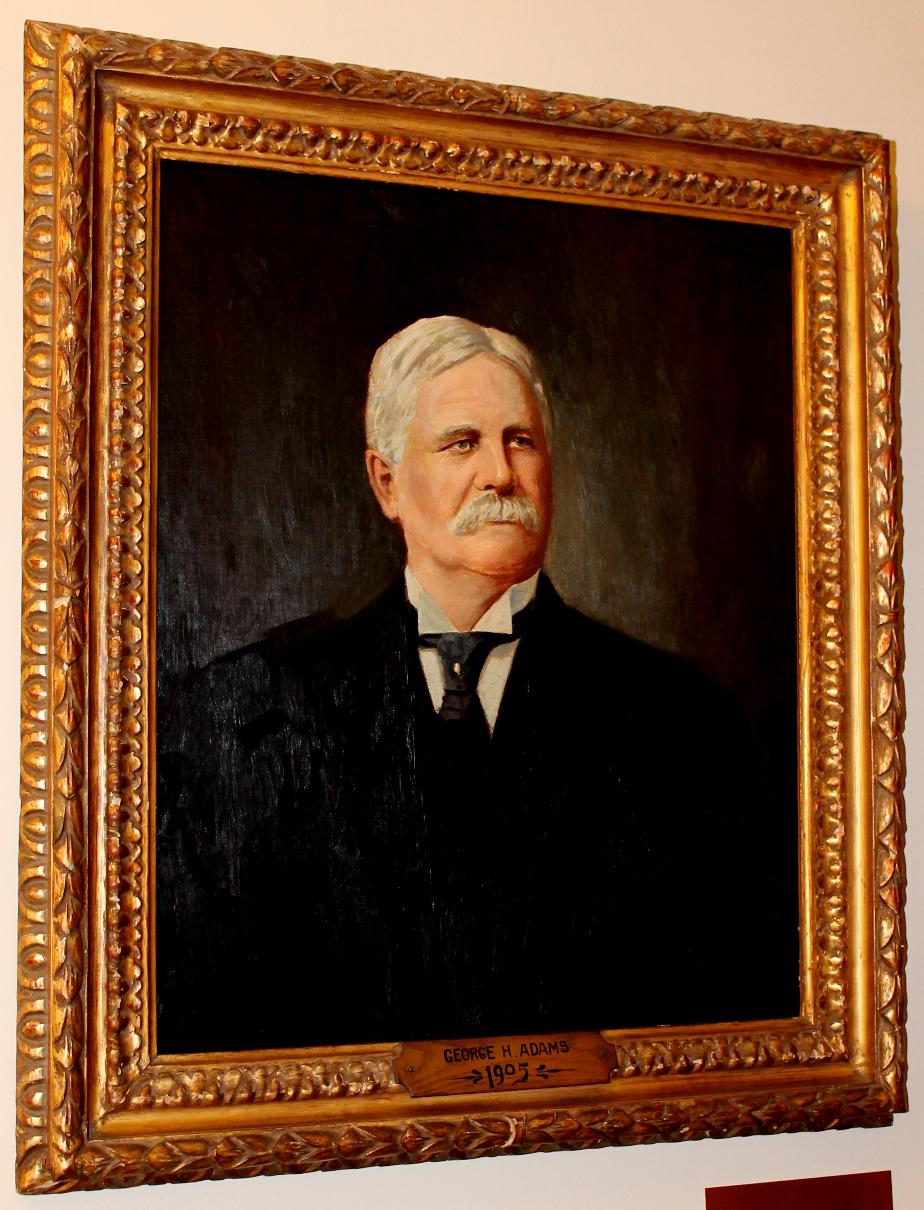
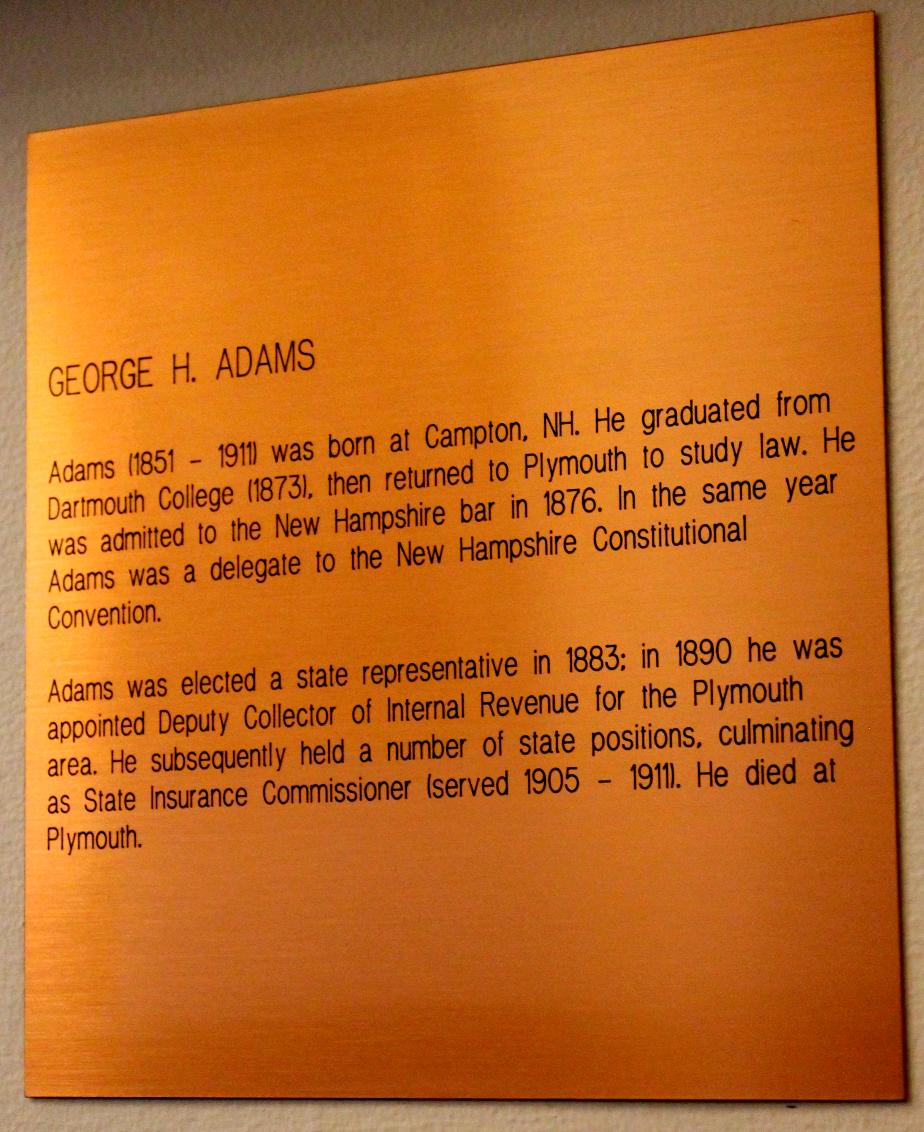
George Herbert Adams (May 18, 1851 – November 18, 1911) was an American Republican politician and lawyer who served as the President of the New Hampshire Senate.
Adams was born in Campton, New Hampshire, May 18, 1851, the only child of Isaac L. and Louisa C. (Blair) Adams.
After he graduated from Dartmouth College in 1873, Adams spent a year as the principal of the high school of Marlborough, Massachusetts. In January 1874, Adams entered the law office of Henry W. Blair in Plymouth, New Hampshire to study the law. Adams studied law until he was admitted to the Bar, during the September 1876 term of the New Hampshire Supreme Court at Grafton County, New Hampshire.
On January 14, 1877, Adams married Sarah Katherine Smith of Meredith, New Hampshire. They had two children, Walter Blair Adams born December 13, 1887, and George Herbert Adams, Jr., born April 12, 1890.
Adams was a delegate from Campton at the 1876 New Hampshire Constitutional Convention, and he was to elected to represent Plymouth in the New Hampshire House of Representatives in 1883, and to the New Hampshire Senate in 1889 and 1905, and in 1905 he was chosen the President of the New Hampshire Senate. Adams was twice elected the Solicitor of Grafton County, New Hampshire, serving for four years starting April 1, 1895.
Adams died in Plymouth, New Hampshire November 18, 1911, and is buried in Trinity Cemetery, Holderness, New Hampshire.
Gov Sherman Adams (1948-1952) Eisenhower Staff
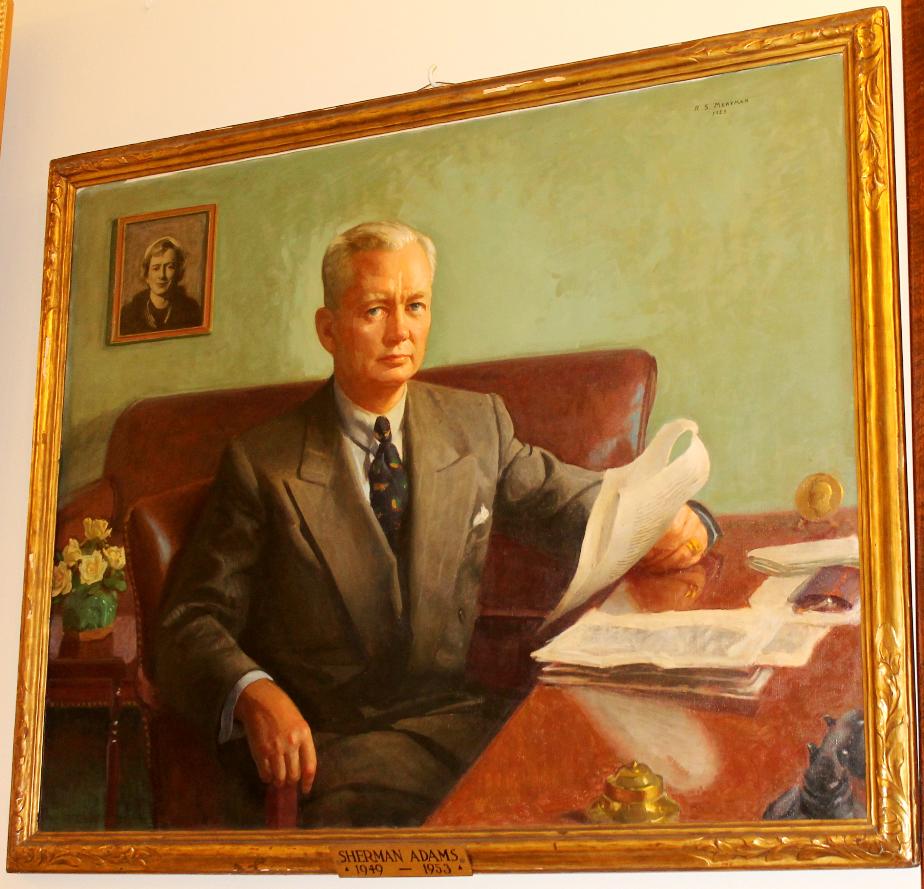

Wesley Adams - NH Senate President 1923-1925 (Nelson NH)
1872 - Born: Wesley Adams NH State Senate President 1923-1925. Born in Nelson NH then his family moved to Londonderry when he was a child. Adams studied at local schools and worked as a blacksmith for five years. He started Wesley Adams Orchards near the center of Derry. The orchards produced apples, peaches and berries for many years. As a farmer, Adams was a member of the Londonderry Grange Number four. Adams rose through the ranks of the Grange, becoming the State Master in 1917, when he was also elected to the Executive Committee of the Grange. He was chosen to be the new head of The Old Home Week Association beginning in 1920. In 1921, Adams was made director of the Grange Fire Insurance Company. As a farmer and a member of the Grange, Adams saw much rural poverty in New Hampshire during the 1920s. As President of the Senate (1923 - 1925) he pushed for farm relief, and as a Senate representative (1931-1933, 1935-1937) he supported Governor Winant's State Relief Act and President Roosevelt's Federal Emergency Relief Act. When he died in 1943, Adams' work for the rural poor was eulogized on the floor of the State House of Representatives.
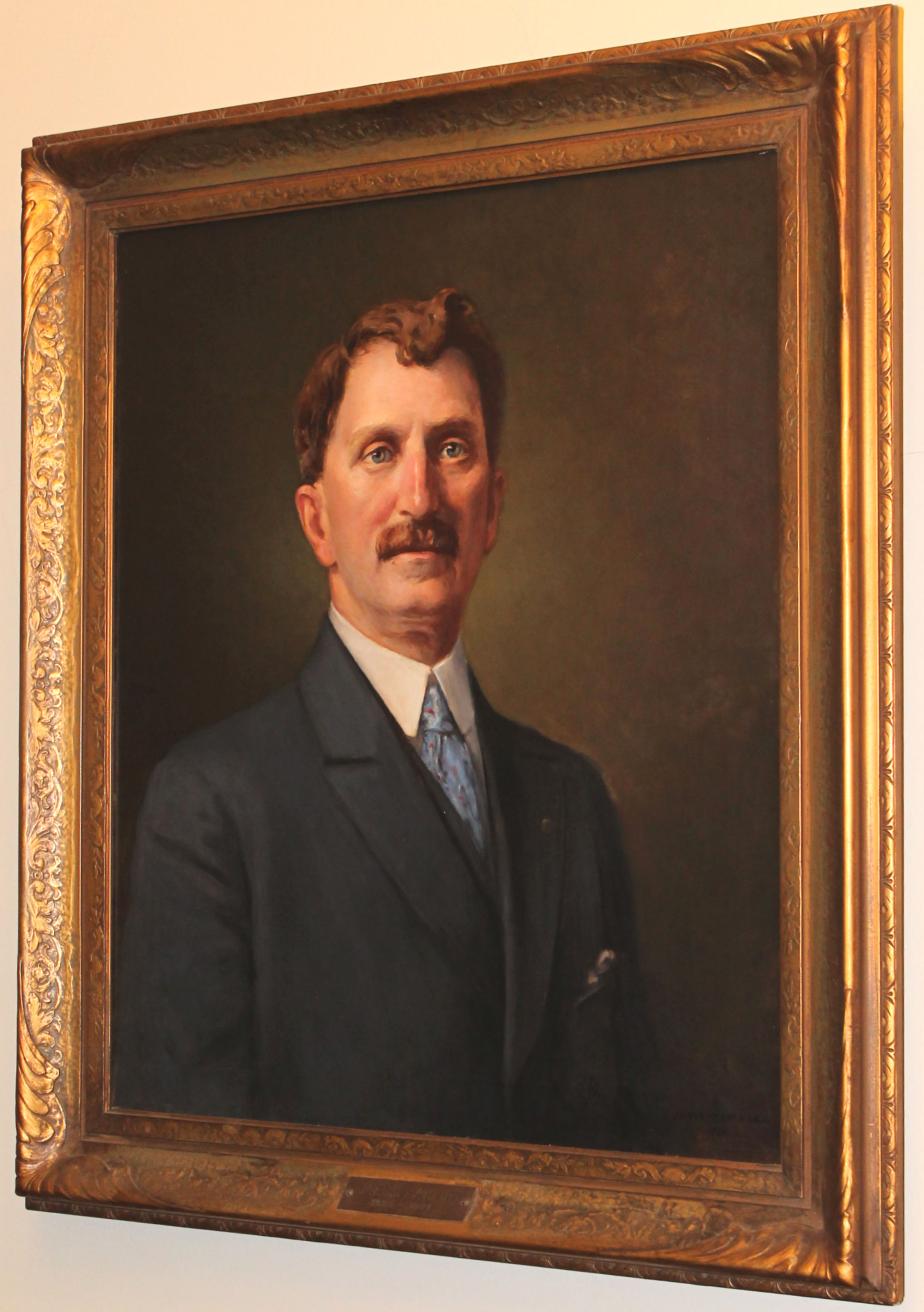
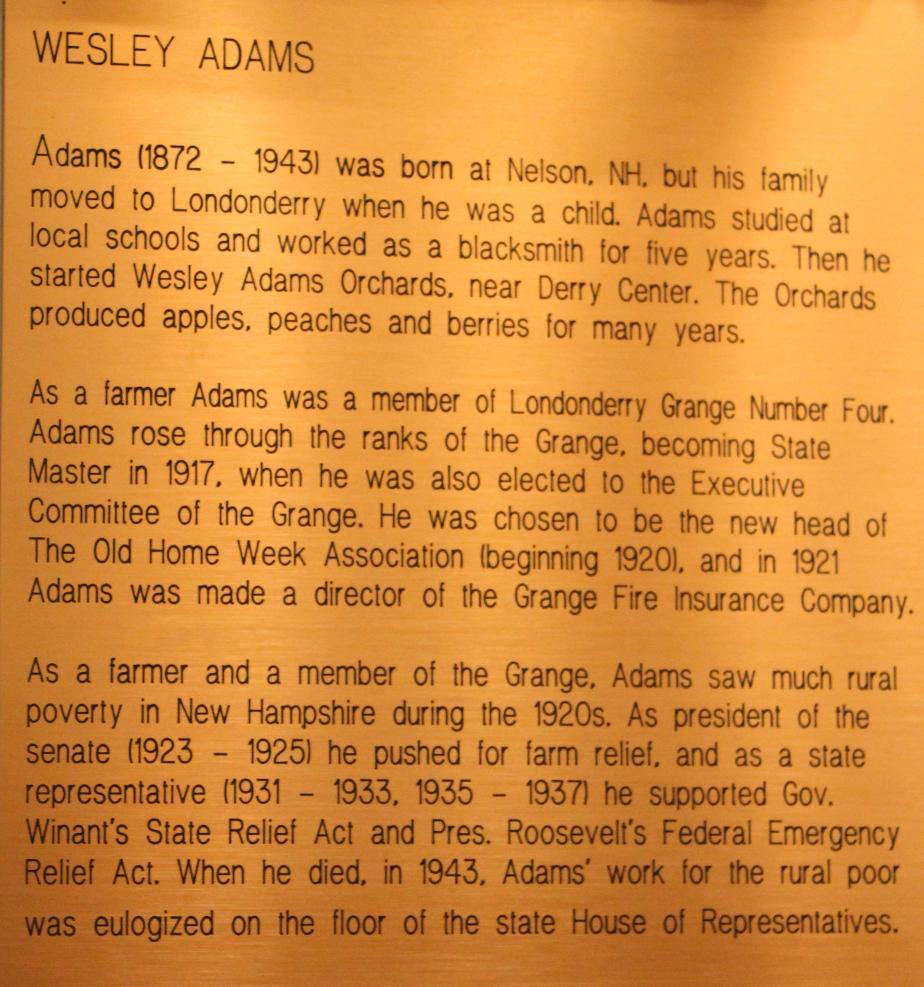
US Senator Charles Atherton 1843 - 1849 (Amhearst NH)
Charles Gordon Atherton, (son of Charles Humphrey Atherton), a Representative and a Senator from New Hampshire; born in Amherst, Hillsborough County, N.H., July 4, 1804; graduated from Harvard University in 1822; studied law; admitted to the bar in 1825 and commenced practice in Dunstable (now Nashua), N.H.; member of the State house of representatives 1830 and 1833-1835, serving as speaker 1833-1835; elected as a Democrat to the Twenty-fifth and the two succeeding Congresses (March 4, 1837-March 3, 1843); did not seek reelection in 1842, having become a candidate for Senator; elected to the United States Senate as a Democrat in 1843, and served from March 4, 1843, to March 3, 1849; chairman, Committee on Printing (Twenty-ninth Congress), Committee on Roads and Canals (Twenty-ninth Congress), Committee on Finance (Thirtieth Congress); resumed the practice of law in Nashua; again elected to the United States Senate in 1852 for the term beginning March 4, 1853, took the oath of office on March 4, 1853, and served until his death in Manchester, N.H., November 15, 1853; interment in Nashua Cemetery, Nashua, N.H.
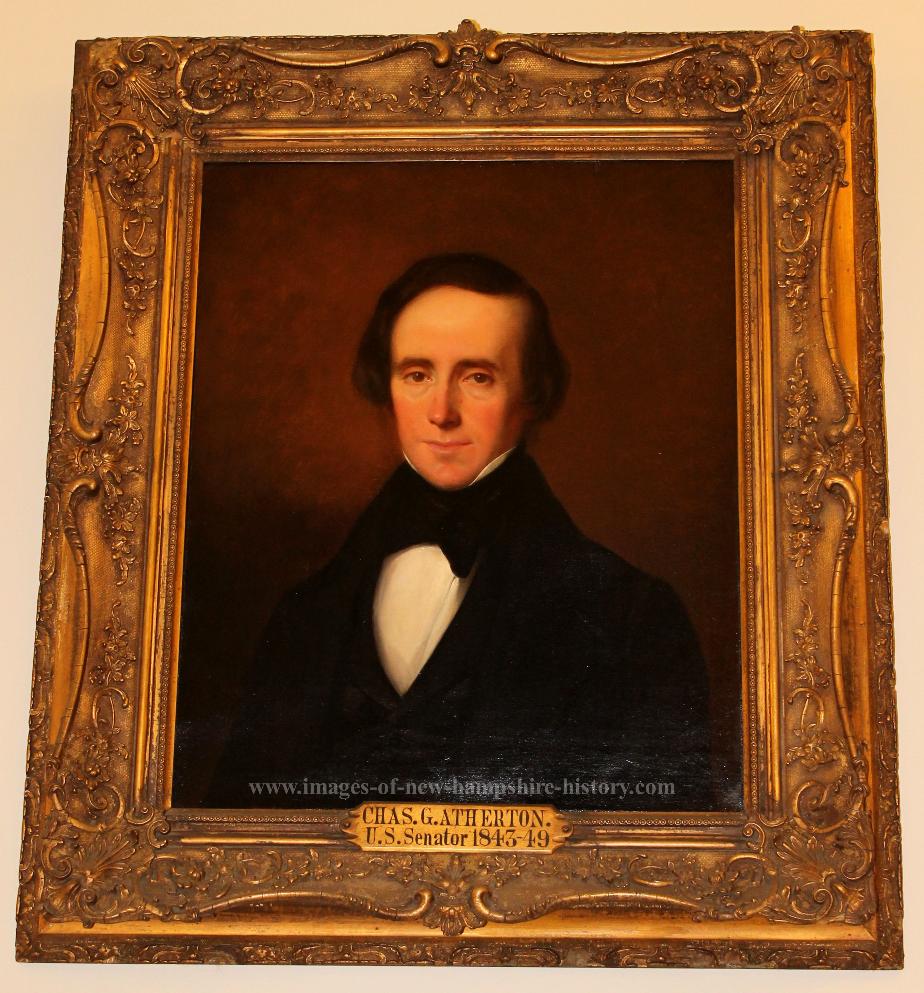
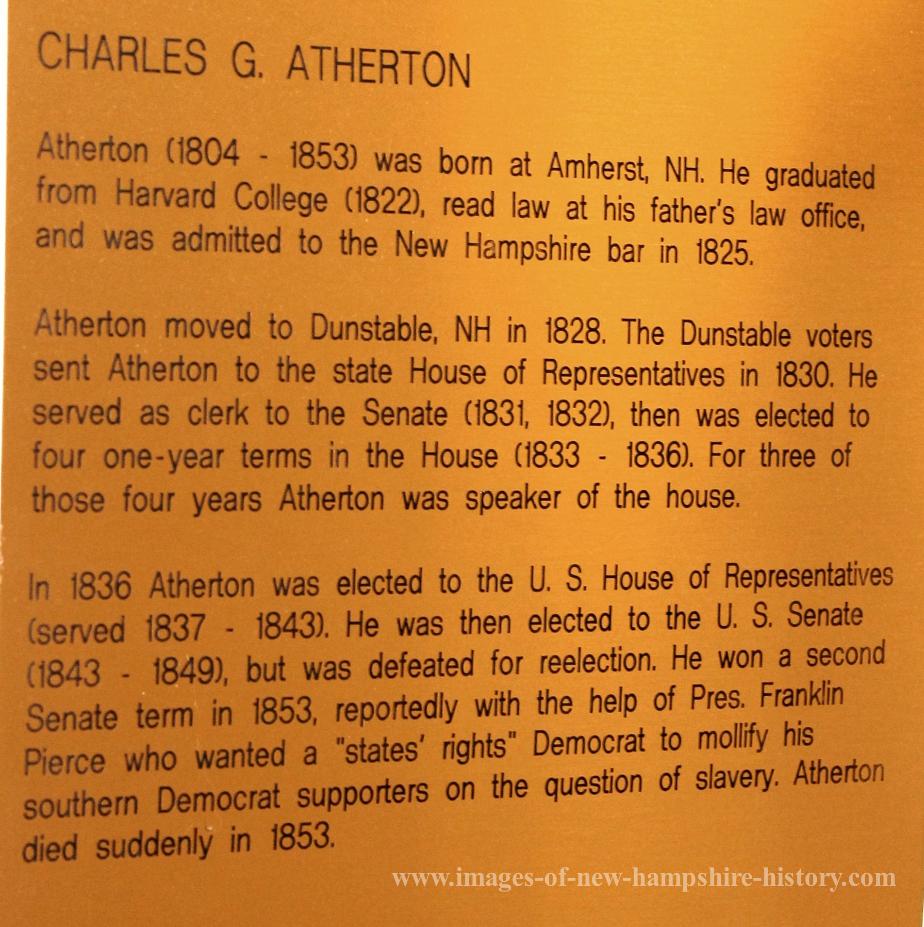
Governor Nahum Bachelder 1903 - 1904
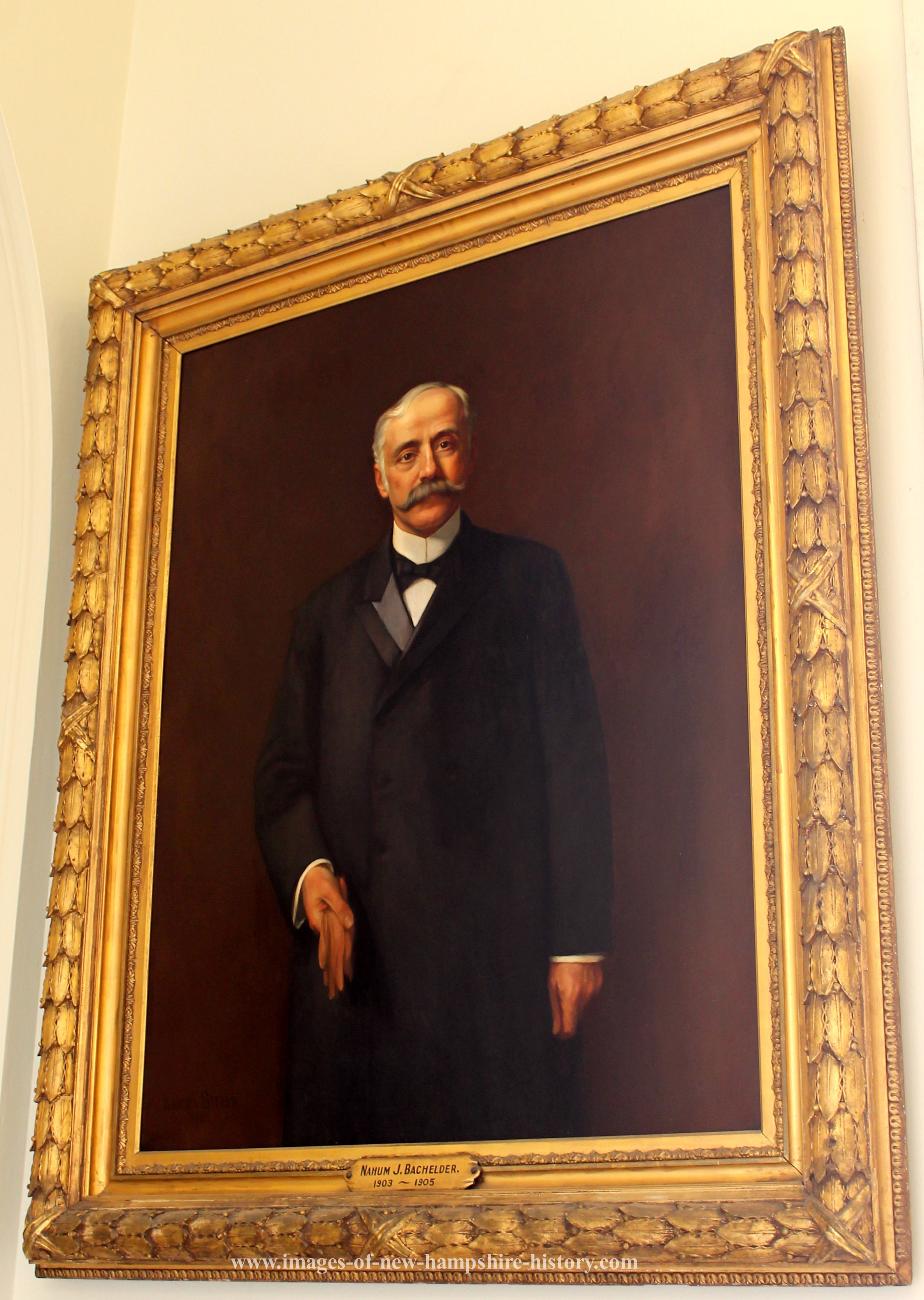
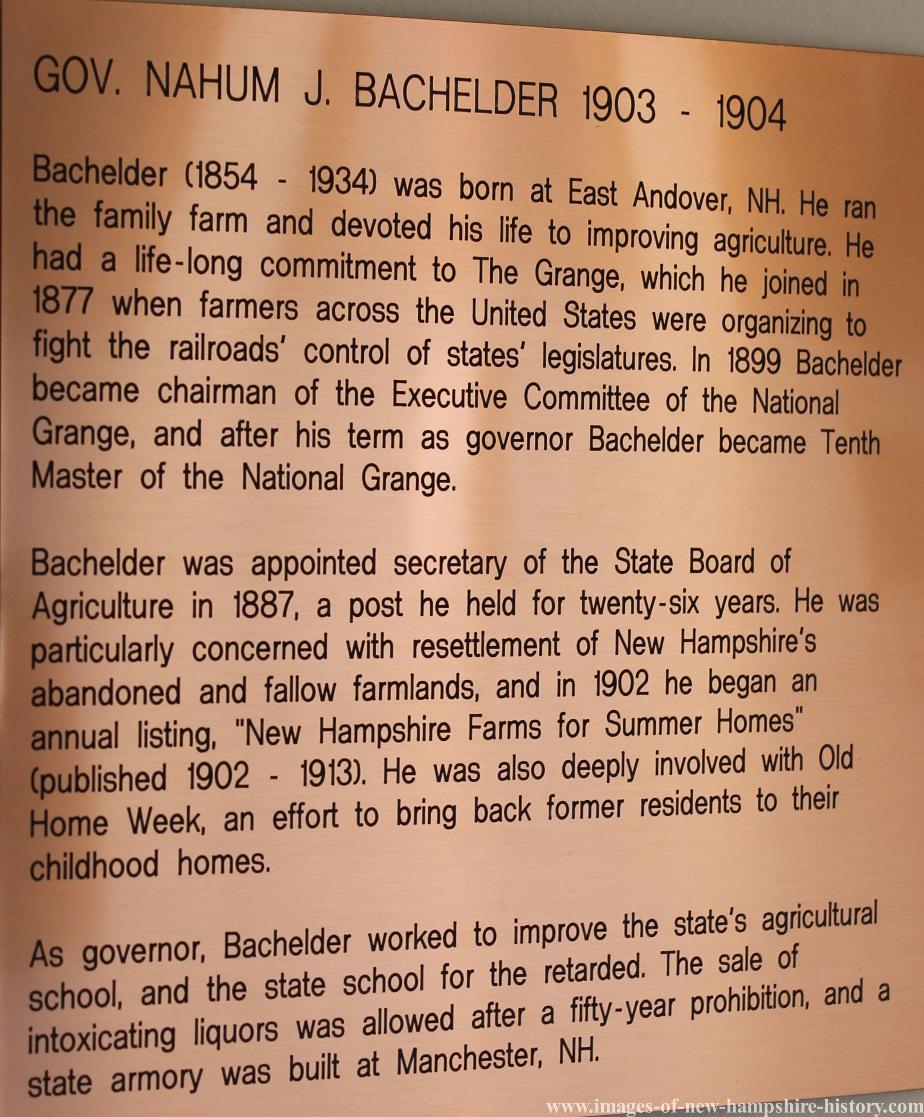
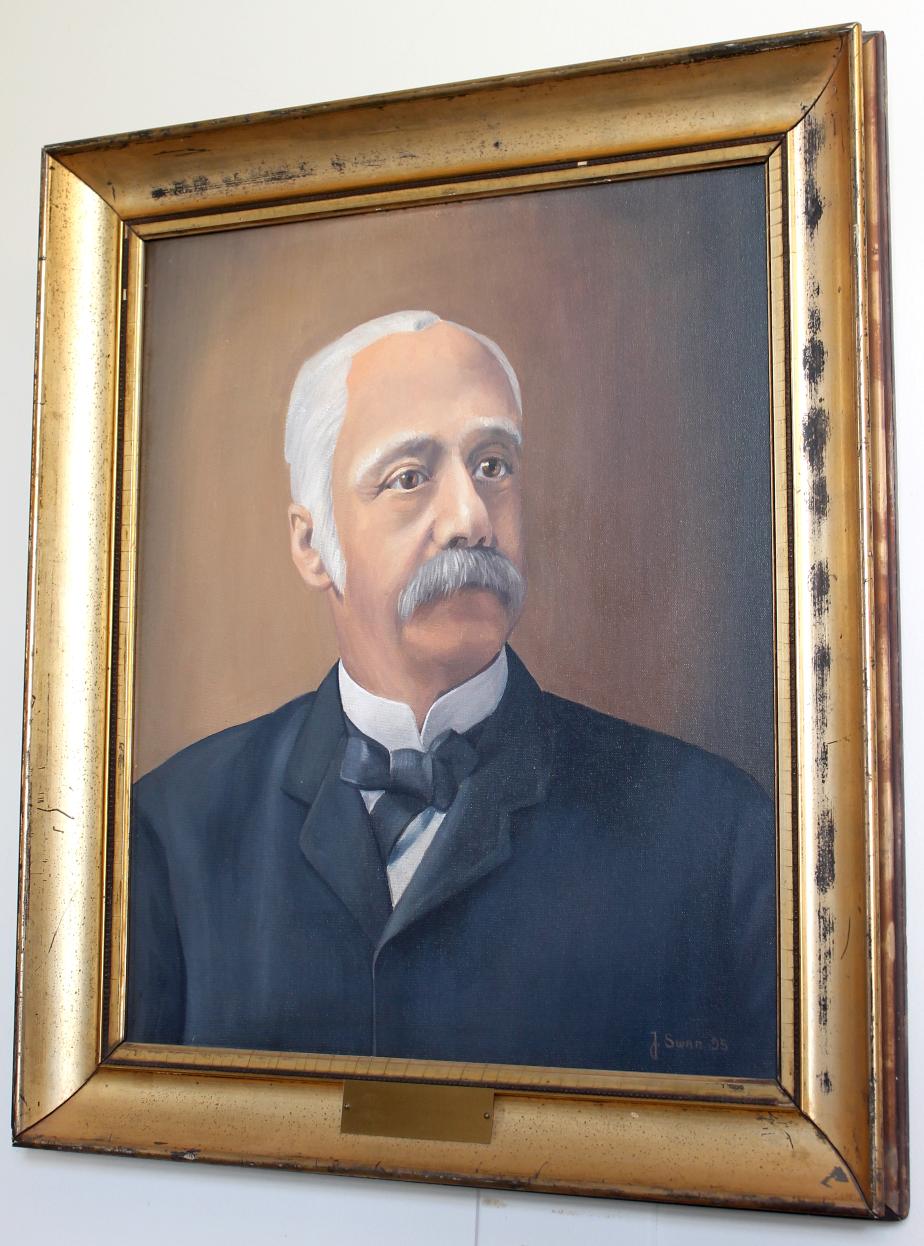
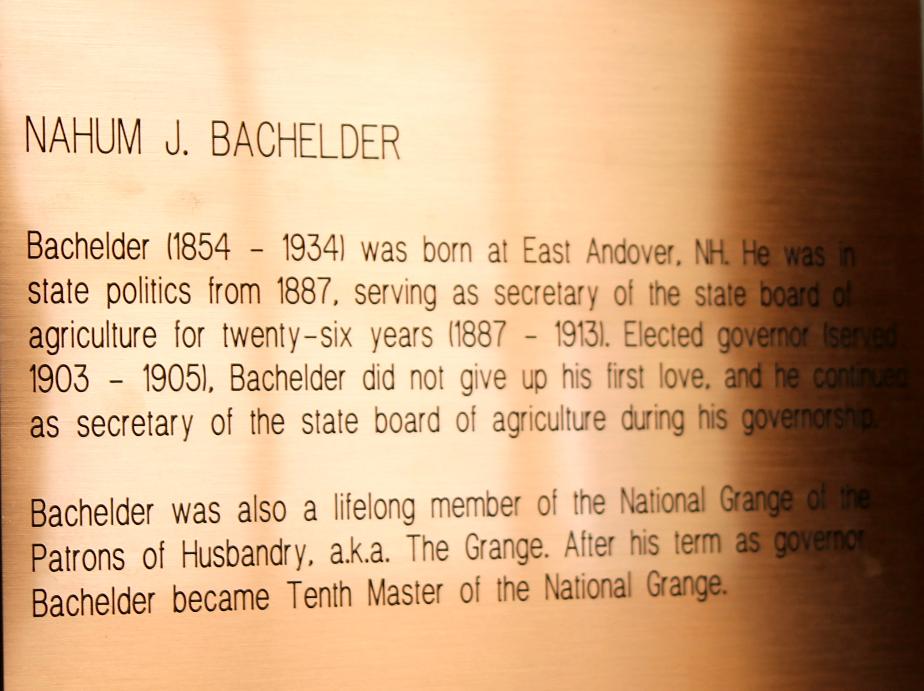
Governor William Badger 1834-1836
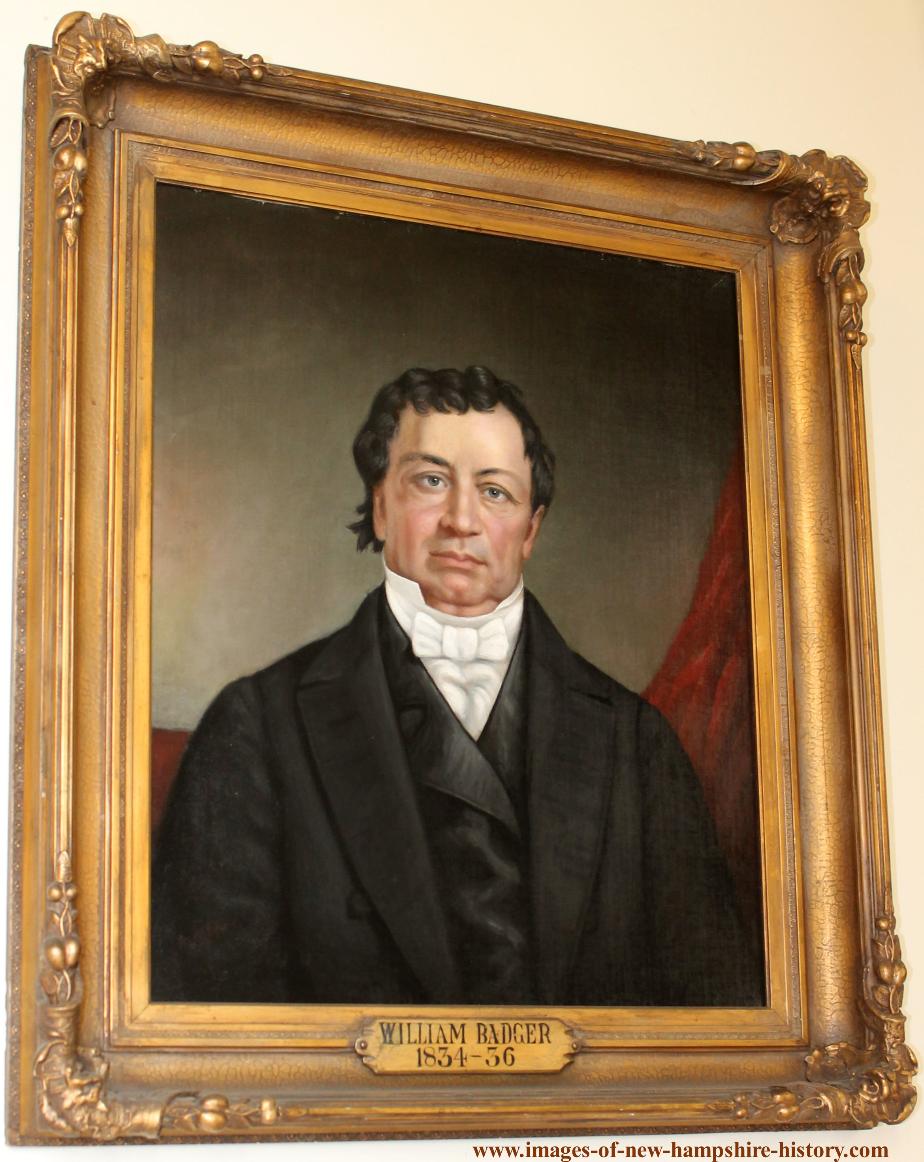
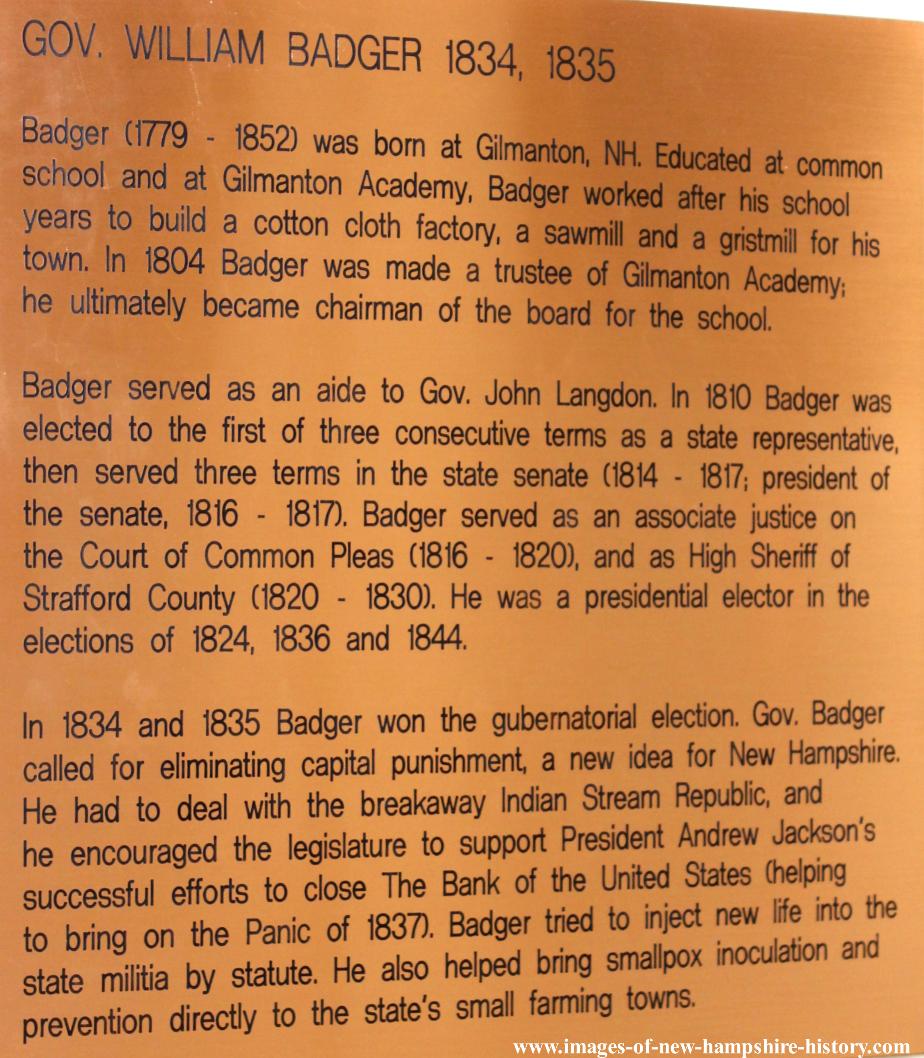
Nathaniel Baker - NH Governor 1854-1855
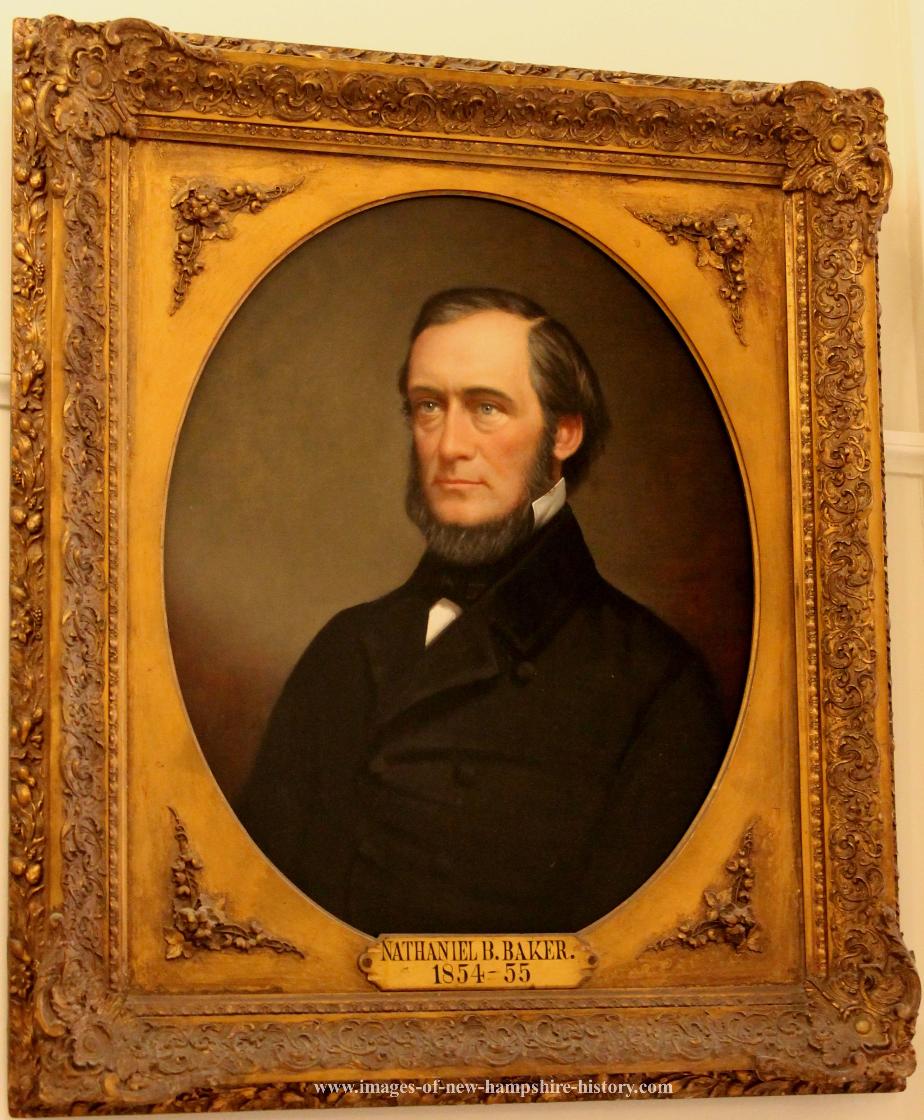
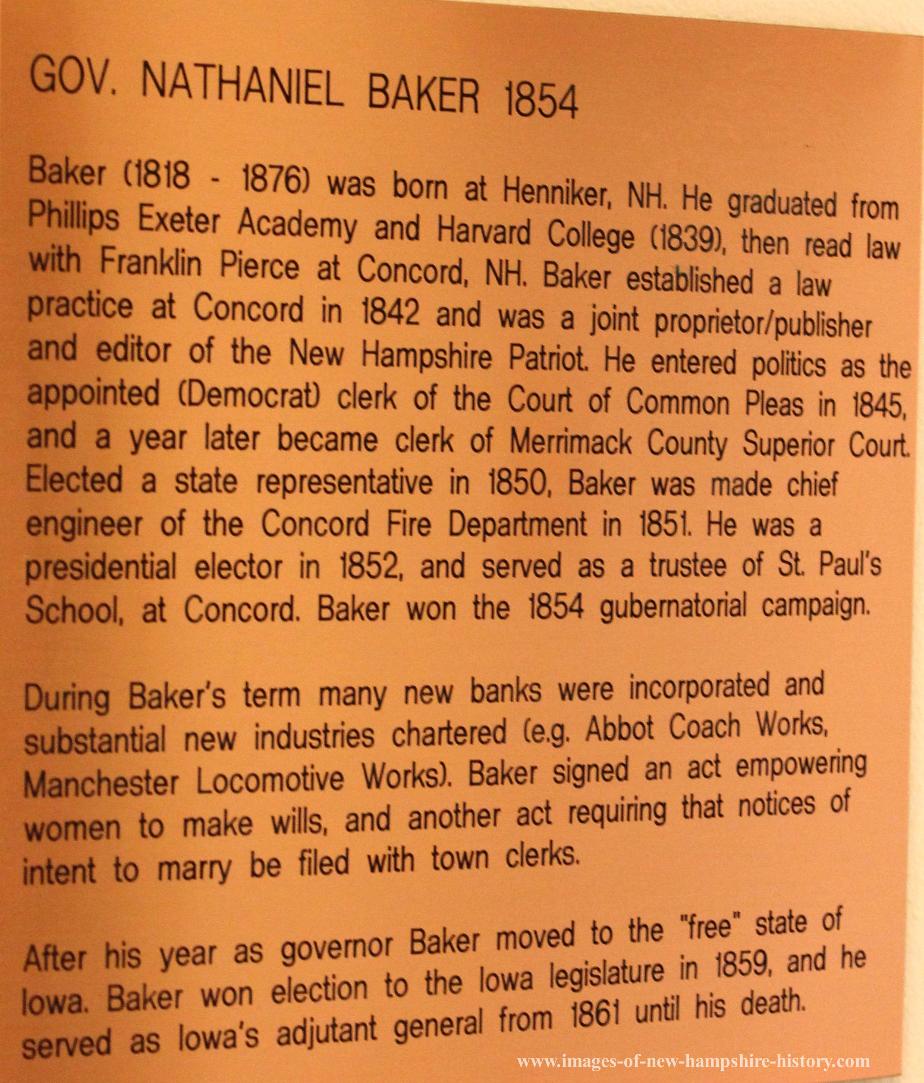
Charles H Bartlett - NH State Senate President - 1883
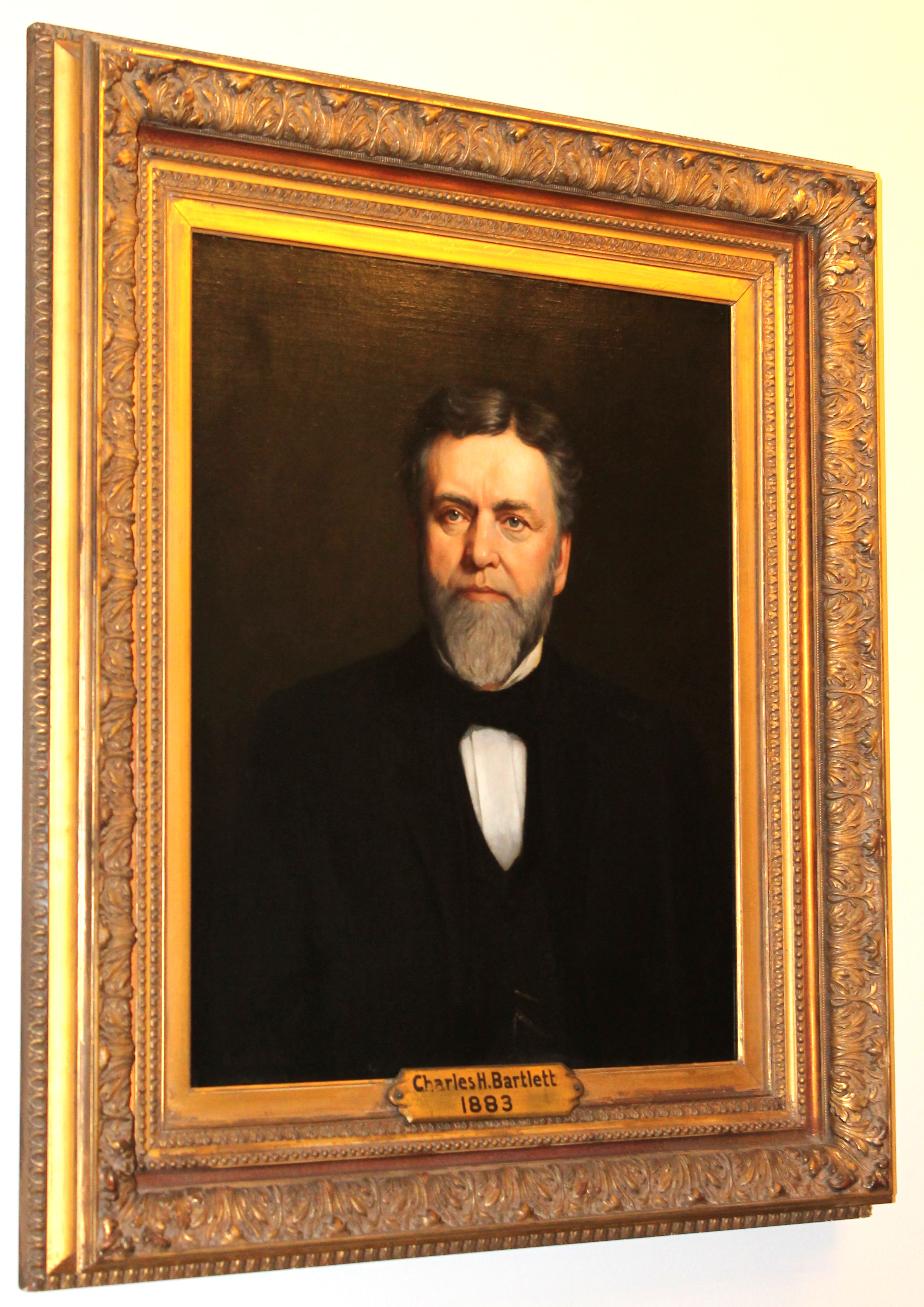
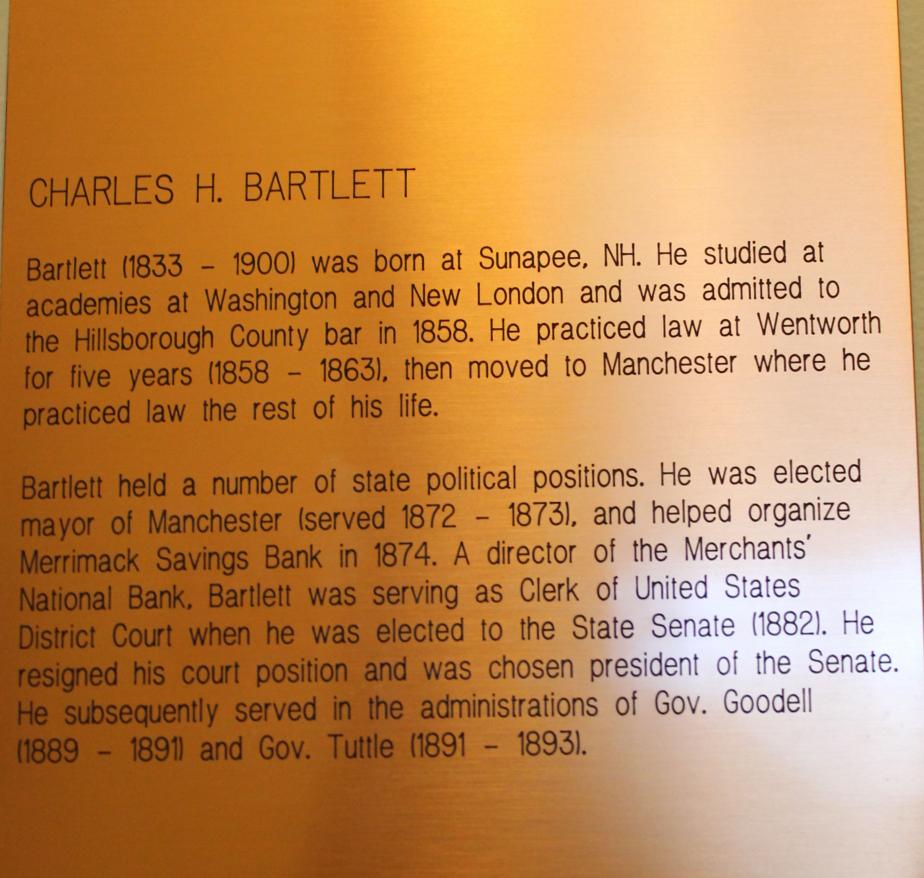
John H. Bartlett - NH Governor 1919 - 1920 (Sunapee)
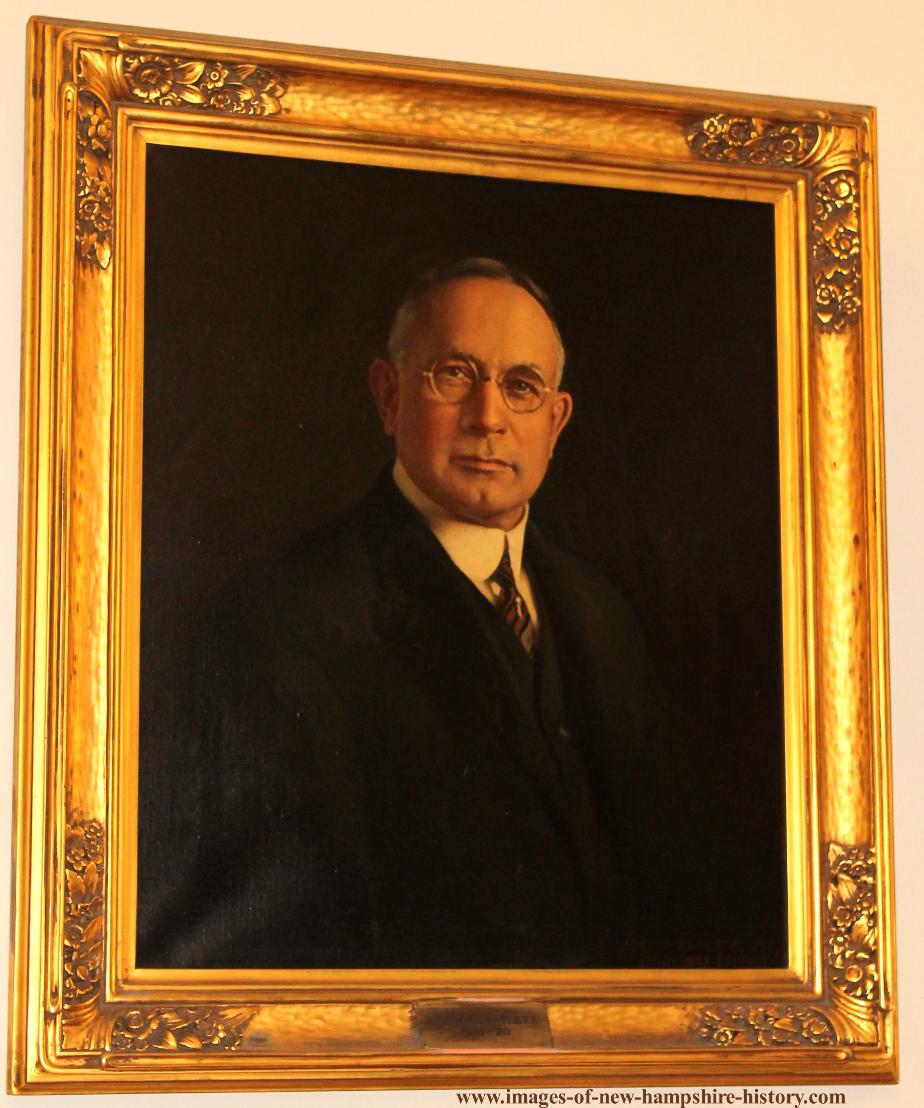
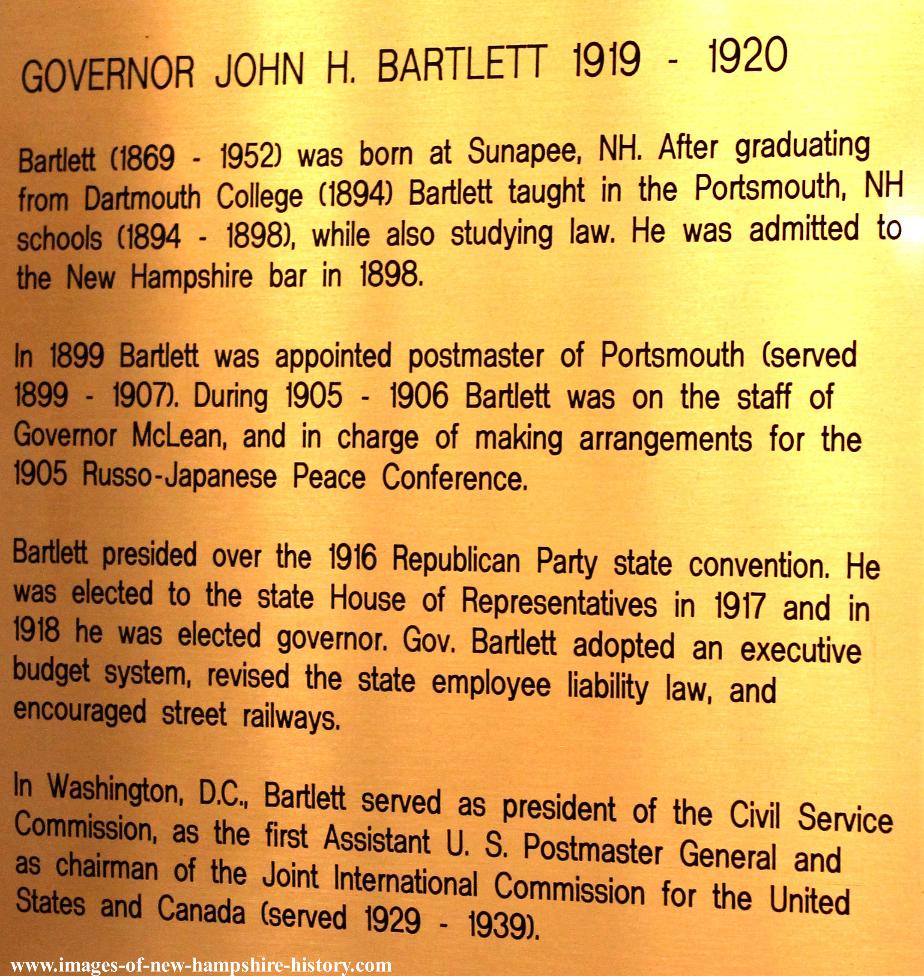
Josiah Bartlett - Governor 1790 - 1794
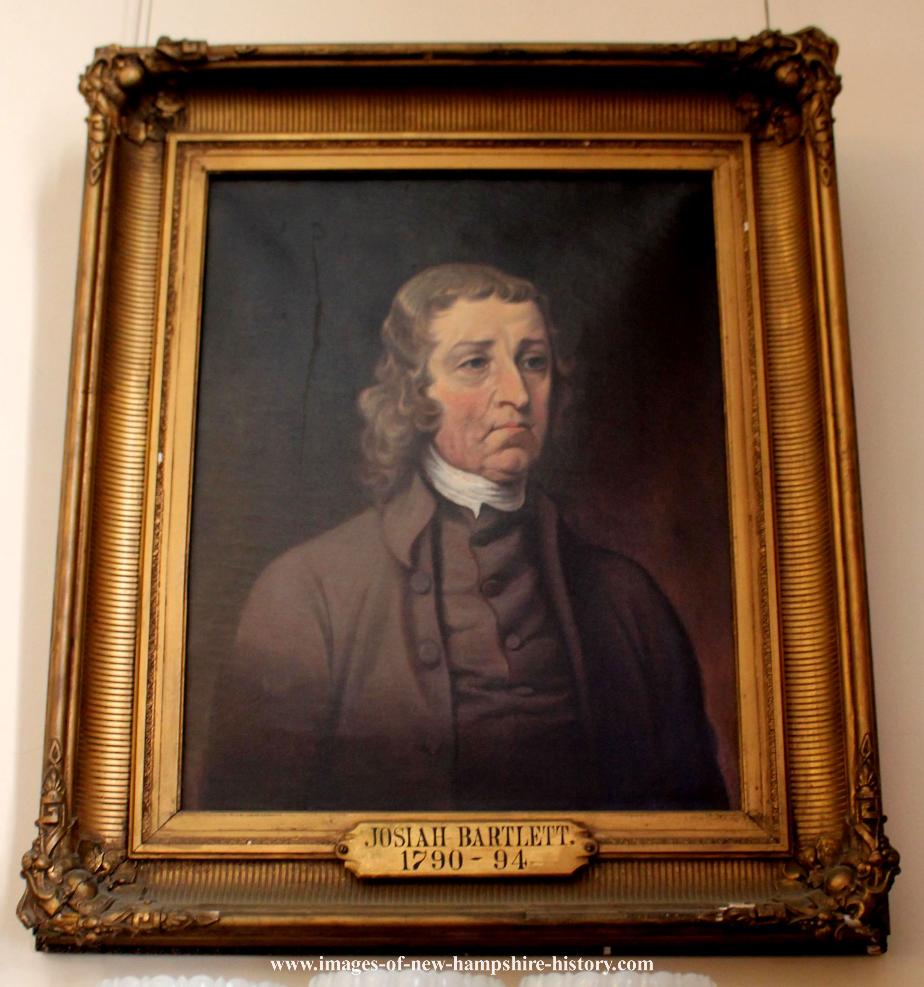
Josiah Bartlett Jr. NH Governor 1811 - 1813
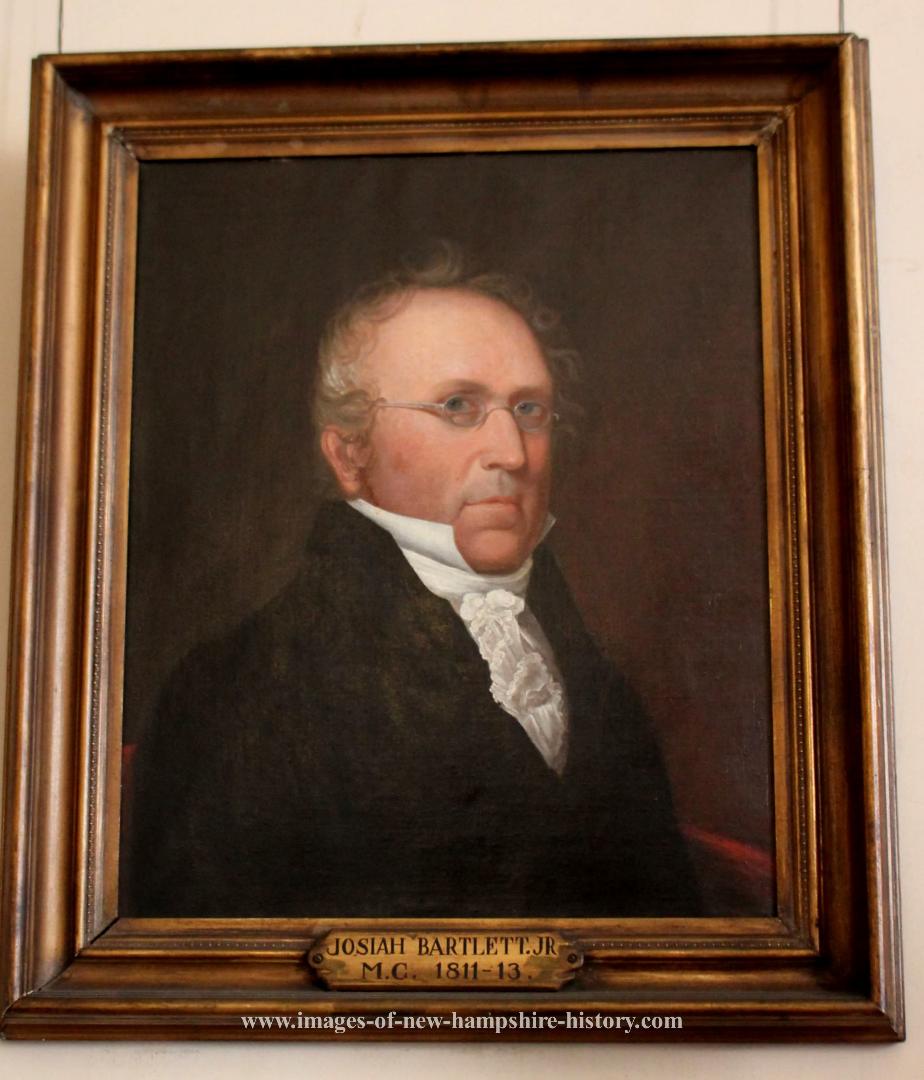
Jesse Barton - NH Senate President (1917 - 1919) Newport
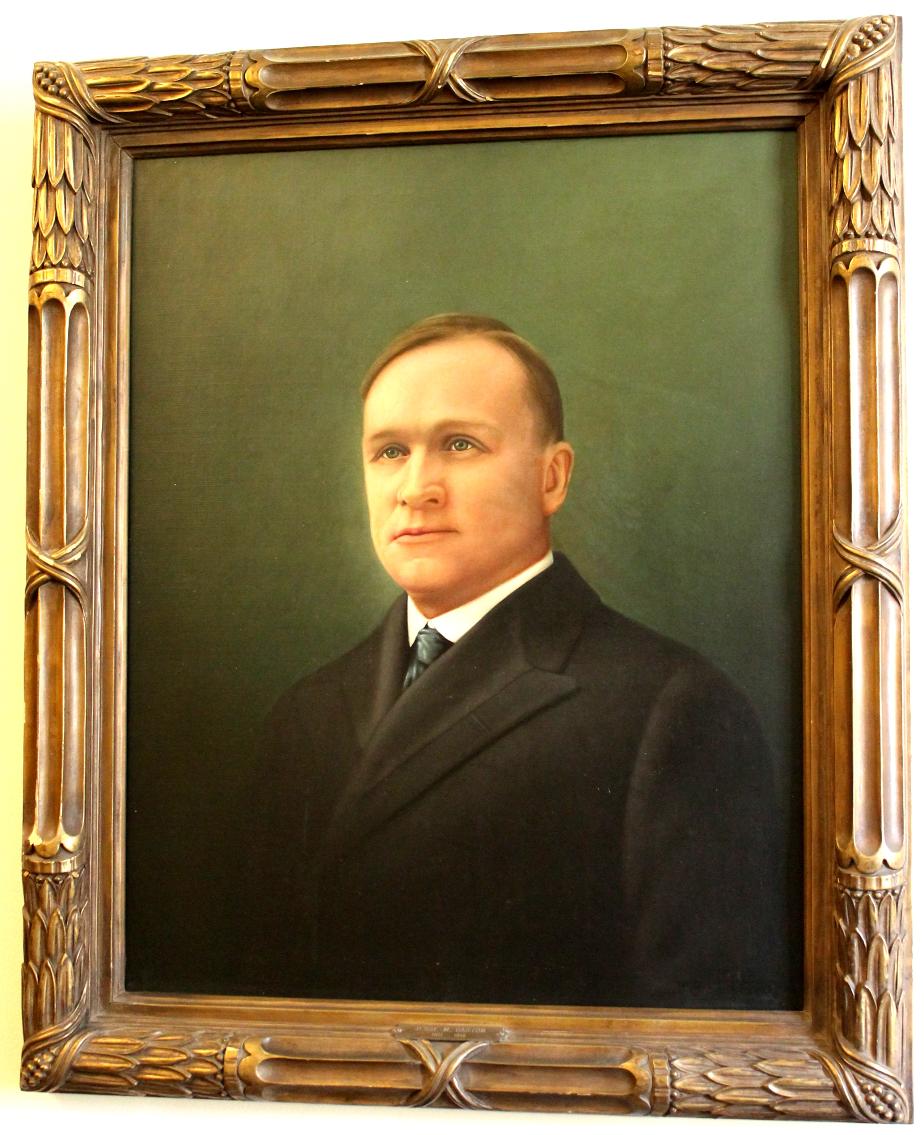
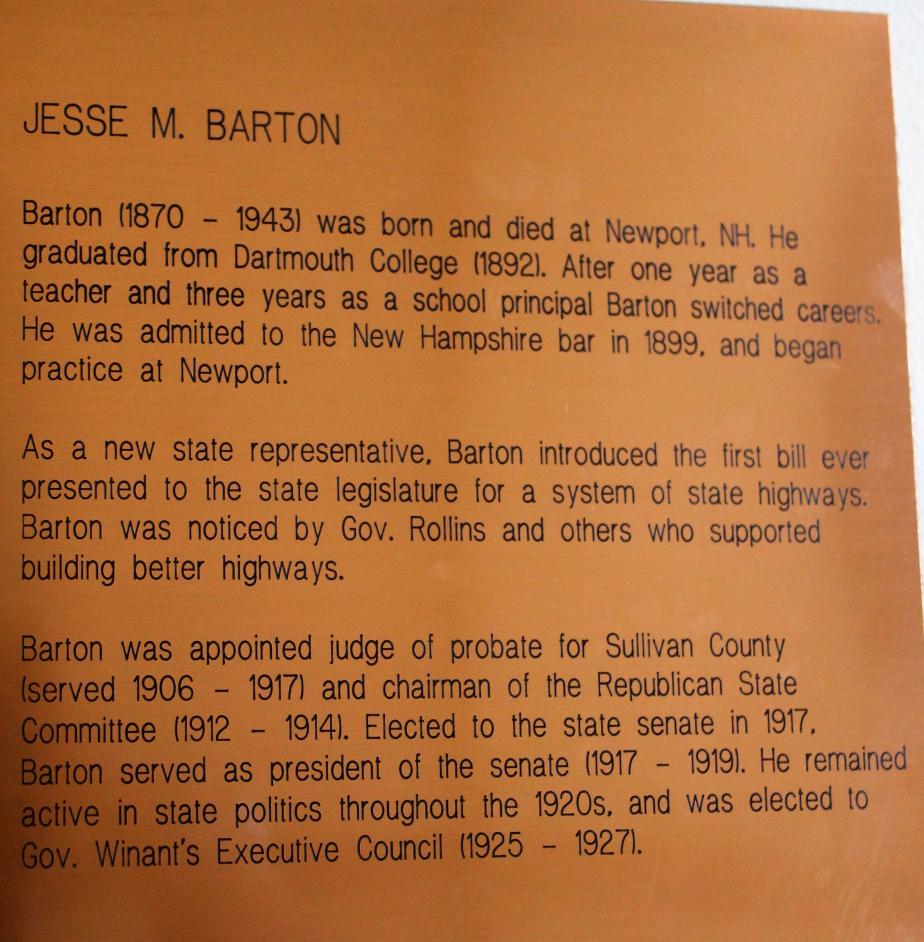
Robert P. Bass, Governor (1911-1912)
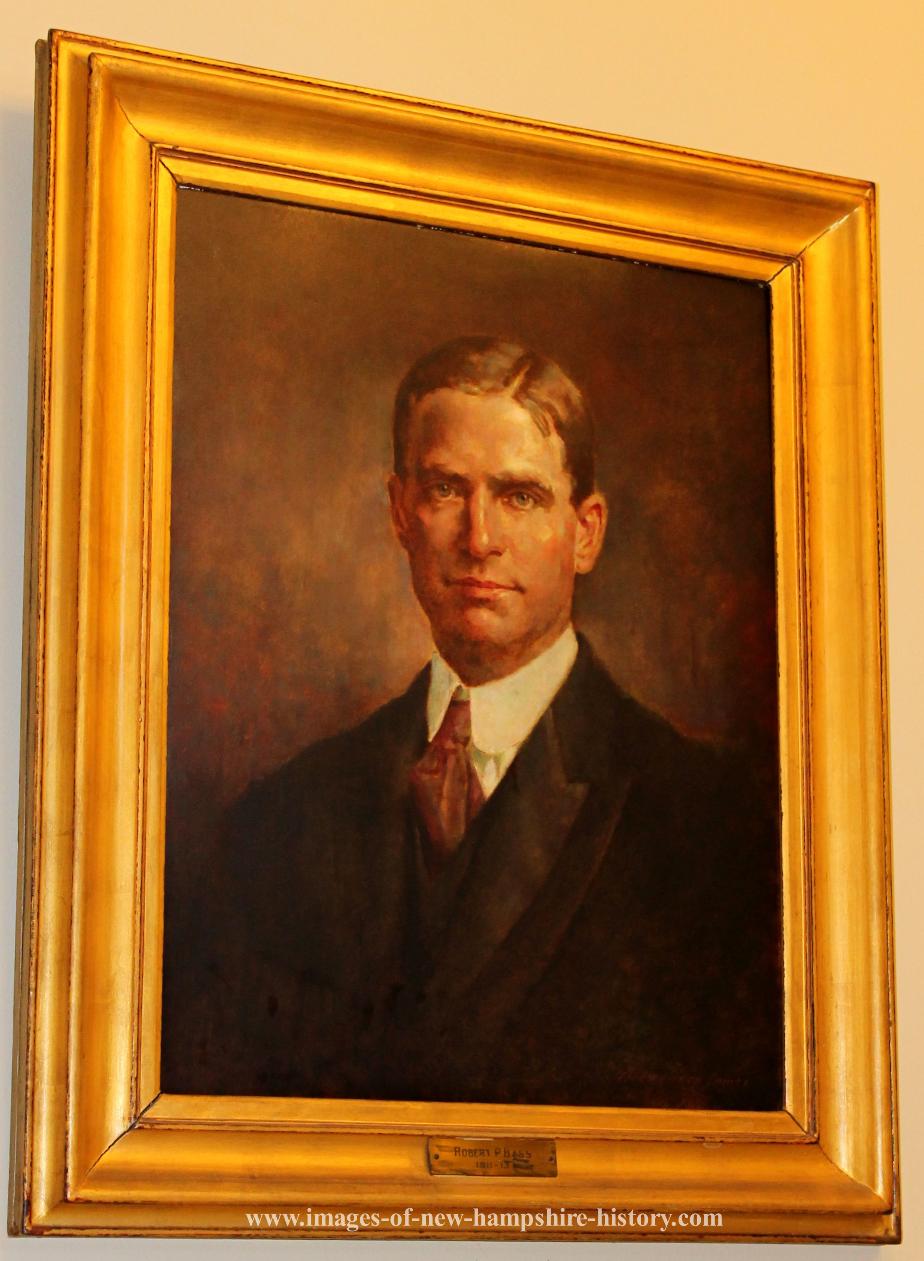
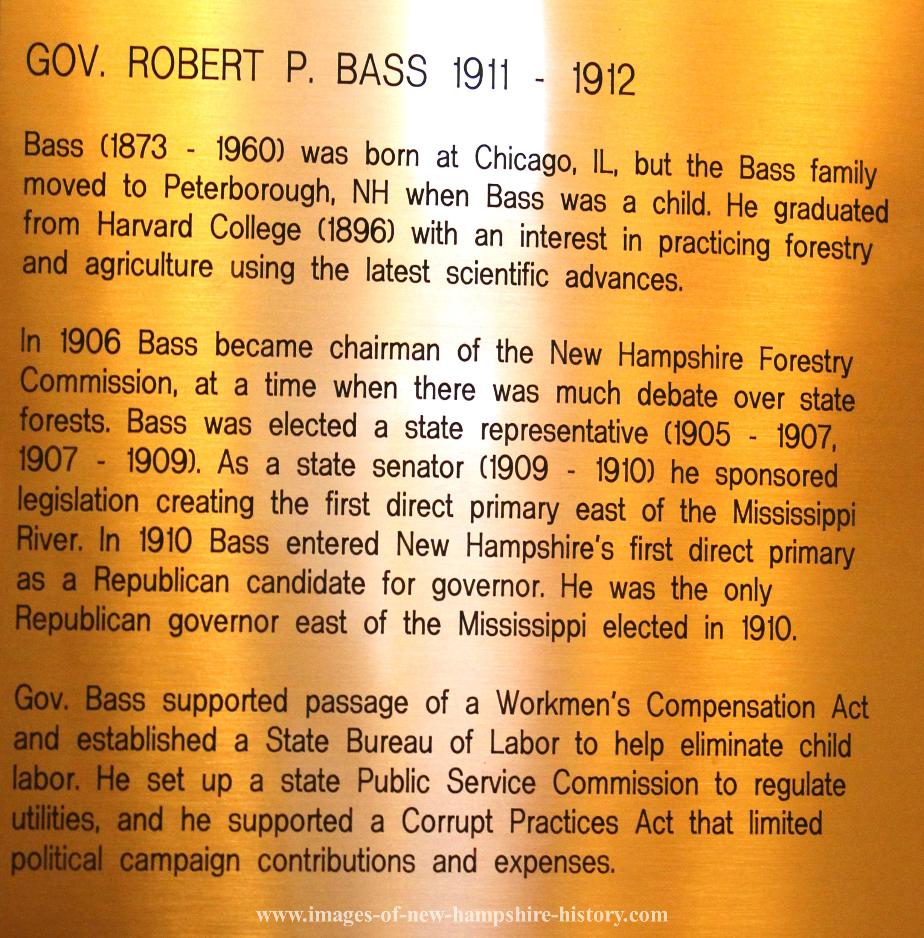
General Richard N Batchelder - Congressional Medal of Honor
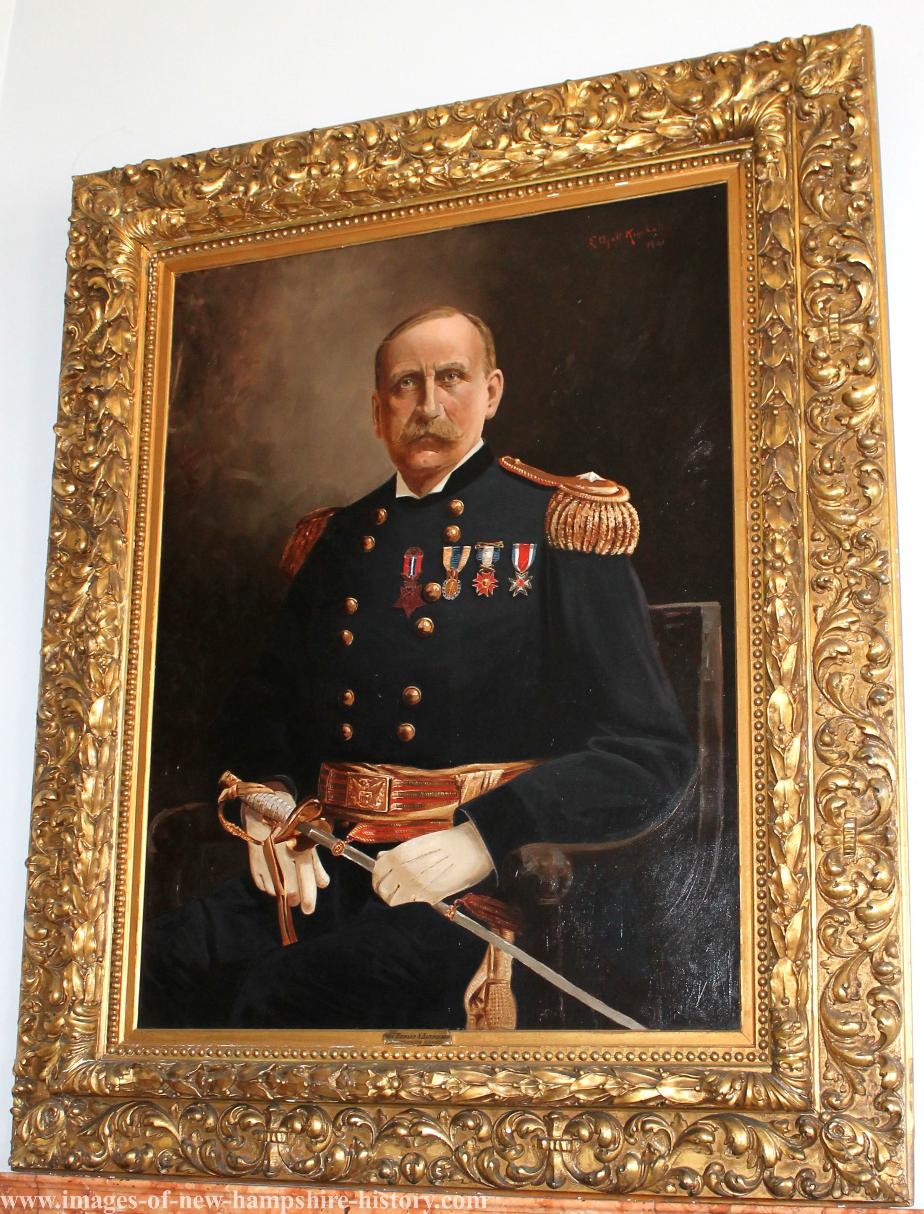
General Richard Napoleon Batchelder - Born at Lake Village, New Hampshire, July 27, 1832, he entered the Volunteer Service for the Civil War in 1861 and rose through the ranks to Brigadier General on March 13, 1865.
After the Civil War, he remained in the Regular Army and became Brigadier General, United States Army, and Quartermster General, June 26, 1890. He remained unmarried. First Lieutenant, 1st New Hampshire Volunteer Infantry, May2, 1861 and mustered out from that unit on August 9,,1861. Then was appointed Captain, Assistant Quartermaster of Volunteers, August 3, 1861 to June 8, 1865; Lieutenant Colonel, Quartermaster, August 1, 1864-September 5, 1865; Captain, Quartermaster Corps, United States Army, February 16, 1865 and was breveted Brigadier General for war service.
Awarded the Medal of Honor on May 20, 1895 for gallantry in action against Mosby's guerrillas between Catlett's and Fairfax Stations, Virginia, on October 13-15, 1863. He retired from the Army on July 27, 1896.
He died on January 4,1901 and was buried in Section 2 of Arlington National Cemetery.
US Senator Benning Bean (1833 - 1835) (Moultonboro)
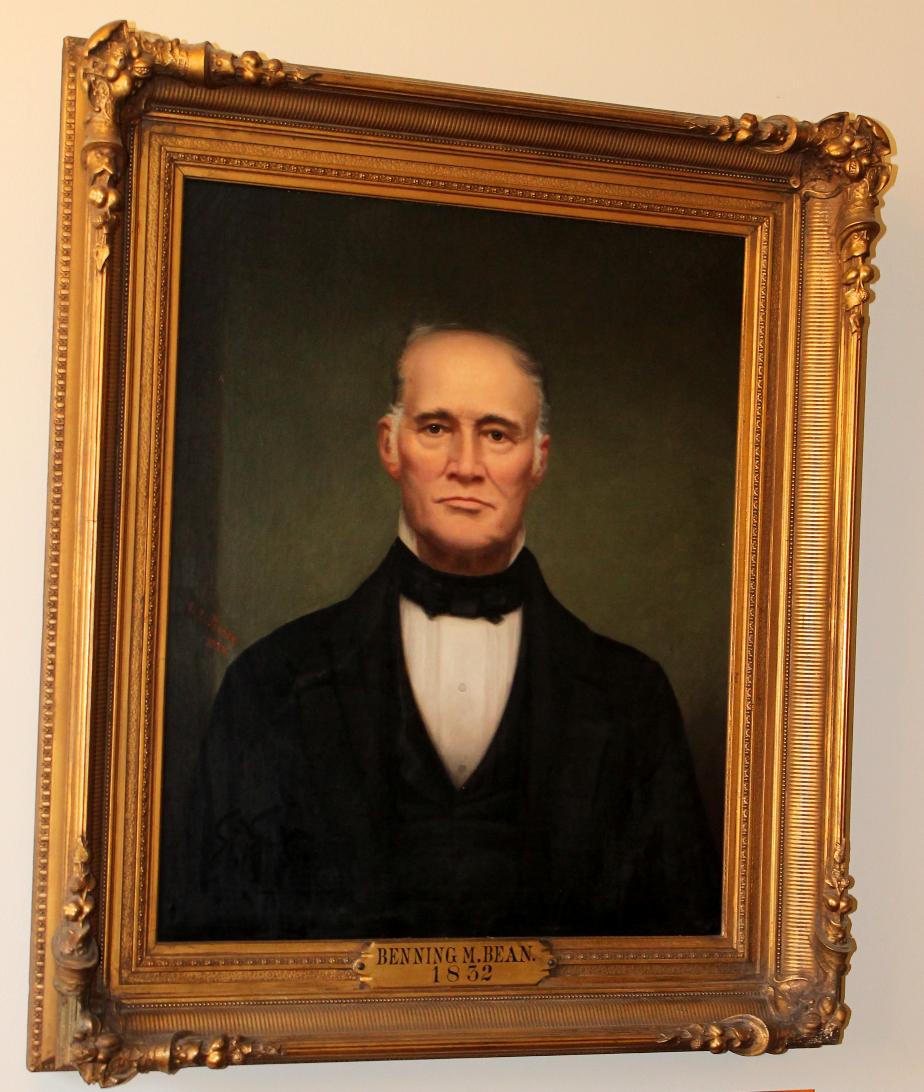

Jonathan Belcher - Royal Governor 1730 - 1747
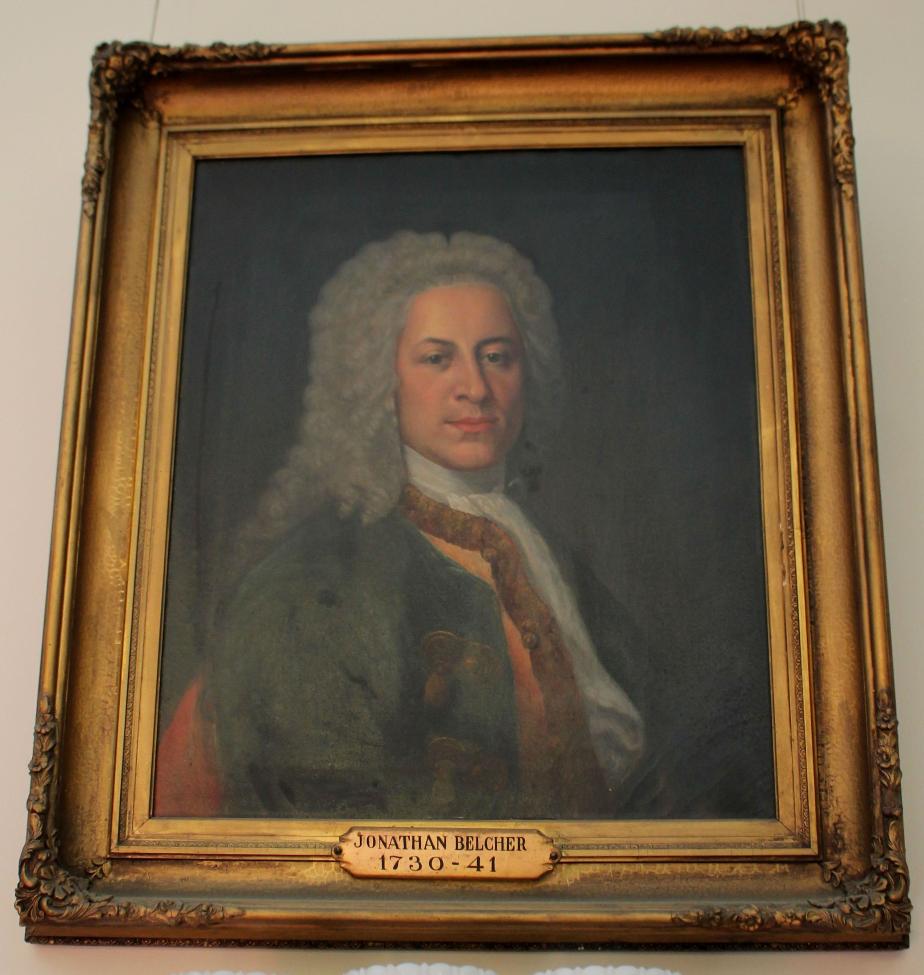
Rear Admiral George E. Belknap
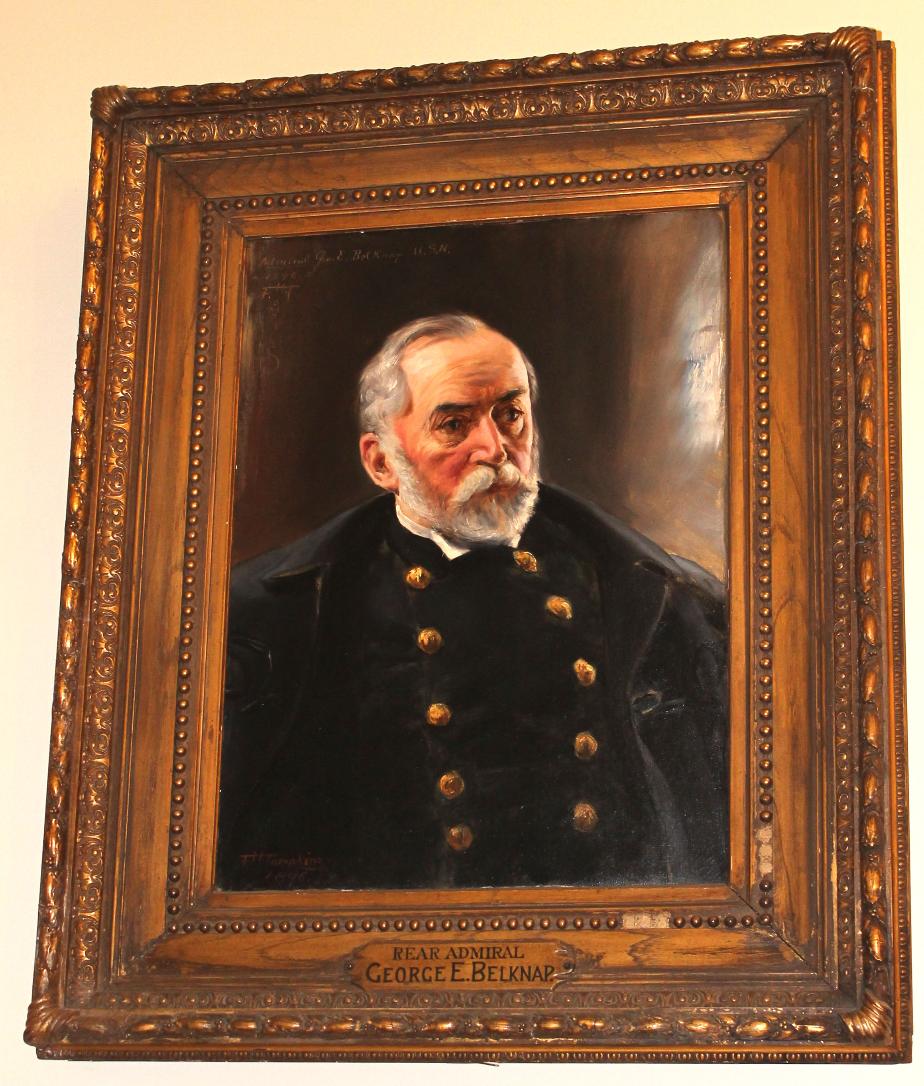
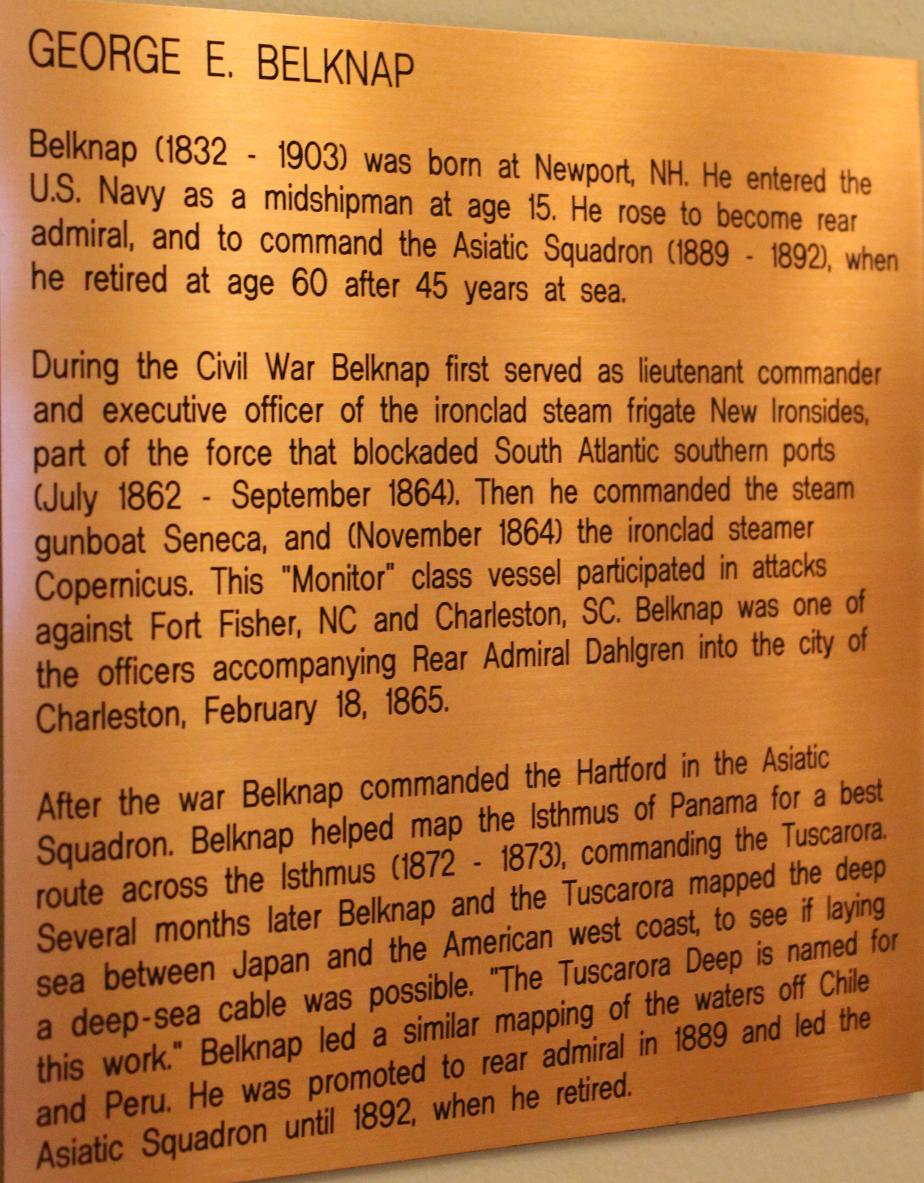
George Eugene Belknap was born on January 22, 1832, in Newport, New Hampshire. He was appointed a midshipman on October 7, 1847. During 1856-1957, he served with the East India Squadron, taking a prominent part in engagements with the Barrier Forts, Canton River, China, in November of 1856.
Admiral Belknap’s role in the Civil War was an outstanding one. He commanded a division of boats from USS , which reinforced Fort Pickens, Florida, in April 1861. He participated in the operations in Charleston Harbor and commanded the ironclad in attacks on Fort Fisher, North Carolina, on December 24-25, 1864 and on January 13-15, 1865, which occasioned its surrender. He “fired the last gun” against the Charleston defenses prior to their collapse.
In 1867-1868, he commanded USS on Asiatic Station, and led the expedition against Formosa. During 1873-1874, he performed important work surveying in the Pacific, and from 1875 until the time of his retirement on January 1894 performed eminently in diverse positions at sea and ashore. During the latter period he was commissioned Rear Admiral, to date from February 12, 1889.
Rear Admiral Belknap died at Key West, Florida, on April 7, 1903, and was buried at Arlington National Cemetery.
The USS (DD-251), named to honor Rear Admiral George Eugene Belknap, served in the US Navy from April 1919 until August 1945. She was awarded the Presidential Unit Citation, as a until of Anti-Submarine Task Group 21.12, and three battle stars for operations in the European-African-Middle Eastern Area and the Asiatic-Pacific Area during World War II.
A second vessel to be called (DLG-26), building at the Bath Iron Works Corporation, Bath, Maine, is named for Rear Admiral George Eugene Belknap and his son, Rear Admiral Reginald Rowe Belknap, and will be launched on July 20, 1963. This vessel will be christened by Mrs. Leonard B. (Emilia Field Belknap).
Reverend Jeremy Belknap
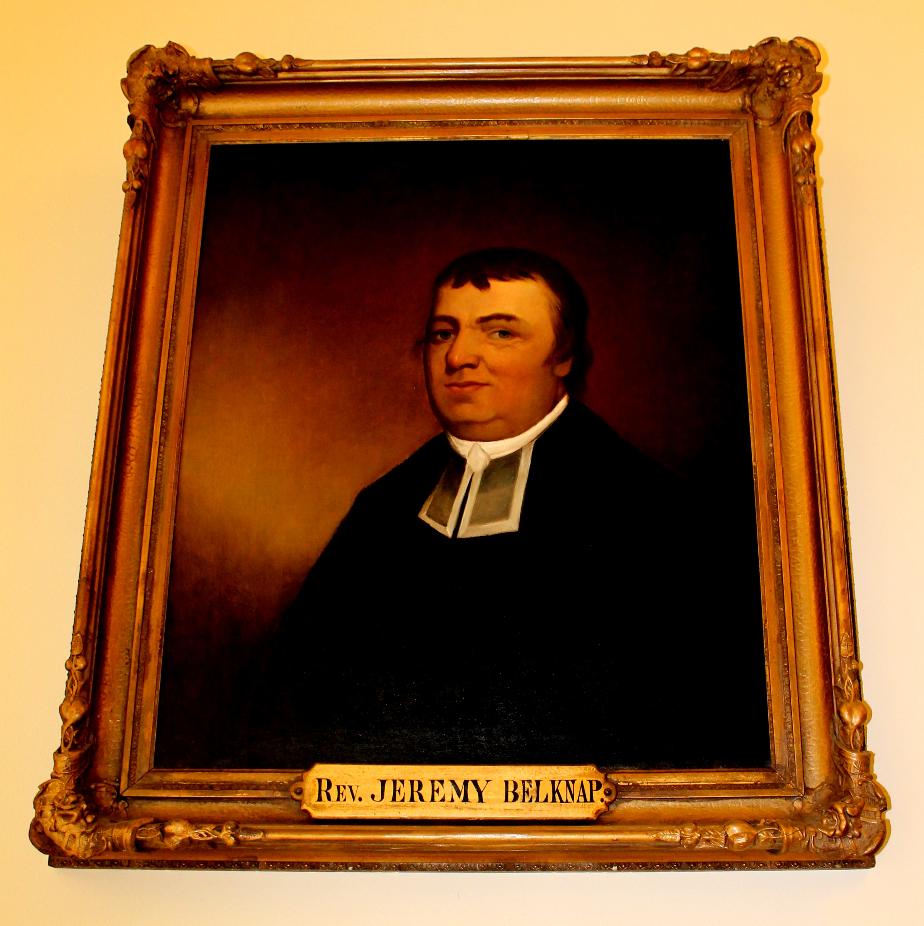

Governor Charles H. Bell (Chester NH) 1881 - 1882
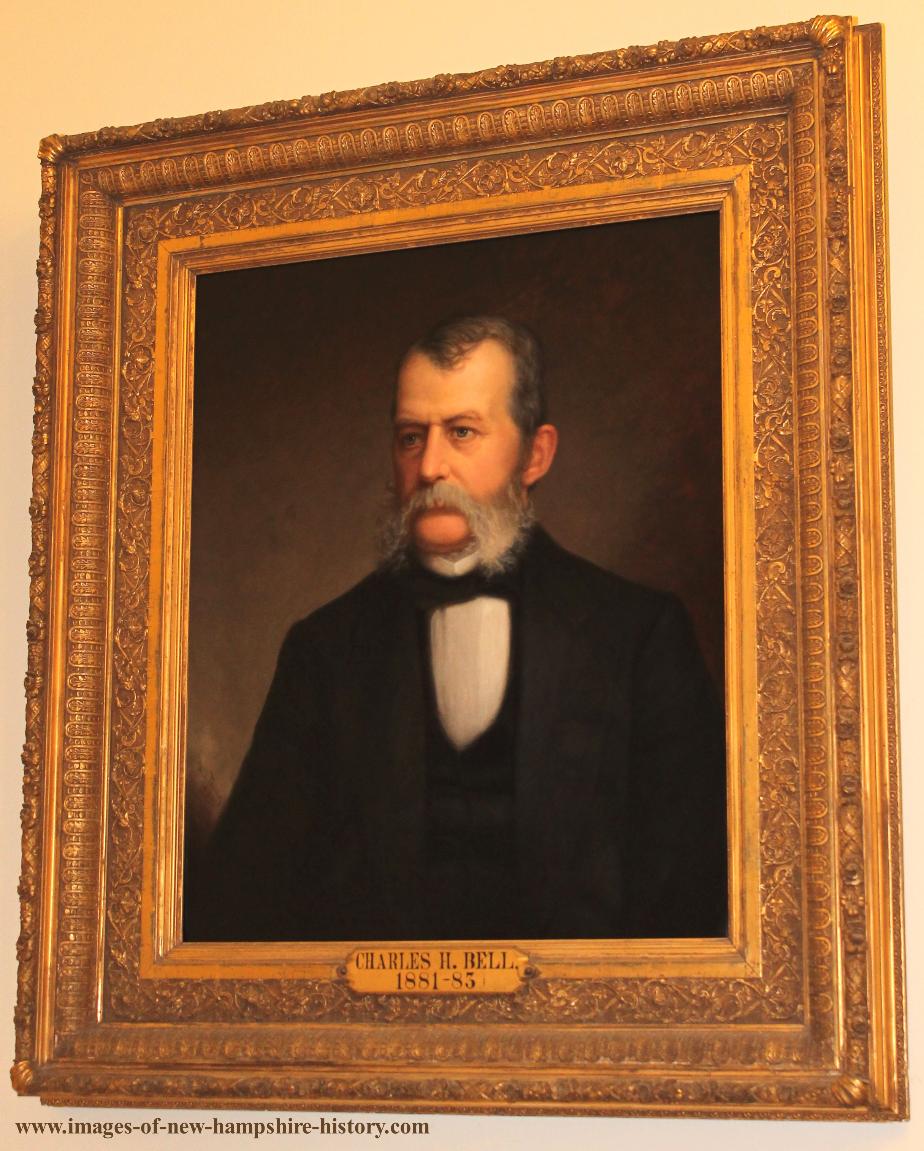
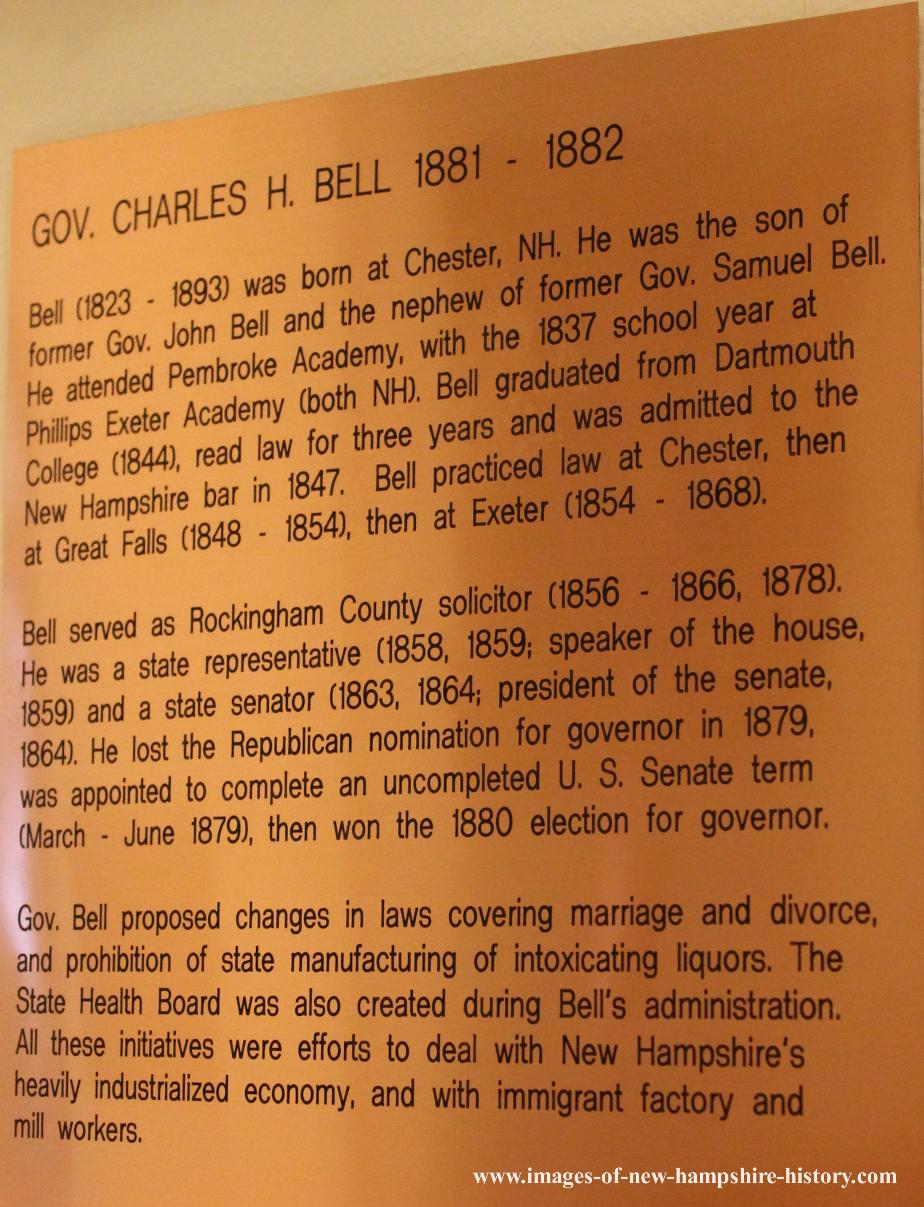
James Bell - US Senator (1855-1857)
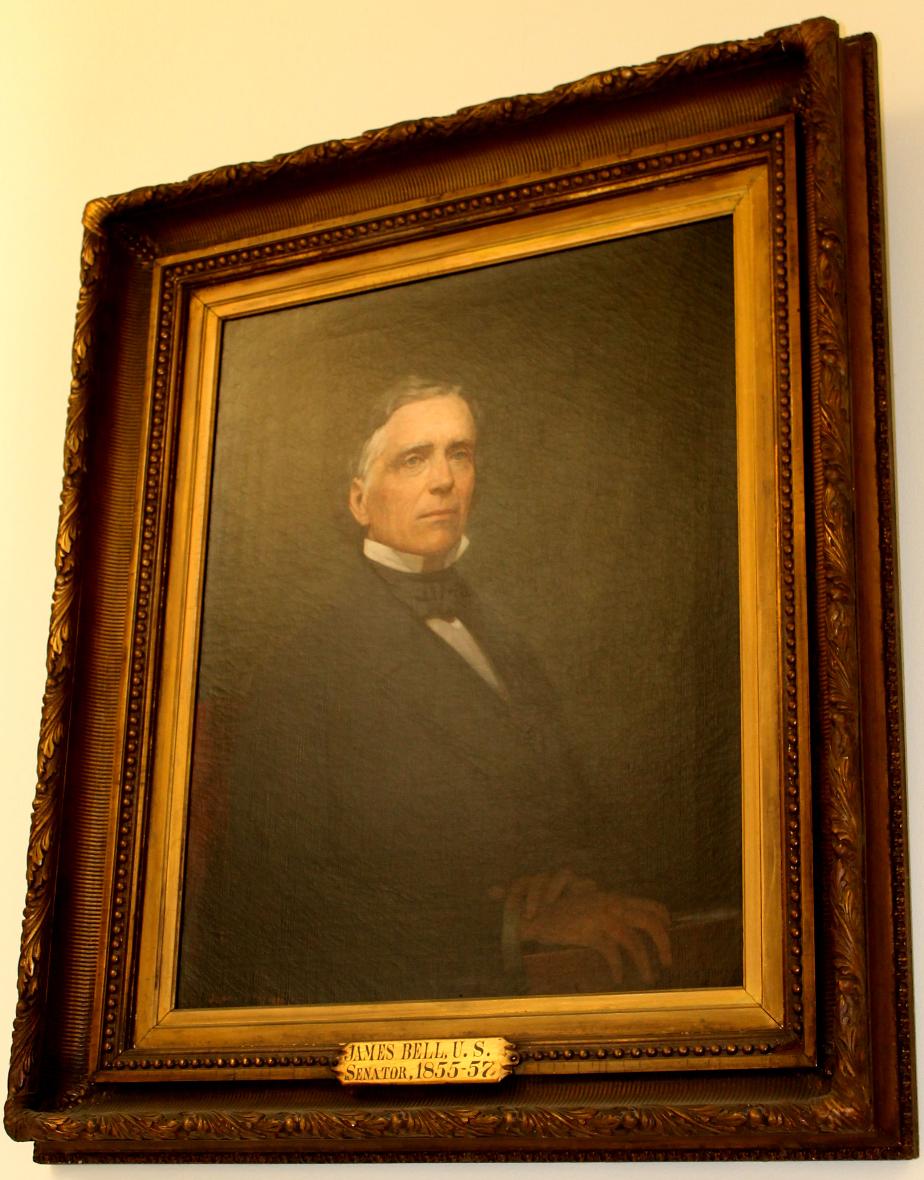
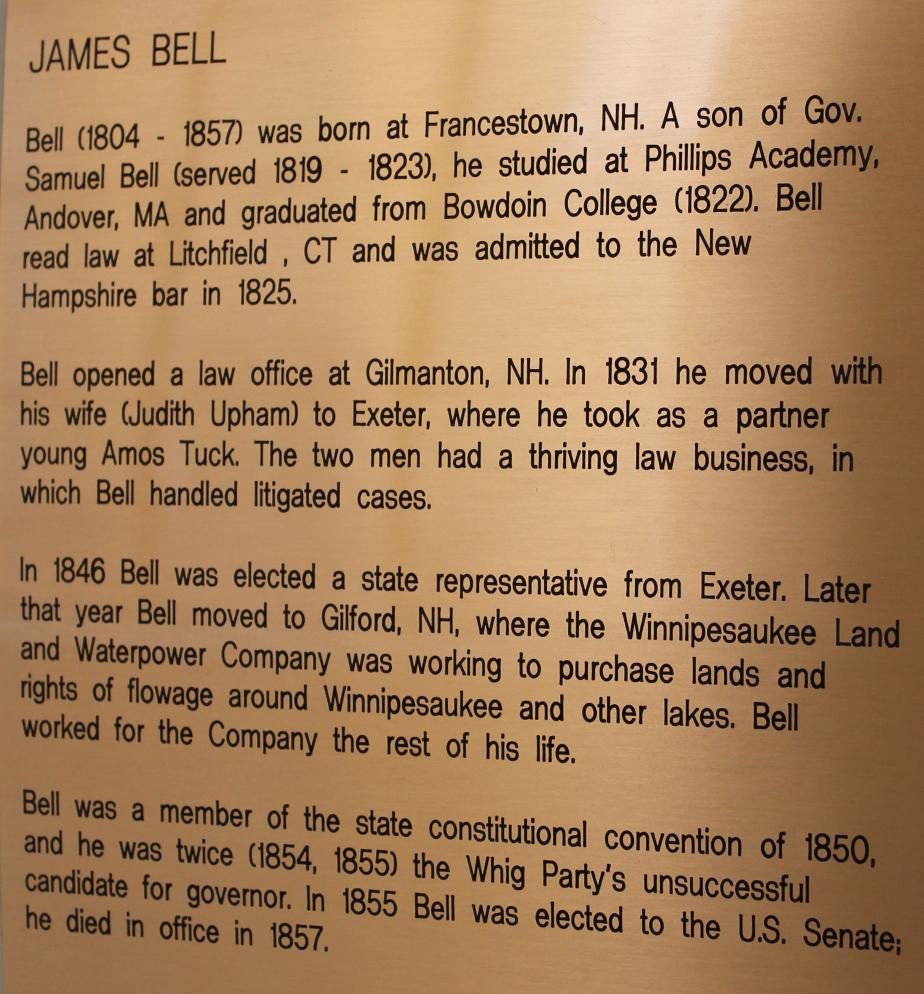
Governor John Bell (Londonderry) 1828 - 1829 (Londonderry)
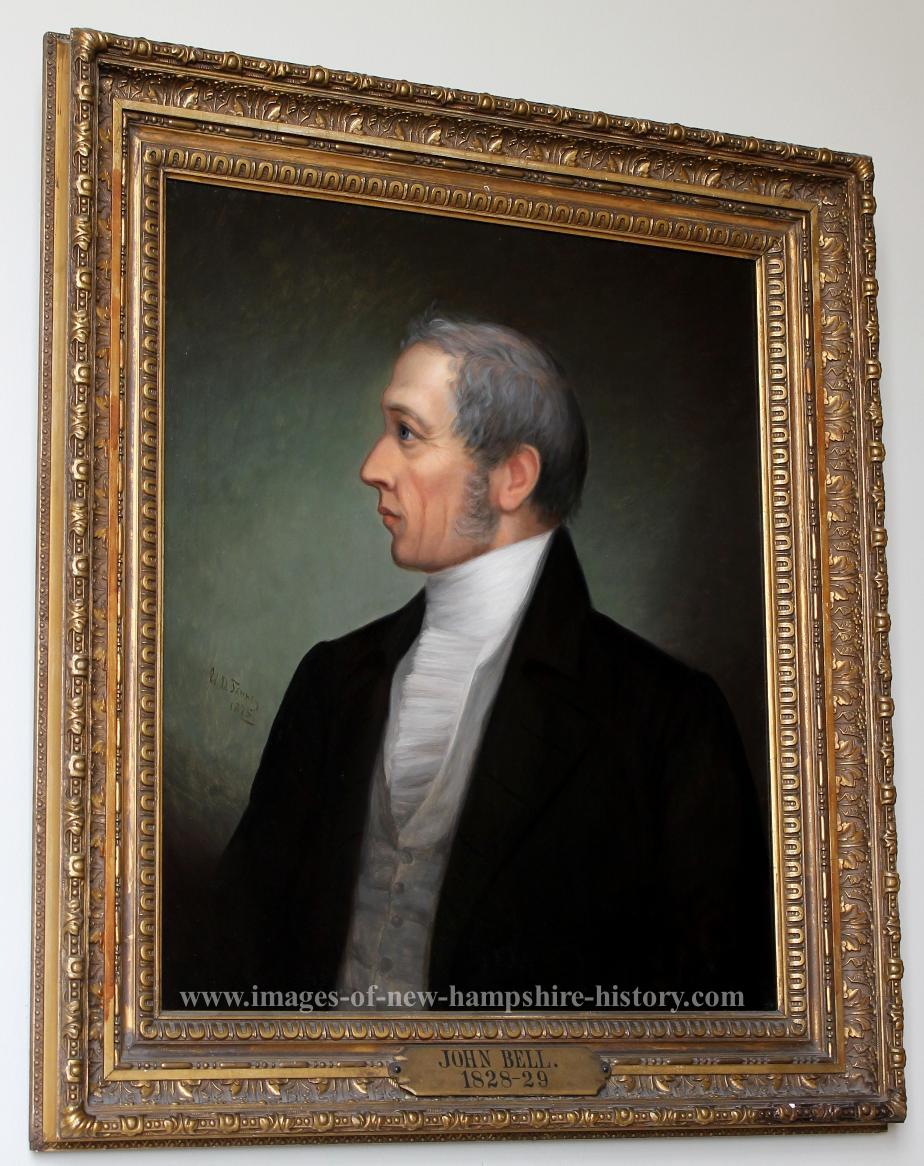
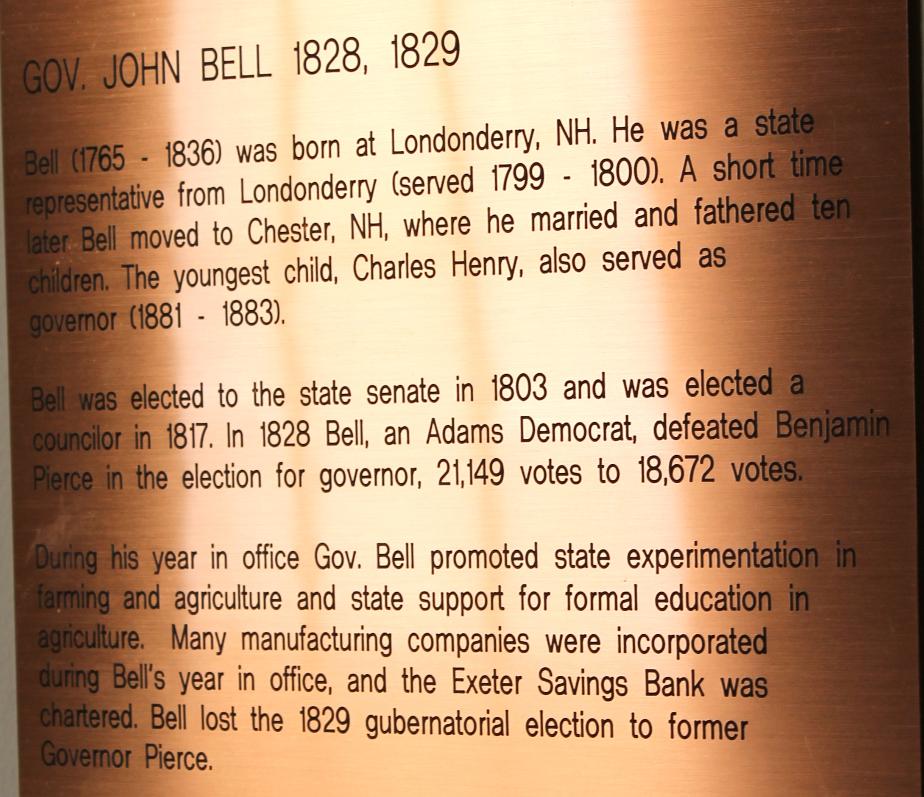
Governor Samuel Bell - 1819 - 1823 (Londonderry)
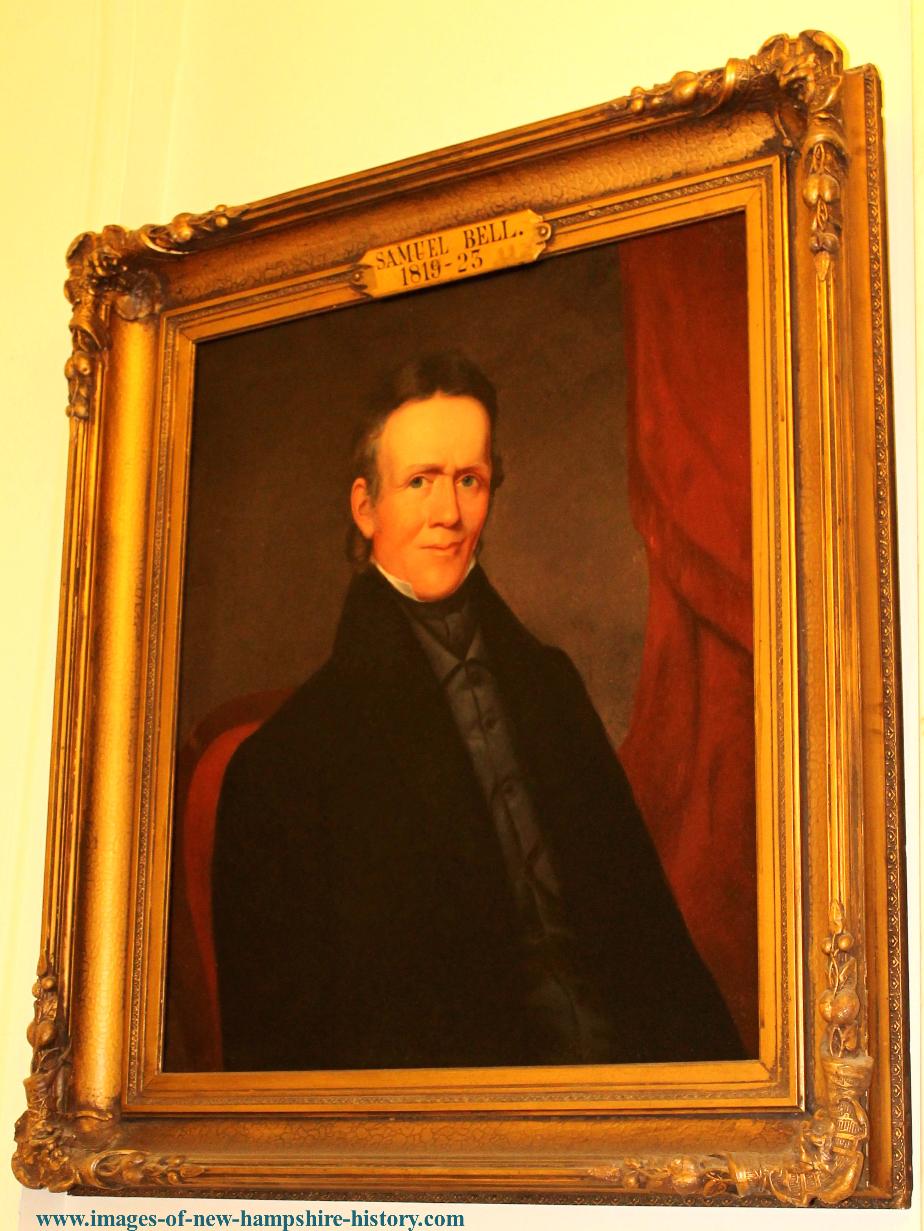
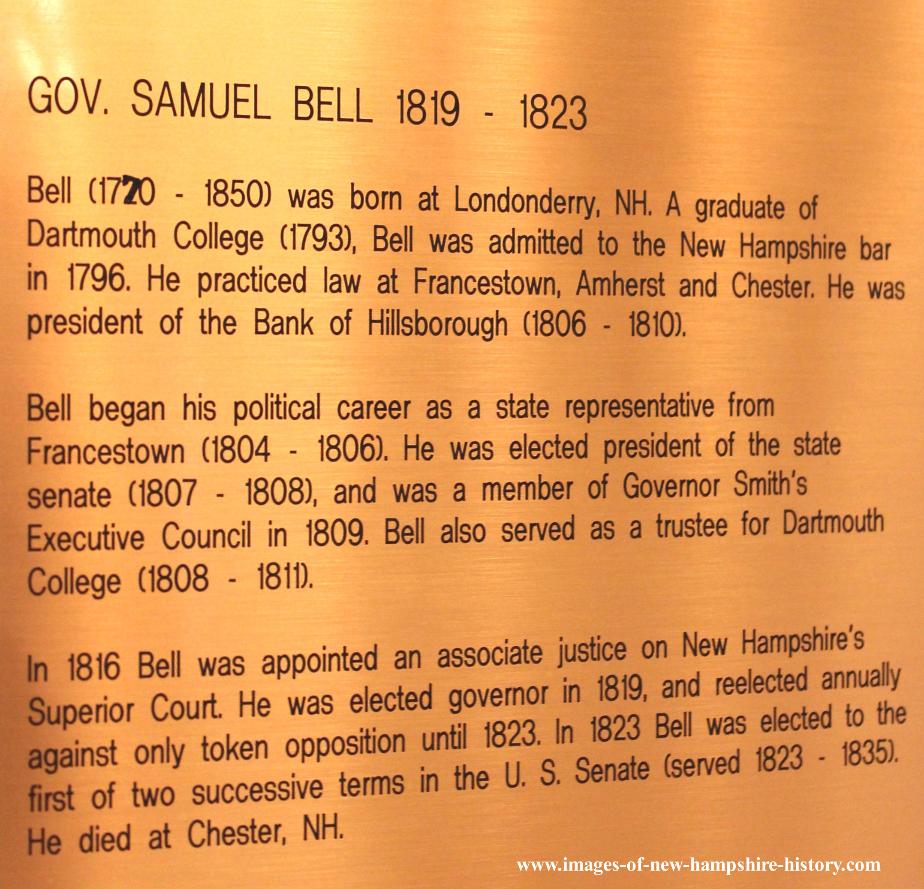
Governor Nathaniel Berry: 1861 - 1862 (Bath Maine)
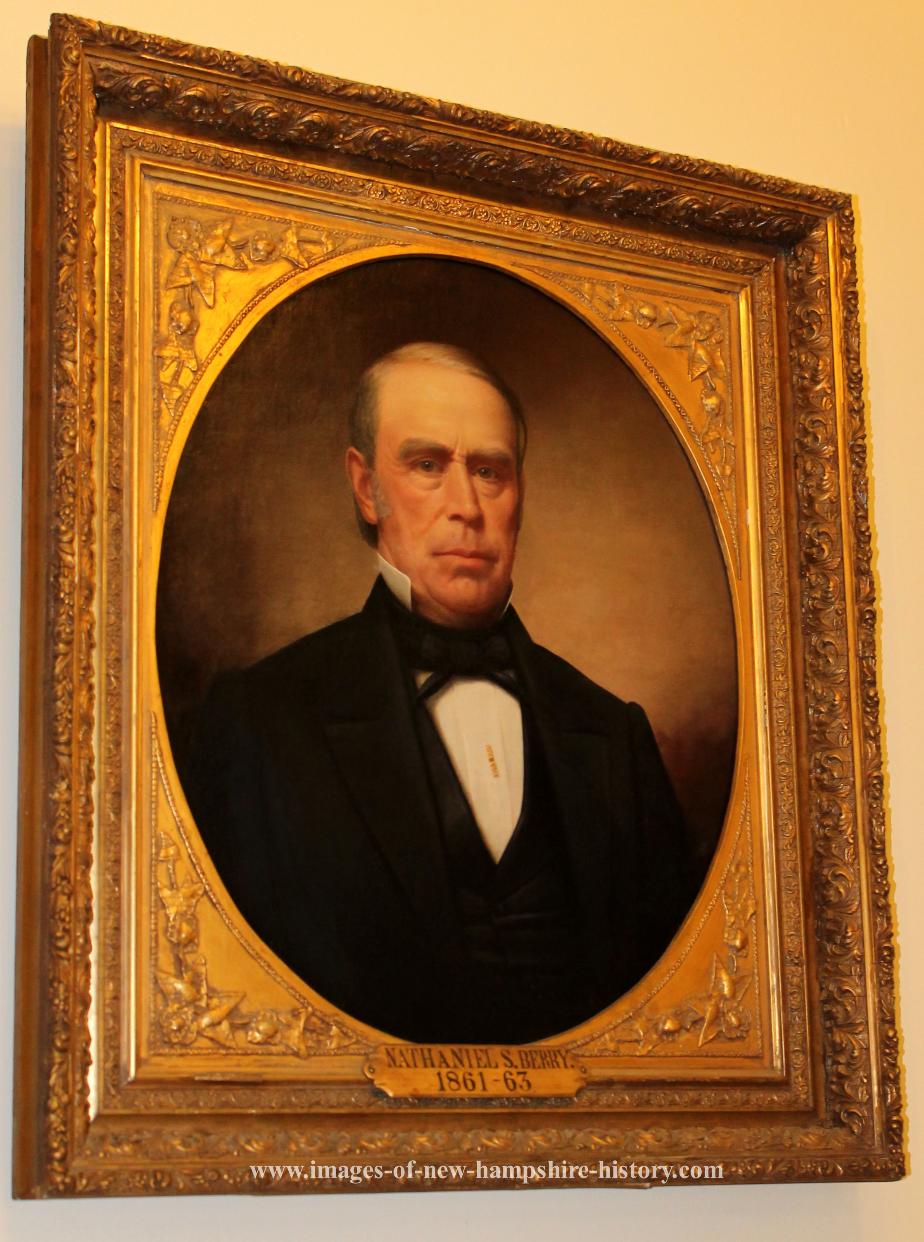
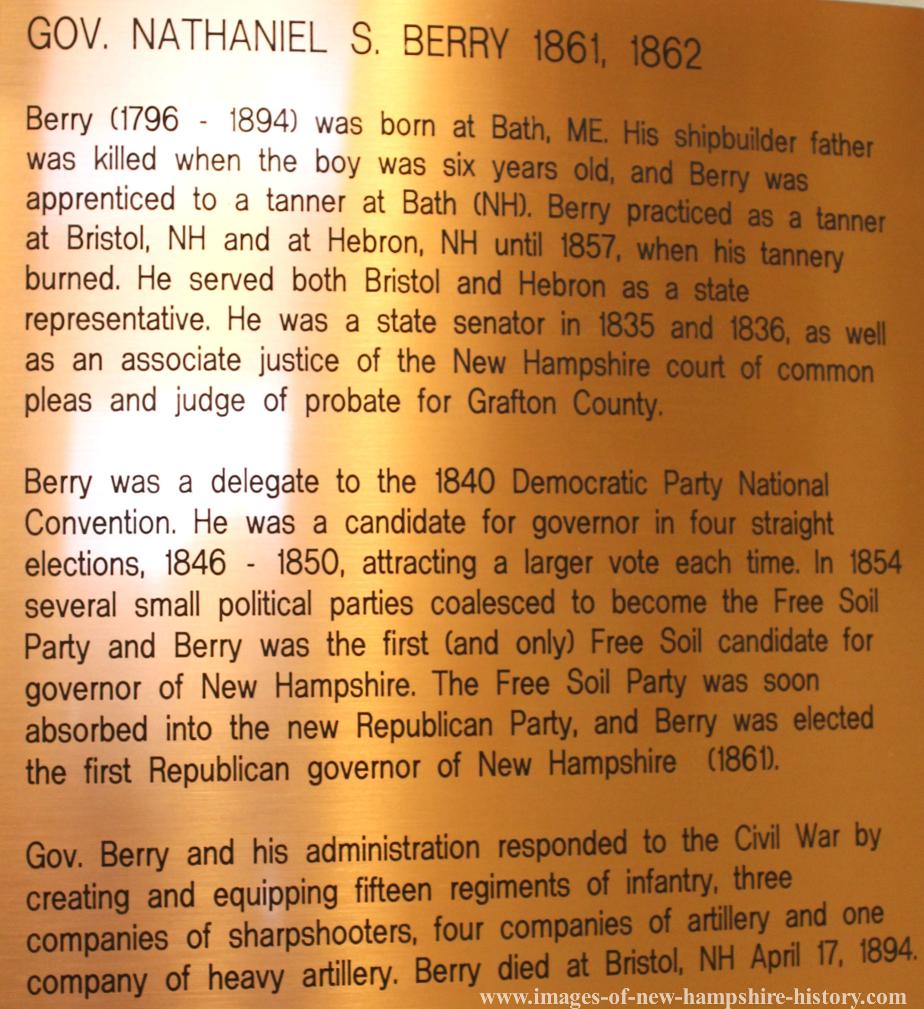
Colonel Phineas P Bixby - 6th NH Volunteers
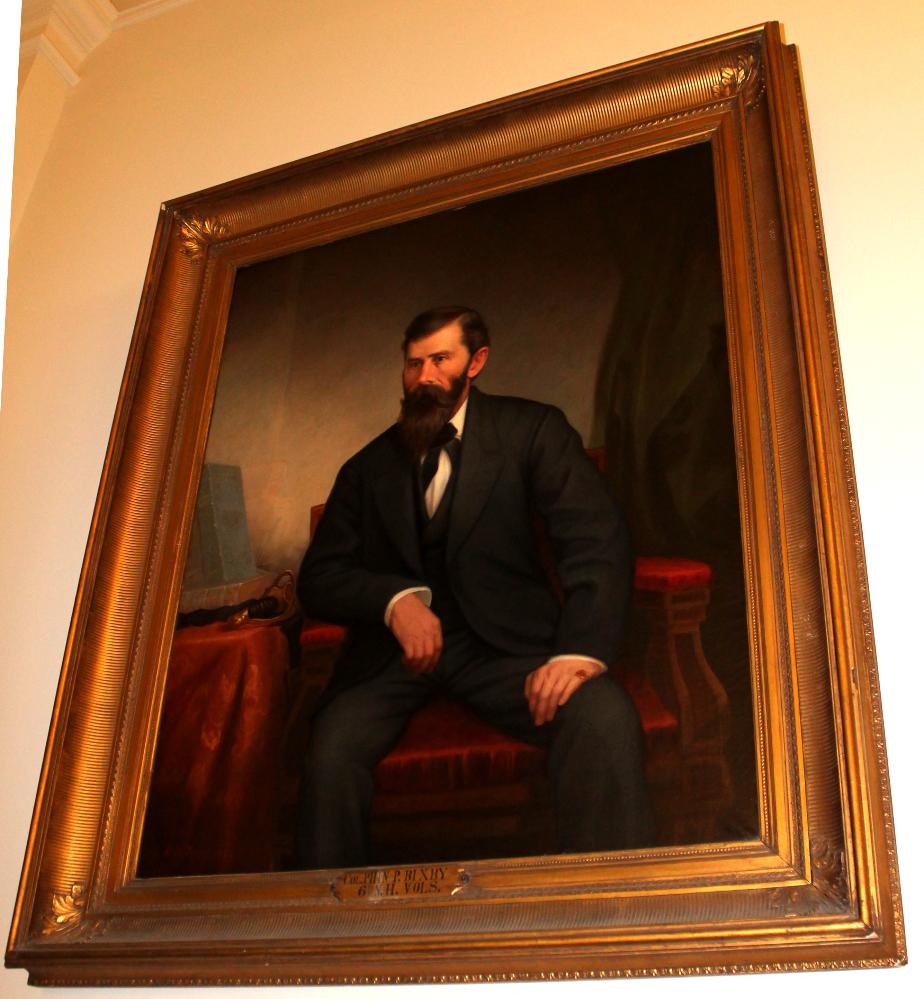
Colonel Phineas P Bixby - Born May 9, 1829 in Piermont New Hampshire.
A tradesman in Concord when the Civil War began. He was commissioned Adjutant of the 6th New Hampshire Infantry November 30, 1861. Wounded and taken prisoner at the Second Battle of Bull Run,Virginia August 29, 1862, Bixby was for some weeks confined at Libby Prison before being exchanged, October 3, 1862. He rejoined the Sixth, and on October 15, 1862 Bixby was commissioned major, to replace O.G. Dort who had resigned. After the death of Lieutenant Colonel Pearson at North Anna,Virginia on May 26, 1864,
Bixby was in command of the regiment for some time. The Sixth was in the siege of Petersburg,Virginia and Bixby was wounded twice in events leading up to Petersburg. The second time he was wounded so severely that it was three months before he came back to the Sixth. In his absence he was promoted to Lieutenant Colonel, and after his return he was again in
charge of the regiment most of the time. He was appointed Colonel, February 21, 1865. On April 2, 1865 Bixby was formally put in charge of the brigade, and he remained in charge until Lee's surrender at Appomattox Court House. mustered out with his regiment on September 17, 1865.He also received the Brevet appointment of Colonel of United States Volunteers, for gallant and highly meritorious conduct in the assault before Petersburg, Virginia, to date from April 2, 1865
Governor Robert O Blood 1941 - 1944 (Enfield)
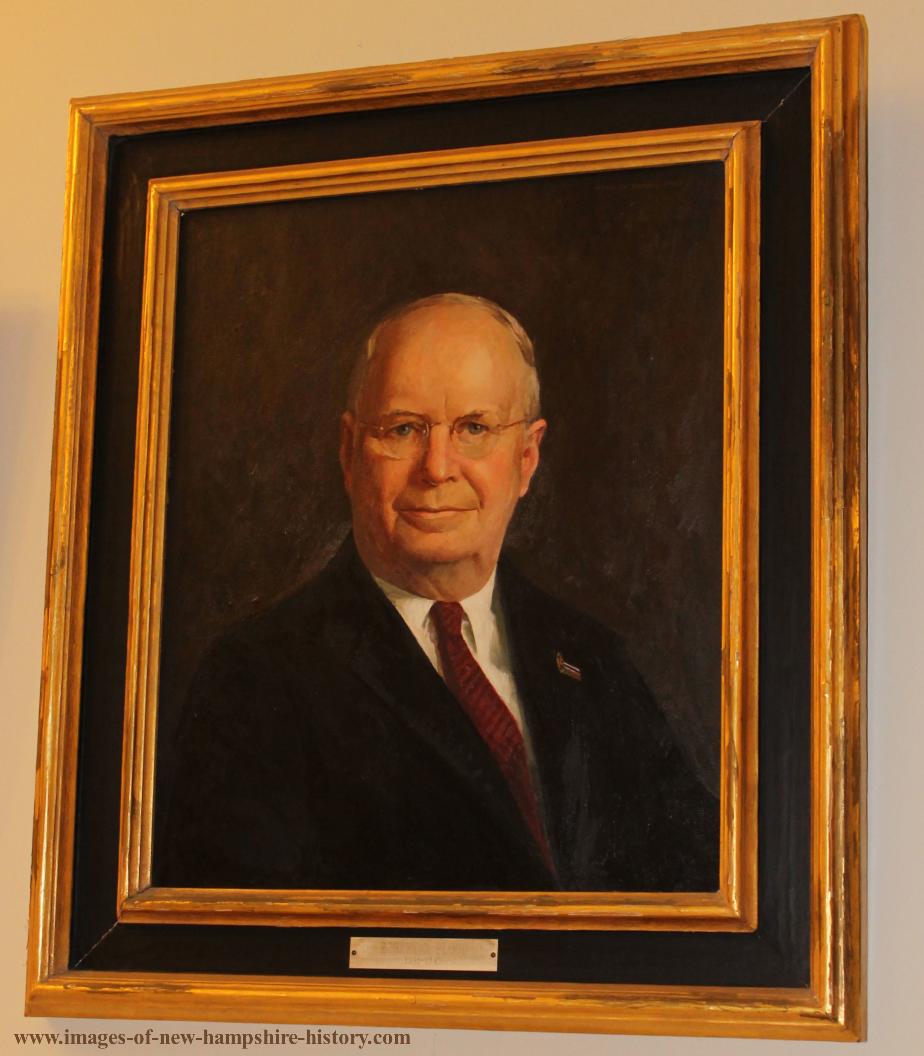
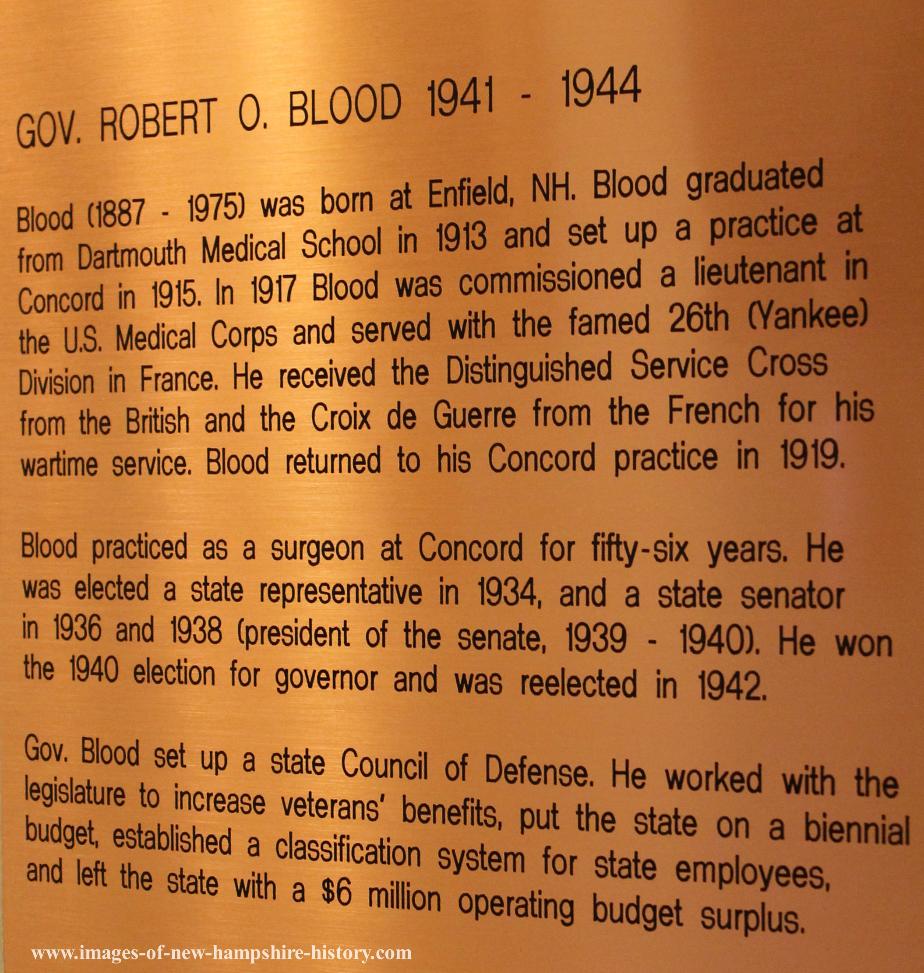
Simon Bradstreet Royal Governor 1689 - 1692
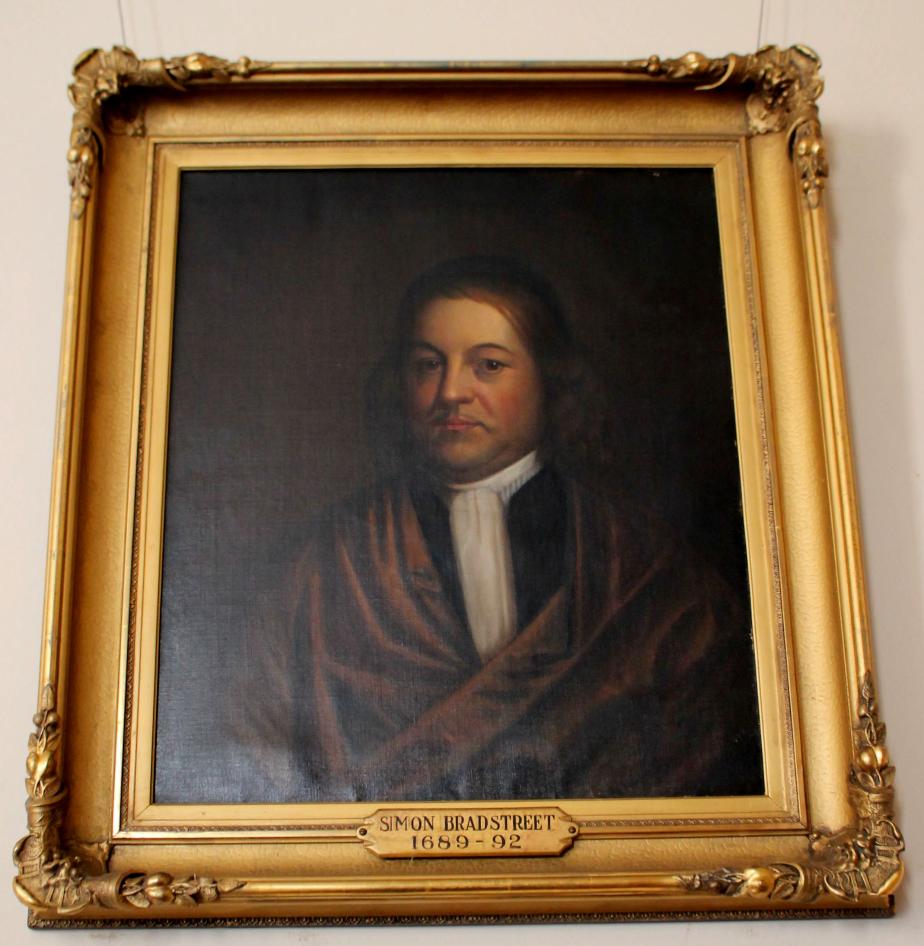
Governor H. Styles Bridges: 1935 - 1936
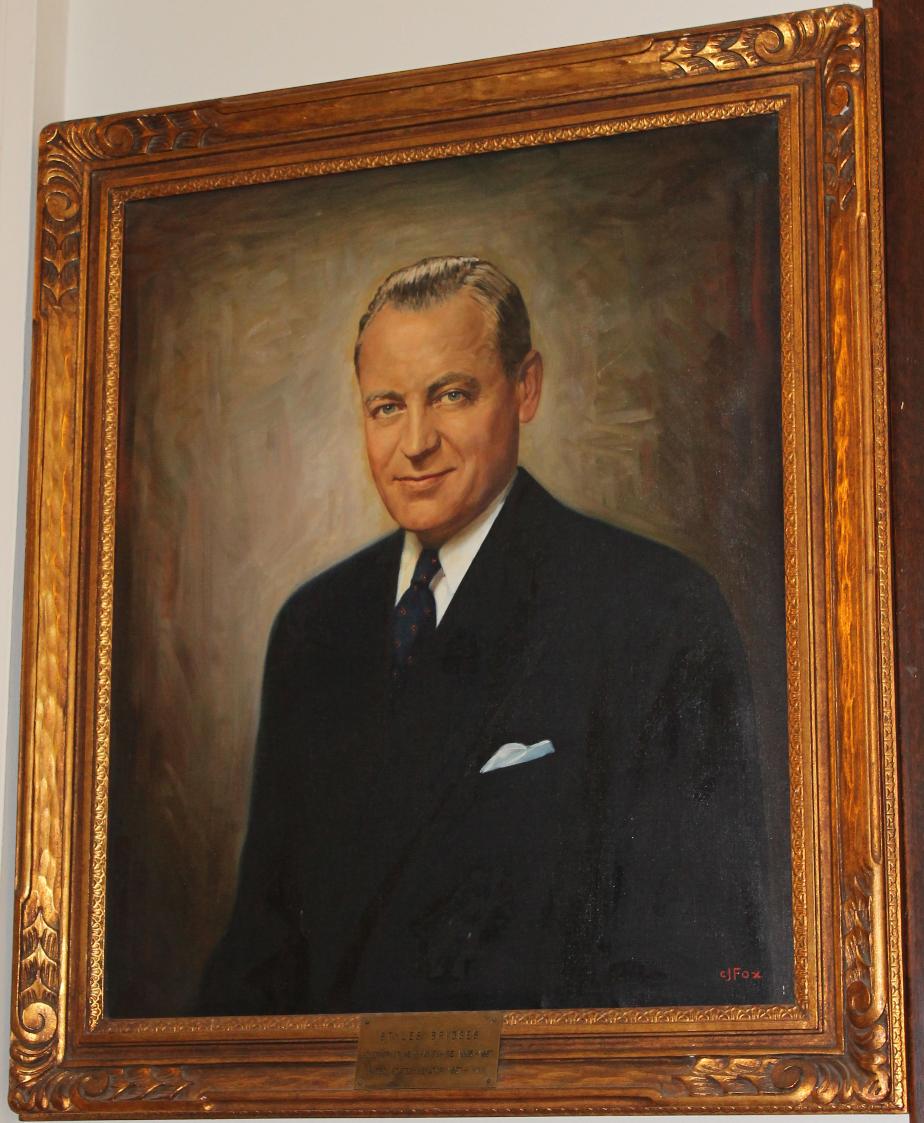

Governor Albert O Brown 1922-1923
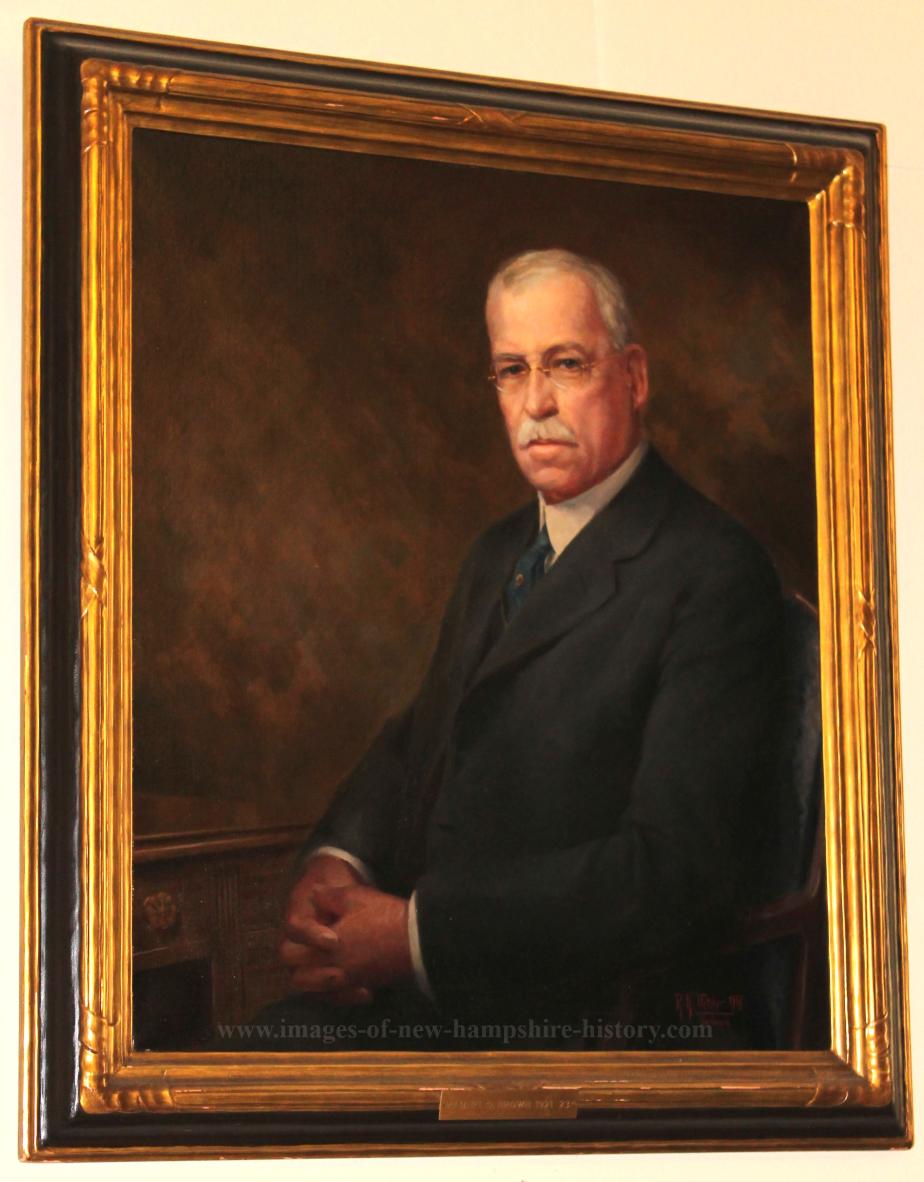
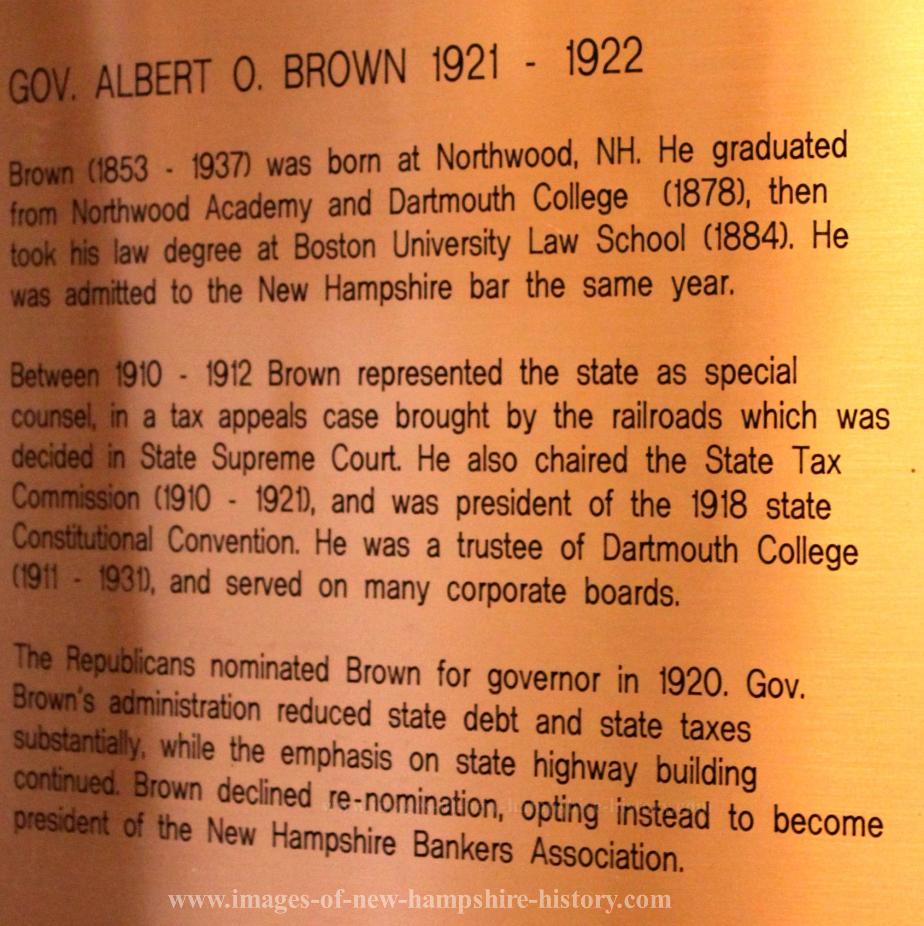
Governor Fred H. Brown 1923 - 1925
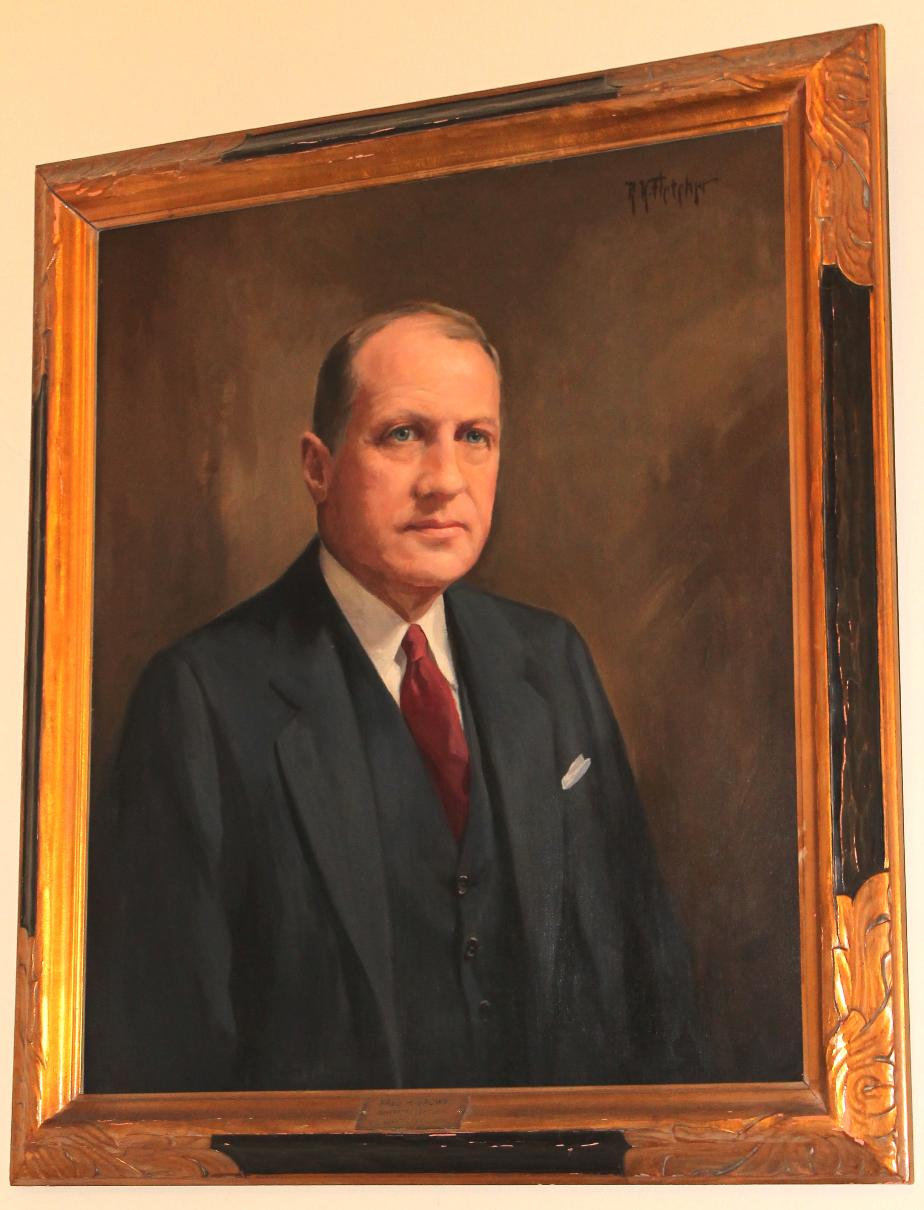
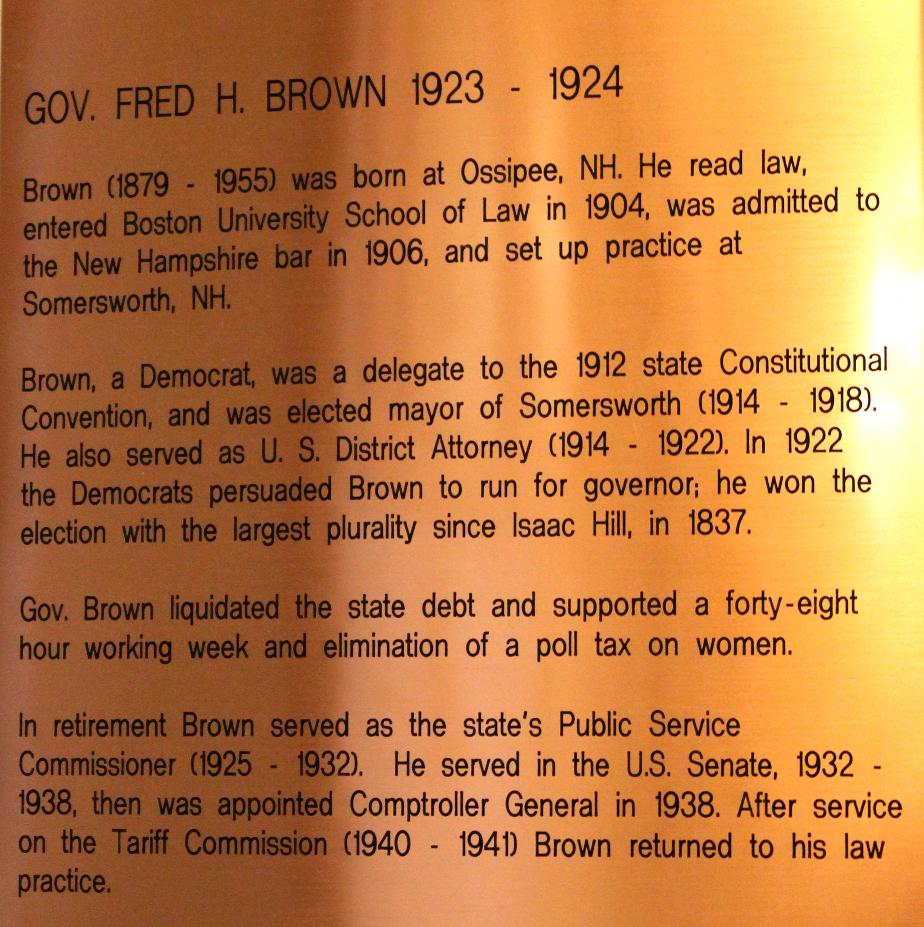
US Congressman Titus Brown (Alstead) 1823 - 1829
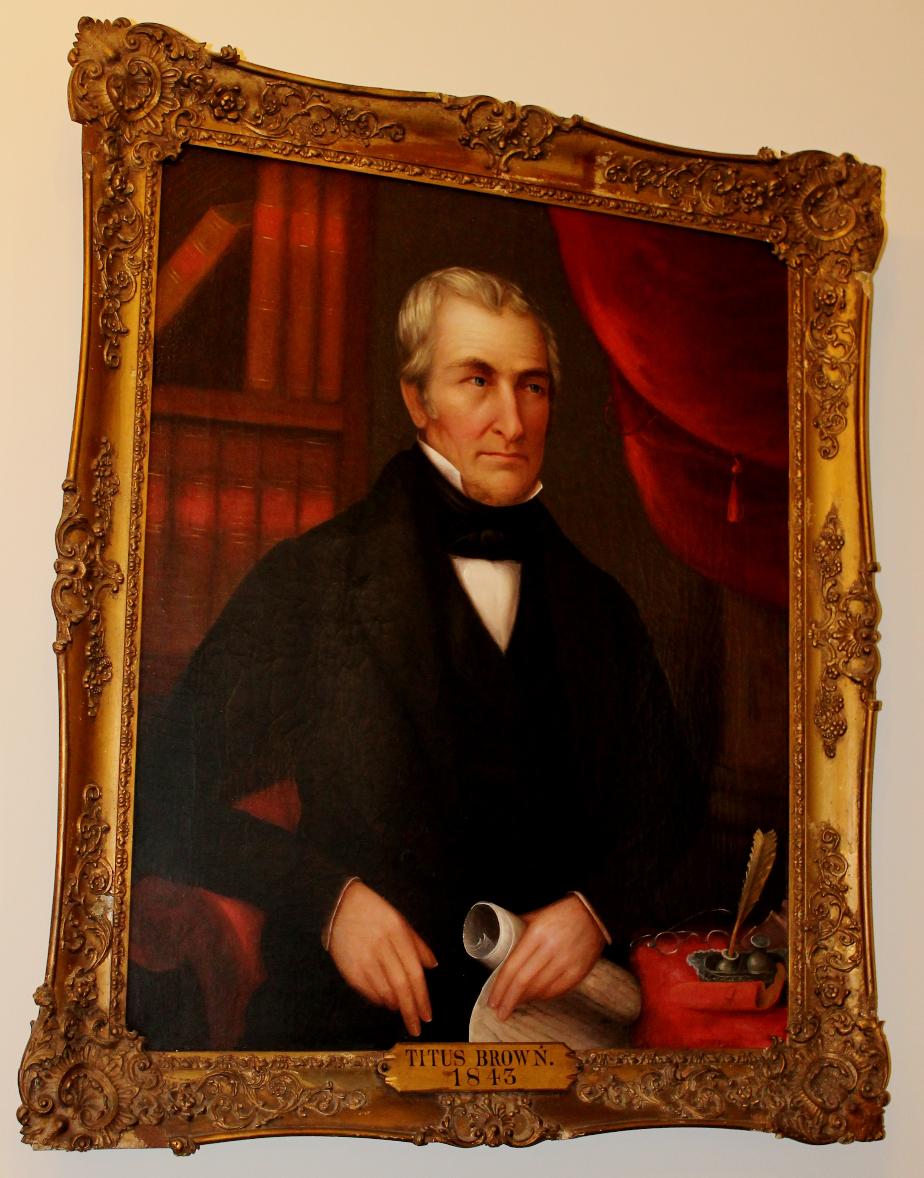

David Buffum - State Senate President 1877-1878
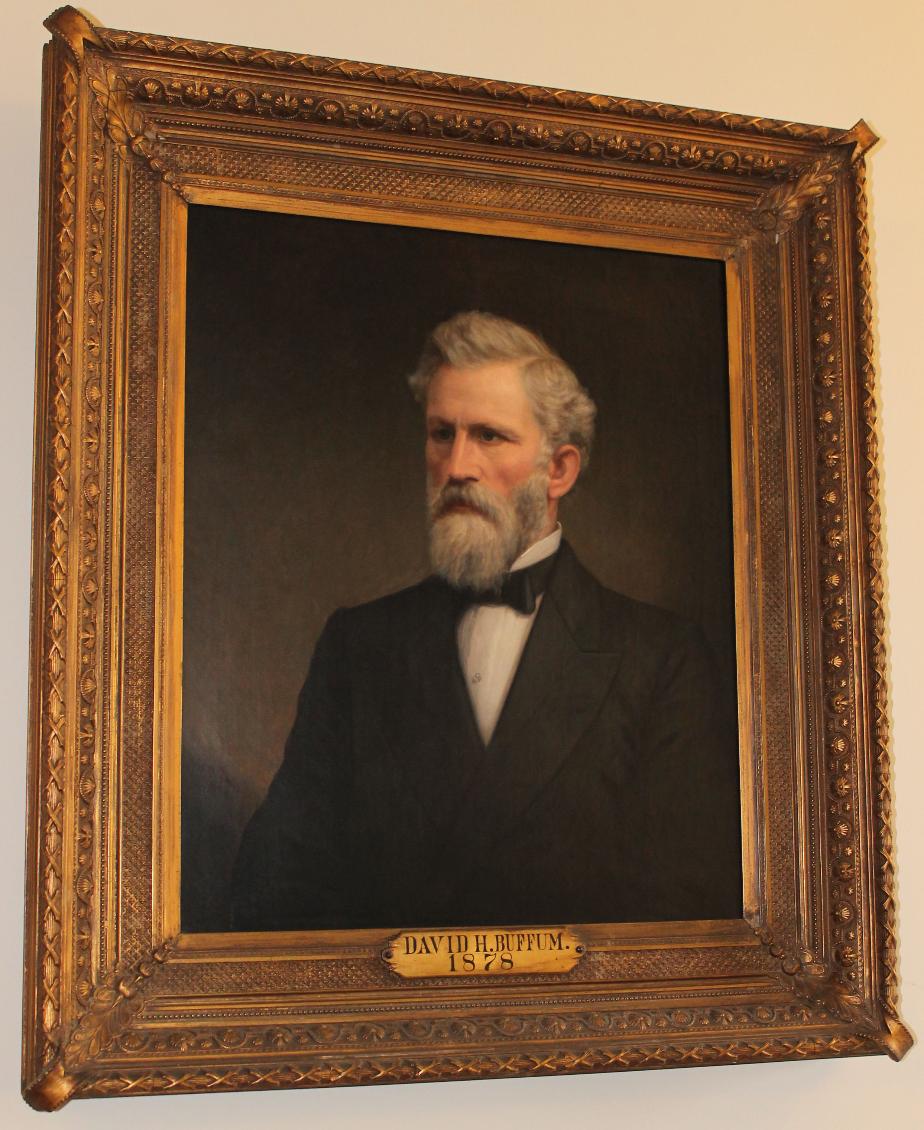
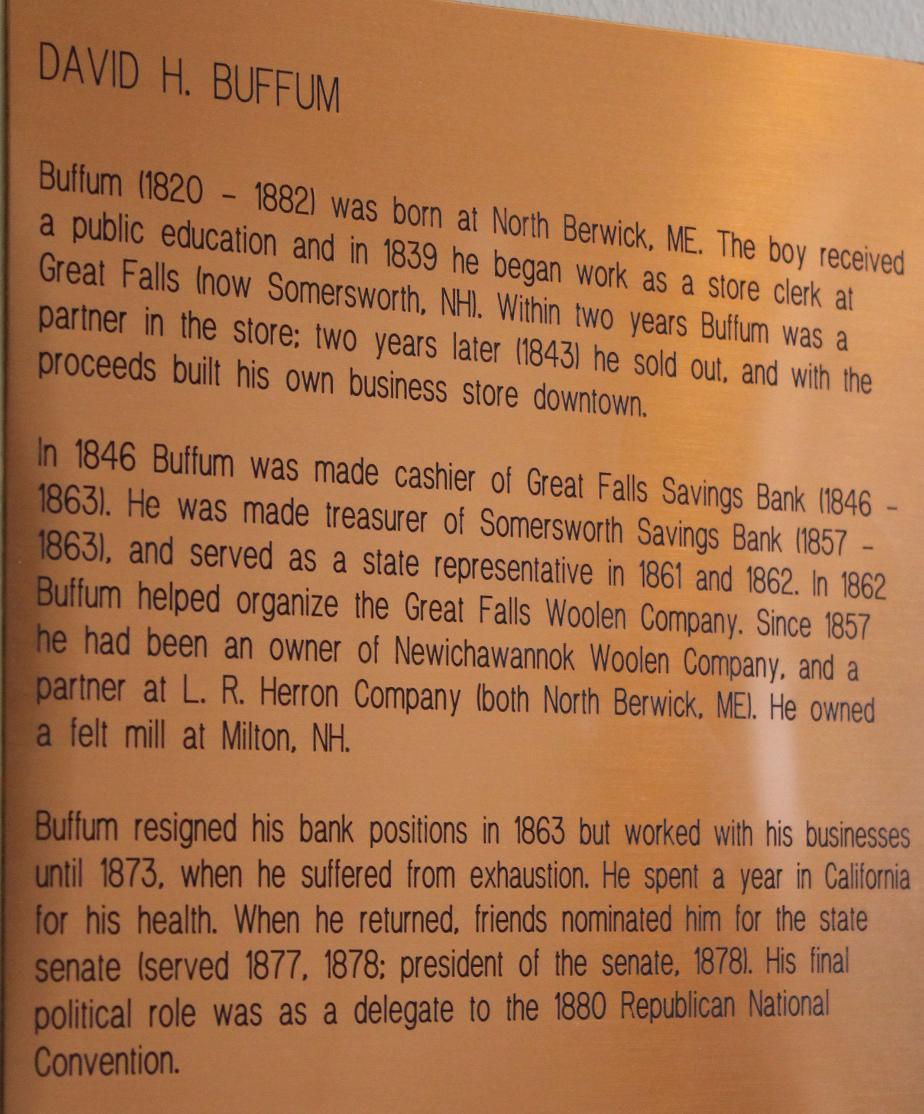
Congressman Edmund A. Burke(1839 - 1845)
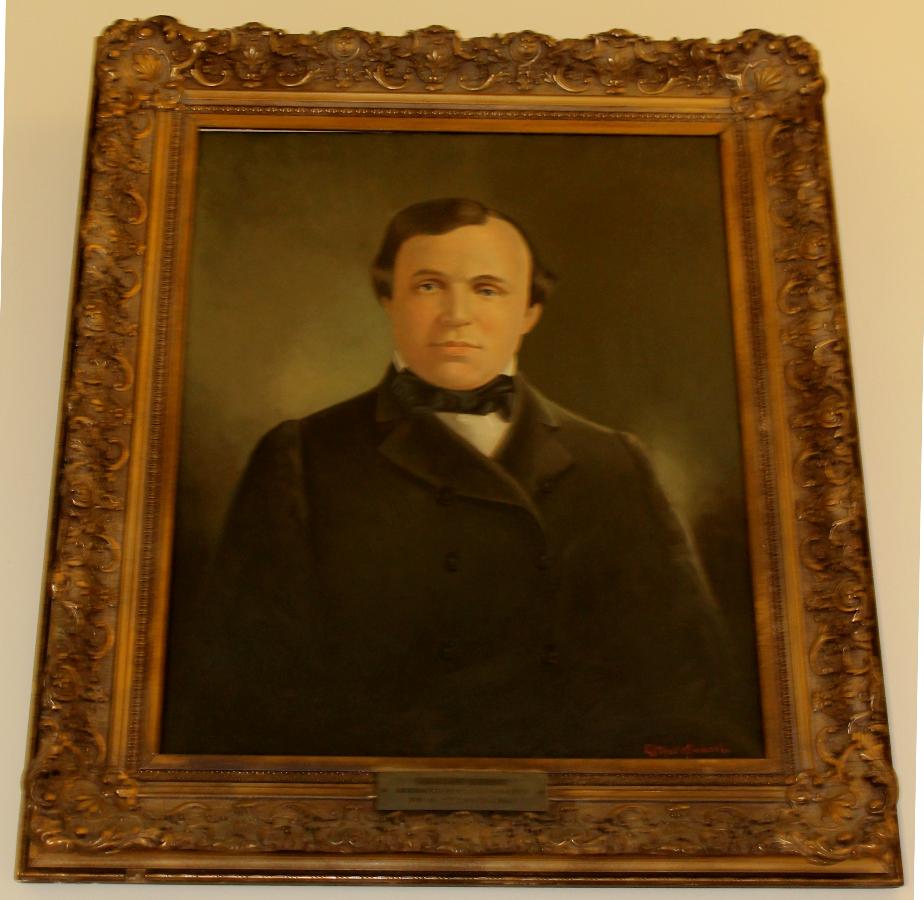
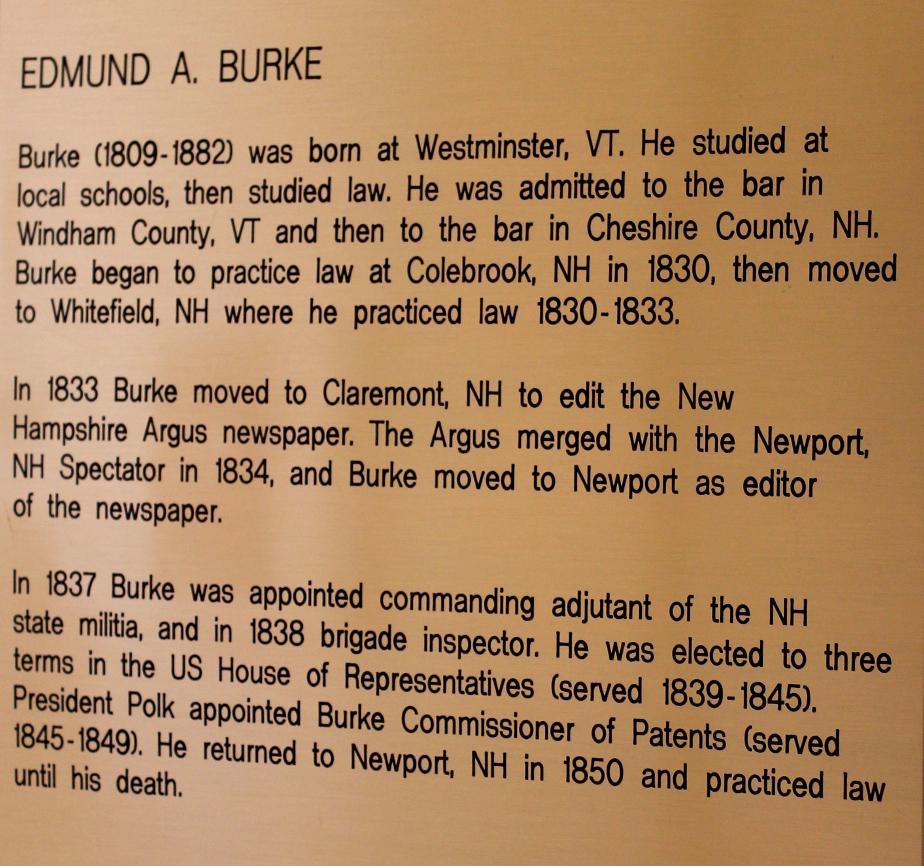
Governor William Burnet 1728
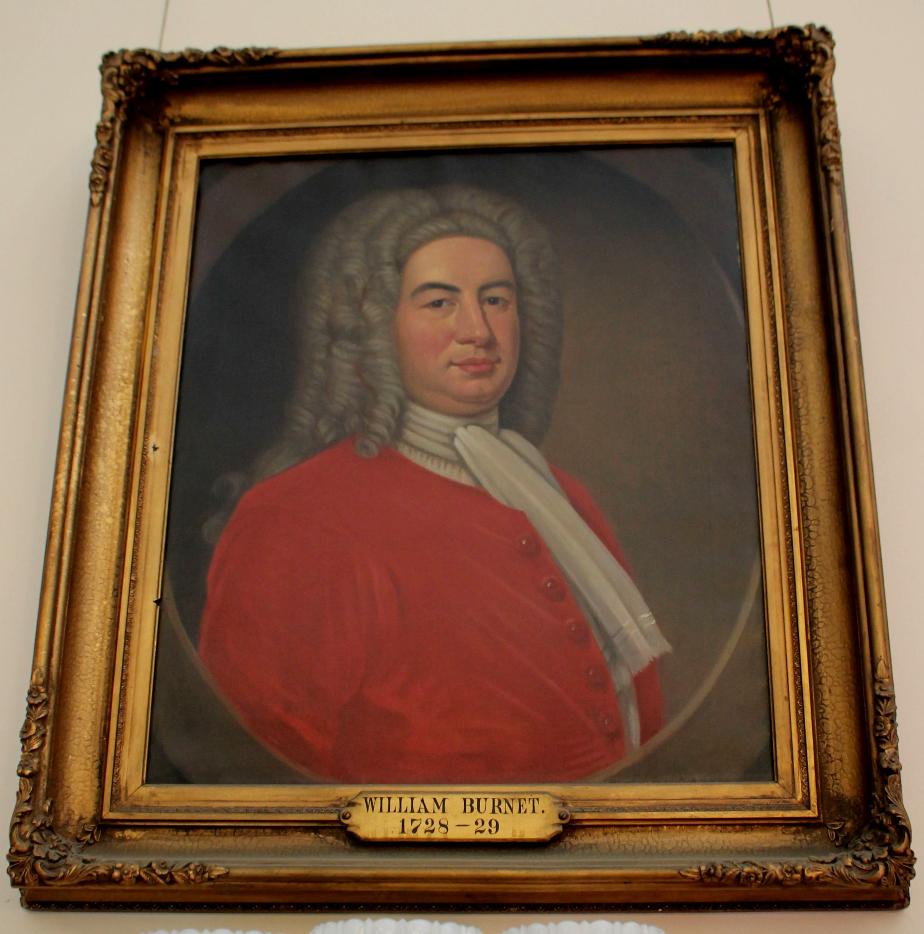
Governor Charles Busiel 1895 - 1897
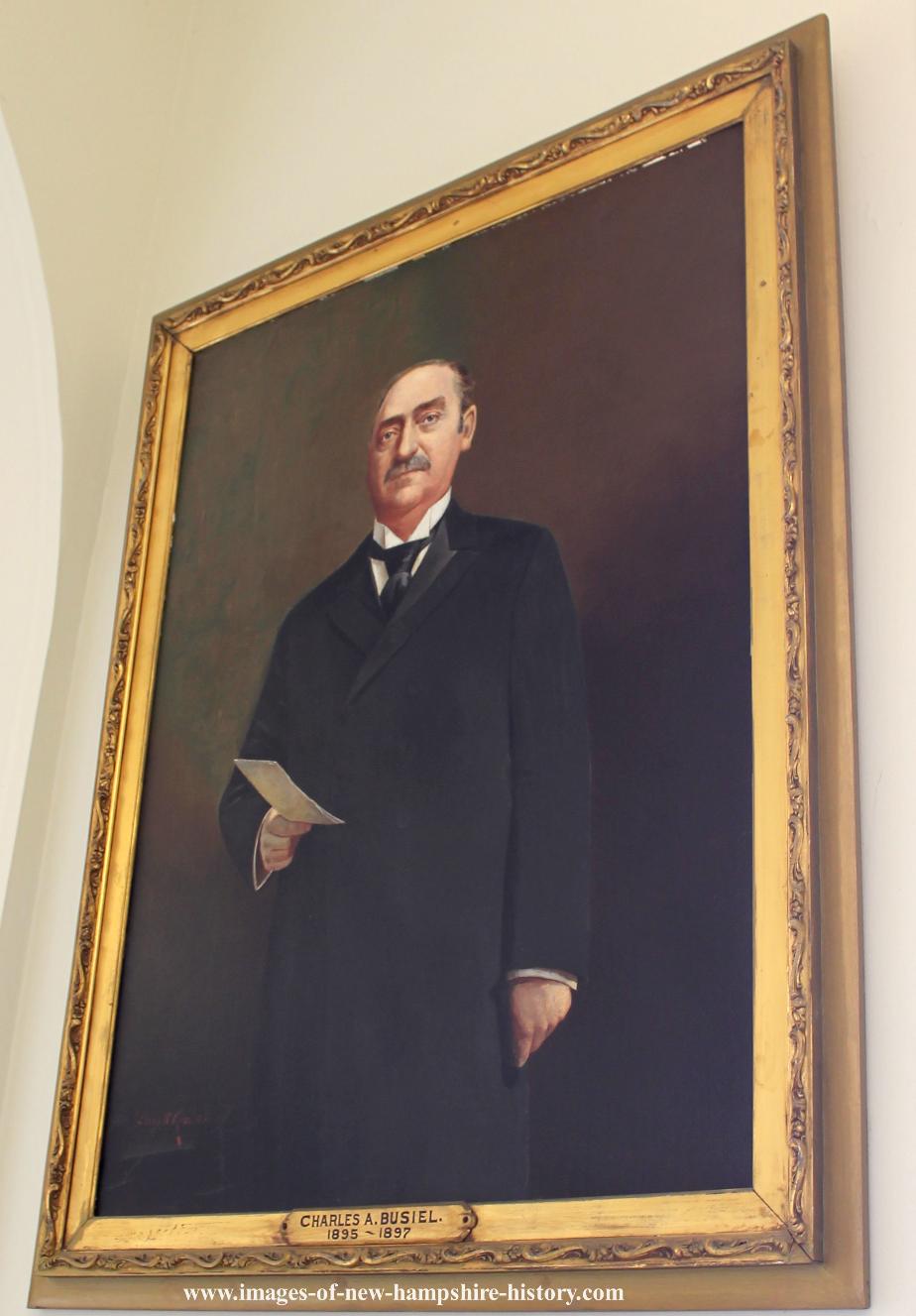
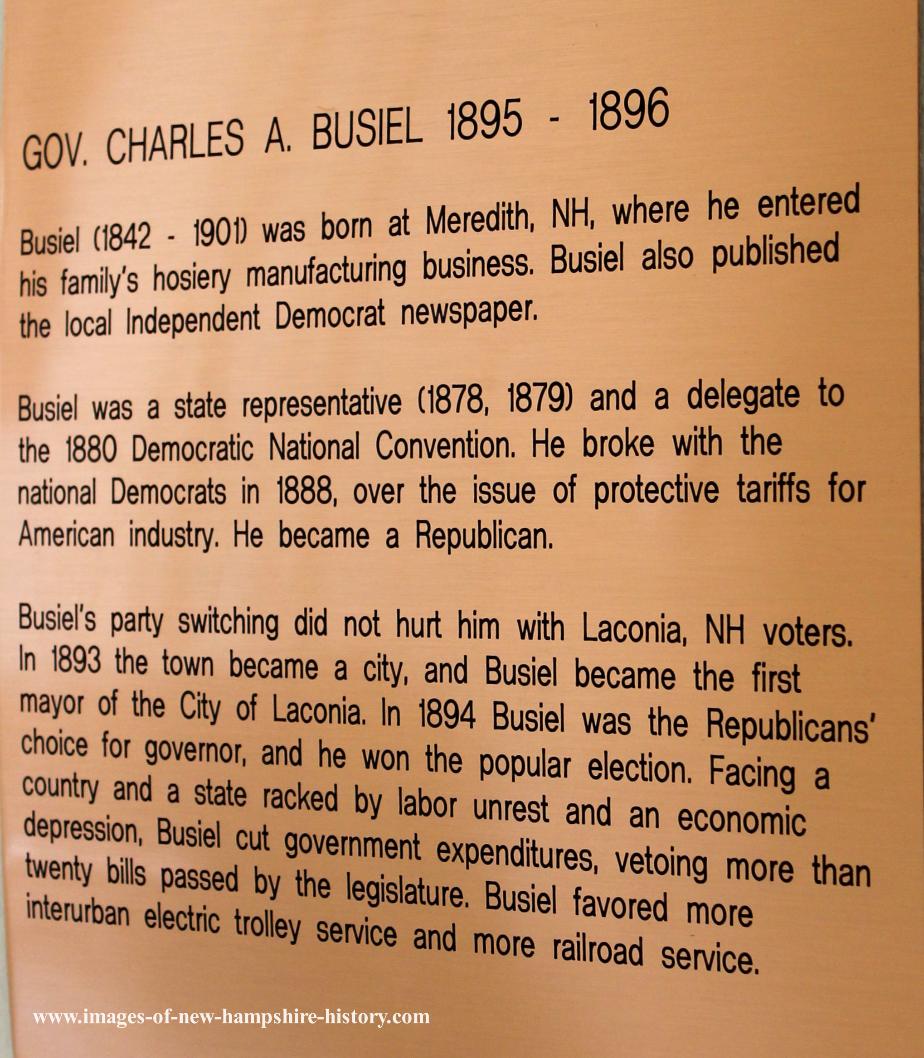
General Benjamin Butler (Deerfield) Civil War General
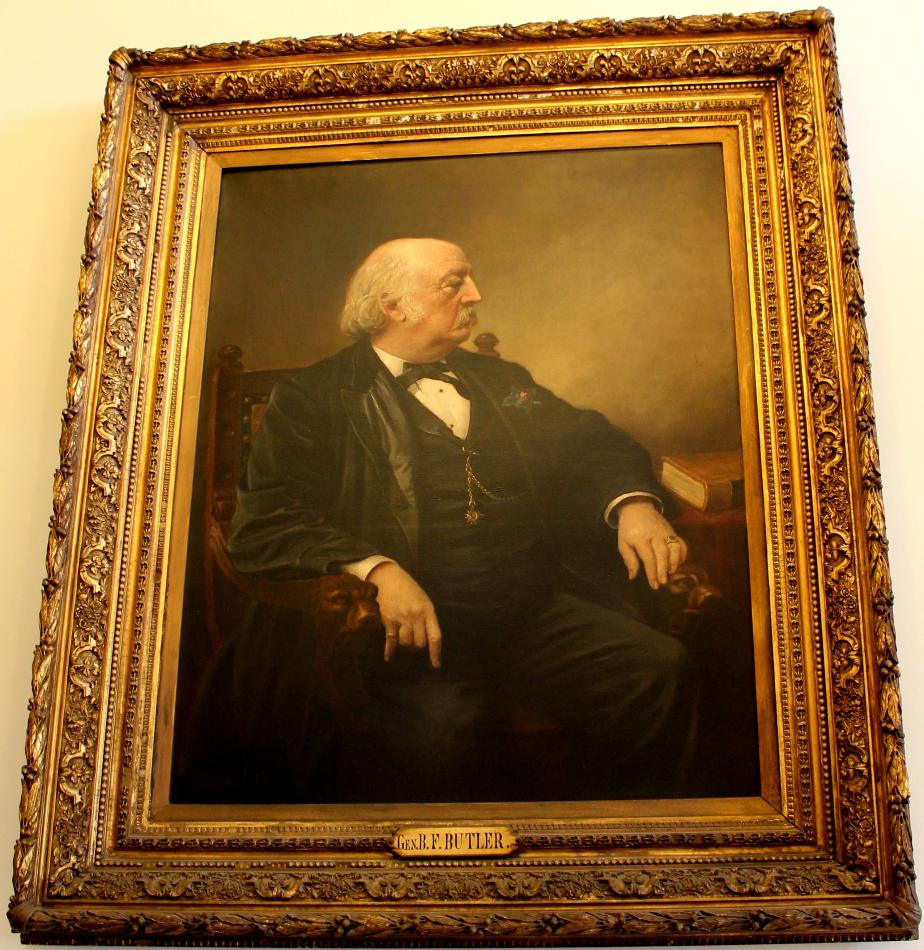
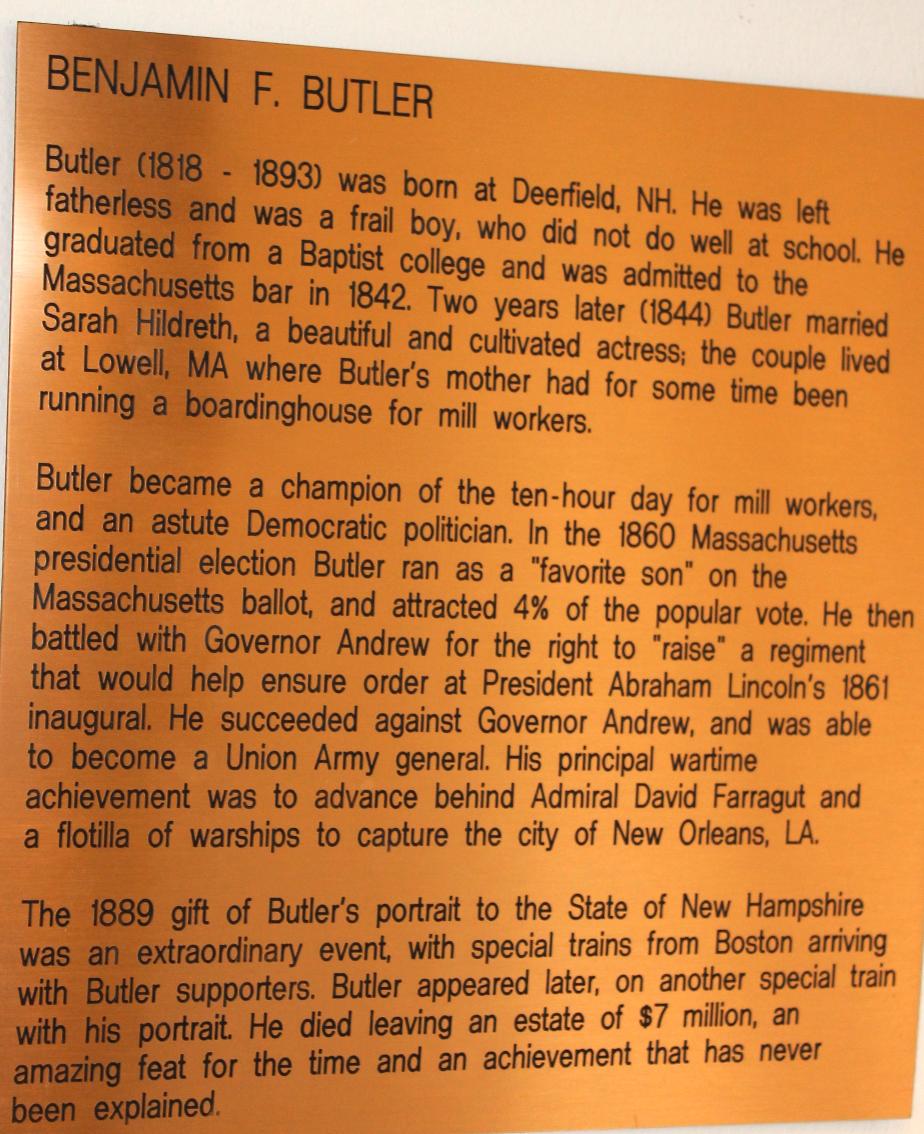
Charles H Campbell - NH State Senate President (1872)
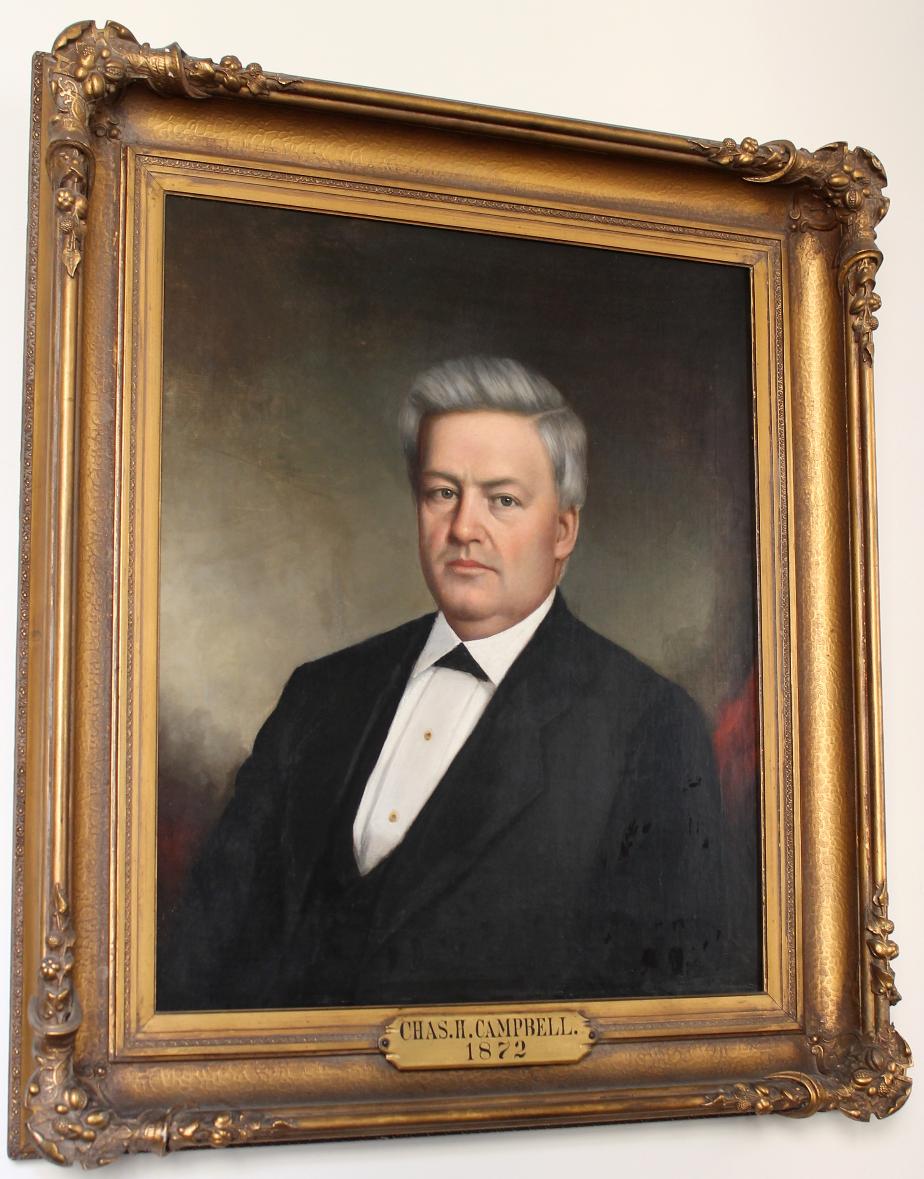

William E. Chandler - State Library Portrait
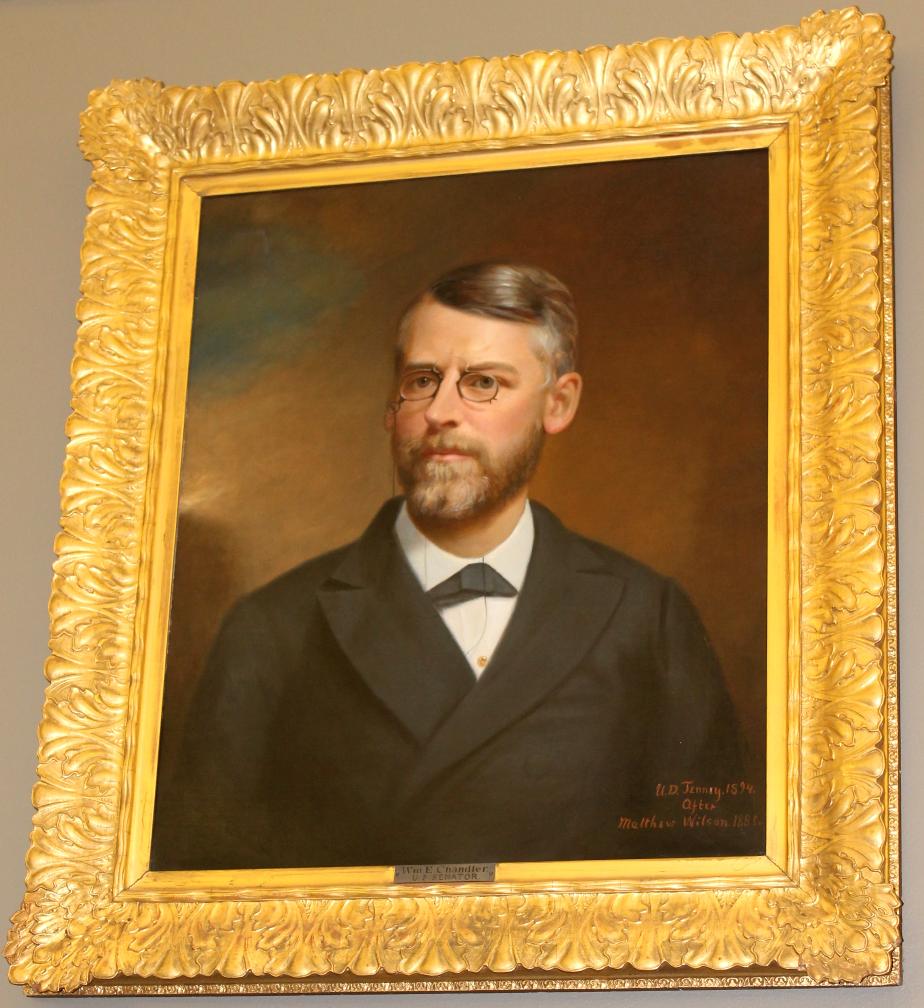
Senator Zachariah Chandler 1857-1879(Bedford)
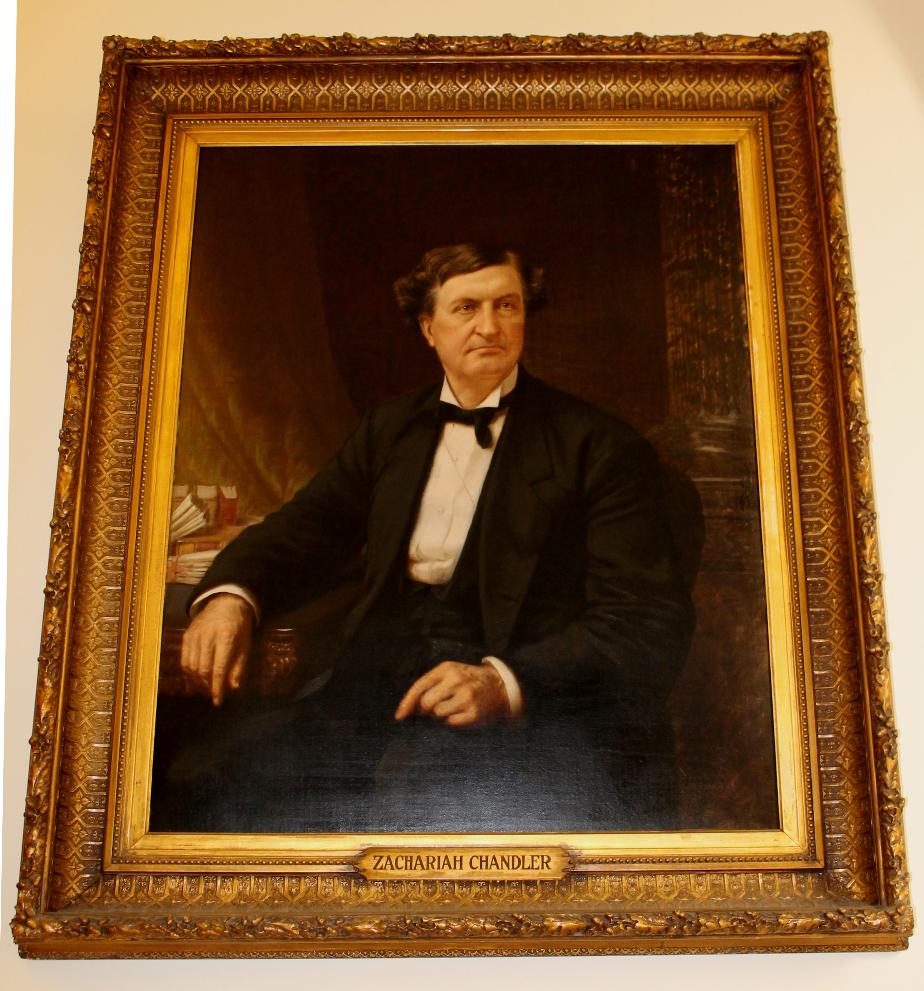
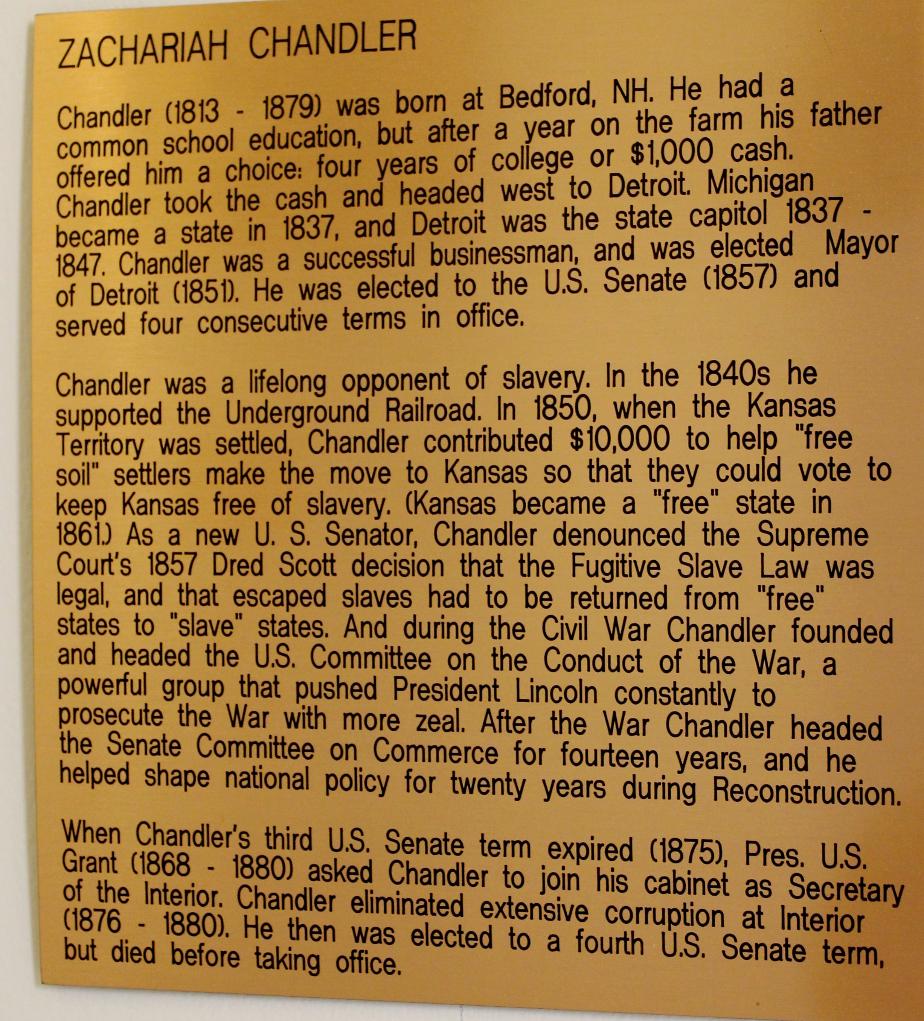
Governor Person C. Cheeney (Holderness) 1828-1901
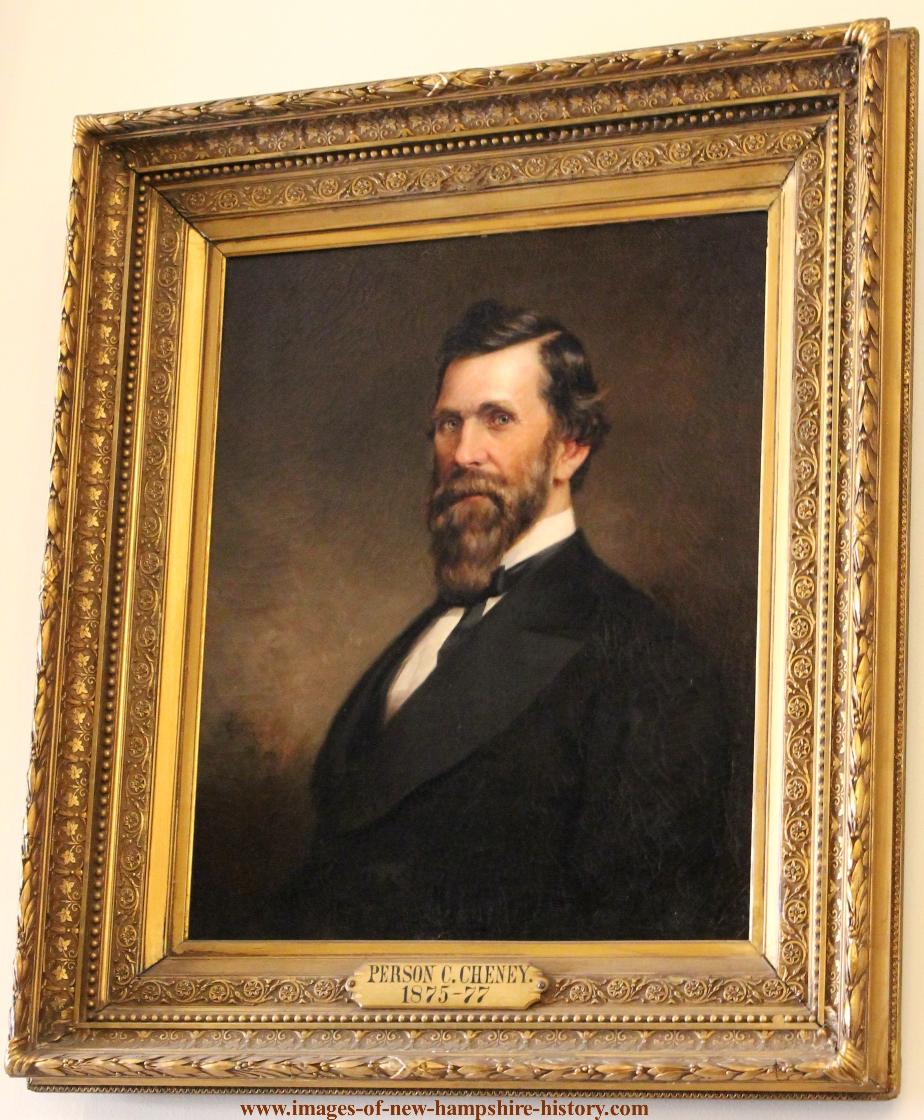
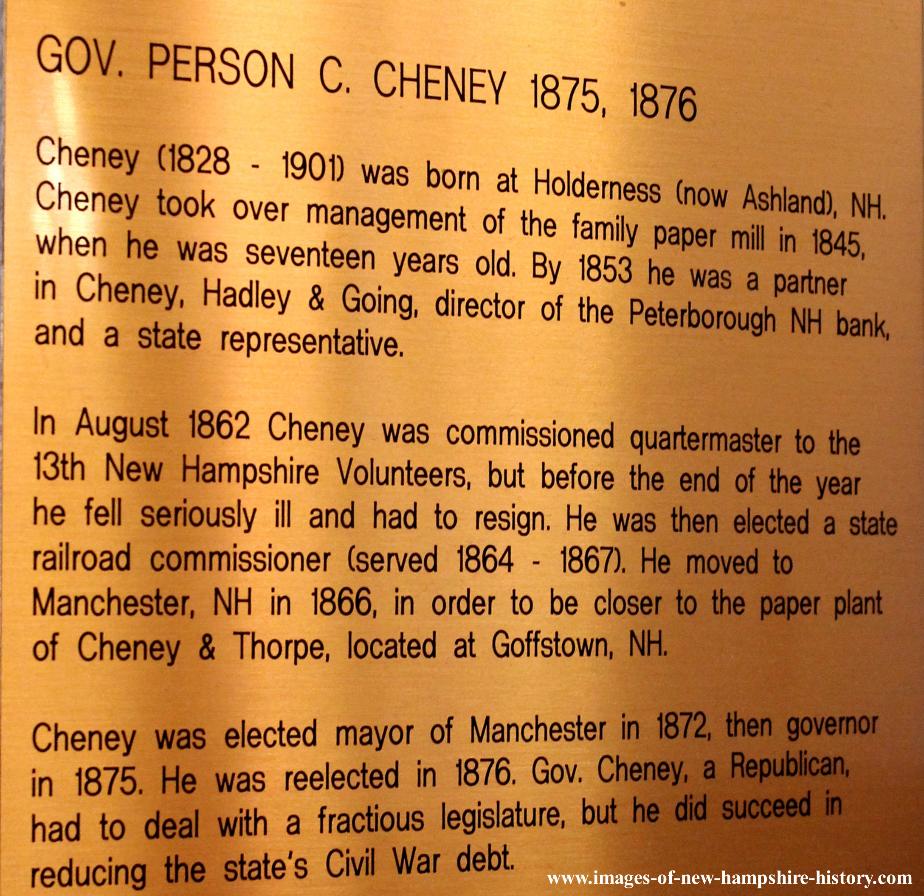
Colonel Joseph Cilley (Nottingham) 1791 - 1887
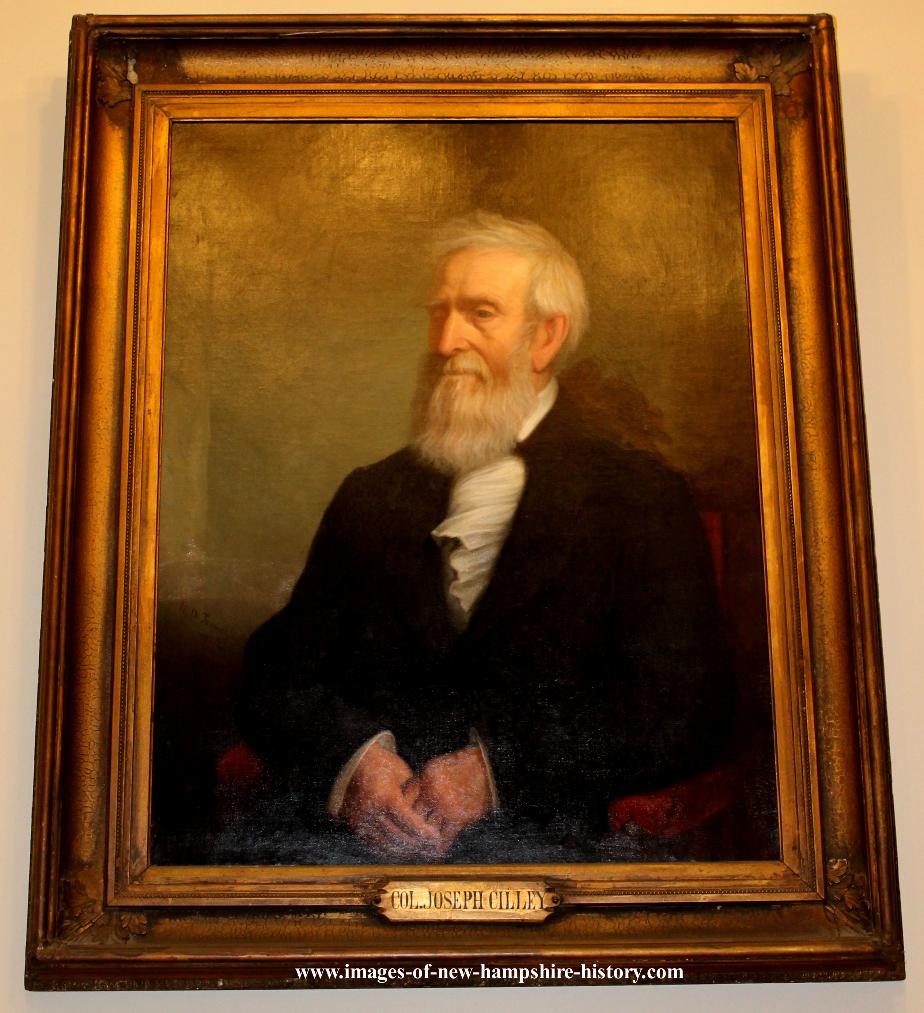

General Joseph Cilley (Nottingham 1734-1799)
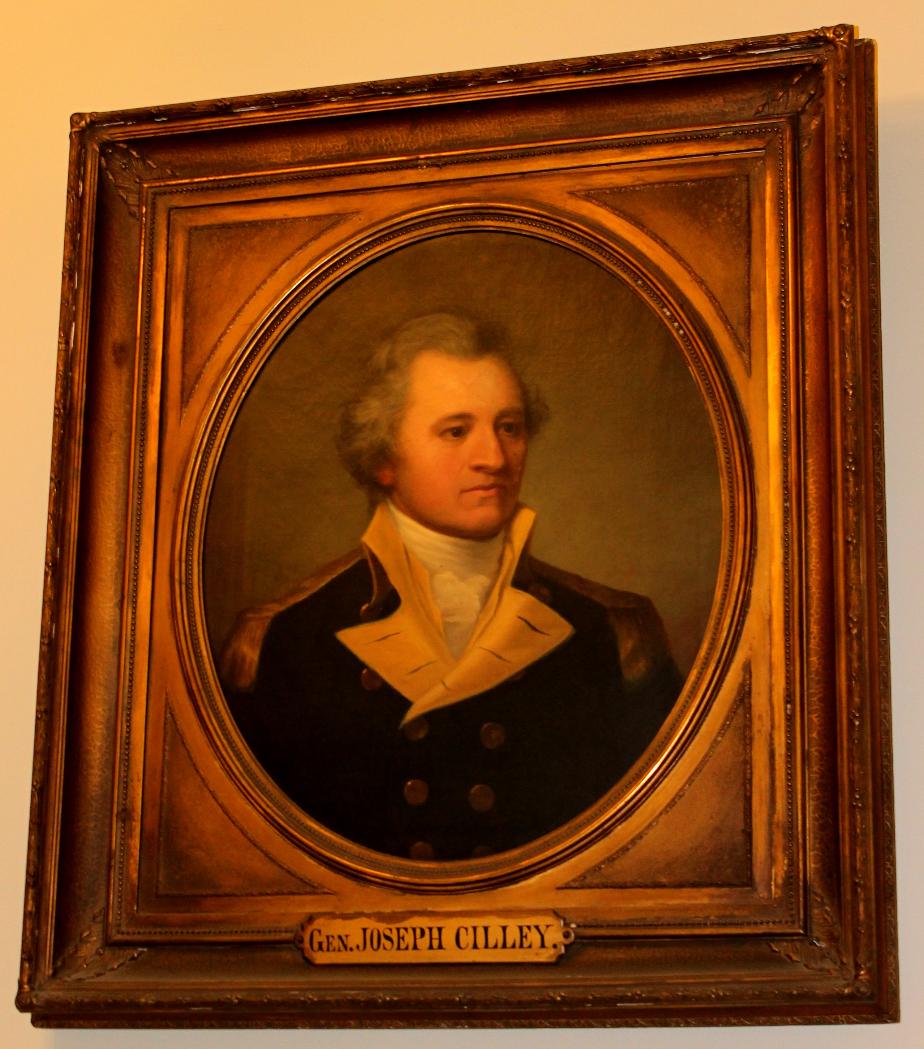
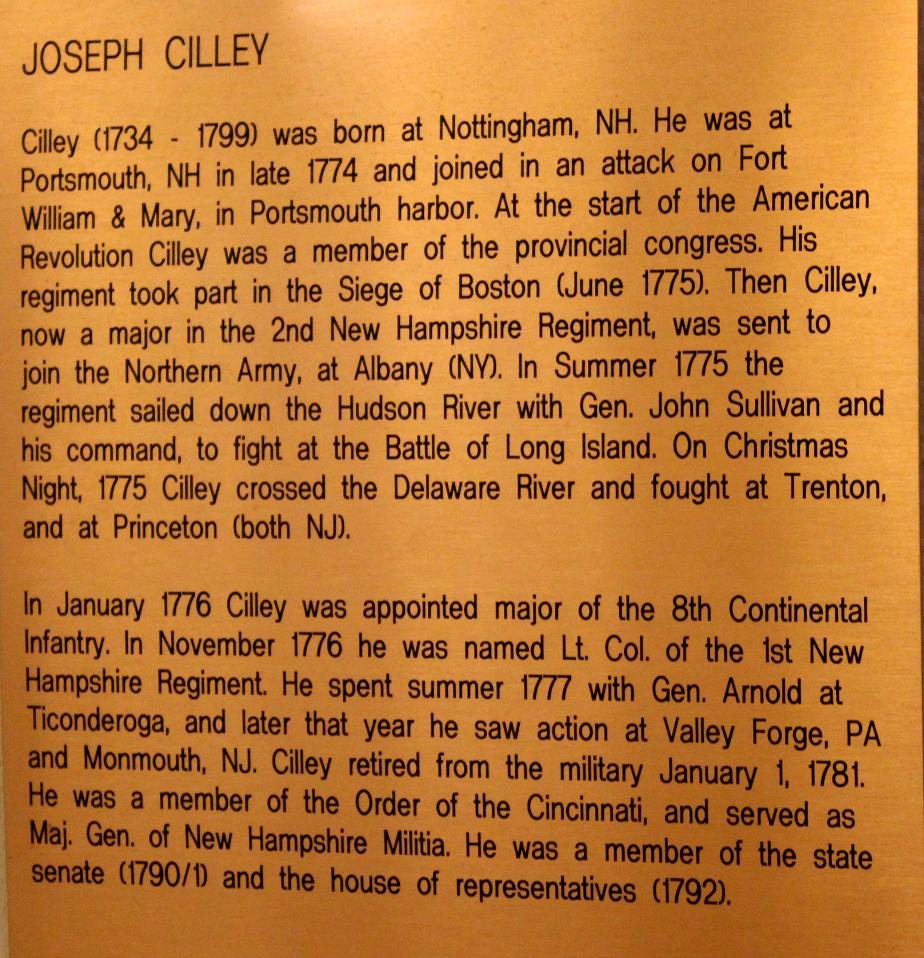
Governor Anthony Colby 1846 - 1847


Norris Cotton (Warren) US Congressman (1947-1954) & US Senator (1954-1974)
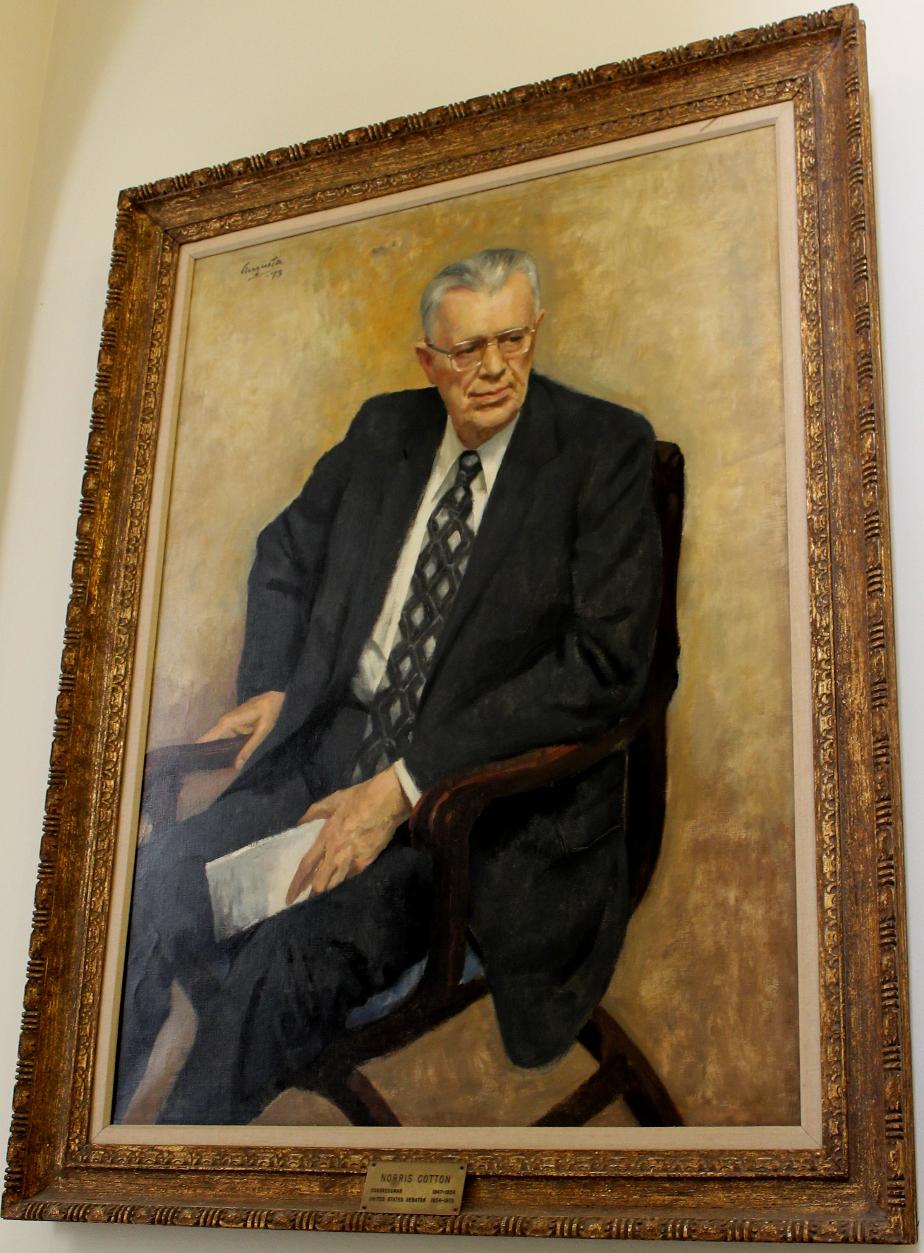
Norris H. Cottom, a Representative and a Senator from New Hampshire; born on a farm in Warren, Grafton County, N.H., May 11, 1900; attended Phillips Exeter Academy at Exeter, N.H.; graduated from Wesleyan University, Middletown, Conn., in 1923; editor of the Granite Monthly; clerk of the State senate; aide to United States Senator George Moses; attended the law school of George Washington University, Washington, D.C.; admitted to the bar in 1928 and commenced practice in Lebanon, N.H.; member, State house of representatives 1923, 1943, 1945, serving as majority leader in 1943 and speaker in 1945; elected as a Republican to the Eightieth Congress and to the three succeeding Congresses and served from January 3, 1947, until his resignation November 7, 1954, having been elected to the United States Senate; elected on November 2, 1954, as a Republican to the United States Senate to complete the unexpired term caused by the death of Charles W. Tobey for the term ending January 3, 1957; reelected in 1956, 1962, and again in 1968, and served from November 8, 1954, until his resignation December 31, 1974; was not a candidate for reelection in 1974; chairman, Republican Conference (1973-75); subsequently appointed to the seat August 8, 1975, to fill the vacancy caused by the contested election of November 5, 1974, and served from August 8, 1975, until September 18, 1975; was a resident of Lebanon, N.H., until his death, February 24, 1989; interment in First Congregational Church Cemetery.
Colonel James Brackett Creighton - Senate President 1840
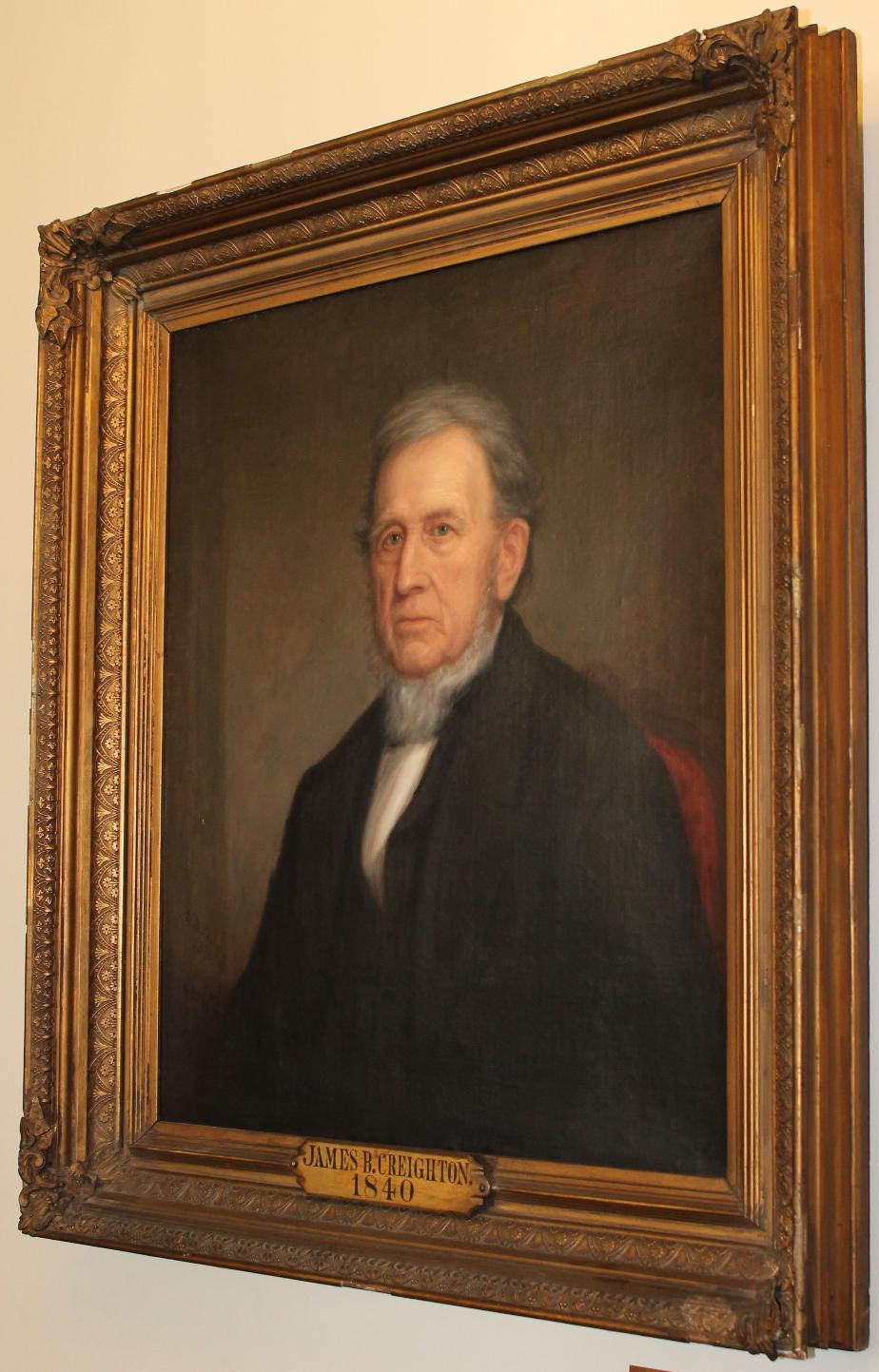
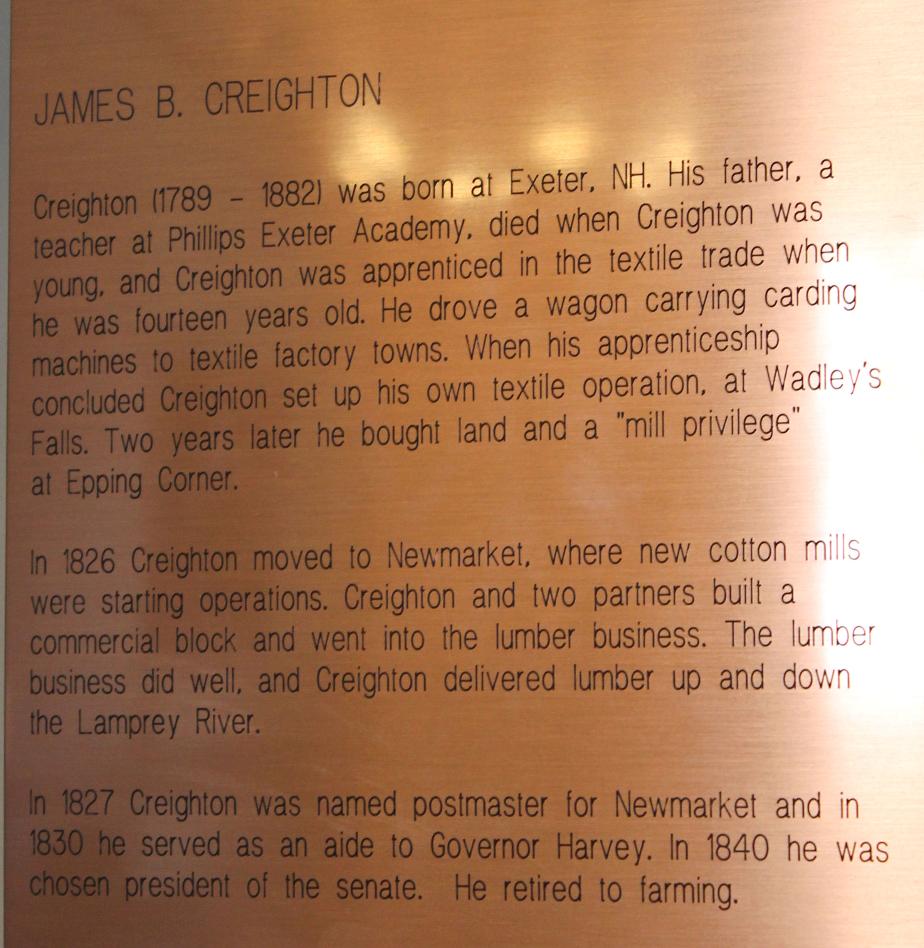
Colonel Edward Cross (Lancaster)

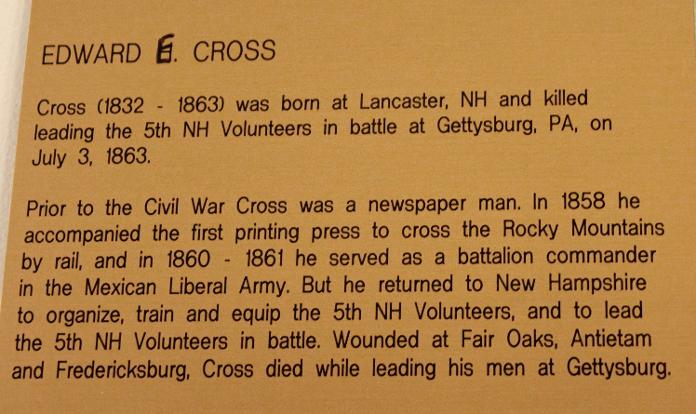
Frank Dunklee Currier - NH State Senate President - 1886
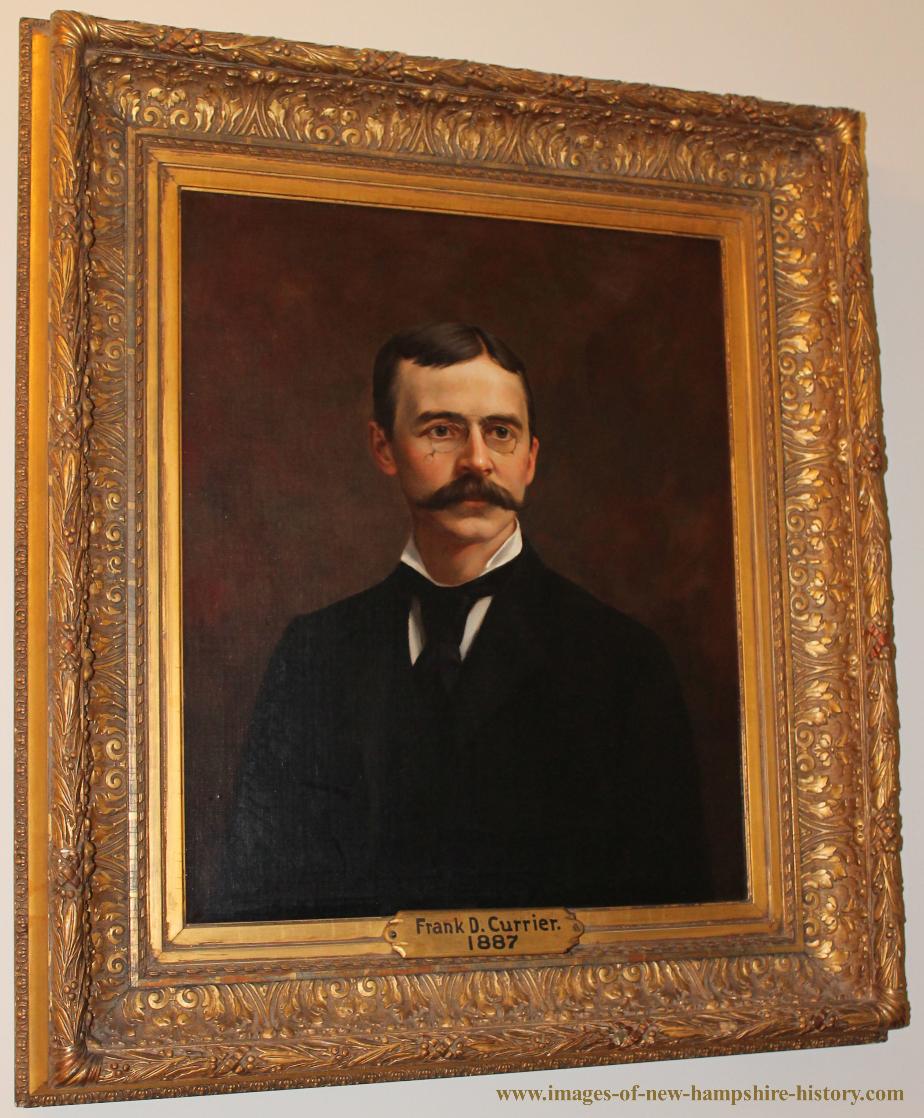
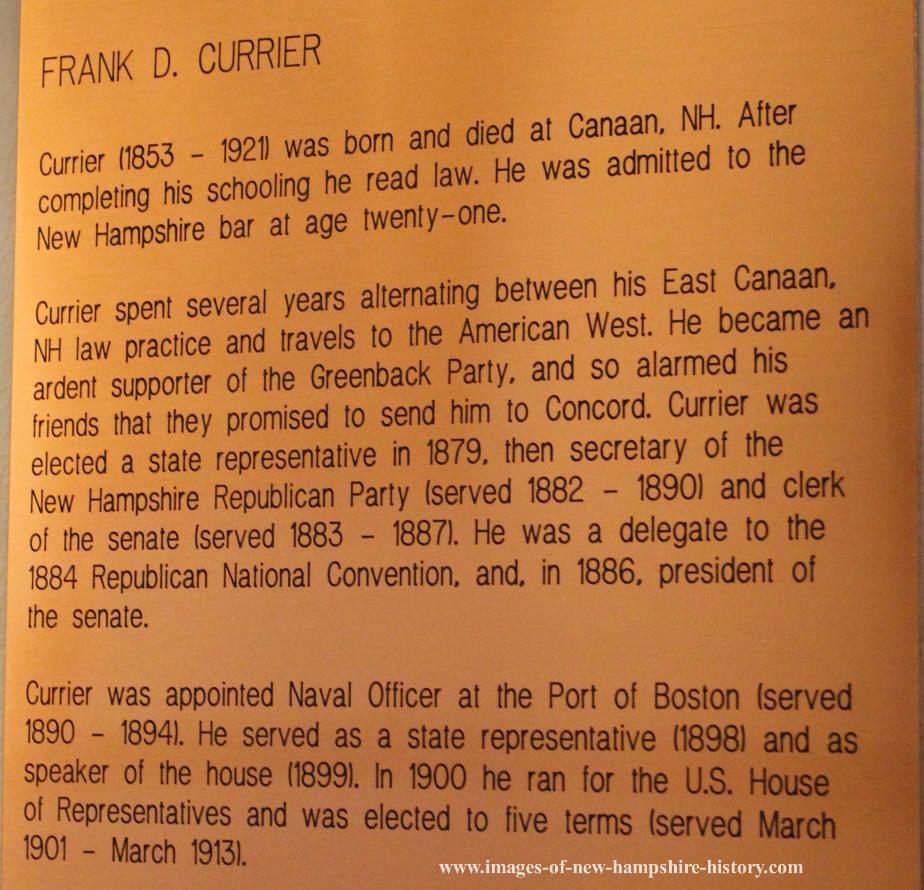
Governor Moody Currier (1885 - 1886) Boscowen
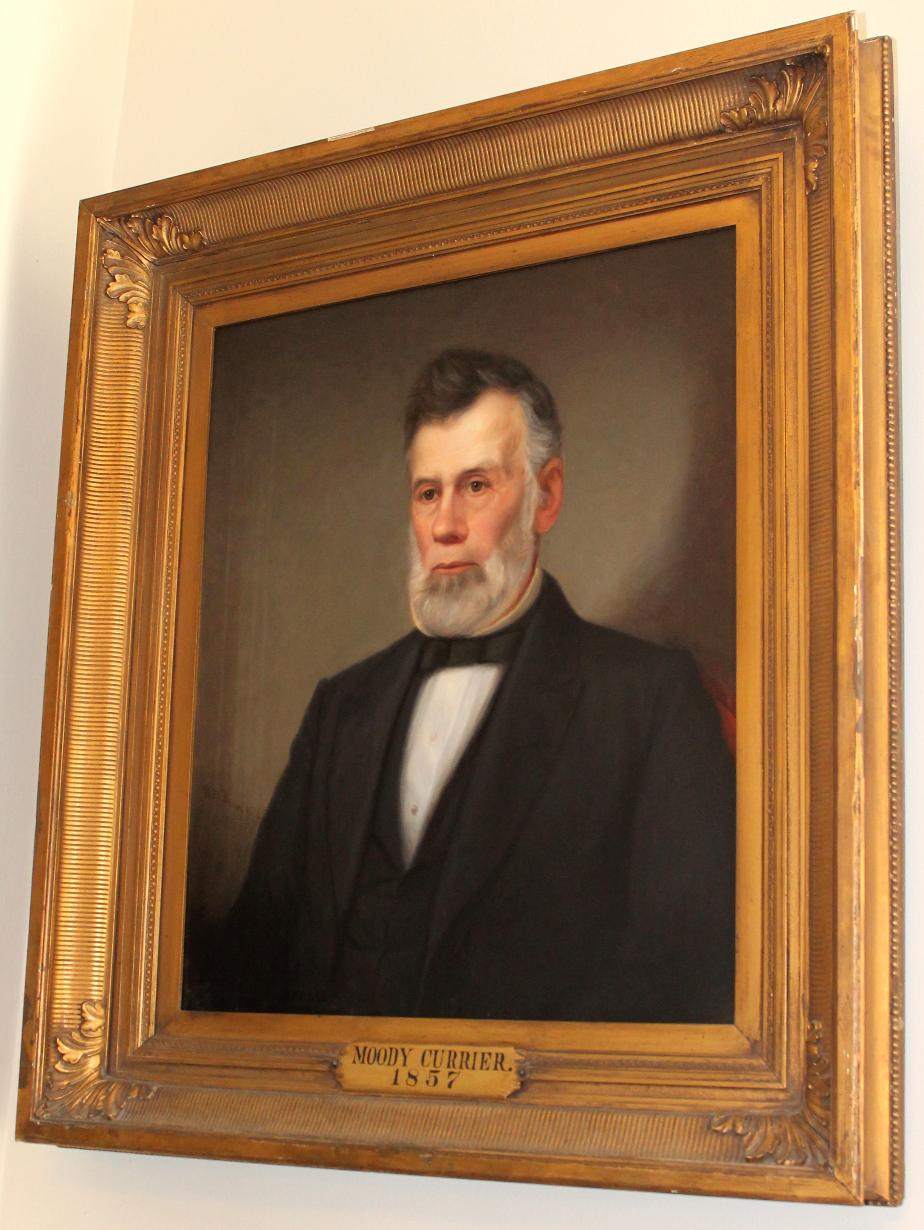
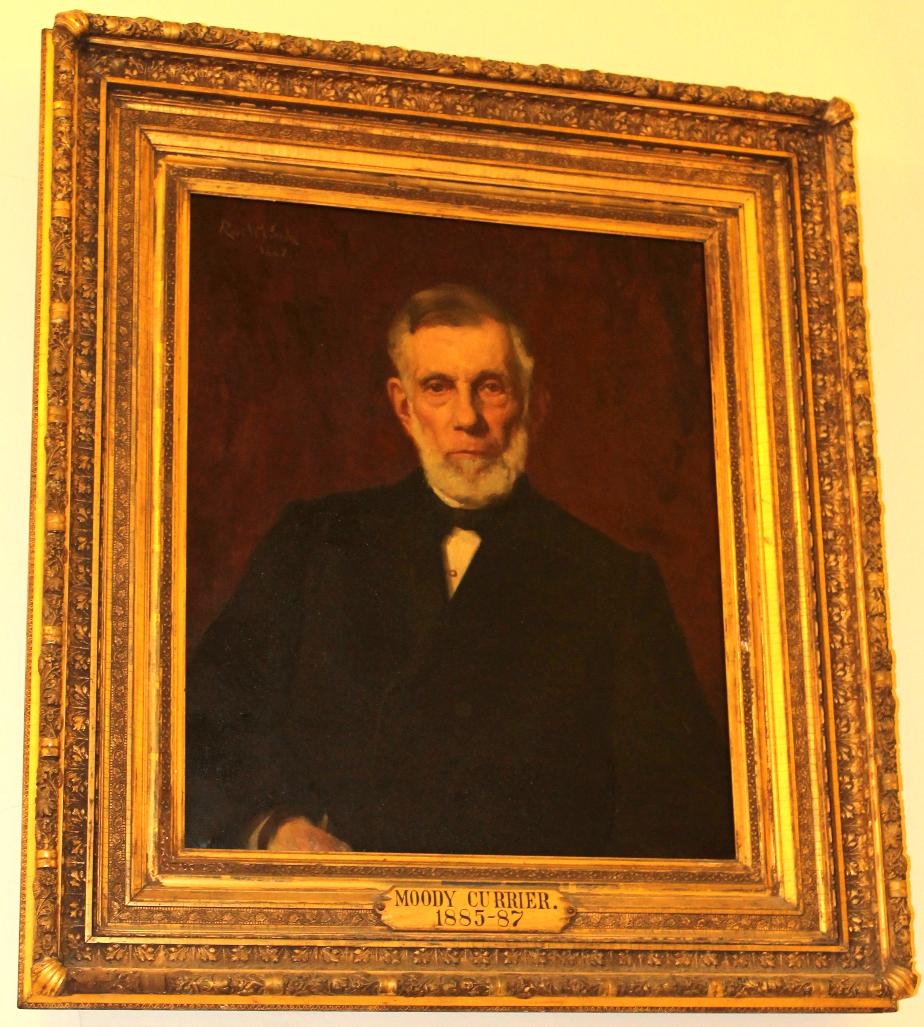
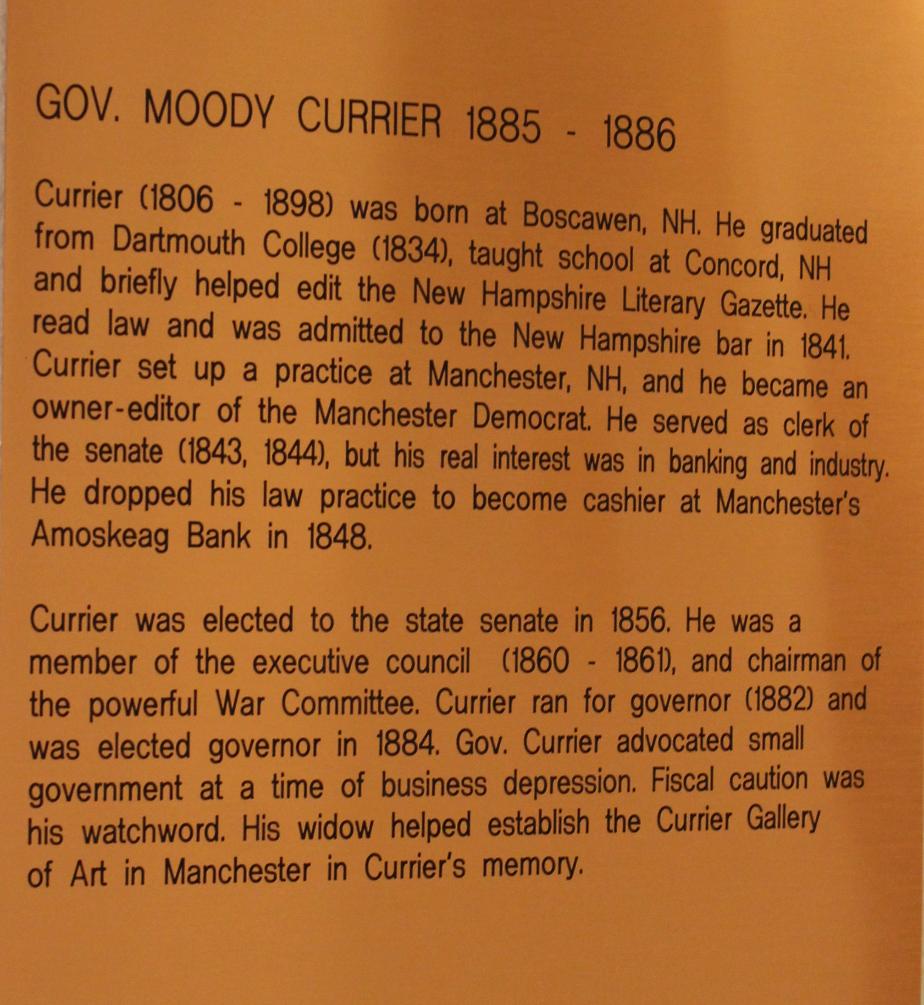
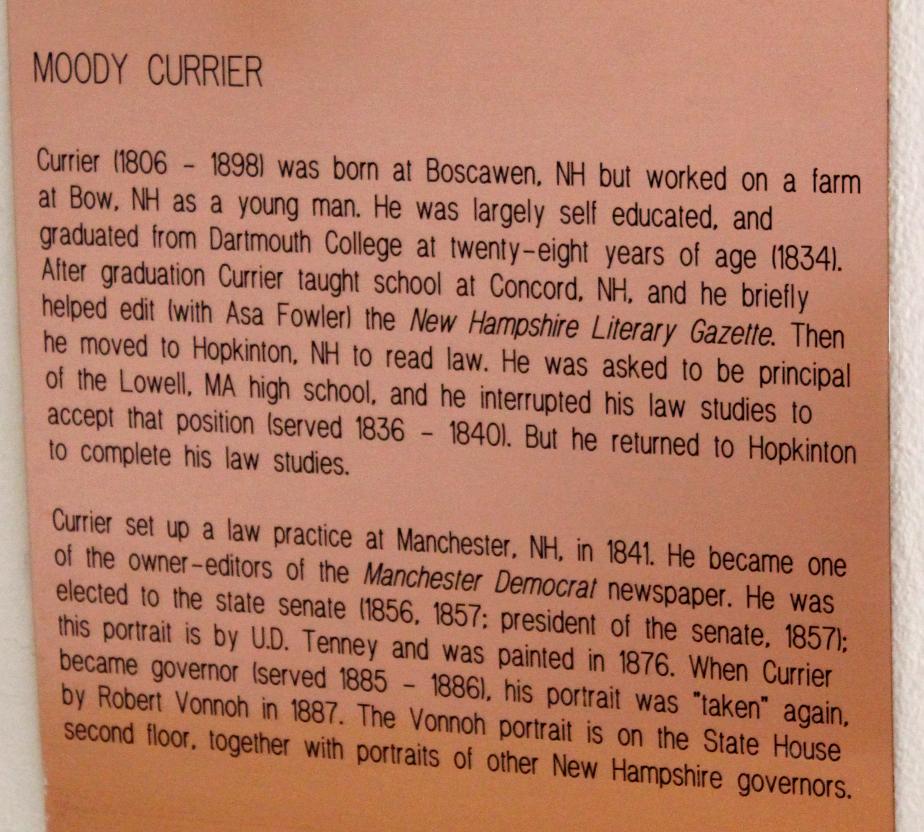
Governor Charles M Dale 1945 - 1947
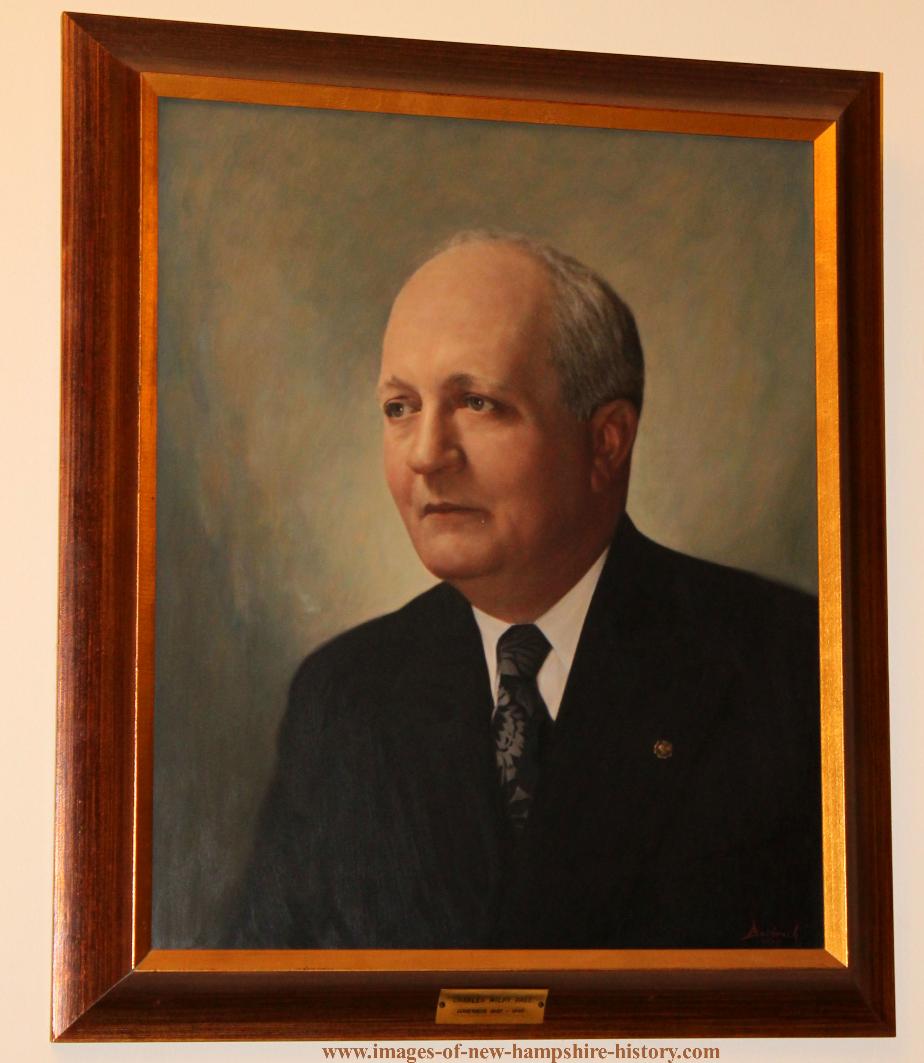
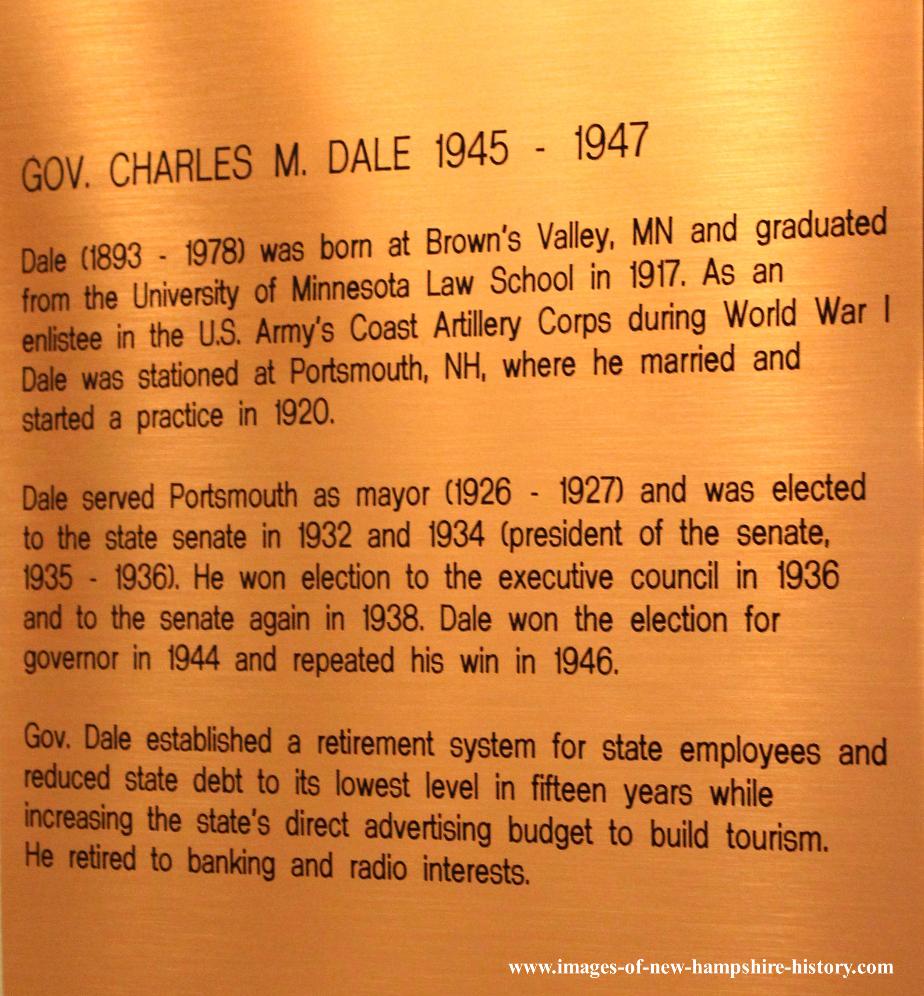
Harriet P. Dame - Civil War Nurse (Barnstead)
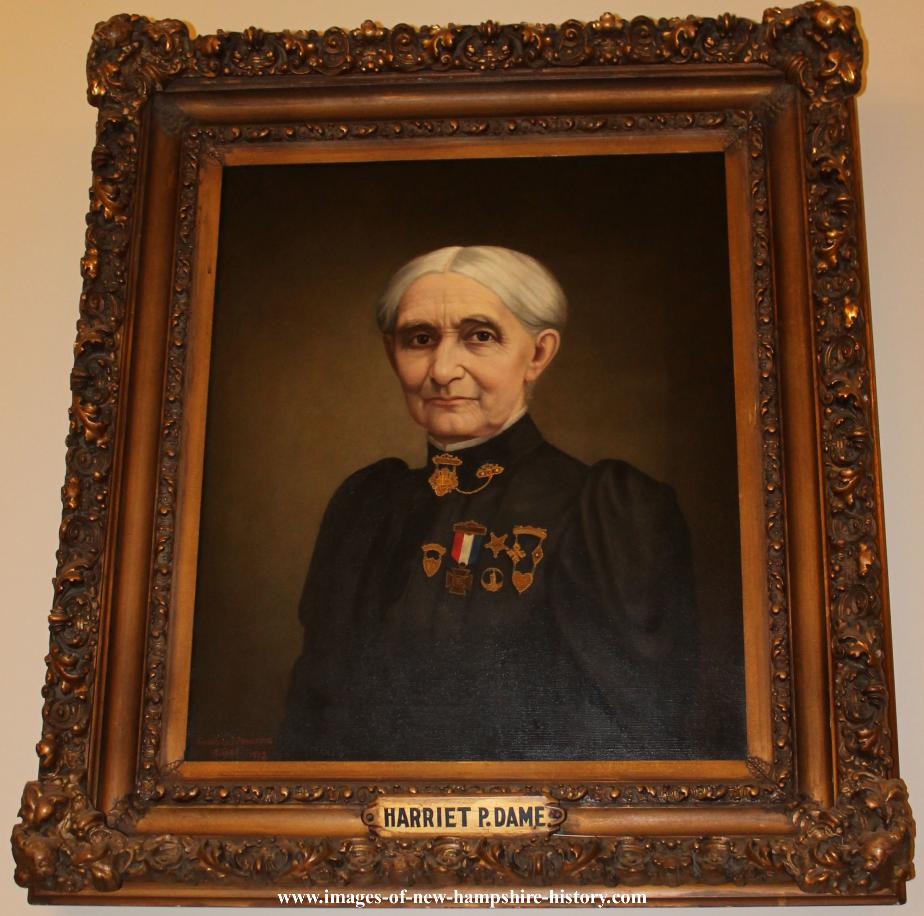
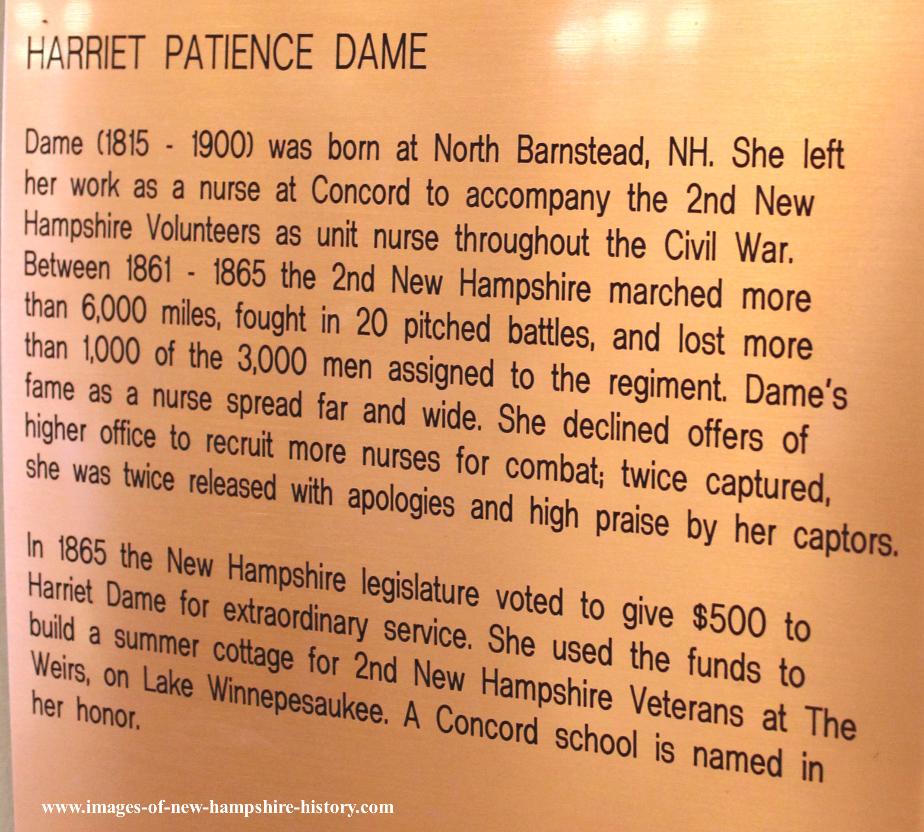
General Henry Dearborn (Hampton) 1751-1829
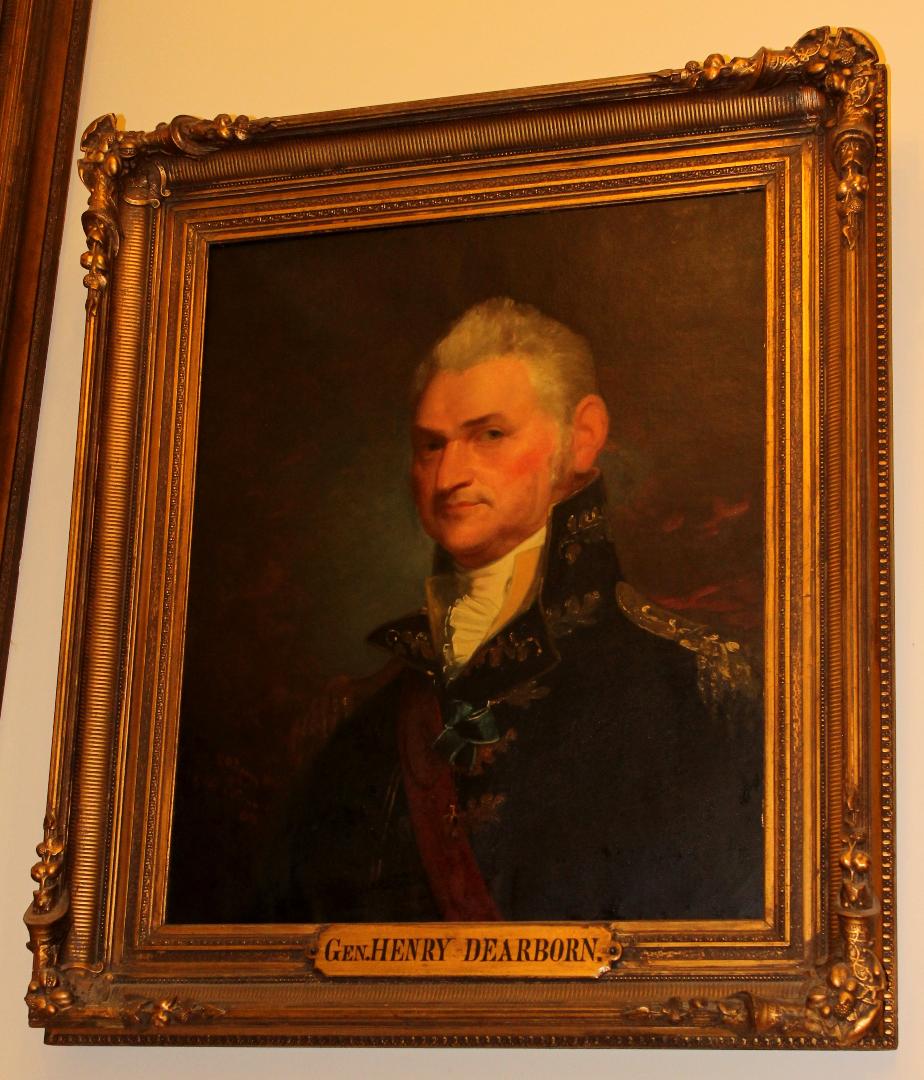
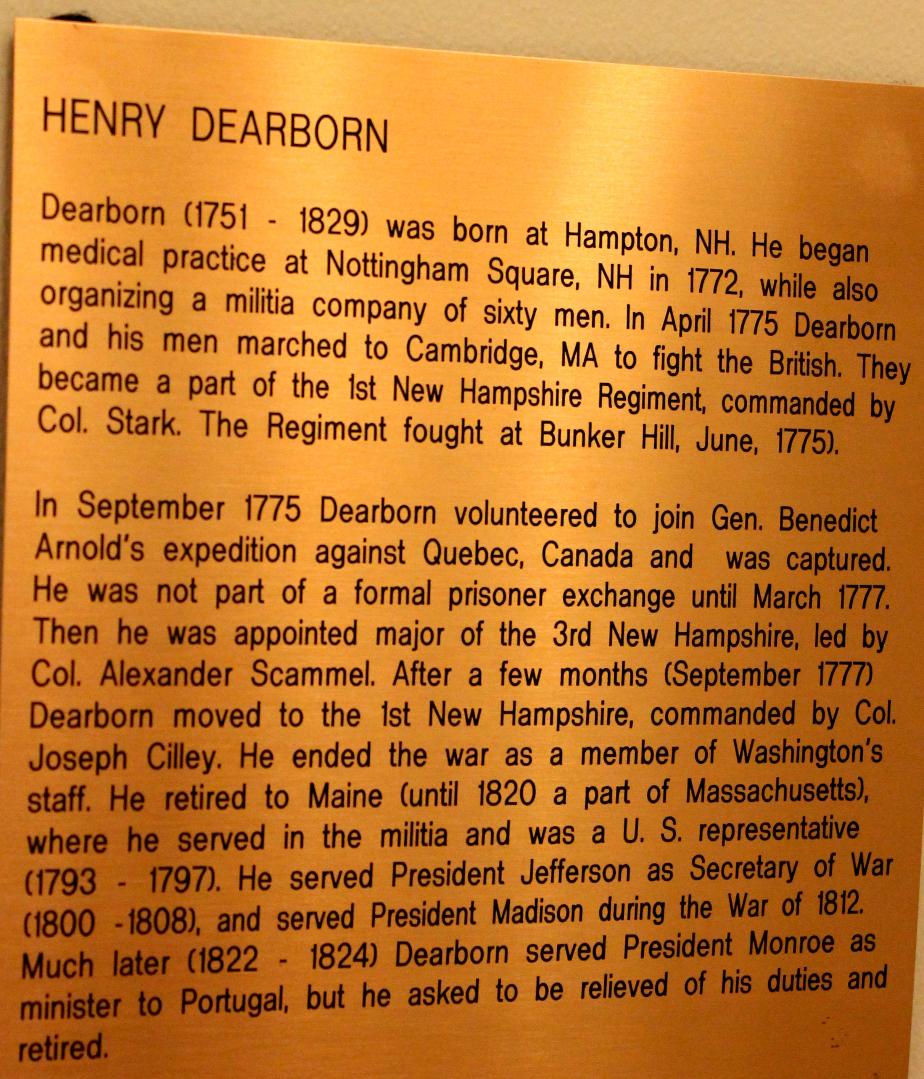
Johannes De Graff - Revolutionary War Diplomat

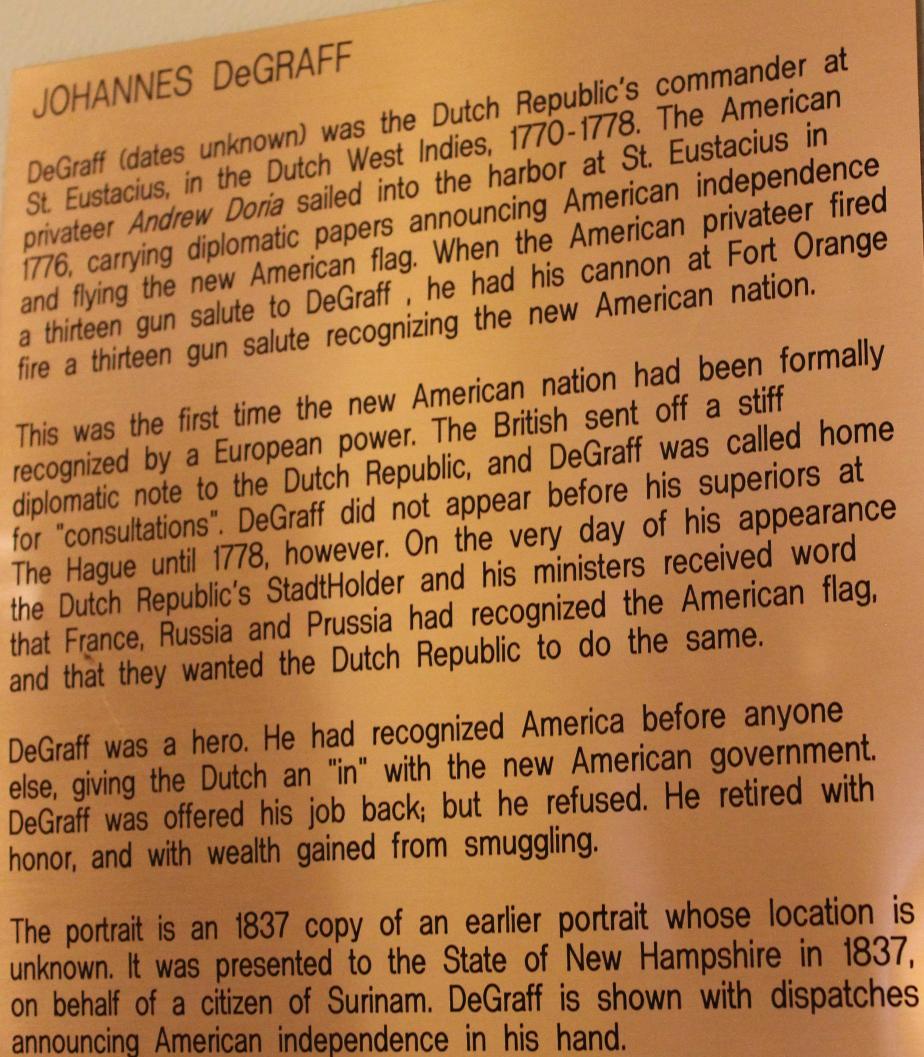
Henry Willard Denison - Japanese Adsvisor (Russo-Japanese Treaty)
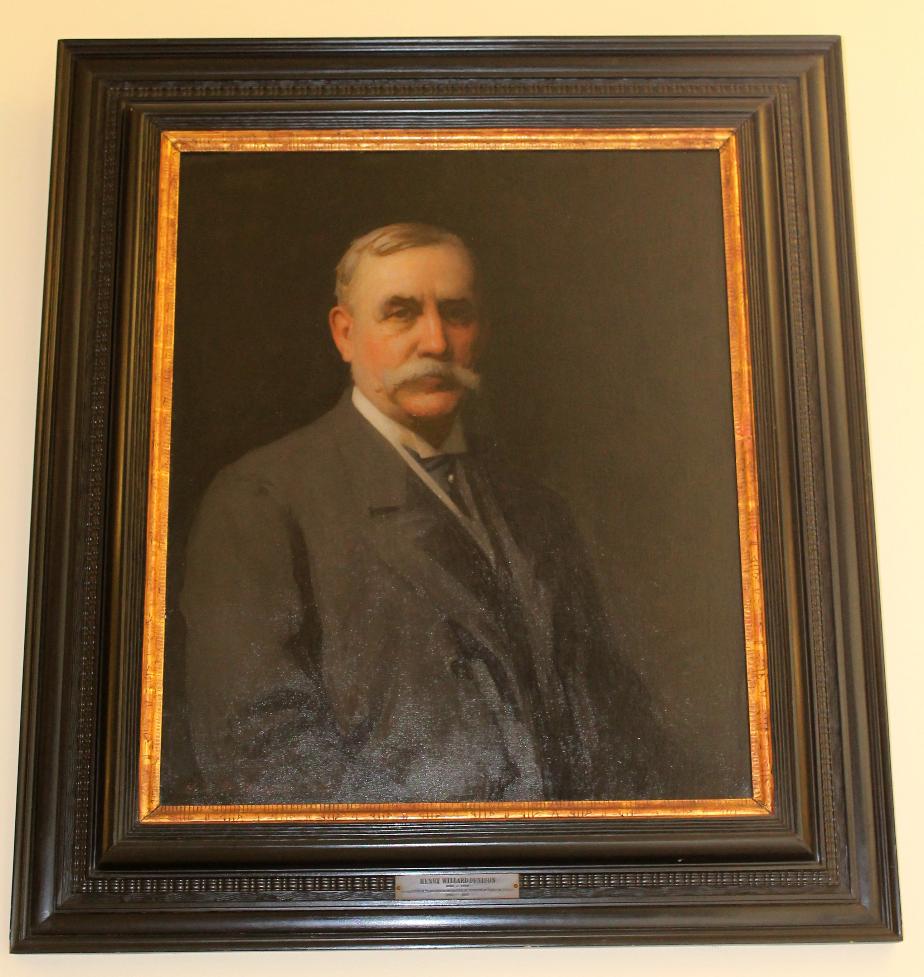
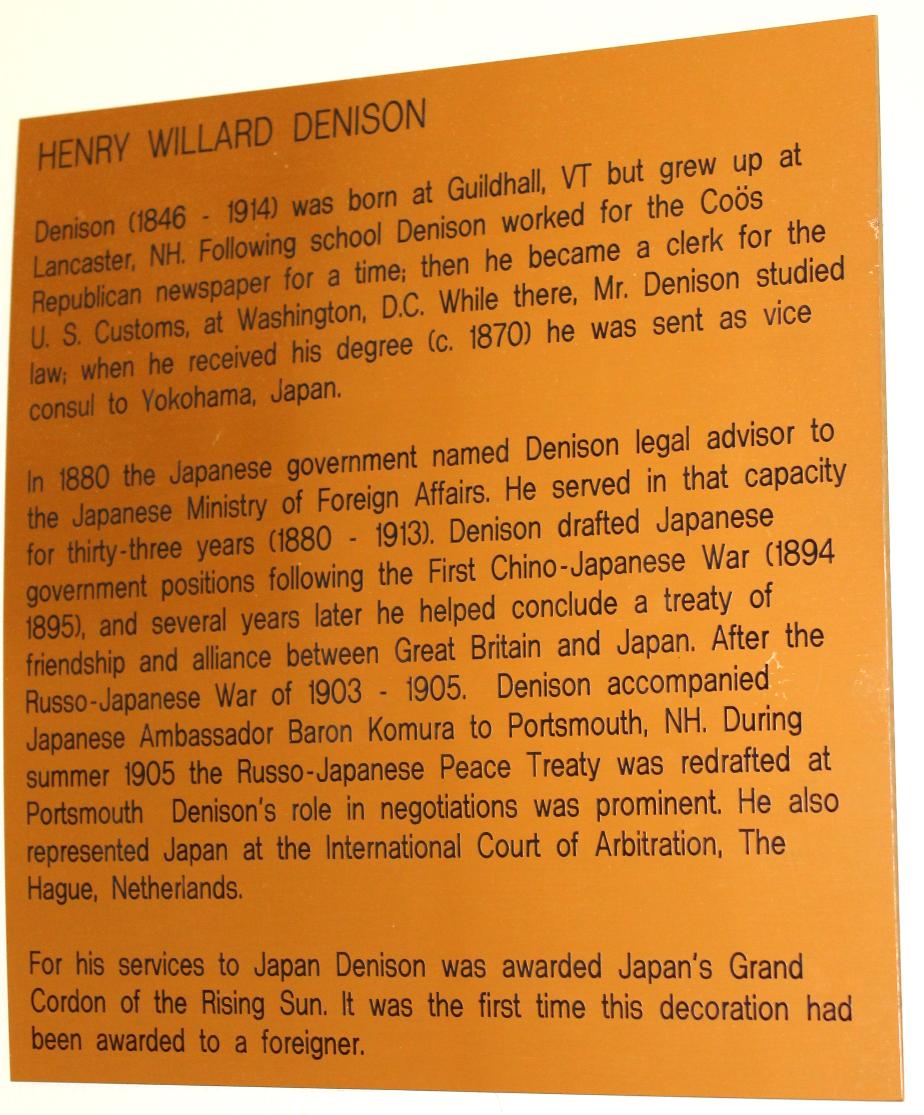
Governor Samuel Dinsmoor 1831 - 1833
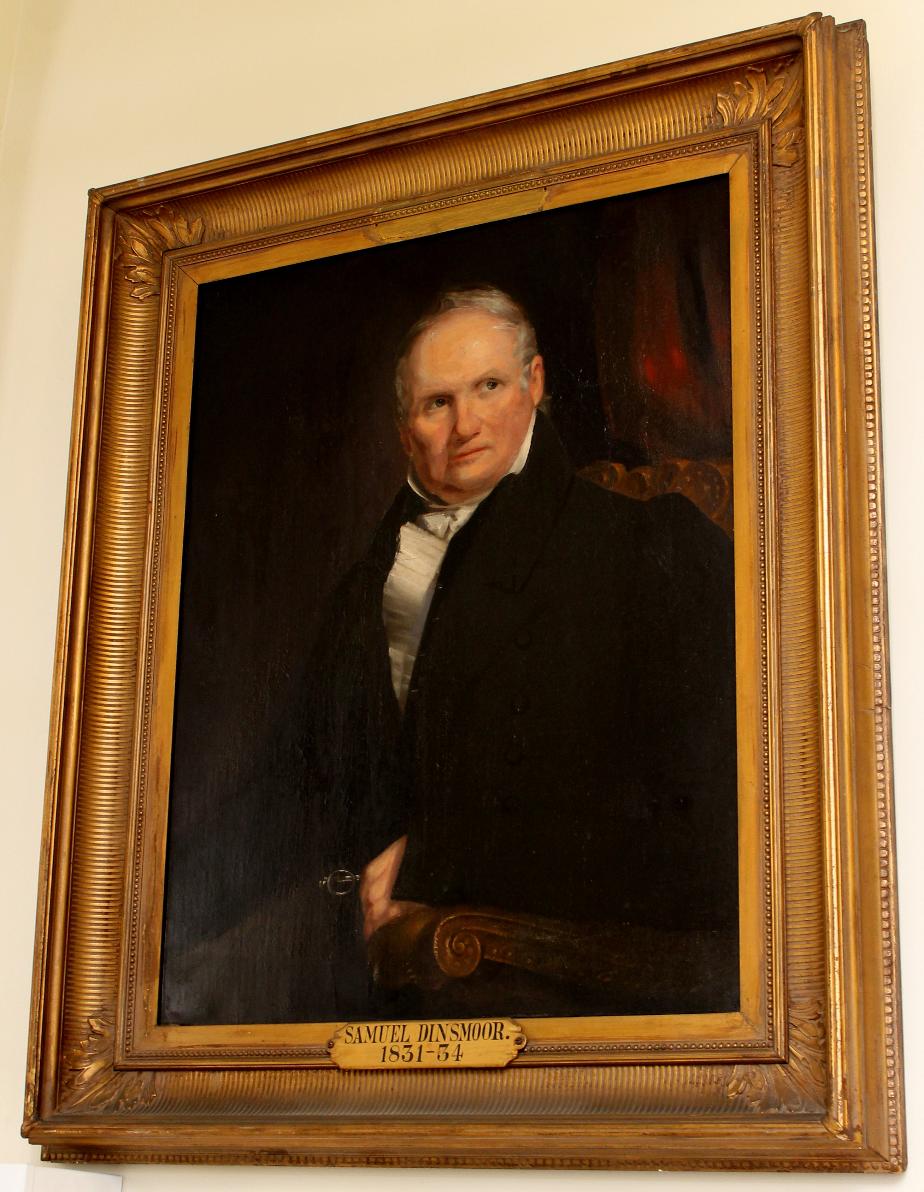
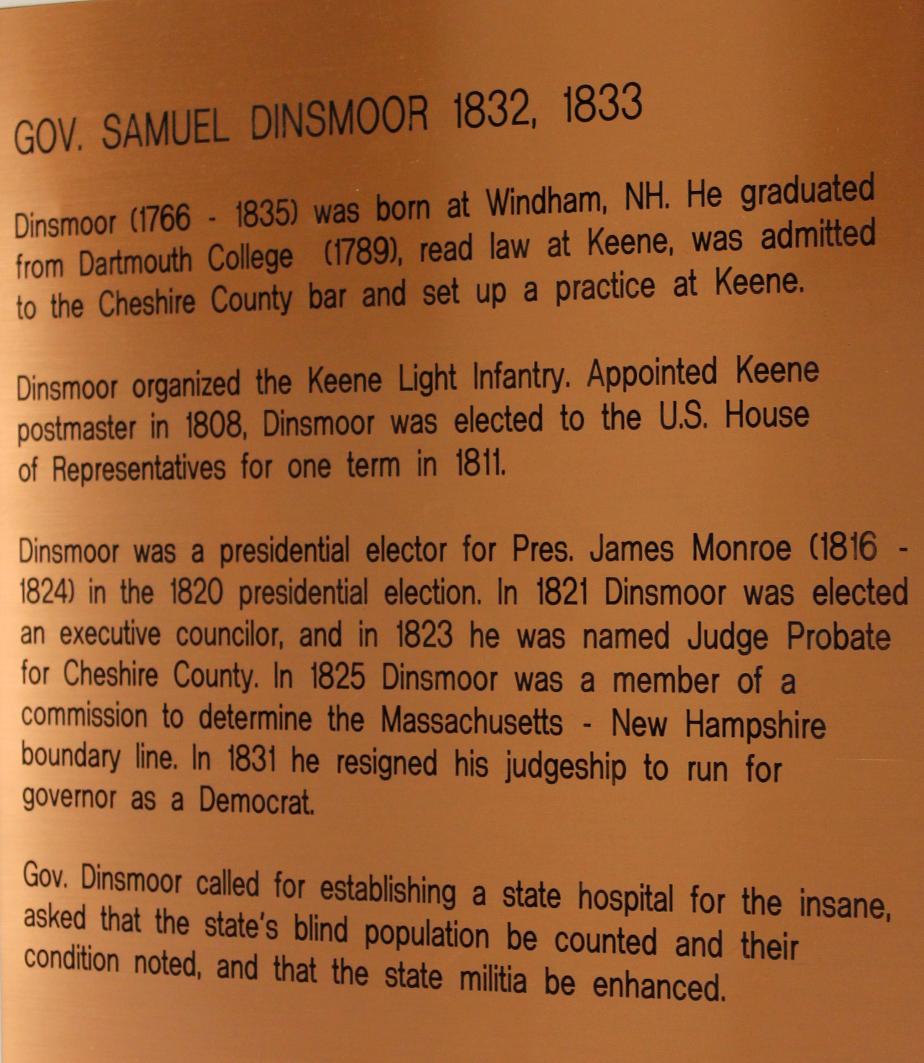
Governor Samuel Dinsmoor 1849 - 1852
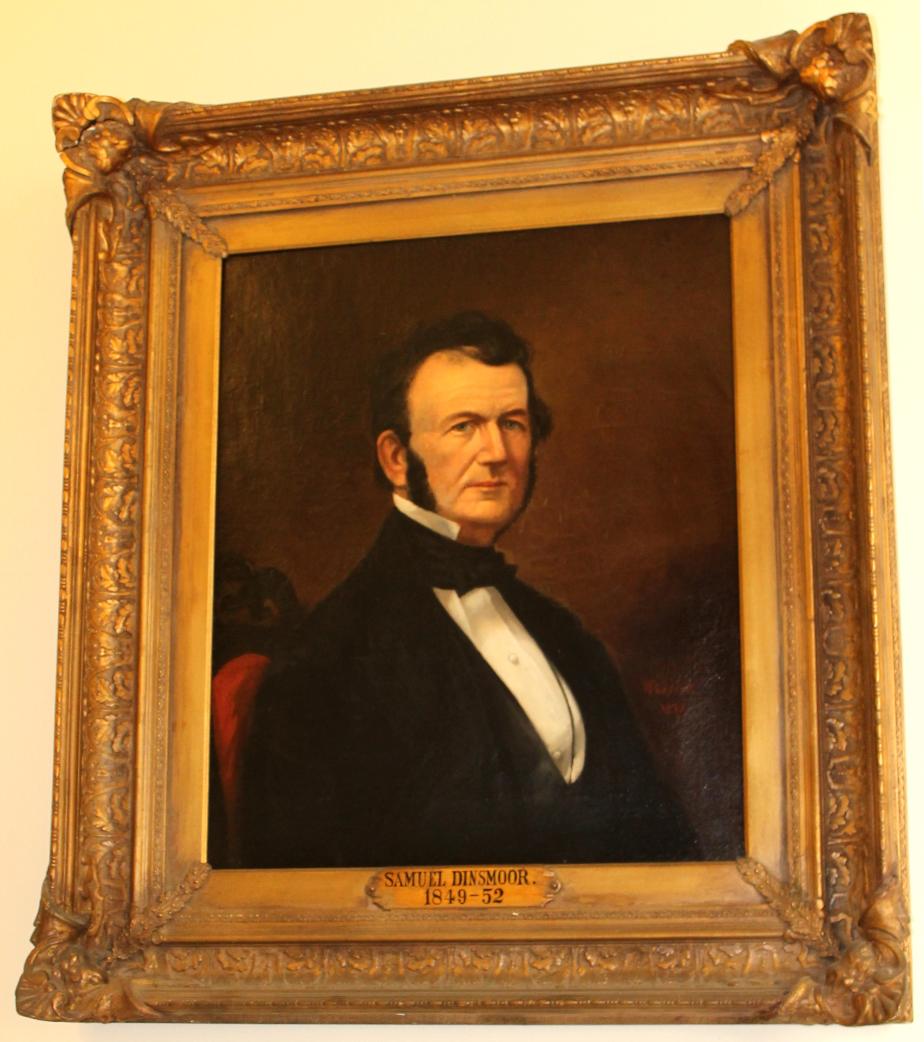
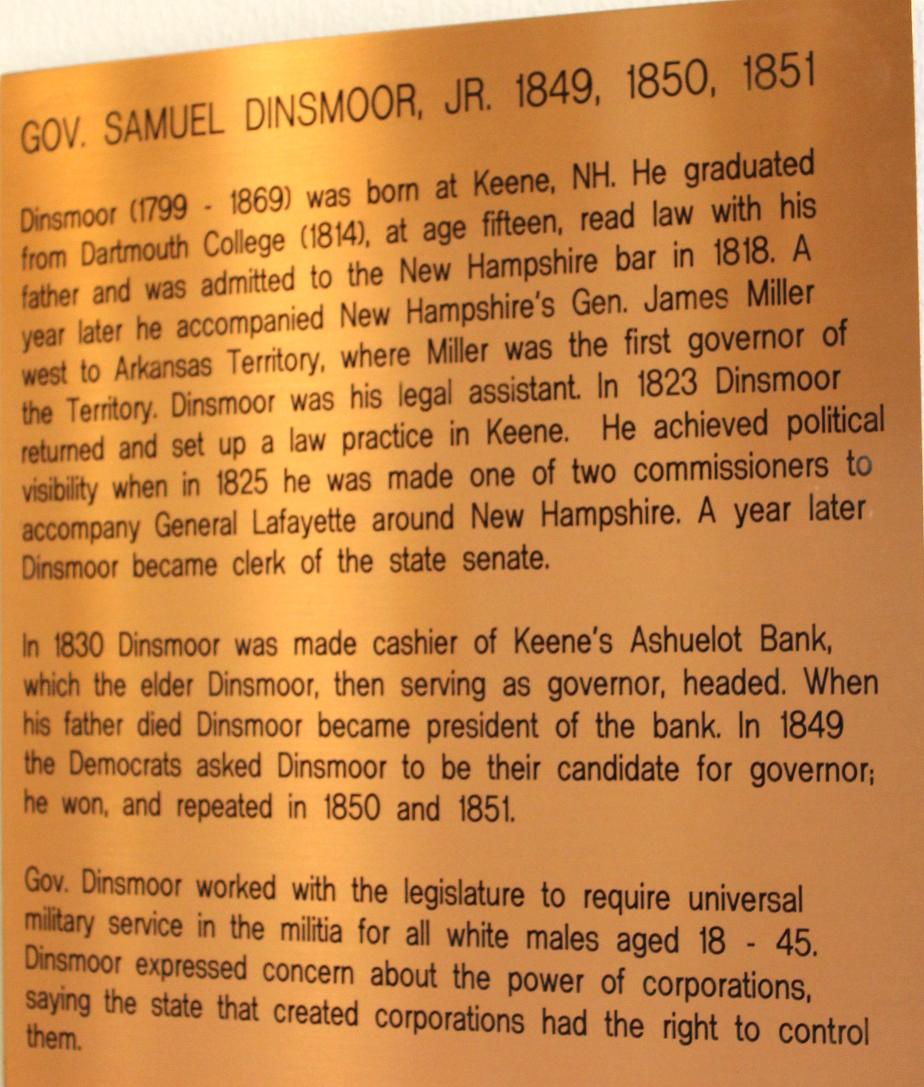
Gen. John Adams Dix (Boscawen) 1798-1879War of 1812
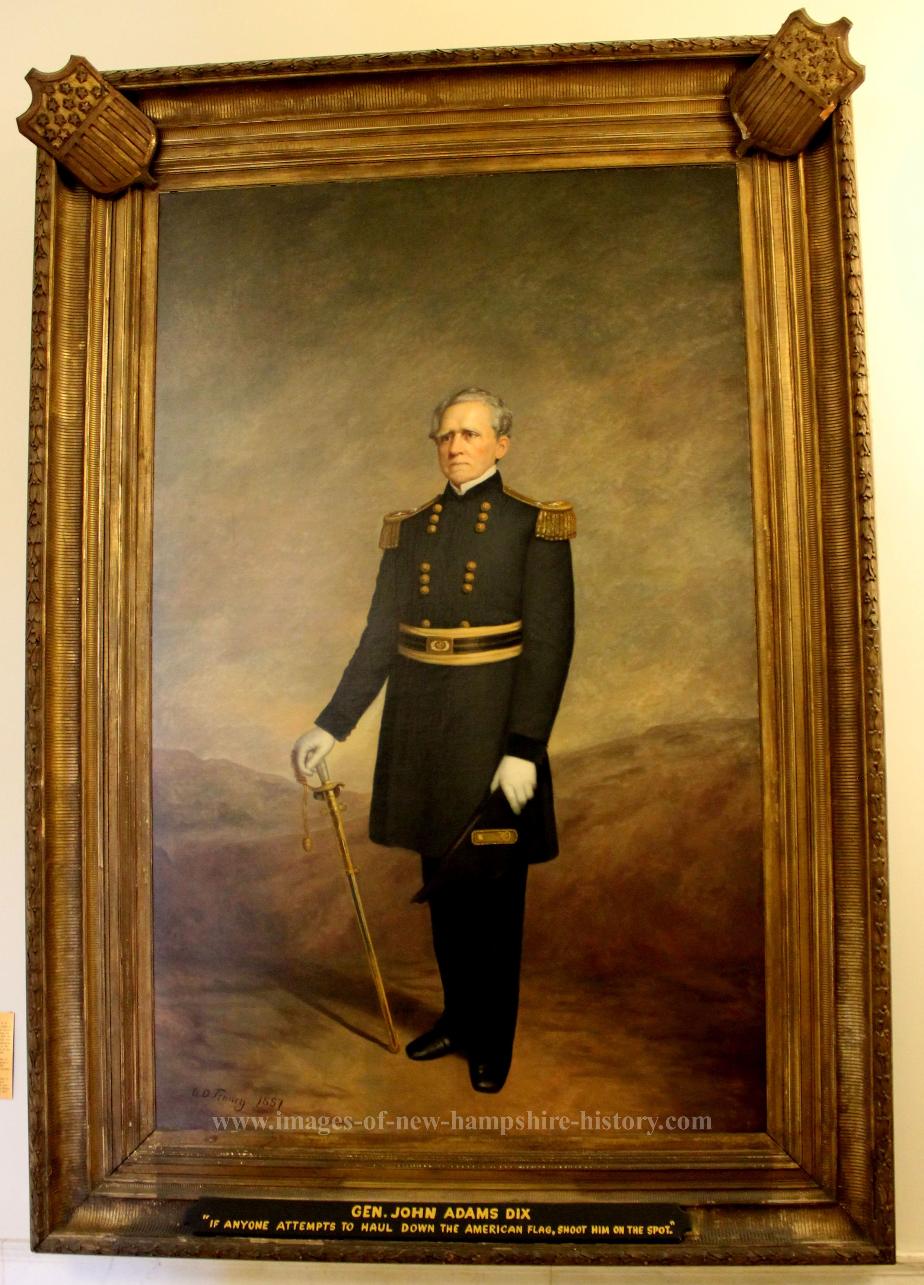
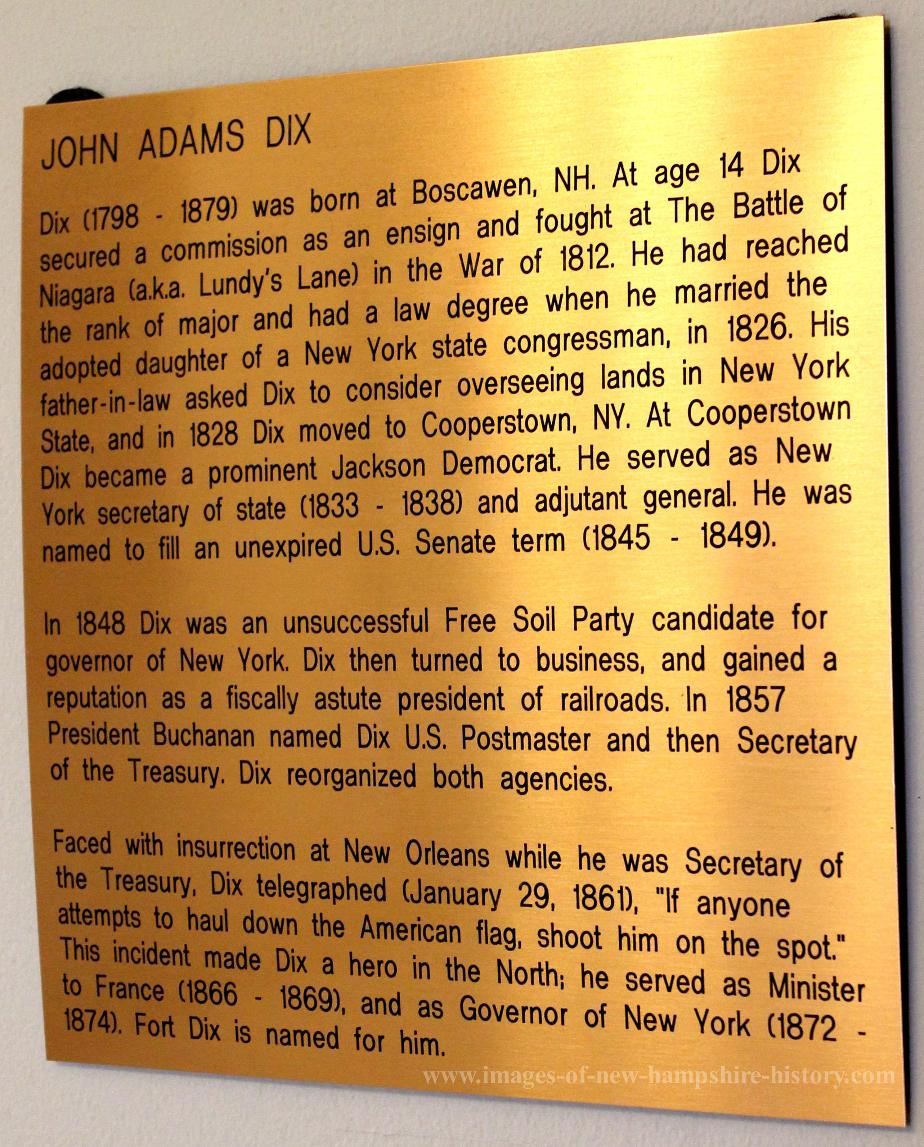
General Charles Doyen (Concord) 1859 - 1918 World War I
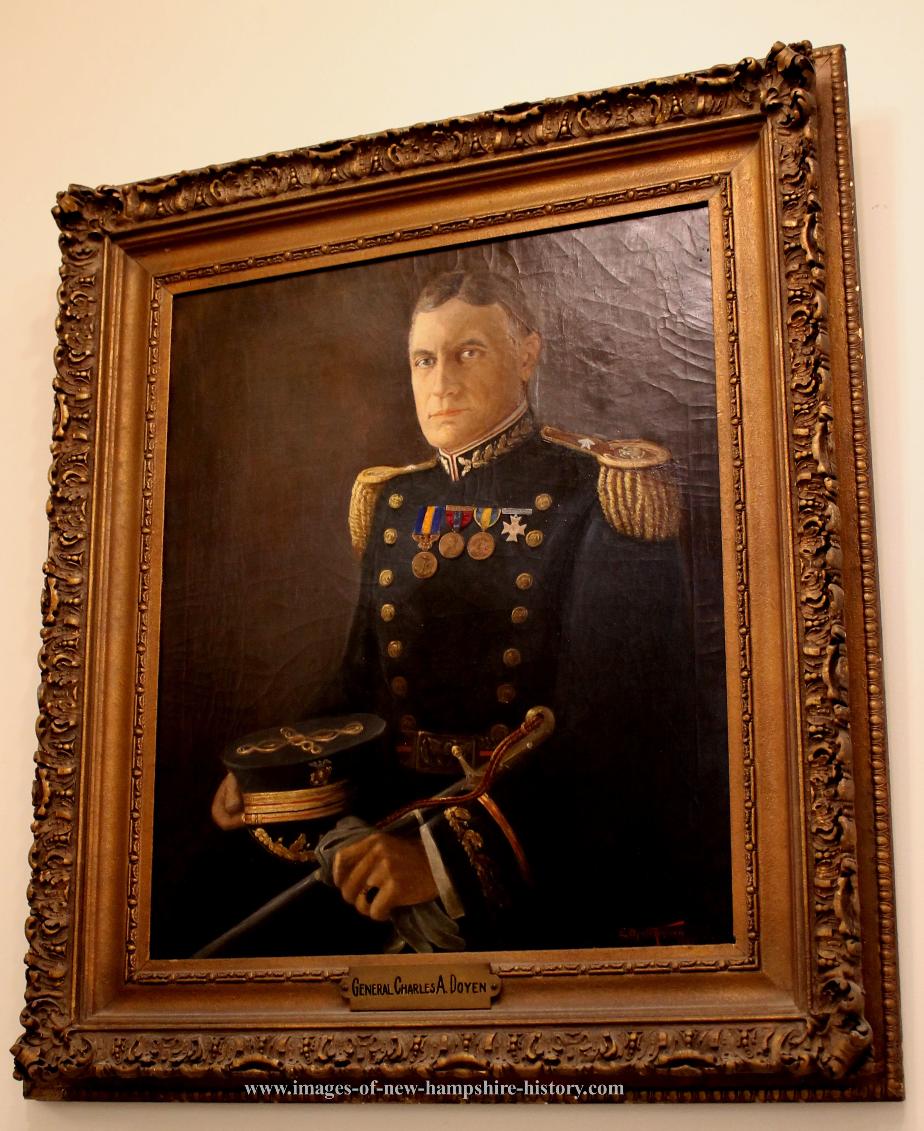
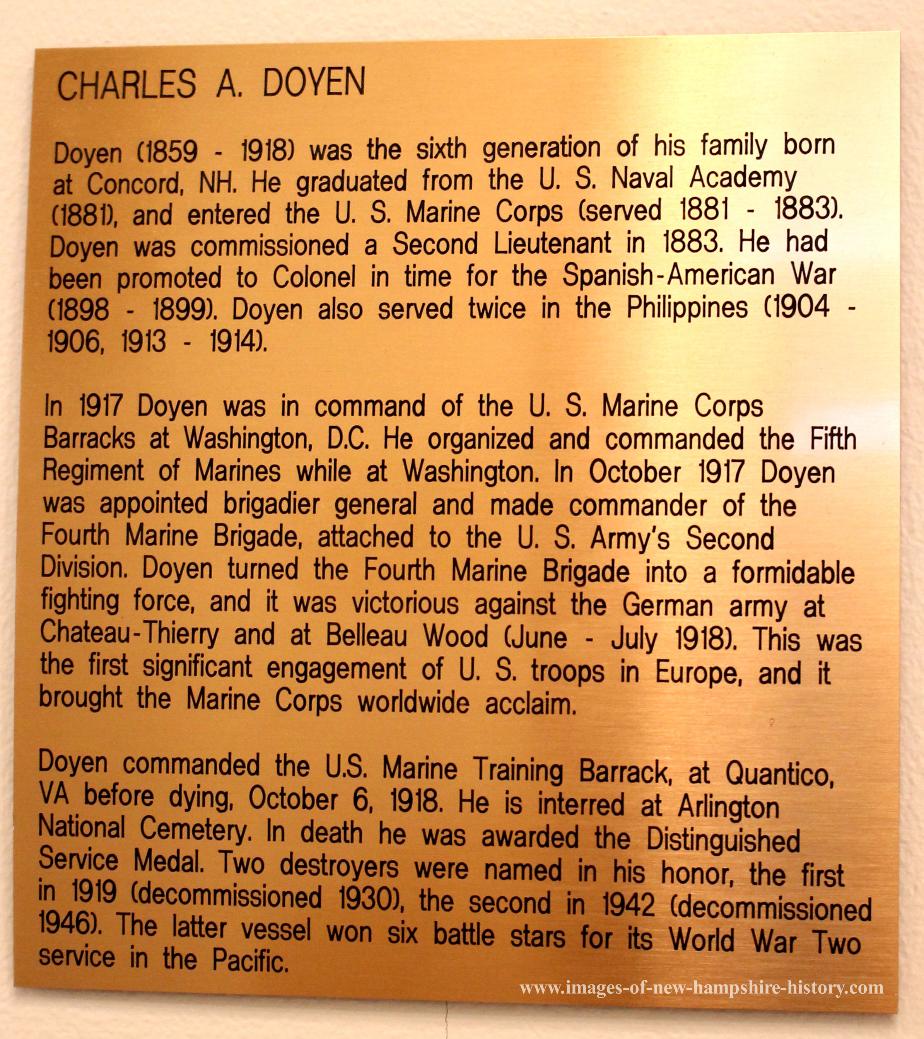
Governor Joseph Dudley (1686-1687, 1702-1716)
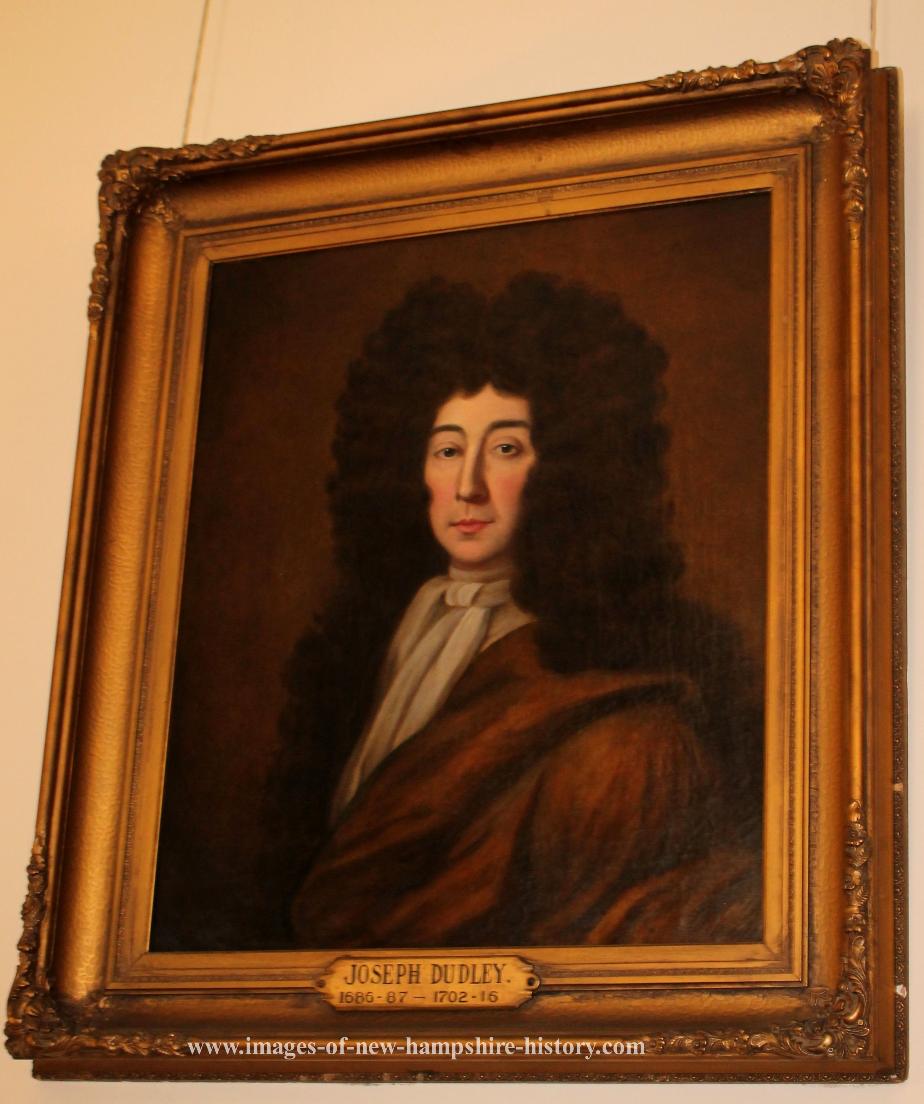
Governor Lane Dwindell 1955-1958
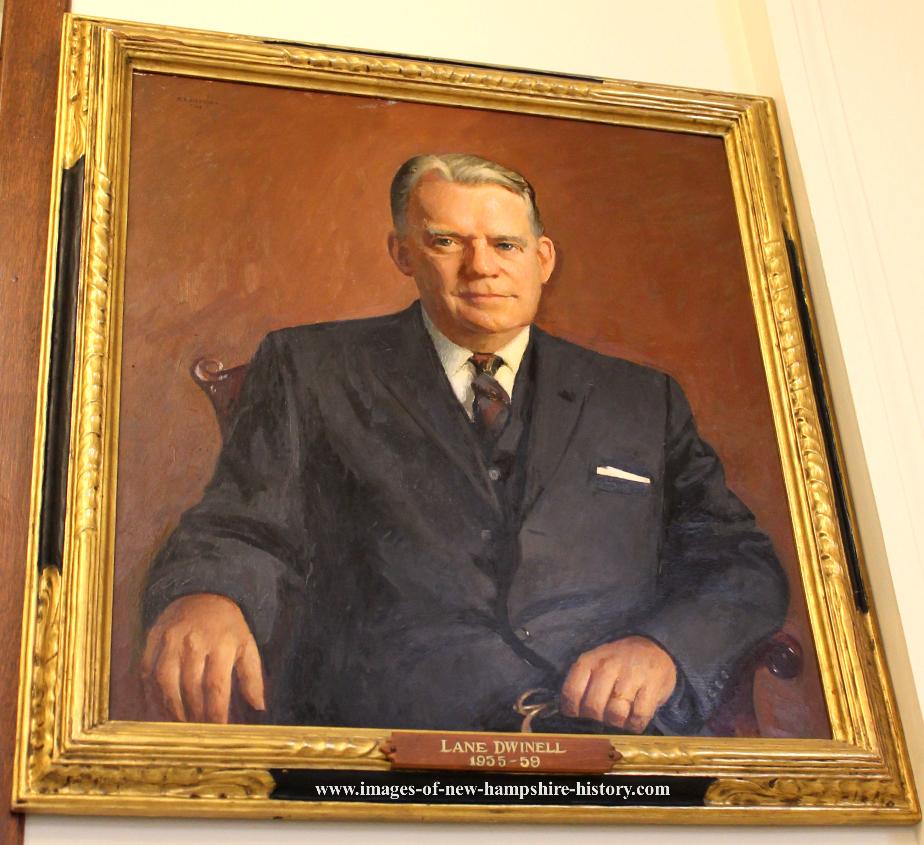

Lieutenant Jonathan Eastman - Veteran of the War of 1812
1781 - Born: Lieutenant Jonathan Eastman in Concord, New Hampshire
Veteran of the War OF 1812 where he joined the 21st Infantry, commanded by Colonel James Miller. Eastman fought in the 1814 Battles of Niagara and Erie, and served as a Lieutenant, Captain and Paymaster.
Returning to Concord, Eastman played an active role in the life of his community. He was for ten years County Treasurer (1830 - 1839). He was a director of the Sewall's Falls Lock and Canal Company (founded 1833), and a trustee of the New Hampshire Savings Bank (Founded 1830). He served on the Concord schools committee for many years, and was honored by his contemporaries for his public service.
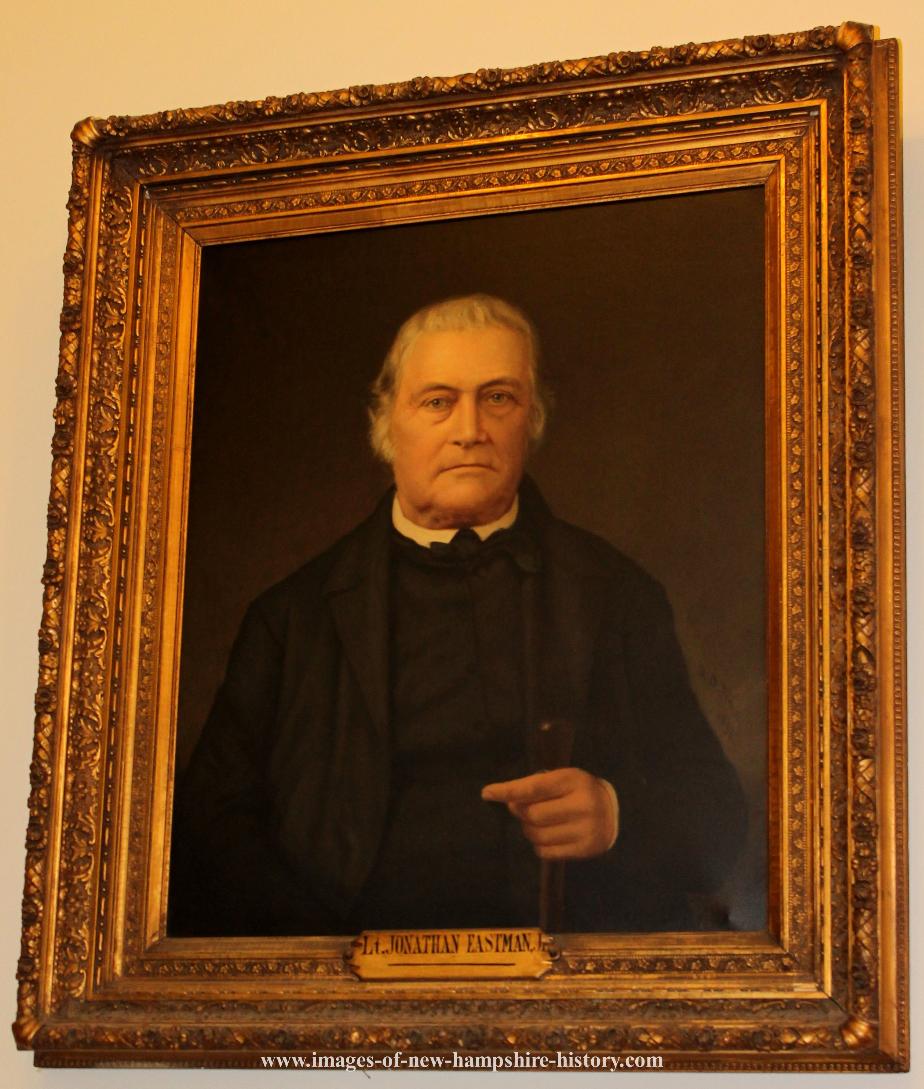
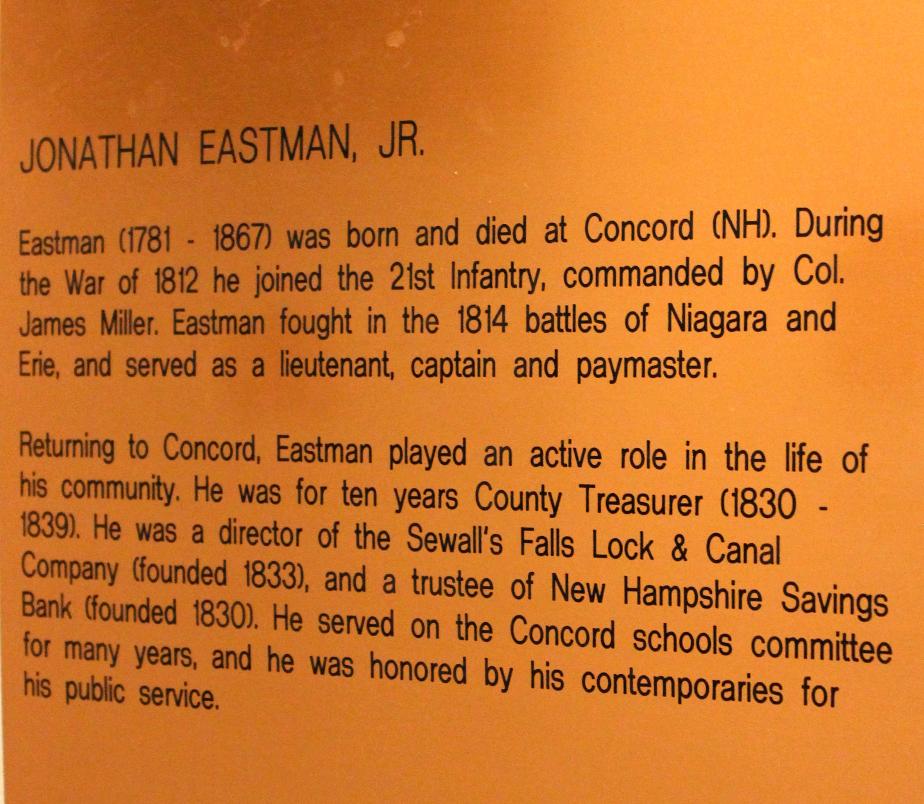
John Hill Eaton - NH State Rep 1863-1865 (Bradford NH)
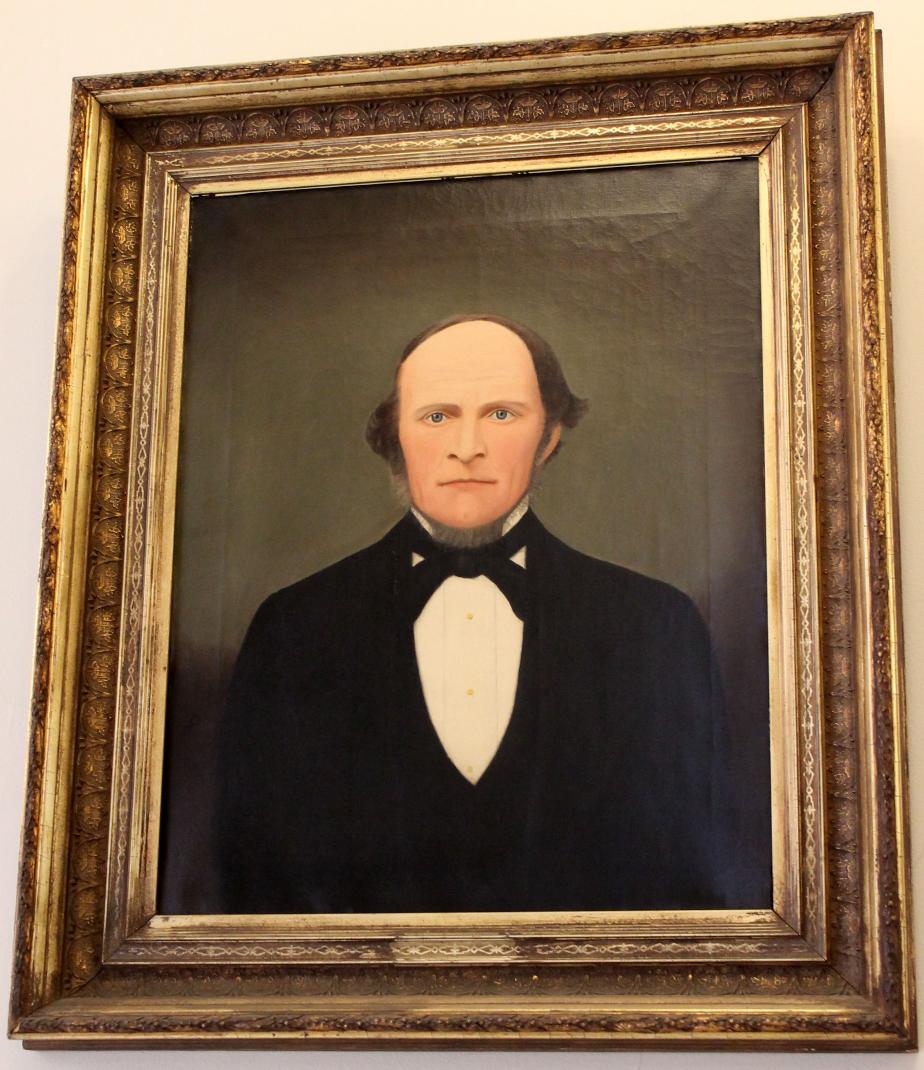
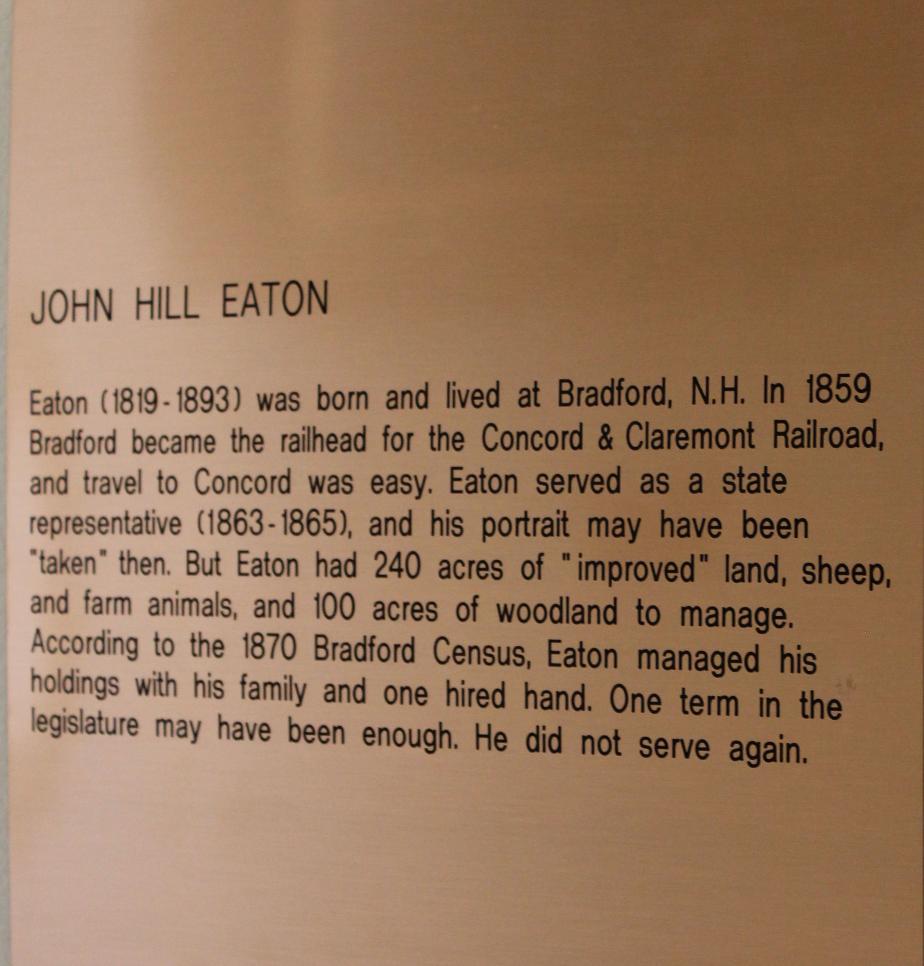
Mary Baker Eddy - Bow NH
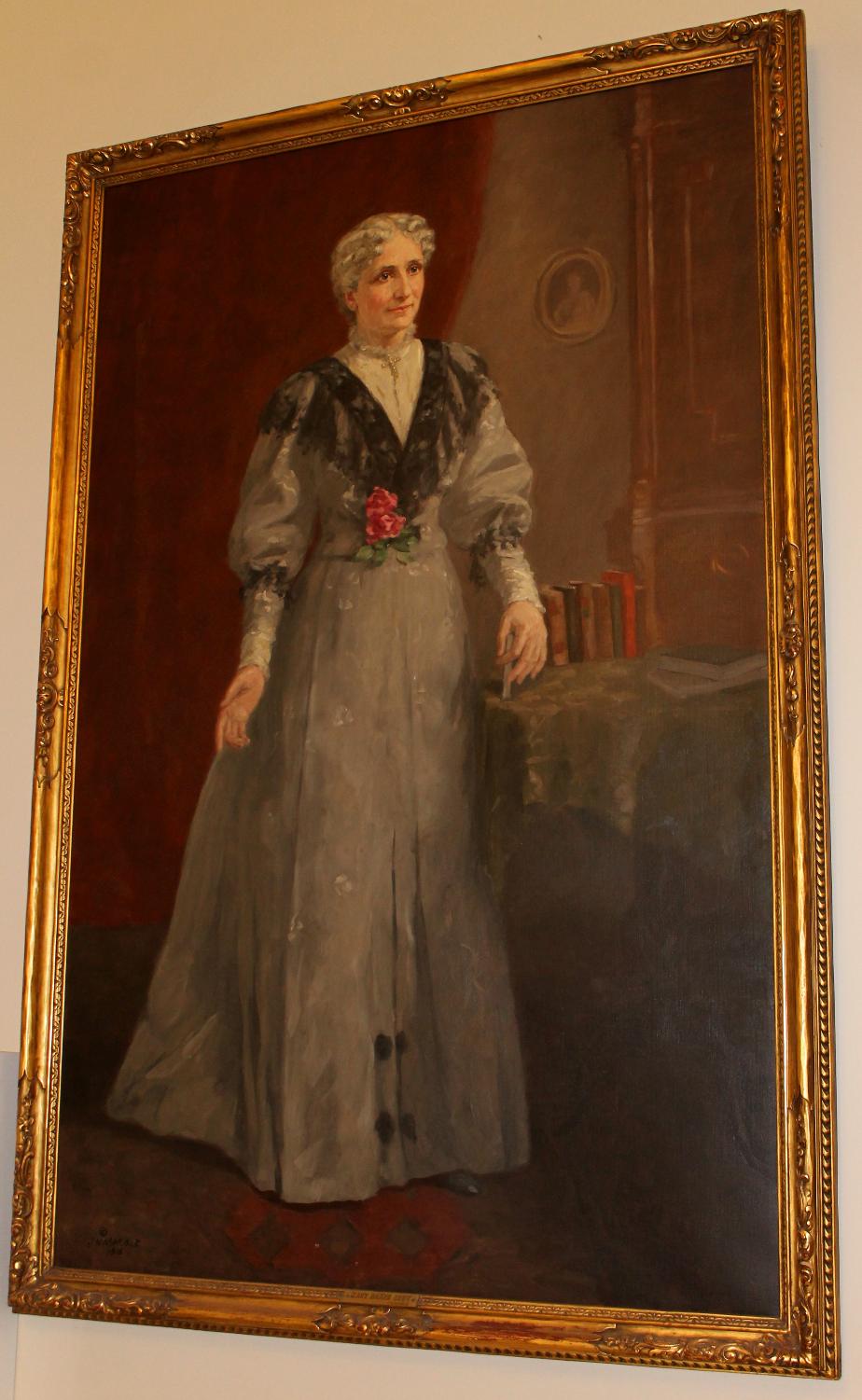

Bertram Ellis - NH State Senate President (1901)

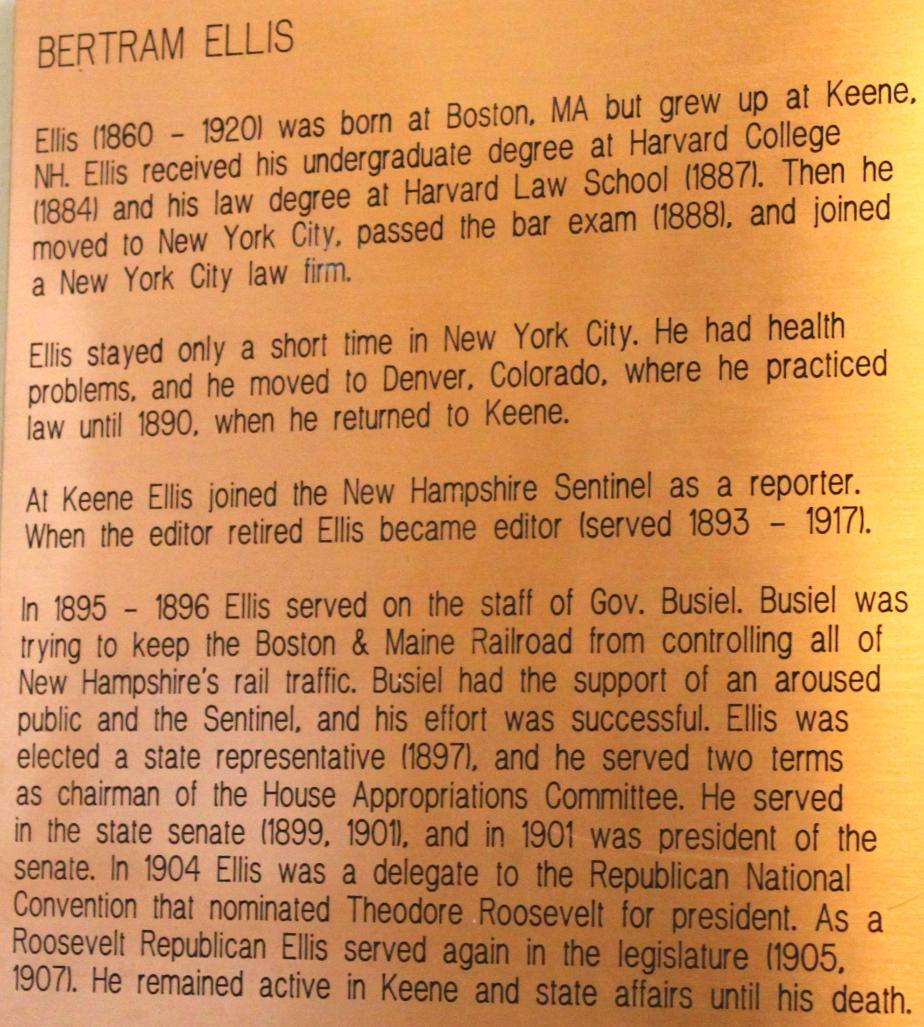
Reverend Israel Evans - Chaplain to Stark - Sullivan - Poor
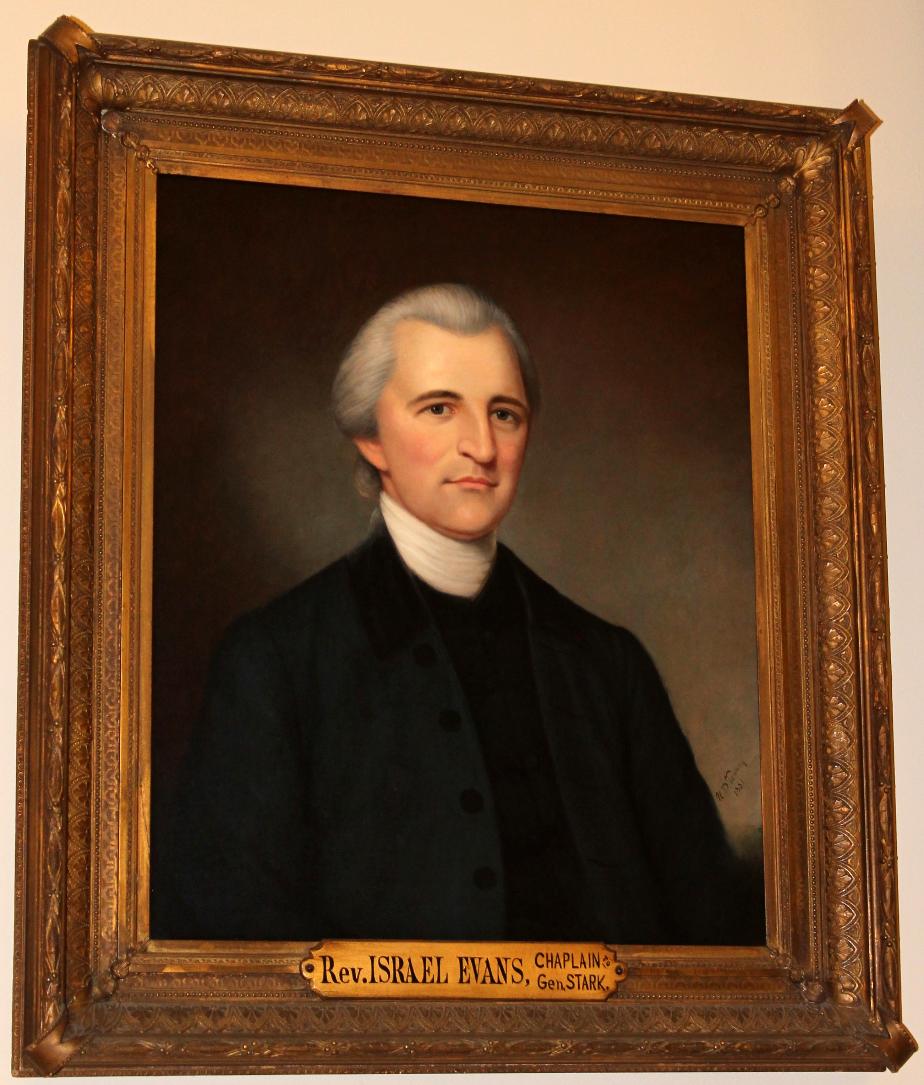
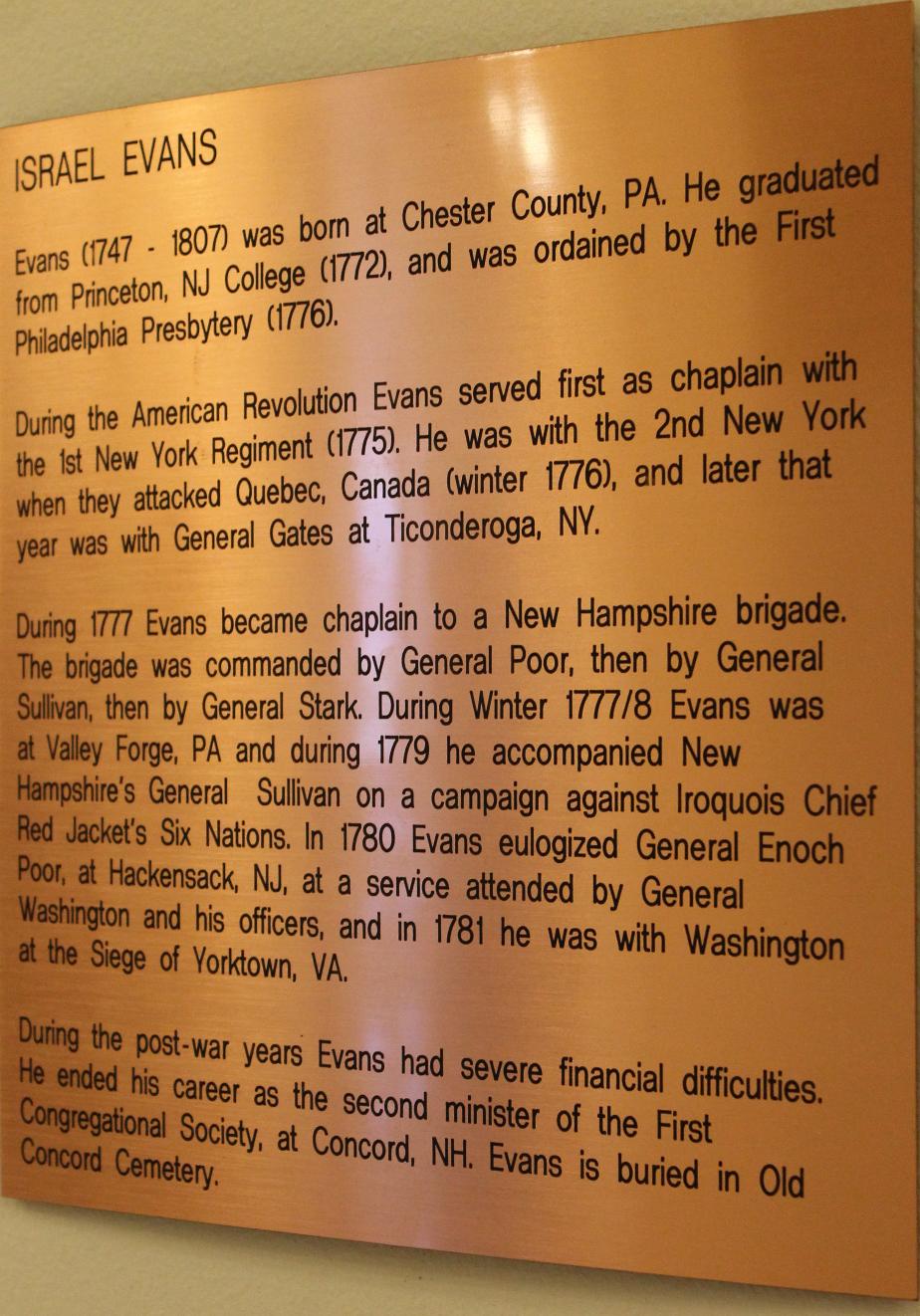
Evarts W. Farr - Civil War Officer and US Congressman
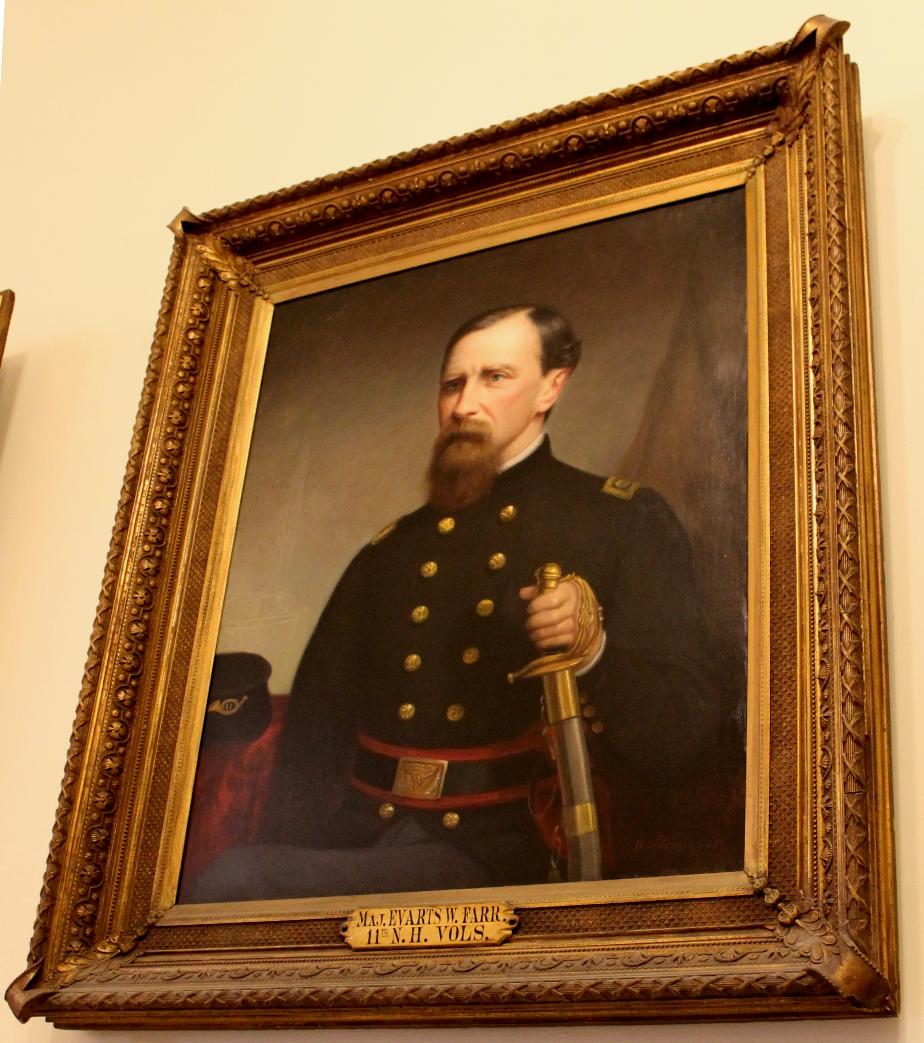
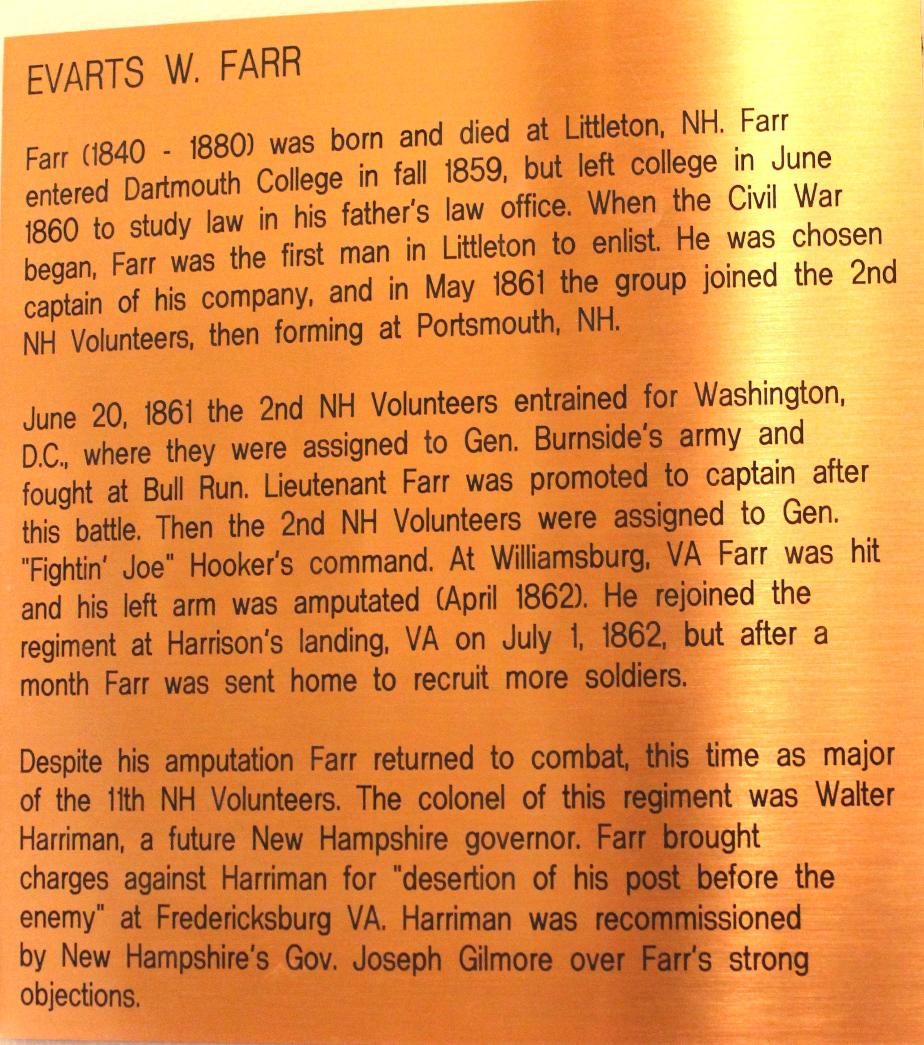
Evarts Worcester Farr, a Representative from New Hampshire; born in Littleton, Grafton County, N.H., October 10, 1840; attended the common schools and Dartmouth College, Hanover, N.H.; during the Civil War entered the Union Army as first lieutenant of Company G, Second Regiment, New Hampshire Volunteer Infantry and served as major in the Eleventh Regiment, New Hampshire Volunteer Infantry; assistant assessor of internal revenue 1865-1869; studied law; was admitted to the bar in 1867 and commenced practice in Littleton; assessor of internal revenue 1869-1873; solicitor for Grafton County 1873-1879; member of the executive council of New Hampshire in 1876; elected as a Republican to the Forty-sixth and Forty-seventh Congresses and served from March 4, 1879, until his death in Littleton, N.H., November 30, 1880; interment in Glenwood Cemetery
Timothy Farrar - Jugge of Court of Common Pleas 1824
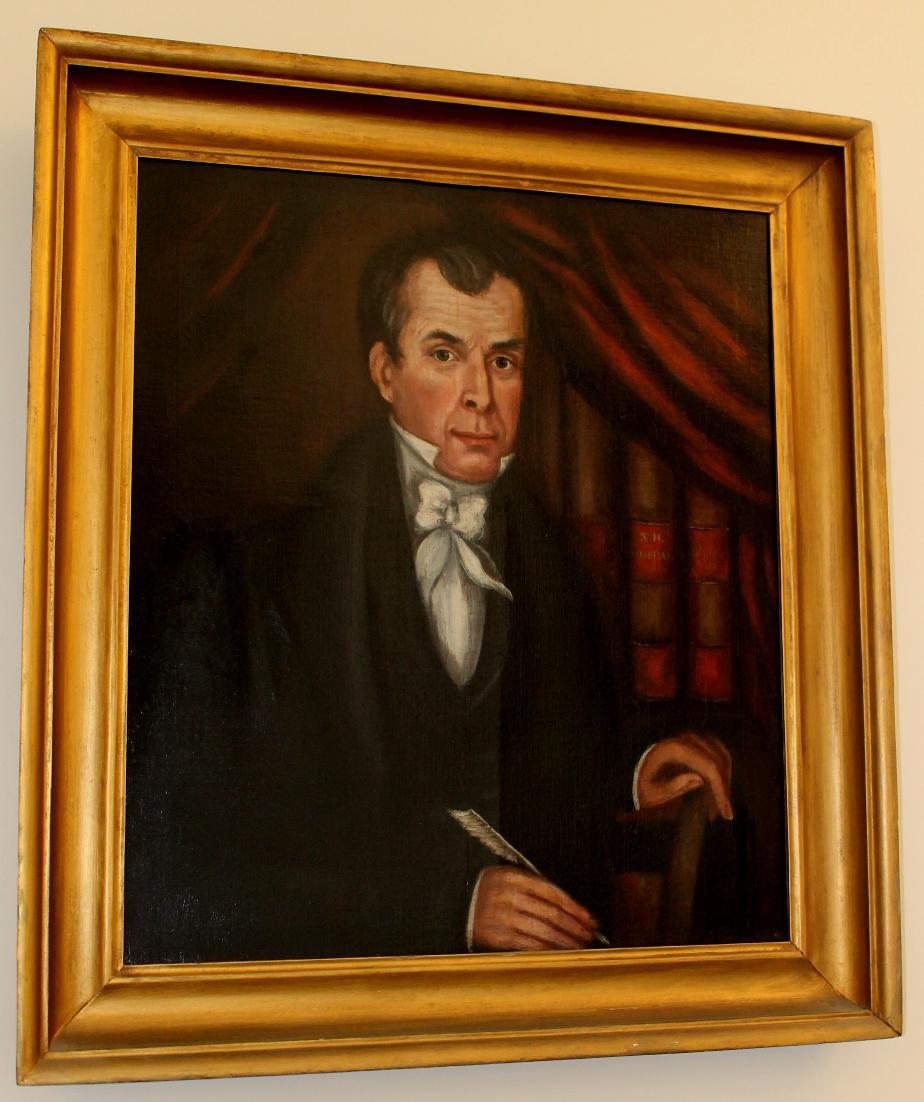
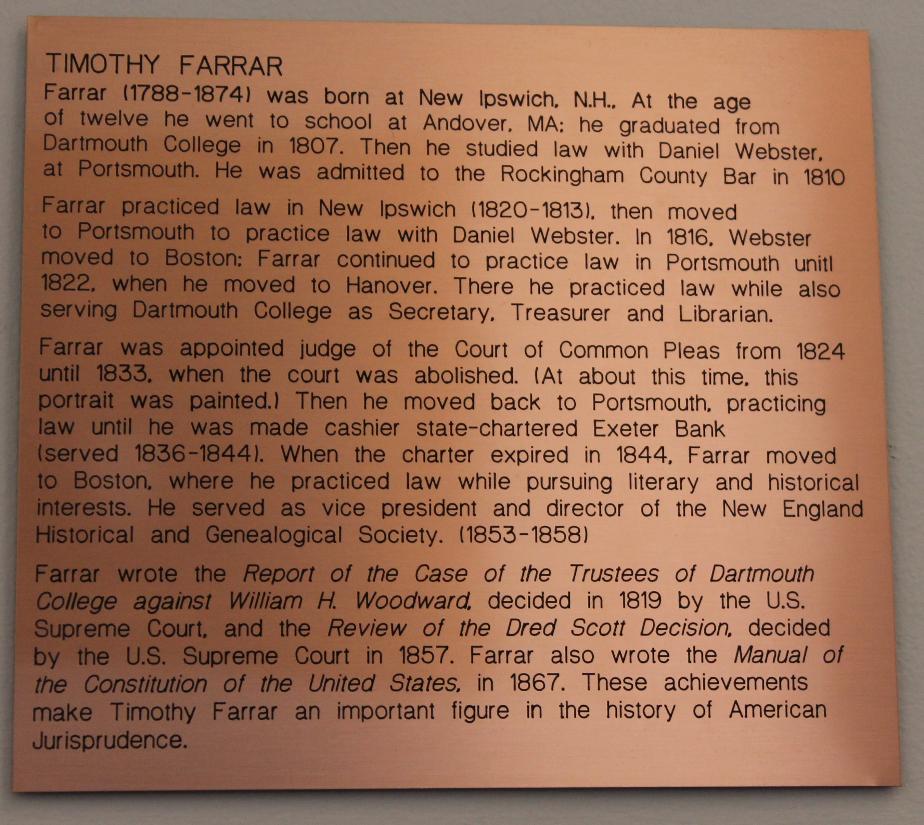
Governor Samuel D Felker 1914-1915


Governor Charles M. Floyd 1908-1909
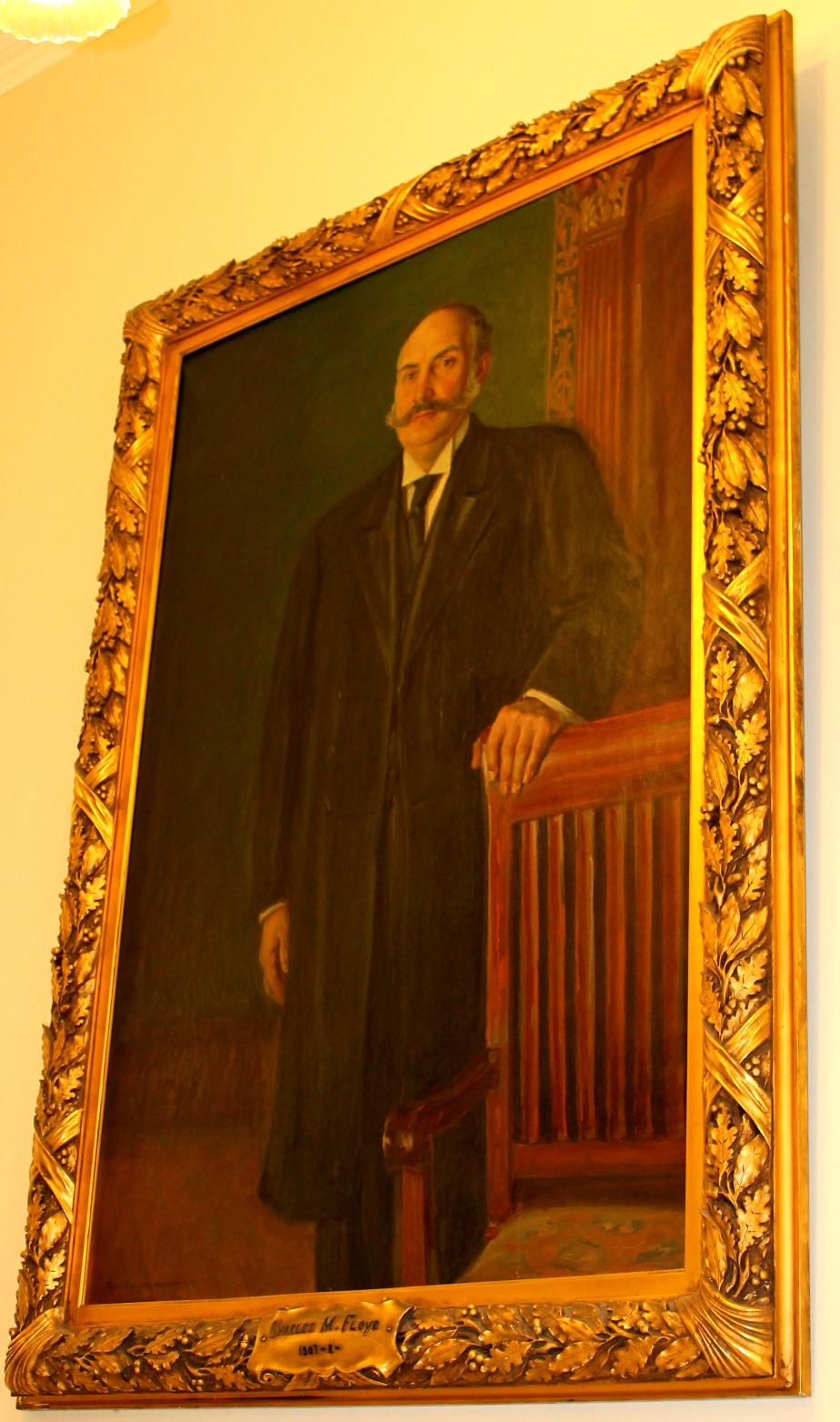
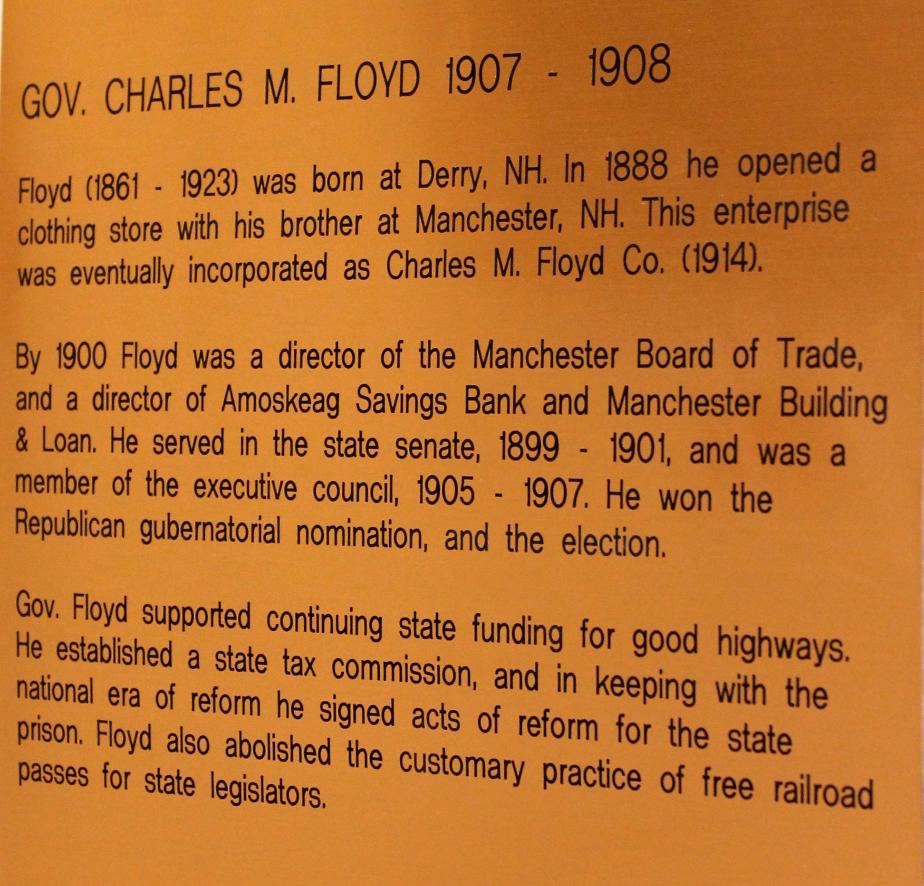
US Senator George G. Fogg
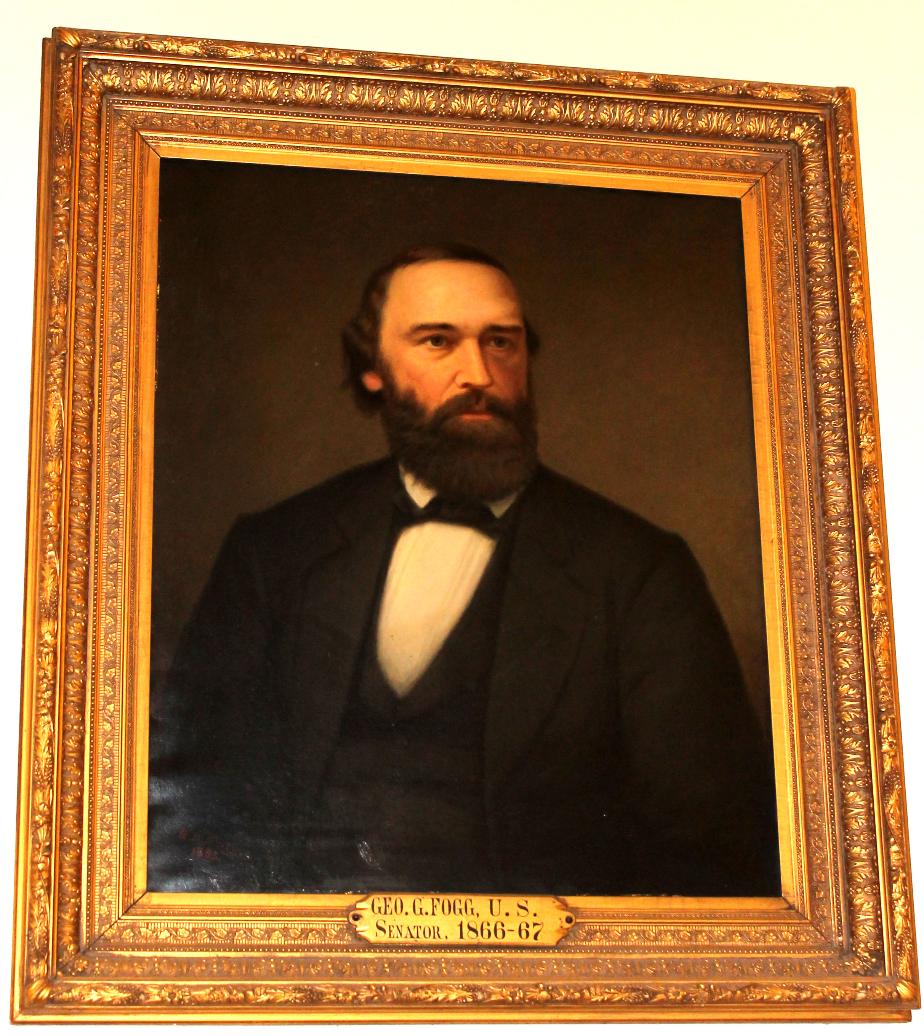
George Gilman Fogg, a Senator from New Hampshire; born in Meredith Center, Belknap County, N.H., May 26, 1813; pursued classical studies and graduated from Dartmouth College, Hanover, N.H., in 1839; studied law at Meredith and at the Harvard Law School; admitted to the bar in 1842 and commenced practice at Gilmanton Iron Works, N.H.; moved to Concord in 1846; member, State house of representatives 1846; secretary of State of New Hampshire 1846; newspaper publisher 1847-1861; reporter of the State supreme court 1856-1860; secretary of the Republican National Executive Committee in 1860; appointed by President Abraham Lincoln as Minister Resident to Switzerland 1861-1865; appointed as a Republican to the United States Senate to fill the vacancy caused by the resignation of Daniel Clark and served from August 31, 1866, to March 3, 1867; was not a candidate for election to the Senate in 1866; editor of the Concord Daily Monitor; died in Concord, N.H., October 5, 1881; interment in Blossom Hill Cemetery.
Herman Foster - NH Senate President (1861)
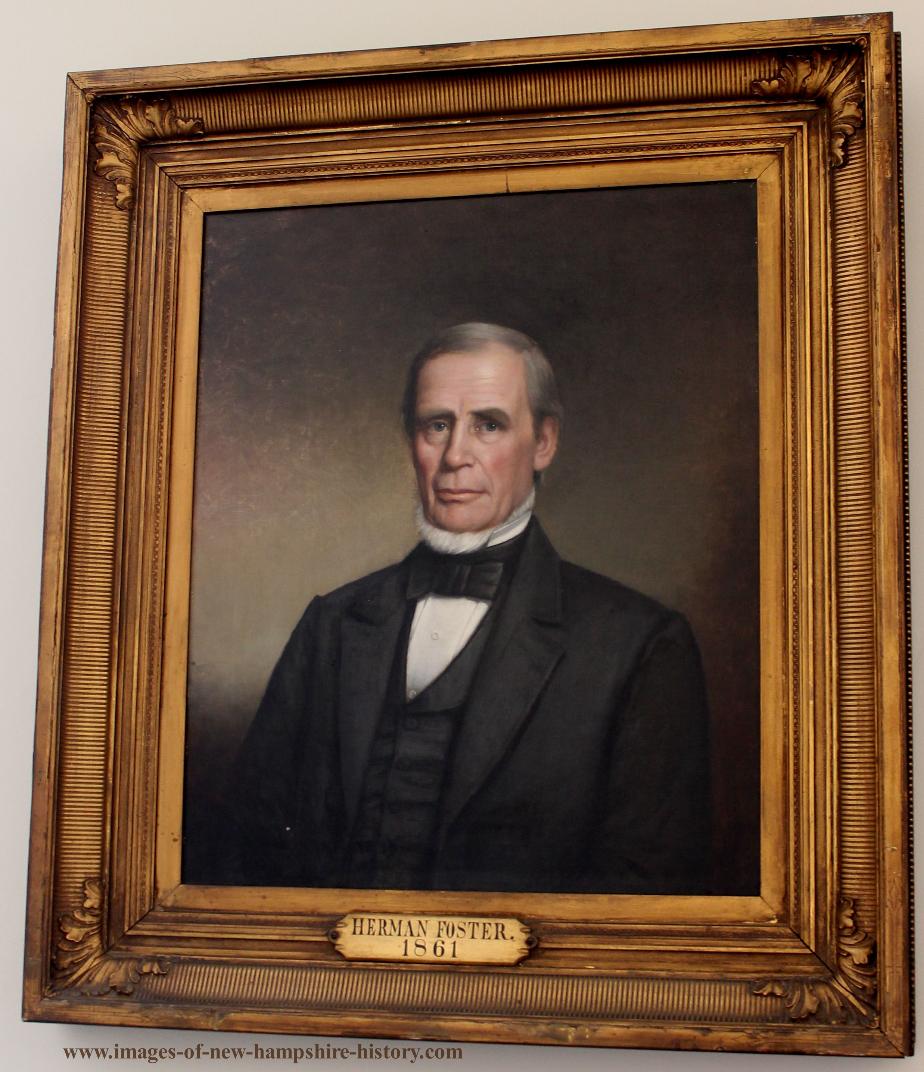
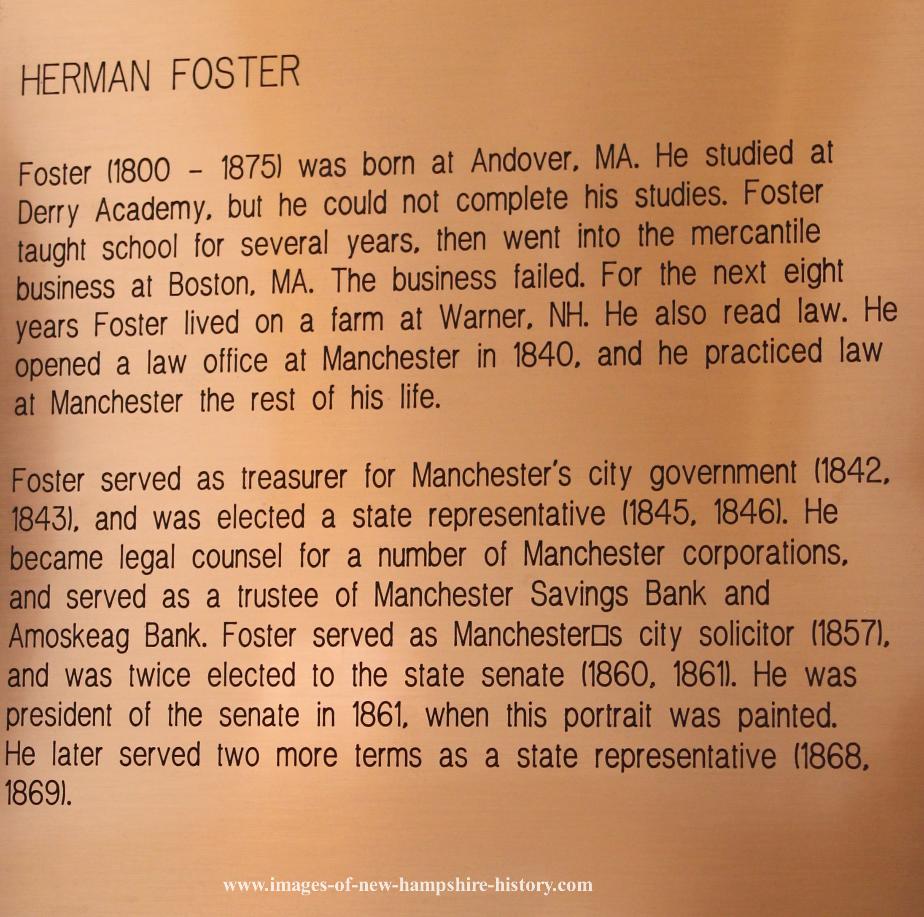
General John G. Foster (Whitefield) 1873 - 1874 Civil War
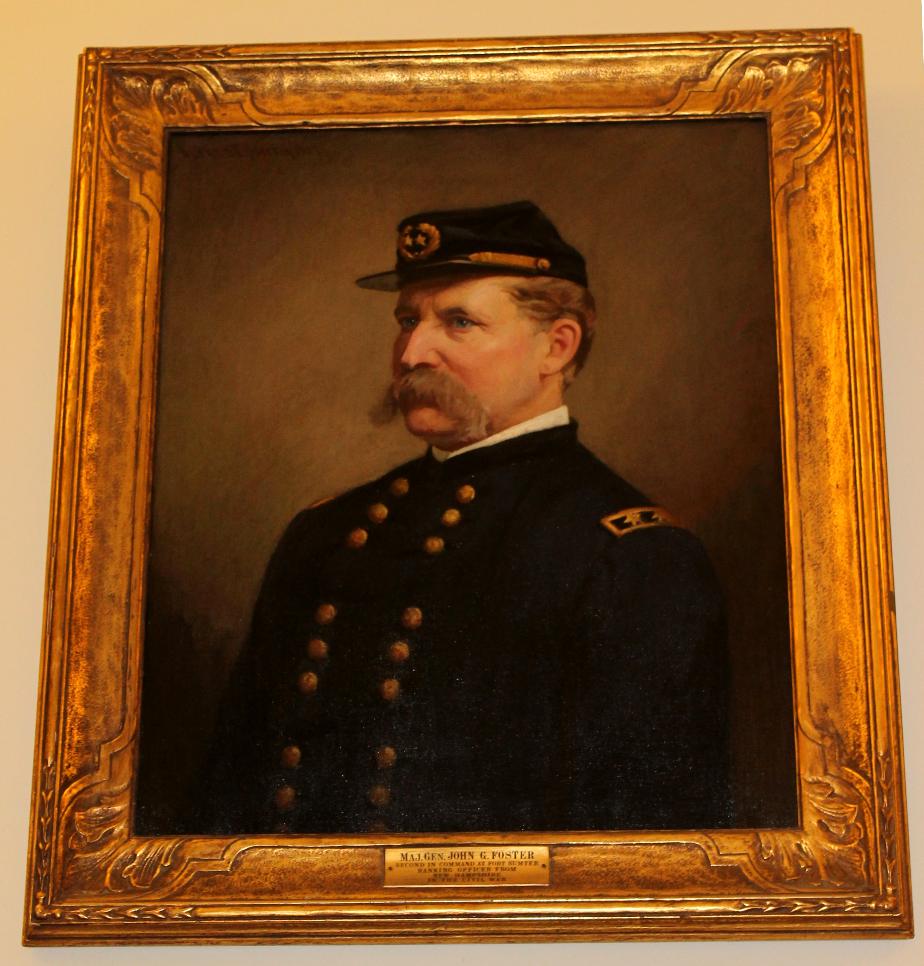
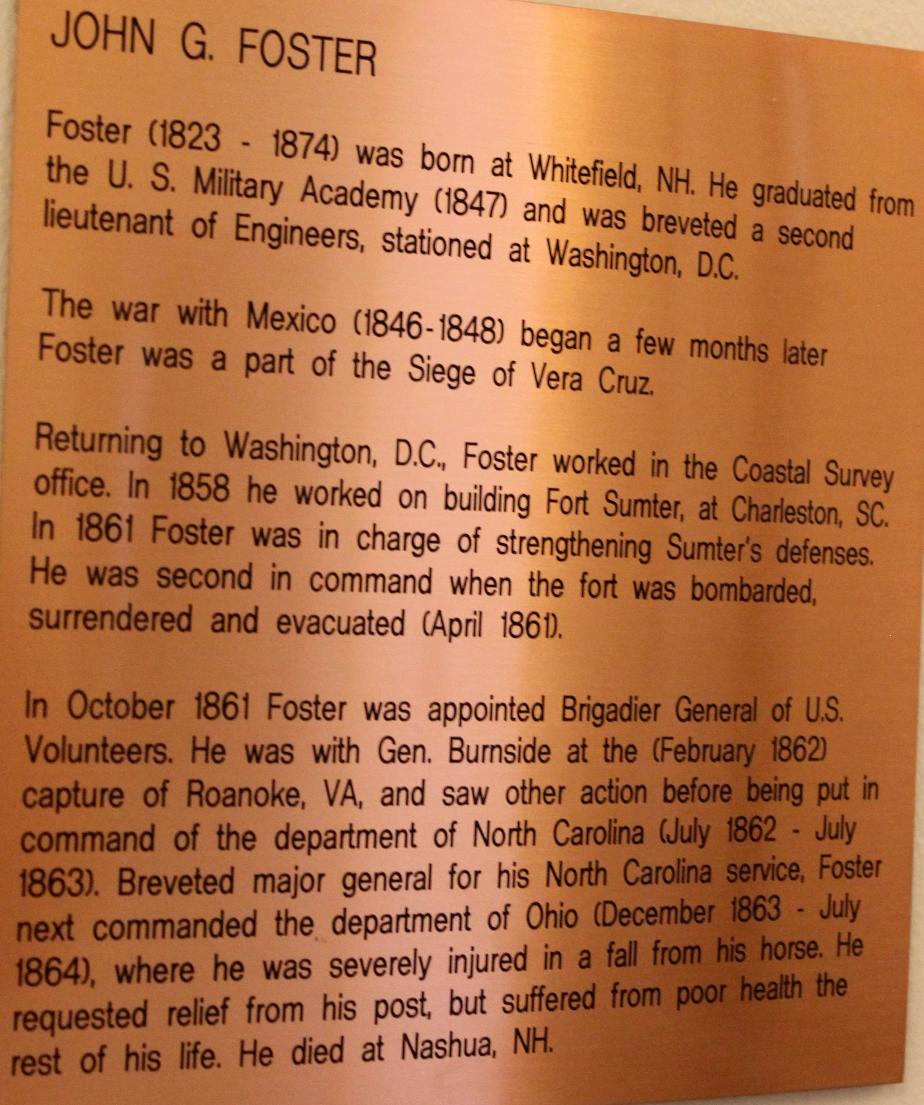
Hugh Gallen - NH Governor 1979 - 1982
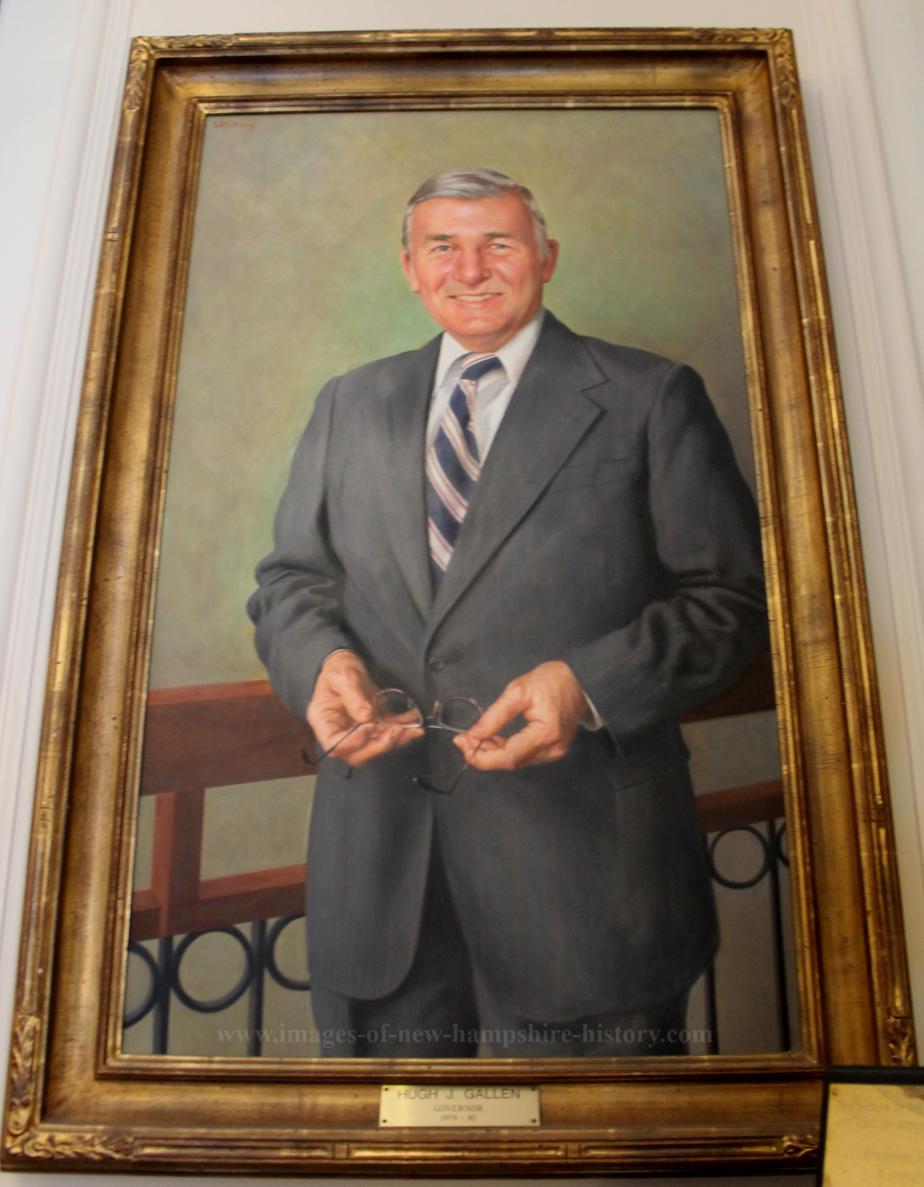
Hugh J. Gallen was born July 30, 1924, in Portland, Oregon. When he was six, Gallen's family moved to Medford, Massachusetts, where he attended local schools and graduated from Medford High School. After graduation, Gallen had a successful tryout with the Washington Senators baseball team and played for one of their minor league teams for a year, but an arm injury ended his career. In 1948 he began work as an automobile salesman in Littleton, New Hampshire. Gallen stayed in Littleton and in 1964 he became full owner of an automobile dealership, Hugh Gallen, Inc. From 1962 to 1965, he served on the Littleton, New Hampshire, Planning Board. In 1967, he was a member of the Small Business Administration's New Hampshire Advisory Council and the National Advisory Council. He served as director and char of the New Hampshire-Vermont Development Council from 1969 to 1972, and from 1967 to 1970 as the director of White Mountain Community Services, a nonprofit agency established to provide mental health care. From 1971 to 1972, Gallen was Democratic state chairman, and he was a delegate to the 1972 Democratic National Convention. In 1973 Gallen became the first Democrat to serve as a state representative for Littleton. He entered the 1978 Democratic Party primary for governor, won, and then won the general election because of a split in the Republican Party. Former governor Wesley Powell had declared as an Independent after losing the Republican primary to the incumbent governor, Meldrim Thomson; the split allowed Gallen to become governor. In 1979 Governor Gallen called out the National Guard to protect Seabrook Power against anti-nuclear demonstrators. Gallen's strong action won him reelection against Thomson in 1980, but a year later 9,200 state employees struck for higher wages. In negotiations Gallen agreed to a 9 percent raise; the Republican-controlled legislature would only agree to 6 percent. Gallen vetoed the state budget prepared by the Republicans, but he would not support a state sales tax or income tax to help pay for the contract he had negotiated with state workers. He had no way to pay for the state employees' contract. In 1982 Gallen ran unopposed in the Democratic primary, while John Sununu won the Republican primary for governor. During the campaign Gallen refused to pledge that he would not introduce a new sales tax or income tax to pay for the employees' contract; this cost Gallen the election. Shortly after the election Gallen contracted a rare blood infection and he died of this December 29, 1982, eight days before the end of his term. Vesta Roy, president of the New Hampshire Senate, served as acting governor until John Sununu could be sworn in as the state's new chief executive.
Jacob Gallinger - US Senator 1891 - 1918
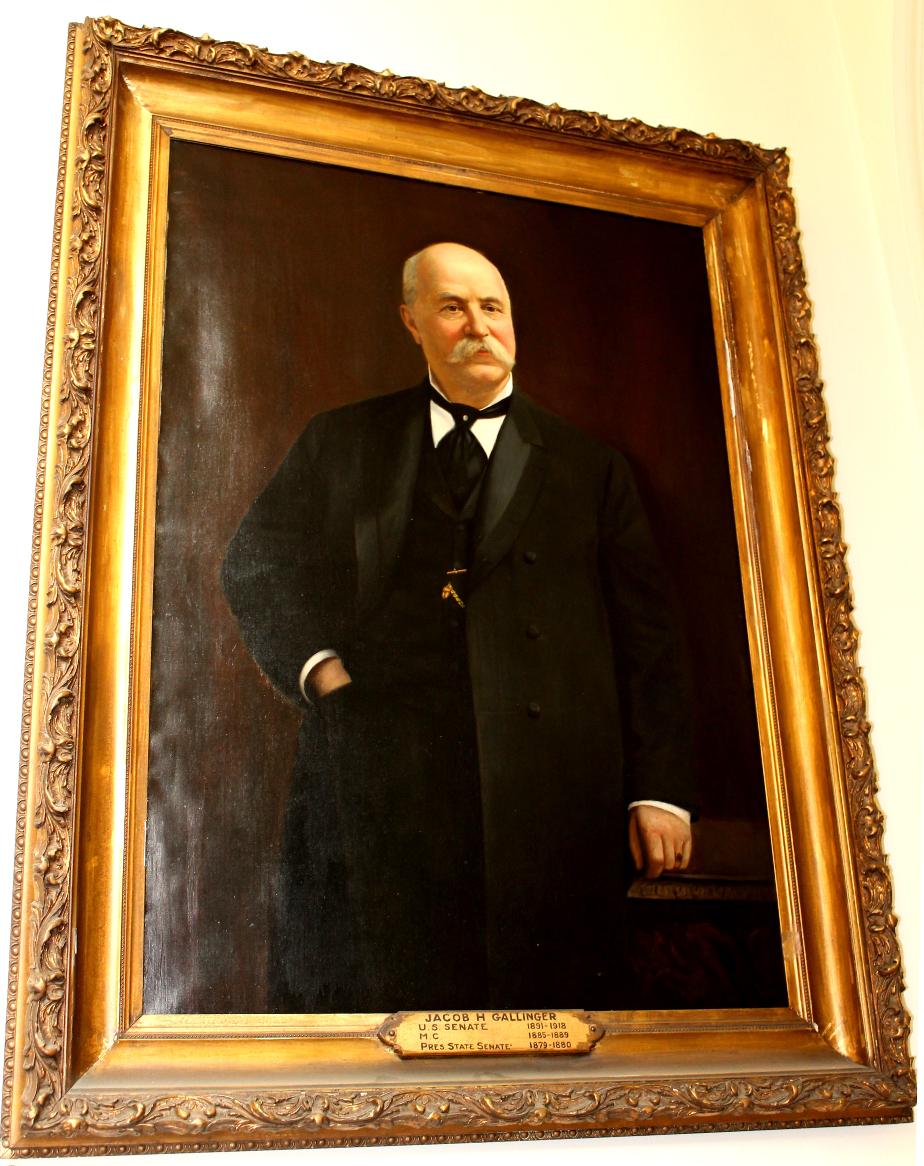
GALLINGER, JACOB HAROLD, a Representative and a Senator from New Hampshire; born in Cornwall, Ontario, Canada, March 28, 1837; attended the common schools and completed an academic course; became a printer; studied medicine and graduated from the Cincinnati (Ohio) Medical Institute in 1858; studied abroad for two years; returned to the United States and engaged in the practice of medicine and surgery in Concord, N.H.; member, State house of representatives 1872-1873, 1891; member of the State constitutional convention in 1876; member, State senate 1878-1880; was surgeon general of New Hampshire, with the rank of brigadier general 1879-1880; elected as a Republican to the Forty-ninth and Fiftieth Congresses (March 4, 1885-March 3, 1889); declined to be a candidate for reelection in 1888; elected as a Republican to the United States Senate in 1891; reelected in 1897, 1903, 1909, and 1914, and served from March 4, 1891, until his death in Franklin, N.H., August 17, 1918; served as President pro tempore during the Sixty-second Congress; Republican Conference chairman (Sixty-third to Sixty-fifth Congresses); chairman, Committee on Transportation Routes to the Seaboard (Fifty-second Congress), Committee on Pensions (Fifty-fourth to Fifty-seventh Congress), Committee on the District of Columbia (Fifty-seventh to Sixty-second Congresses); chairman of the Merchant Marine Commission 1904-1905; interment in Blossom Hill Cemetery, Concord, N.H.
Governor John Taylor Gilman 1794-1805, 1813-1816
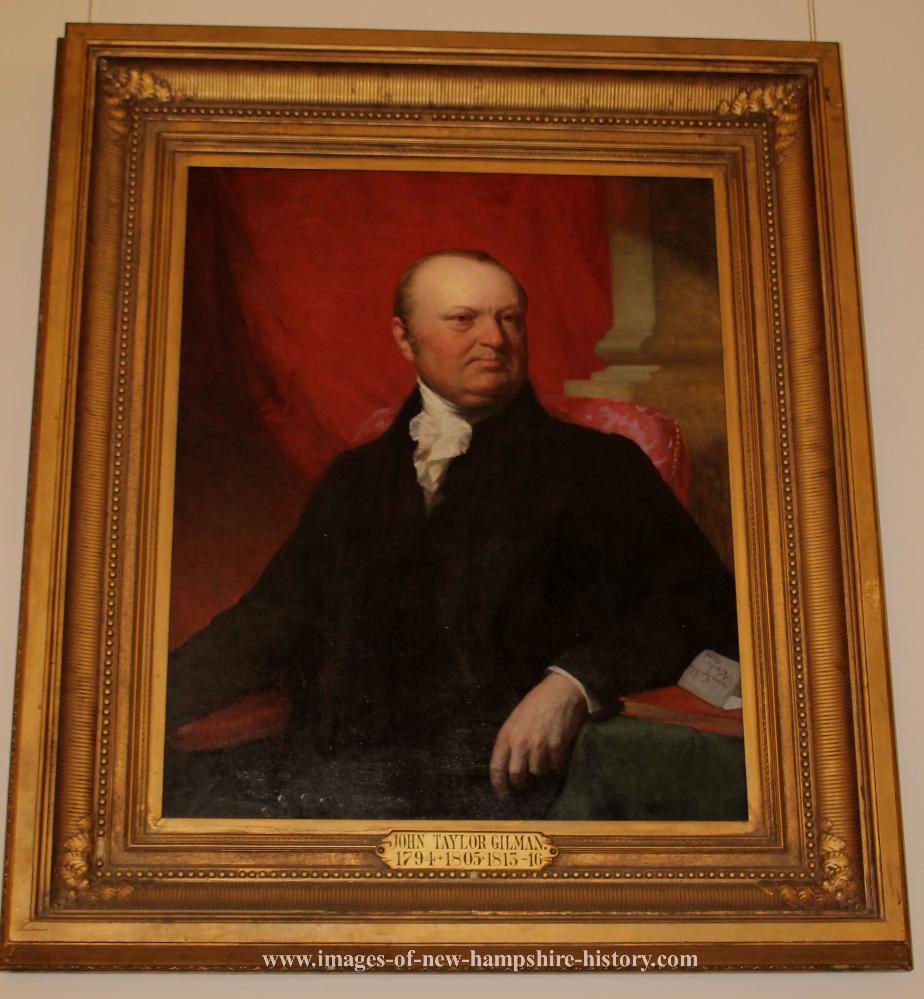
Governor Joseph A. Gilmore : 1863 - 1865
JOHN T. GILMAN, the seventh and twelfth governor to serve New Hampshire, was born in Exeter, New Hampshire on December 19, 1753. His education was limited and attained in the common schools of his native state. Gilman first went to work with his father in the shipbuilding business, but eventually left, following his father to the state treasurers office, where he was a clerk during his father’s tenure as state treasurer. Gilman favored independence from England and served with a troop of volunteers during the Revolutionary War. He first entered politics as a member of the New Hampshire House of Representatives, a position he held from 1779 to 1781, and 1810 to 1811. He served as a member to the 1780 convention of states, and was a member of the Continental Congress in 1782 and 1783. He also served as the state treasurer of New Hampshire from 1783 to 1788 and 1791 to 1794, and was a member of the 1788 state convention. Gilman next won election to the governorship in 1794, and was sworn into office on June 5, 1794. He went on to win reelection annually until 1804. He lost his reelection bids in 1805, 1806, 1808 and 1812, but was successful in his 1813, 1814, and 1815 campaigns. During his two tenures, Fort William and Mary was restored; the state’s economy flourished; the state court system was reorganized; a medical school was initiated to Dartmouth College; and issues dealing with the War of 1812 were addressed. After completing his final term on June 6, 1816, Gilman retired from political life. For several years he served as a trustee for Dartmouth College, as well as for the Phillips Exeter Academy. Governor John T. Gilman passed away on August 31, 1828, and was buried in the Exeter Cemetery in Exeter, New Hampshire. (National Governors Association)


Governor David H Goodell 1889 - 1890
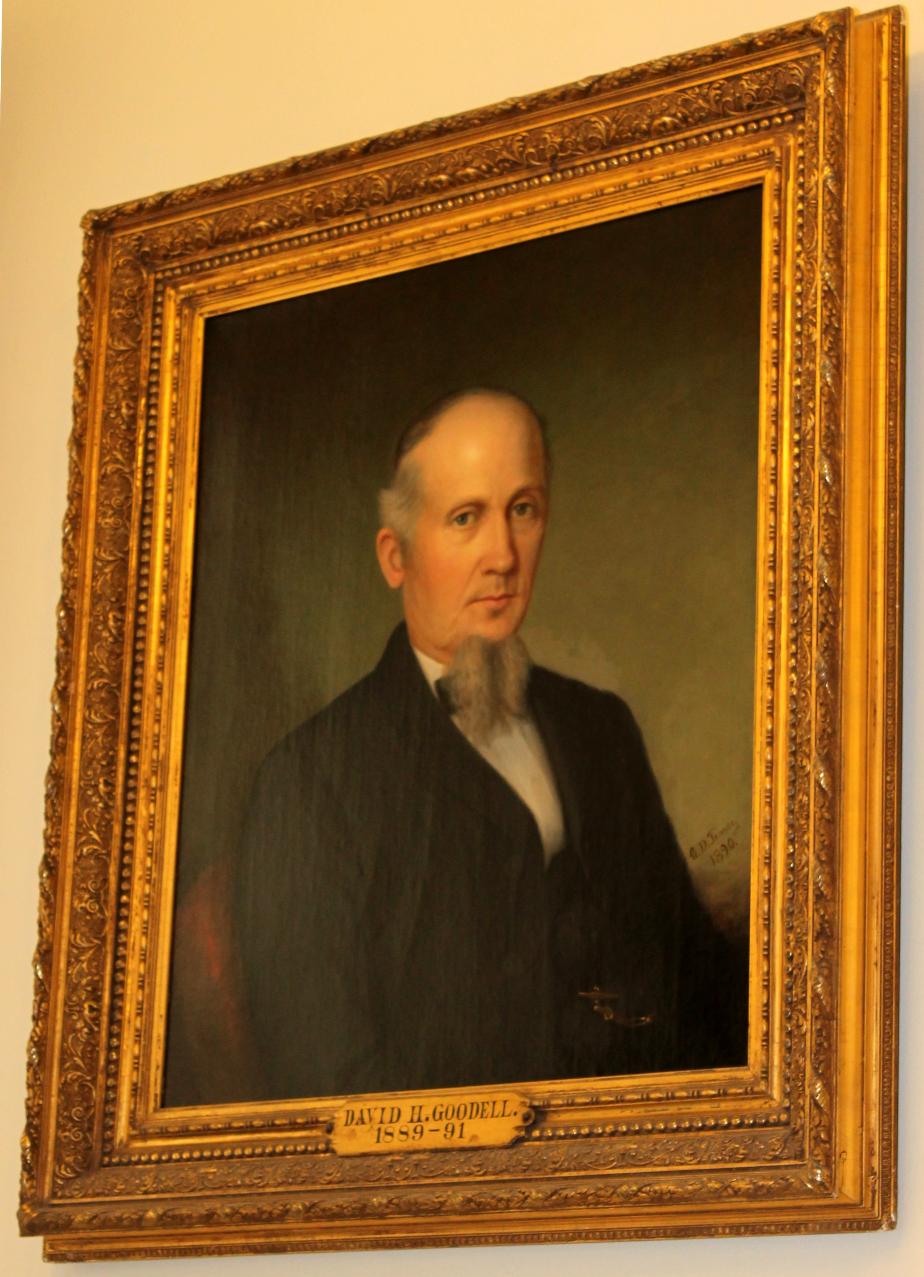
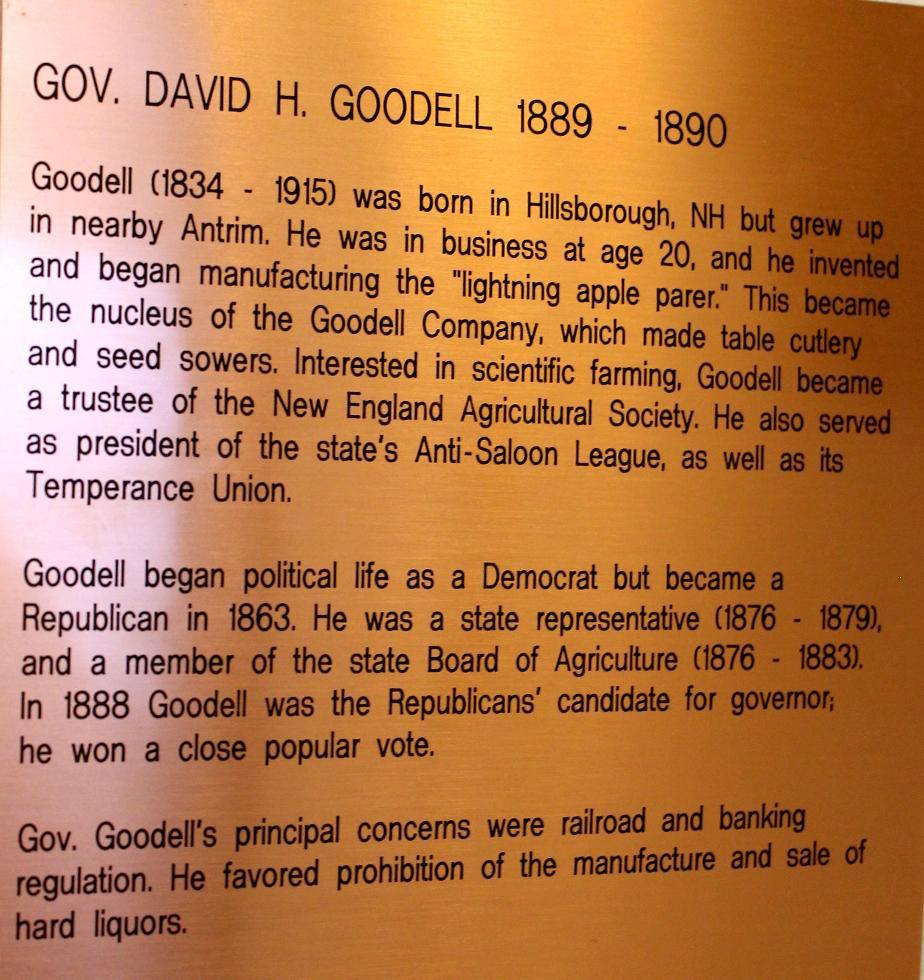

Icabod Goodwin - New Hampshire Governor 1859-1861
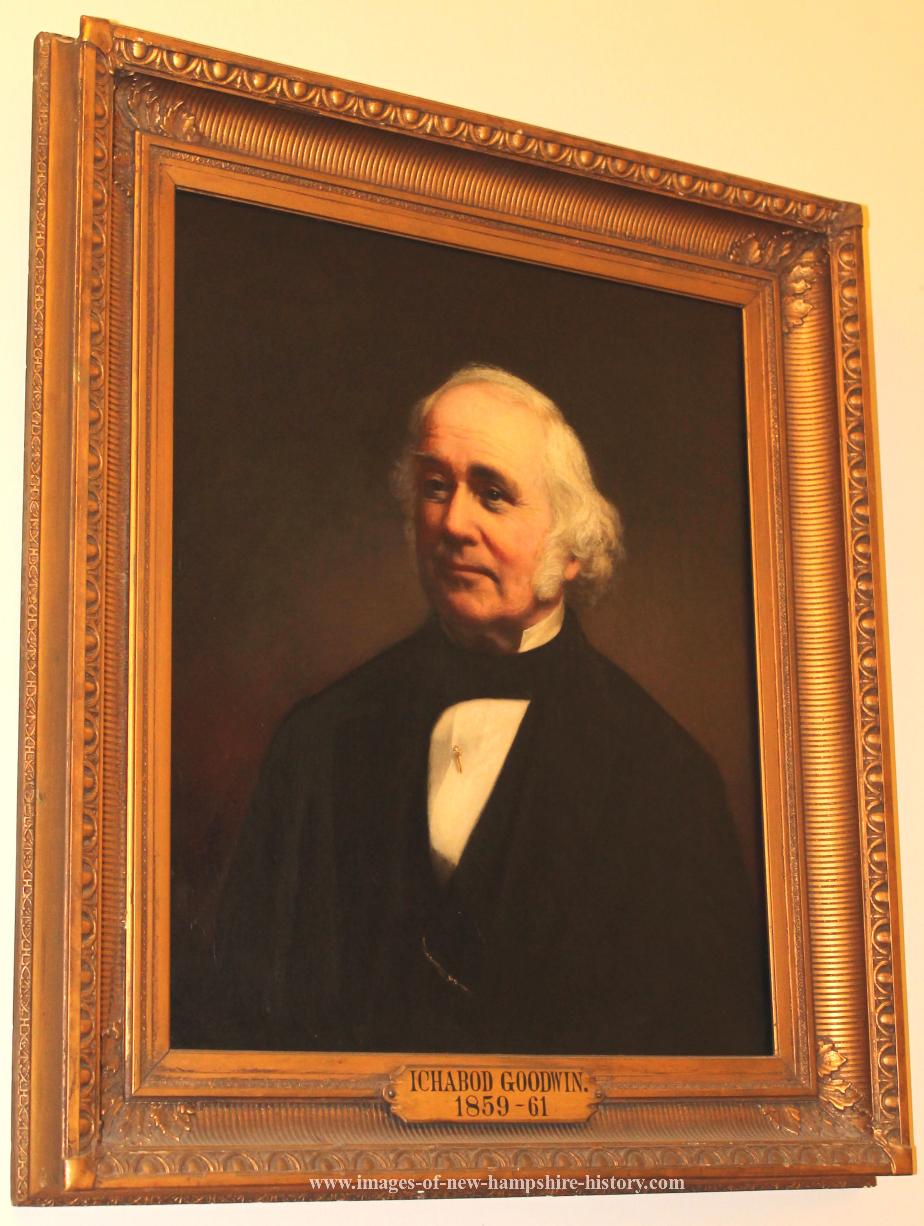
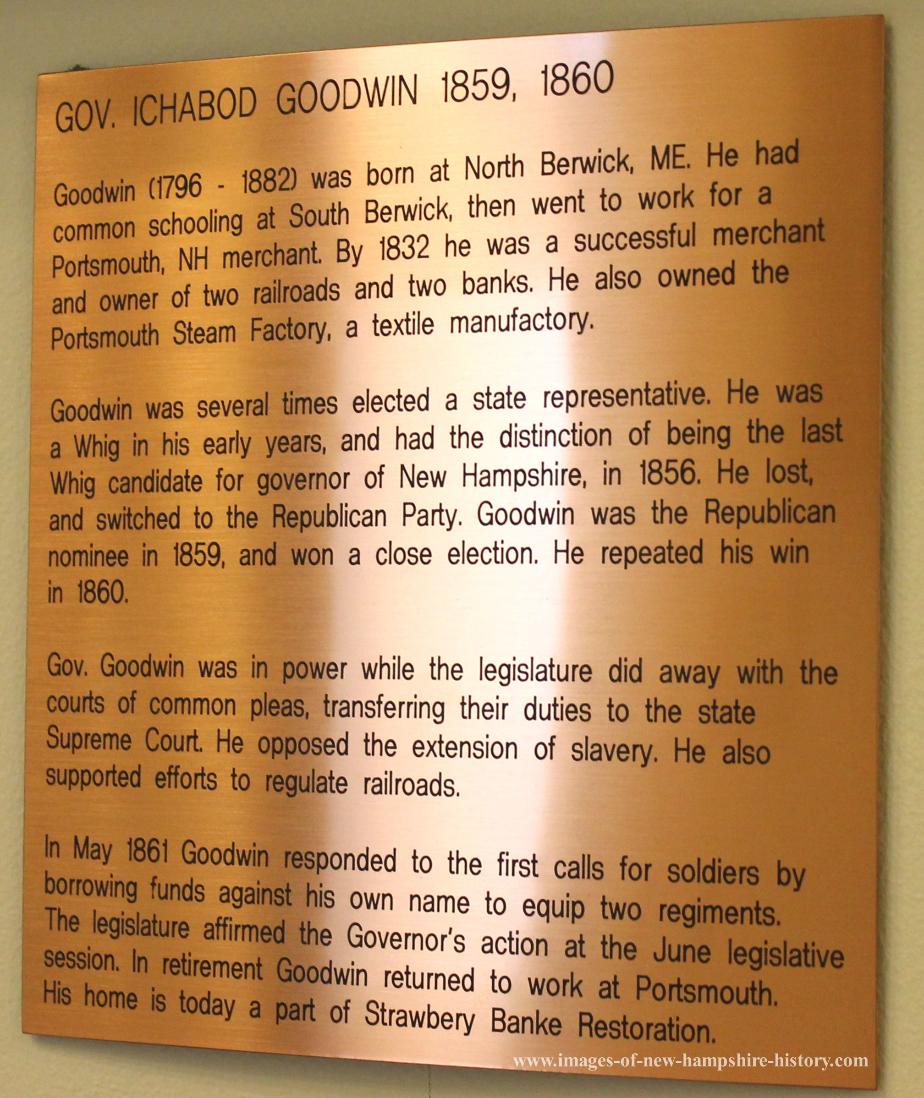
Nathaniel Gordon - NH State Senate President 1870
Born on November 26th, 1820: Nathaniel Gordon in Exeter, New Hampshire. NH State Senate President in 1870.
Nathaniel Gordon was born and died in Exeter, New Hampshire. He entered Phillips Exeter Academy at thirteen, and Dartmouth College as a sophomore. As a Dartmouth undergraduate (Class of 1841) Gordon taught school in the Winter Terms for each of the three years. After graduation he continued teaching at schools at Flushing, NY and Baltimore Maryland (1841-1842). He spent the next 2 years as a tutor for a family living in Maryland and he read Law while tutoring. In 1844, Gordon was admitted to the Maryland Bar and he practiced law in various county courts before returning to Exeter NH in 1847. Gordon practiced law in Exeter for the rest of his life.
Gordon served as Secretary and Treasurer of Rockingham Farmers' Mutual Life Insurance Company (1849 - 1857). He was a state Representative (1849-1850) and State Senator (1869 - 1870). In 1870, Gordon was President of the NH Senate. During the Civil War, Gordon invested all the money he had or could borrow in U.S. Government securities. When the Union Army won in 1865, Gordon became a wealthy man. For the rest of his life he made substantial contributions to educational "Institutions" and Christian missions in the American Wes and in China. He contributed to student scholarships and to endowment funds. In 1880, Gordon contributed substantially to help former U.S. Grant avert bankruptcy.
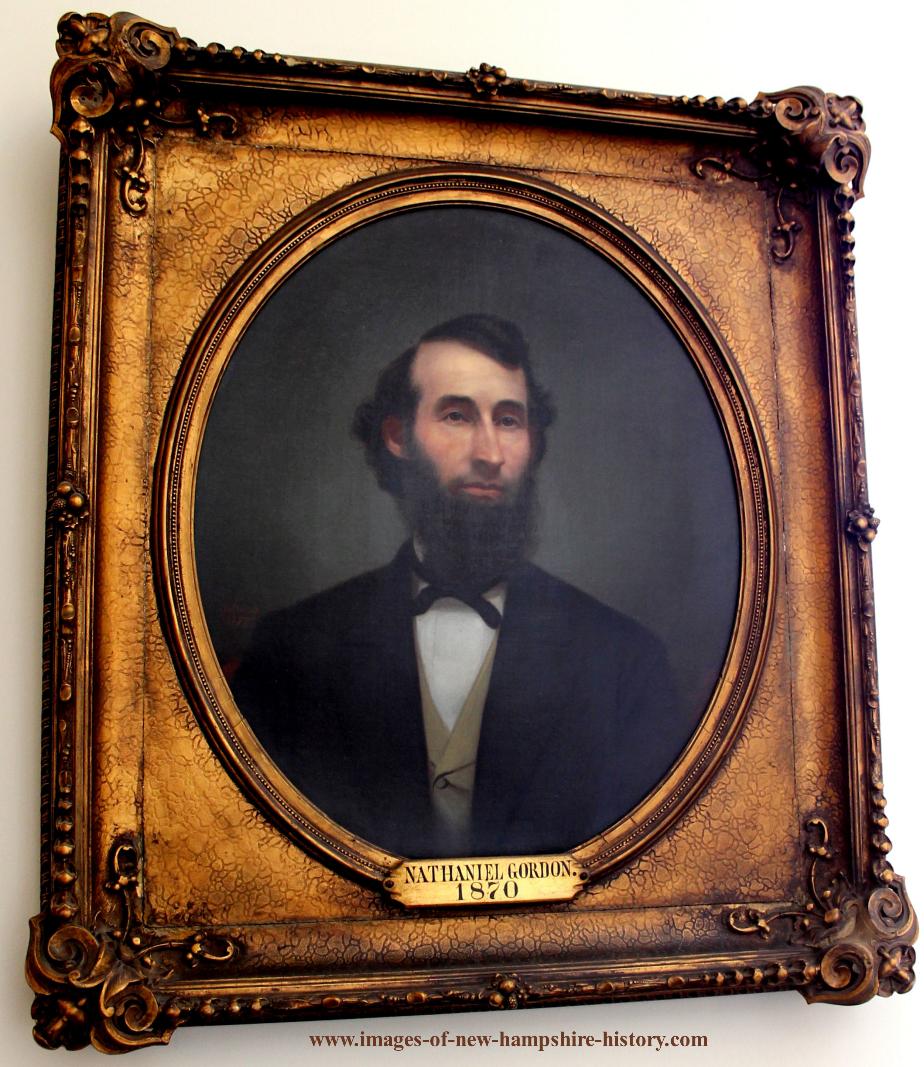
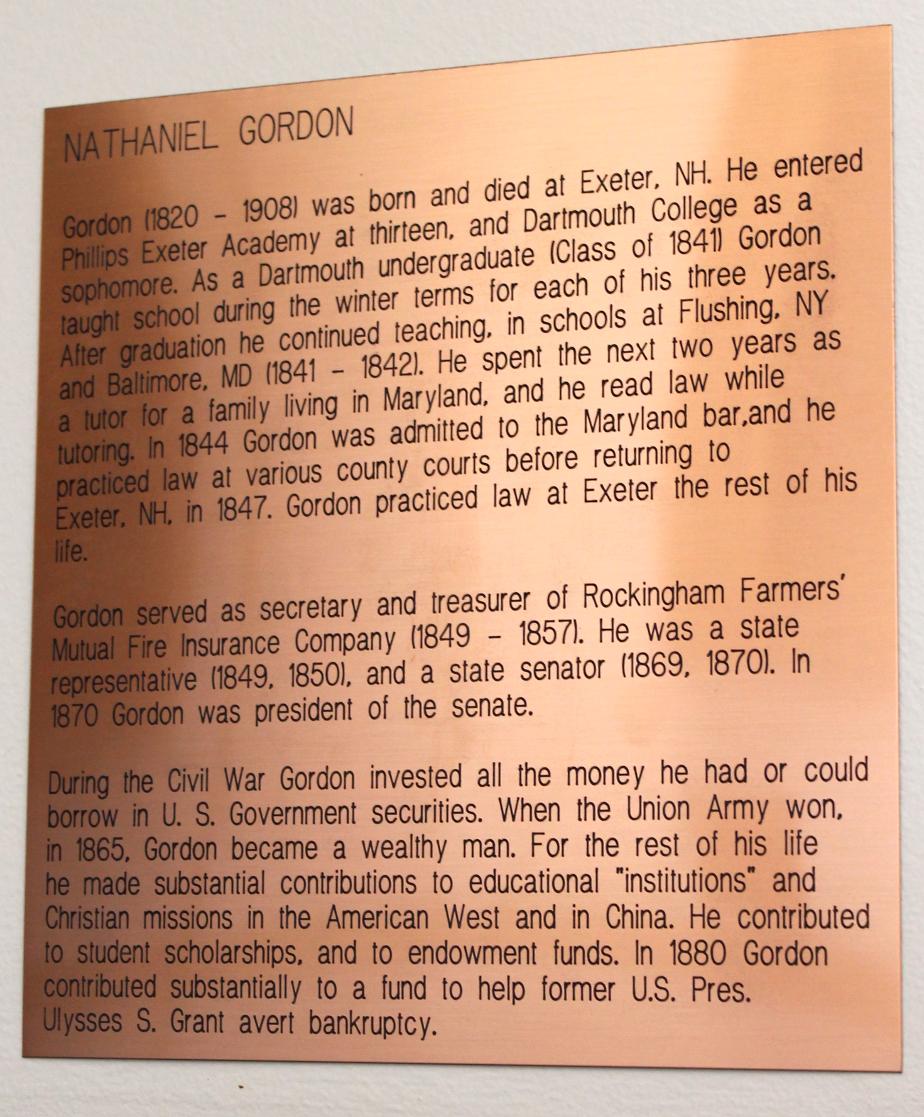
General Jesse A. Gove - Weare NH
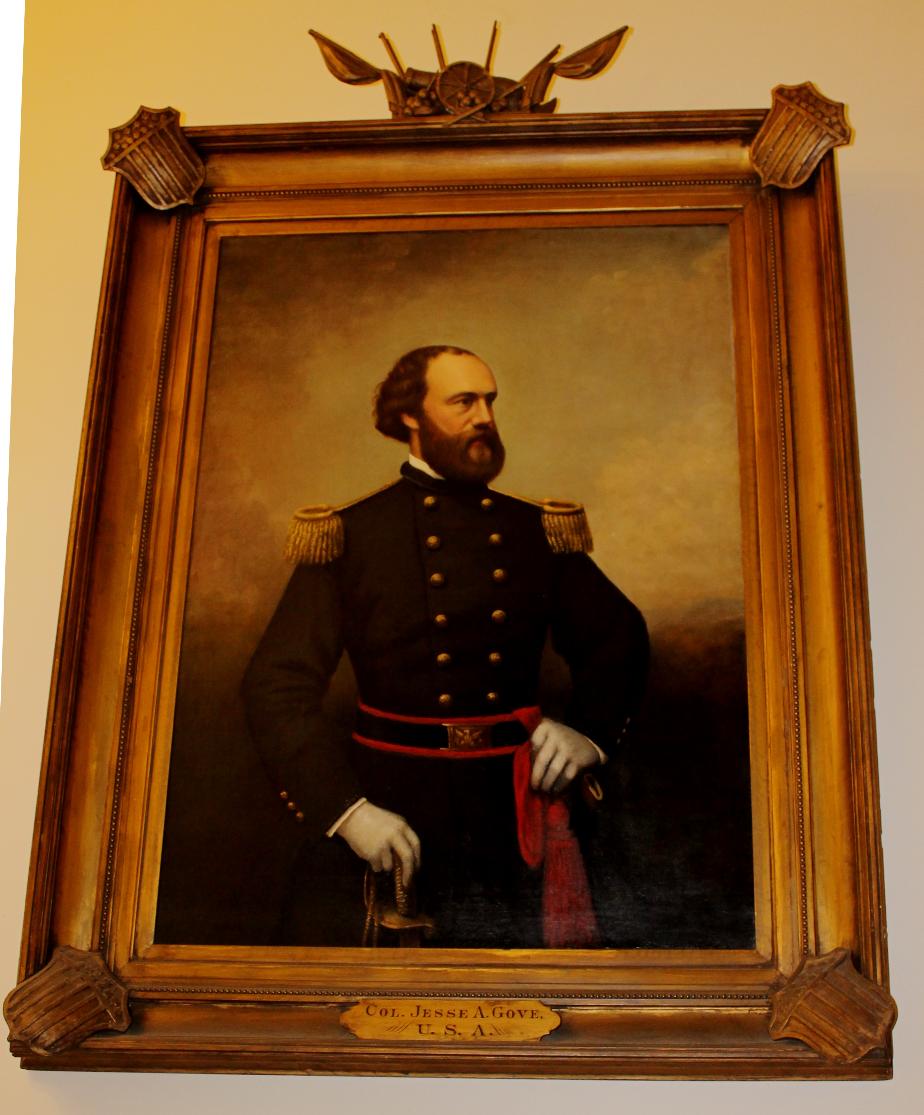
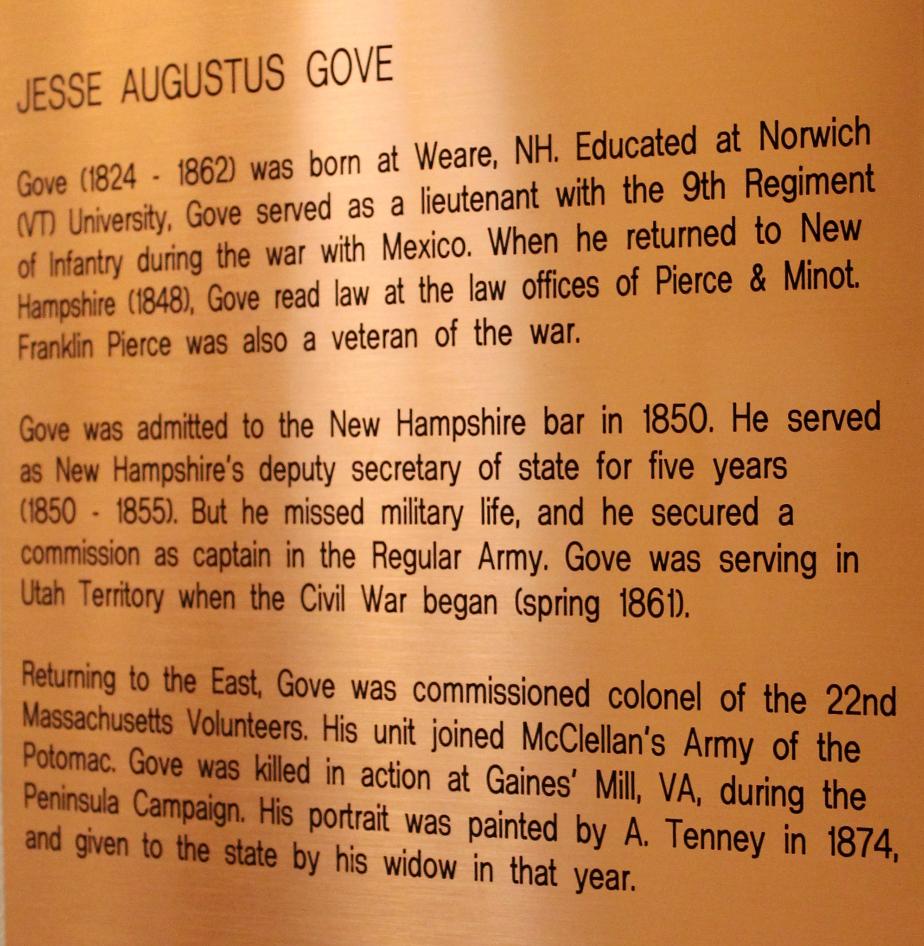
Abner Greenleaf - State Senate President (1829)
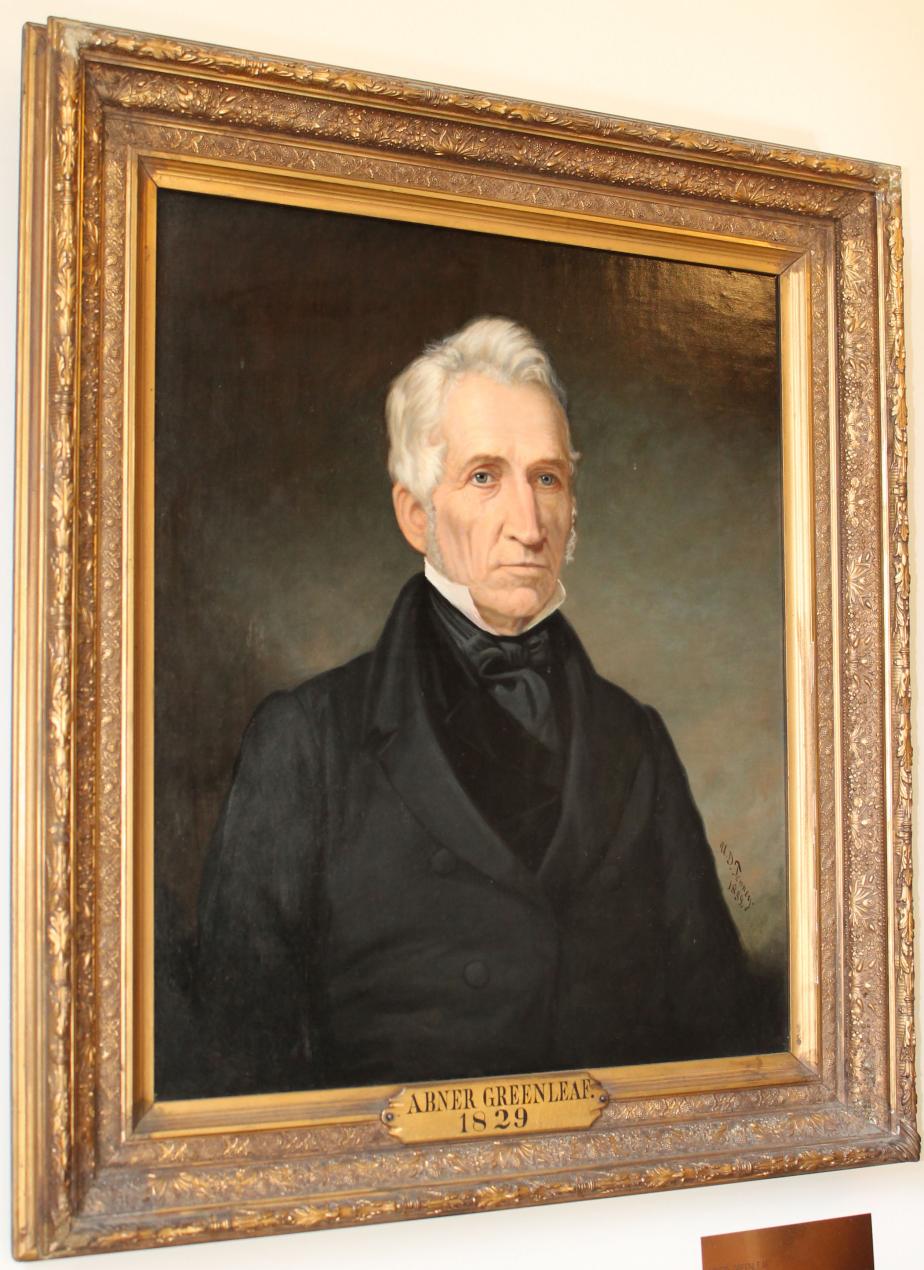
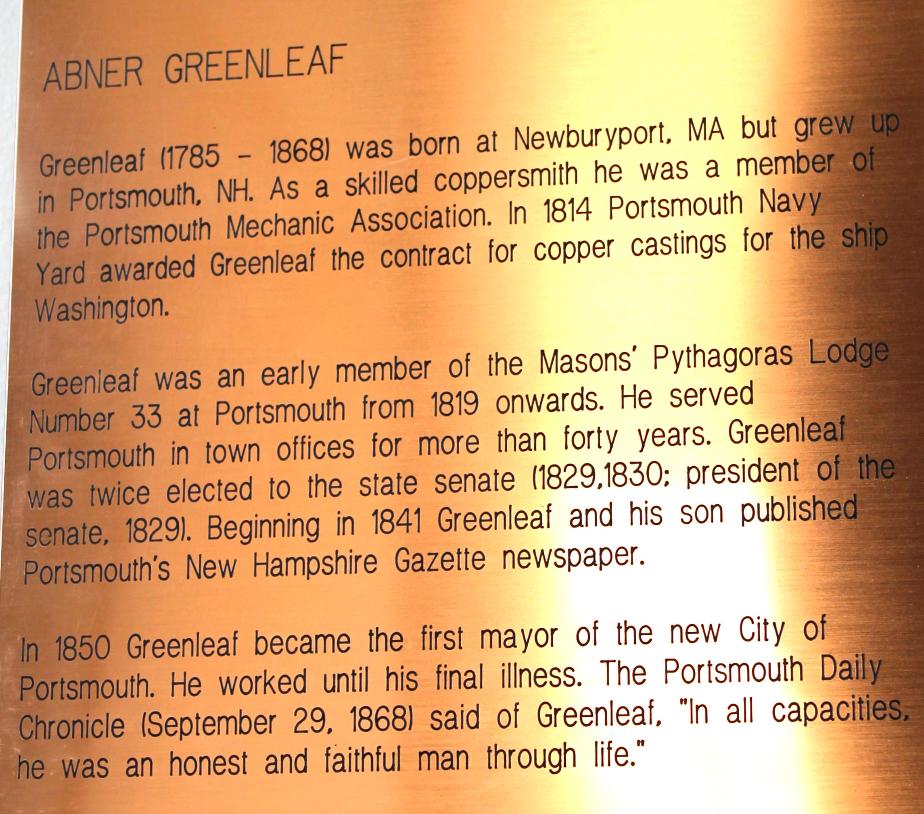

Hugh Gregg (Nashua) - Governor , 1953-1954
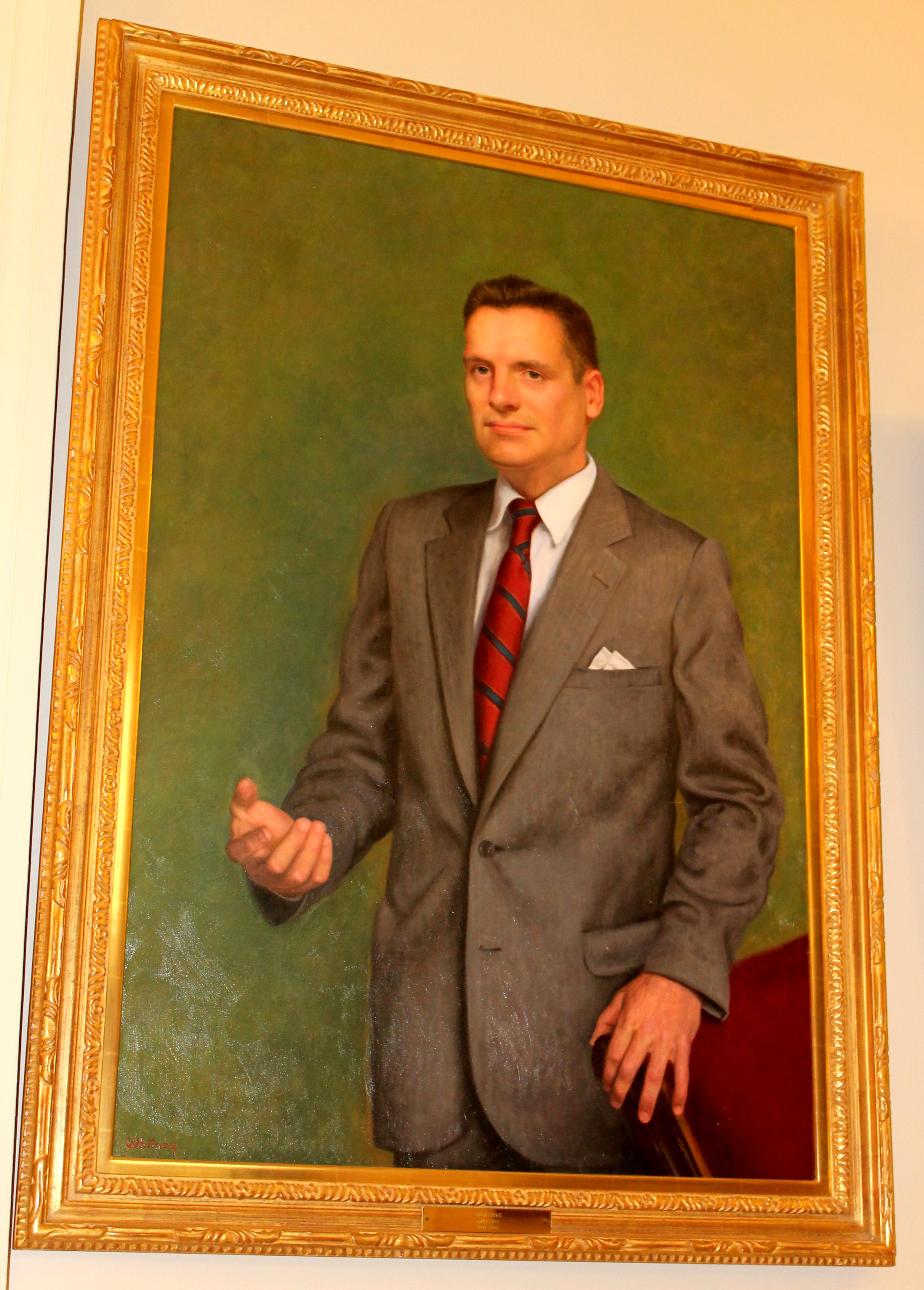
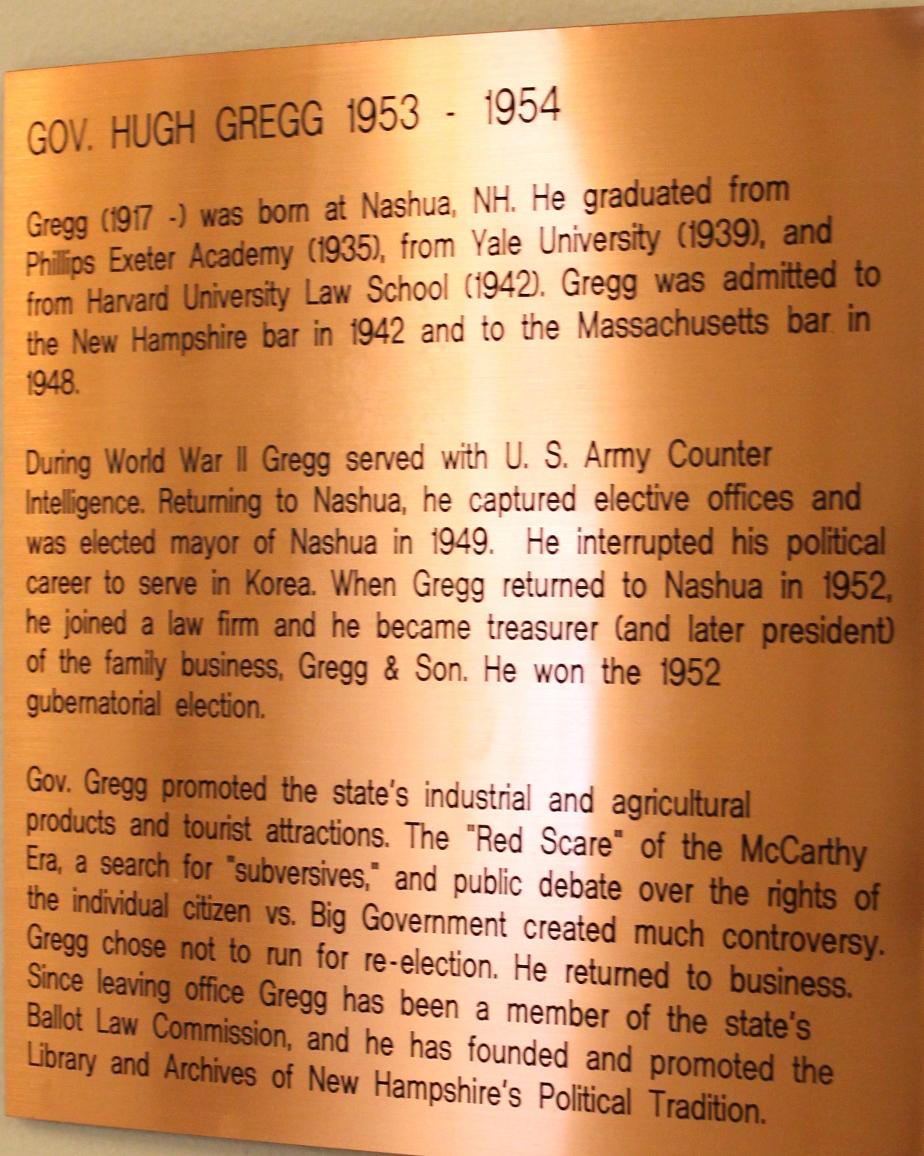
Judd Gregg (Nashua) NH Governor 1989 - 1992
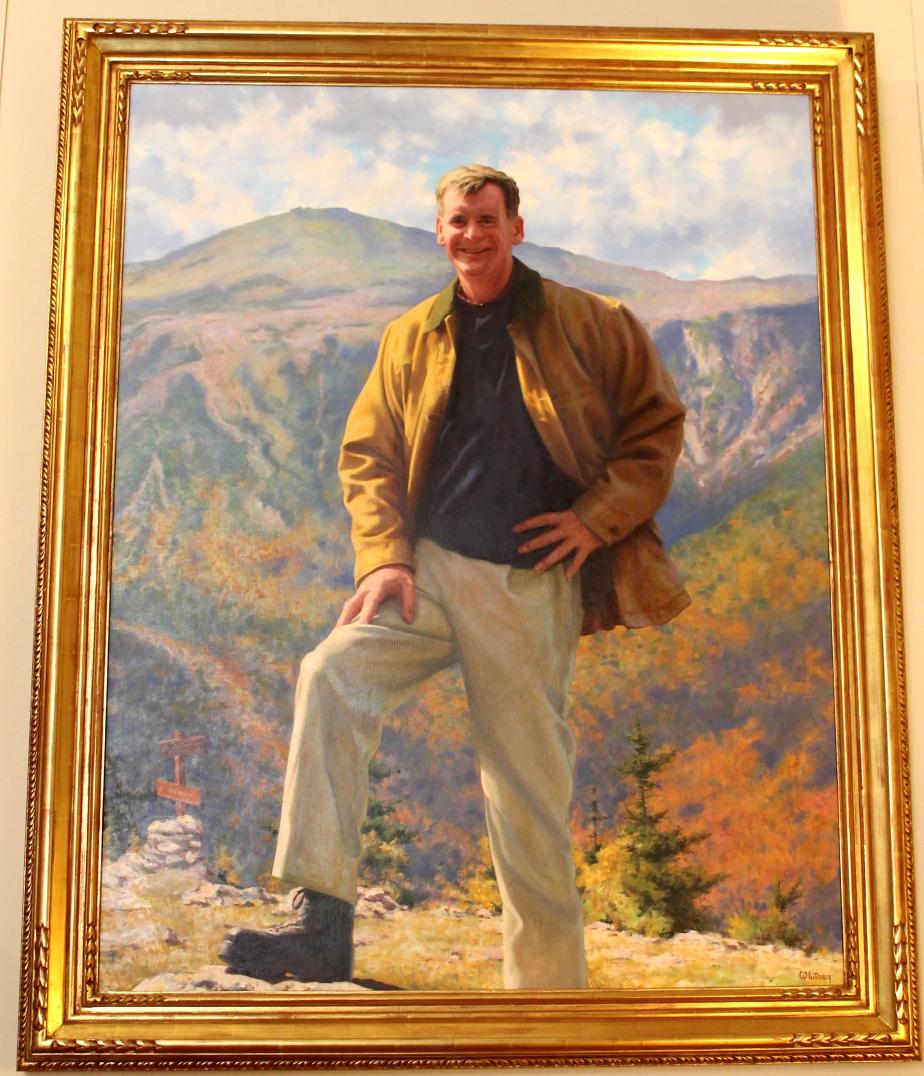
William H.Y. Hackett - NH State Senate President - 1862
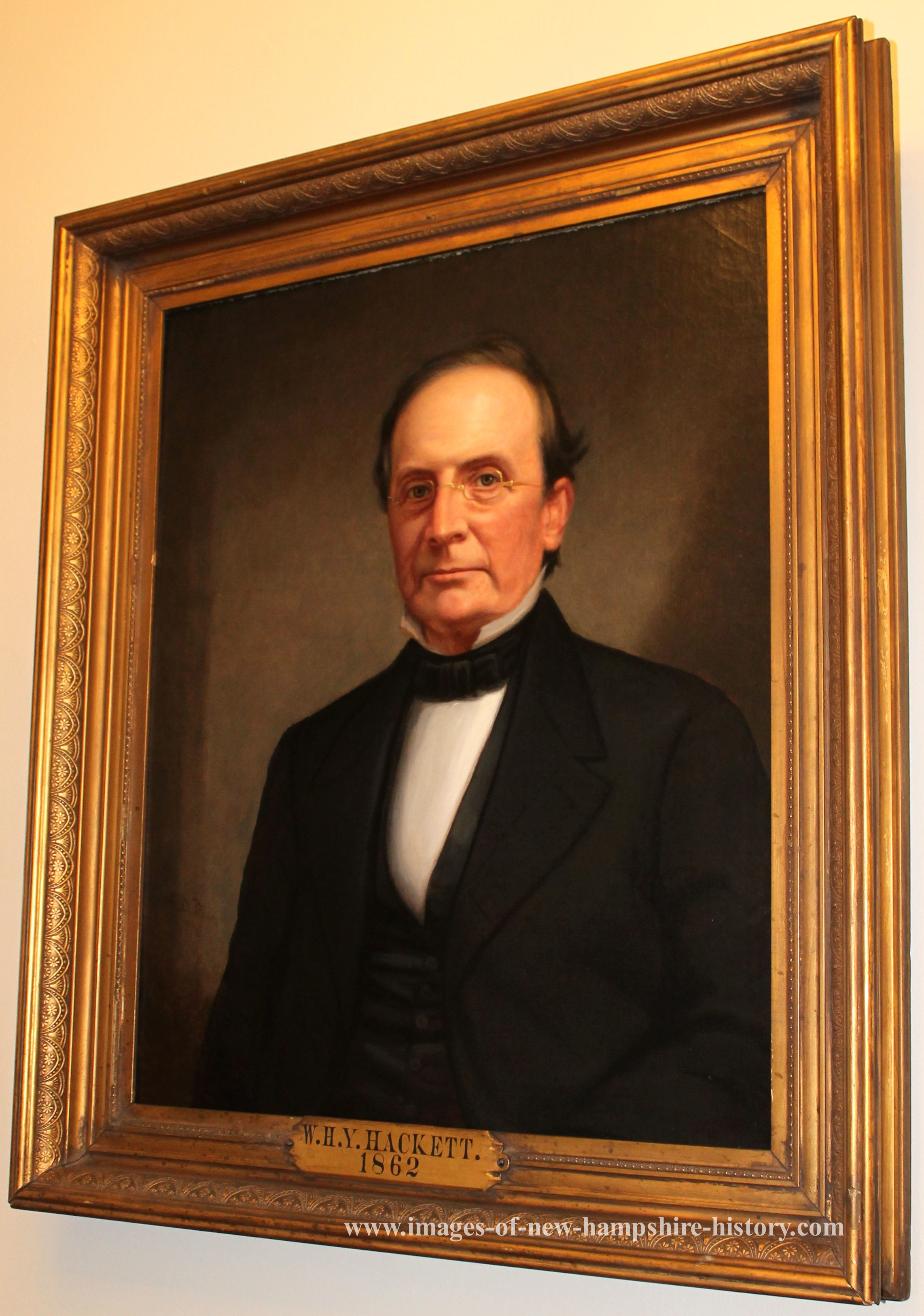

1800: Born - William H.Y. Hackett in Gilmanton New Hampshire.
William Hackett was schooled at Gilmanton Academy. Between 1820 and 1825 Hacket taught school at Portsmouth High School.
Hackett believed in a strong Bank of the United States. The Portsmouth business community agreed with him, and in 1827, Hackett was made a director of the Piscataqua Bank. He was then asked to organize the Portsmouth First National Bank. Hackett served as President of this bank until his death. He also served as an officer of Portsmouth Savings Bank and Piscataqua Savings Bank, and he was President of Piscataqua Exchange Bank throughout its Charter (1845-1863).
Until 1850, Portsmouth did not allow lawyers to run for political office. In 1850 this law changed. Hackett was immediately elected to the first of several terms as a state representative (1850-1852, 1857, 1860, 1867-1869). In 1862 he became a state senator. On December 13, 1861 Hackett was admitted to the Bar of the US Supreme Court, and in 1862 he was President of the New Hampshire Historical Society (1861-1866): in 1872 he was a vice president of the Republican Party Nation Convention.
William Haile - NH Senate President (1855)
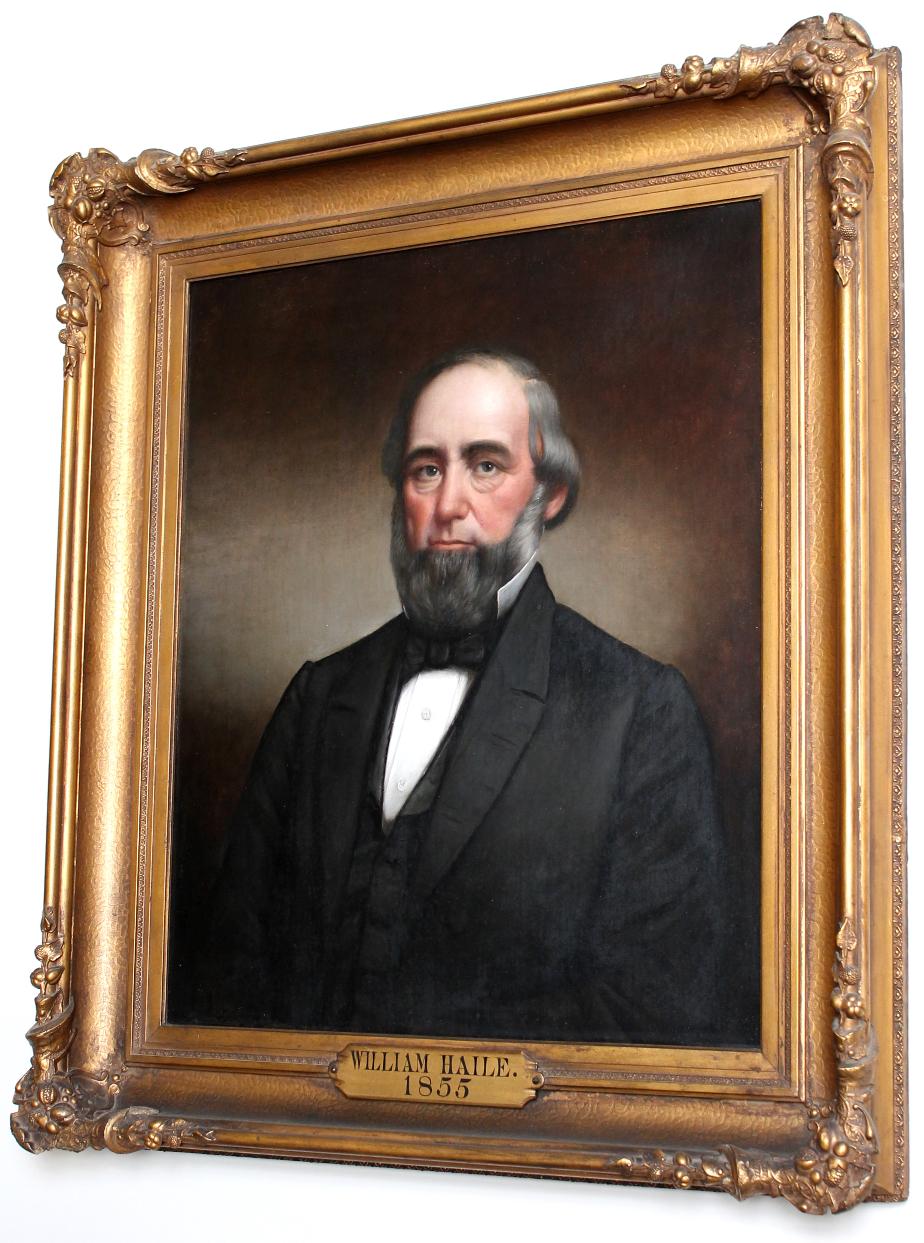
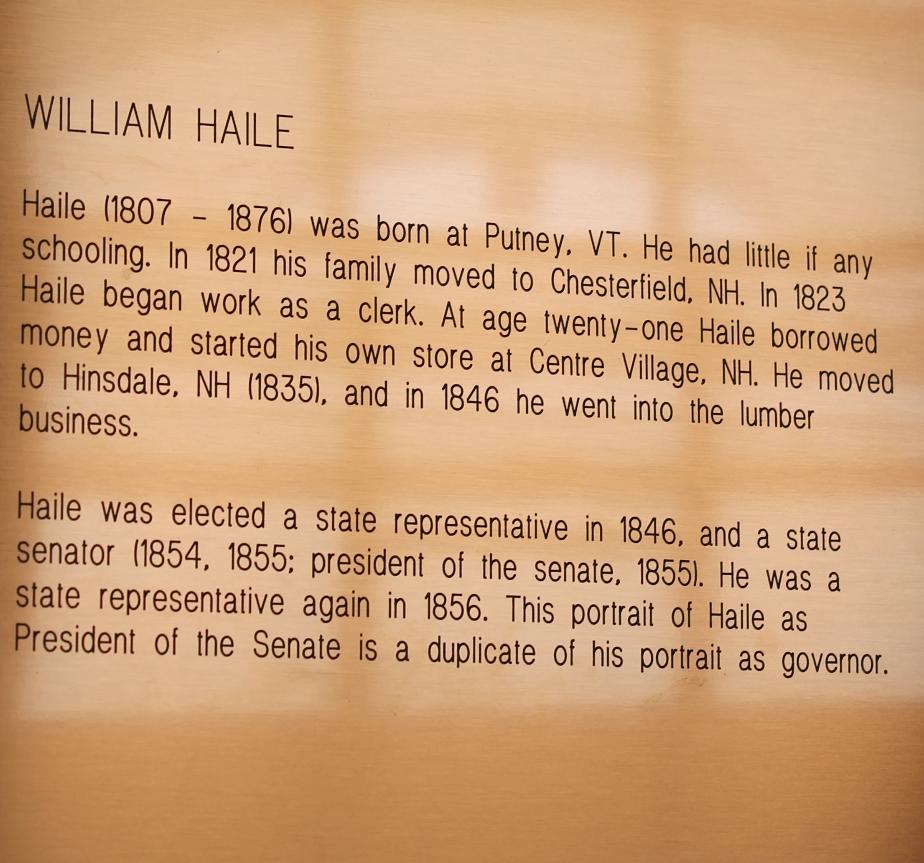
Governor William Haile : 1857 - 1859
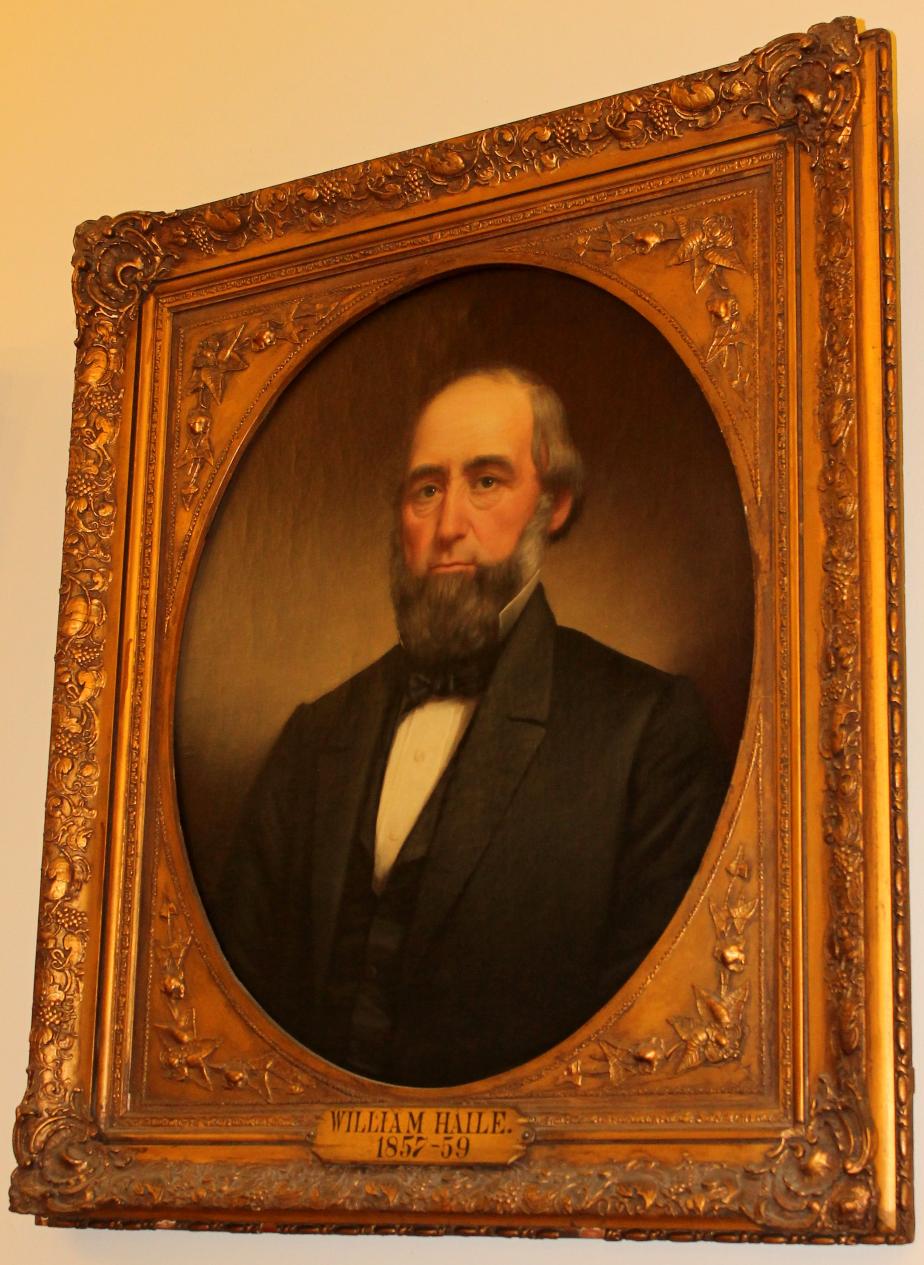
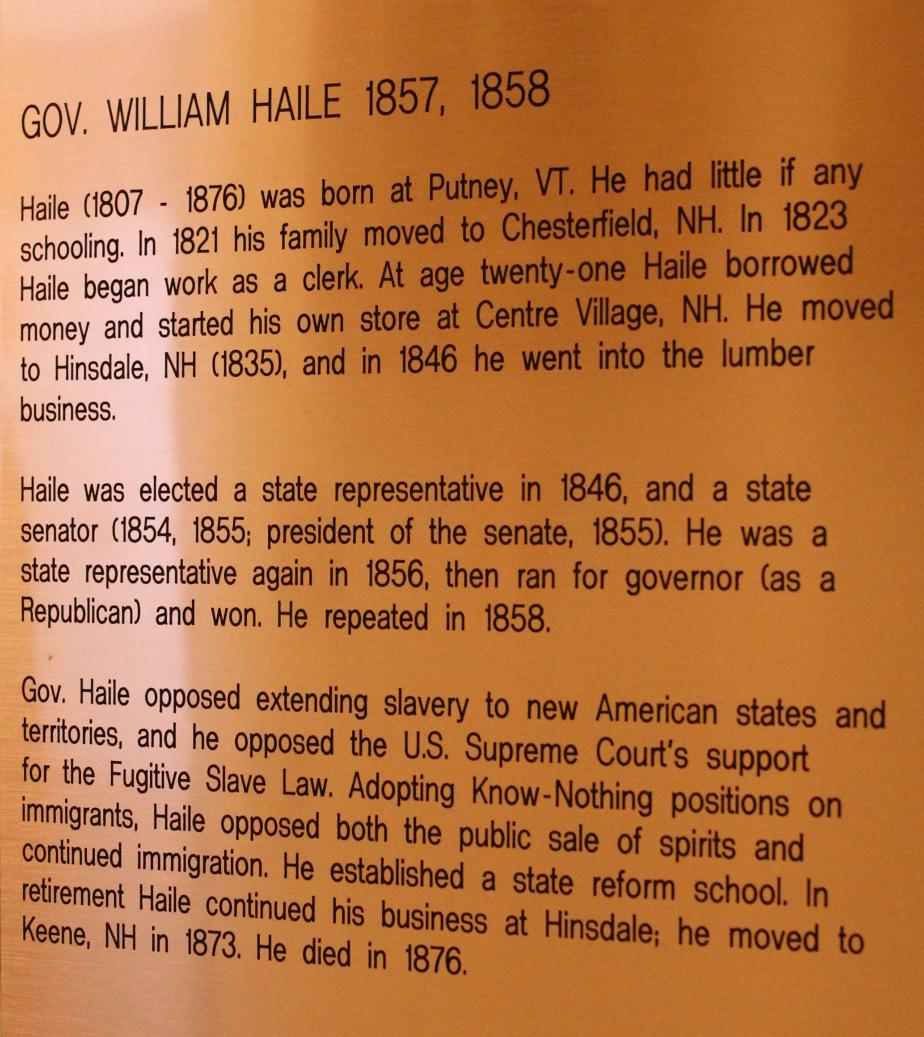
John P Hale - NH State House Legislative Chamber
HALE, JOHN PARKER, a Representative and a Senator from New Hampshire; born in Rochester, Strafford County, N.H., March 31, 1806; received preparatory education at Phillips Exeter Academy, Exeter, N.H.; graduated from Bowdoin College, Brunswick, Maine, in 1827; studied law; admitted to the bar in 1830 and commenced practice in Dover, N.H.; member, State house of representatives 1832; appointed by President Andrew Jackson as United States attorney in 1834, and was removed by President John Tyler in 1841; elected as a Democrat to the Twenty-eighth Congress (March 4, 1843-March 3, 1845); refused to vote for the annexation of Texas, although instructed to do so by the State legislature, which then revoked his renomination; elected as a Free Soil candidate to the United States Senate in 1846 and served from March 4, 1847, to March 3, 1853; unsuccessful candidate for President of the United States on the Free Soil ticket in 1852; again elected to the Senate in 1855 to fill the vacancy caused by the death of Charles G. Atherton; reelected in 1859 and served from July 30, 1855, to March 3, 1865; chairman, Republican Conference (Thirty-sixth Congress); chairman, Committee on Naval Affairs (Thirty-seventh and Thirty-eighth Congresses), Committee on the District of Columbia (Thirty-eighth Congress); appointed Minister to Spain 1865-1869; returned to Dover, N.H., and died there November 19, 1873; interment in Pine Hill Cemetery.
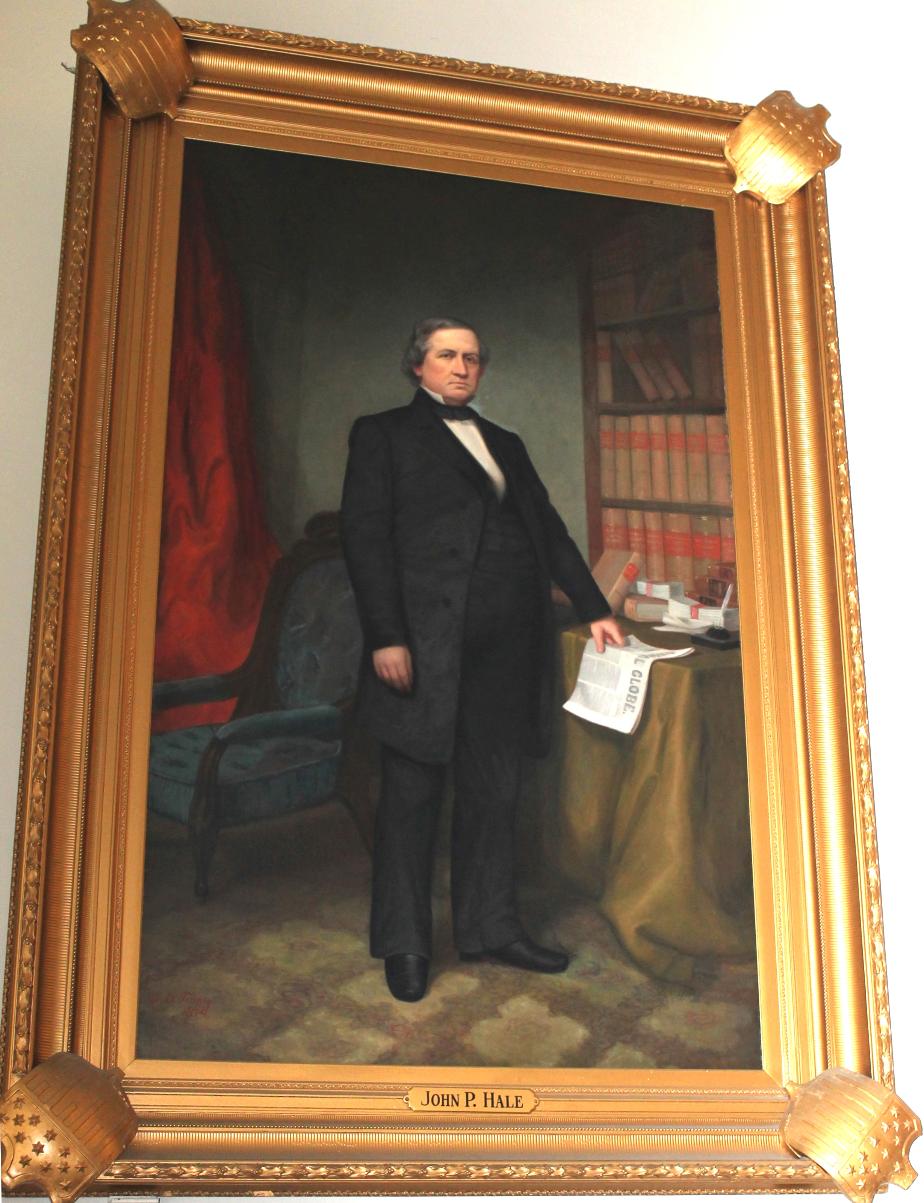
Governor Samuel W Hale - 1883 - 1884
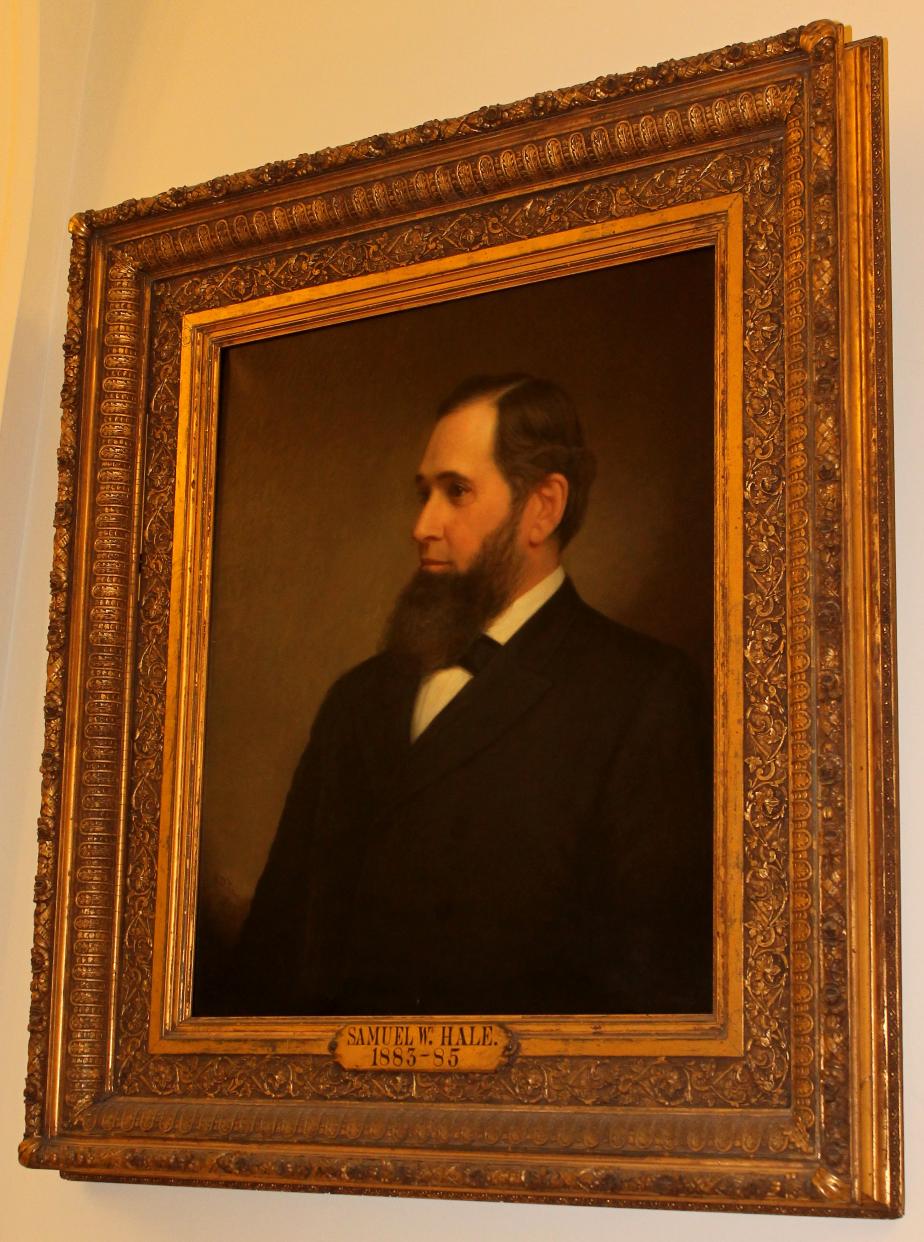
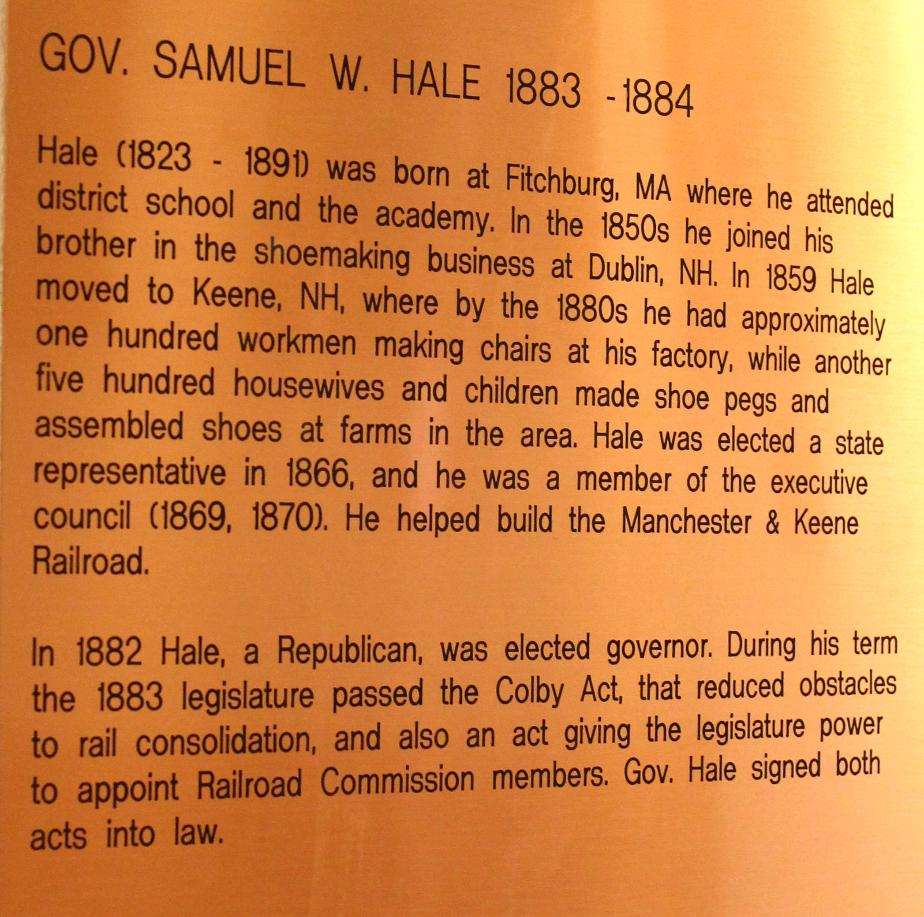
Governor Walter Harriman 1867-1869 (Warner)
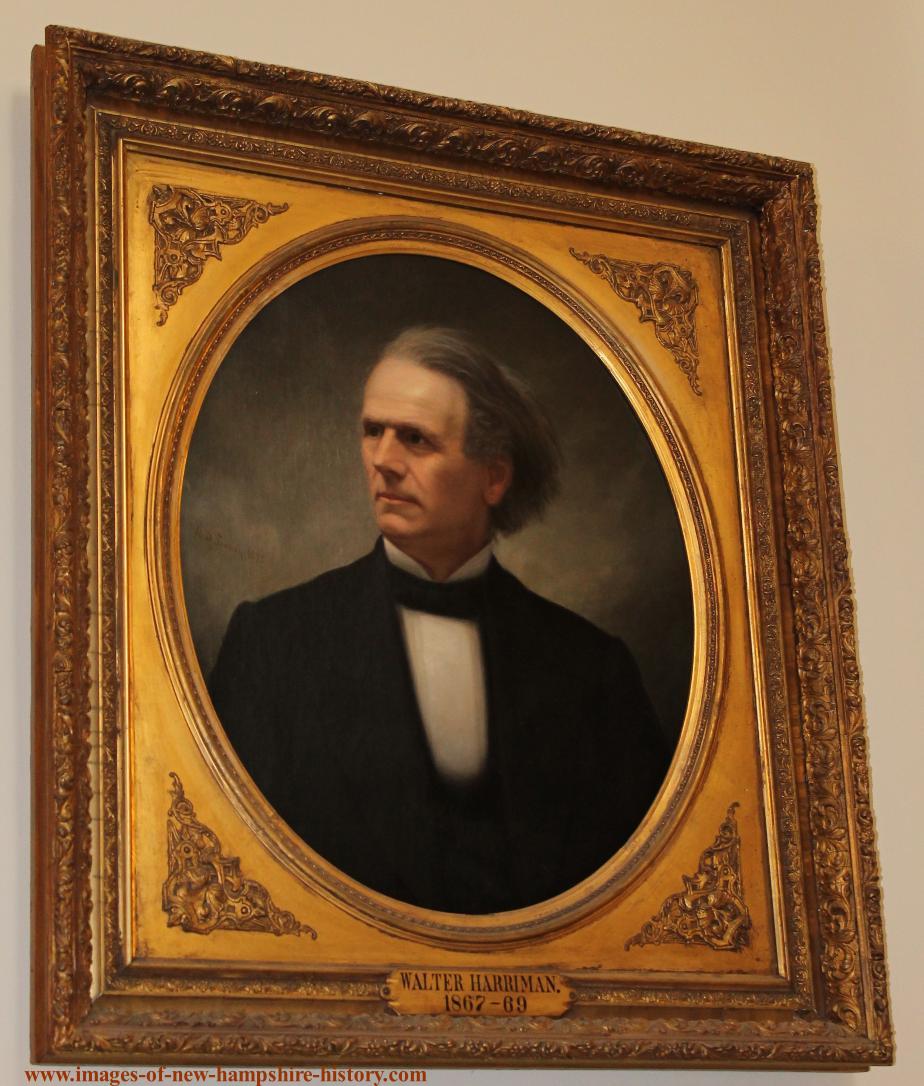

Governor Matthew Harvey: 1830-1831
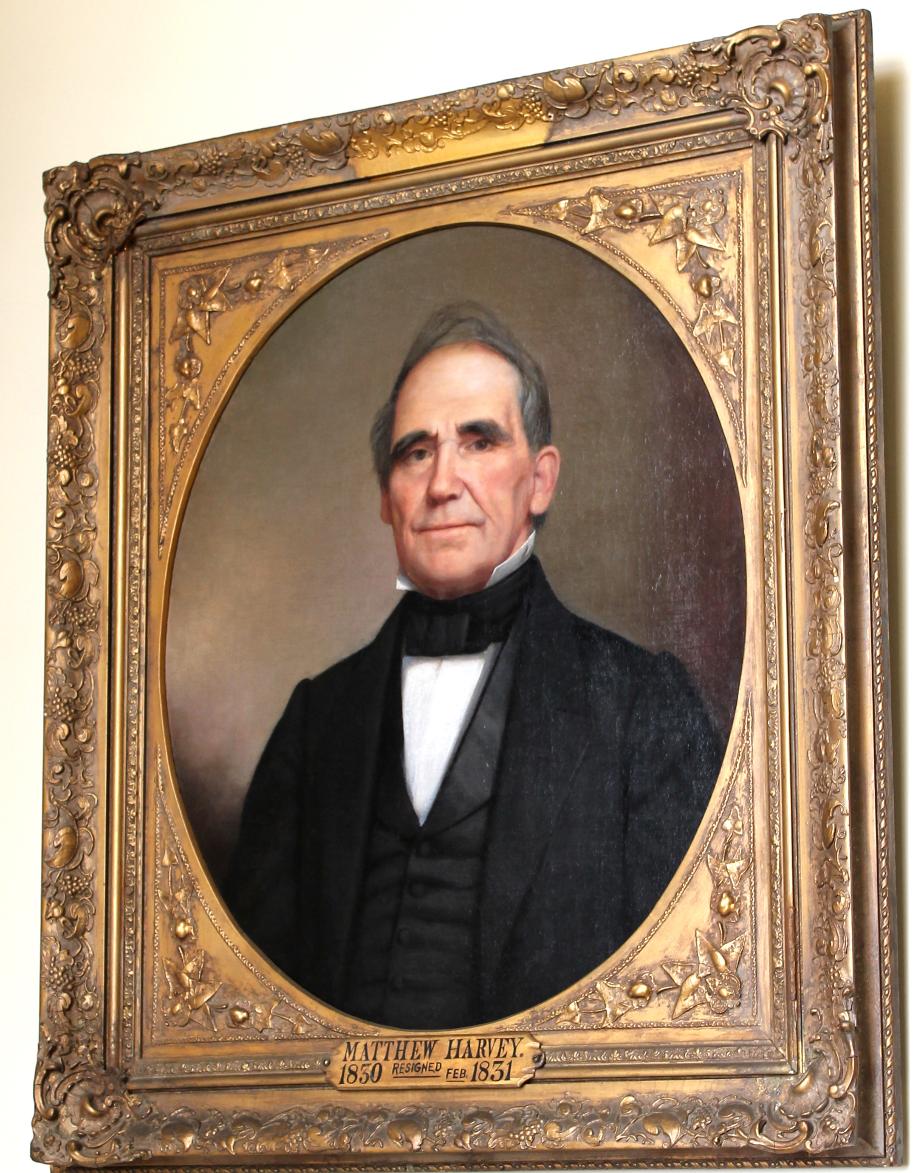
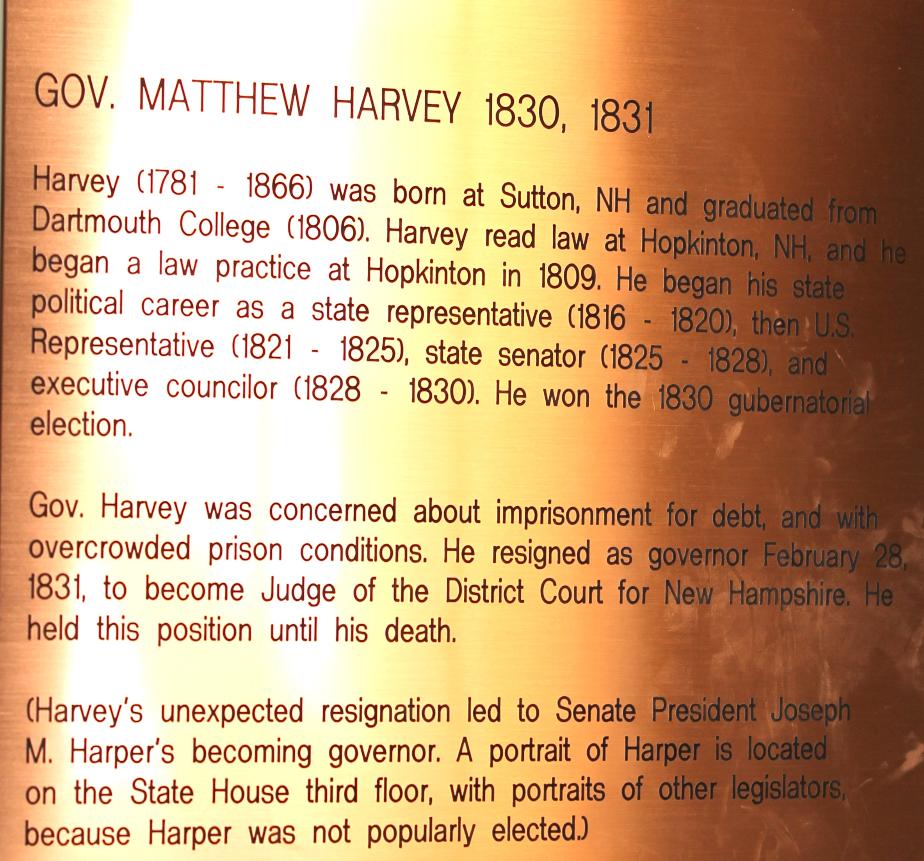
George Haselton - NH Senate President - 1915
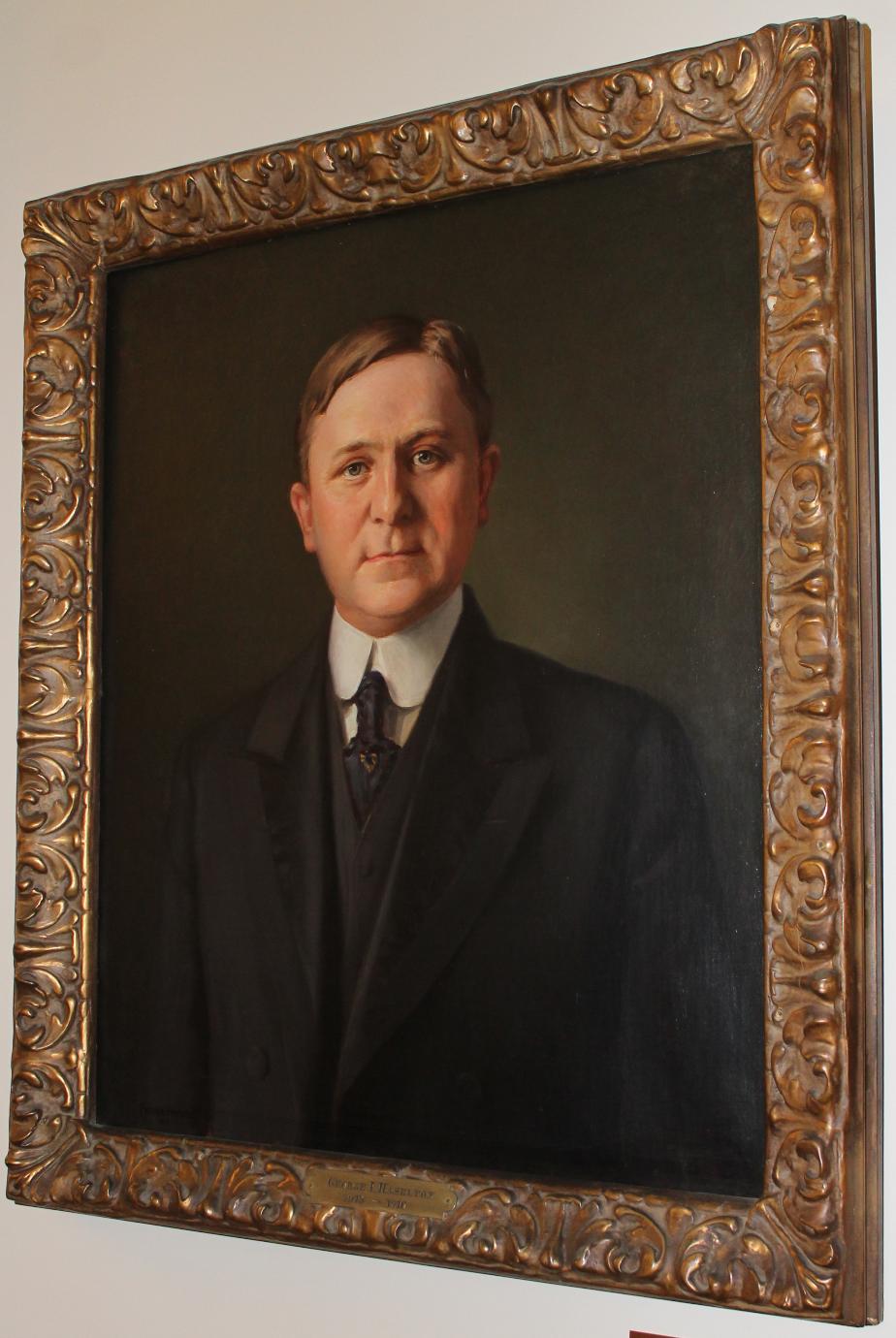
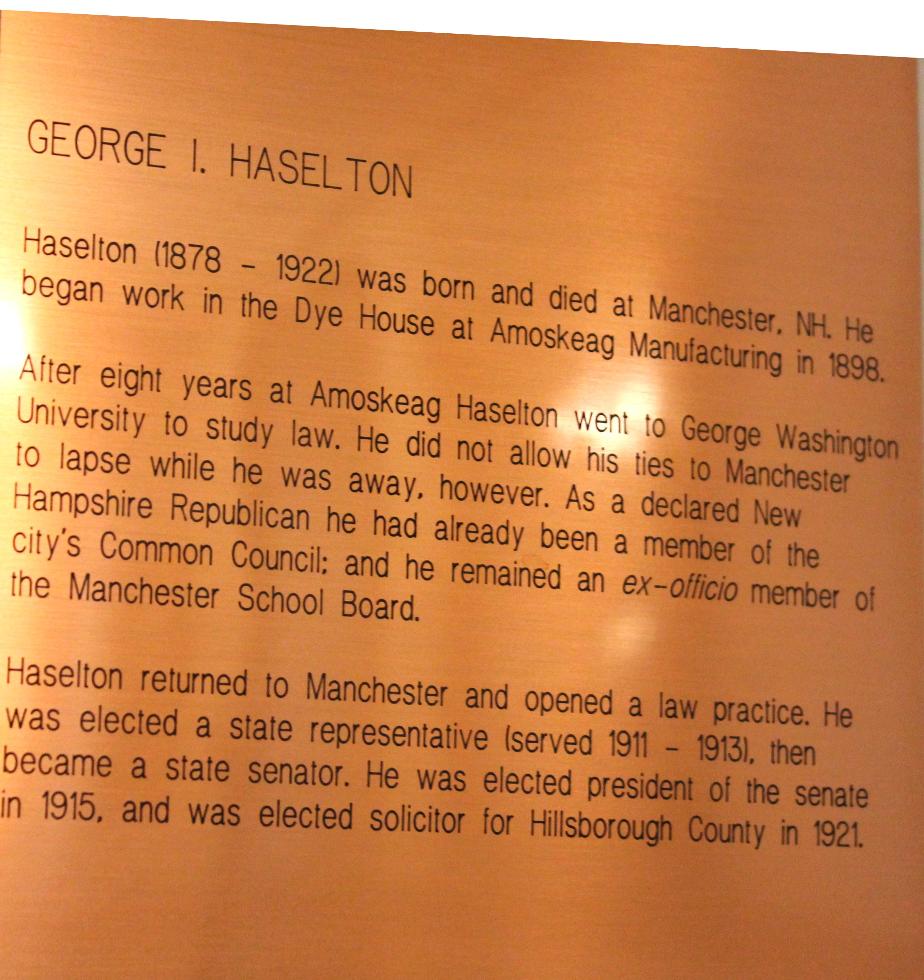
Governor Natt Head: 1879 - 1880
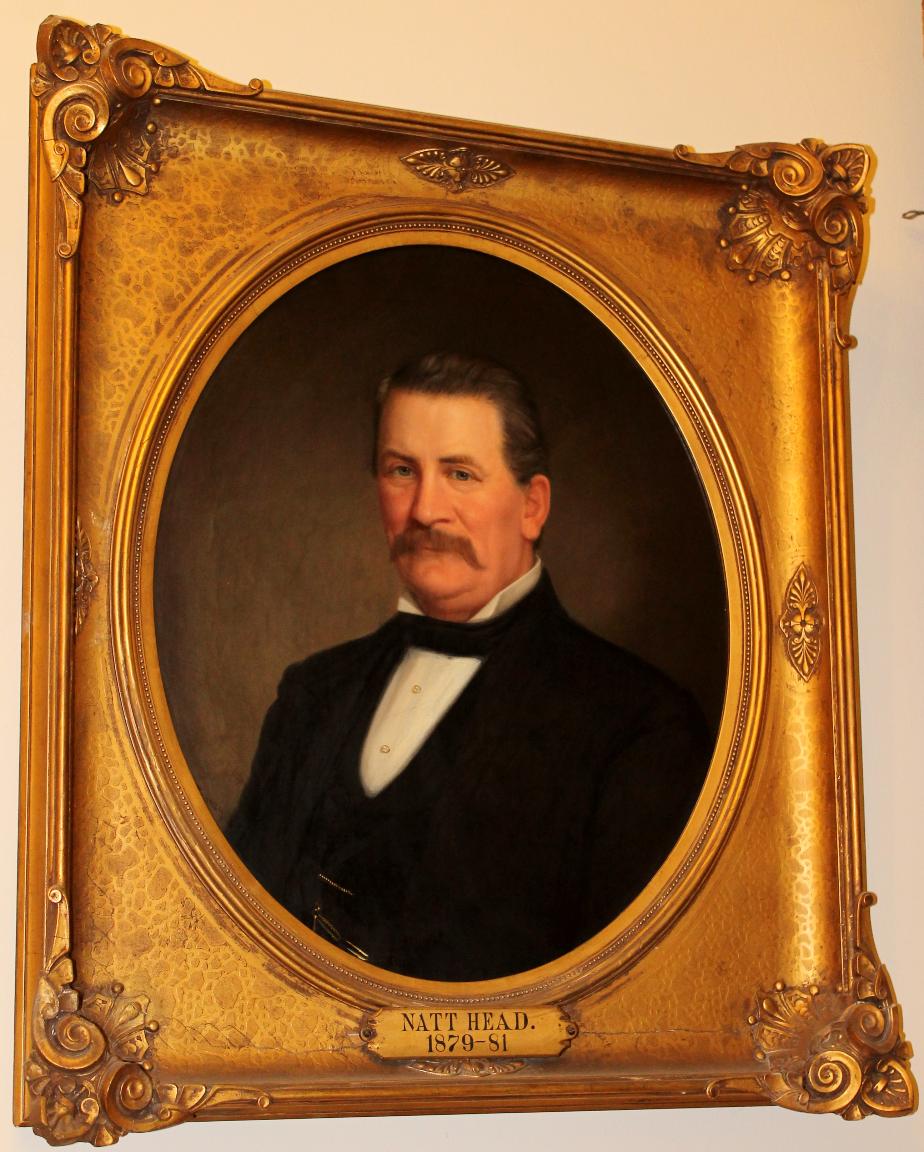
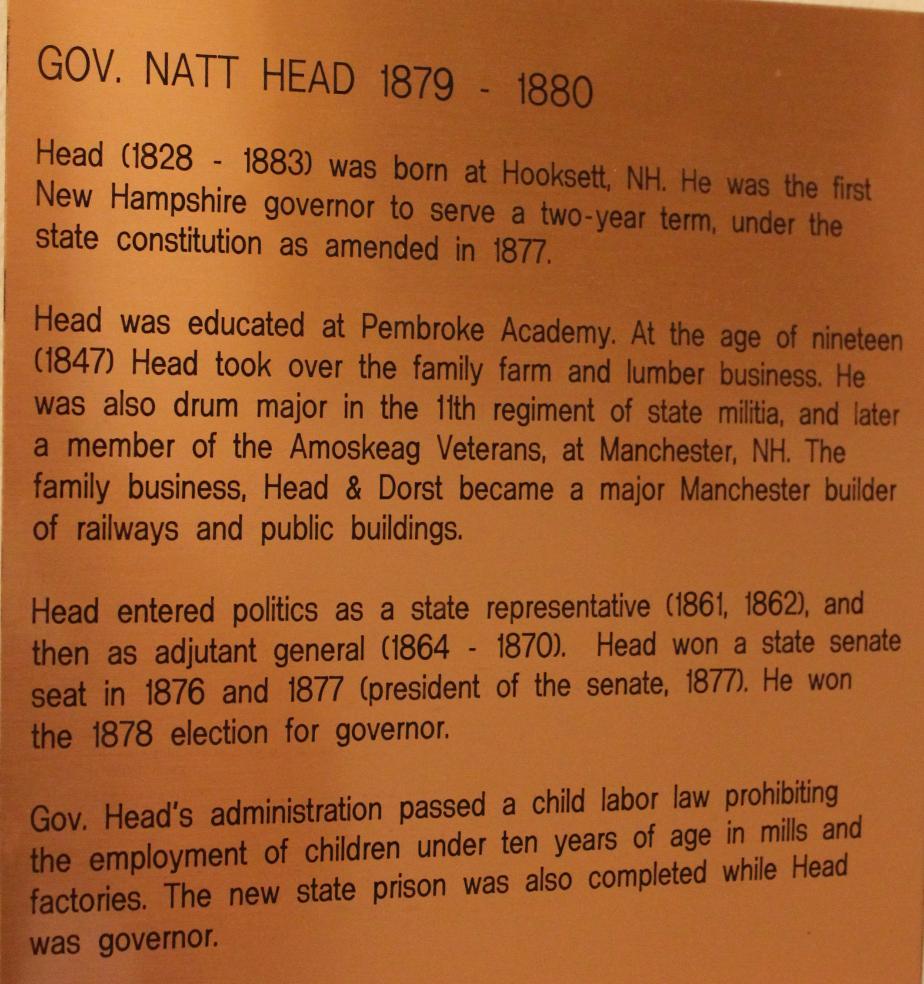
Henry Hibbard - NH Senate President (1847-1848) /
US Congressman (1849-1855)
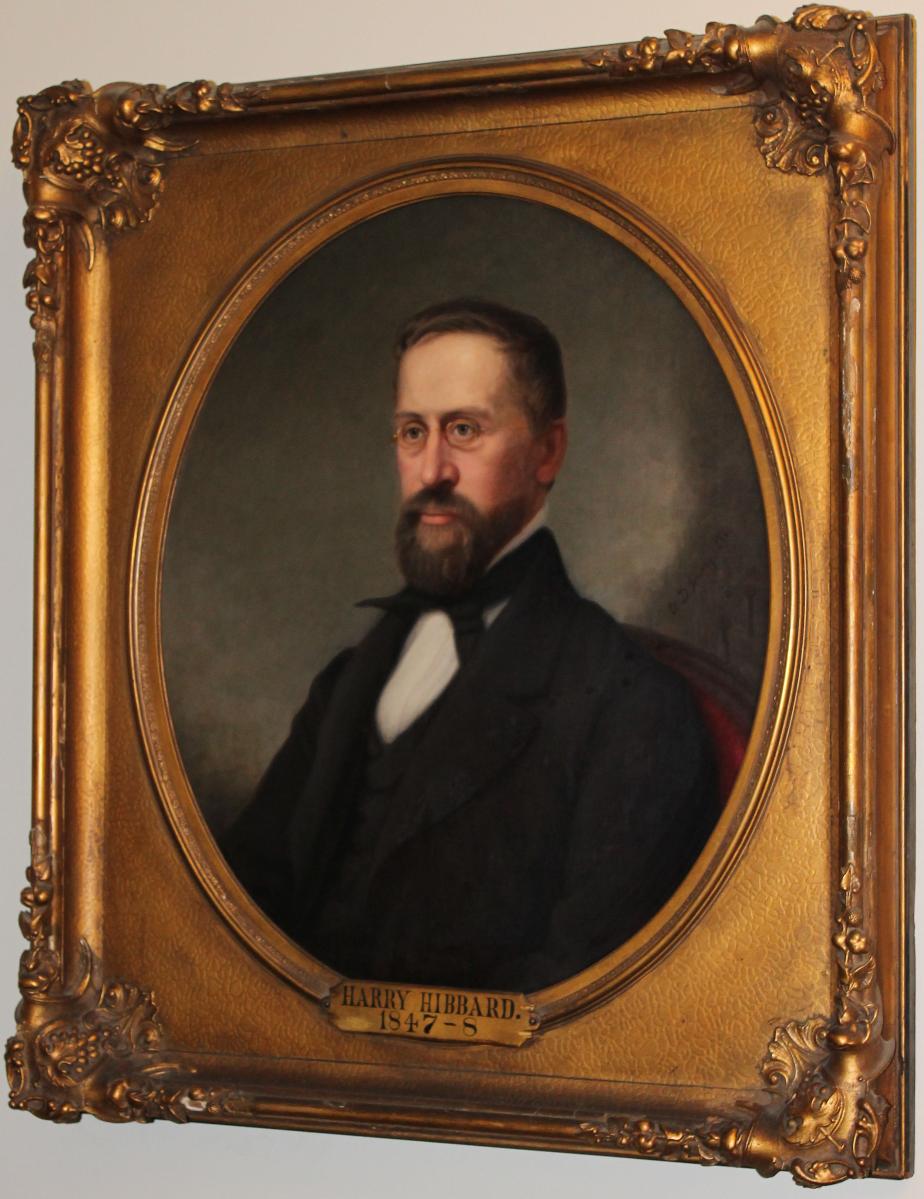
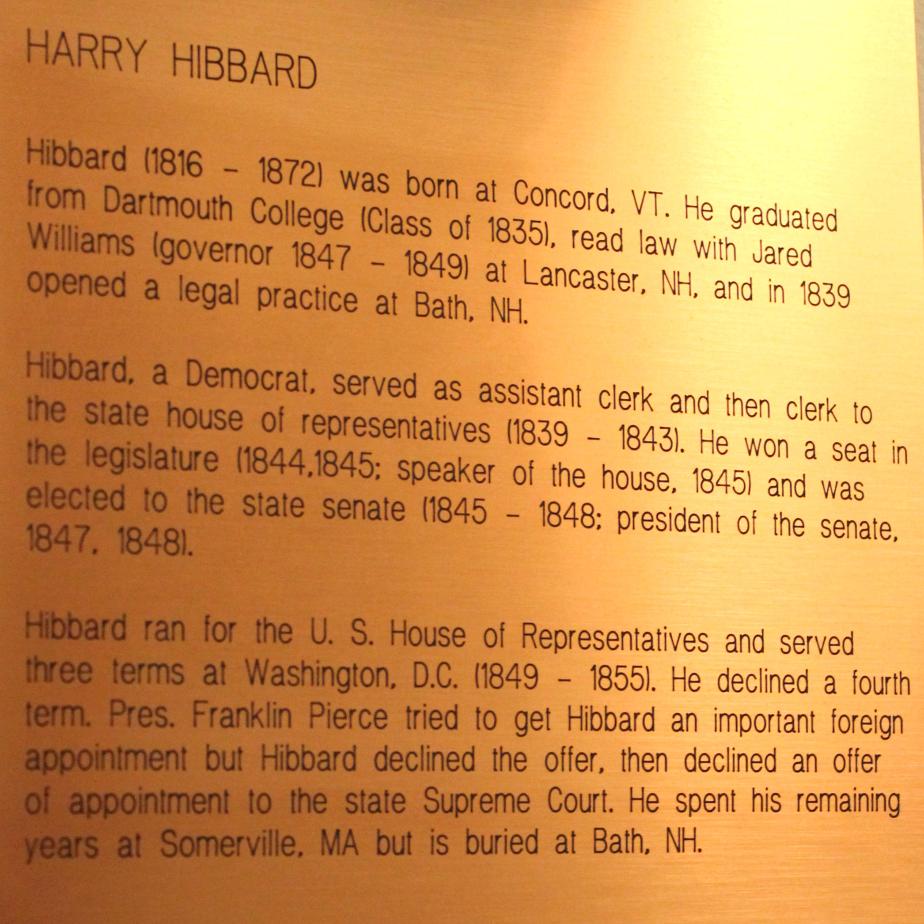
Governor Isaac Hill: 1836 - 1839
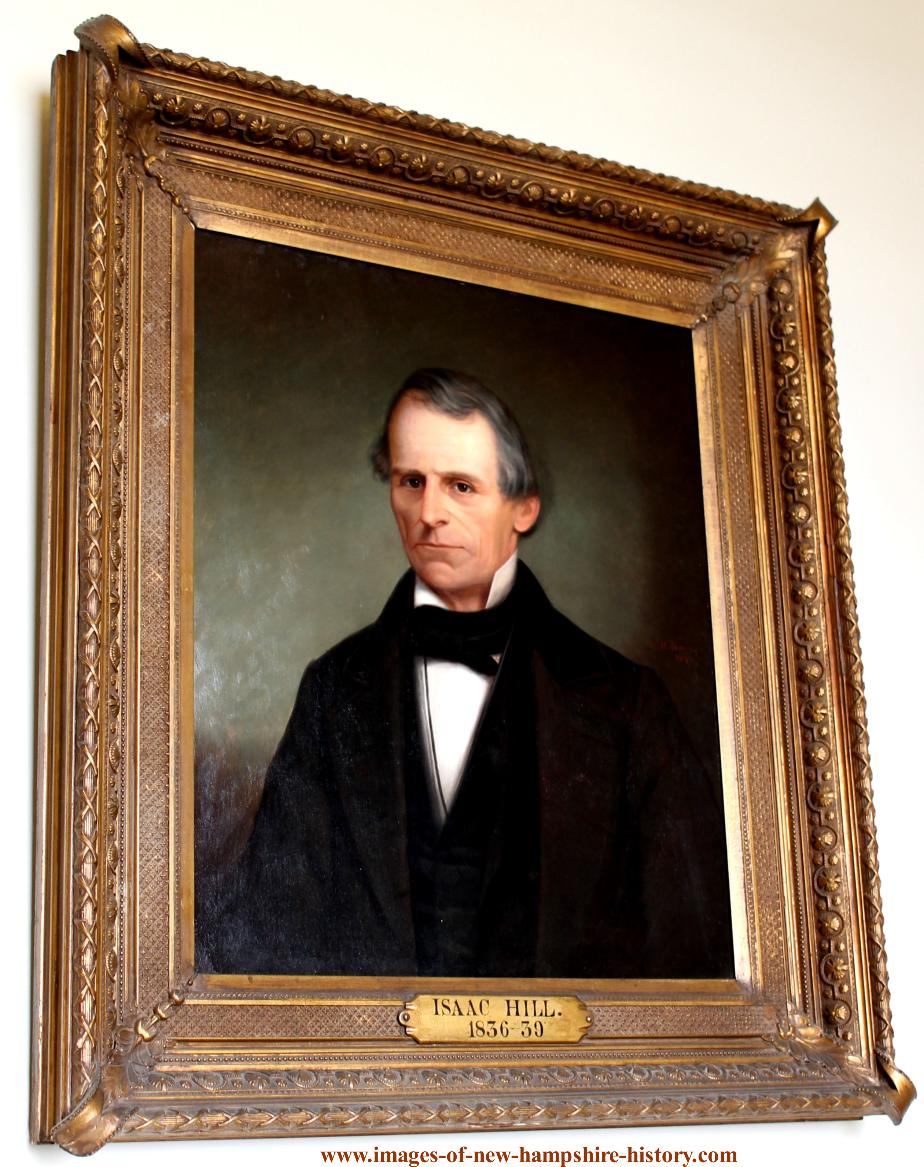
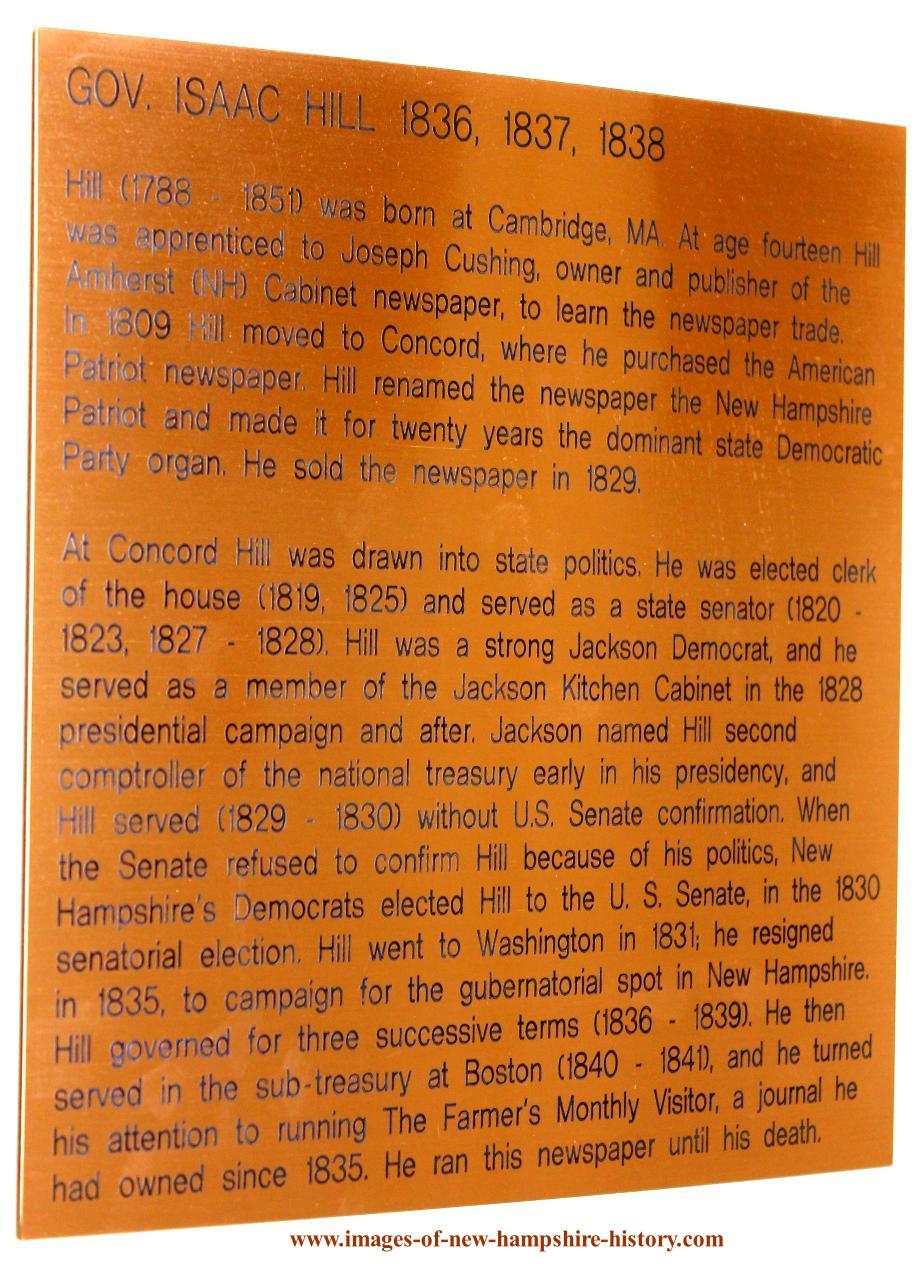
Henry Hubbard: NH Governor 1842-1844
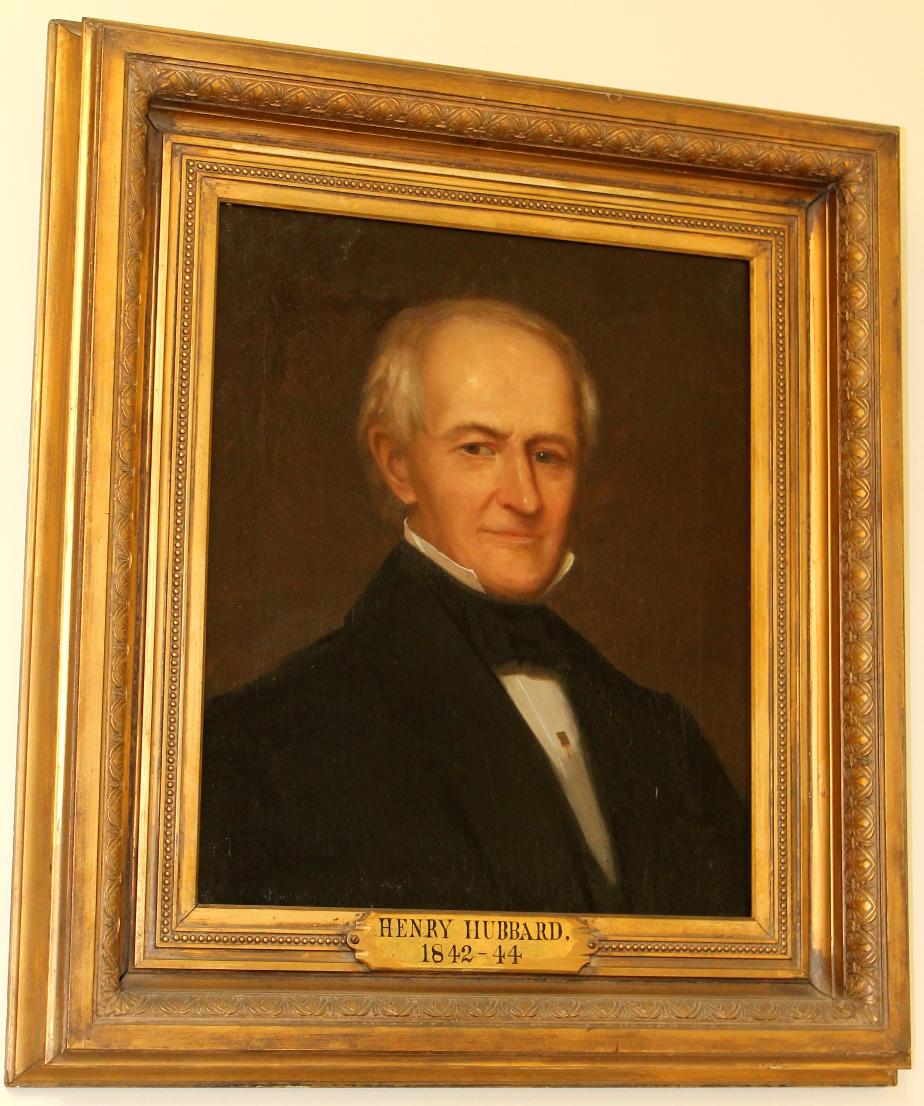
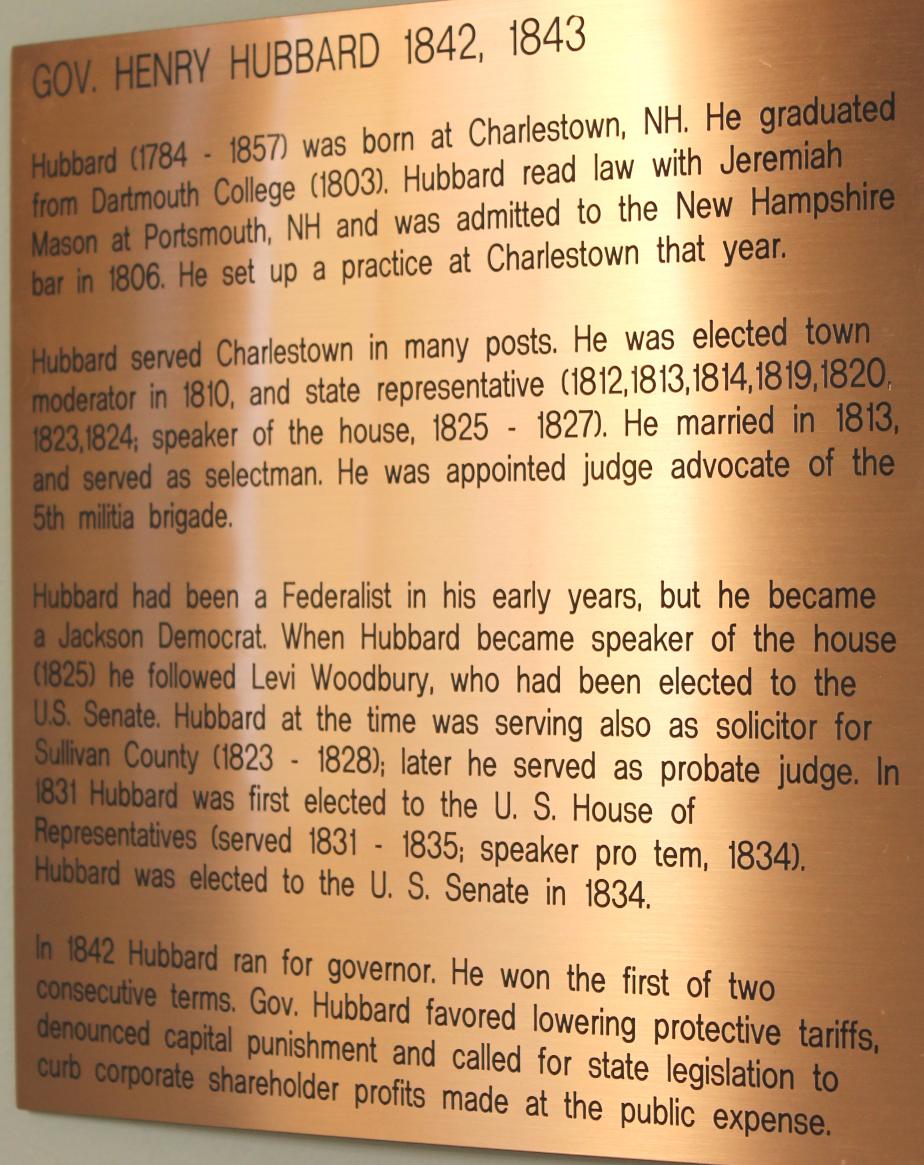
Richard Jenness (Deerfield) - President of Senate 1805
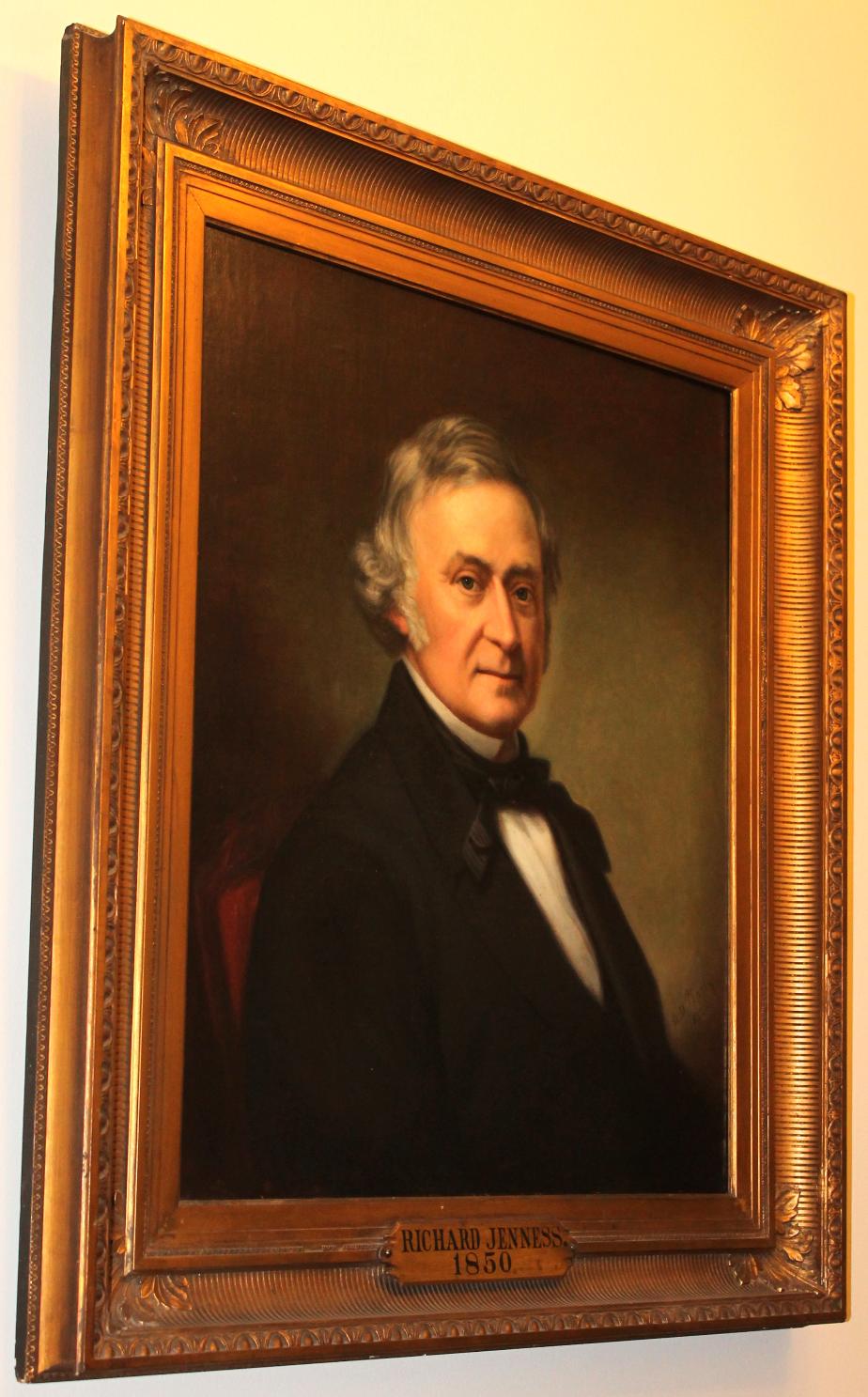
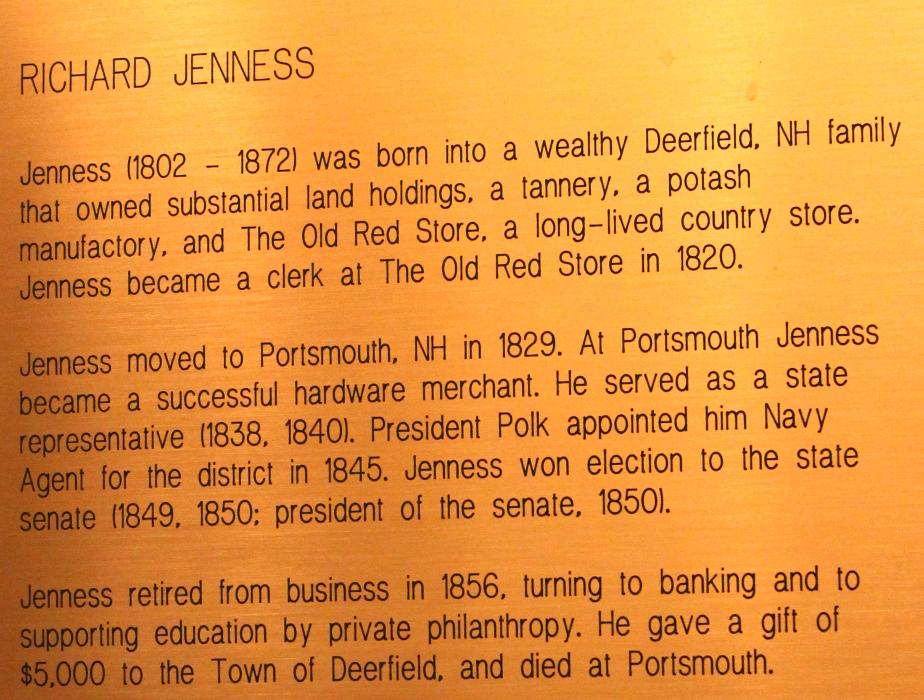
Samuel Jones - State Senate President - 1838
(Hopkington NH)
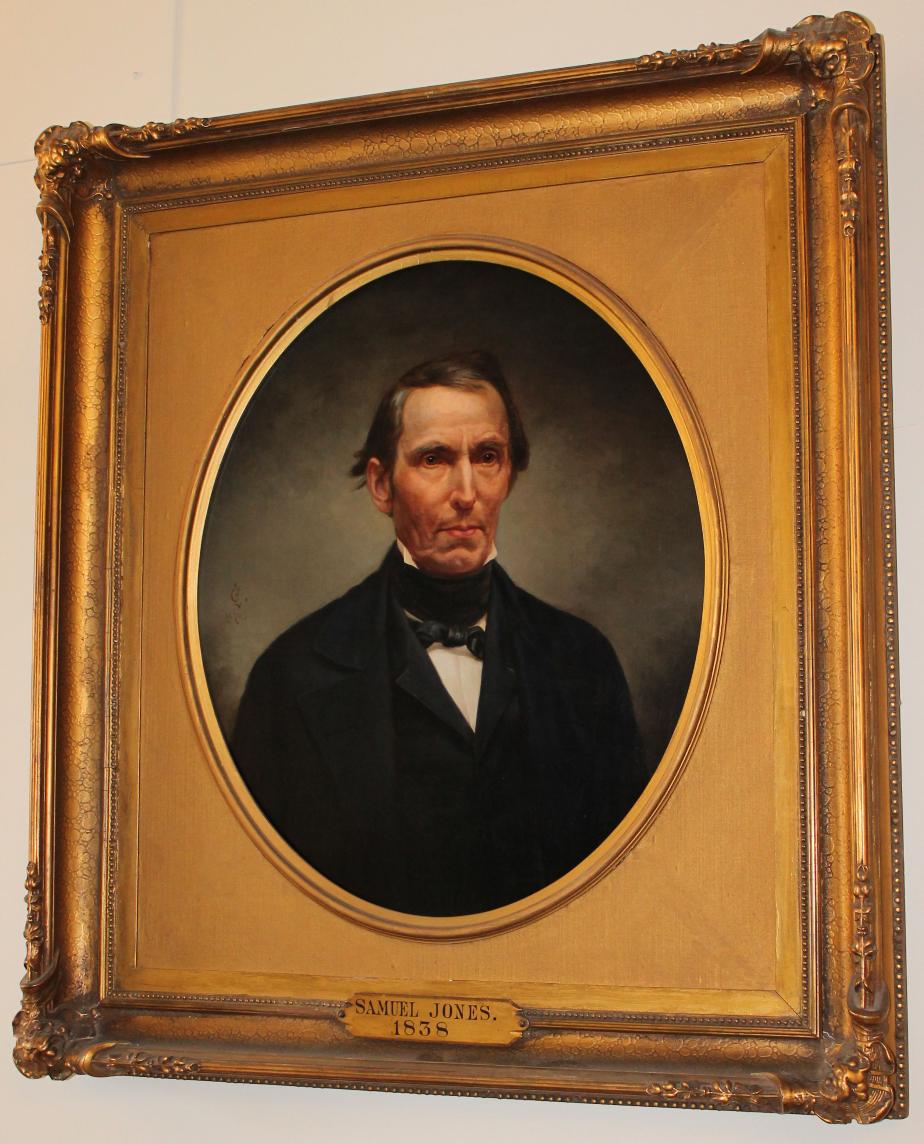
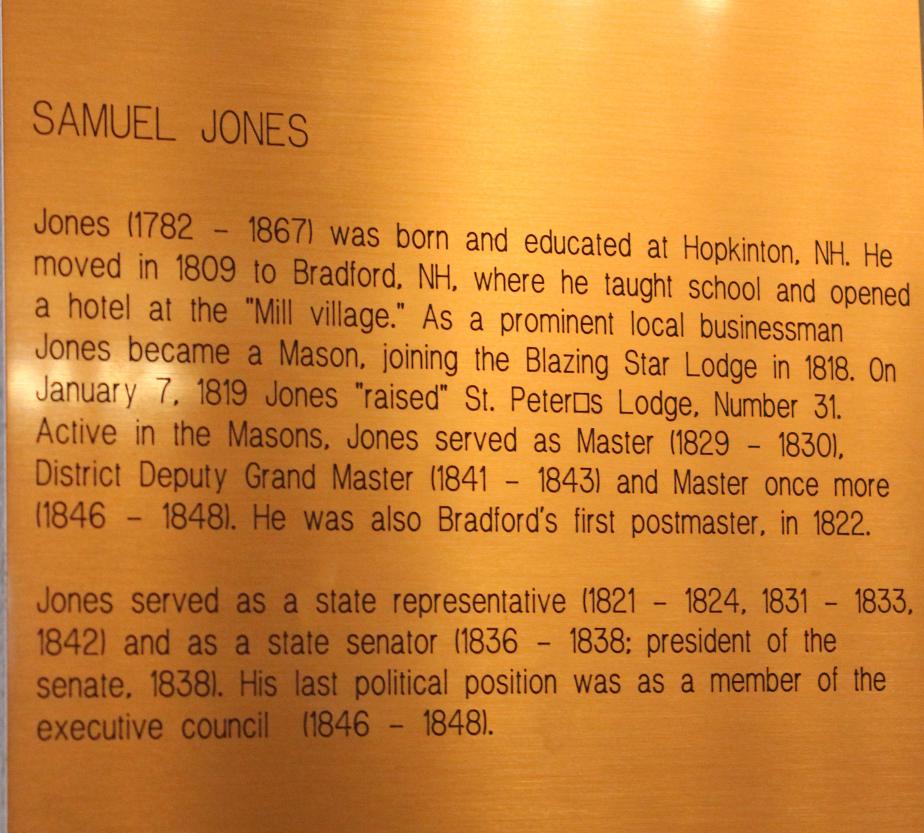
Governor Chester B Jordan 1901 - 1903
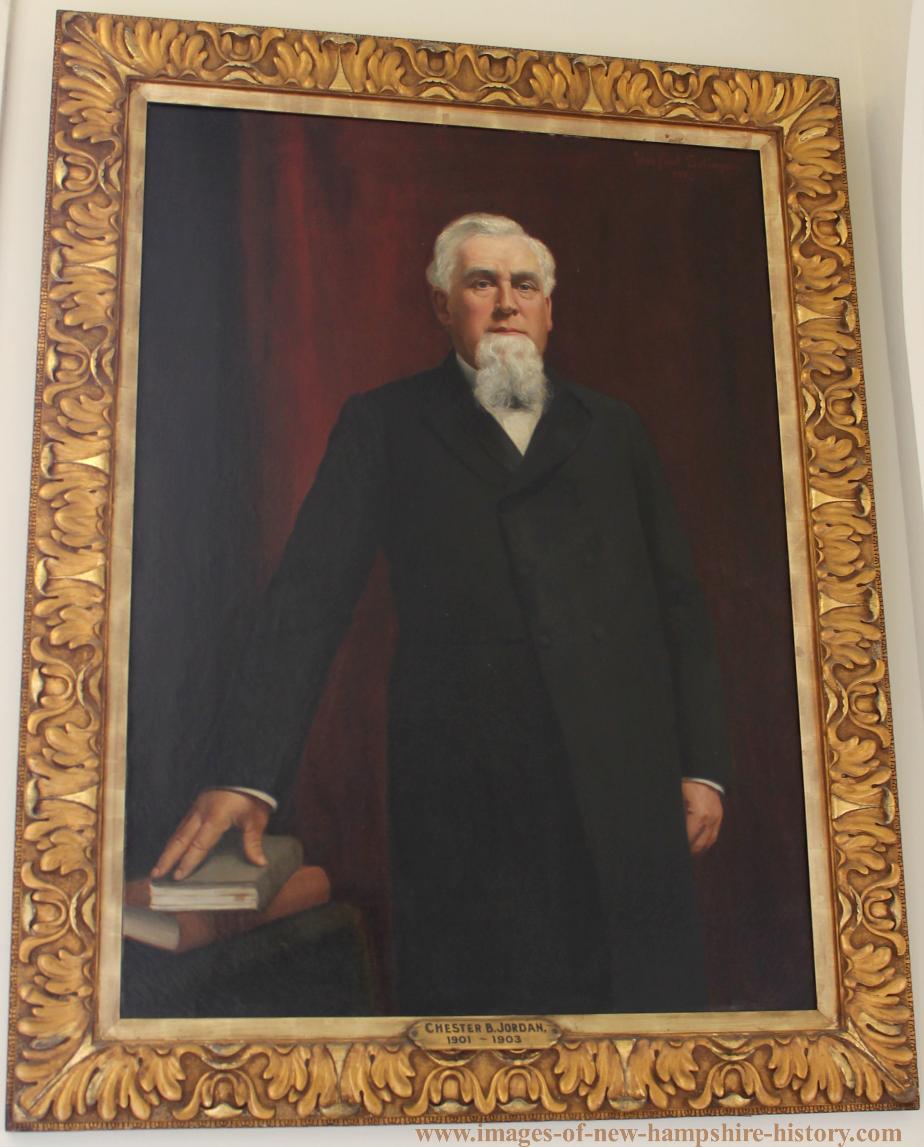
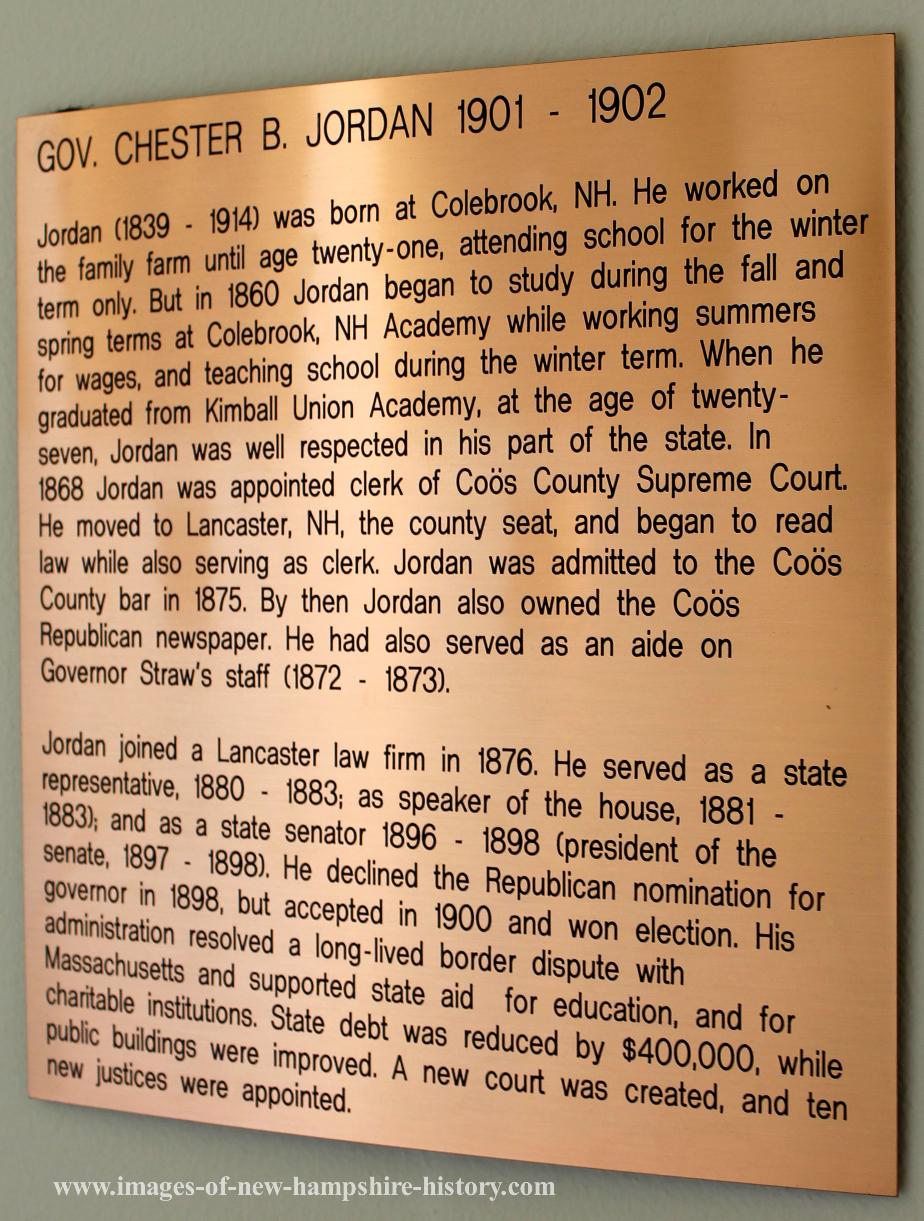
John H Kent - Portsmouth City Marshall -
Sheriff of Rockingham County

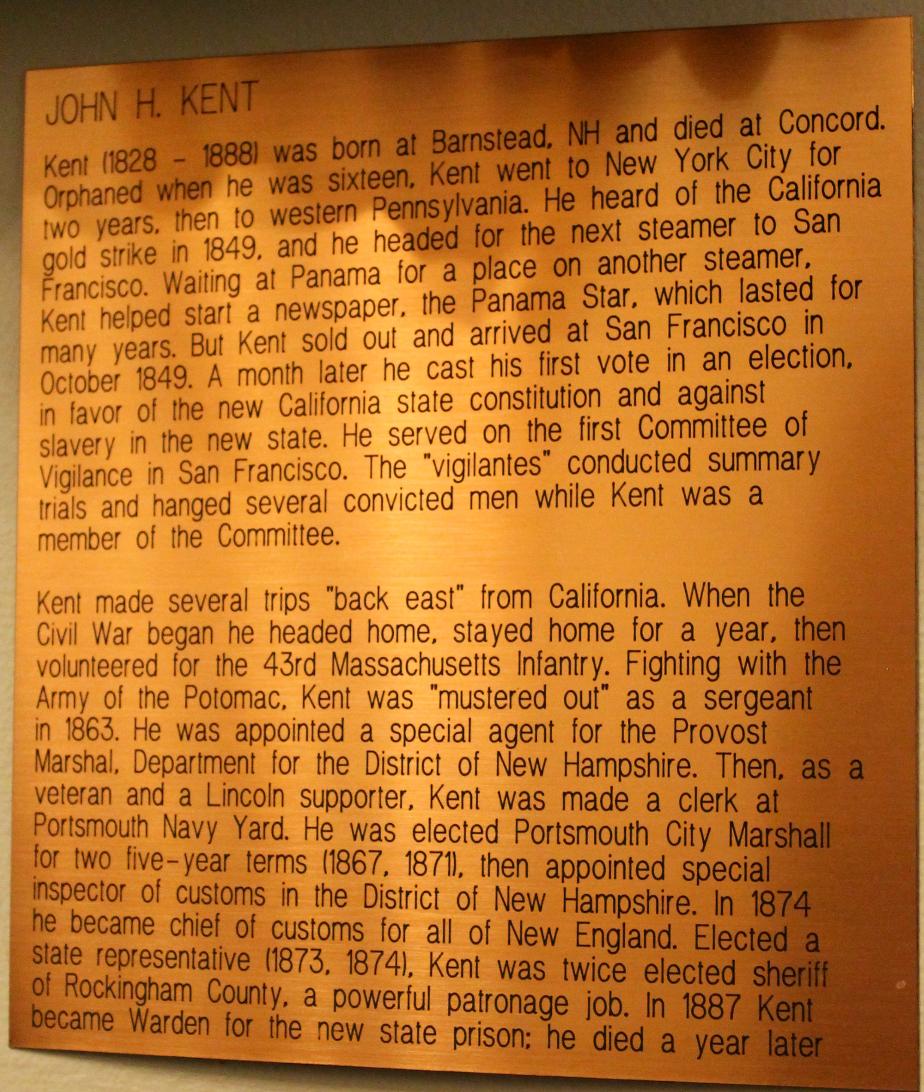
Governor Henry W. Keyes - 1917 - 1918
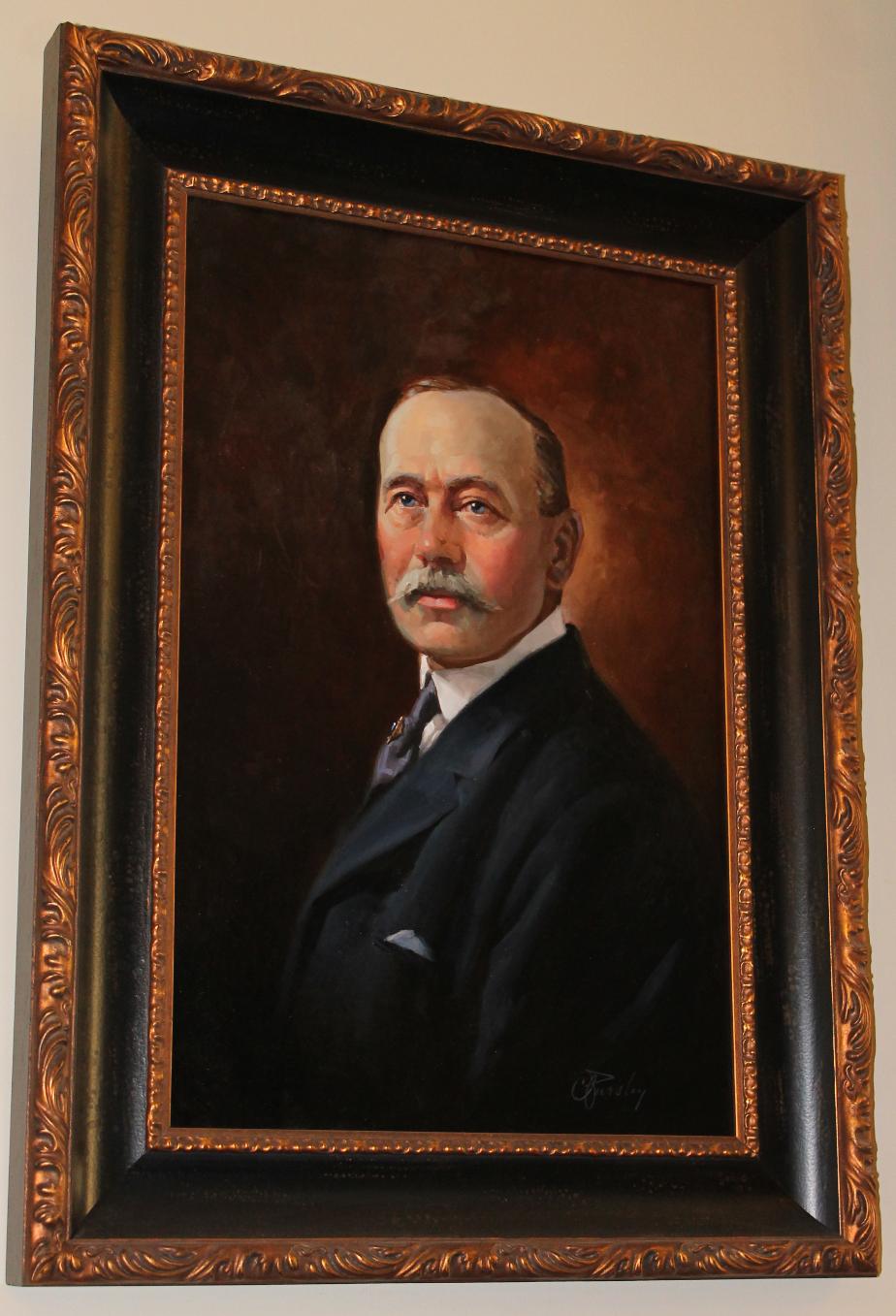
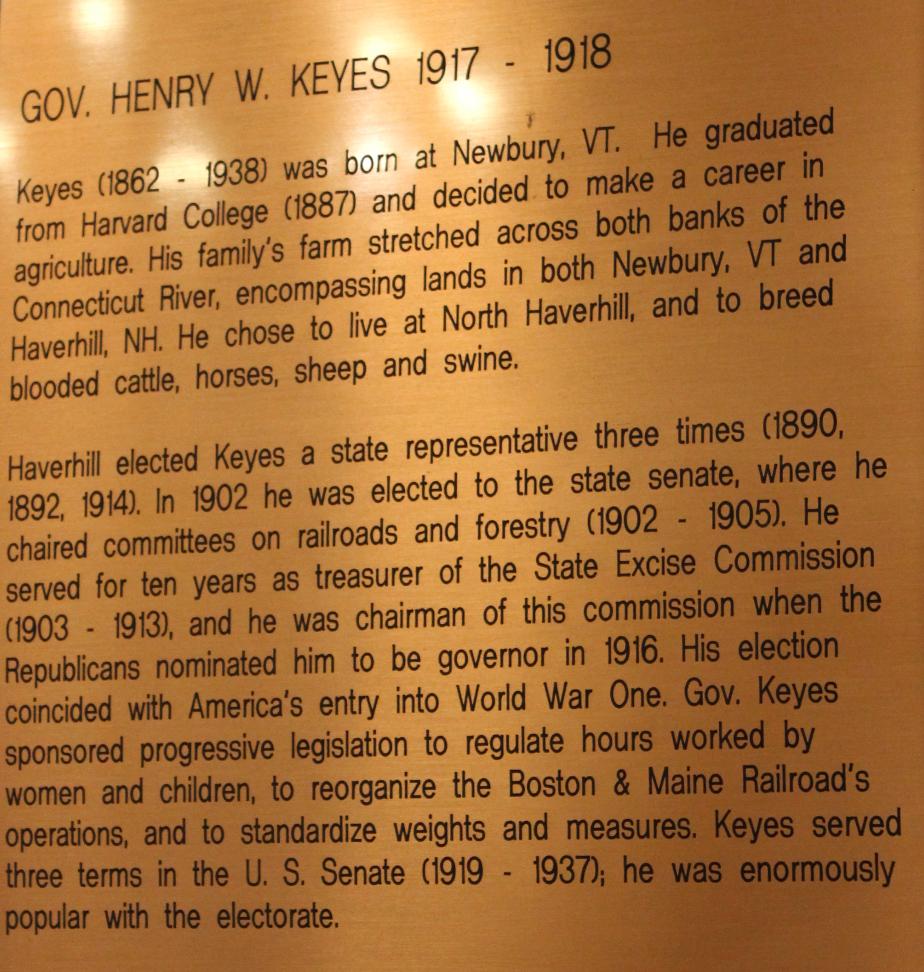
John Kimball - New Hampshire Senate President (1881-1883) Canterbury NH
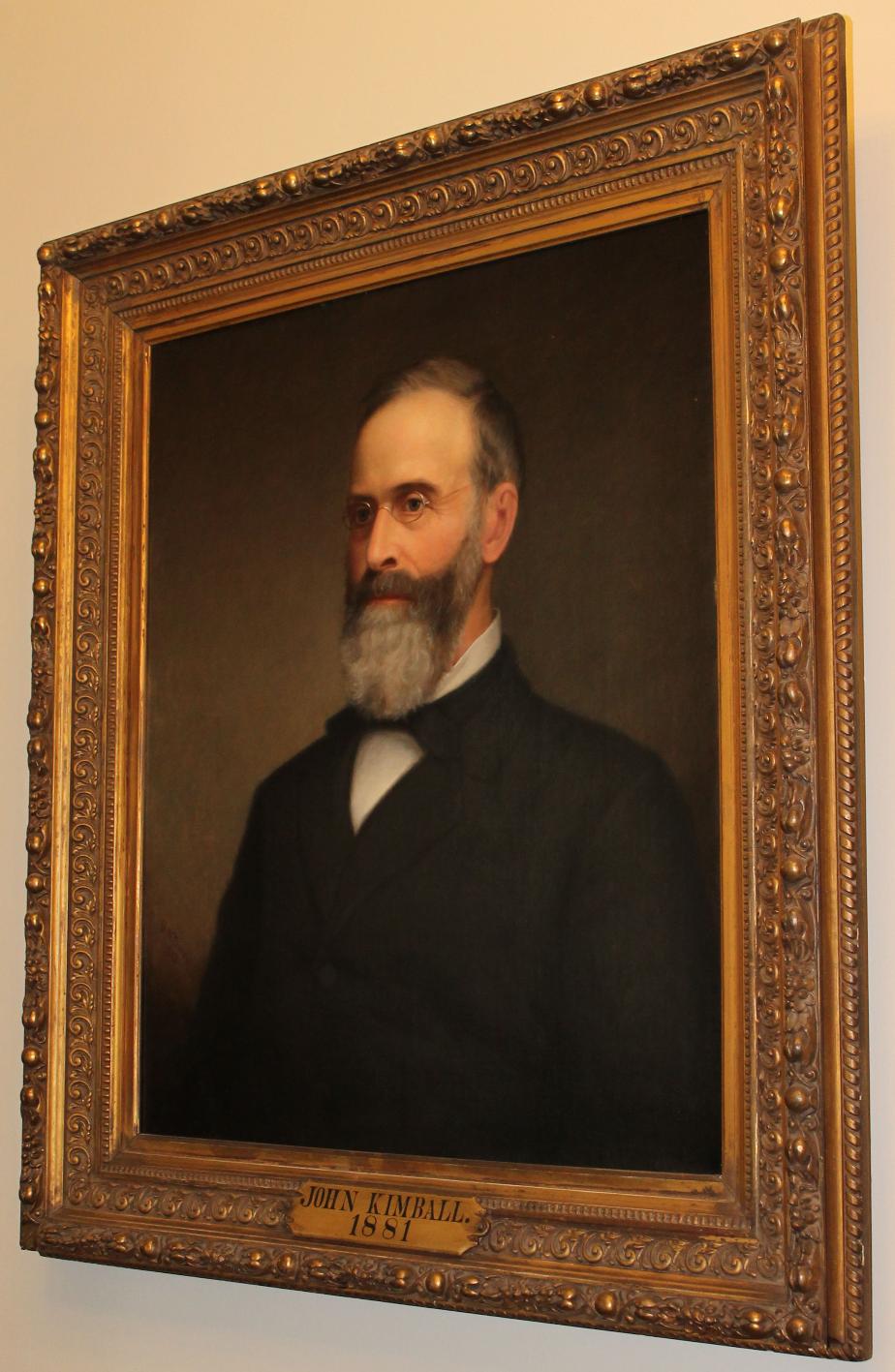
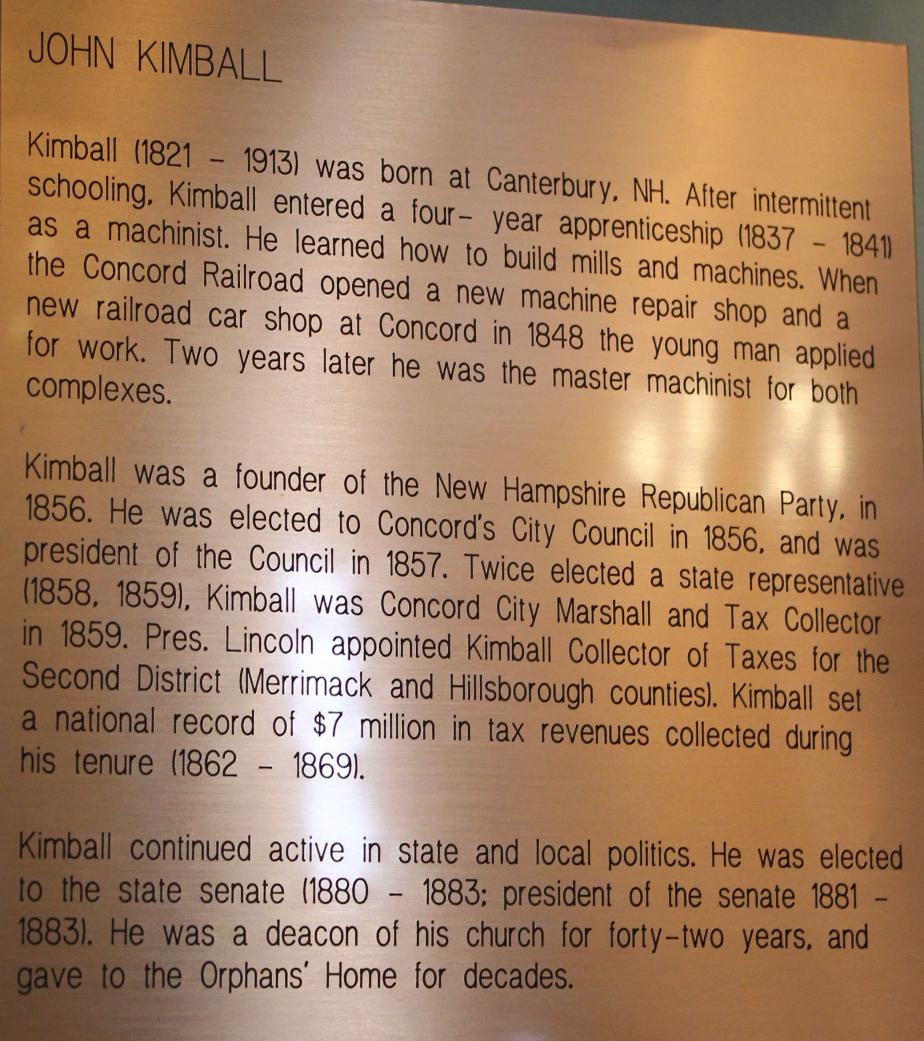
John W. King (Manchester) Governor 1963 - 1969
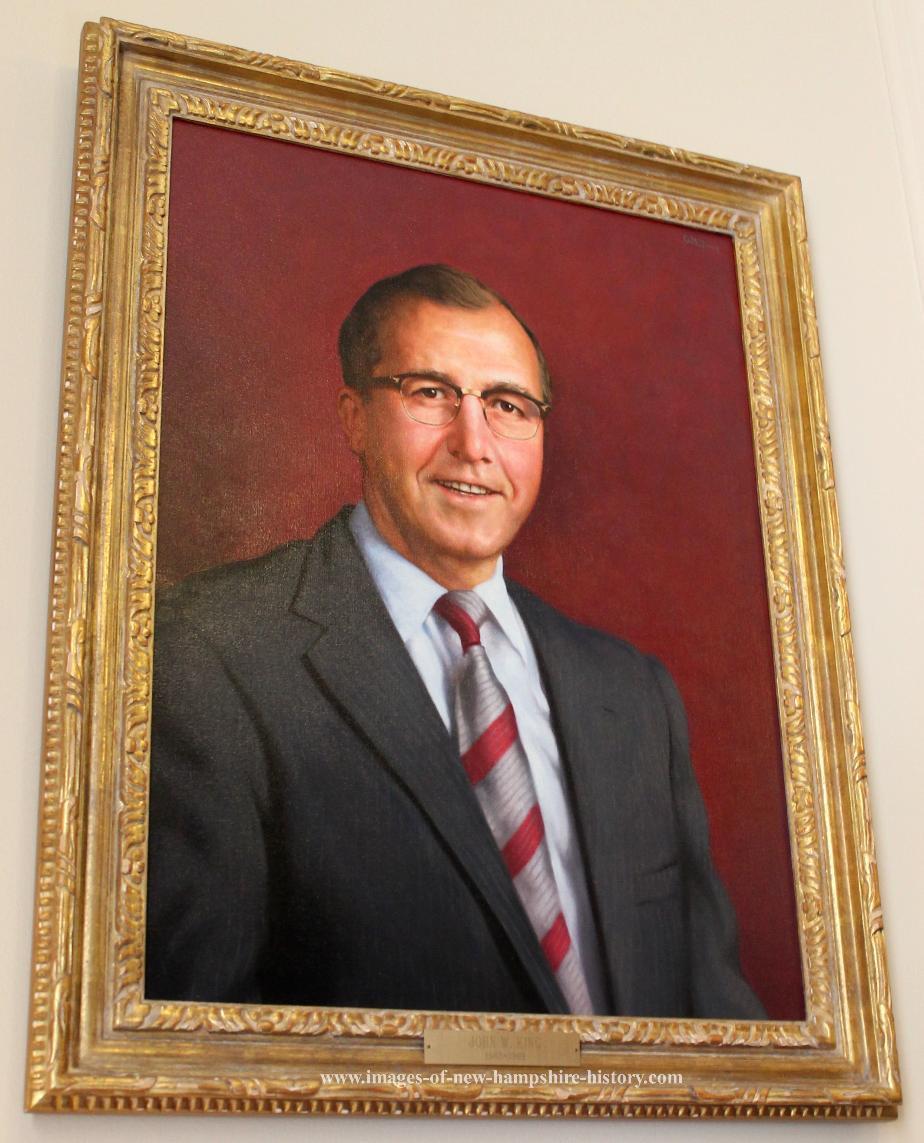
JOHN W. KING, the eighty-first governor of New Hampshire, was born in Manchester, New Hampshire on October 10, 1918. His education was attained at Harvard University, where he earned an A.B. degree in 1938, and an M.A. degree in public law in 1941. He then attended Columbia University, where he earned an LL.B. degree in 1943. After practicing law in New York and New Hampshire, King entered into politics. In 1957, he chaired the Manchester delegation in the New Hampshire House of Representatives, as well as serving as the minority leader of the house in 1959 and 1961. King next secured the Democratic gubernatorial nomination, and was elected governor by a popular vote in 1962. He won reelection in 1964 and 1966. During his tenure, the Robert Frost historic homestead was established; a state lottery game was initiated that funded the advancement of the state’s school system; the home rule for state cities was improved; and the judicial system was updated. After completing his term, King served as a justice on the New Hampshire Supreme Court from 1979 to 1986, serving as chief justice from 1981 to 1986. Governor John W. King passed away on August 9, 1996, and was buried in the New St. Joseph’s Cemetery in Bedford, New Hampshire.
John Langdon - NH Governor 1785 - 1812
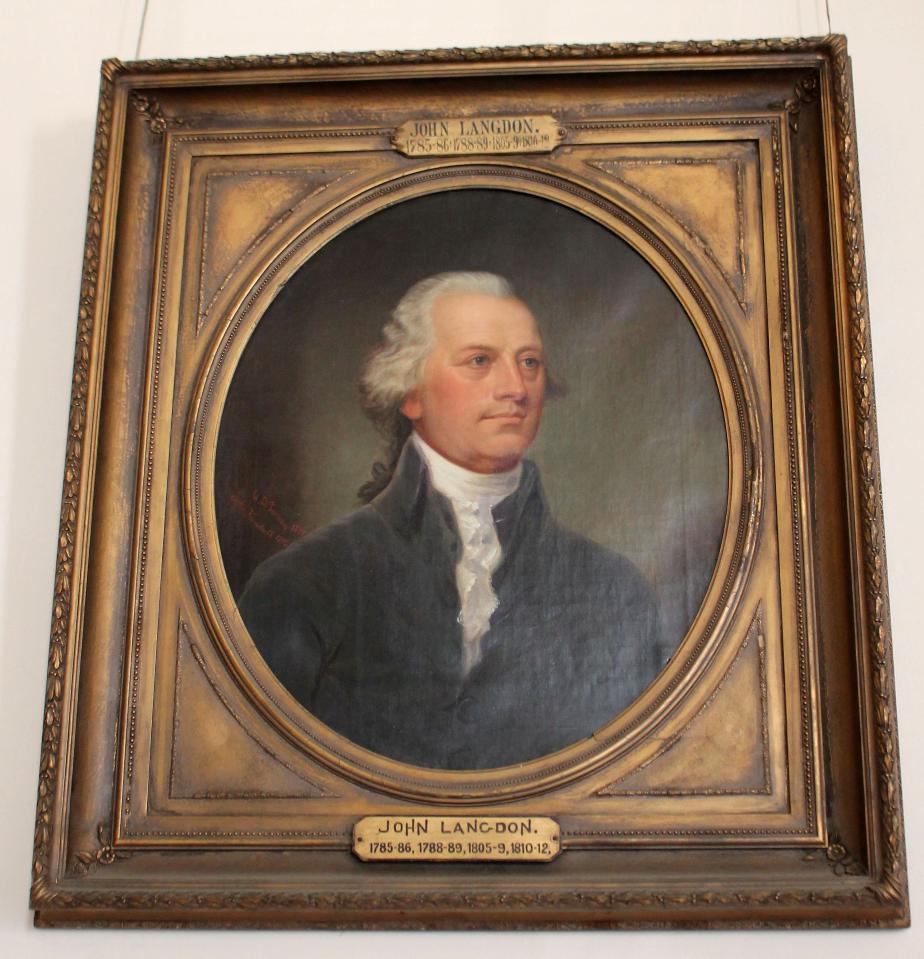
JOHN LANGDON, a four-term governor (then called president) of New Hampshire, was born in Portsmouth, New Hampshire on June 26, 1741. His education was limited and attained at the Hale Latin Grammar School. Before entering into politics, he worked as a sea captain and merchant. Langdon favored independence from England and took an active part it the revolutionary movement. He participated in the capture of Fort William and Mary, as well as in the marches on Bennington and Rhode Island. Langdon first entered politics as a member of the House of Representatives of the last Royal Assembly of New Hampshire. He served as a member of the Continental Congress in 1775 and 1776, and was the state naval agent in the 1778 Congress. He also served as a member and speaker of the New Hampshire House of Representatives, 1776 to 1782 and 1786 to 1787, and was a member of the New Hampshire State Senate from 1784 to 1785. Langdon was first elected president (governor) of New Hampshire in 1785, winning reelection in 1788, 1805, and 1810. Between his gubernatorial terms, he served as a delegate to the 1787 Federal Constitutional Convention, as well as serving again in the Continental Congress. He also served as a member and president of the U.S. Senate from 1789 to 1801, and was a member of the New Hampshire House of Representatives from 1801 to 1805. After declining an 1812 vice presidential nomination, Langdon retired from political life. Governor John Langdon passed away on September 18, 1819, and was buried in the Langdon tomb in the North Cemetery in Portsmouth, New Hampshire.
Woodbury Langdon - State House Senate Chamber
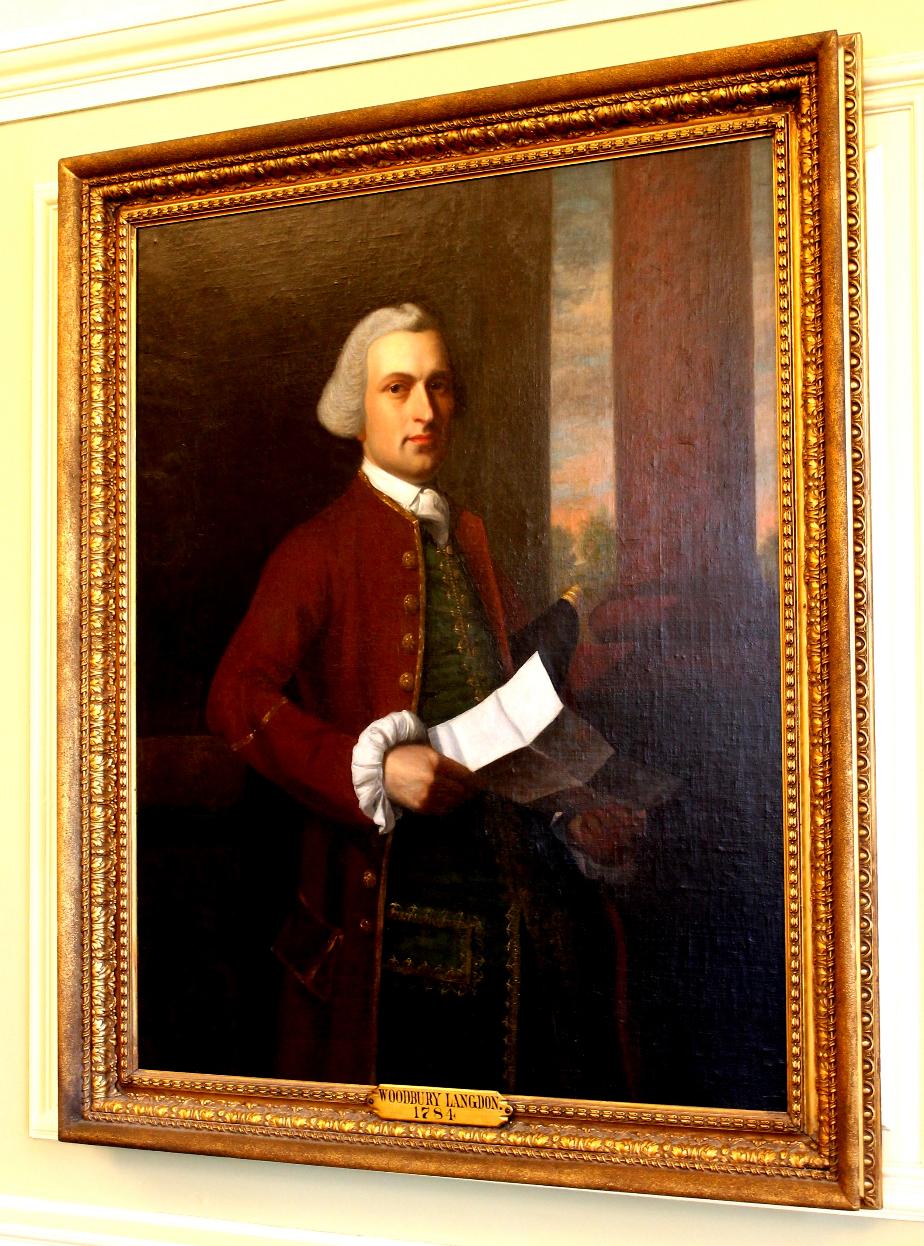
Woodbury Langdon, (brother of John Langdon), a Delegate from New Hampshire; born in Portsmouth, N.H., in 1739; attended the public schools; engaged in mercantile pursuits; prominent in pre-Revolutionary affairs and throughout the war; served in the state house of representatives in 1778 and 1779; Member of the Continental Congress in 1779; member of the state executive council 1781-1784; judge of the state superior court in 1782 and again from 1786 to January 1791, when he resigned; appointed in December 1790 by President Washington a commissioner to settle Revolutionary War claims; died in Portsmouth, N.H., January 13, 1805; interment in the North Cemetery.
Abraham Lincoln - NH State House Legislative Chamber
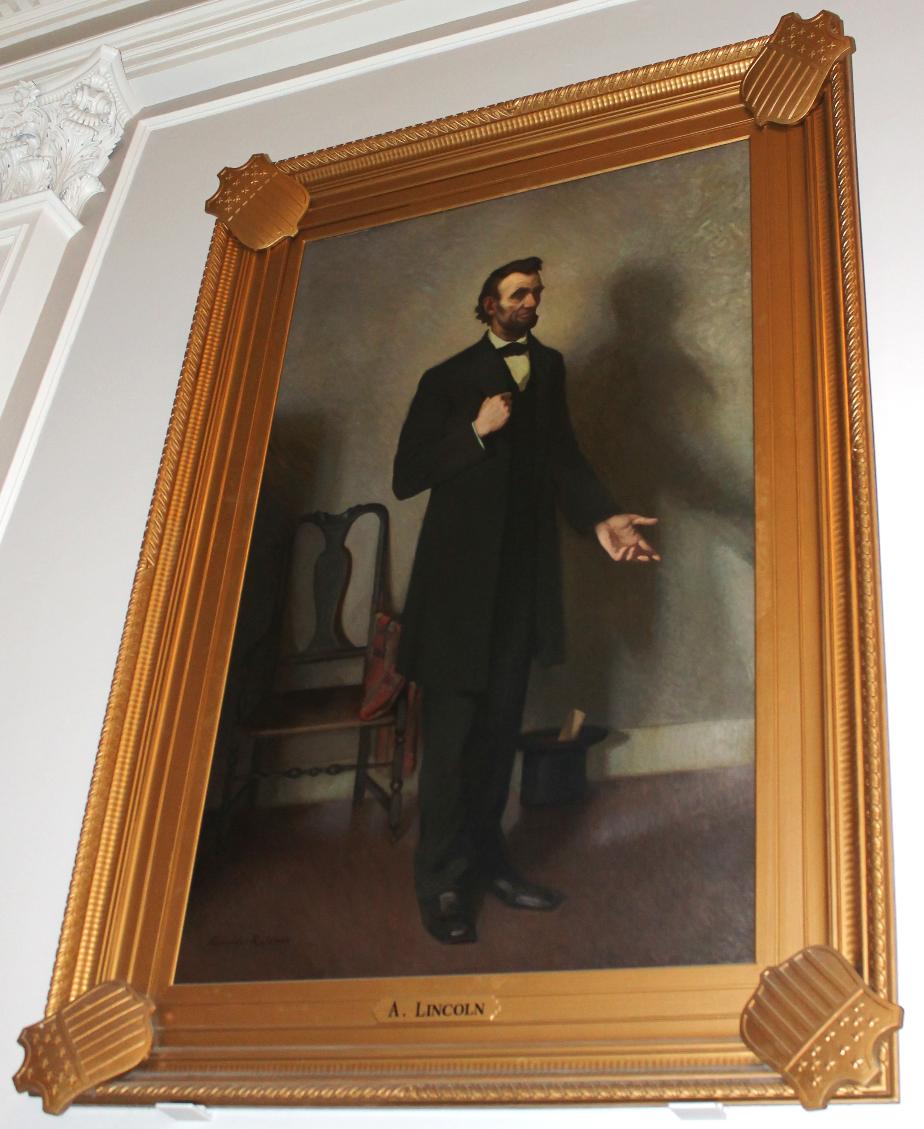
Harry T Lord - NH State Senate President 1909-1910
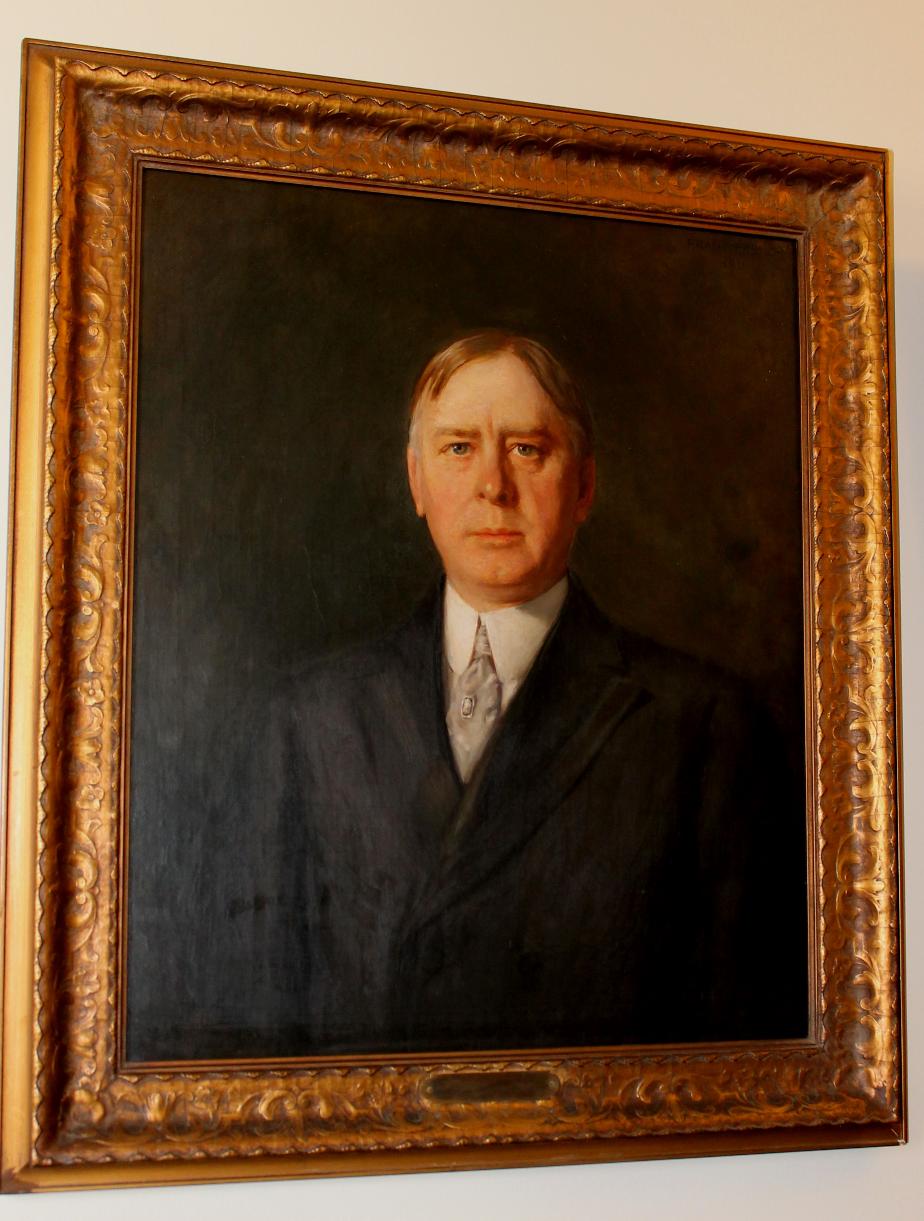
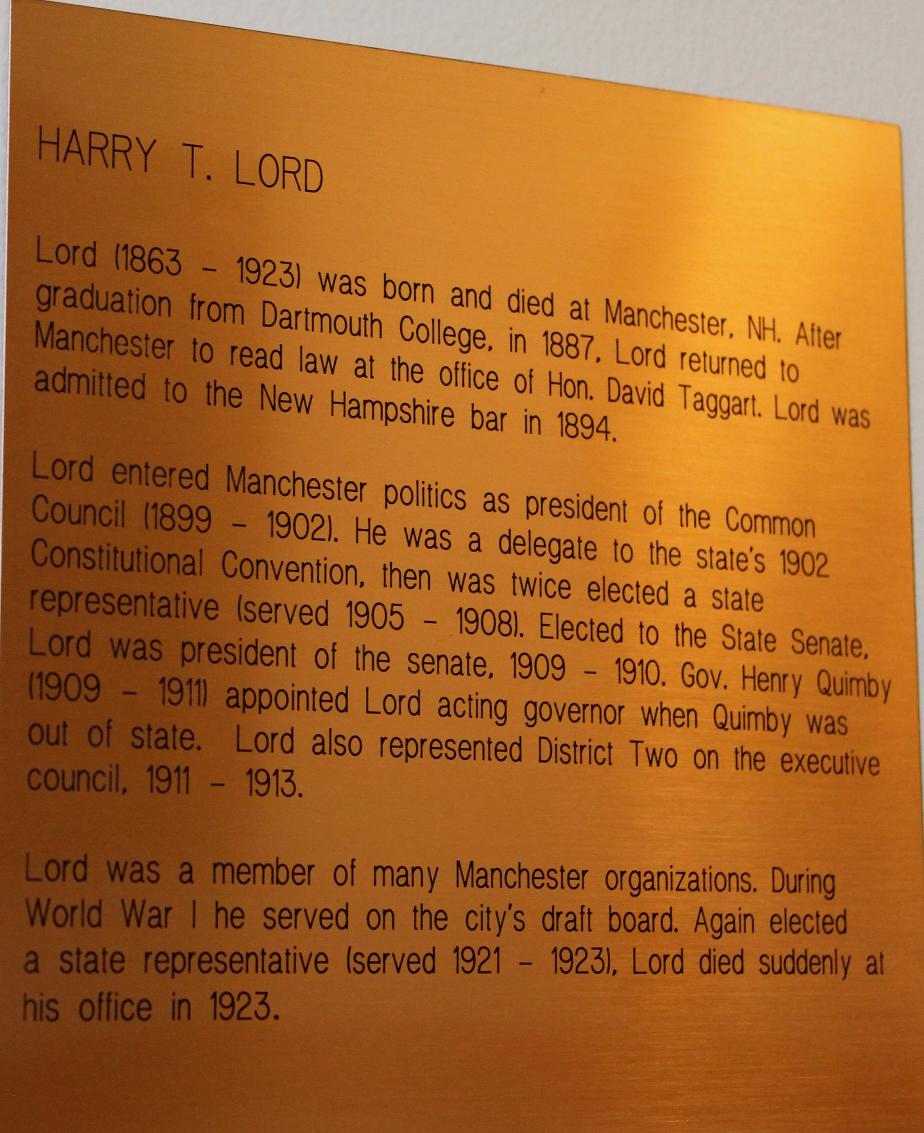
Governor Noah Martin - 1852 - 1854
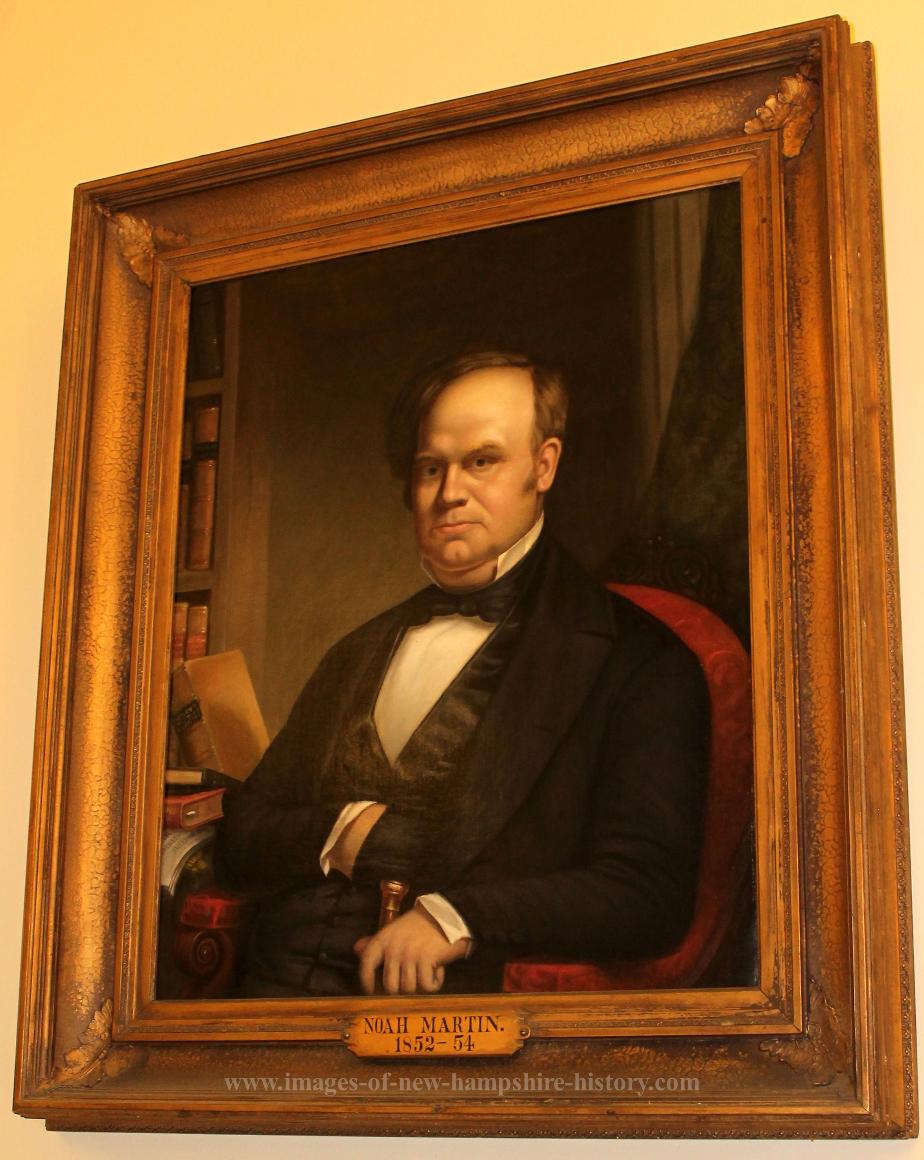

Aaron Matson - US Congressman (1821-1825) Stoddard NH
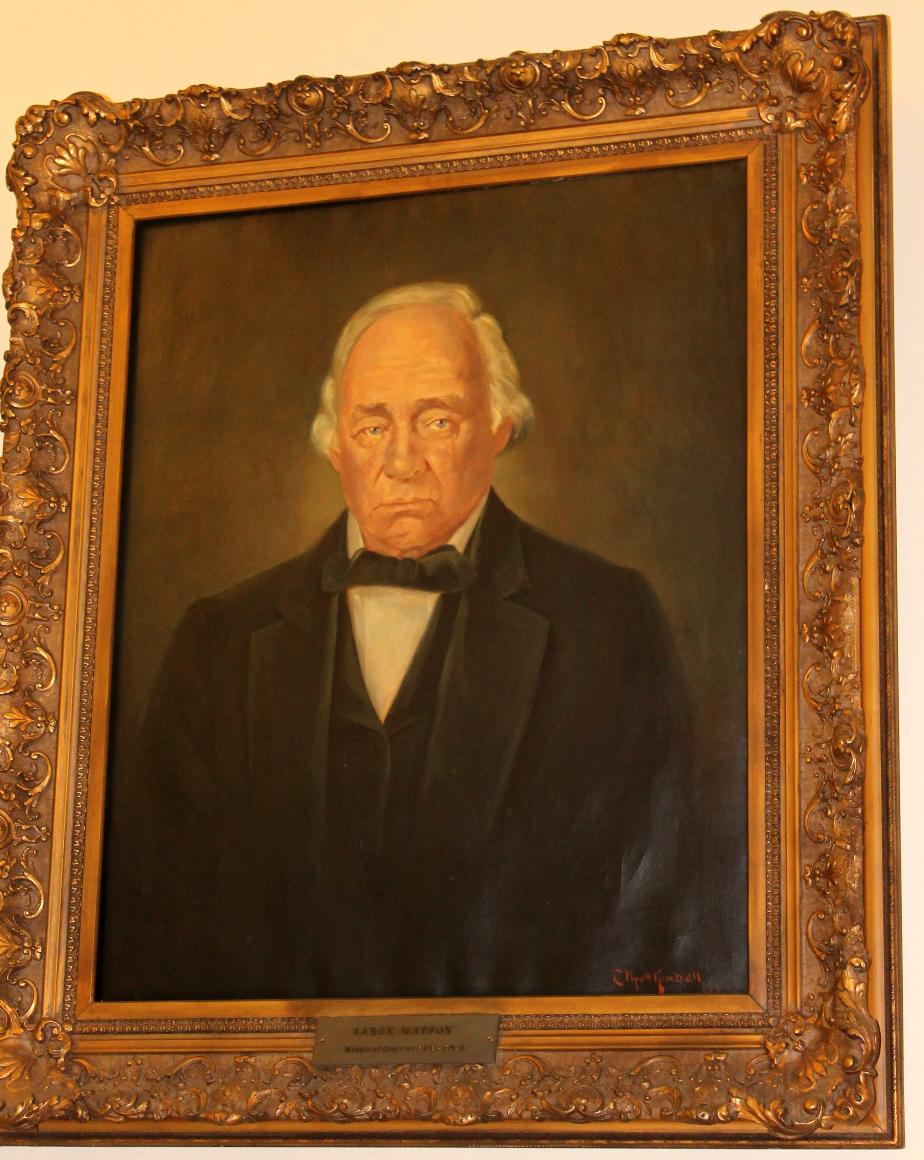
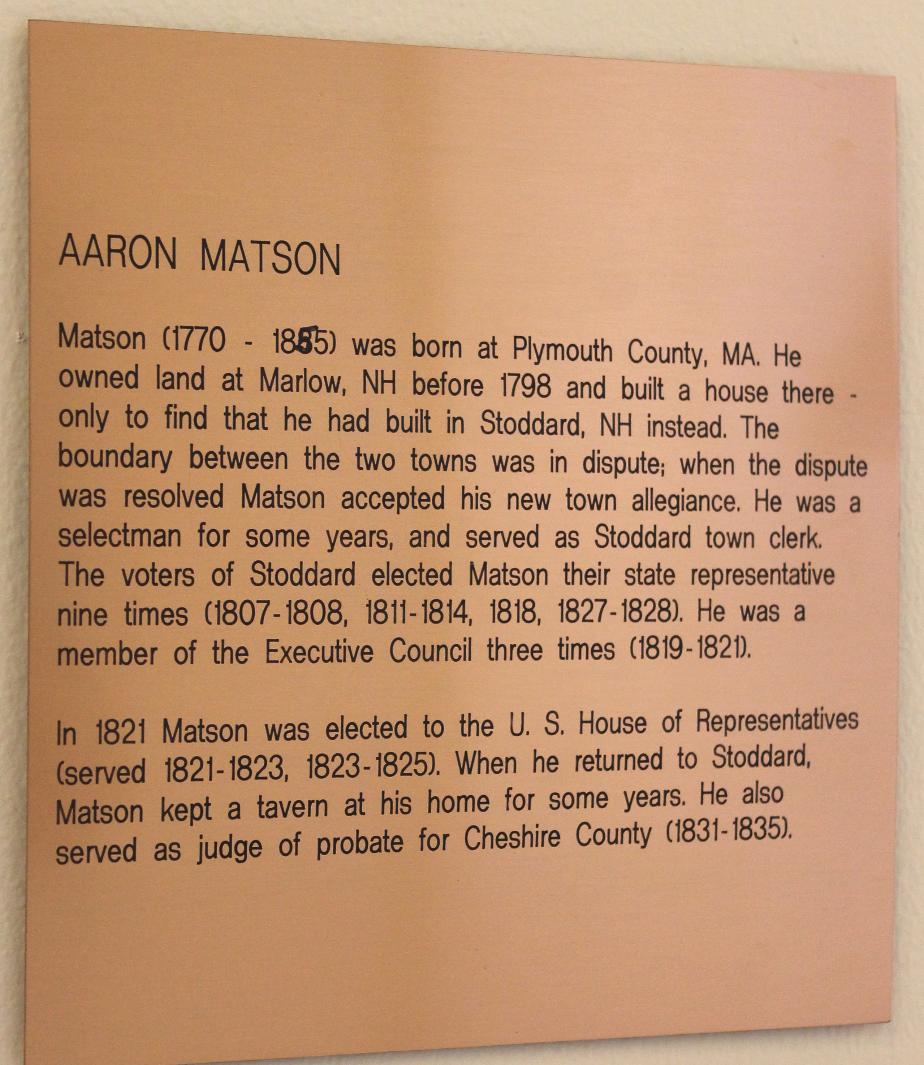
Senator Thomas J. McIntyre (Laconia)
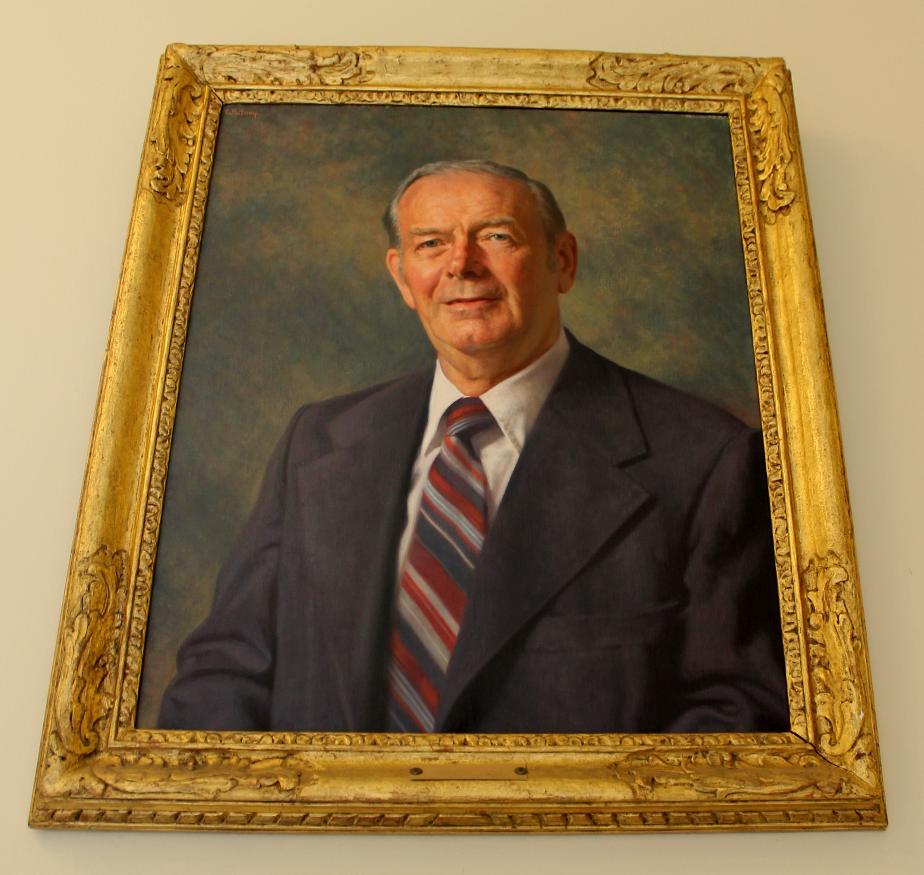
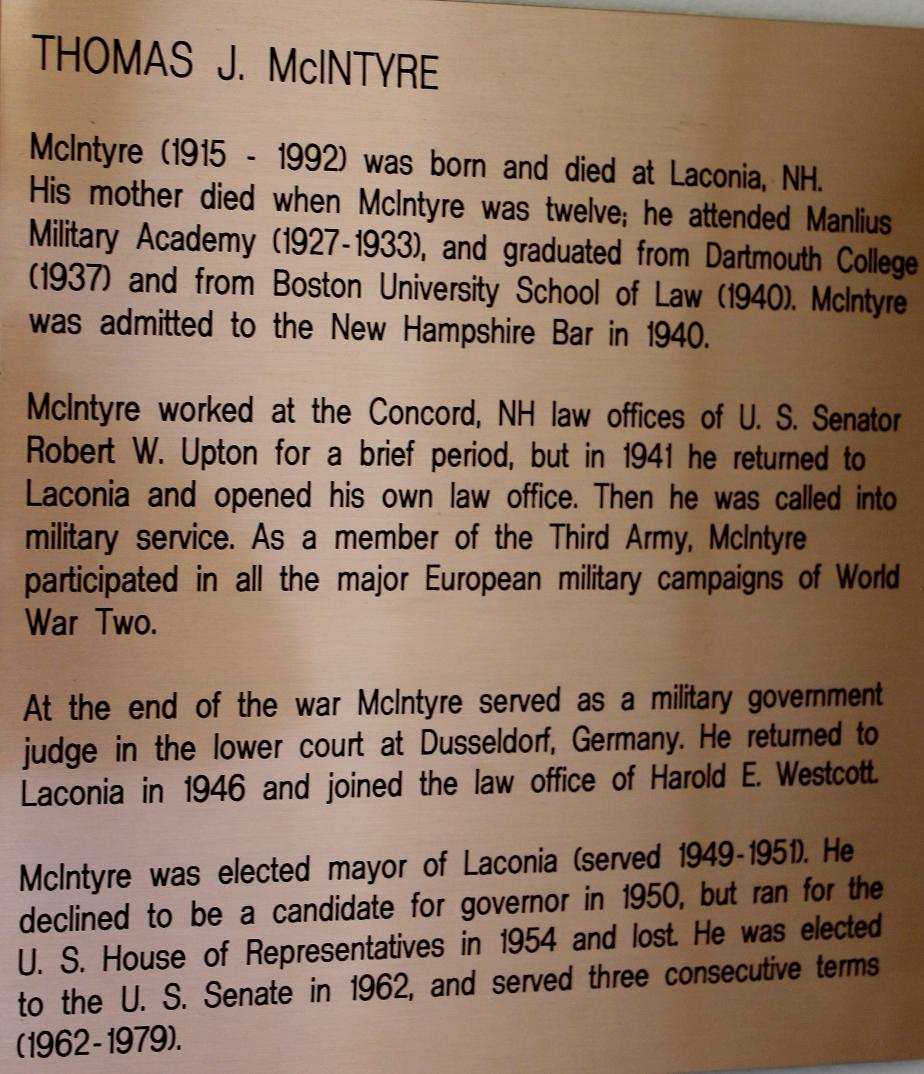
Governor John McLane 1905 - 1907
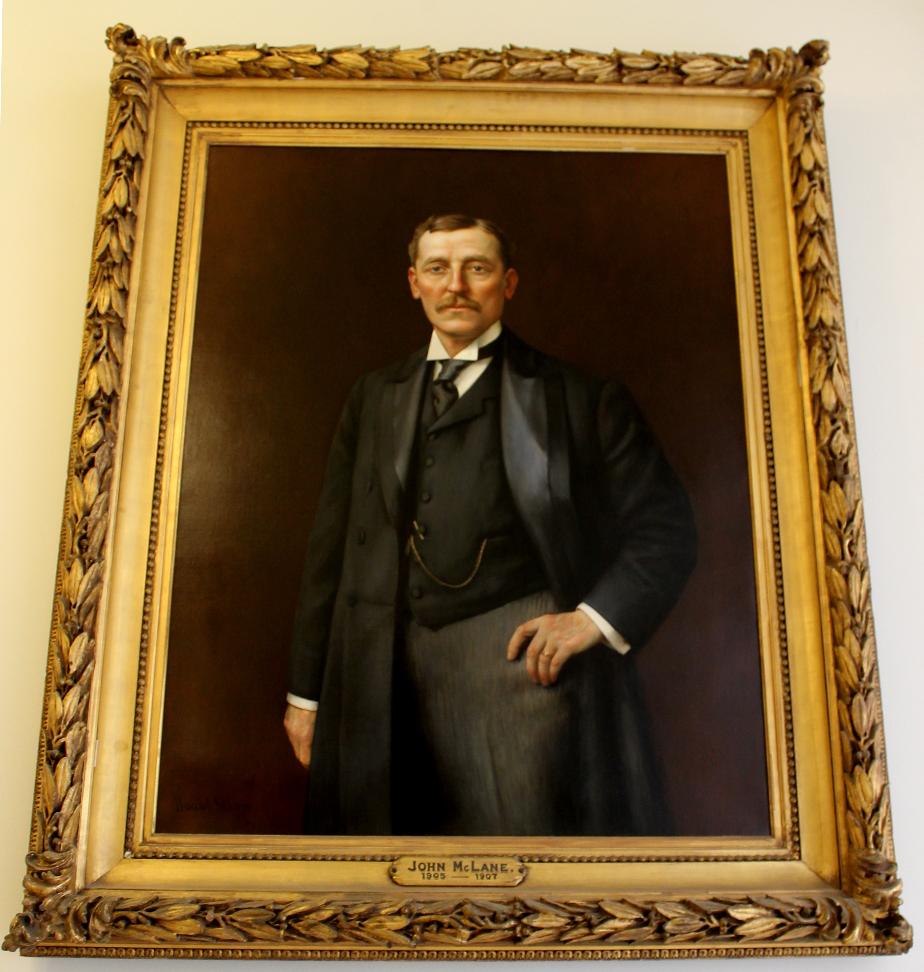
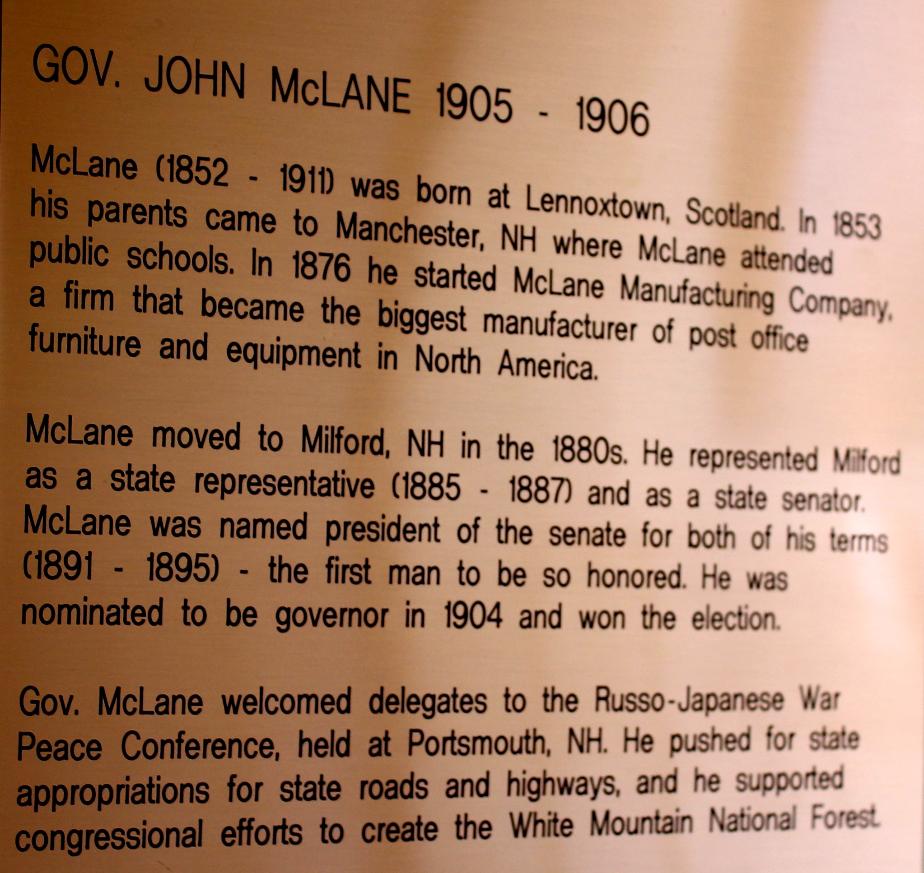
General John McNeil (Hillsborough) 1784 - 1850
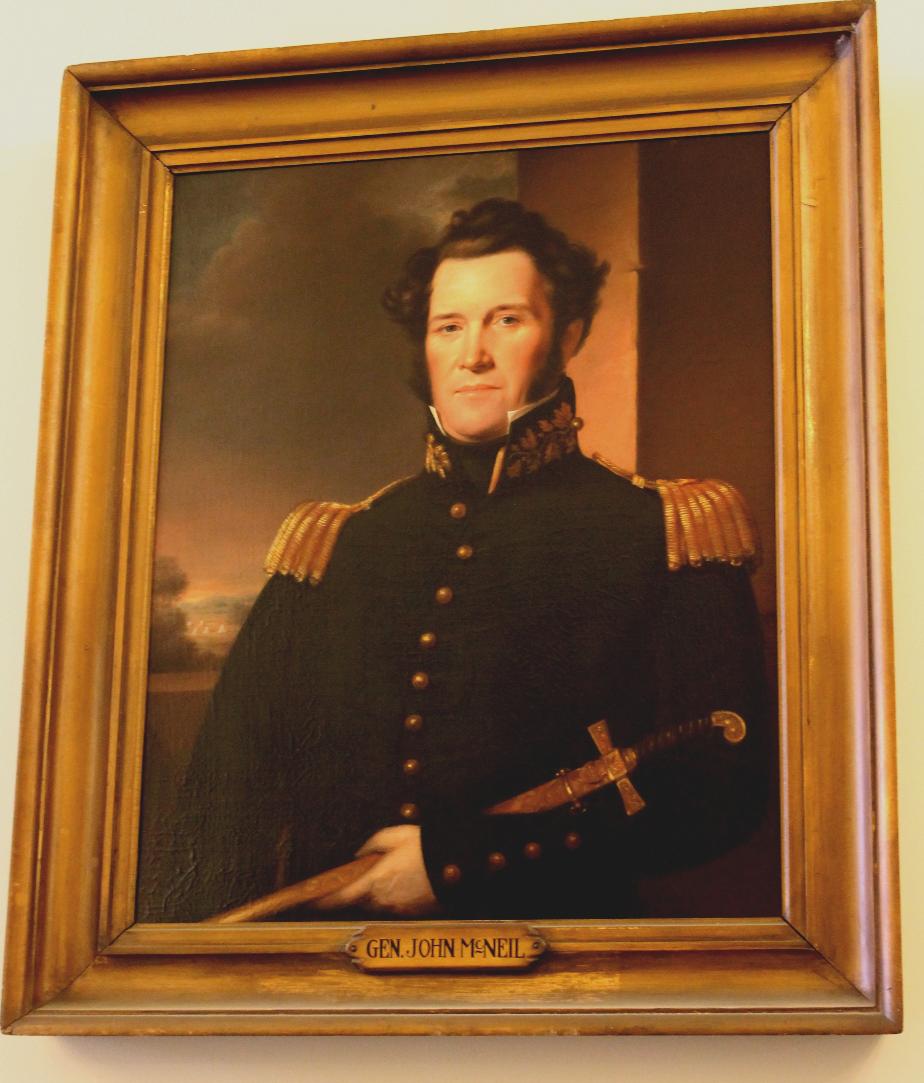
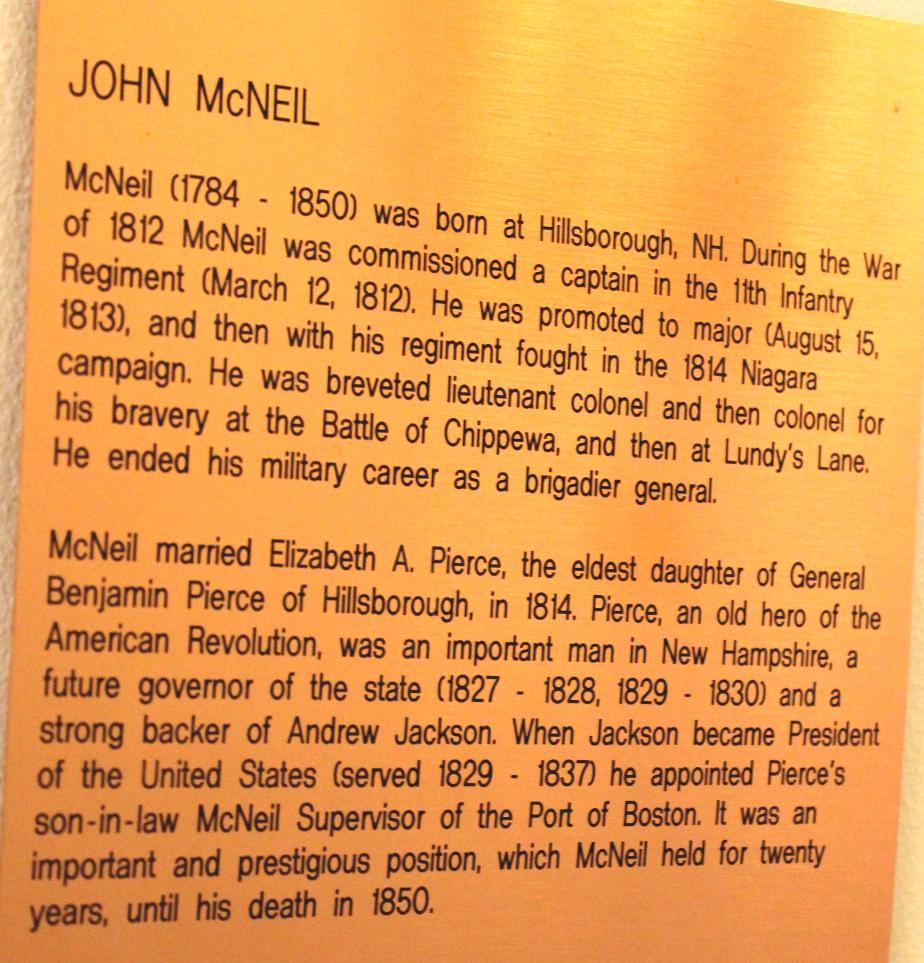
Governor Steve Merrill - 1993-1997
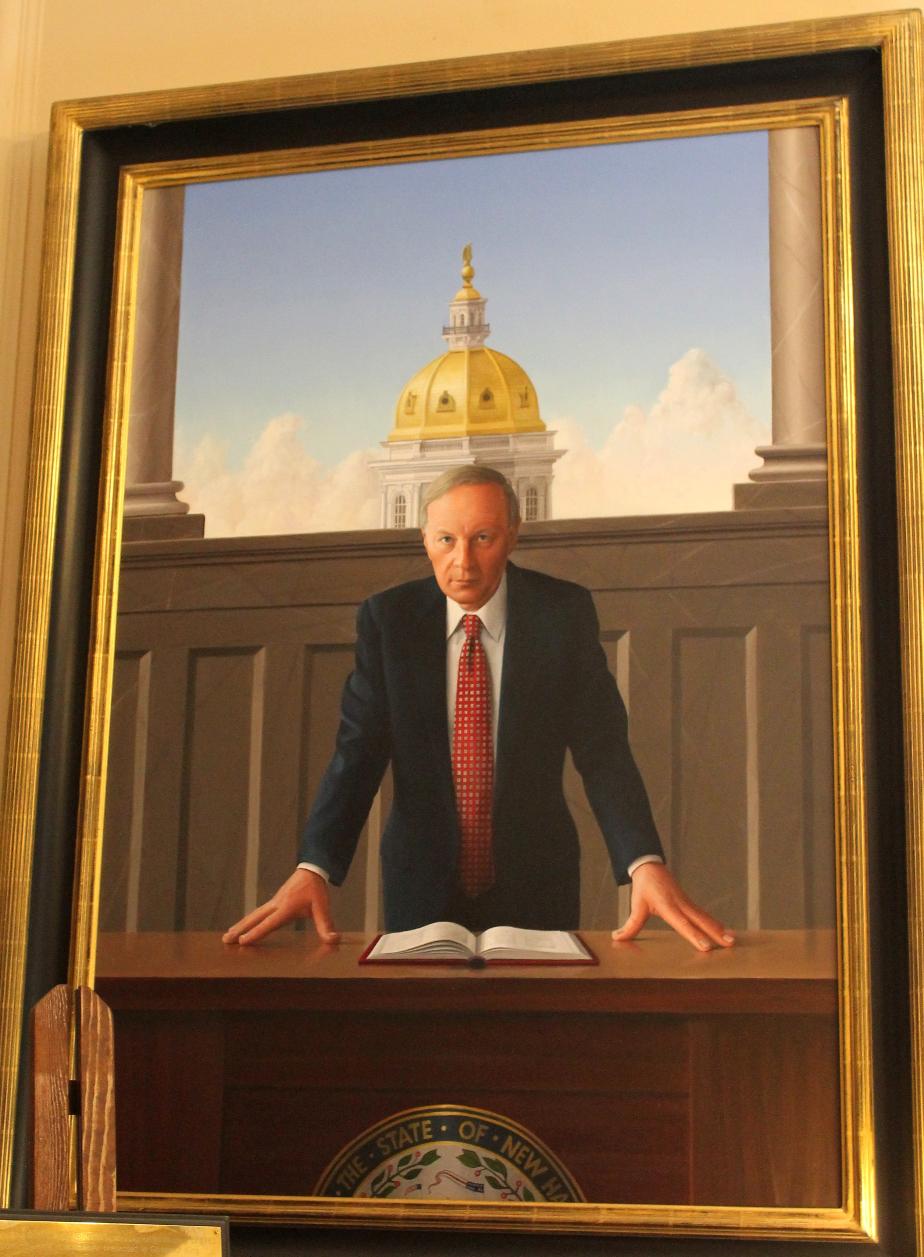
Stephen E. (Steve) Merrill (born June 21, 1946) is an American lawyer and Republican politician from Manchester, New Hampshire.
Merrill was born in Hampton, New Hampshire. He studied at the University of New Hampshire, graduating from it in 1969. He received his J.D. Degree from Georgetown University Law Center in 1972.
He served in the Air Force as a lawyer from 1972 to 1976, then became a legal counsel to the Secretary of the Air Force from 1973 to 1975. He finally became a special assistant to the Assistant Secretary of the Air Force from 1975 to 1976. Merrill left military service as a captain, then went to Manchester to practice law from 1976 to 1984. He served on the staff of Governor Sununu before being elected Governor.
Governor Ralph Metcalf (Charlestown NH) - 1855 -1856
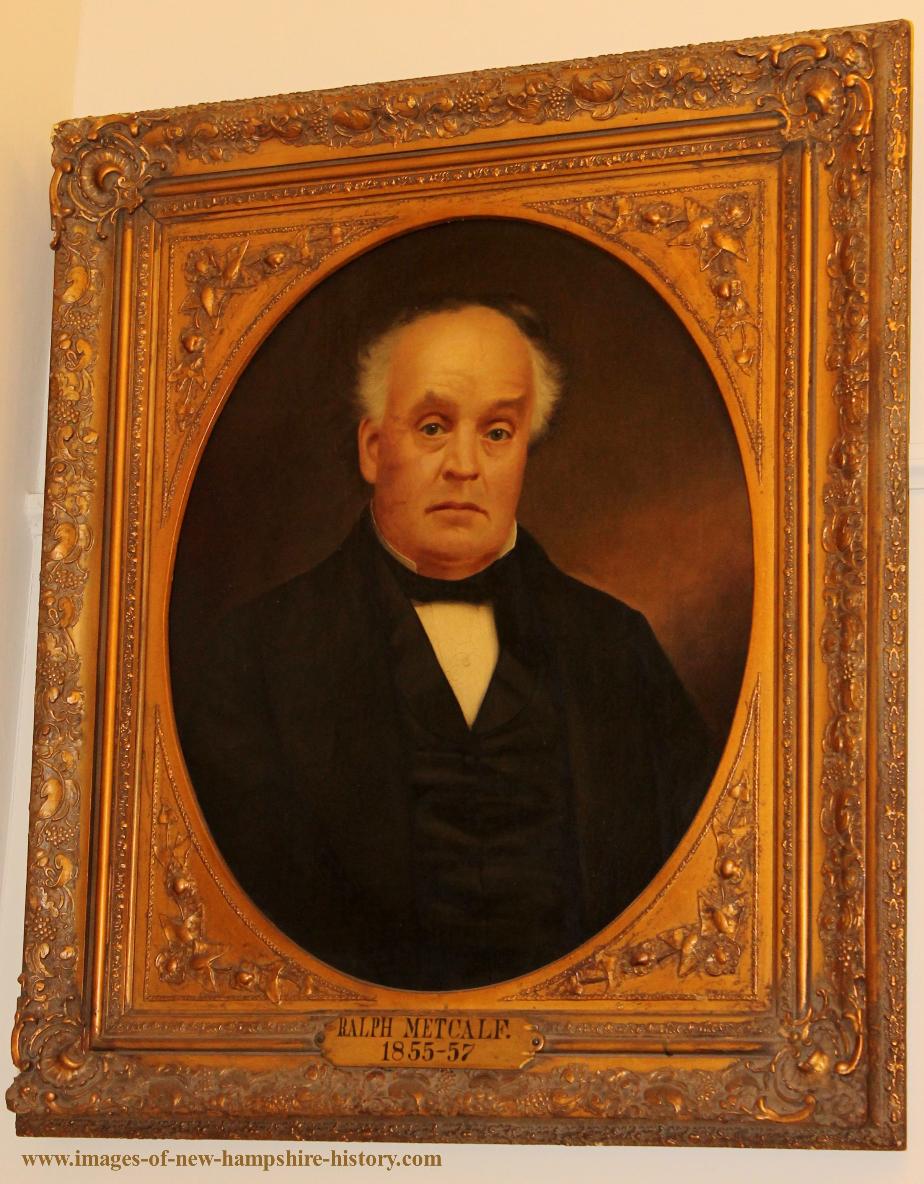
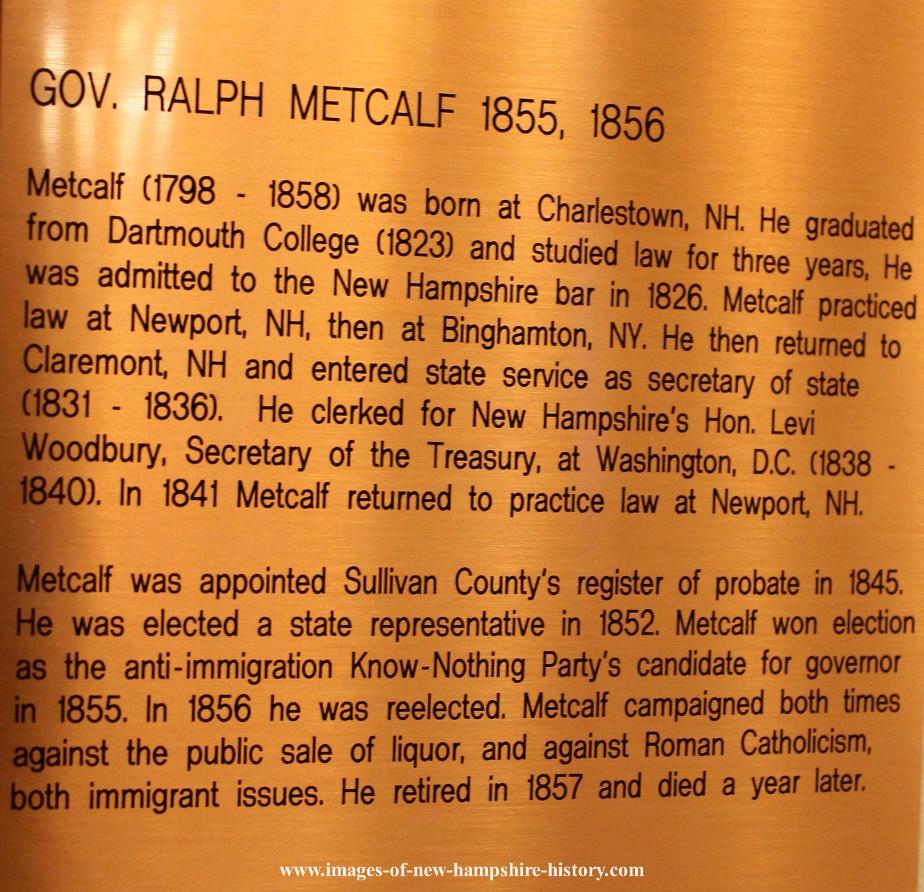
General James Miller, Veteran of the War of 1812
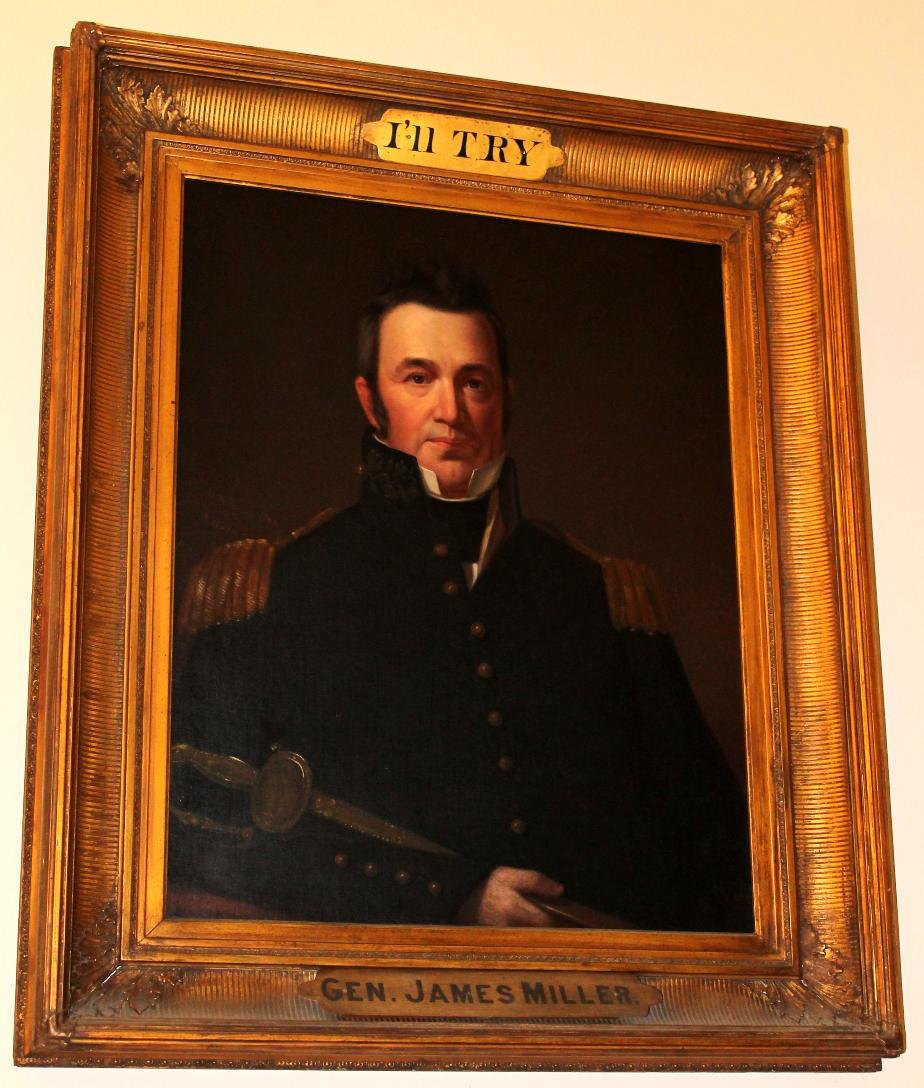
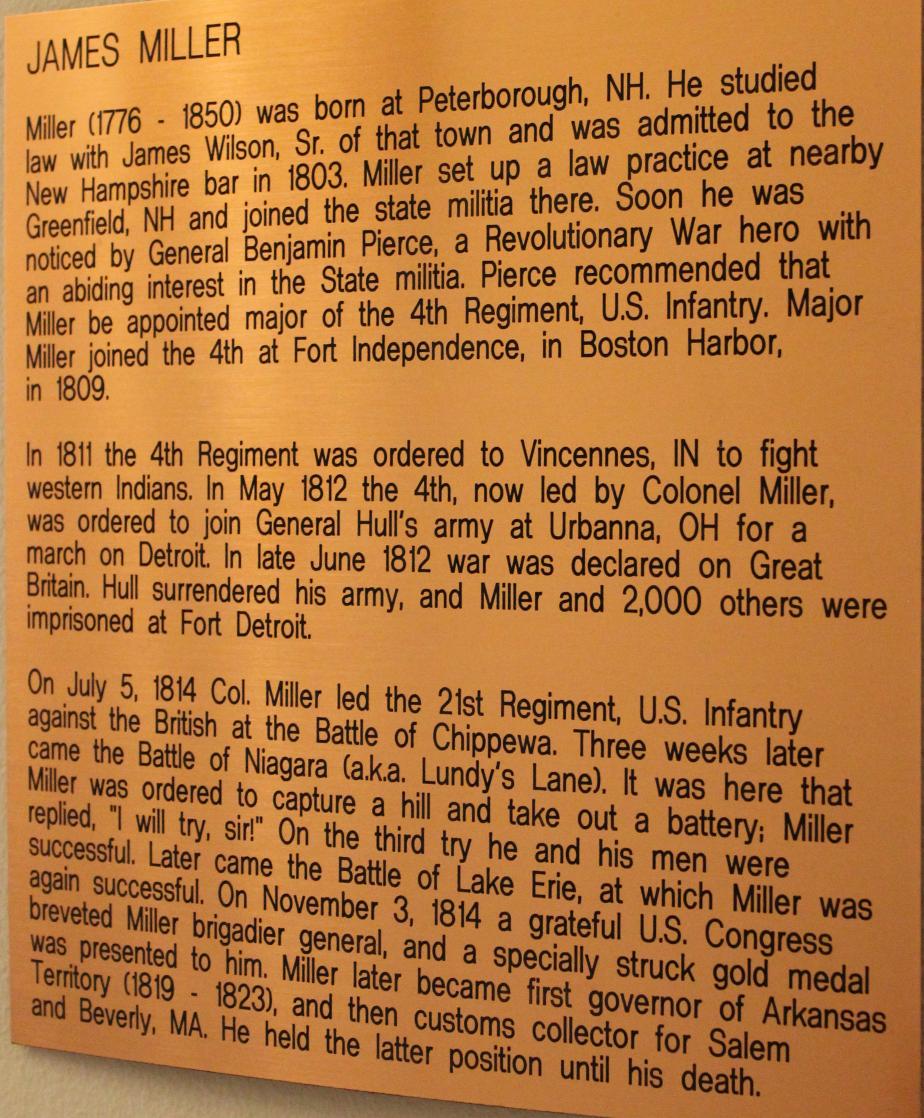
Arthur P Morrill - Speaker of the NHHouse 1917 - 1918
1876 - Born on March 15th, 1876, Senate President Arthur P. Morrill in Concord New Hampshire. Educated at Phillips Academy in Andover, Massachusetts, Yale University (1896) and Harvard University Law School (1899). He was admitted to the New Hampshire bar in 1900. Morrill was a member of the Concord Law Firm, Sargent, Niles & Morrill for four years (1900 - 1904). He then changed careers and joined the Insurance Firm of Morrill & Danforth. He was a delegate to the 1912 New Hampshire Constitutional Convention from Ward Five in Concord, and served two terms as a State Representative (1917 - 1918) and Speaker of the House (1917 - 1918). During World War I, Morrill was active in the New Hampshire Red Cross and in the Concord Committee of Public Safety. He served as President of the State Senate from 1919 - 1921.

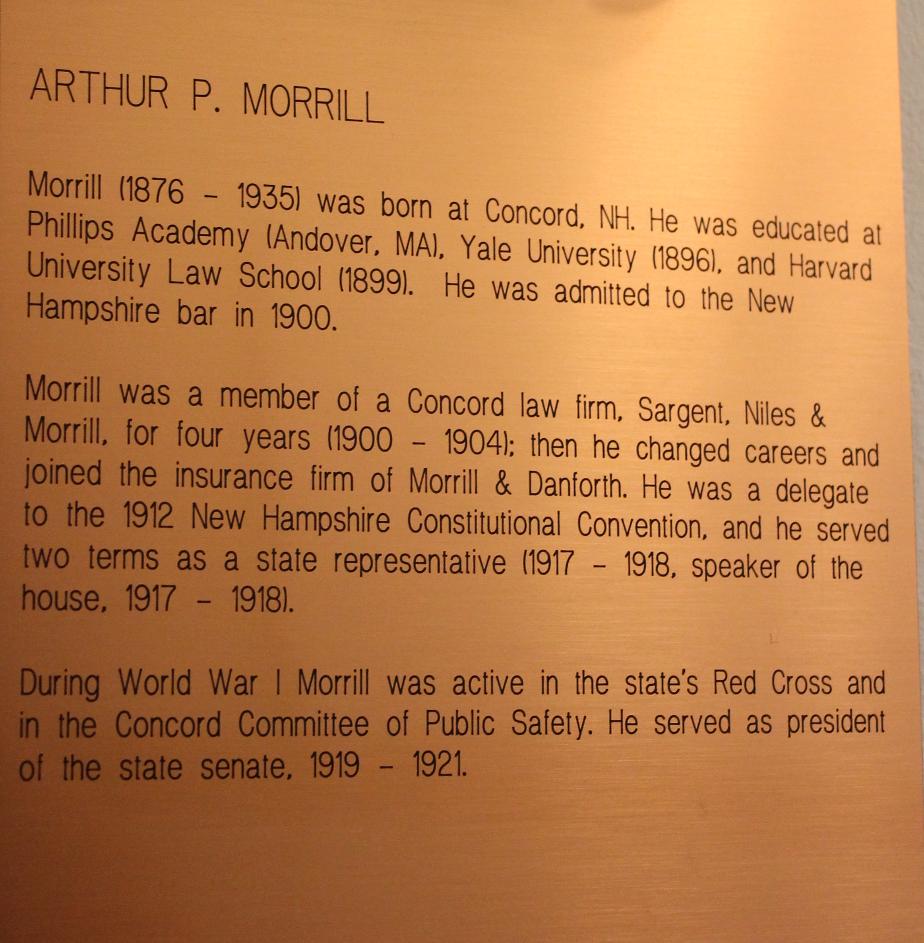
Governor David L. Morril 1824 - 1827
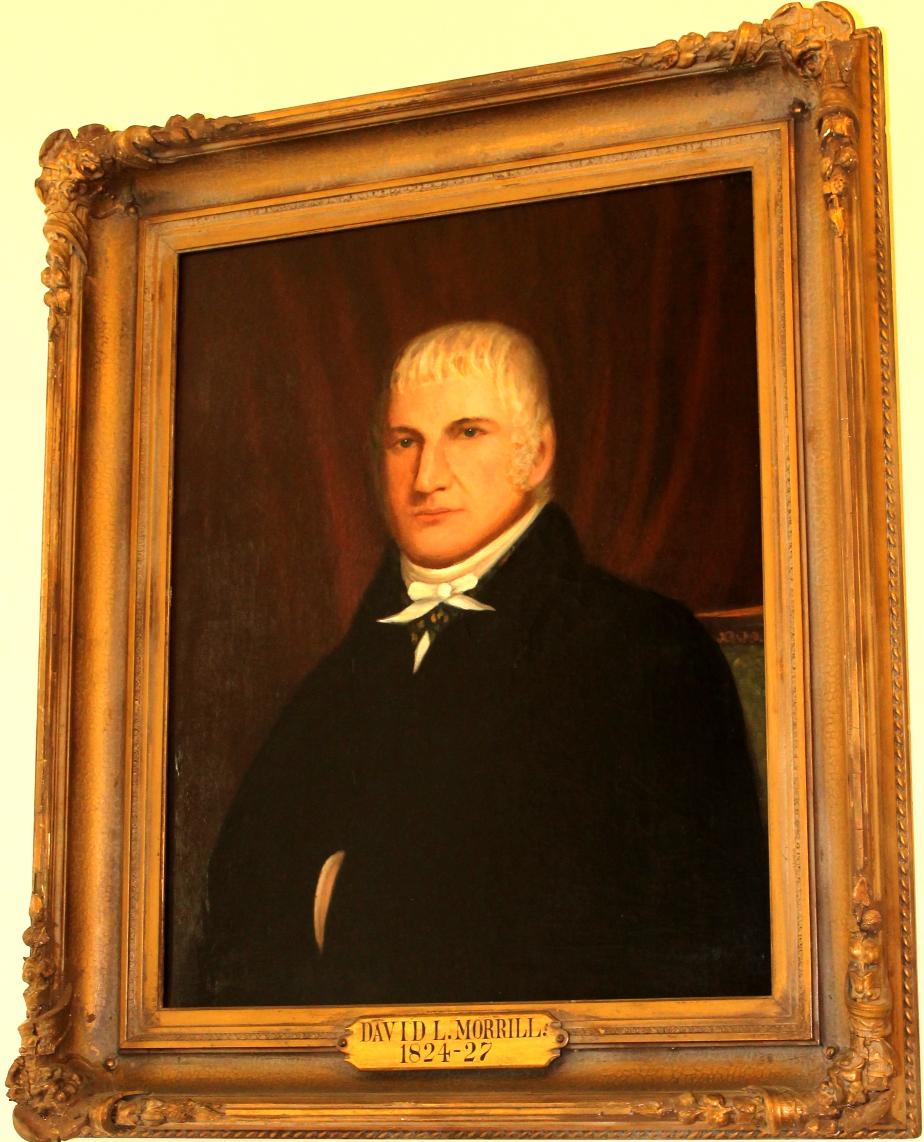
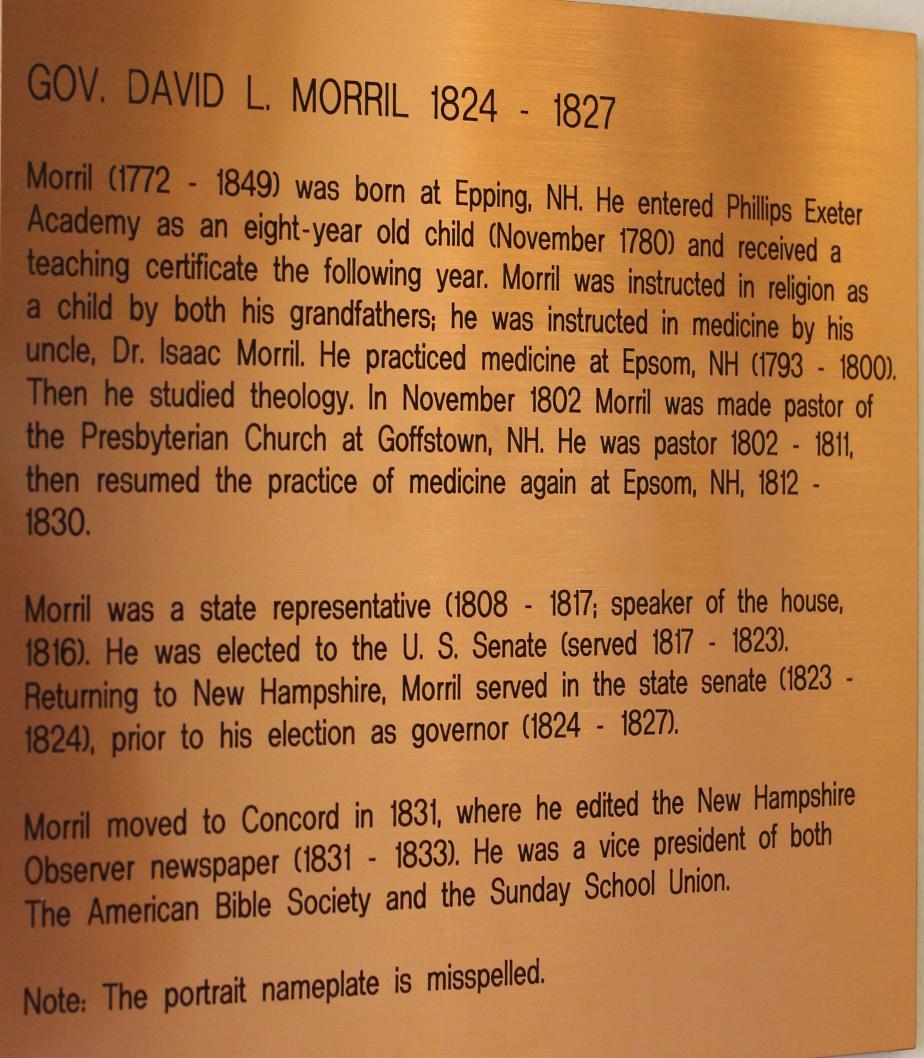
Governor Francis P Murphy 1937-1941
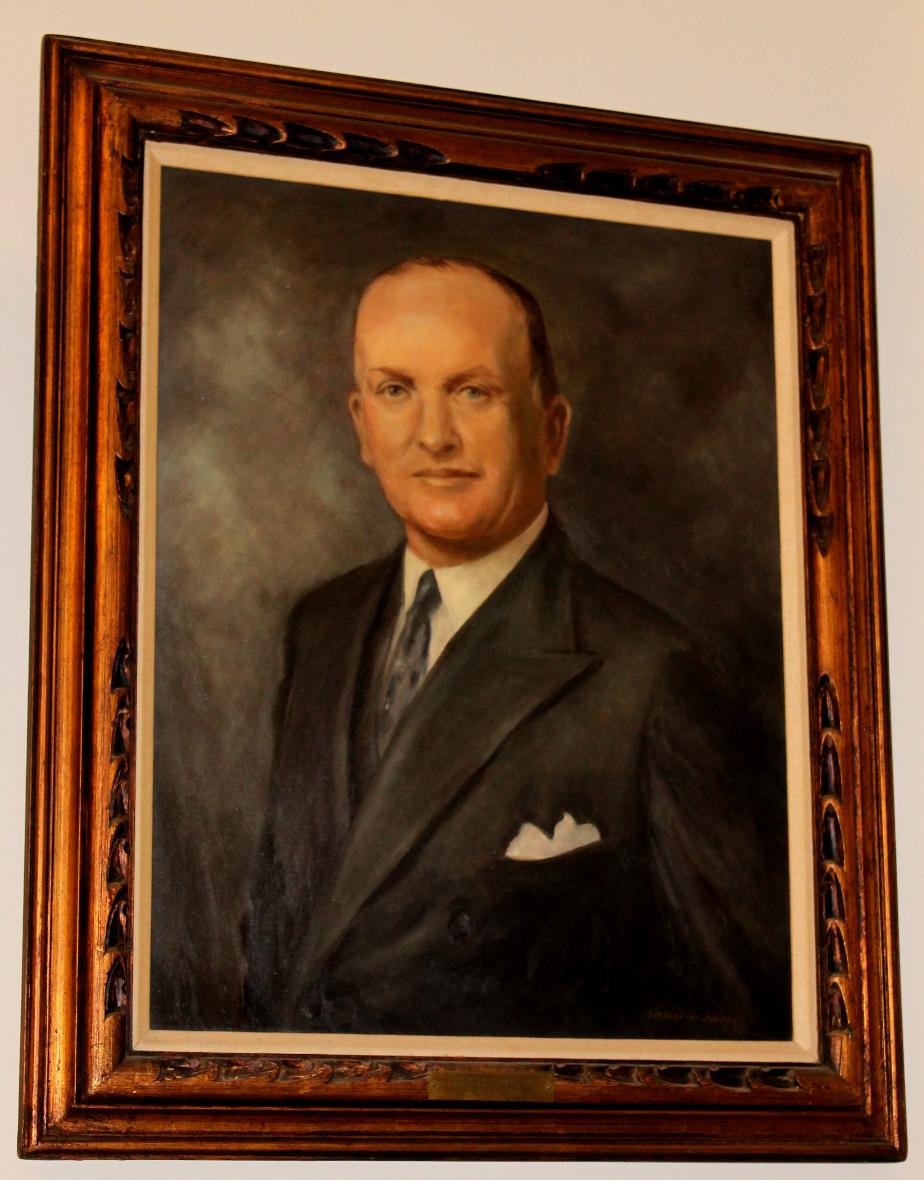
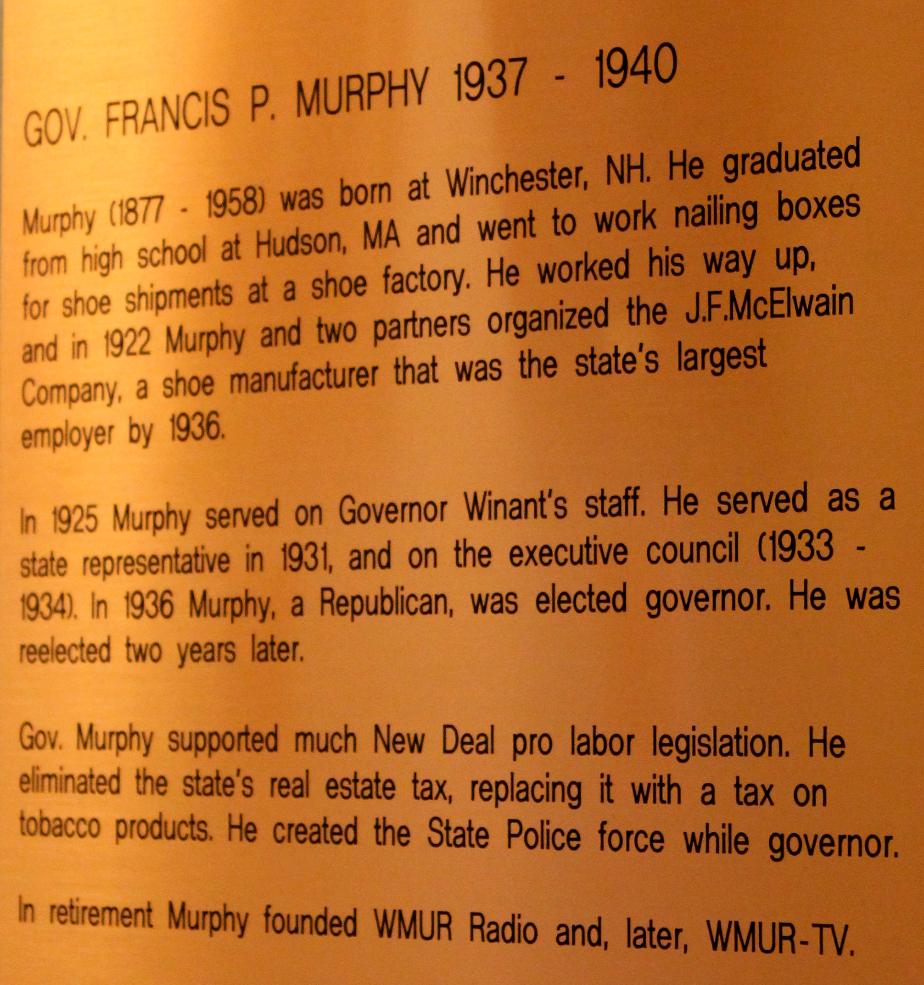
Governor John Page 1839 - 1842
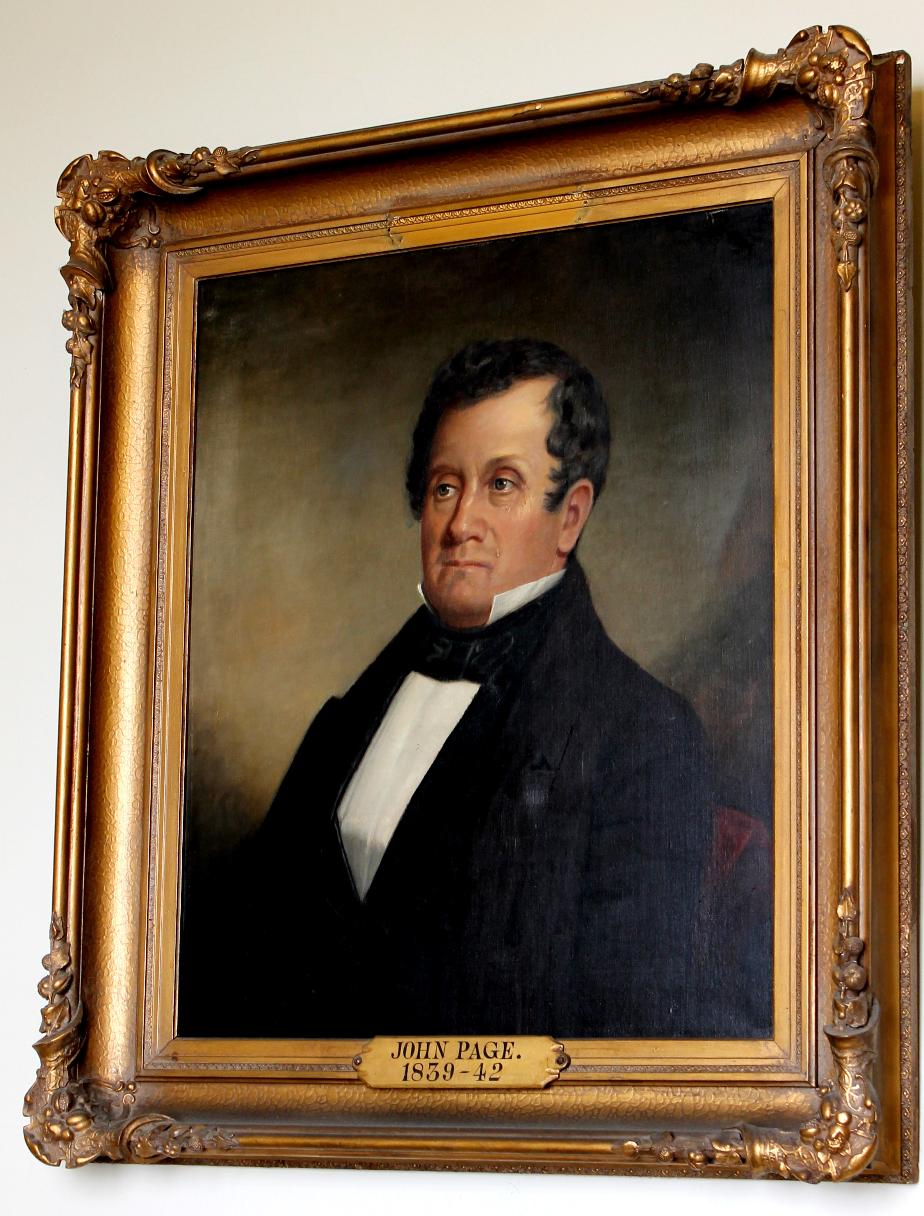
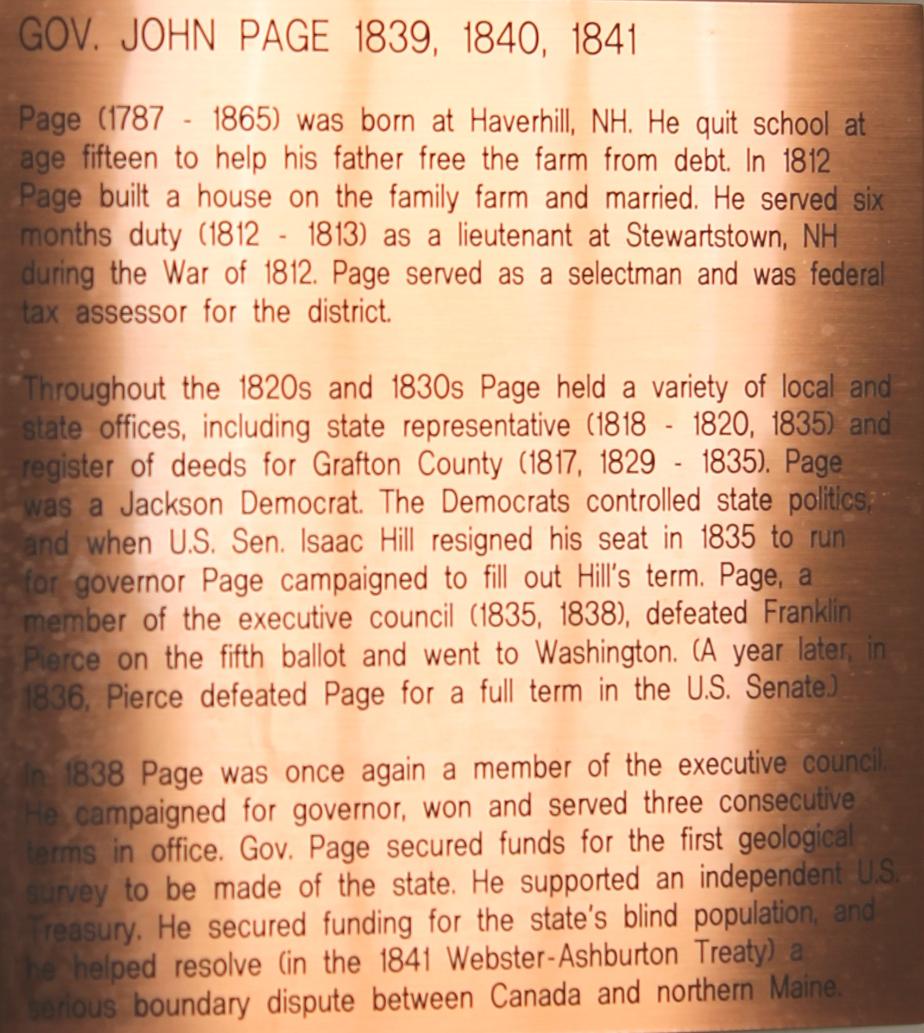
Lemuel Noyes Pattee - NH Secretary of State 1855-1858
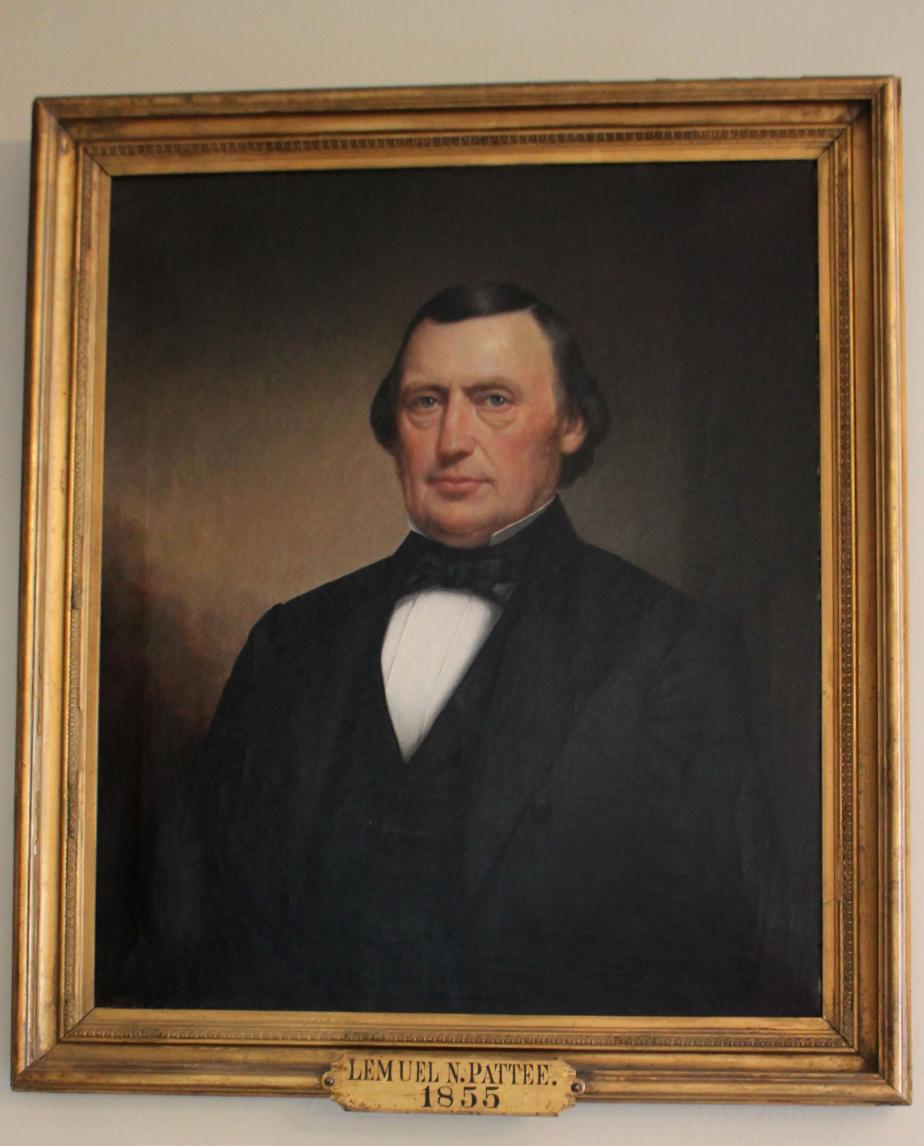

George Hamilton Perkins Civil War Naval Officer
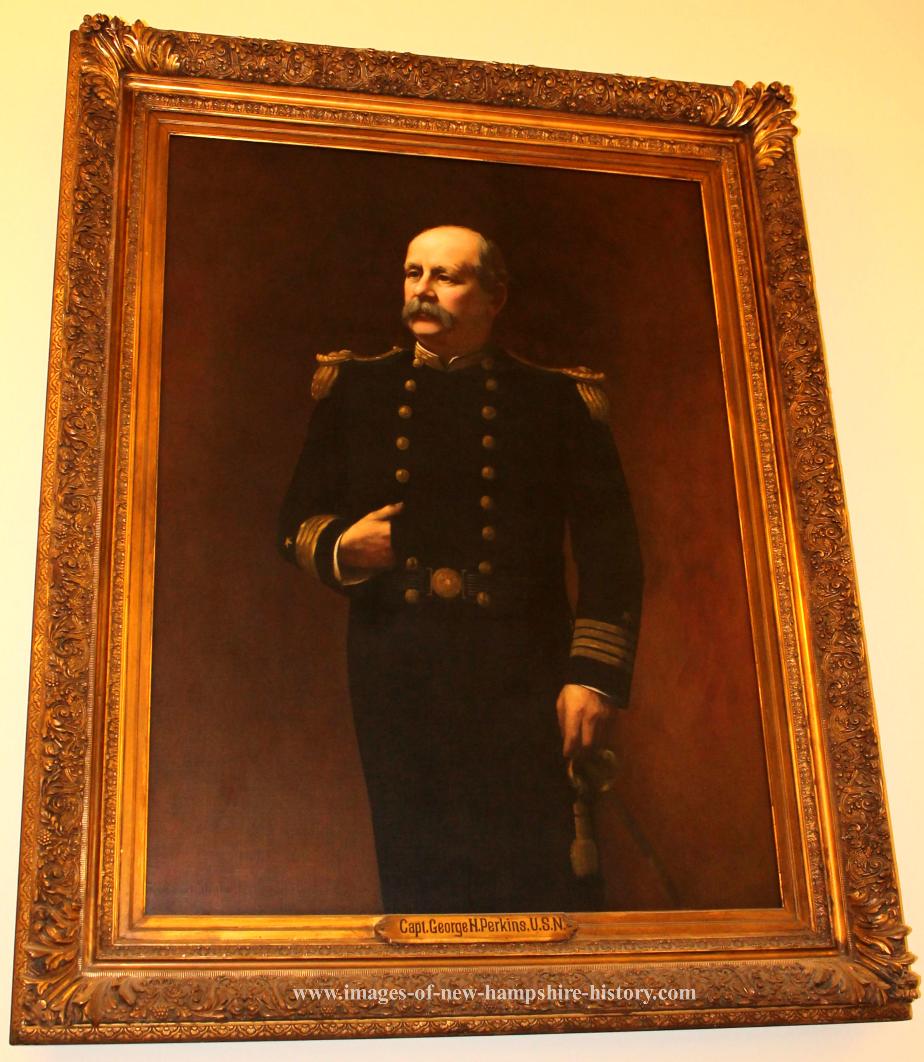
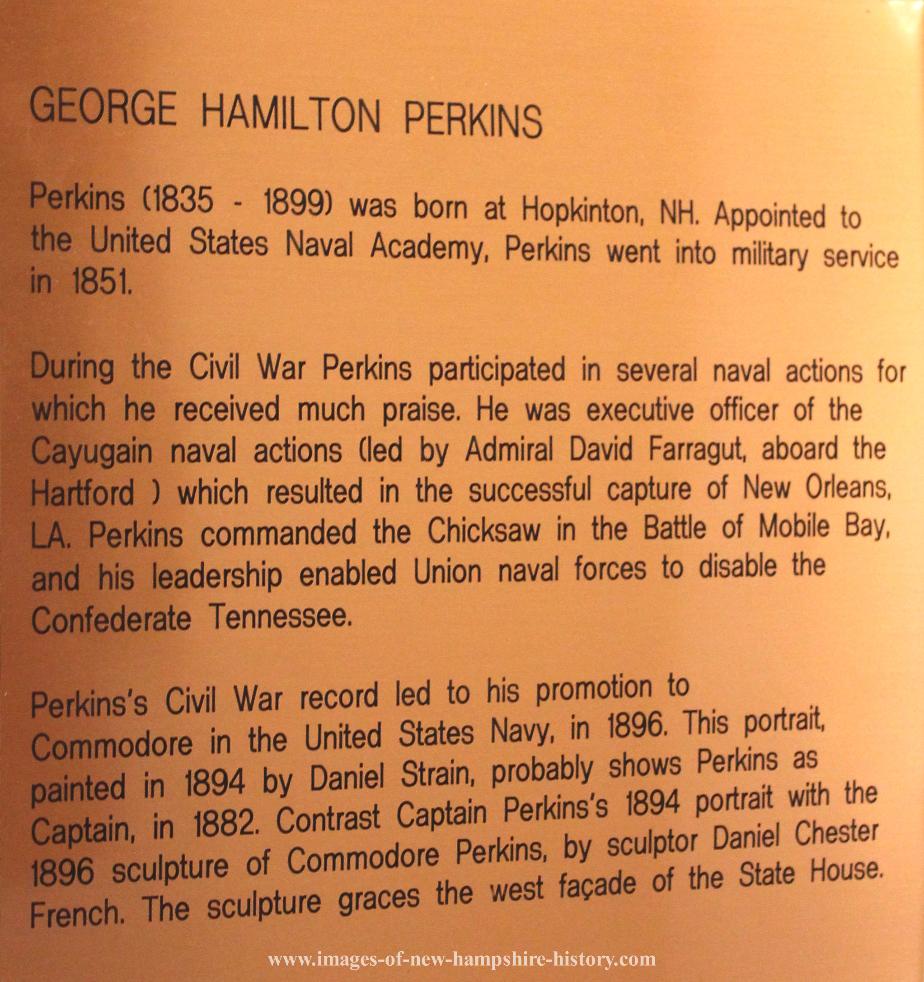

Walter R Peterson Jr. (Nashua) NH Governor 1969 - 1973
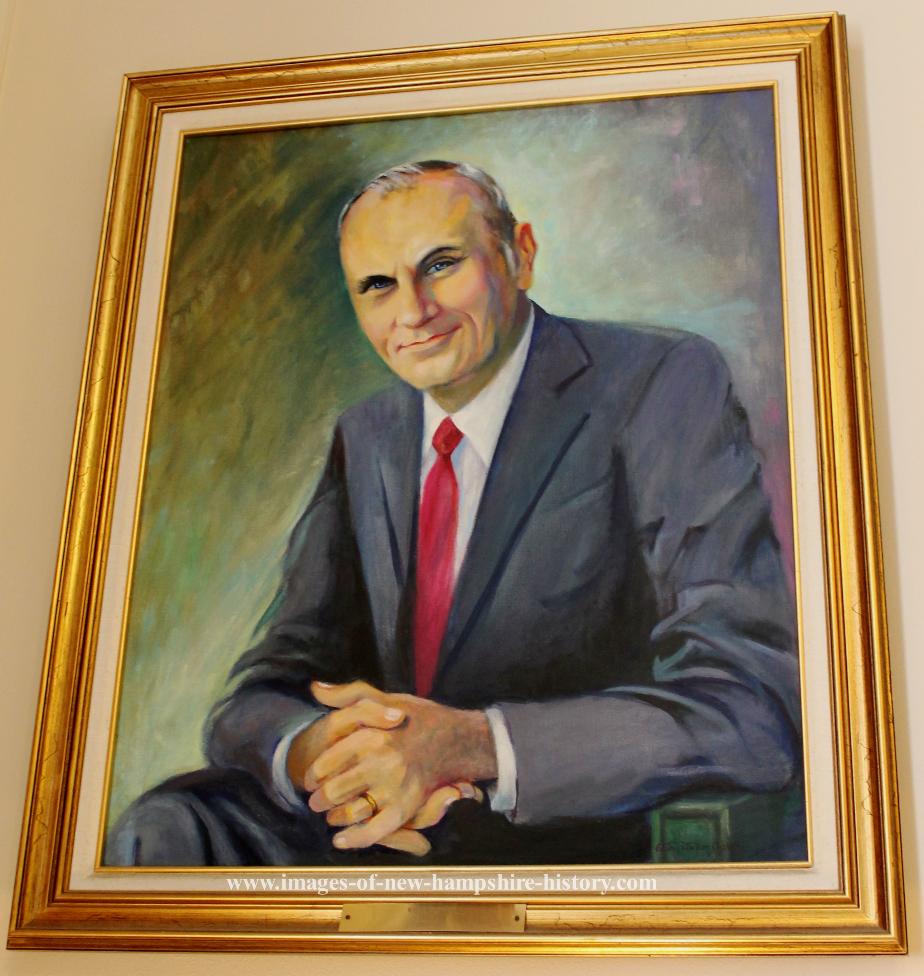
WALTER PETERSON was born in Nashua, New Hampshire, on September 19, 1922. He received a B.A. from Dartmouth College in 1947. He also attended the College of William and Mary and the University of New Hampshire. His college years were interrupted by four years’ service as a U.S. Naval Reserve officer in the Southern Pacific. After graduation from Dartmouth, Peterson became a partner in The Petersons, Inc., a real estate firm in Peterborough, New Hampshire. He served as a member of the Peterborough Budget Committee (1957-63); and as a member of the New Hampshire House of Representatives, serving as majority leader from 1963 to 1964 and as speaker from 1965 to 1968. He was elected governor in 1968 and reelected in 1970. As governor Peterson was much concerned with state revenues. The state was growing rapidly and costs of infrastructure were rising. A business profits tax was passed, and increased liquor sales helped produce a budget surplus during his administration. Efforts were made to reorganize state government so that it operated more effectively at less cost; a 300-person Citizens Task Force worked on this. In 1972 a special session of the legislature was called to consider the impact of New Hampshire’s property tax on cities and towns, and related fiscal matters. For two decades following his tenure as governor, Peterson was president of Franklin Pierce College. Governor Peterson died June 2, 2011.
Gov. Benjamin Pierce (1827 - 1830) - Rev War General
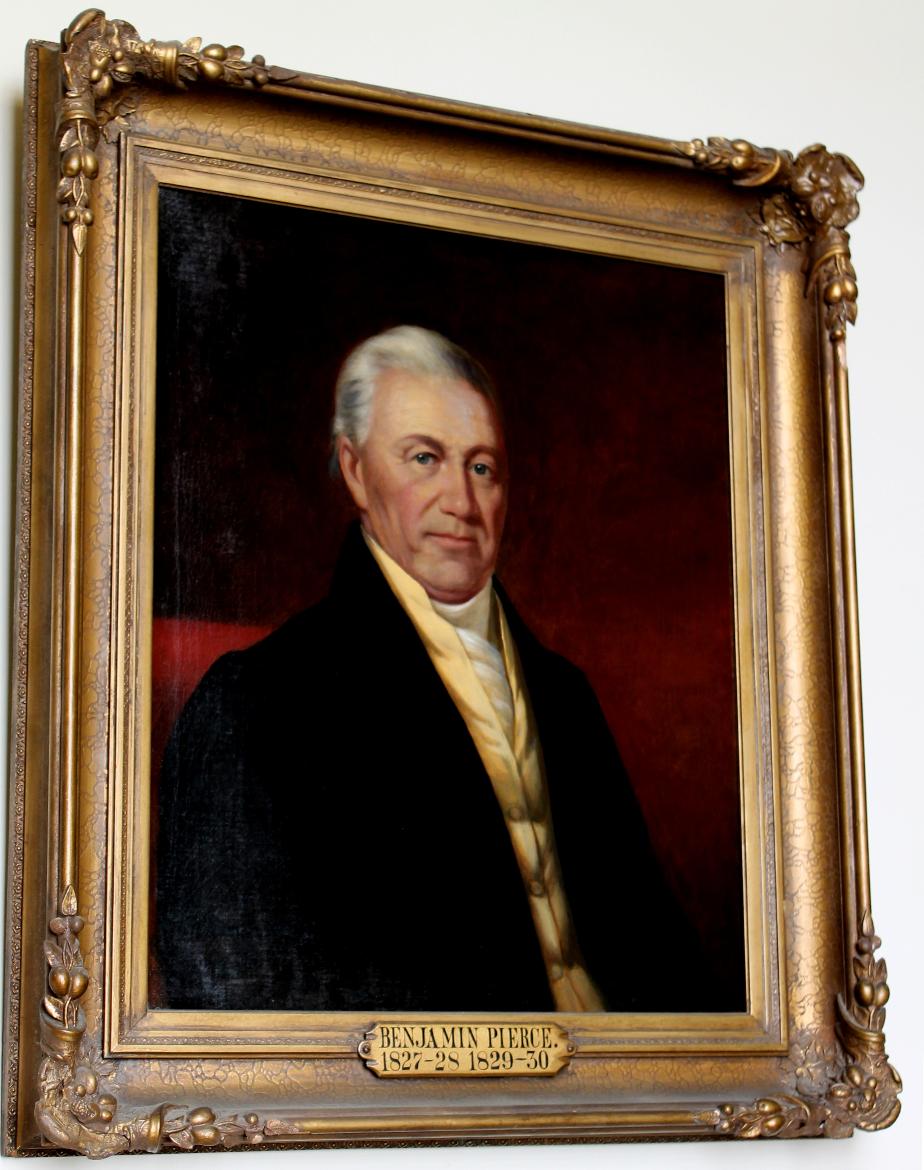
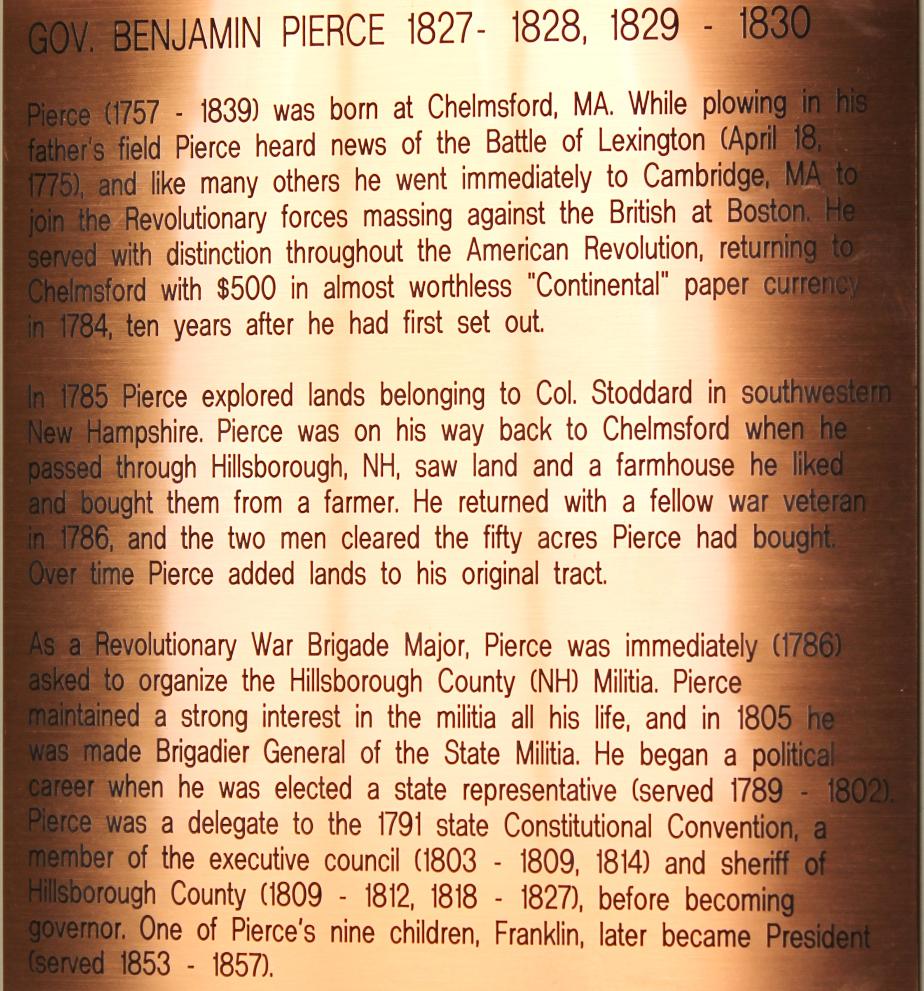
Franklin Pierce- NH State House Legislative Chamber

Franklin Pierce - NH State Library Portrait
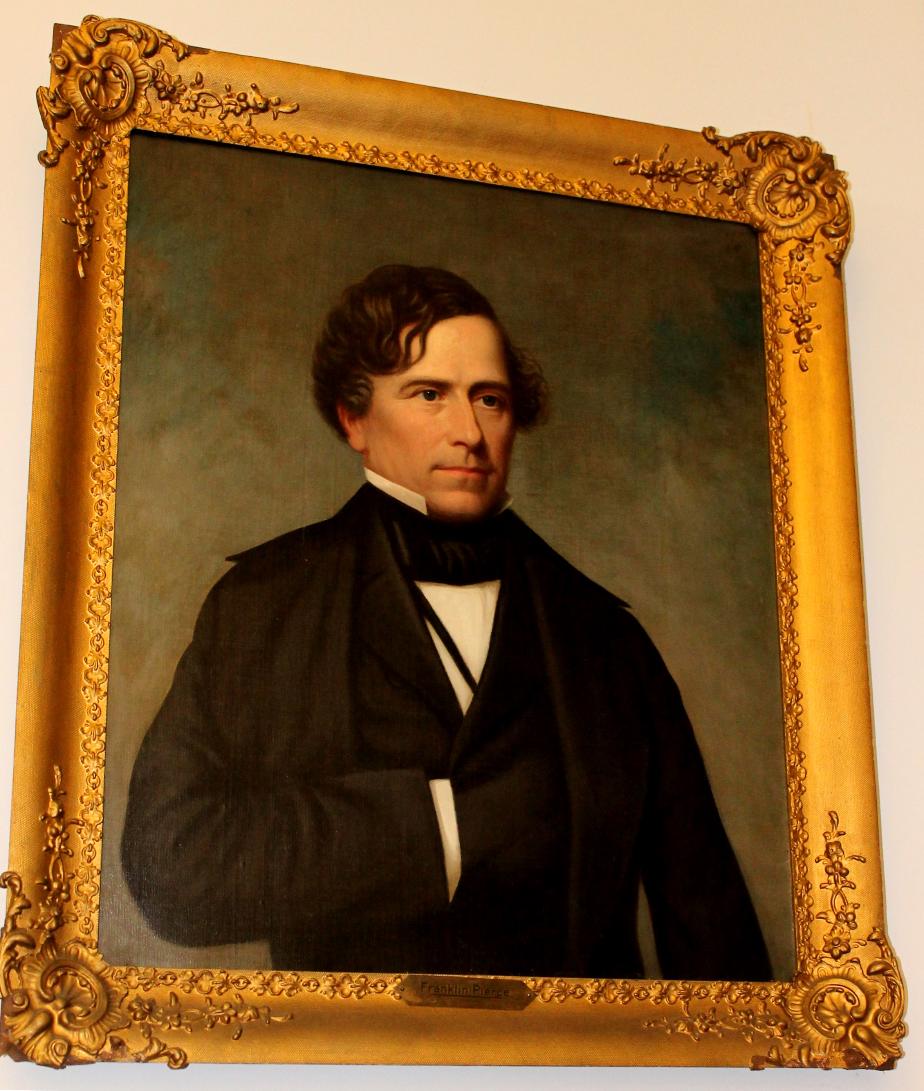
Chester Pike - NH Senate President (1885-1887) - Cornish
Chester Pike, a prominent citizen of Sullivan County, New Hampshire, residing in Cornish, his native town, was born July 30, 1829, son of Ebenezer and Judith (Bryant) Pike. On both his father's and his mother's side he is descended from distinguished ancestry, and from families that have been conspicuous, not only in the history of New Hampshire, but in the history of the nation. His grandfather Pike was born in Newbury, Mass., and came to Cornish in early manhood, the first of the name to settle here. He bought a farm and a mill on Blow-me-down Brook, and devoted himself to farming and to carrying on the mill. He married Mary Marcy, of Hartland, Vt.; and they had three children-Ebenezer, Chester (first), and Pliny. Chester, first, who never married, died in Northumberland when about thirty-five years of age. Pliny Pike was a farmer of Cornish, and died in that town at the age of seventy years on November 29, 1897.
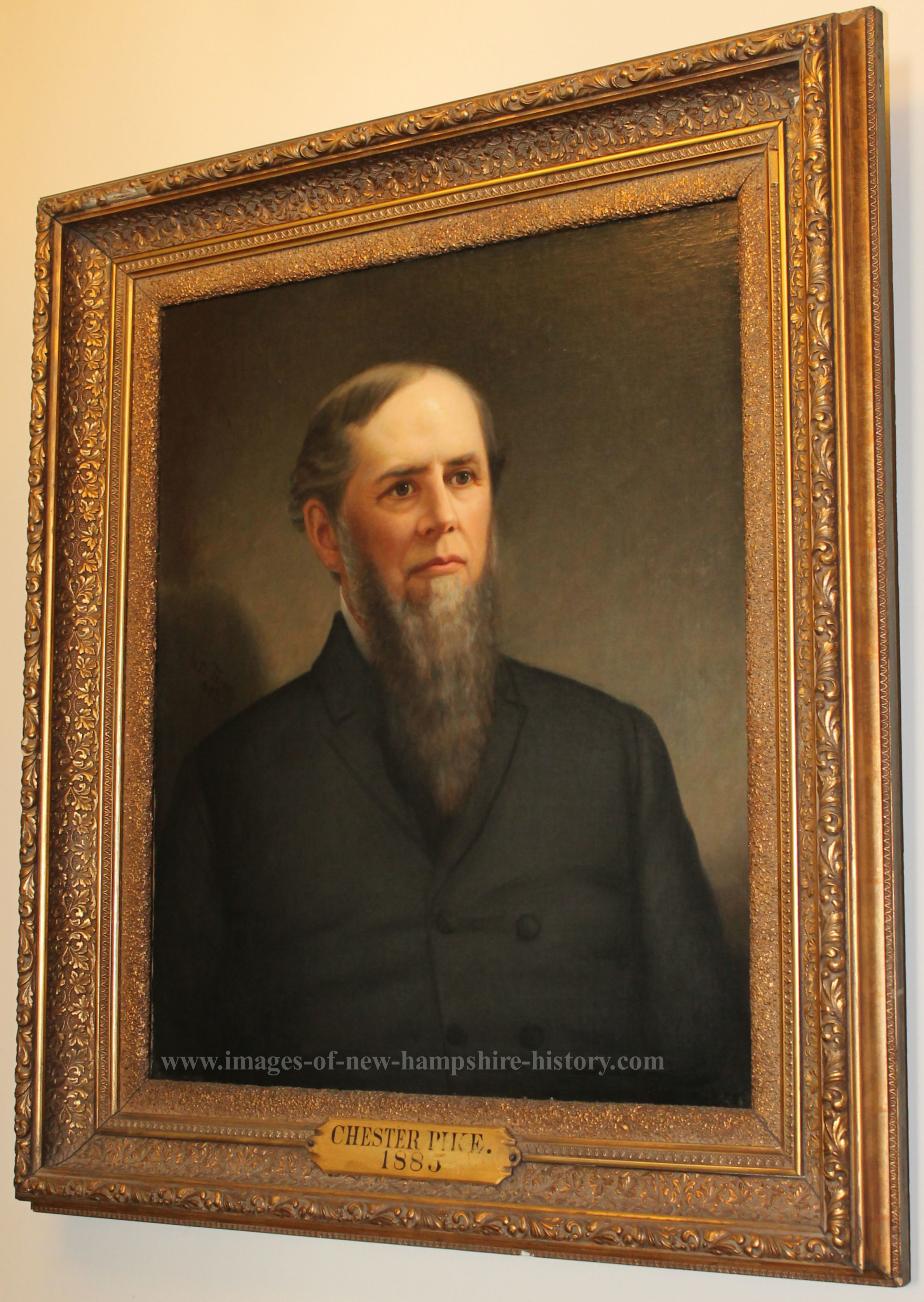
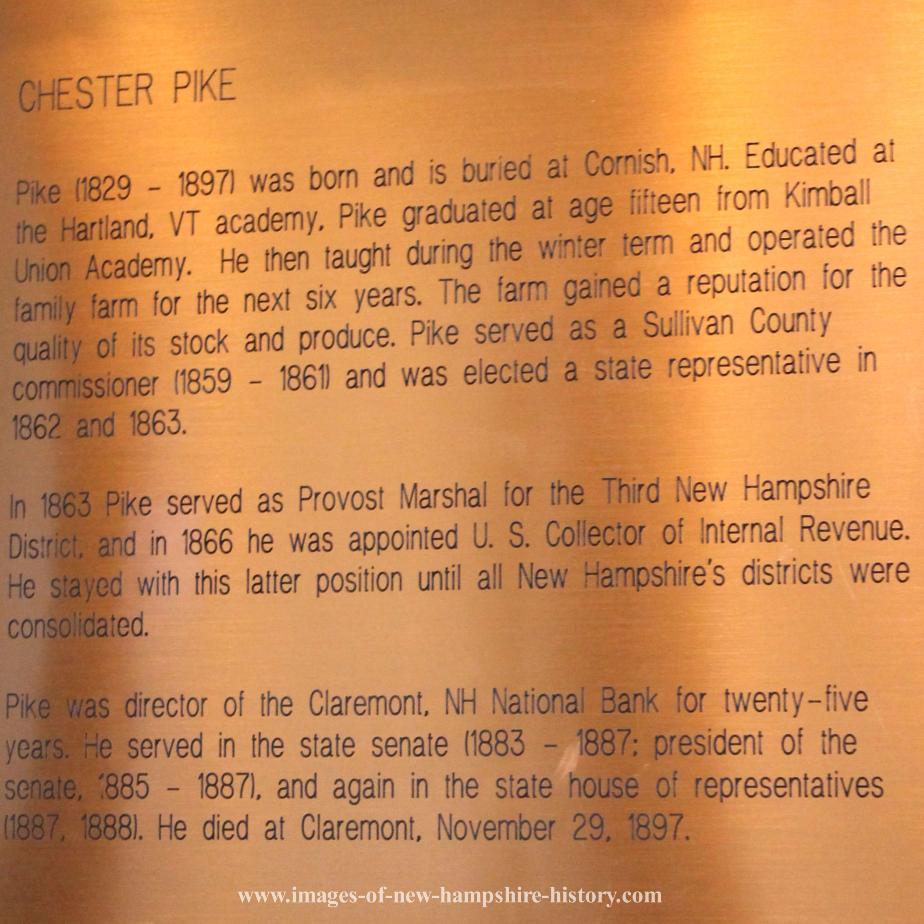
Governor William Plumer : 1812-1813 & 1816-1819
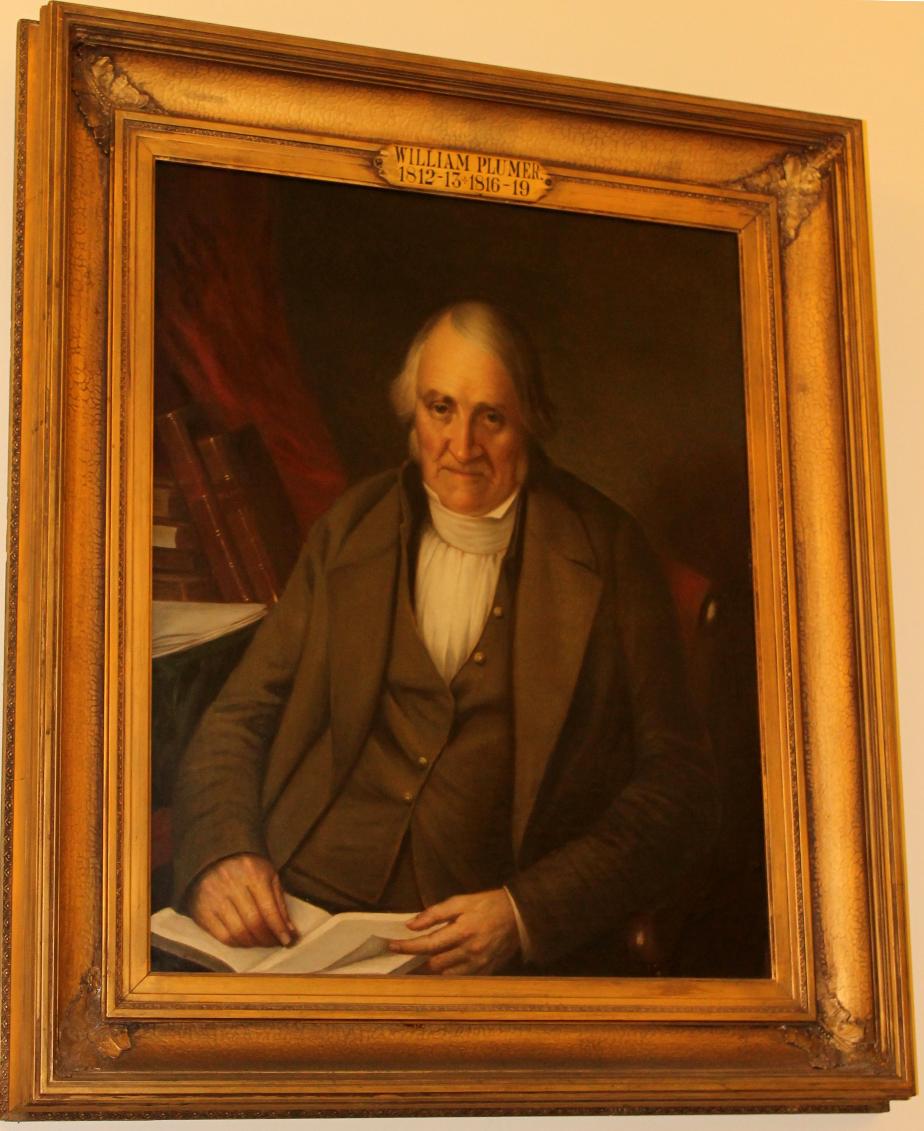
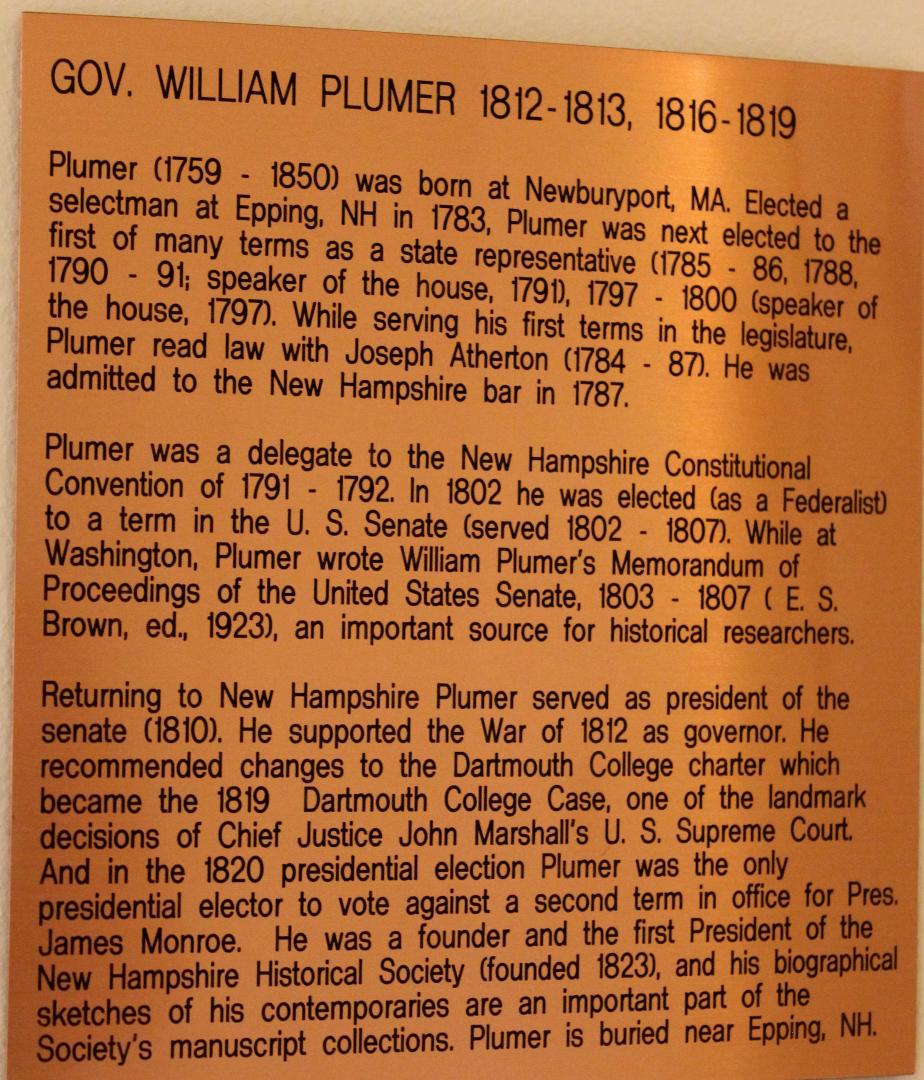
Governor Wesley Powell : 1959 - 1962
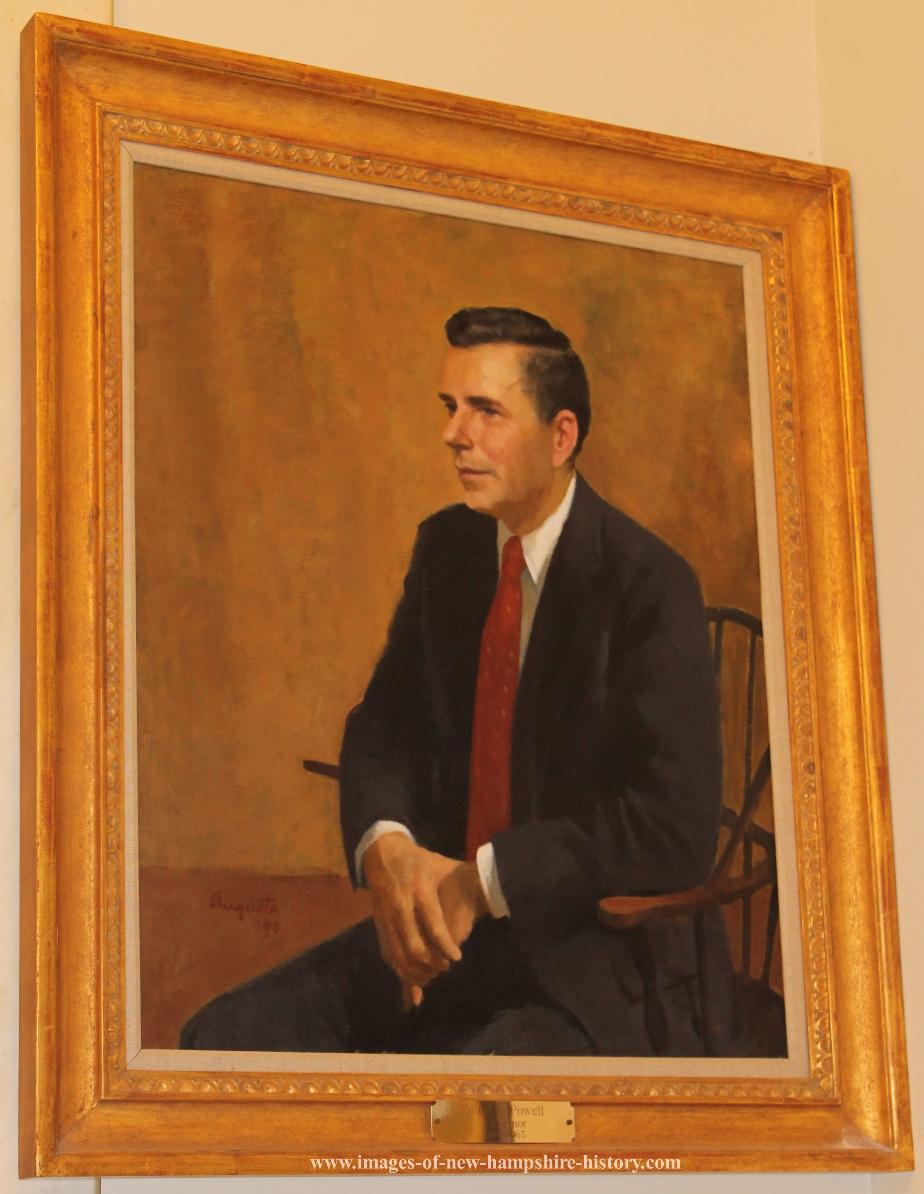
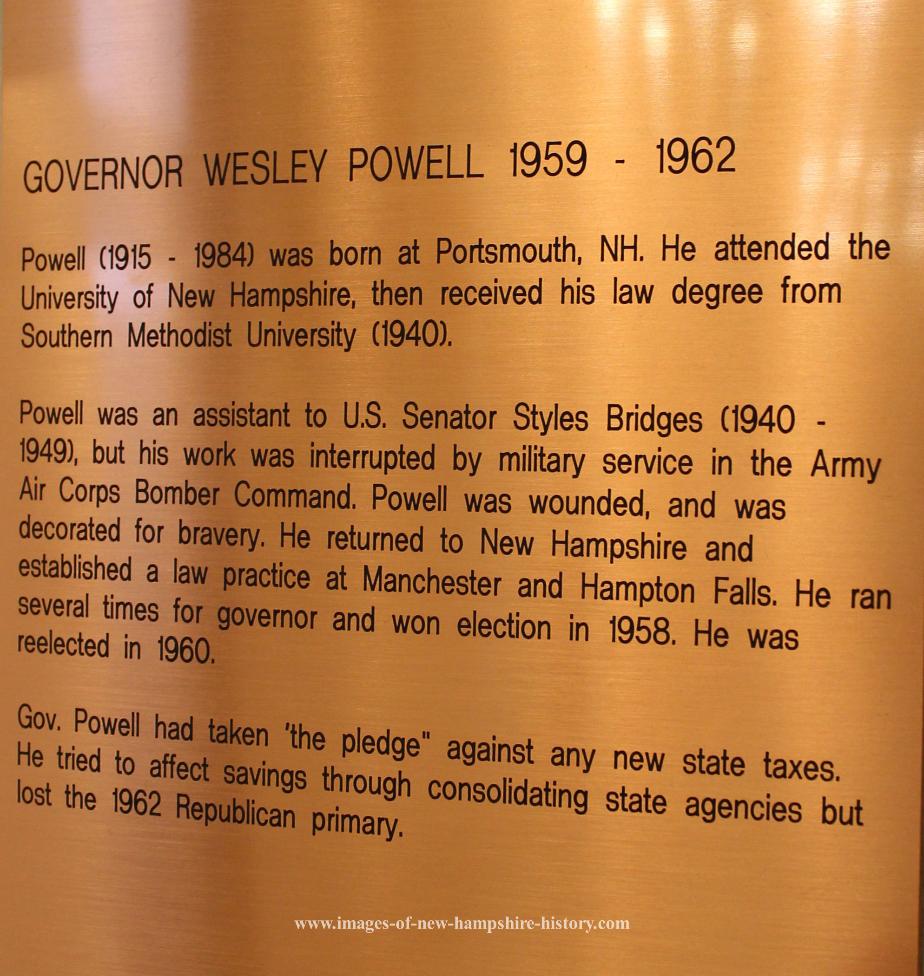
Benjamin Prescott, NH Governor (1877 - 1879)
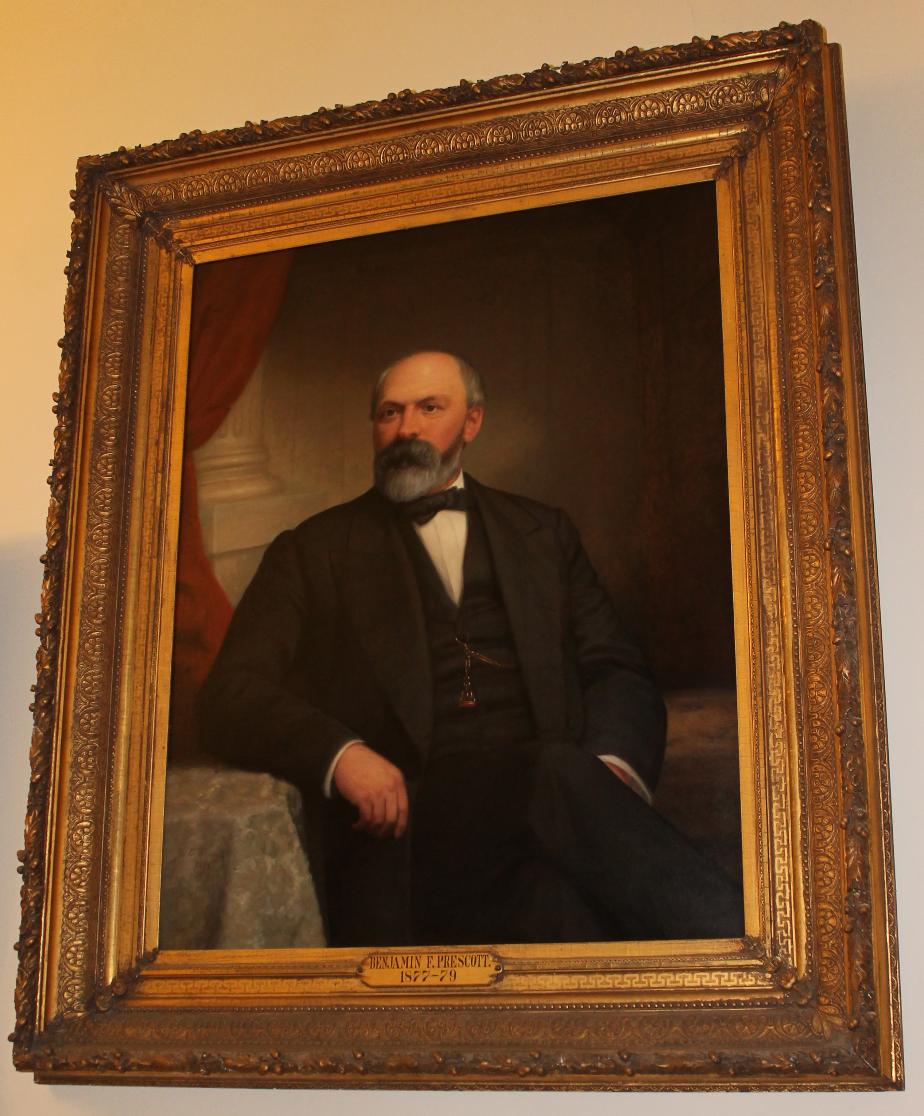
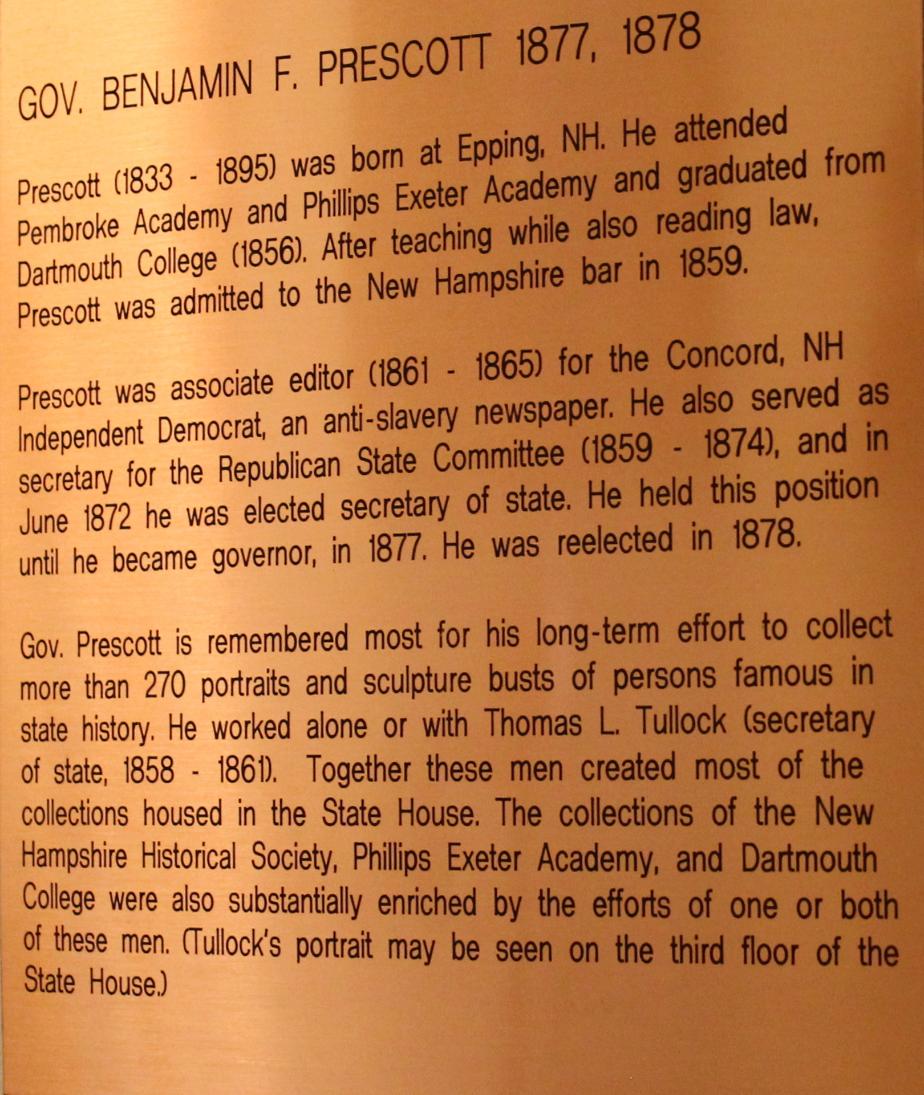
Governor Henry B Quinby 1909-1910
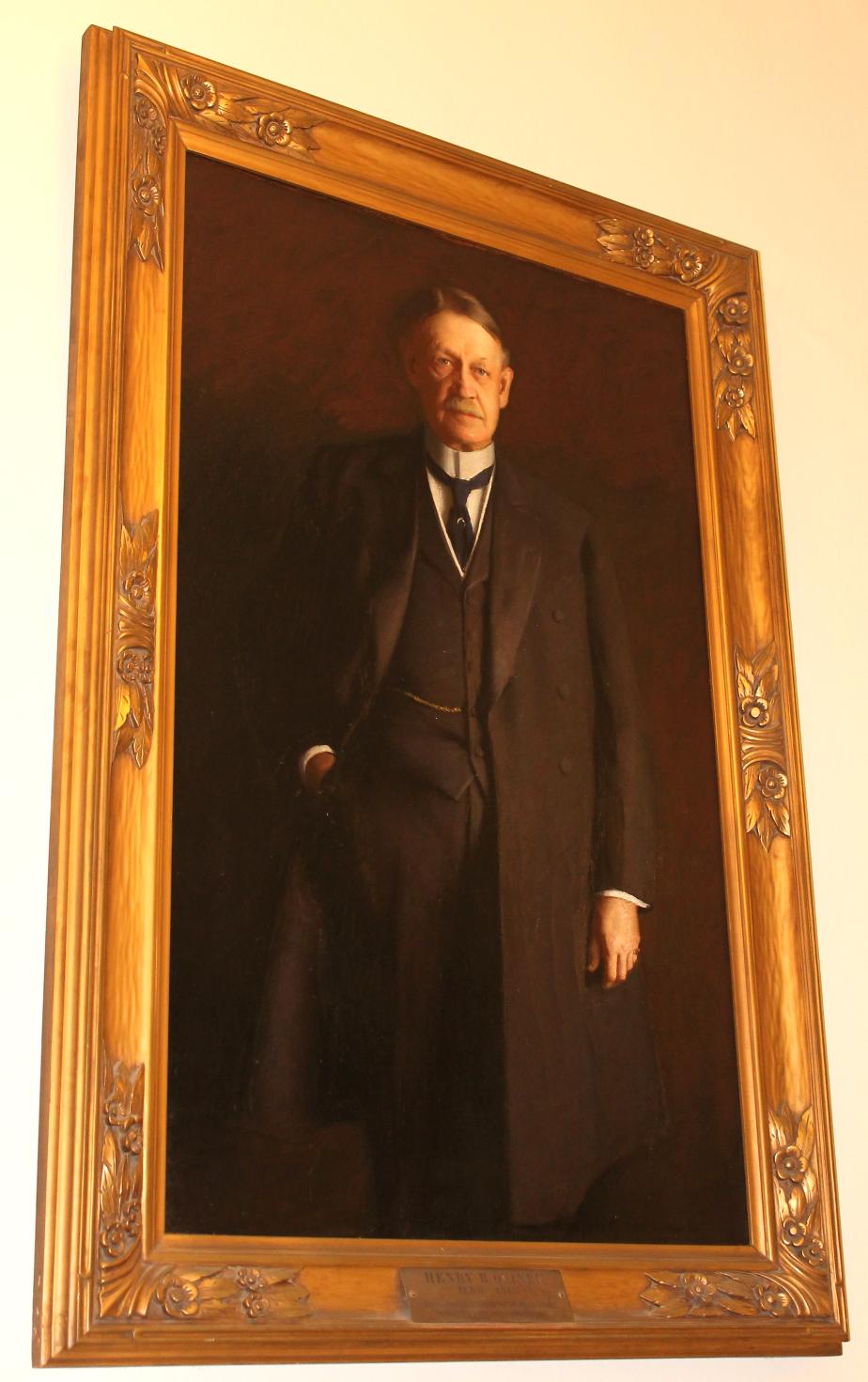
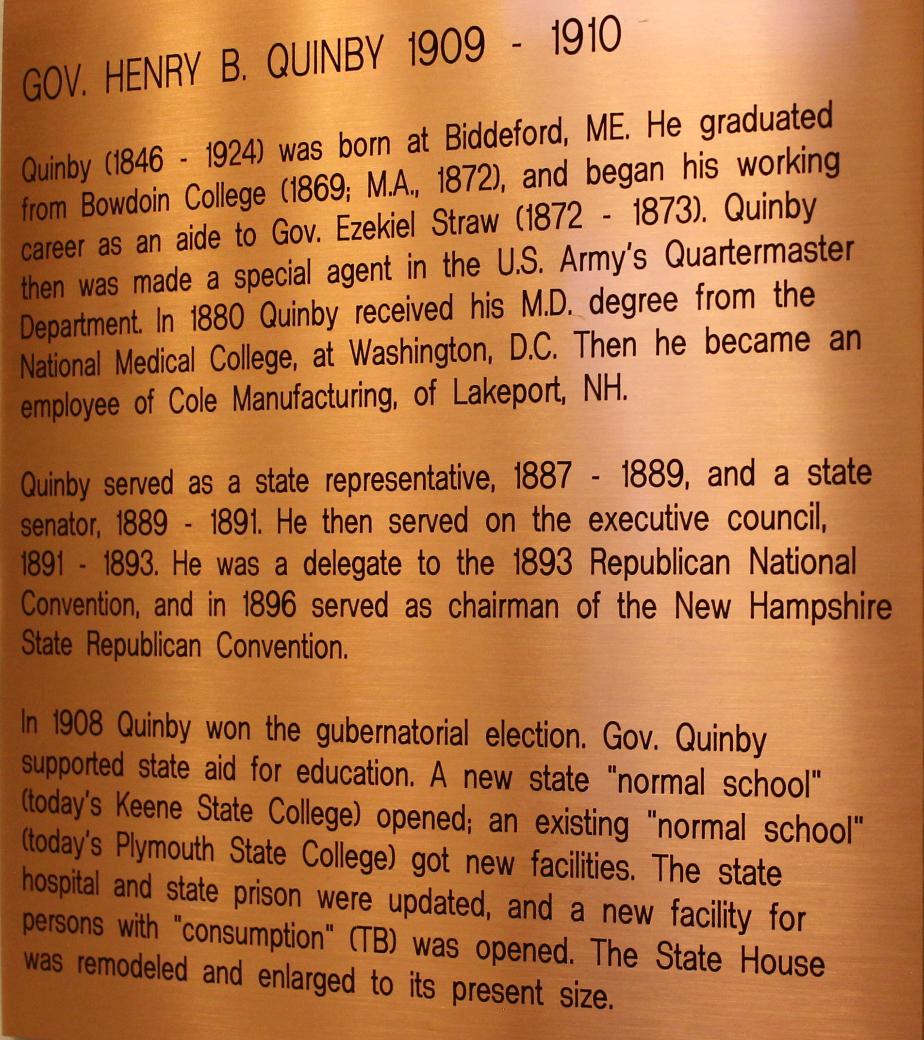
Josiah Quincy - NH State Senate President 1841-1842
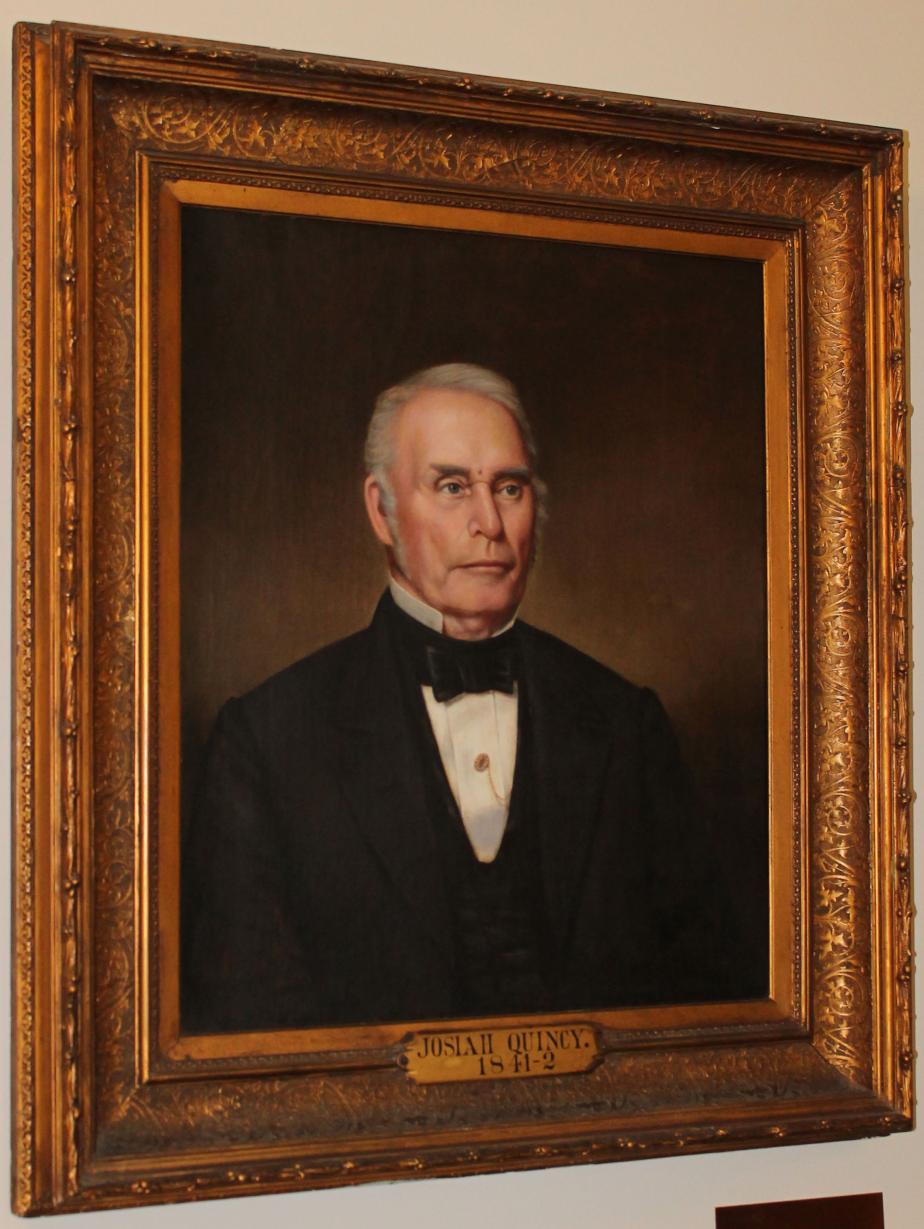
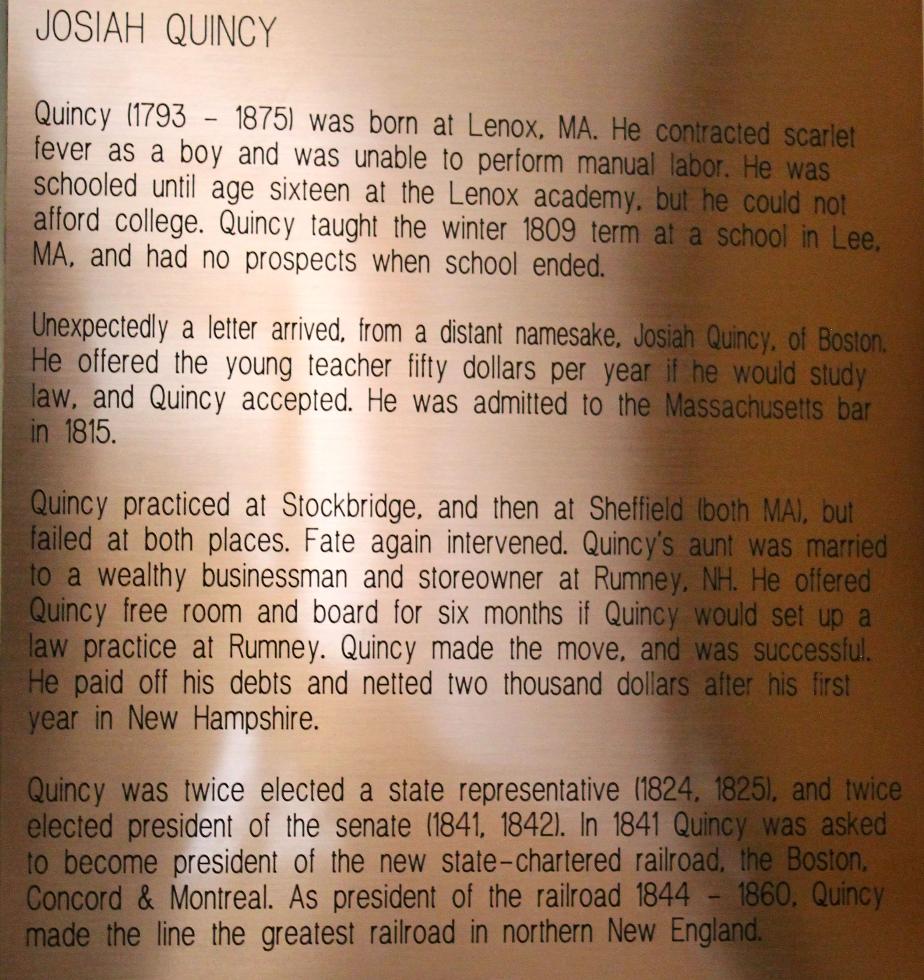
Governor George A Ramsdell 1897 - 1899

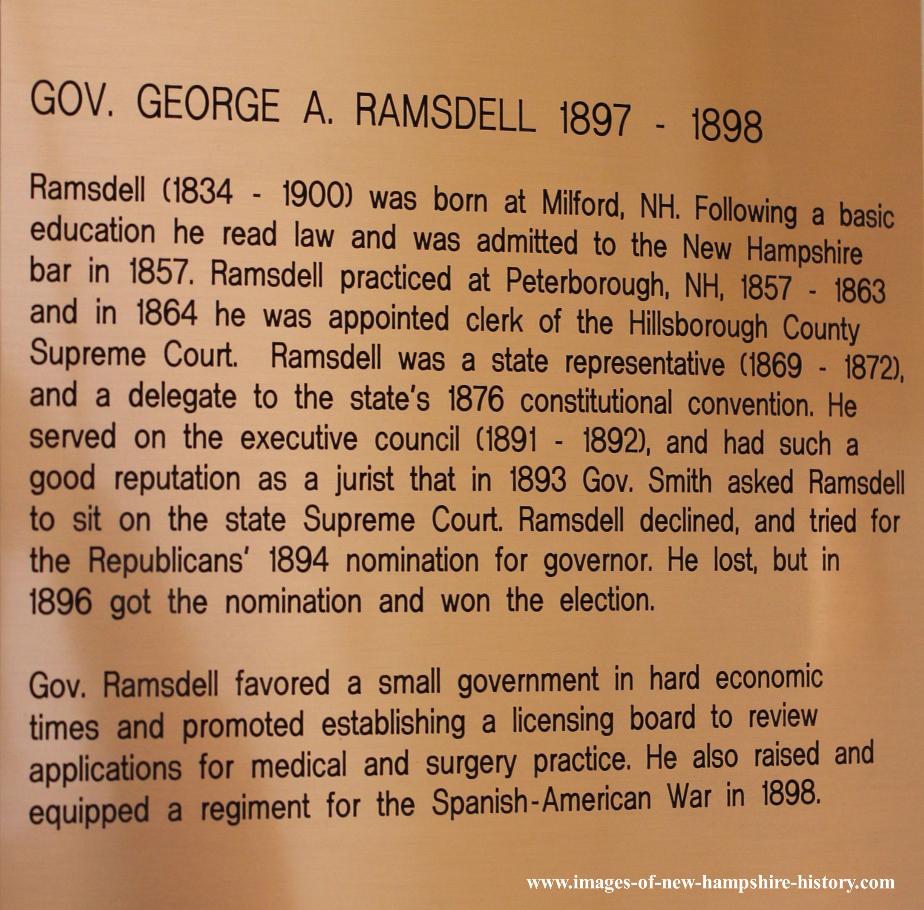
General James Reed 1724 - 1807 (Fitzwilliam)

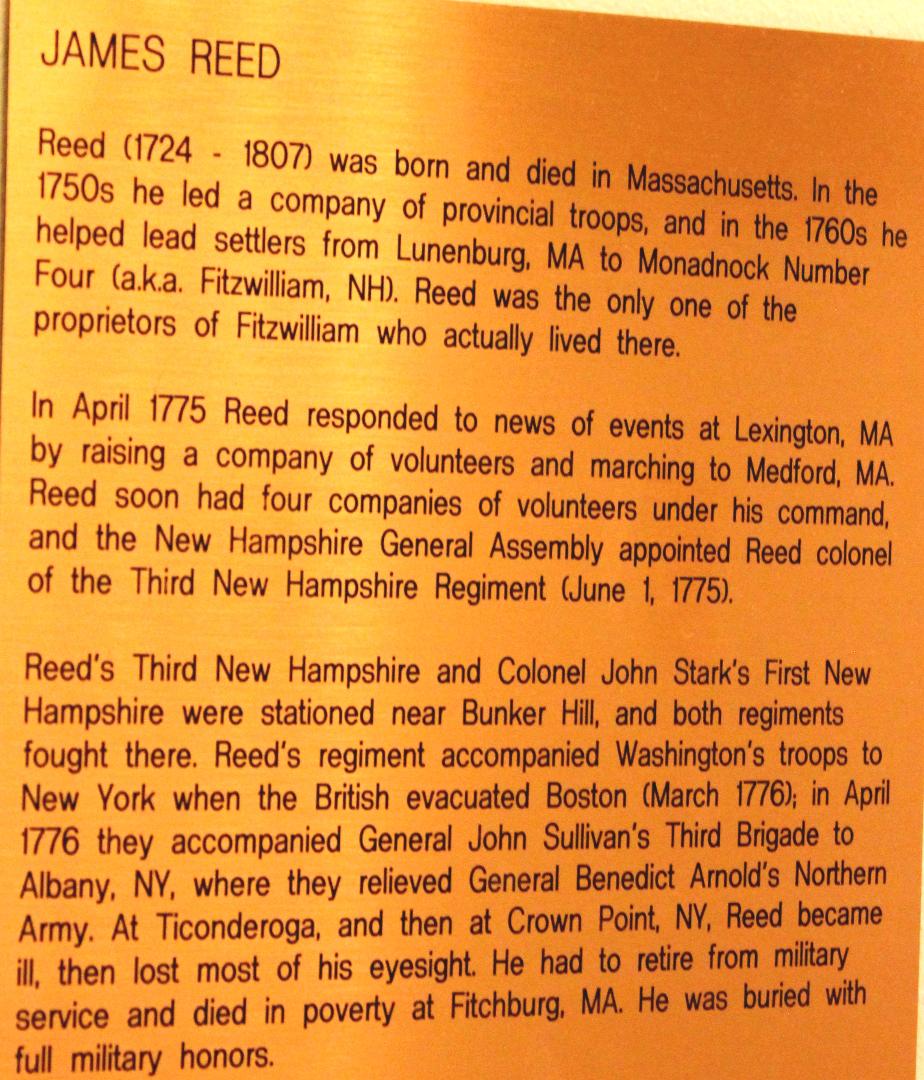
General George Reid 1733-1815 (Londonderry)
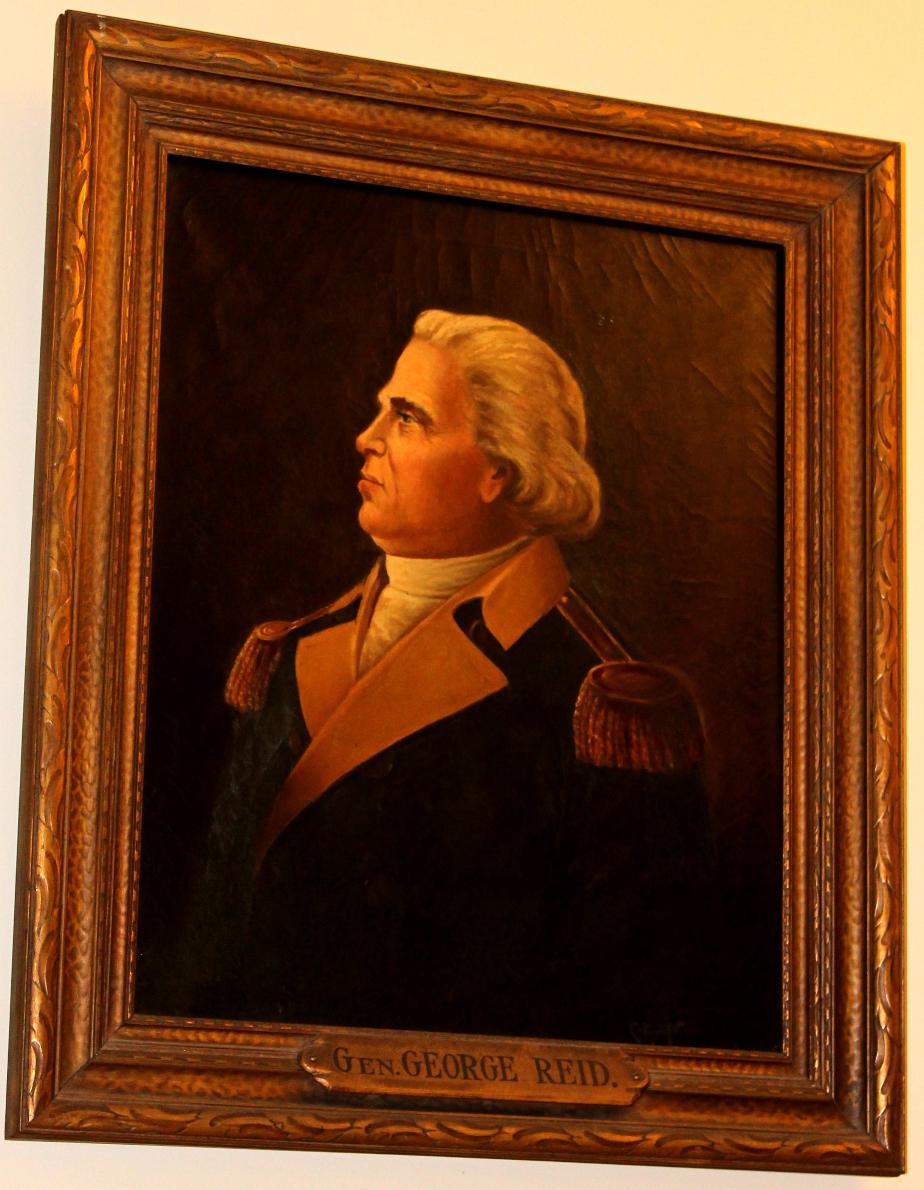
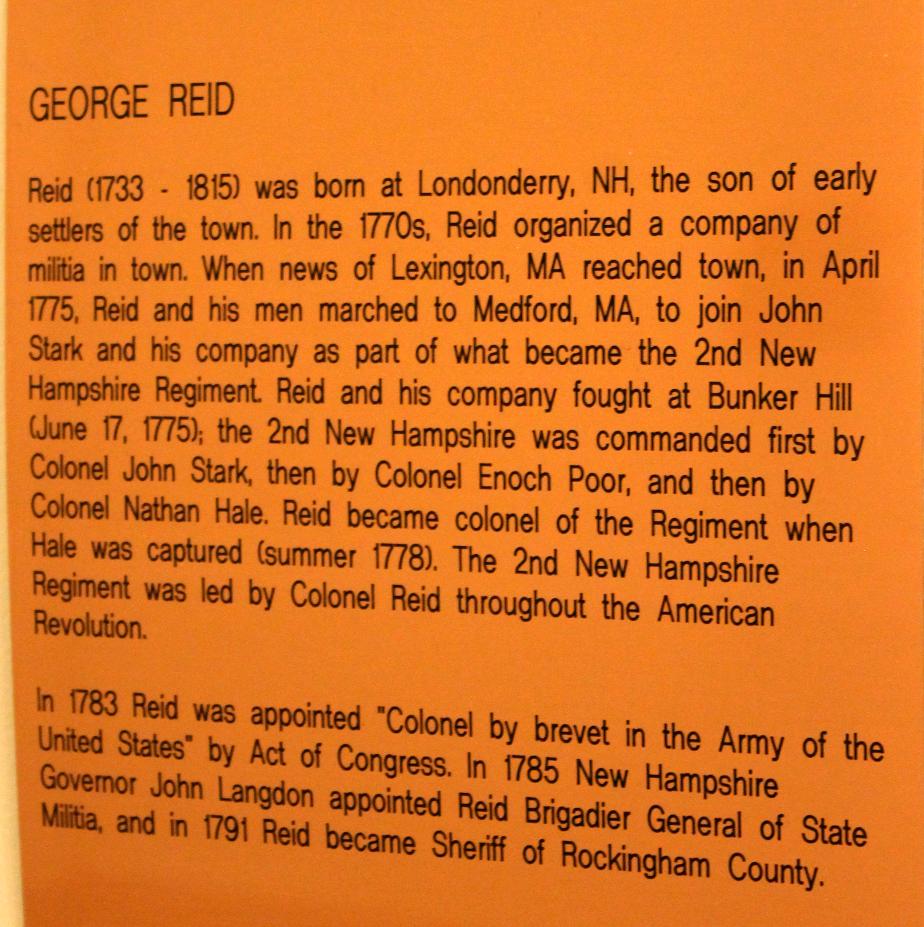
Nathaniel P. Rogers (Plymouth) - Anti-Slavery Delegate
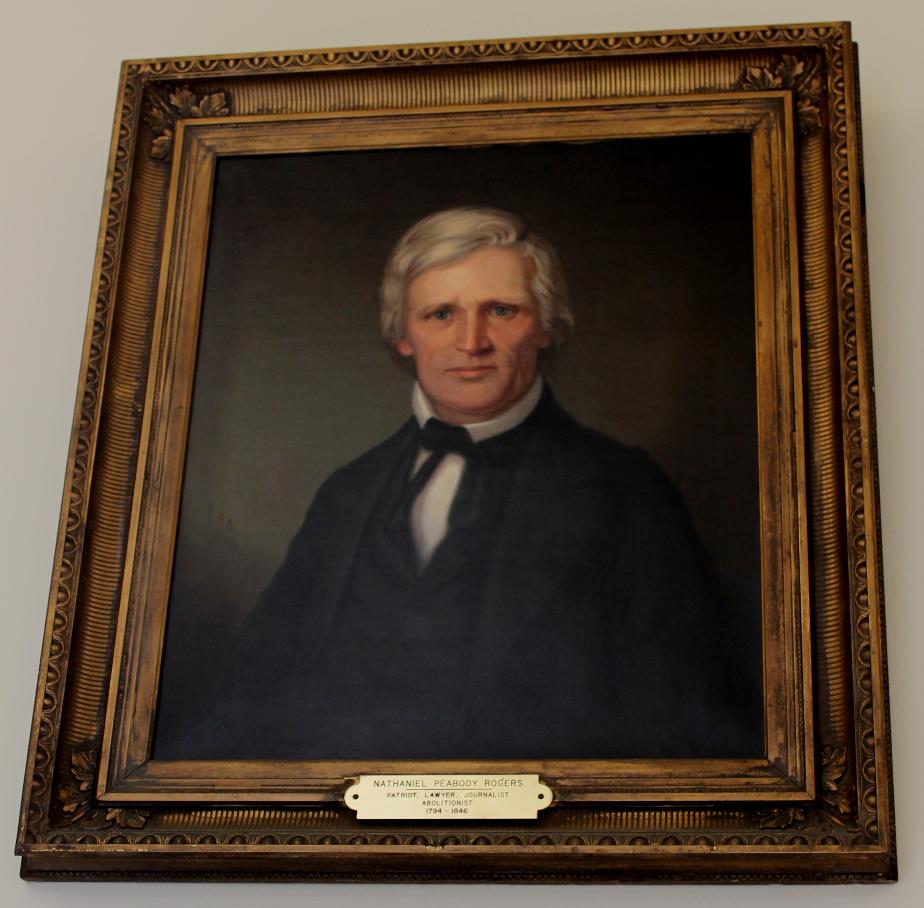
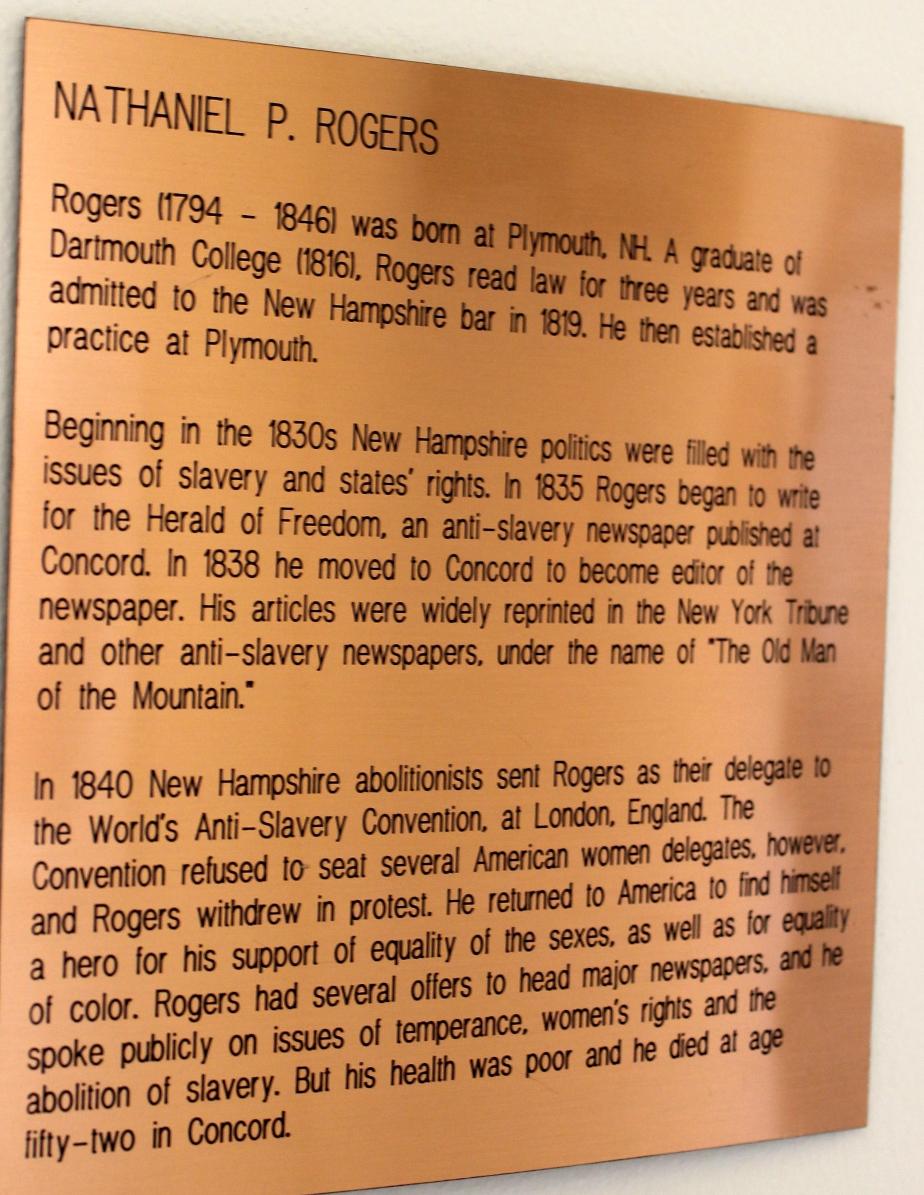
Governor Frank Rollins (Concord) : 1899 - 1900
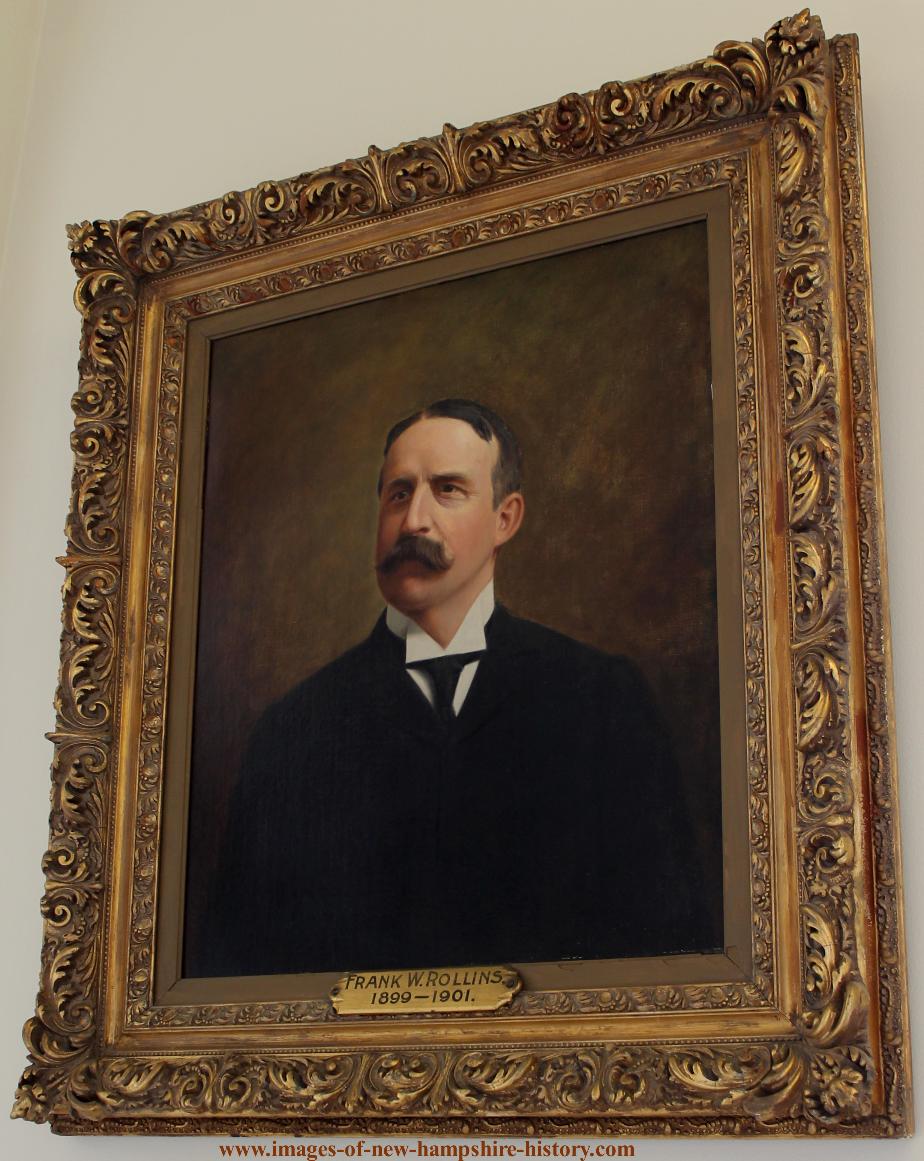
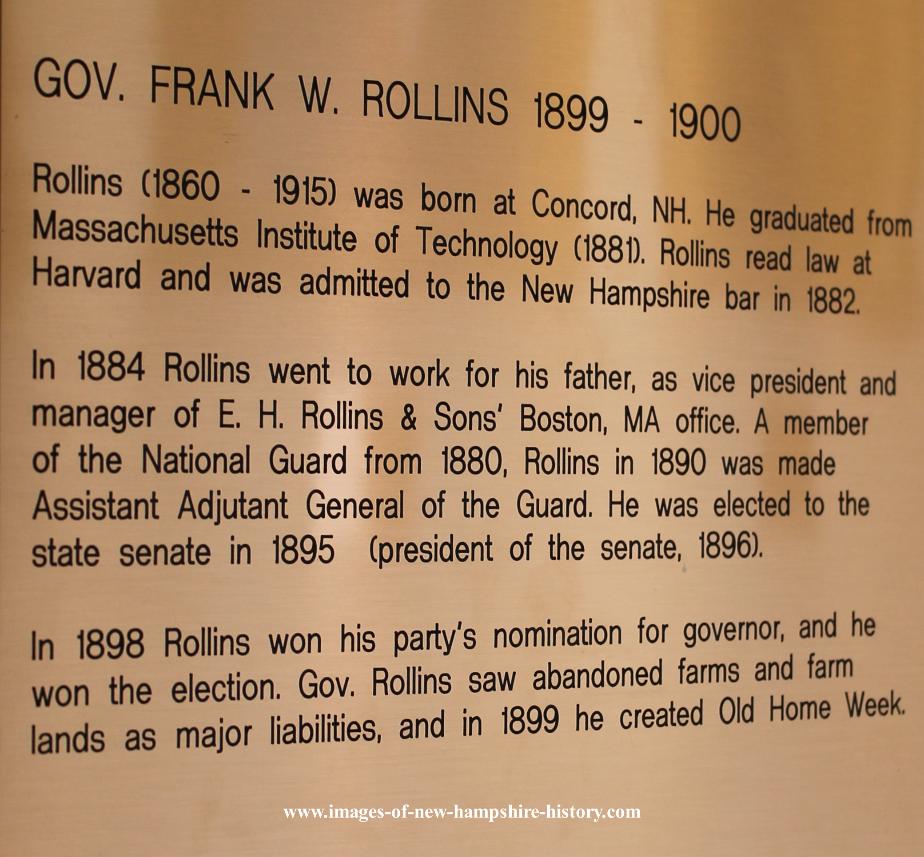
Vesta Roy - NH Governor 1983
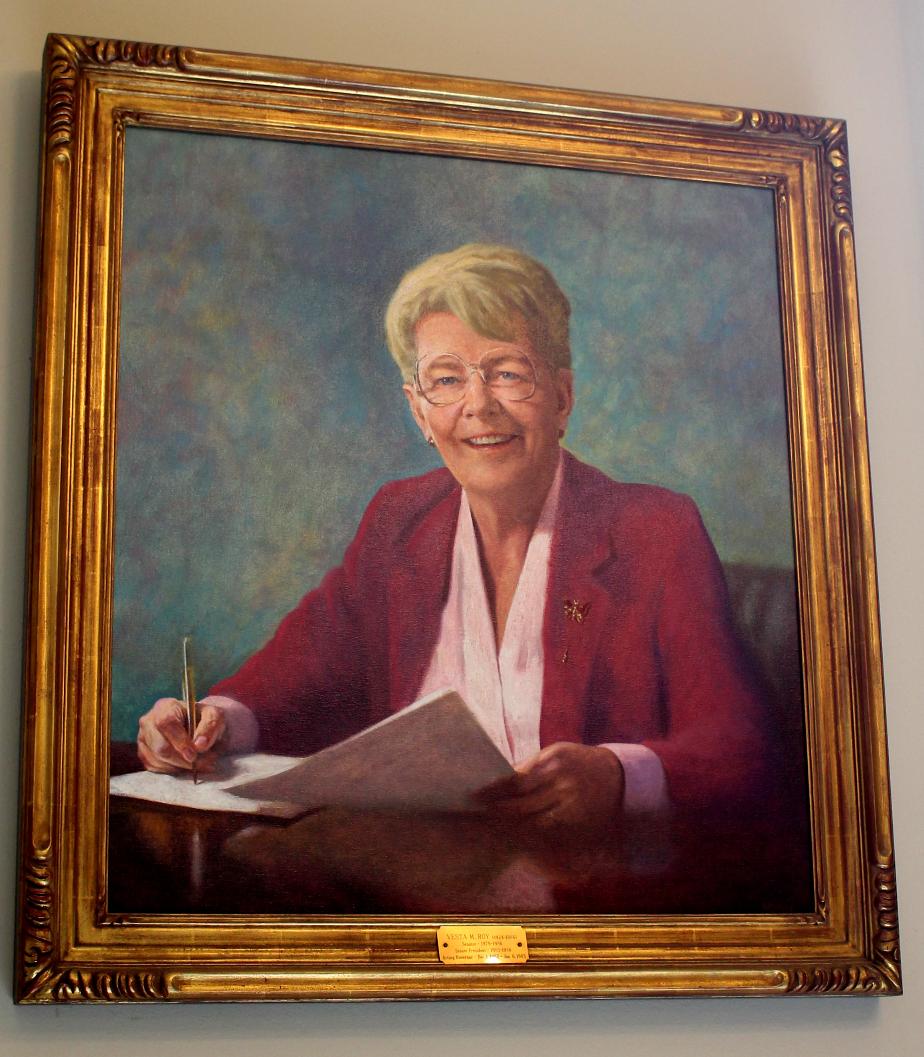
VESTA M. ROY was born in Detroit, Michigan. She served as a Rockingham, County, New Hampshire Commissioner, and as a member of both the New Hampshire House of Representatives (1973-75) and Senate (1978-86). As President of the Senate, she assumed the office of governor briefly in an acting capacity upon the death of then-Governor Hugh Gallen shortly before the inauguration of Governor-elect John H. Sununu. Although she was governor for only one week, she holds the status of being the first Republican female governor in U.S. history. Roy was also an advisor to the New Hampshire presidential campaign offices of Gerald Ford, Ronald Reagan, and George H.W. Bush. She died at her home in Kenmore, New York at the age of seventy-six and is buried in Lowell, Massachusetts.
John W. Sanborn 1822-1903(Wakefield) State Senate
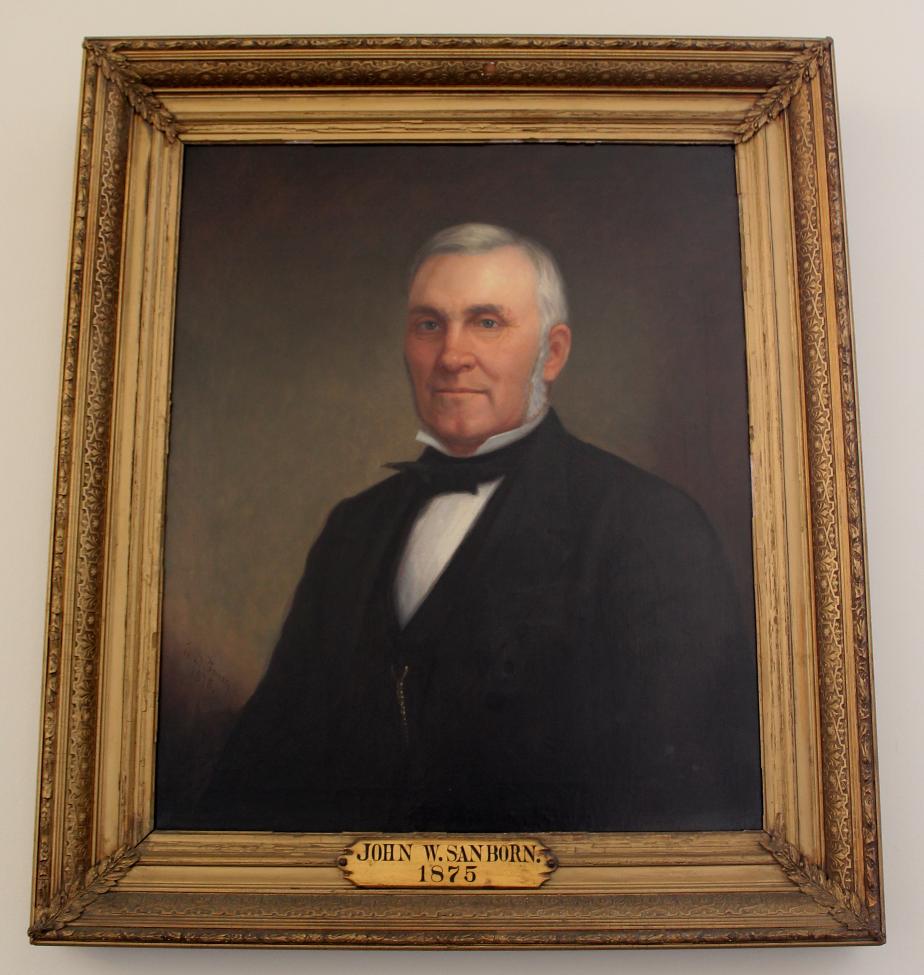
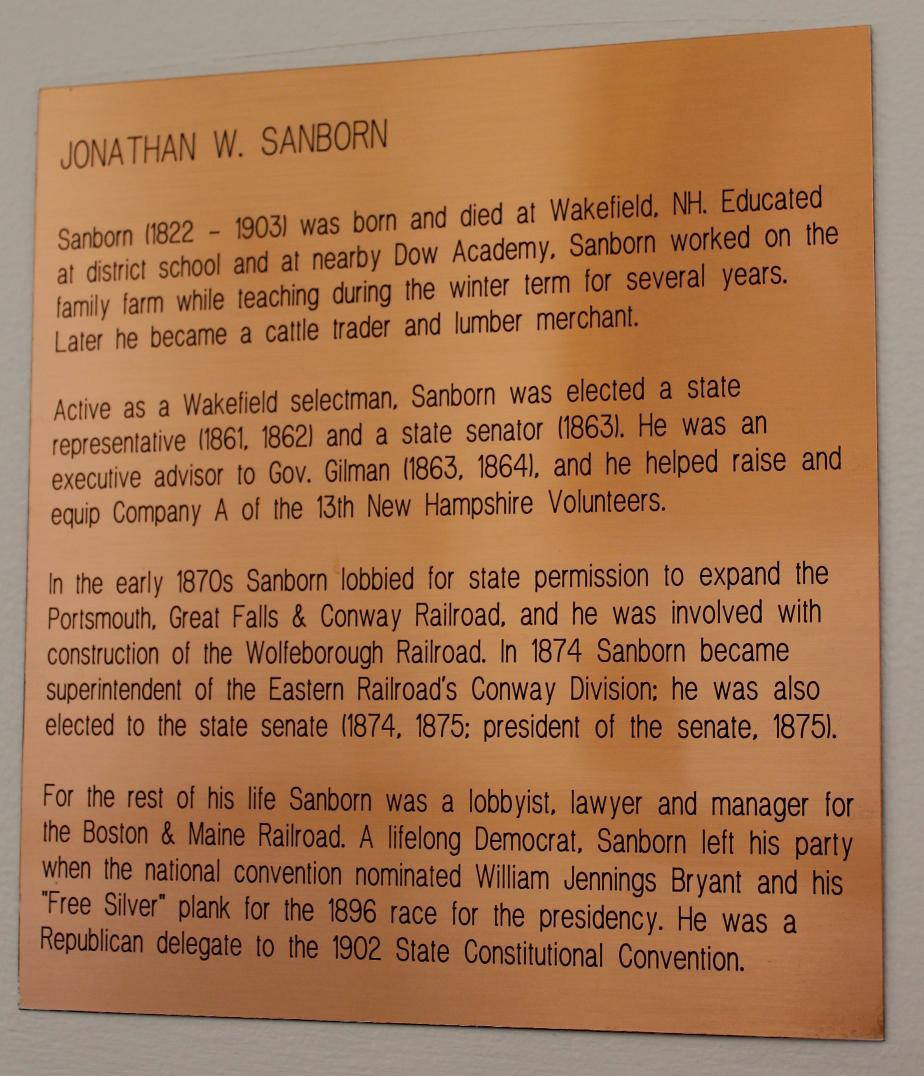
Jonathan E Sargent - NH Chief Justice (1873)
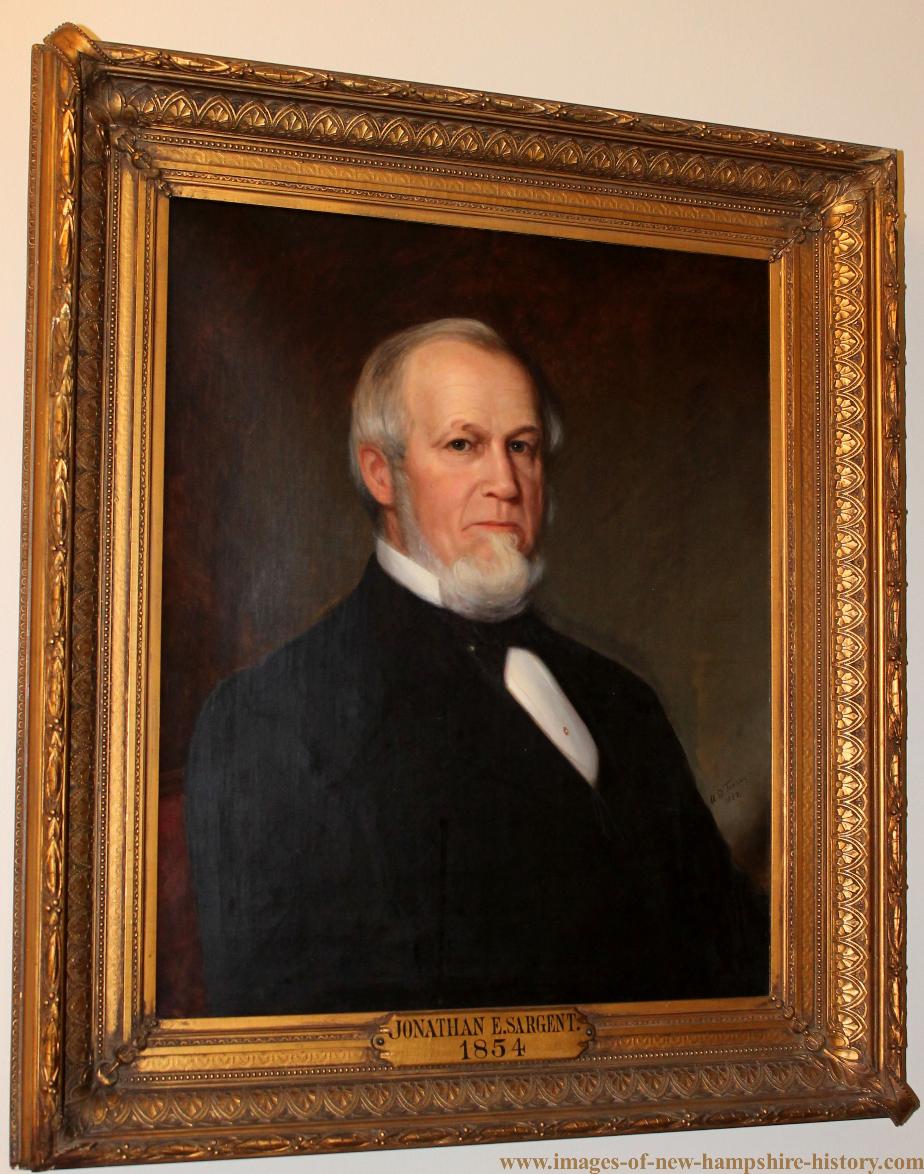
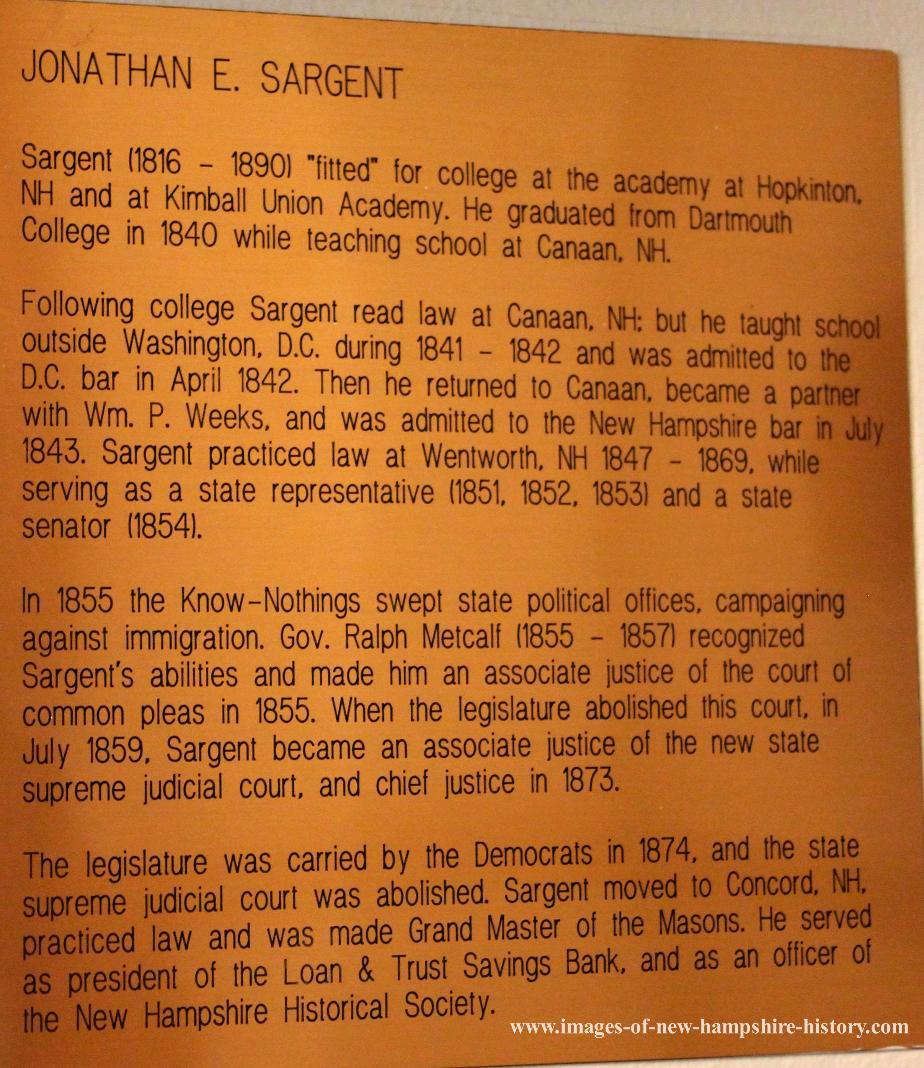
Governor Charles H Sawyer 1887 - 1888
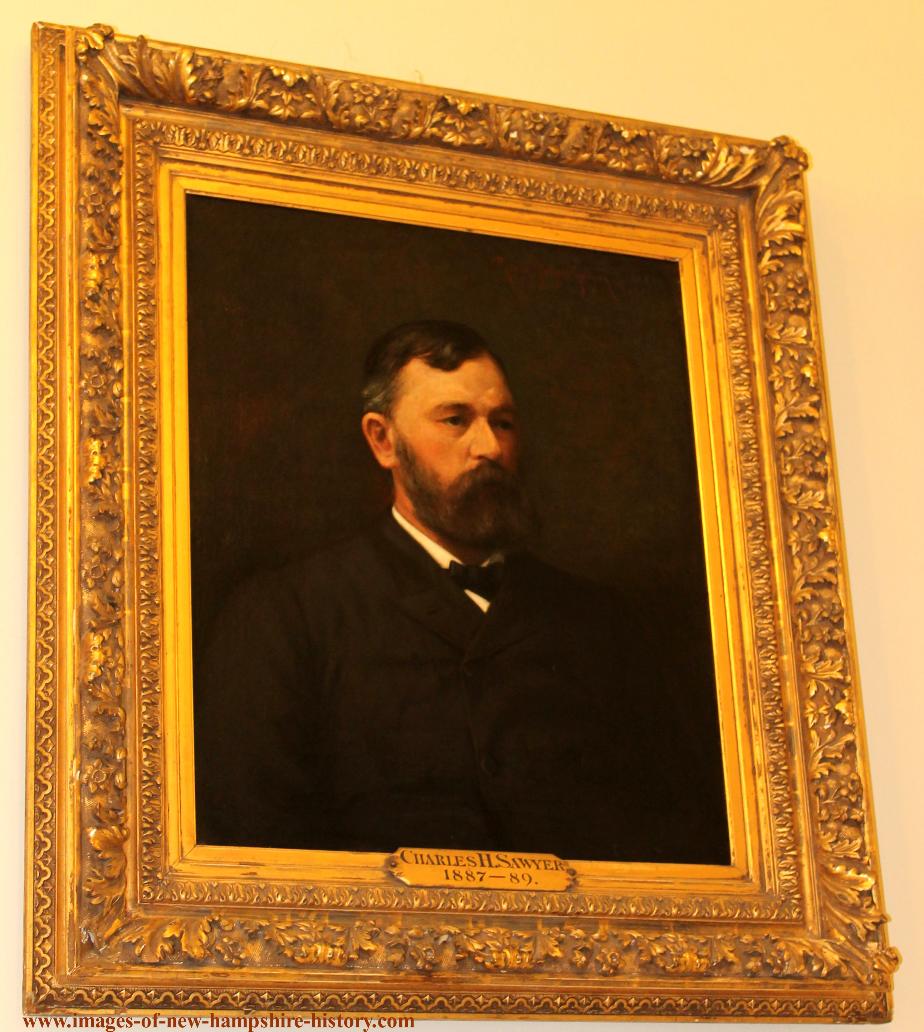

Alexander Scammell Revolutionary War General
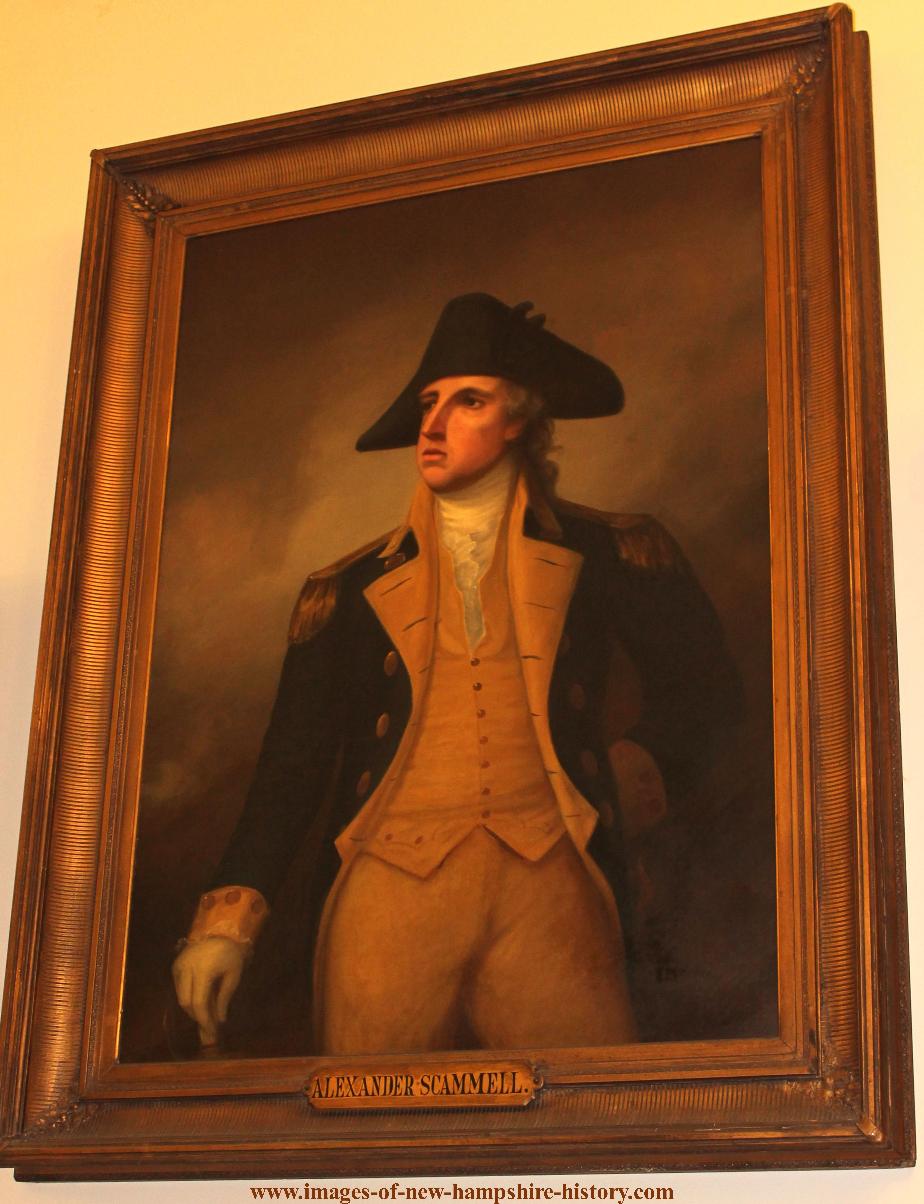
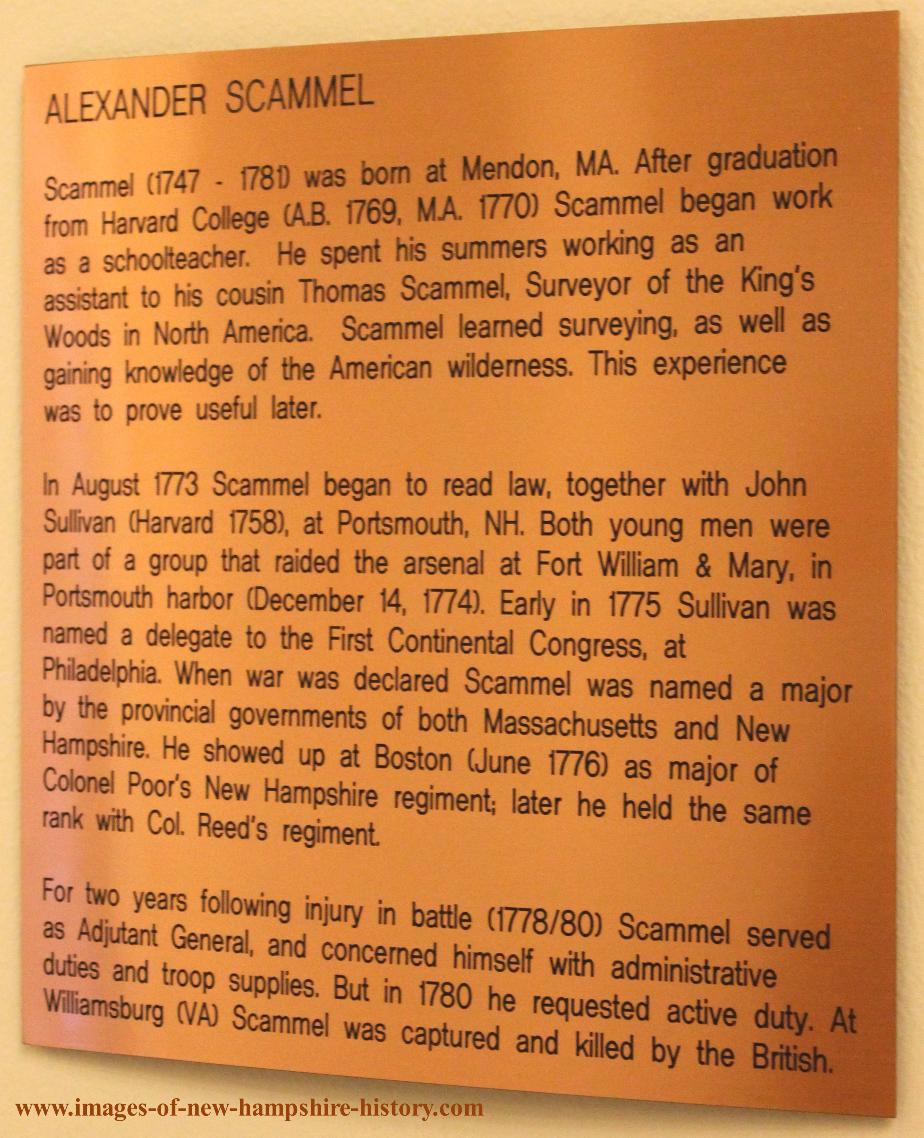
John Scammon - NH State Senate President - 1907
HON. JOHN SCAMMON, a member of the well known law firm of Eastman, Scammon & Gardner, at Exeter, was born at Stratham, N. H., September 30, 1865.
His parents, John J. and Rachel J. (Jewell) Scammon, were both natives of Stratham, where the father followed the occupation of farmer. He is now deceased, but his widow survives him and resides in Stratham. They had only two children: Frank H., a commercial traveler, who died in 1906, and John, the subject of this review, who is the third John Scammon in direct line, the grandfather having also borne that name. John Scammon, our direct subject, began his education in the schools of Exeter, N. H., and later attended Boston University.
He was admitted to the bar in 1898, having studied law with Mr. E. G. Eastman, of Exeter, with whom he has since been associated and where he has since practiced his pro- fession very successfully. A Republican in politics, he served as representative to the legislature from Exeter in 1903 and again in 1905. In 1907 Mr. Scammon was president of the New Hampshire State Senate, being representative of the Twenty-first District in the State Senate that term.
In 1911 he was the member from Exeter of the Constitutional Convention. In 1913 he was again a member of the State Senate, and at the fall election of 1914 he was elected on the Republican ticket as a member of Governor-elect Rolland H. Spaulding's council, representing the First New Hampshire District. He is a member of the Masonic order, in which he has attained the 32d degree, belonging to the Blue Lodge and Chapter at Exeter. Mr. Scammon was married in 1891 to Mary J. Dixey, a native of Marble- head, Mass., and daughter of Richard H. and Sarah J. (Chase) Dixey, her father being a well known provision dealer in Marblehead. Mr. and Mrs. Scammon are the parents of five children--Oscar J., John J., Mariana Hoyt, Henry G. and George Richard. The family attend the Congregational church. They are among the best known and most popular residents of the town. John Scammon passed away on April 8, 1940 in Keene New Hampshire

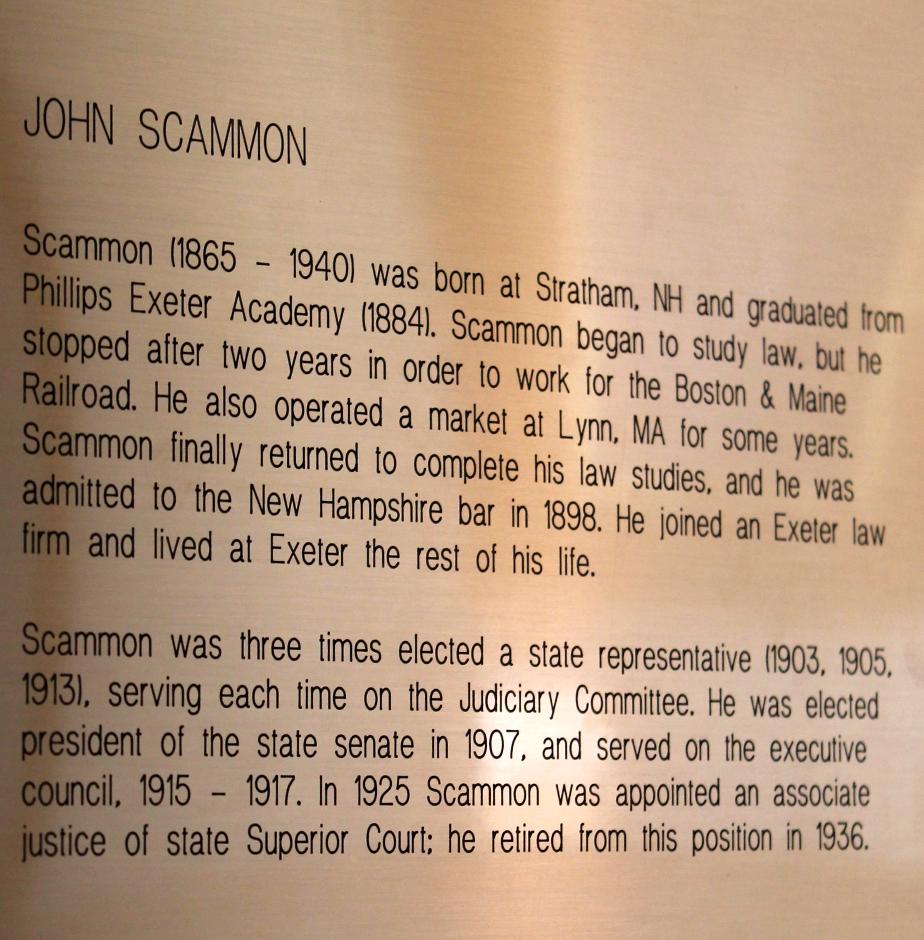
Jeanne Shaheen - NH Governor (1997-2003)
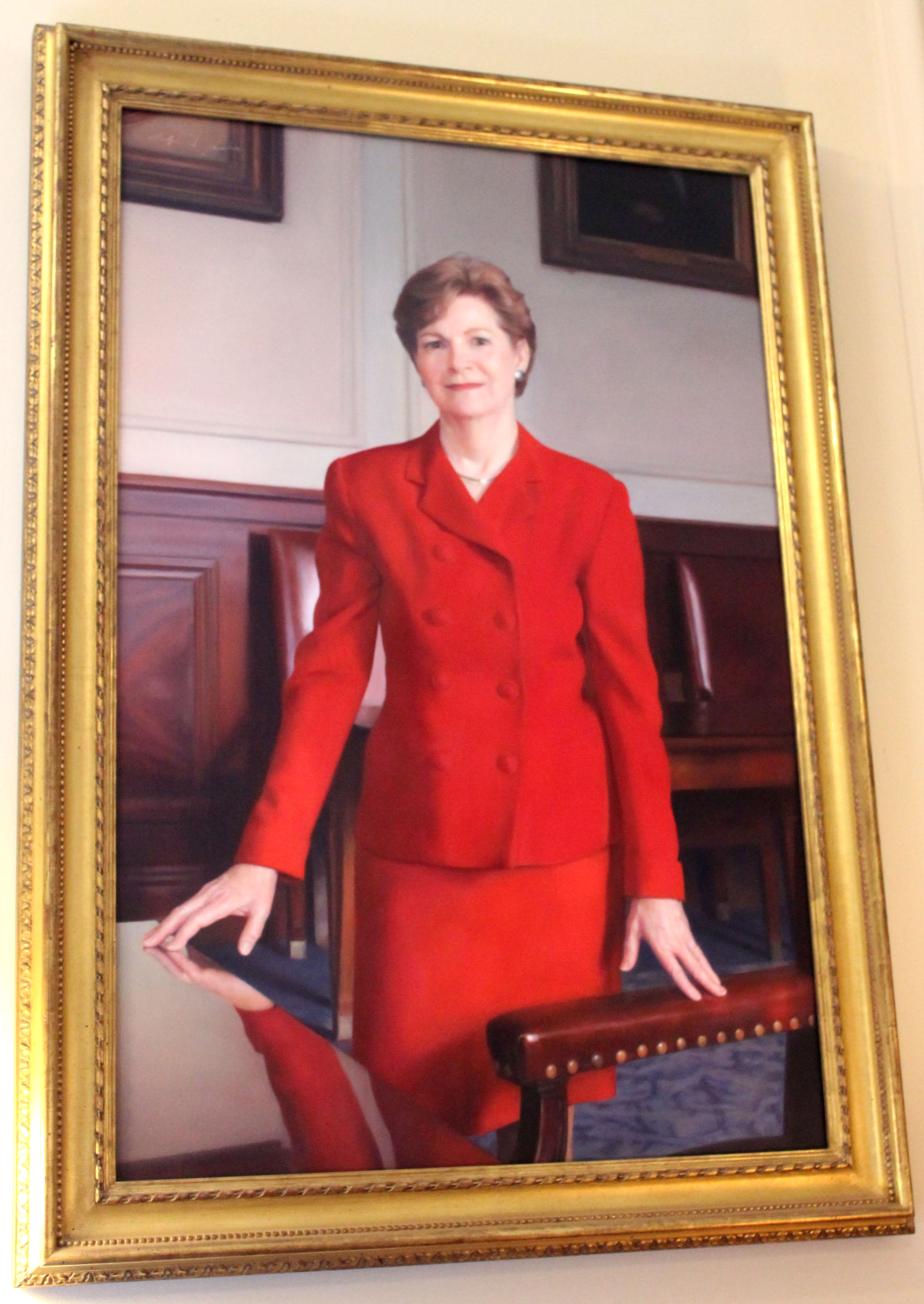
Jeanne Shaheen, a Senator from New Hampshire; born in St. Charles, Mo., January 28, 1947; B.A., Shippensburg State College, Shippensburg, Penn., 1969; M.S.S., University of Mississippi, 1973; New Hampshire State senator, 1990-1996; governor of New Hampshire, 1997-2003; unsuccessful candidate for election to the United States Senate in 2002; elected as a Democrat to the United States Senate in 2008; reelected in 2014 for the term ending January 3, 2021.
Senator James Sheafe (Portsmouth)
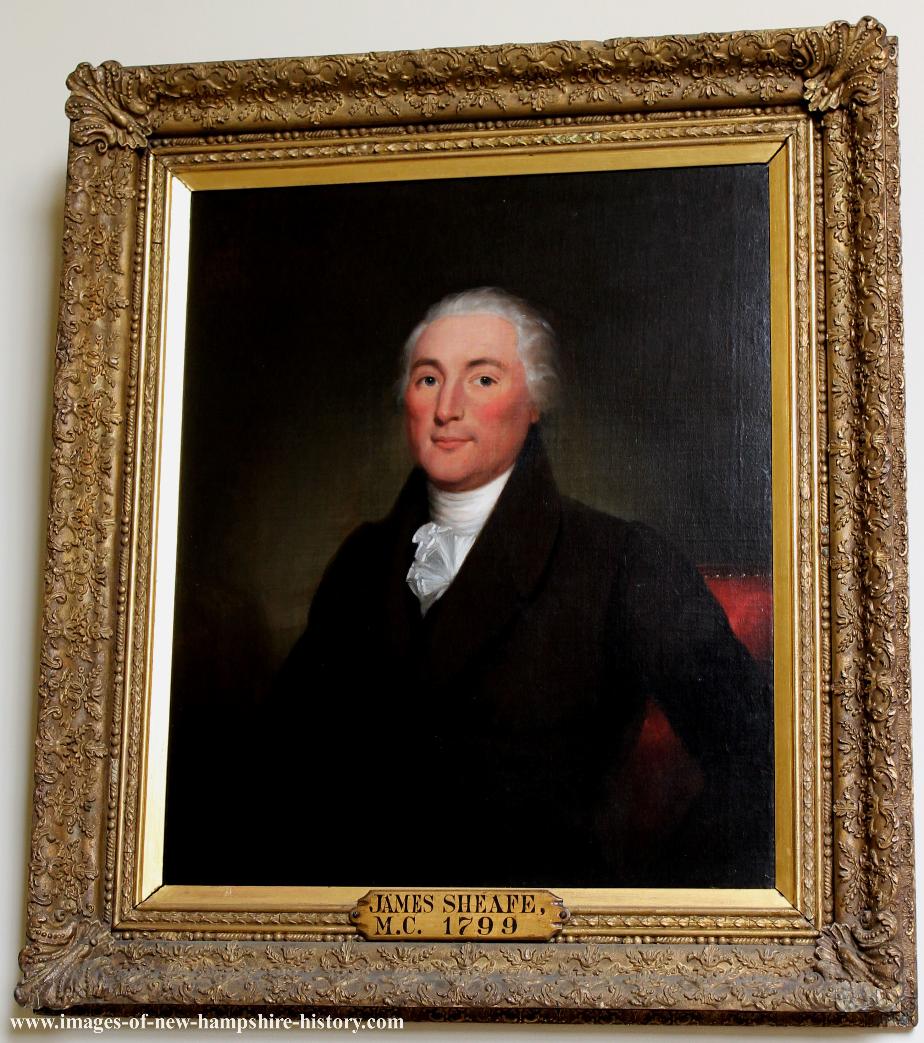
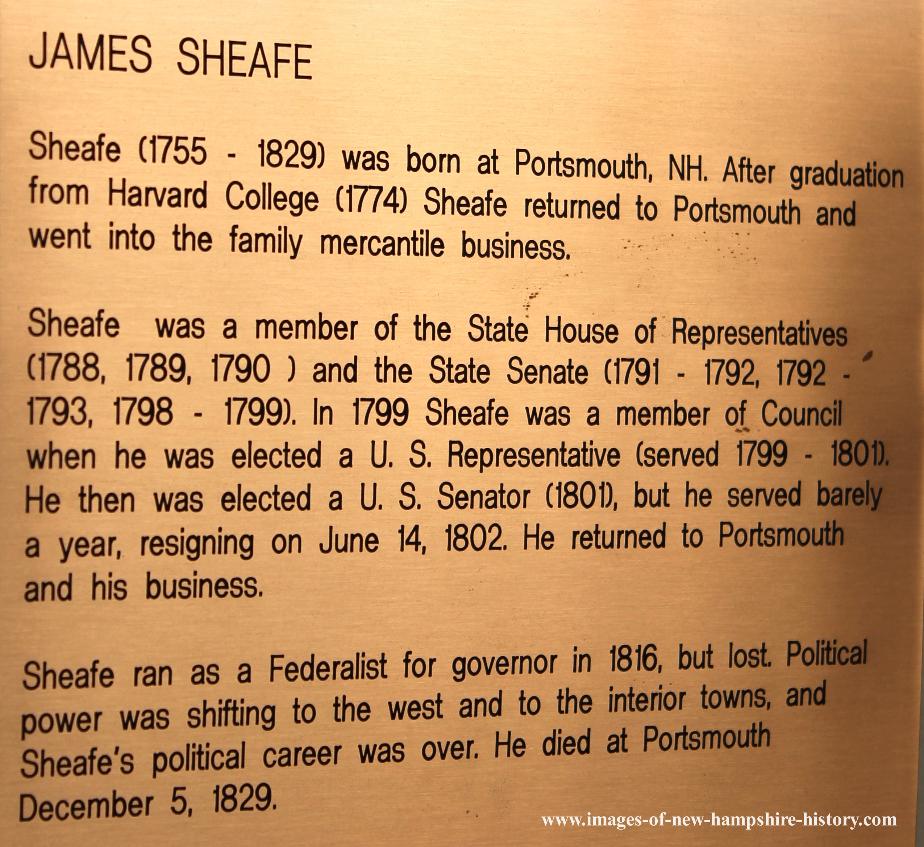
Alan Shepard Astronaut - Derry New Hampshire
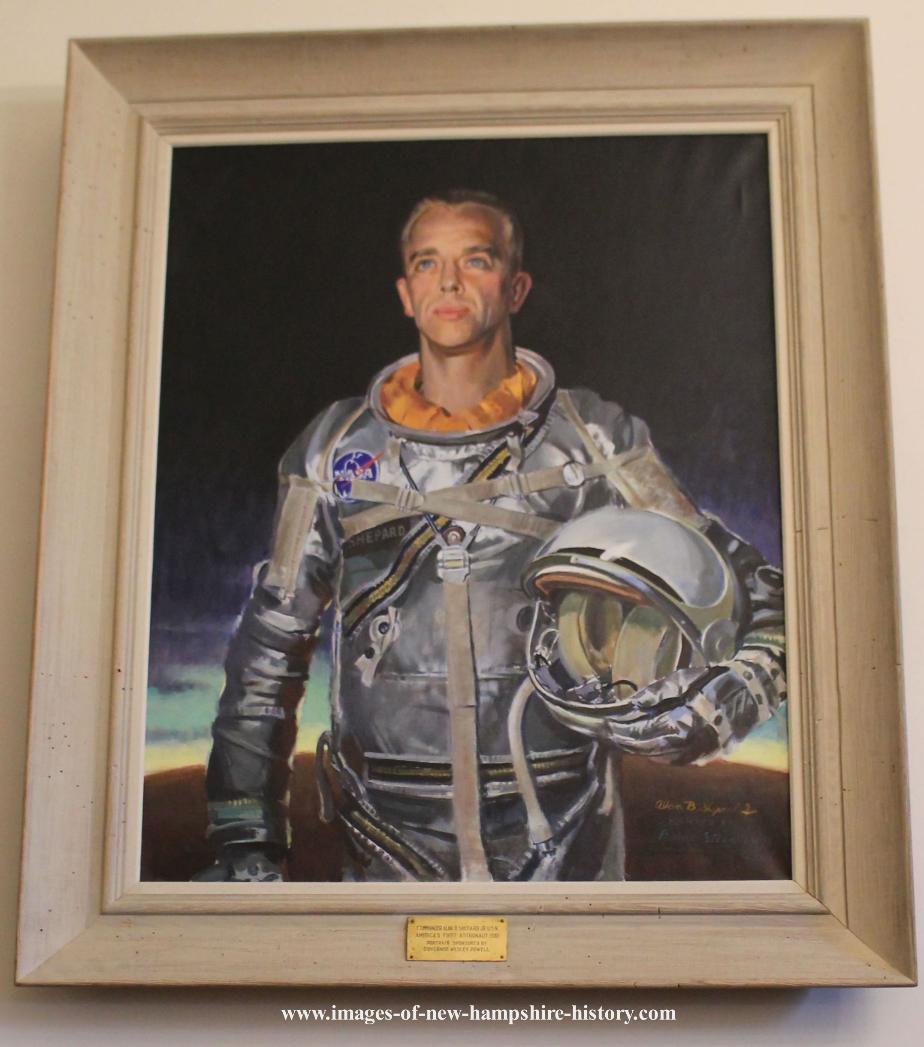
Alan Shepard was born on November 18, 1923, in East Derry, New Hampshire, a small village a few miles south of Manchester.
He was the son of an army colonel. As a small child, Shepard attended school in a one-room schoolhouse, where he was a good student, particularly in mathematics. He graduated from the Pinkerton Academy in Derry, New Hampshire, and entered the U.S. Naval Academy in Annapolis, Maryland, in 1941. During World War II, Shepard served as an ensign aboard the destroyer Cogswell in the Pacific. Following the war, he began flight training and qualified as a pilot in 1947.
As a Naval pilot, Shepard served in Norfolk, Virginia, Jacksonville, Florida, and aboard several aircraft carriers in the Mediterranean. In 1950, he became a test pilot, and over the next eight years he tested a variety of aircraft and worked as a flight instructor. He was also assigned to duty aboard a carrier in the Pacific and eventually earned an appointment to the staff of the Atlantic fleet's commander in chief. One of the First Astronauts In 1958, Shepard was one of 110 test pilots chosen by NASA as prospective astronauts. NASA planned to judge the applicants based on physical and mental criteria, looking, as NASA administrator T. Keith Glennan stated, for "men of vision … with a practical, hardheaded approach to the difficult job ahead." After a battery of physical and psychological tests, seven men were selected as the nation's first astronauts: John Glenn, M. Scott Carpenter, Virgil Grissom, Donald Slayton, Leroy Cooper, Walter Schirra, and Alan Shepard.
Following the announcement Shepard said, "My feelings about being in this program are really quite simple….I'm here because it's a chance to serve the country. I'm here, too, because it's a great personal challenge: I know [space travel] can be done, that it's important for it to be done, and I want to do it." Shepard began intensive training for space flight. Courses in biology, geography, astrophysics, astronomy, and meteorology supplemented his physical training, which included exposure to conditions much more severe than were anticipated during space travel. Shepard also spent long hours performing weightlessness tests, preparing for the weaker gravitational pull outside the earth's atmosphere. First American in Space Early in 1961, NASA chose Shepard over Glenn and Grissom, the two other finalists, to be the first American in space. The astronauts themselves had attempted to downplay the importance of the selection of the first astronaut. John Glenn said, "We have tried to do away with a lot of this talk about who is going to be first on this, because we feel very strongly that this is so much bigger than whose name happens to be on the first ticket." Preparations for America's first manned space flight therefore commenced in a spirit of cooperation. Glenn acted as Shepard's backup, ready if Shepard became unable to fly, and Slayton served as Shepard's radio contact at the Mercury Control Center. The other astronauts also had responsibilities during Shepard's flight. On May 5, 1961, Freedom 7 lifted off from Cape Canaveral, Florida. Shepard piloted the Mercury capsule 115 miles above the earth's surface and 302 miles across the Atlantic Ocean. After landing safely in the Atlantic, Shepard was picked up from the water by helicopter pilot; his first words were, "Man, what a ride!" Although the trip lasted for only about fifteen minutes, Shepard's journey was almost technically perfect, and it paved the way for many more flights by U.S. astronauts. Shepard returned to ticker-tape parades, and he received a medal from President John F. Kennedy. After his historic flight Shepard looked forward to future missions.
In 1963, however, he was diagnosed as having Meniere's syndrome, a disease of the inner ear that produces nausea, vertigo, and hearing impairment. NASA removed Shepard from active flight duty and reassigned him to NASA's Houston, Texas, facility, where he became chief of the Astronaut Office. Although he became quite wealthy as a result of real estate and banking investments during the next few years, he yearned for space flight. In 1968, he underwent a successful operation in which a small drain tube was implanted in his inner ear. Shepard applied for readmission to active duty, and in 1969 his patience and determination were rewarded when NASA chose him to command the Apollo 14 flight to the moon. "I think if a person wants something badly enough," Shepard once said, "he's just got to hang in there and keep at it." Went to the Moon Apollo 14 became an important mission for the U.S. space program. Apollo 13 had been a disappointment; technical difficulties had prevented it from landing on the moon as planned and placed the astronauts in danger, and the space program was losing public support. The Apollo 14 astronauts were scheduled to test new equipment on the moon's surface and to spend longer periods outside the space capsule. Shepard and Edwin Mitchell were assigned to land on the moon while Stuart Roosa orbited the moon in the command module, the Kitty Hawk On January 31, 1971, Apollo 14 blasted off from Cape Kennedy, nearly ten years after Shepard's first space flight. Five days later Shepard and Mitchell landed on the moon's surface, the third group of astronauts to do so. From their lunar module, the two astronauts stepped out into the Fra Mauro Highlands, as the world watched on television. Shepard said, "Wow, it's really wild up here…. It certainly is a stark place." The astronauts had brought a lunar cart with them, and during two trips outside the lunar module, each lasting more than four and a half hours, they conducted experiments and gathered rock specimens. On one excursion Shepard hit a golf ball across the moon's surface. In addition, the astronauts left behind a multi-million dollar mini-scientific station that would continue to send messages to scientists on earth. Thirty-three and a half hours after they landed, the two astronauts completed a successful docking with Kitty Hawk. The 240,000-mile journey back to earth ended with a splash-down near Samoa in the South Pacific on February 9. By all accounts, the voyage was a big success.
Immortalized in The Right Stuff The story of the 1961 flight was immortalized in a book by Tom Wolfe and 1983 movie, both titled The Right Stuff. Both the movie and the book found a sizable audience, but Shepard wasn't that impressed, as he told Publisher's Weekly. "Wolfe never talked to any of us original seven guys. His book was based on hearsay, on what he got from second generation astronauts. The story line was good, but the characterizations left a little to be desired." Shepard and Deke Slayton, another former astronaut, sought to set the story straight when they contracted to write their own account of the Mercury, Gemini and Apollo programs, tentatively titled Giant Steps: The Inside Story of the American Space Program. "The other books written about the space program have been may be more like stories by engineers than by reporters," Shepard told Publisher's Weekly. "Ours has a little more drama." Asked why he had waited until the mid-1990s to tell his story, he told Publisher's Weekly,"It's been in the back of my mind, but I've been busy with other things until now, until these guys came to me." Shepard retired from NASA in 1974. Always a successful entrepreneur, he developed a wholesale beer distributorship and a real estate firm in the Houston area. Shrewd investments in horses, banks, oil, and real estate have made him a multimillionaire. He has been married for over 40 years and has two daughters, lives in Houston and chairs the board of the Mercury 7 Foundation, the original astronauts' educational organization. Although no longer active in the space program, Alan Shepard will be remembered both as the first American in space and as one of a handful of men to walk on the moon. Shepard, Alan American Astronaut 1923-1998 Alan Bartlett Shepard Jr. was America's first human in space and the fifth of only twelve men to walk on the Moon. His combination of professionalism and impish sense of humor vaulted him to the status of space hero, and he became a symbol of perseverance to the world. A graduate of the U.S. Naval Academy, test pilot, and flight instructor, Shepard was selected as one of the original seven Mercury astronauts. At the age of thirty-seven, he was launched atop a Redstone rocket, May 5, 1961. The tiny Mercury capsule soared to an altitude of 116 miles (187 kilometers). The 15-minute sub-orbital flight demonstrated that a human could survive and function in the weightlessness of space.
The success of Shepard's mission inspired U.S. President John F. Kennedy's challenge to the nation to land men on the Moon by the end of the decade. After an ear problem grounded Shepard for many years, he finally returned to space as commander of Apollo 14 in 1971 aboard the giant Saturn V Moon rocket, 111-meters (363-feet) high compared to his 83-foot (25-meter) Redstone, bringing back 43 kilograms (94 pounds) of Moon rocks. Shepard left behind two golf balls hit with a cleverly devised golf club. Alan Shepard died July 22, 1998 from leukemia.
Governor Jeremiah Smith 1809-1810

JEREMIAH SMITH, the ninth governor of New Hampshire, was born in Peterborough, New Hampshire on November 29, 1759. His education was attained at Harvard University and Rutgers College in New Jersey, where he graduated in 1780. He studied law, was admitted to the bar in 1786, and then established his legal career in his hometown of Peterborough. Smith served in the Revolutionary War, and was wounded in the Bennington Battle. He first entered public service as a member of the New Hampshire House of Representatives, a position he held from 1787 to 1791. He served as a member of the 1791 and 1792 constitutional conventions; was a member of the U.S. House of Representatives from 1791 to 1797; and served as the U.S. district attorney for New Hampshire from 1797 to 1800. He also served as probate judge of Rockingham County from 1800 to 1802; was a U.S. circuit court judge from 1801 to 1802; and served as chief justice of the New Hampshire superior court from 1802 to 1809. Smith next won election to the governorship in 1809. During his tenure, judicial reforms were lobbied for; and Dartmouth’s medical school was advanced. After running unsuccessfully for reelection, Smith returned to his legal career. From 1813 to 1816 he served as chief justice of the state supreme court. He also was co-counsel with Daniel Webster and Jeremiah Mason in the well-known 1819 Dartmouth College case. Governor Jeremiah Smith passed away on September 21, 1842, and was buried in the Winter Street Cemetery in Exeter, New Hampshire.
Governor John Butler Smith 1893 - 1894

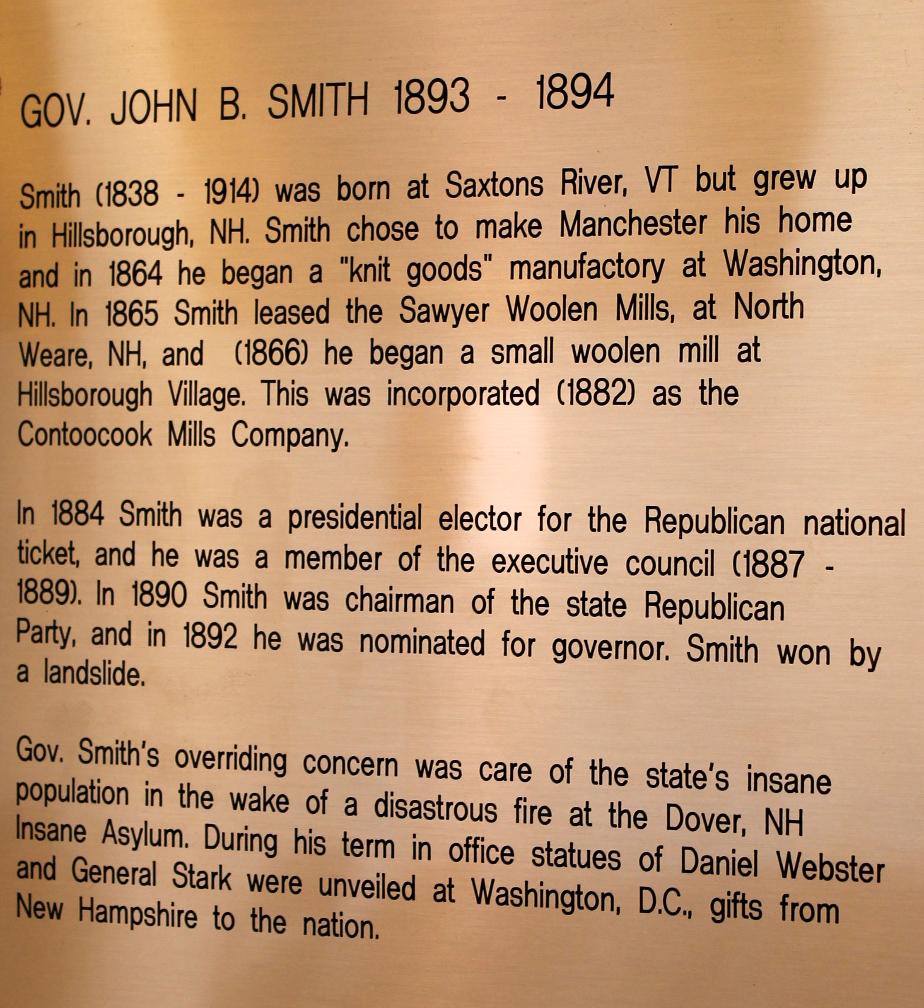
Governor Frederick Smyth: 1865 - 1866
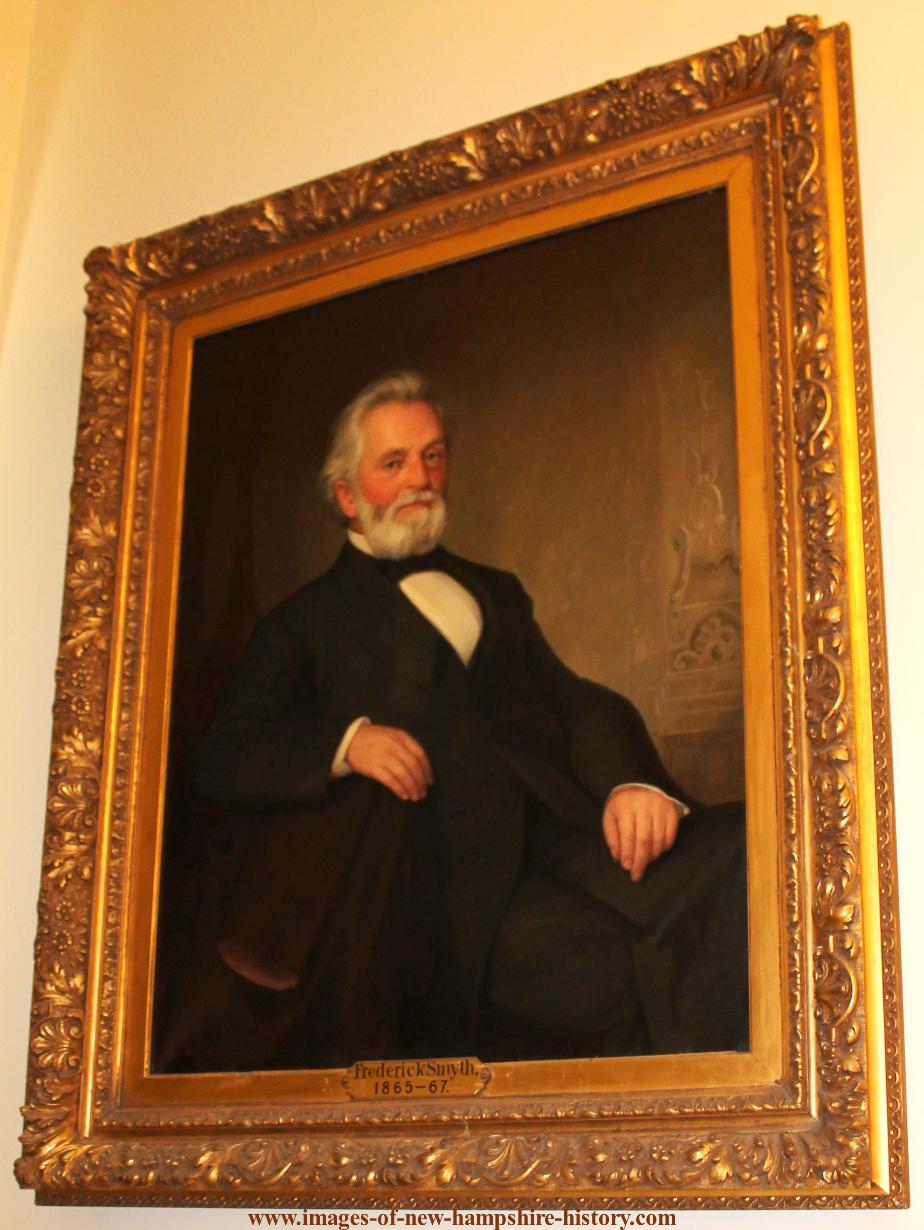
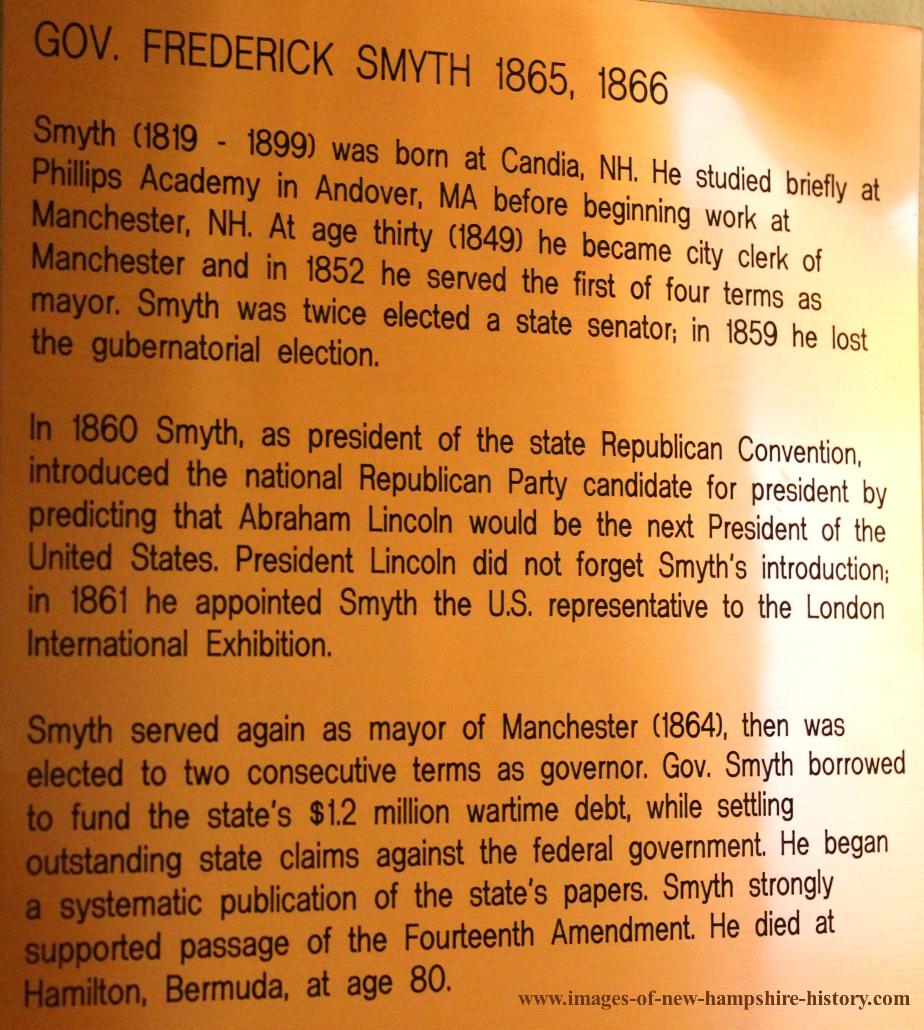
Leslie P Snow - NH State Senate President (1921)
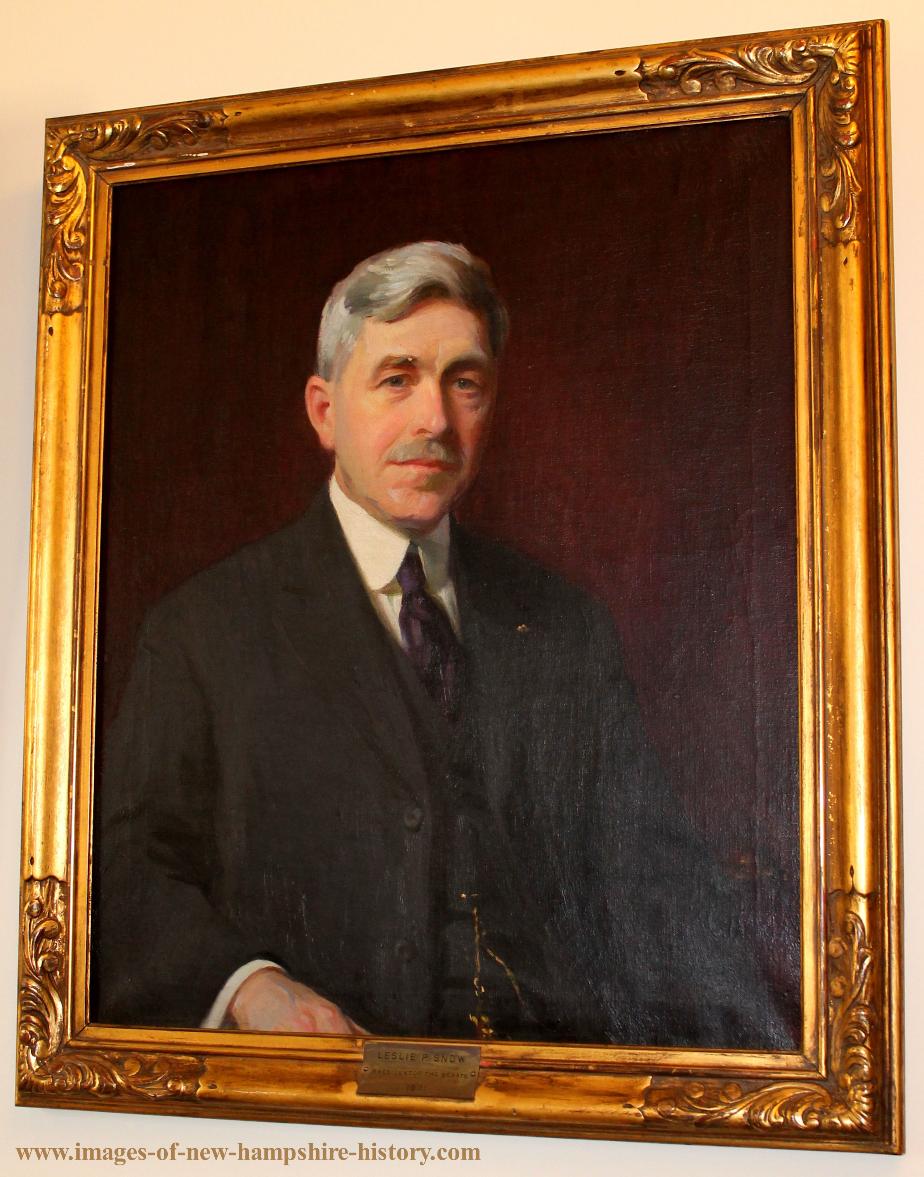
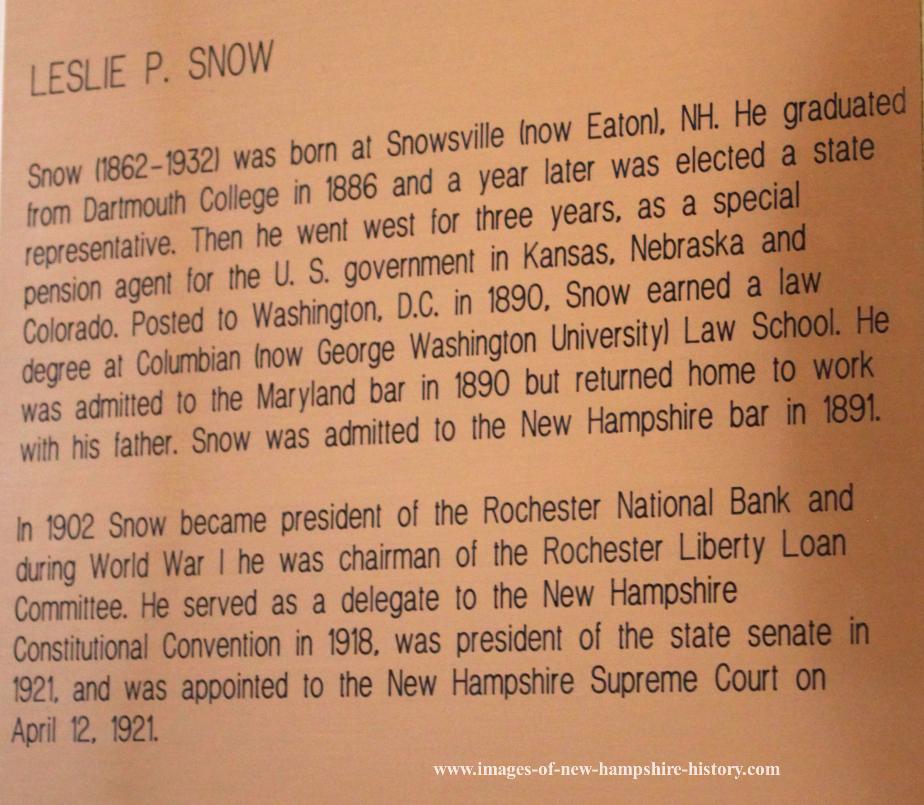
Governor Huntley Spaulding (1927 - 1928)
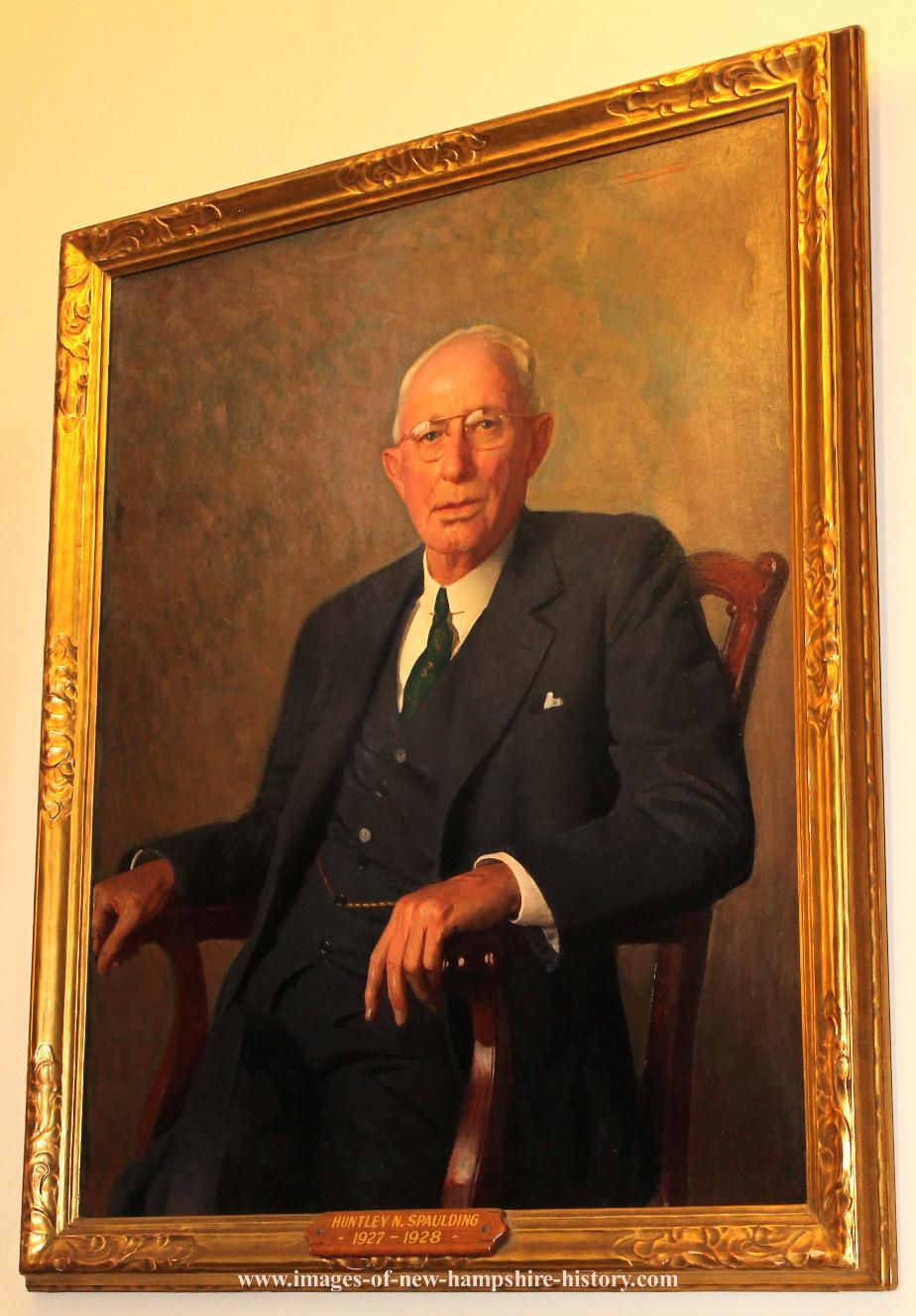
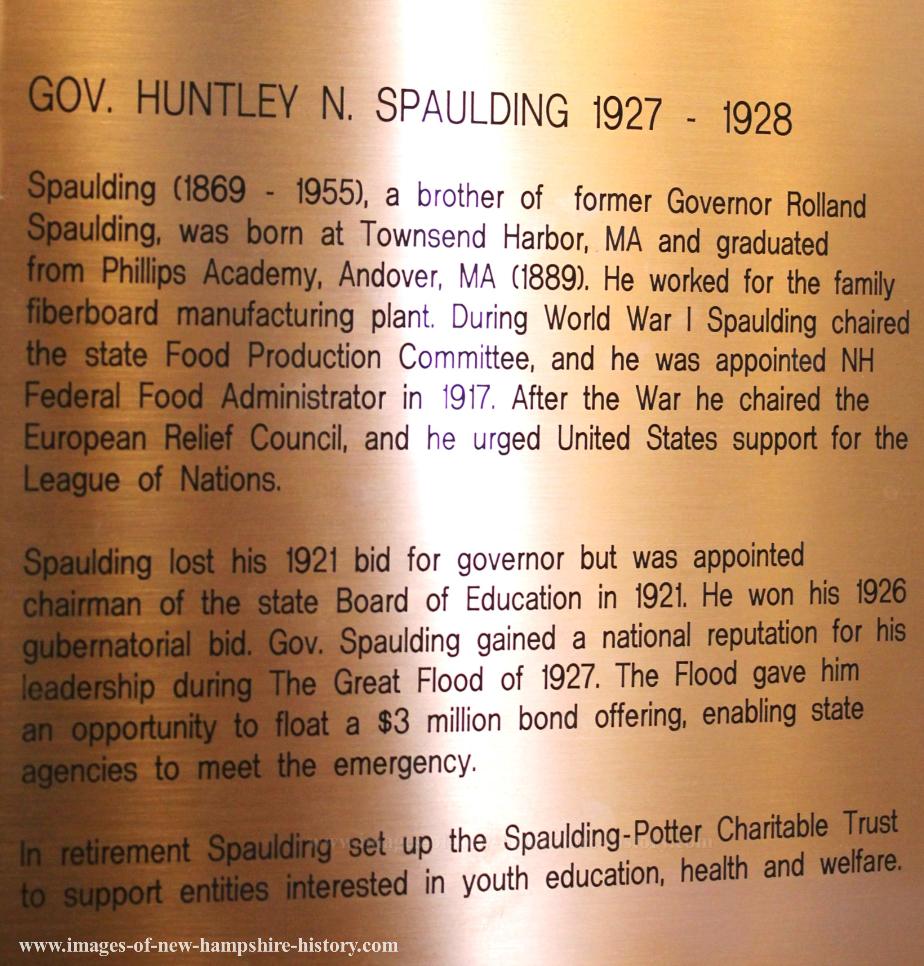
Governor Rolland H. Spaulding (1915 - 1916)
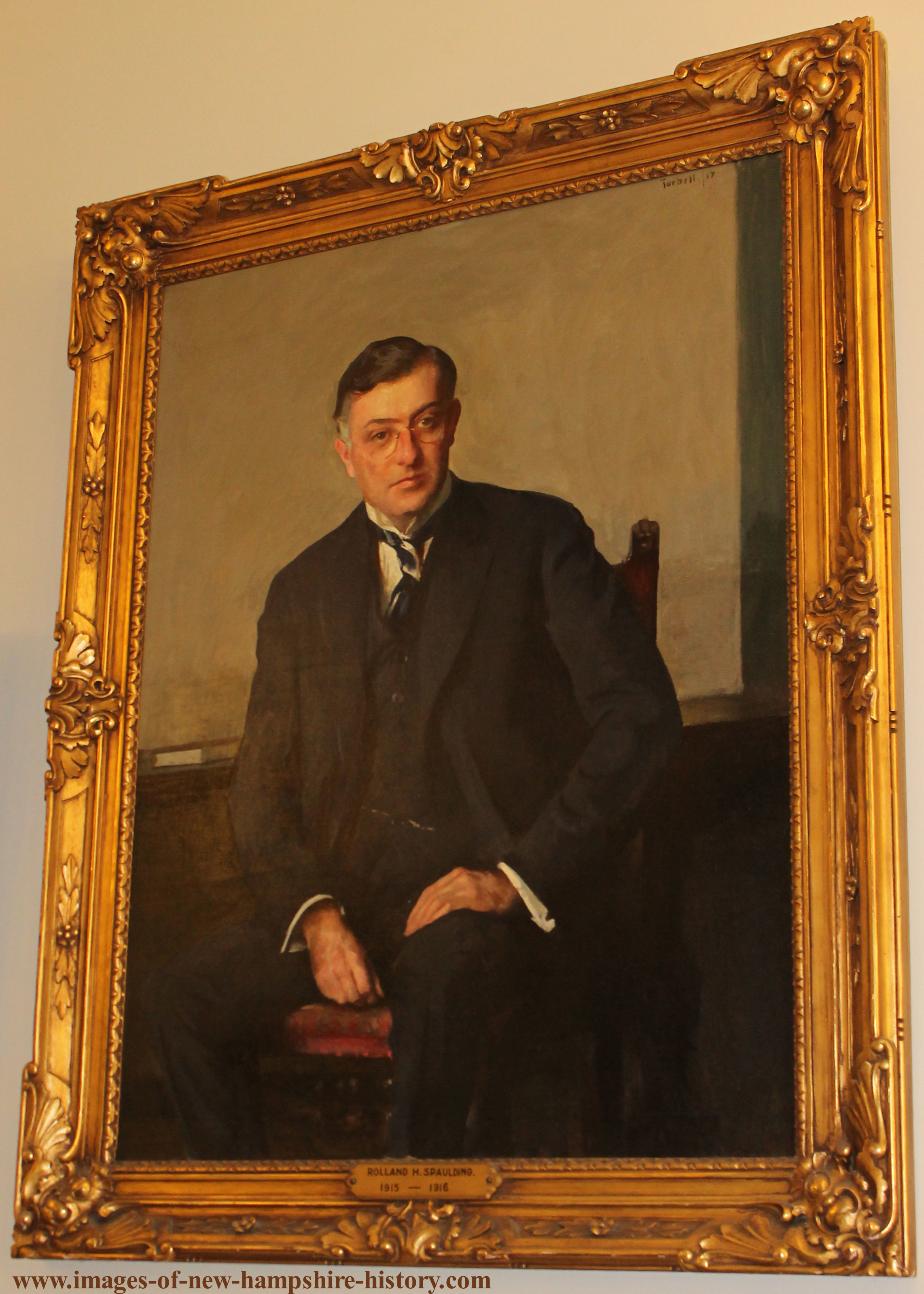

General John Stark (Londonderry)


General John Stark - NH State Library Portrait
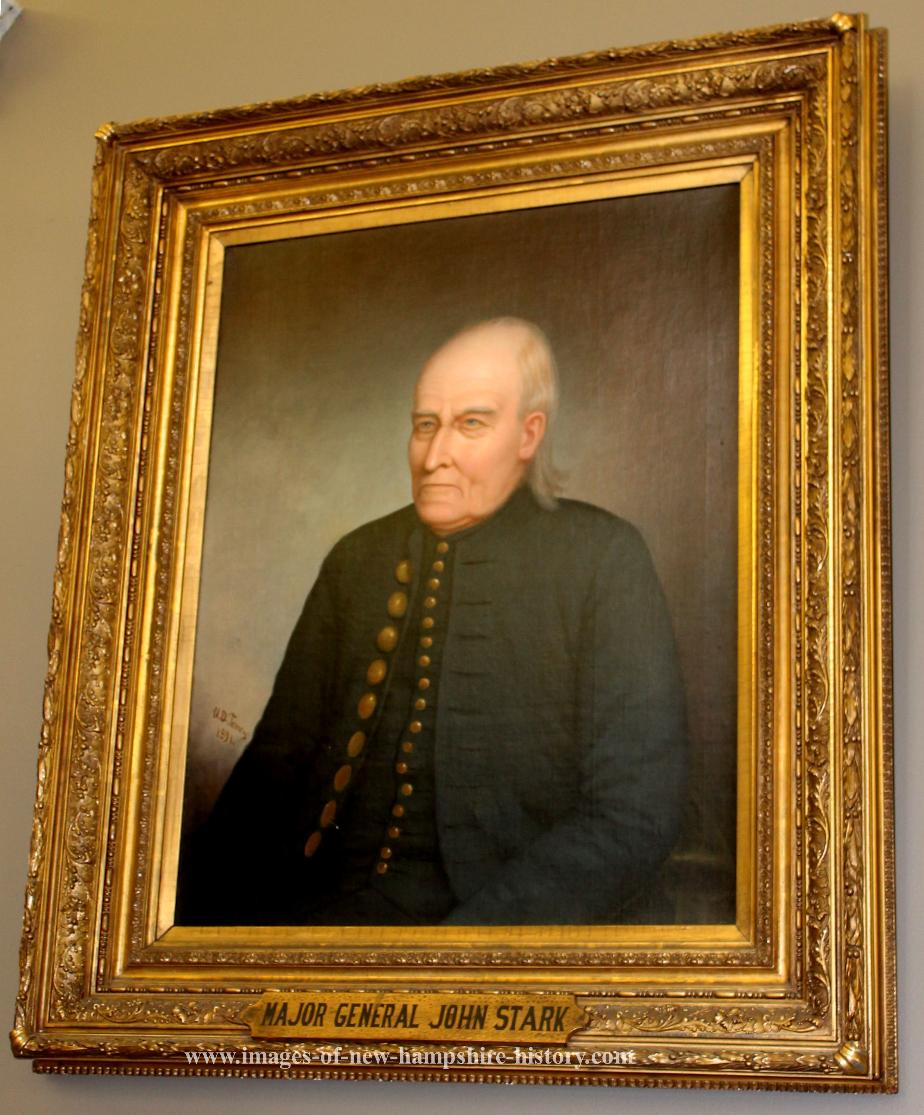
Governor Onslow Stearns : 1869 - 1871
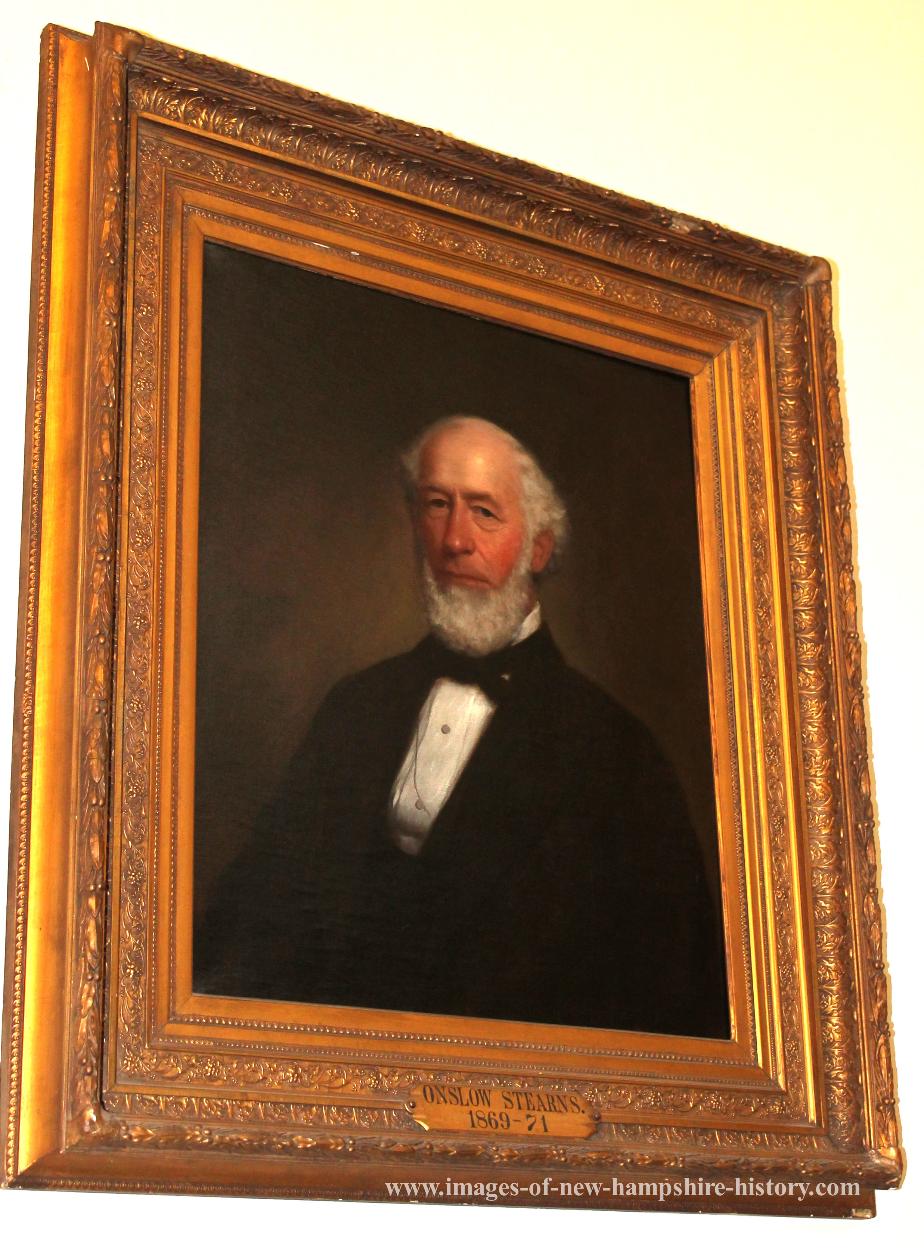
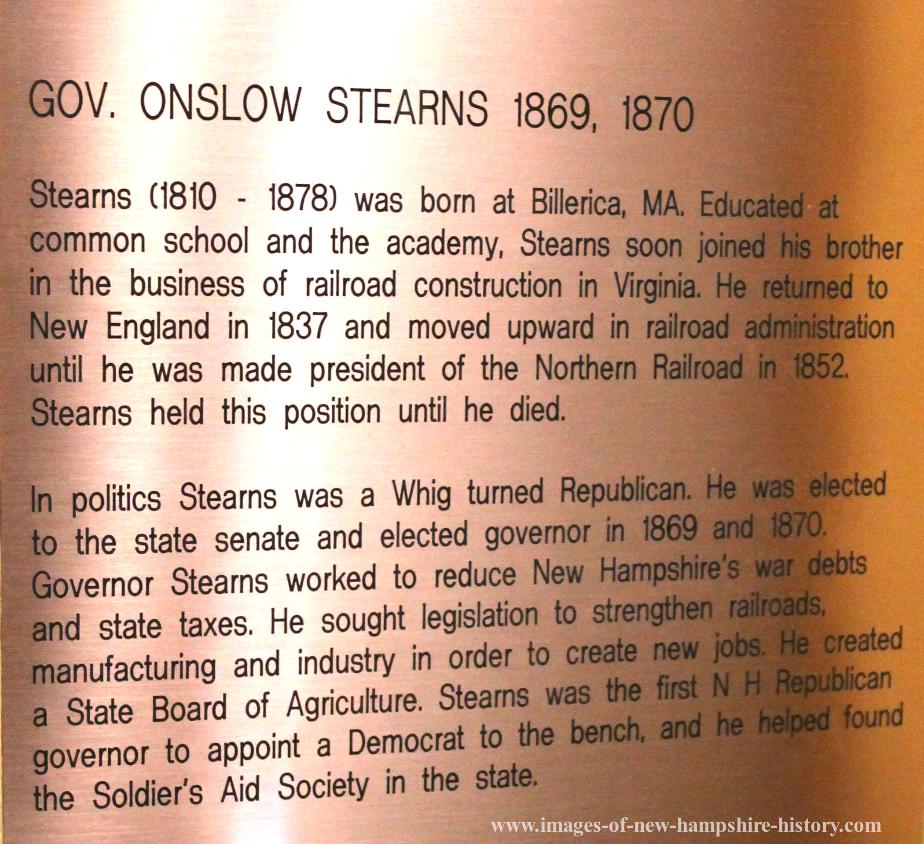
Governor John H Steele : 1844 - 1846

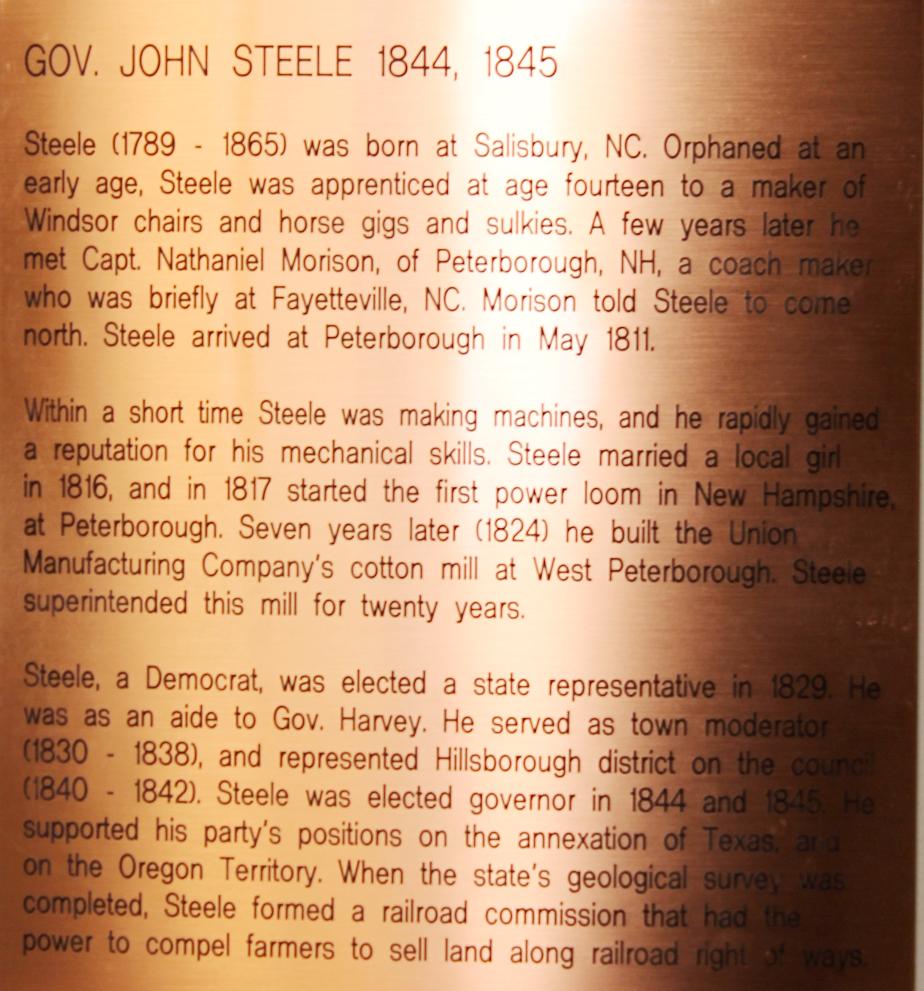
General Aaron FletcherStevens
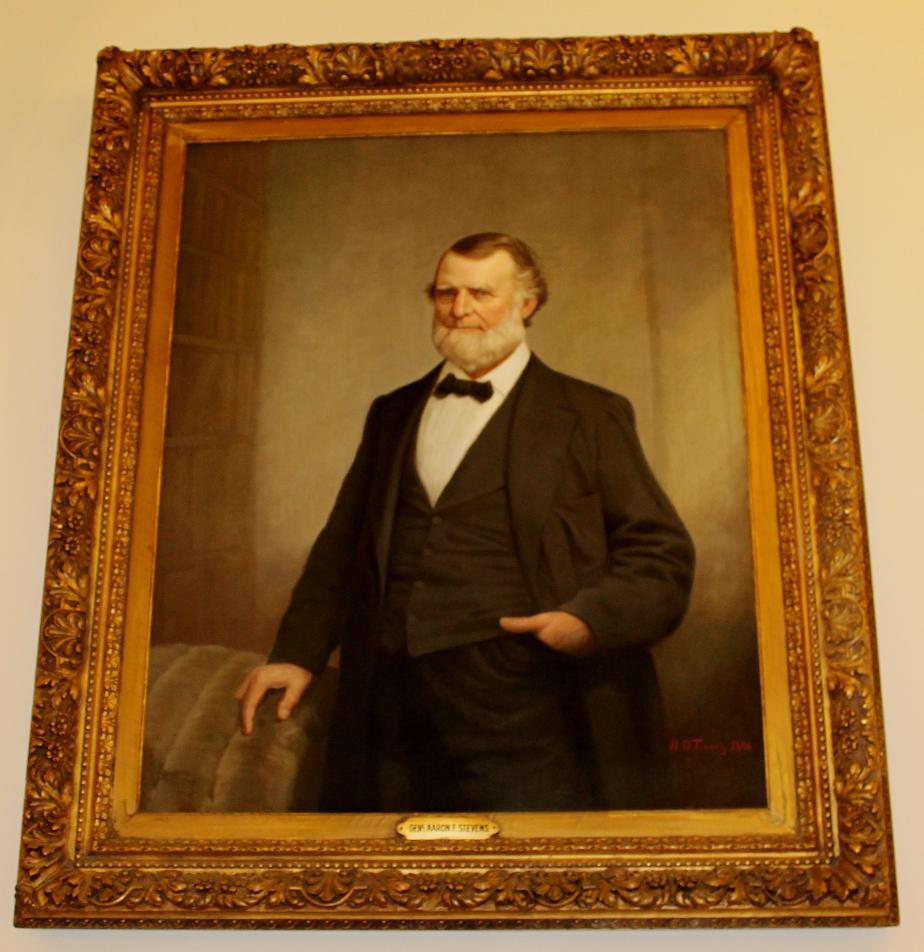
STEVENS, AARON FLETCHER, a Representative from New Hampshire; born in Londonderry, Rockingham County, N.H., August 9, 1819; attended Pinkerton Academy, Derry, N.H., and Crosby's Nashua Literary Institute, Nashua, N.H.; at the age of sixteen was apprenticed to the trade of machinist and worked as a journeyman for several years; studied law; was admitted to the bar and commenced practice in Nashua, Hillsborough County, N.H.; member of the State house of representatives in 1845; held several local offices; during the Civil War served in the Union Army as major of the First Regiment, New Hampshire Volunteer Infantry, as colonel of the Thirteenth New Hampshire Volunteer Infantry, and was brevetted brigadier general; delegate to the Whig National Convention in 1852; president of the common council of Nashua in 1853 and 1854; solicitor of Hillsborough County 1856-1861; city solicitor of Nashua in 1859, 1860, 1865, 1872, and 1875-1877; elected as a Republican to the Fortieth and Forty-first Congresses (March 4, 1867-March 3, 1871); unsuccessful candidate for reelection in 1870 to the Forty-second Congress; again a member of the State house of representatives 1876-1884; resumed the practice of law; died in Nashua, N.H., May 10, 1887; interment in Nashua Cemetery.
Ezkiel Straw : NH Governor 1872 - 1874
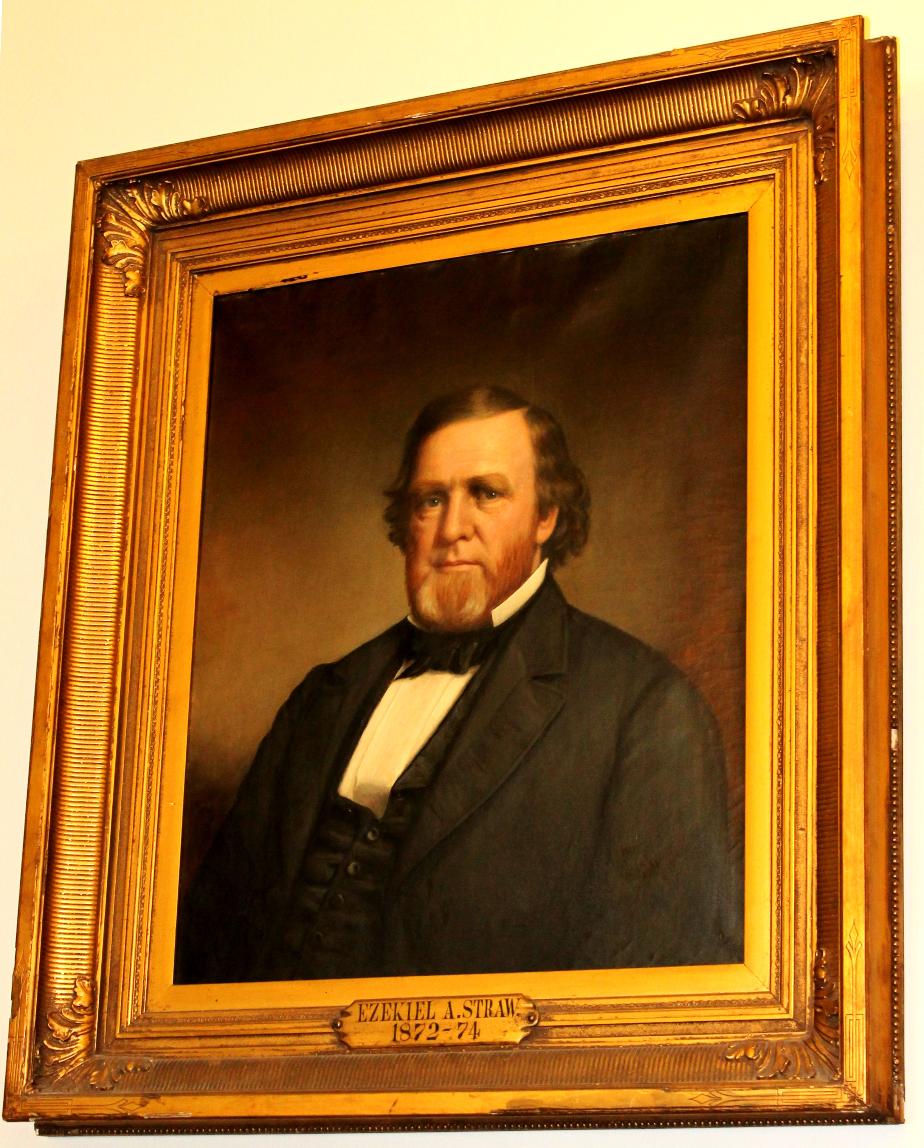
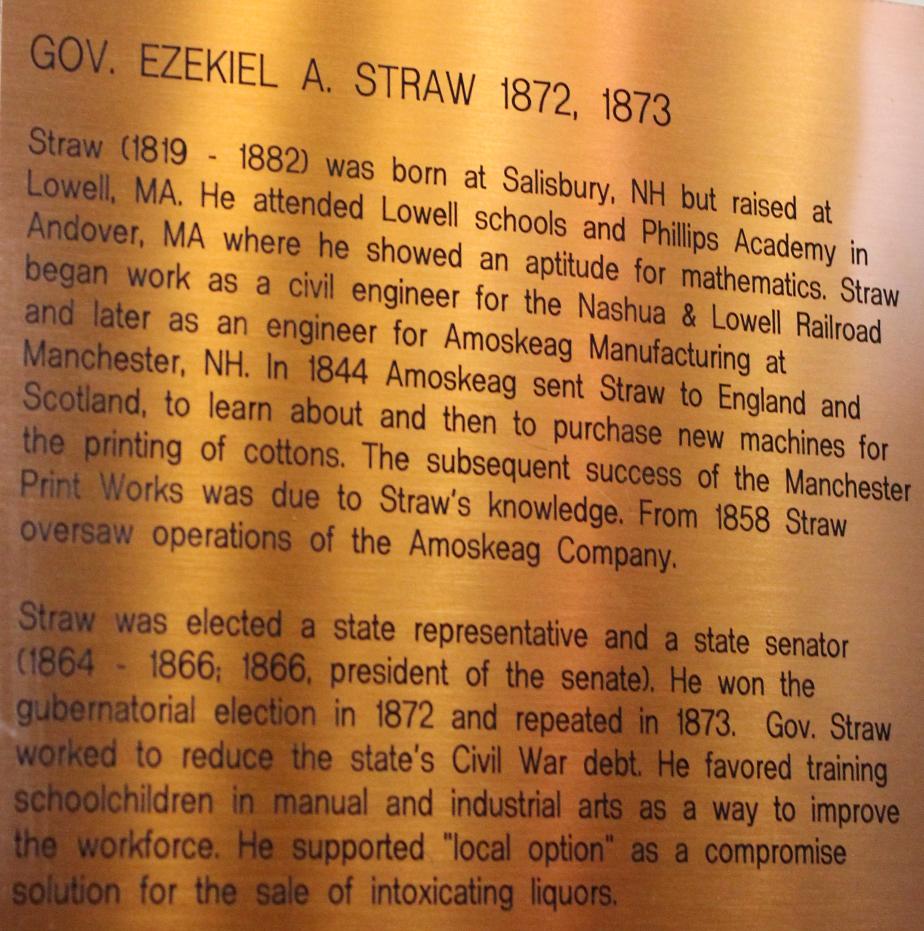
Major Edward Everett Sturtevant - Civil War Officer (Fredericksburg)
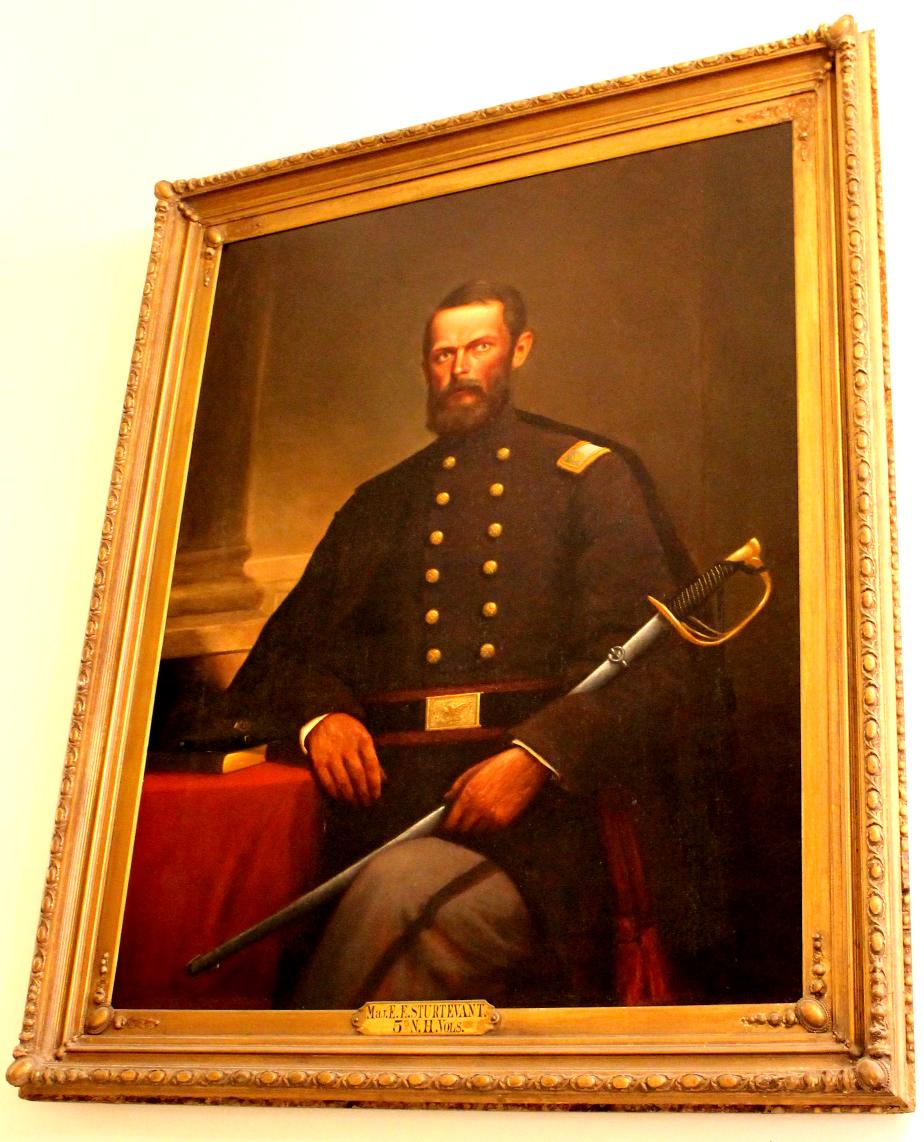
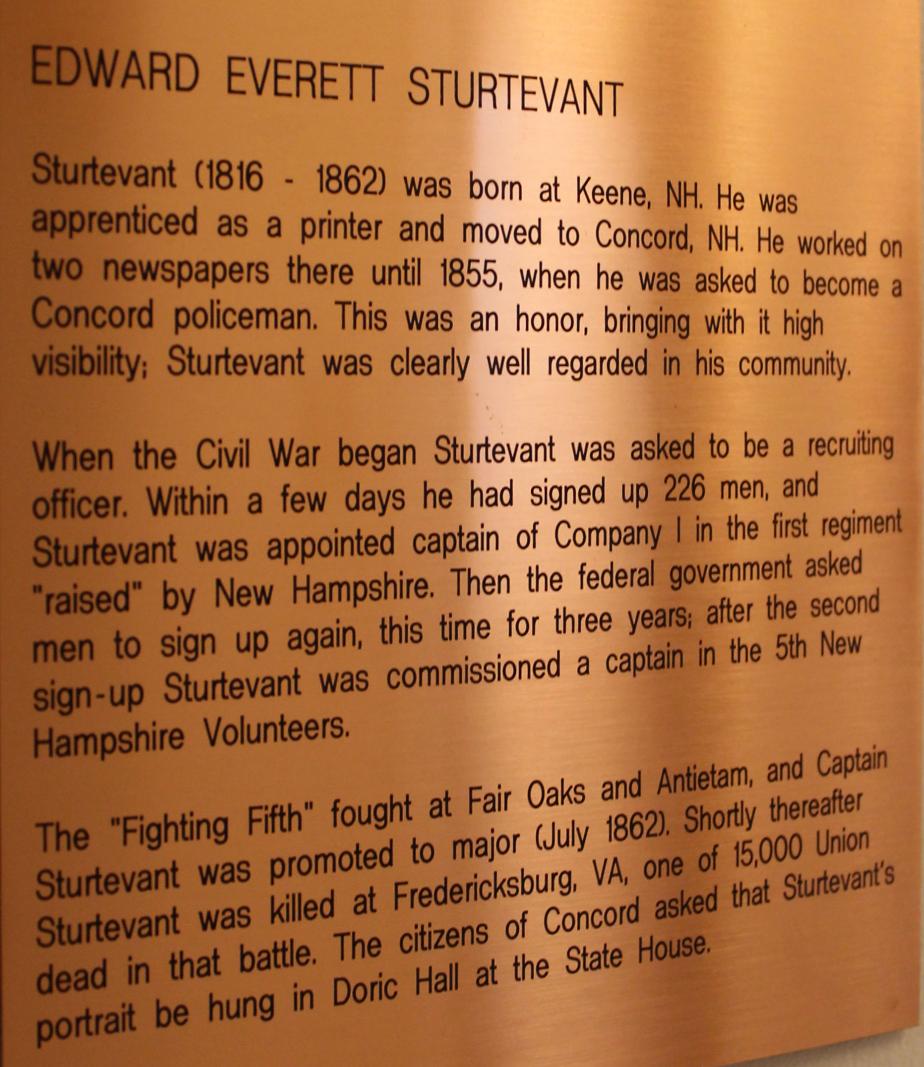
General John Sullivan - NH Governor 1786-1788, 1789-1790
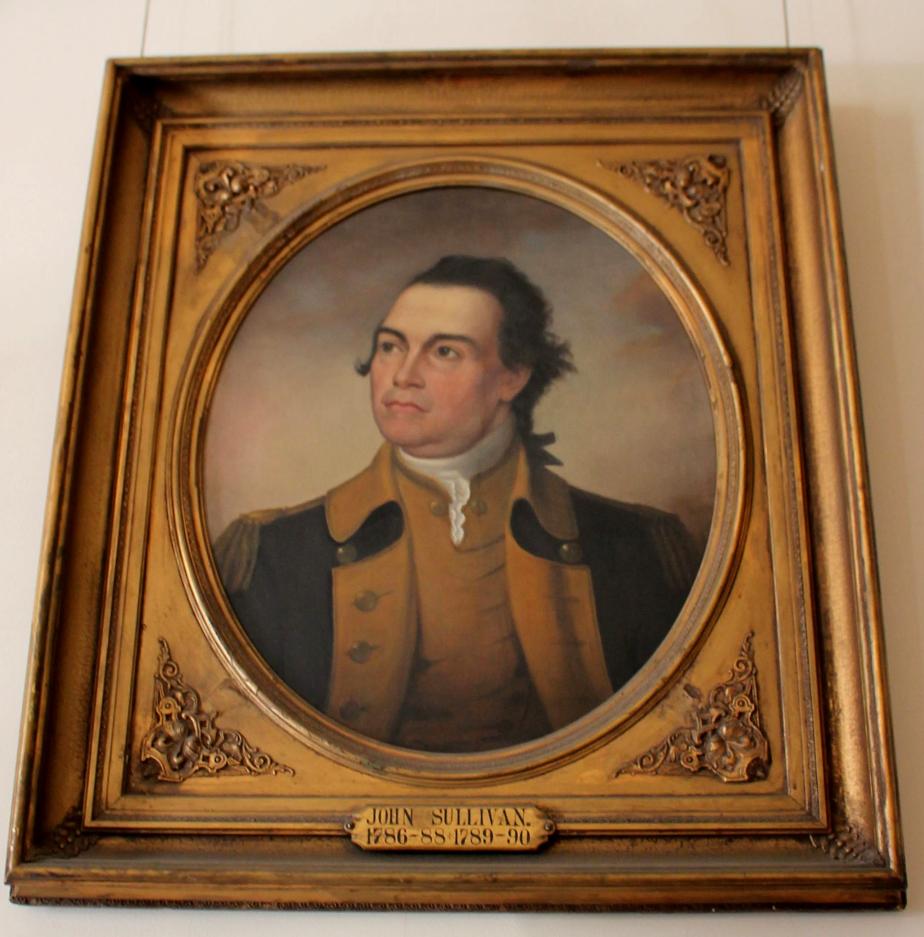
JOHN SULLIVAN, the third and fifth governor (president) of New Hampshire, was born in Somersworth, New Hampshire on February 17, 1740. His education was attained through his schoolmaster father who tutored him at home. He studied law, and then established his legal career, first in Berwick, Maine and later in Durham, New Hampshire. During the Revolutionary War, he served as a brigadier general and rose to the rank of major general, but resigned from active duty due to his poor health. Sullivan first entered politics as a member of the Continental Congress, a position he held in 1774, 1775, 1780, and 1781. He also served as the attorney general of New Hampshire from 1782 to 1786, was a member of the 1782 Constitutional Convention, and served as speaker of the house in 1785. Sullivan was first elected governor (then called president) in 1786. He won reelection in 1787, after which John Langdon succeeded him. Sullivan was again chosen governor on June 6, 1789. During his tenure, a paper money riot was successfully dealt with; military improvements were supported; and industrial developments were endorsed. Sullivan also presided over the 1788 state convention that ratified the federal constitution. On June 5, 1790 Sullivan resigned from office, to take a seat on federal bench, a position he held until his death. Governor John Sullivan was buried in the family cemetery overlooking the Oyster River in Durham, New Hampshire.
Cyrus Sulloway - US Congressman
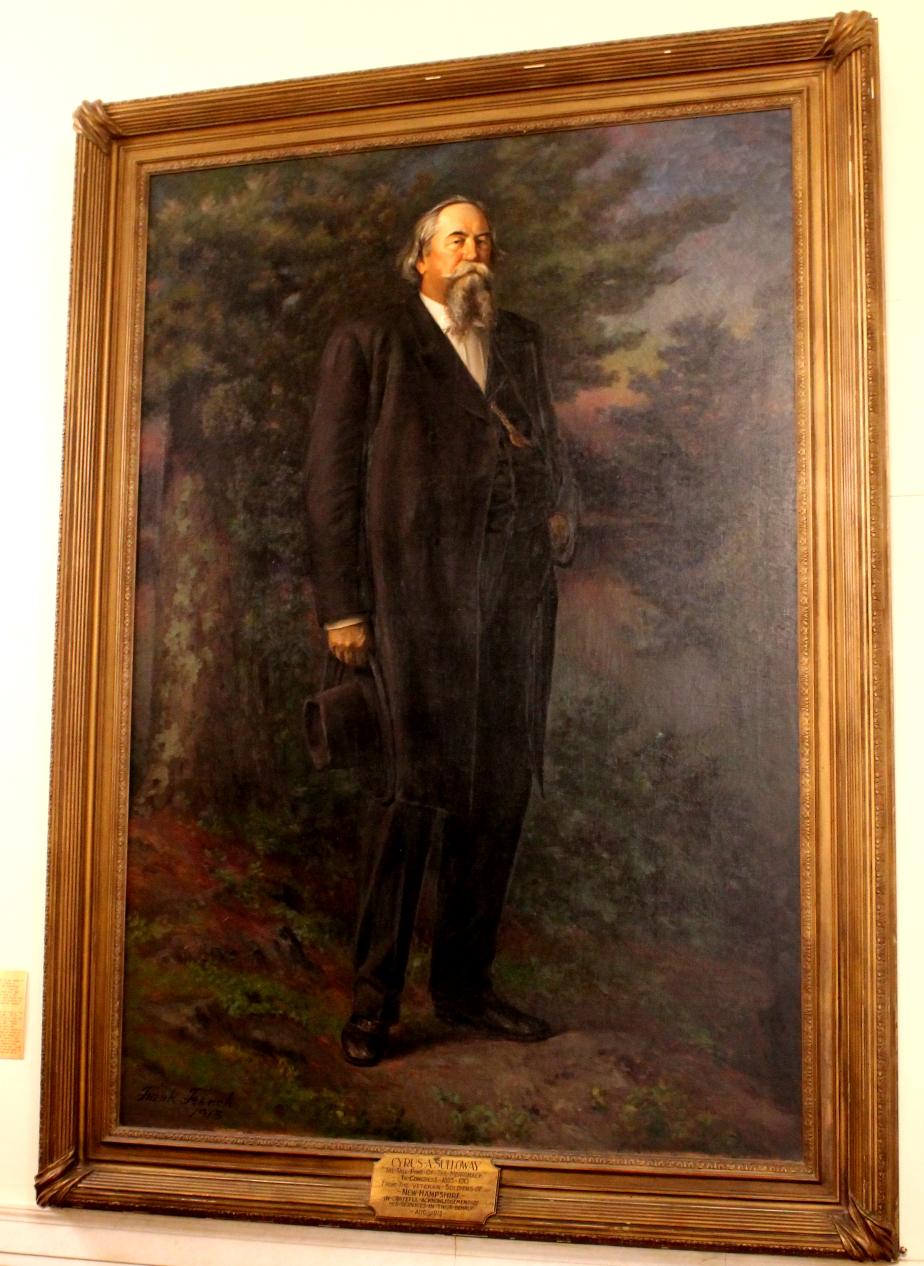
John H Sununu - NH Governor 1983 - 1989
John H. Sununu was born in Havana, Cuba. He graduated from the Massachusetts Institute of Technology. He received his bachelor's degree in 1961, a master's degree in 1962, and a Ph.D. in mechanical engineering in 1966. He was a mechanical engineering professor at Tufts University from 1966 to 1968 and associate dean of the College of Engineering until 1973. From 1963 until his election as governor, he served as president of JHS Engineering Company and Thermal Research Inc. He represented Salem in the New Hampshire State Legislature from 1973-1974. He became New Hampshire's 75th Chief Executive on January 6, 1983, and served three consecutive terms. Sununu served on the Advisory Board of the Technology and Policy Program at MIT from 1984-1989. On January 21, 1989, Governor Sununu was commissioned Chief of Staff to President George H. W. Bush, serving in the White House until March 1, 1992. He is a member of the National Academy of Engineers' Committee on Public Engineering Policy and has served as a member of the President's Council on Environmental Quality Advisory Committee. Sununu chaired the National Governors Association, the Coalition of Northeastern Governors, and the Republican Governors Association. From 1992 until 1998, he co-hosted CNN's nightly Crossfire program, a news/public affairs discussion program. He is president of JHS Associates, Ltd. and a partner in Trinity International Partners, a private financial firm. He is a member of the National Academy of Engineering.

William D.Swart - NH State Senate President (1922 - 1912)
Hon. William D. Swart, President of the Senate, was born in New Kingston, New York, July 9, 1856, son of William R. and Eliza (Dumond) Swart. His ancestors on both sides came from Holland and were among the first European settlers of New York state, locating at and near Kingston on the Hudson River. His great-grandfather, son of Samuel Swart, lost his entire possessions at the time the British burned the city of Kingston, during the Revolutionary War, and his grandfather, Samuel Swart, served throughout the War of 1812 with honor and distinction. On the maternal side he traces his ancestry back nine generations to Walerandt Du Mont, who married in Kingston, January 13, 1664, Margaret Hendrick, and who was at that time serving on the staff of the Noble Lord Director, General Stuyvesant, in the Netherlandish service, stationed at Kingston, N. Y. William Dumond Swart was educated in the public schools of Margaretville and at the Wesleyan Academy at Wilbraham, Mass., finishing at the age of eighteen. After leaving school, he was in the employ of Evans, Peak, & Co., of New York City, wholesale dry goods merchants, for five years; and with Bates, Reed and Cooley . in the same business, two years. In 1880, he engaged in the decorative art business which he carried on successfully in Newark, N. J., for seven years. After spending two years in travel in this country, he located in Nashua, in this state, in February, 1890, going into the retail lumber business with Charles A. Roby, under the firm name of Roby & Swart. Two years later the firm purchased the edge tool works in the same city and added a wood working plant. In 1894 the retail business was consolidated with F. D. Cook & Co., Roby & Swart retaining the manufacturing and wholesale business under the name of Roby & Swart Manufacturing Co. Mr. Swart is a director in the former company and director and treasurer in the latter. He is also a director and president of the Nashua Machine Company; director and vice-president of the Nashua Trust Company; director and president of the Londonderry Spring Water Company; director and treasurer of Nashua Building Company; director and treasurer of the Nashua Paper Box Company; director and treasurer of the American Box & Lumber Company. In 1893 to 1895, and again in 1907 and 1908 he was president of the Board of Trade. He was a member of the Common Council from 1893 to 1895, being president for two years. He was appointed aide with the rank of colonel on Governor Ramsdell's staff in 1897. He is a Congregationalist in religion; a thirty-second degree Mason and a member of Rising Sun Lodge, Free and Accepted Masons, Aaron P. Hughes Council, St. George Chapter, and Commandery of the E. A. Raymond Consistory and of the Aaron P. Hughes Lodge of Perfection Ancient and Accepted Scottish Rites, also a member of Bektash Temple, order of the Mystic Shrine. In politics, Mr. Swart has always been a Republican, and has filled various offices in the Nashua city government. He was elected from Ward 1 as Representative to the General Court for 1909-10, serving as a member of the Committee on Banks and as chairman of the Committee on State Prison, and as Senator from the nineteenth district for 1911-12, of which honorable body he was chosen president. He married October 7, 1890, Lizzie A., daughter of Luther A. Roby of Nashua. They have two children, Elizabeth and William Roby Swart. President Swart demonstrated his absolute independence of partisan bias so far as the administration of his office is concerned, by assigning each of the eight Democratic Senators to a committee chairmanship at the opening of the session, and in pre siding over the deliberations of the Senate his action has invariably been characterized by courtesy, fairness and impartiality.
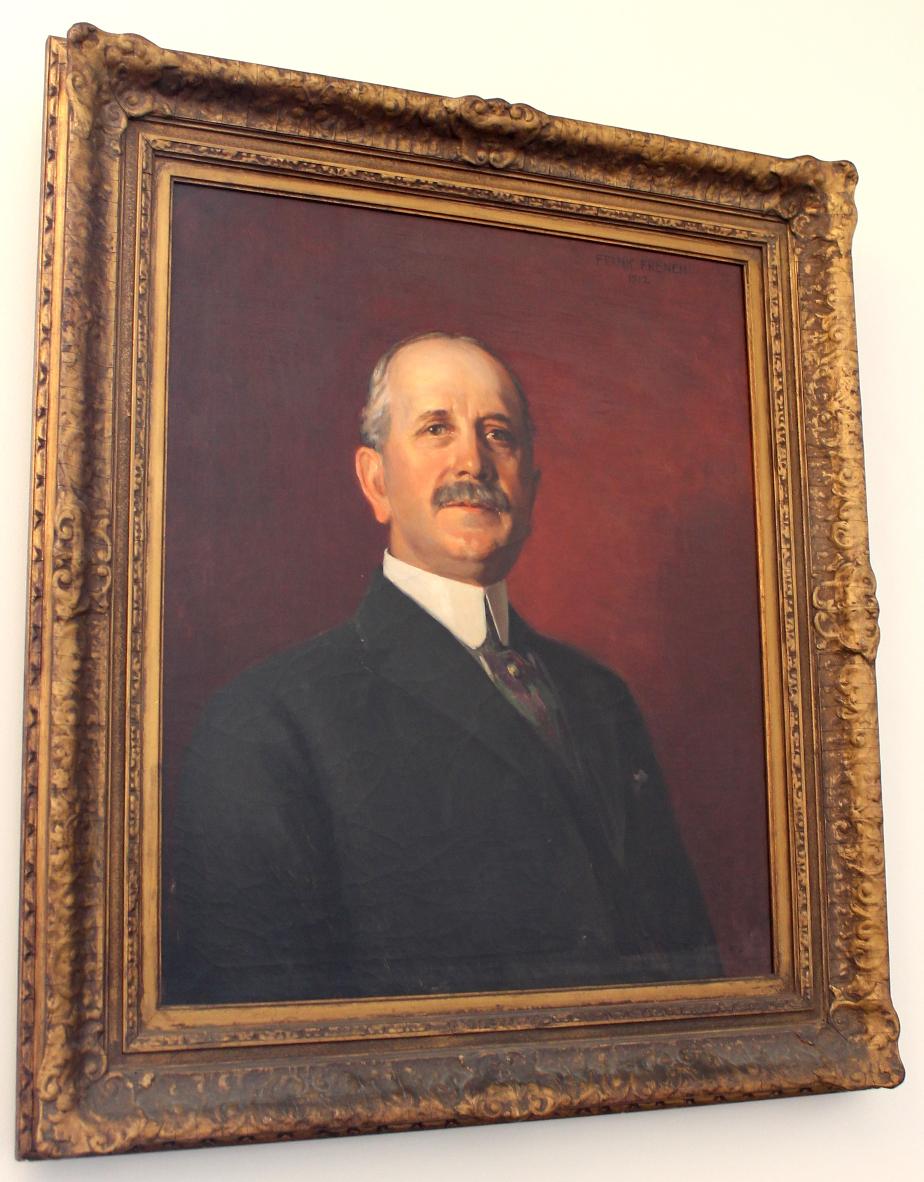
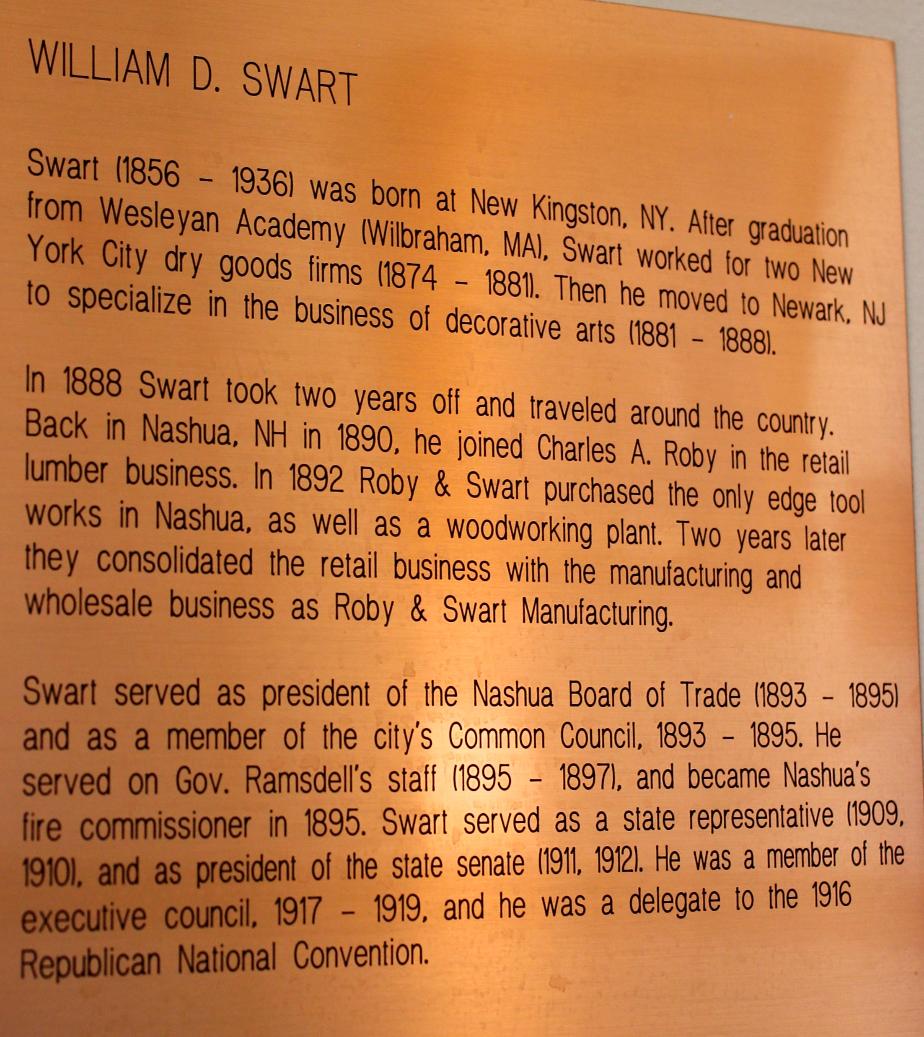
David A Taggart - NH State House President 1889
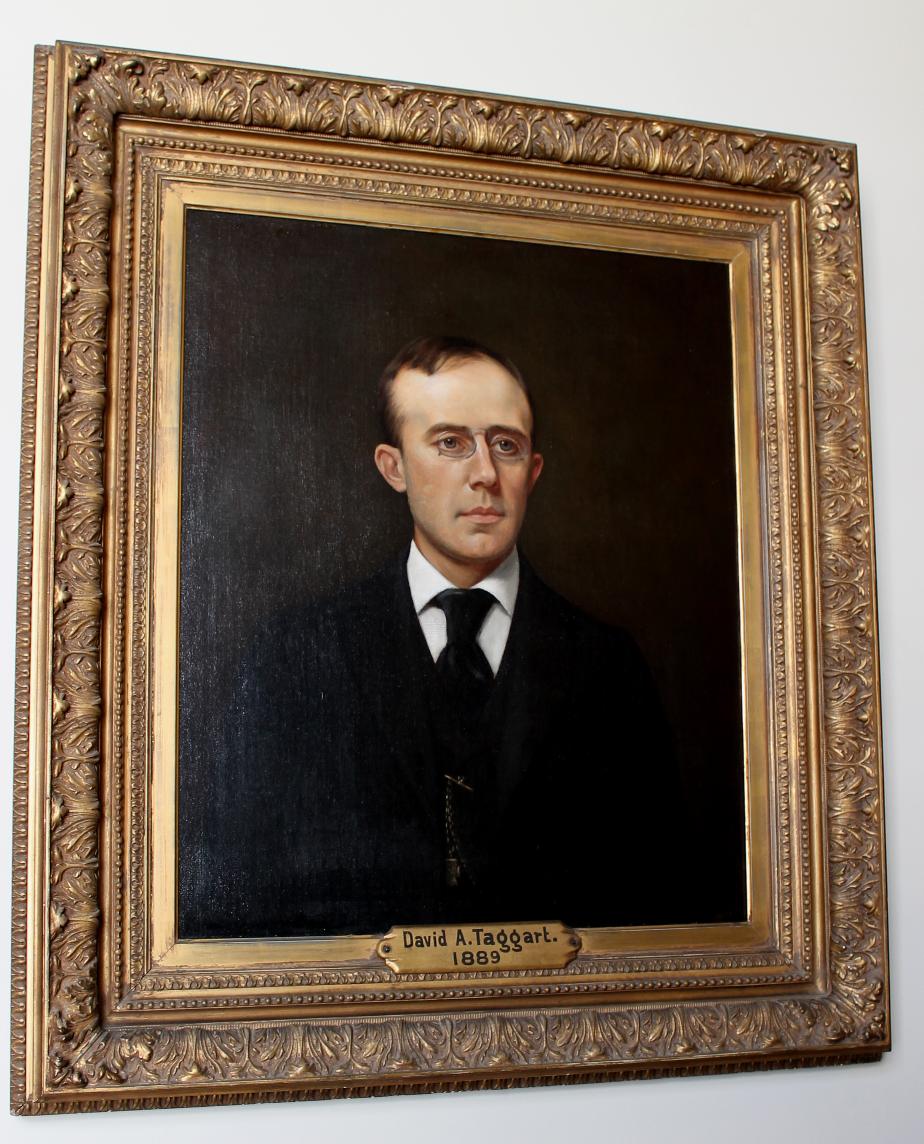
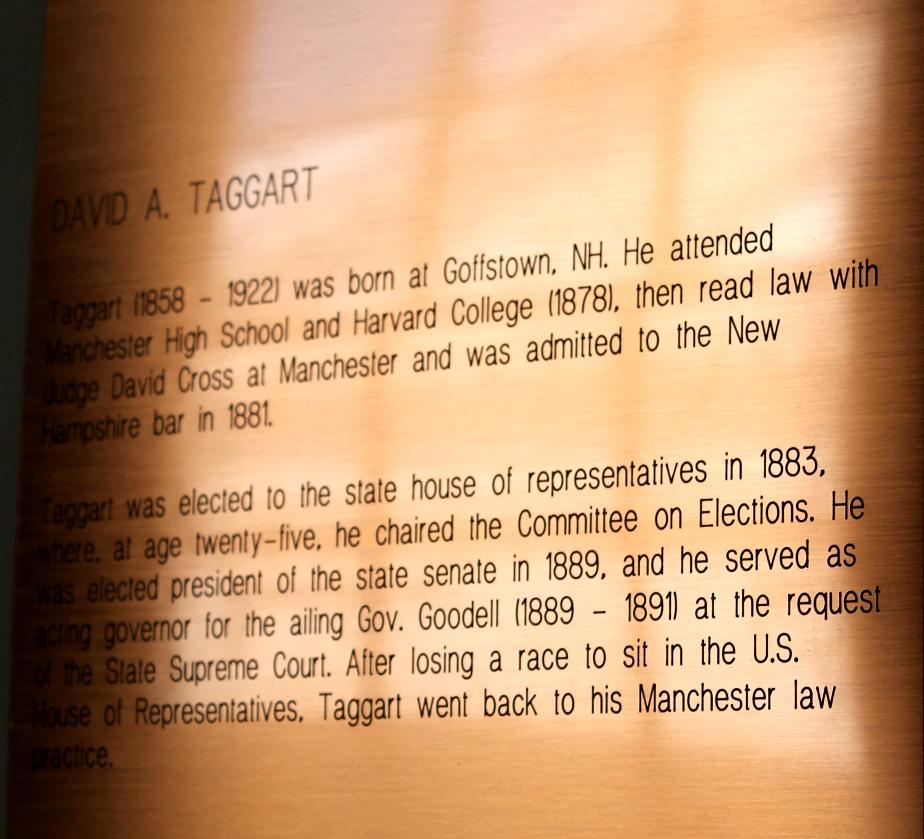
Adna Tenney (Hanover) - State House Portrait Painter
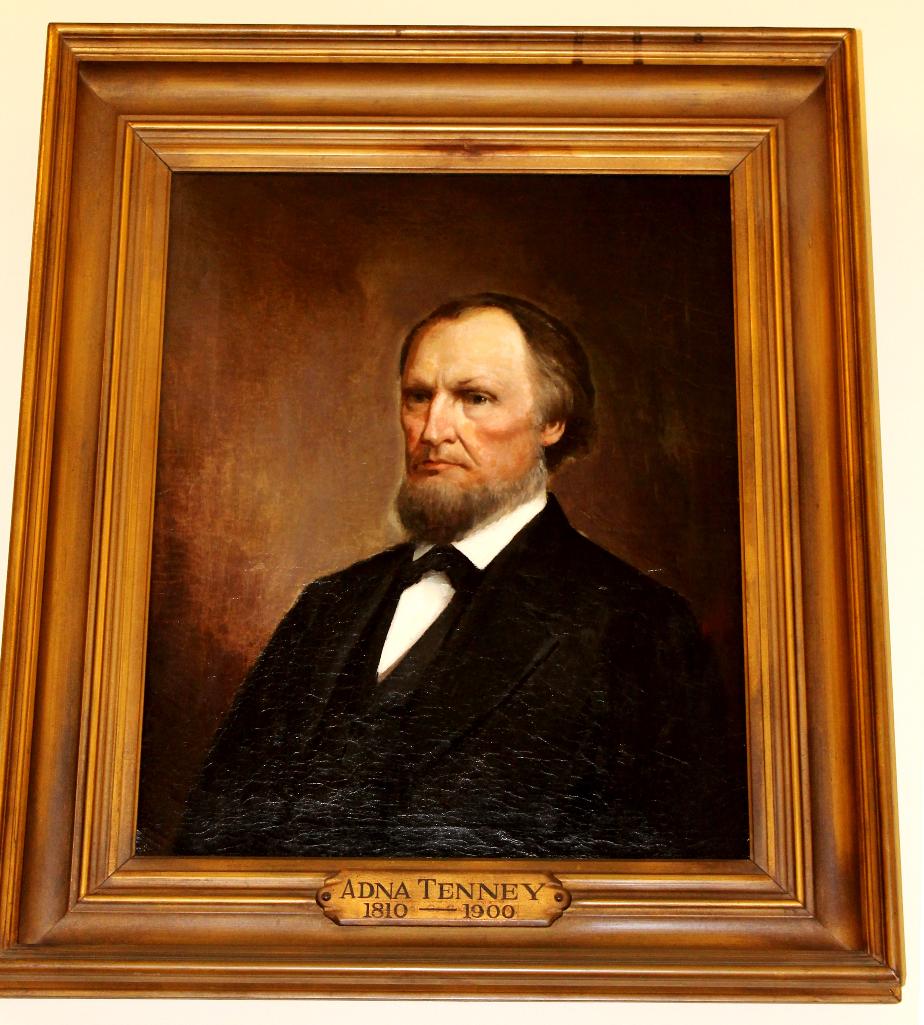
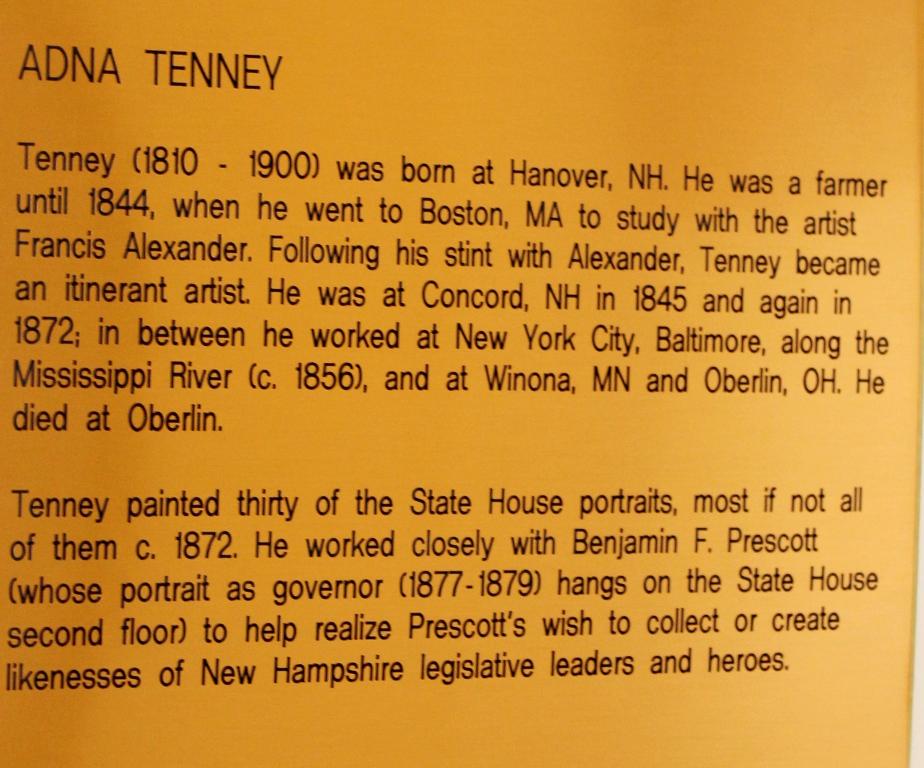
Brig. General John L. Thompson
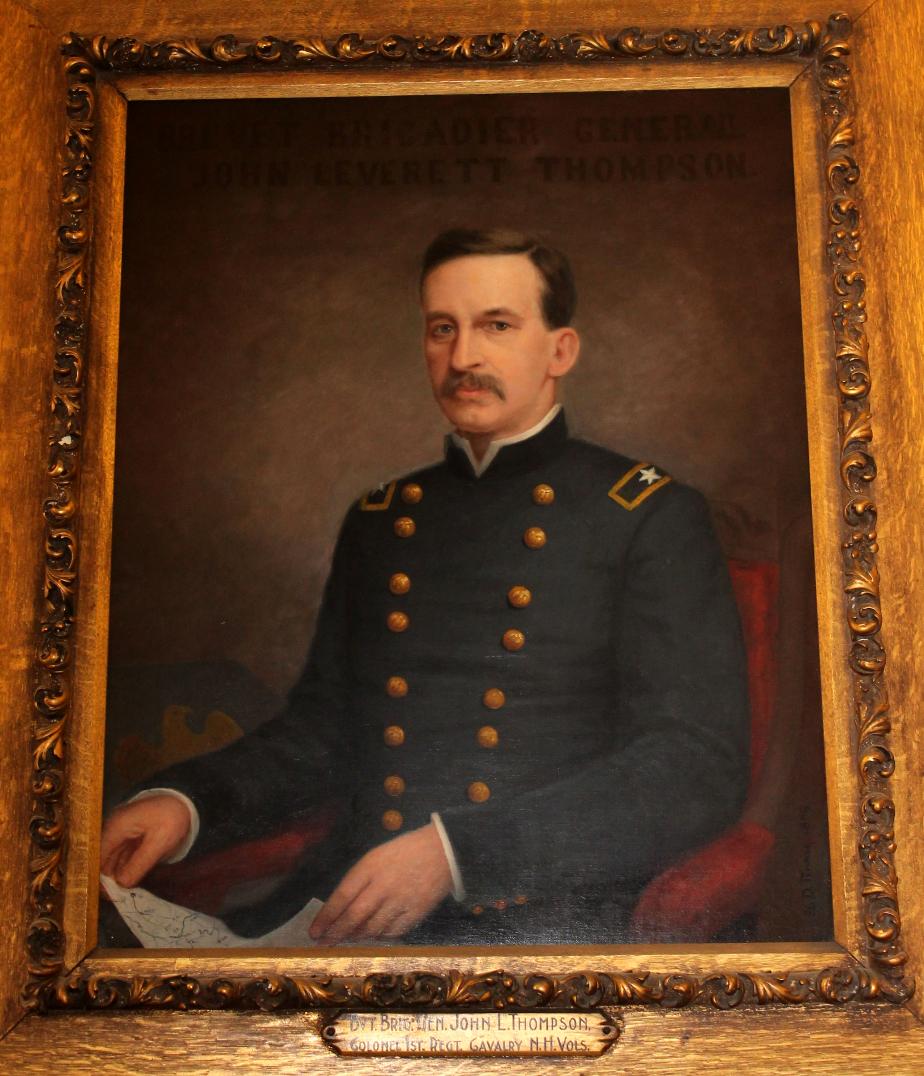
Meldrim Thomson jR. - Governor from 1973 - 1979
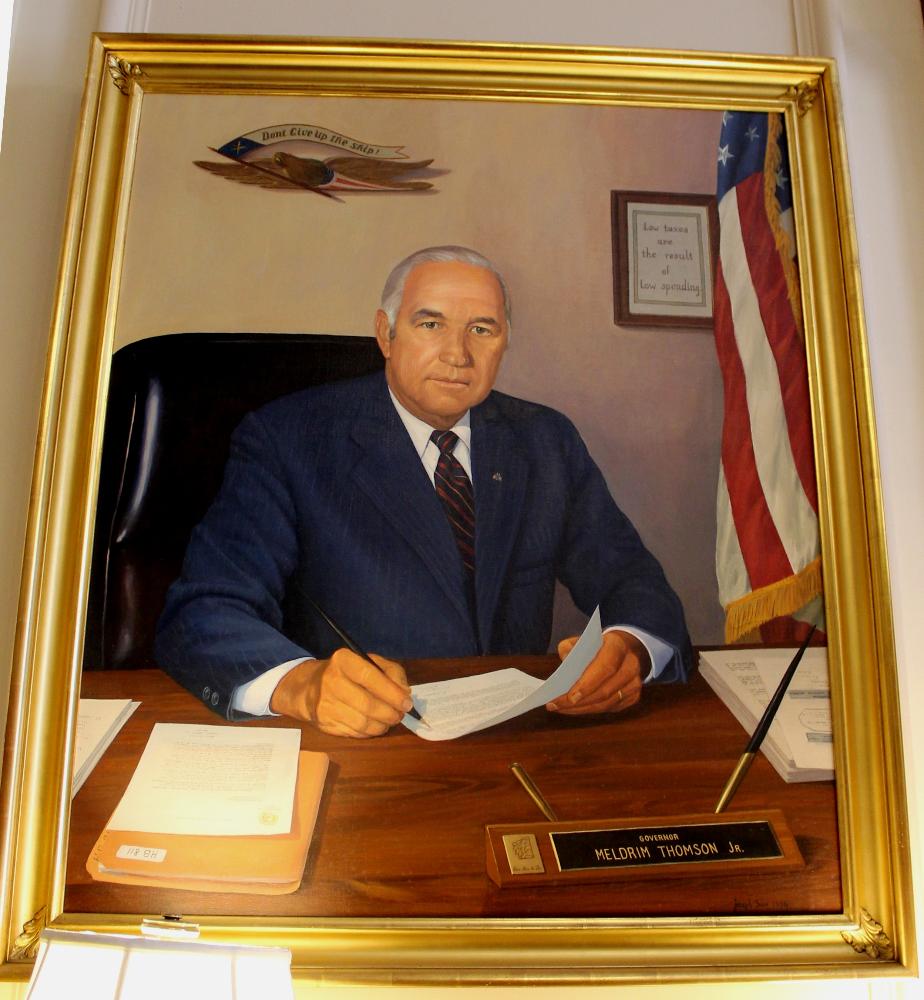
Meldrim Thomson JR. was born in Pittsburgh, Pennsylvania, on March 8, 1912. He attended the University of Miami, Washington and Jefferson College, Mercer University and the University of Georgia, receiving a LL.B. from the latter. Thomson started a legal textbook publishing firm on Long Island, New York. In search of quiet, he moved his family of six children to Orford, where he founded Equity Publishing Corp. As governor from 1973-1979, serving three two-year terms, he drew devoted support from ultraconservatives with positions that included suggesting nuclear weapons for the state National Guard. He once called Martin Luther King "a man of immoral character whose frequent association with leading agents of communism is well-established." But he also drew votes for his strong antitax stance -- to this day, the state has neither an income tax nor a sales tax -- and for his philosophy of independence from federal influence. Thomson is a former member and chairman of both the Stony Brook, Long Island; and Orford, New Hampshire, school boards. He was a member of the New Hampshire constitutional convention in 1964. Thomson also co-founded Taxfighters, Incorporated, and the Public School Association. Thomson has taught political science at the University of Georgia. Governor Thomson passed away from Parkinson's disease and heart problems on April 19, 2001.
Captain James S Thornton - Civil War Naval Officer
(USS Kearsarge)

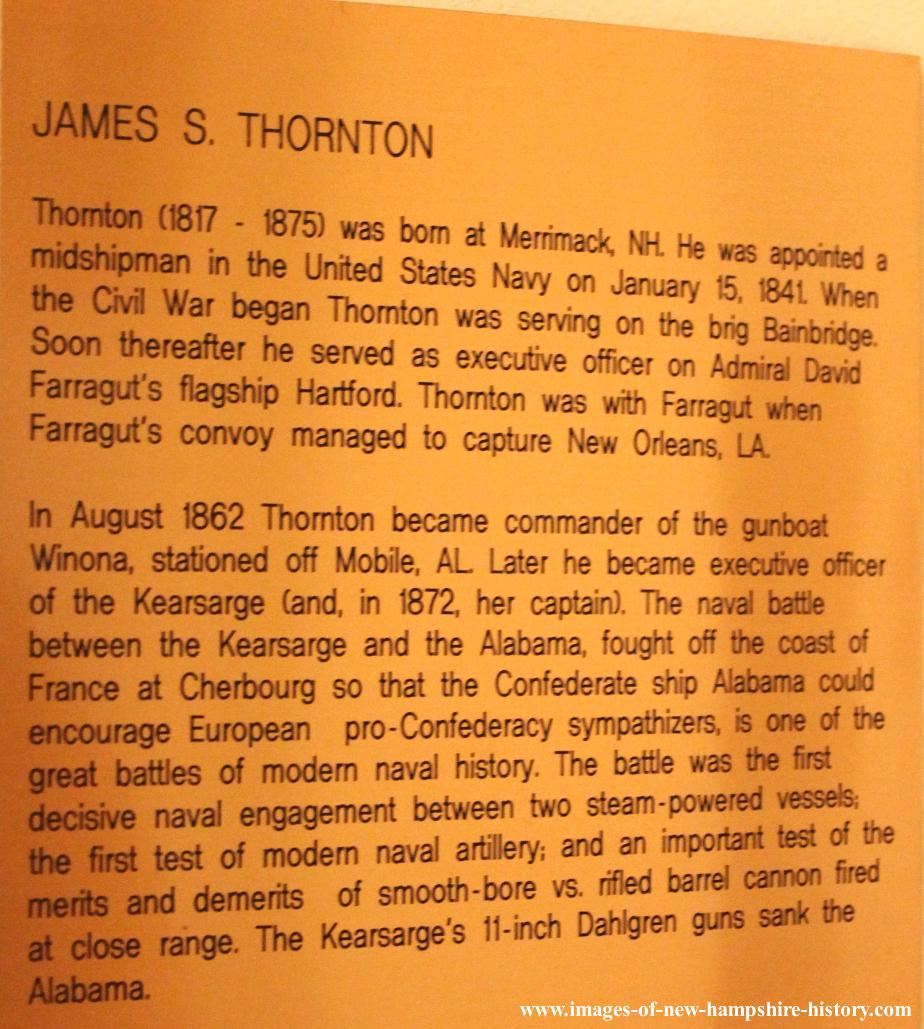
Matthew Thornton - Signer of Declaration of Independence
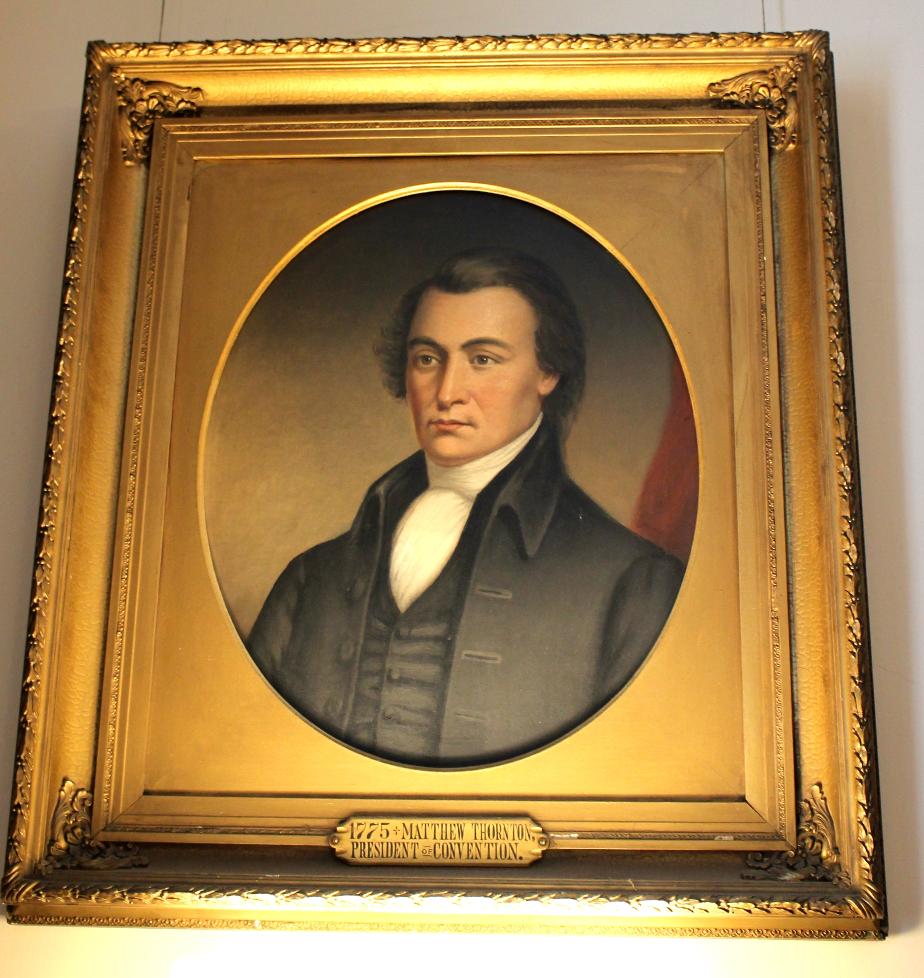
Matthew Thornton was born in Lisburn, County Antrim, Ireland on March 3, 1714 of Scotch-Irish parents, James Thornton and Elizabeth Jenkins. When he was three years old, his family emigrated to America, settling first in what would become the state of Maine.
In 1722, Indians attacked the Maine settlement in the vicinity of Brunswick (or possibly Wiscasset) where they lived. James Thornton, his wife Elizabeth, and their 8 year old son Matthew, escaped from their burning home by canoe, paddled out to Casco Bay, and proceeded from there to the Scotch-Irish town of Worcester, Massachusetts. There Thornton grew up receiving a classical education at Worcester Academy.
Young Thornton pursued medical studies in Leicester, Massachusetts under the direction of Doctor Grout, a relative. In 1740, at the age of 26, he began what became a thriving medical practice in the Scotch-Irish town of Londonderry, New Hampshire. He soon became distinguished, both as a physician and a surgeon.
In 1745, at the age of 31, Dr. Thornton served as a surgeon in the New Hampshire militia during King George’s War (1745-48). He accompanied Sir William Pepperell in the British expedition that captured Louisburg, the French fortress in Nova Scotia.
Dr. Thornton was elected a delegate for Londonderry to the colonial assembly in 1758, and began to figure prominently in colonial affairs.
He married Hannah Jack in 1760 and they had five children. Hannah’s parents were Andrew Jack and Mary Morrison, both of Scotch-Irish descent. Hannah Jack was born in 1742 and died on December 5, 1786.
In 1765, Thornton was prominent in the agitation against the Stamp Act in New Hampshire, but later held a commission as Colonel of militia under Royal Governor Wentworth.
In 1775 Dr. Thornton denounced the “unconstitutional and tyrannical Acts of the British Parliament”, and was elected President of the New Hampshire Provincial Congress when Royal Governor Wentworth fled from the Colony and boarded a British warship in Portsmouth. Thornton was also appointed Chairman of the provincial committee of safety in charge of raising troops and arms.
Upon taking office, Thornton issued a statement to the citizens of New Hampshire, and this is part of what he said: “Friends and brethren, you must all be sensible that the affairs of America have, at length, come to a very affecting and alarming crisis. The horrors and distresses of a civil war, which, till of late, we only had in contemplation, we now find ourselves obliged to realize. Painful beyond expression, have been those scenes of blood and devastation which the barbarous cruelty of British troops have placed before our eyes. Duty to God, to ourselves, to posterity, ends forced by the cries of slaughtered innocents, have urged us to take up arms in our own defence….we seriously and earnestly recommend the practice of that pure and undefiled religion, which embalmed the memory of our pious ancestors, as that alone upon which we can build a solid hope and confidence in the Divine protection and favour, without whose blessing all the measures of safety we have, or can propose, will end in our shame and disappointment.”
Dr. Thornton was President of the five man committee that drafted the first state constitution, and it was adopted on January 5, 1776, the first of the thirteen states to establish a constitution. Thornton was then elected to the new state legislature and elected Speaker of that assembly.
In September 1776, Dr. Thornton, at the age of 62, was chosen a delegate to the Continental Congress, and took his seat on the 4th of November 1776. Although Thornton was not present during the debates on independence or when 50 of the delegates signed the Declaration on August 2, he became one of six signers who did so in the following months. All six of these signers fully supported the sentiments in the document, and were permitted to affix their signatures to the engrossed copy of the Declaration of Independence.
Despite having no legal education, Thornton served as chief justice of the Court of Common Pleas, the superior court of New Hampshire, from 1776 until 1782. After serving in the Continental Congress for only a little over a year, he left Congress and resumed his duties as associate justice of the Superior Court. In his seventies he served in the New Hampshire State senate from 1784 until 1786.
In 1780, he purchased a farm on the banks of the Merrimac River, near Exeter, where he devoted himself to the business of agriculture. He spent his last years farming and operating a ferry—Lutwyche’s (later Thornton’s) Ferry—across the Merrimac River. The house and ferry he purchased had been confiscated from a prominent Tory—Edward Gladstone Lutwyche.
Although often exposed to the whooping cough, Thornton did not catch the disease until he passed his eightieth year, and he survived the attack. He continued to write essays and letters to newspapers on various topics well into his eighties, including an unpublished work on the metaphysical origins of sin.
Dr. Thornton exceeded six feet in height; his complexion was dark and his eyes black and piercing. At the age of 61 he was described as tall, clear-eyed, handsome and charming.
He was described as a man of strong powers of mind, and on most subjects to which he directed his attention, was able to elicit light and information. In private life, he was peculiarly instructive and agreeable. The young were delighted with his hilarity and humor. His memory was well stored with entertaining and instructive anecdotes, which he was able to apply upon any incident or subject of conversation. He often illustrated his sentiments by fable. He delighted to amuse a circle of an evening by some fictitious narrative, in which he greatly excelled. At such times, placing his elbows upon his knees, and supporting his head with his hands, he would rivet the attention of his auditors, and astonish them by his powers of invention. In satire he was scarcely equaled. And although he sometimes employed his power immoderately, he was universally beloved, and occupied a large share of the confidence of his neighbors.
Thornton died while visiting his daughter in Newburyport, Massachusetts on the 24th of June, 1803, at the age of 89. His original gravestone was inscribed, “An Honest Man.” On May 22, 1892, New Hampshire dedicated a monument honoring Thornton’s memory located at the entrance to the Thornton Ferry Cemetery in Merrimack, New Hampshire, where he is buried.
Governor Charles W Tobey 1929 - 1931
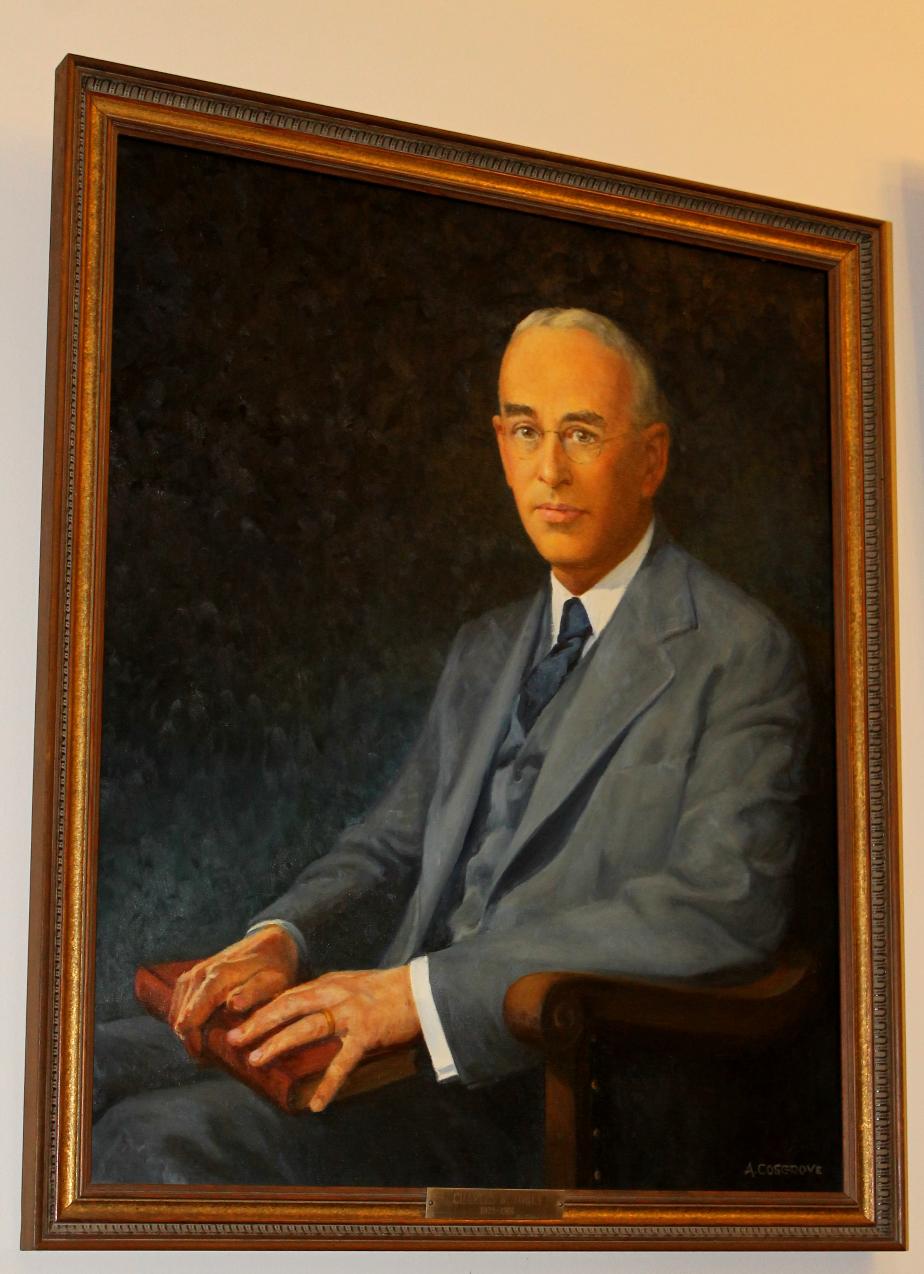
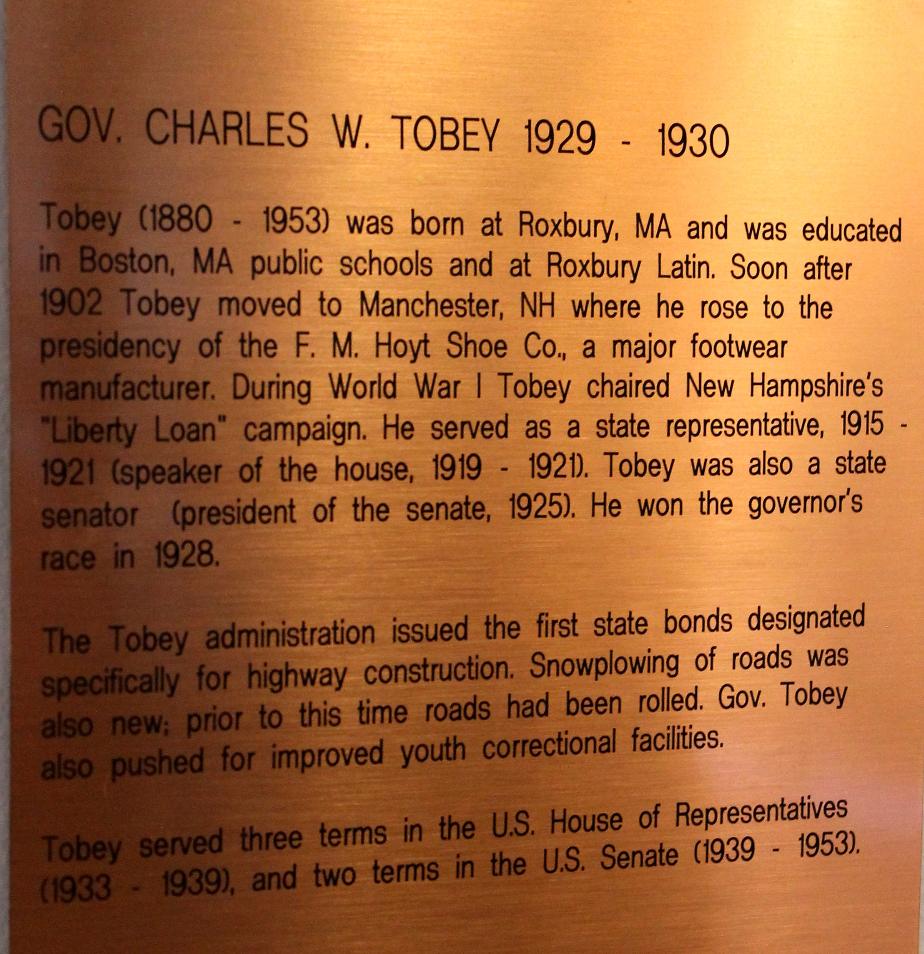
Colonel Francis Laban Town (Jefferson) - Civil War Surgeon and Assistant Surgeon-General of the US Army
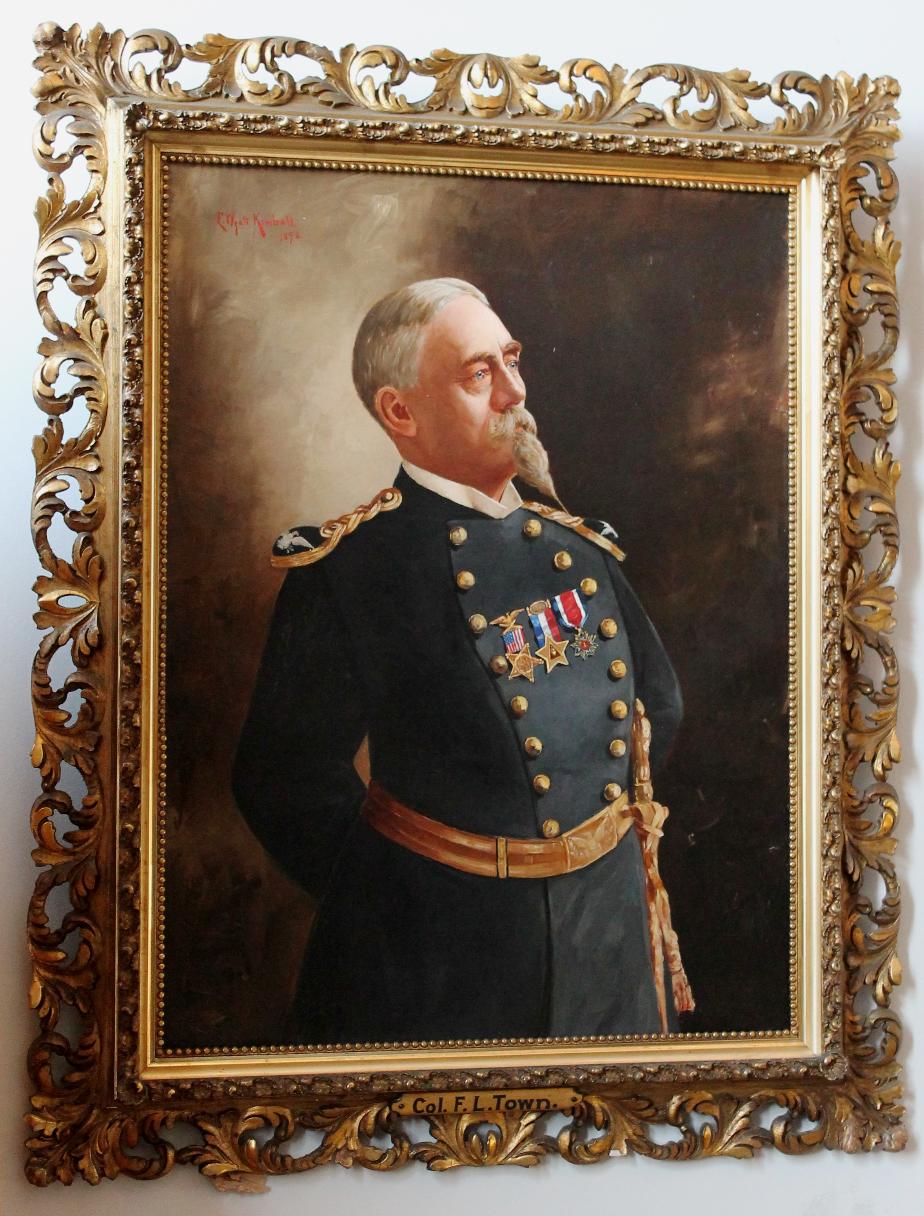
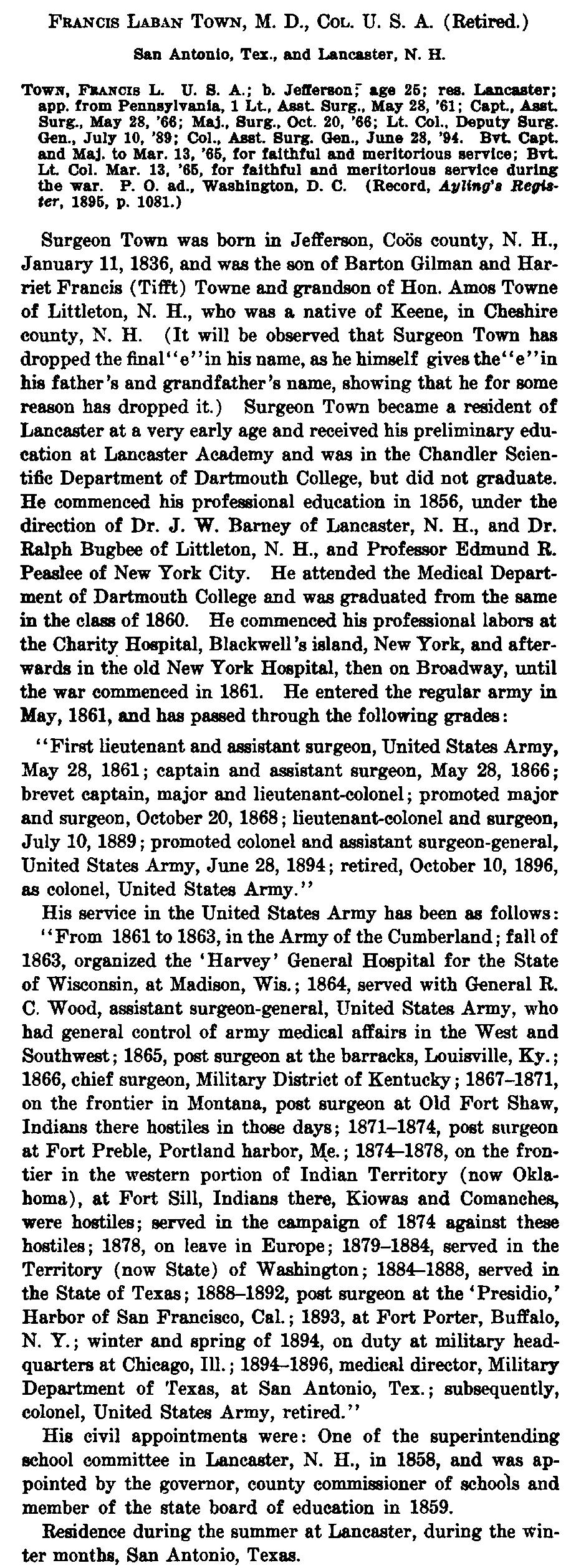
Thomas Logan Tullock (Portsmouth) Postmaster &
NH Secretary of State 1858-1861
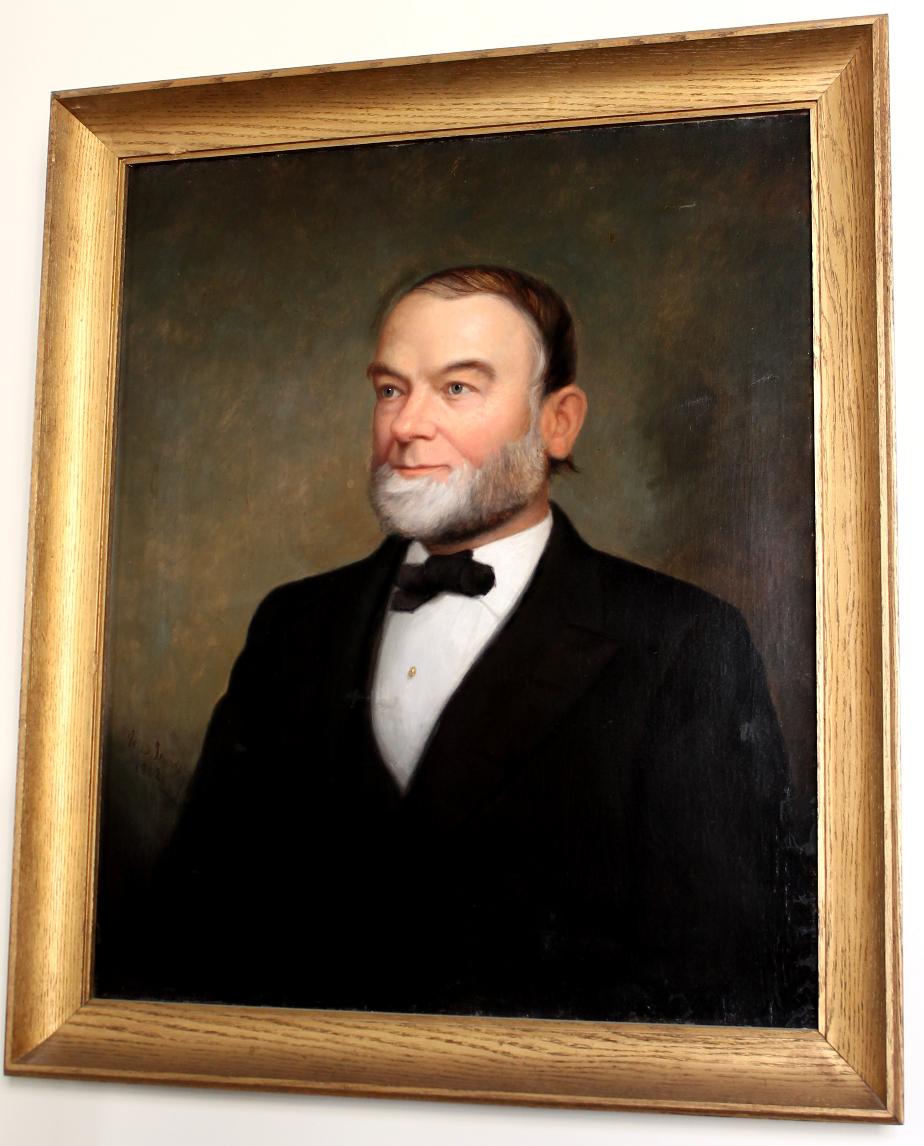
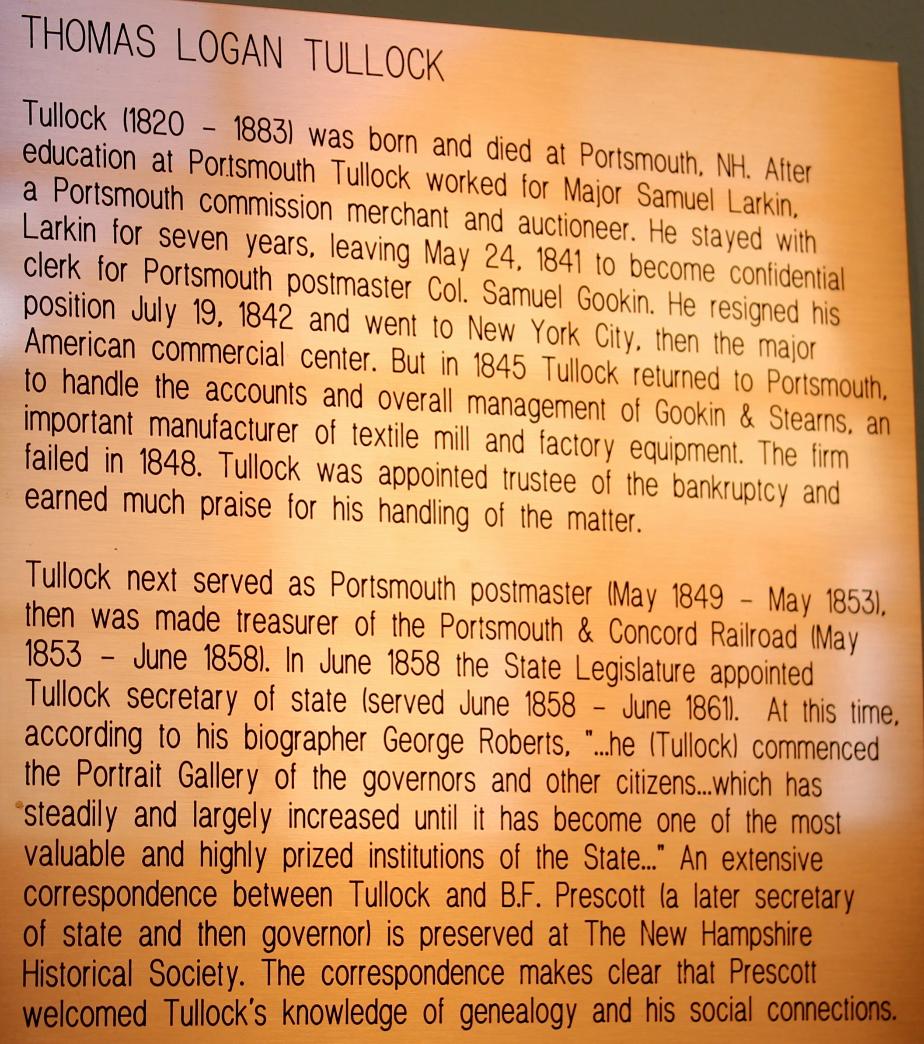
Governor Hiram Tuttle 1891 - 1892
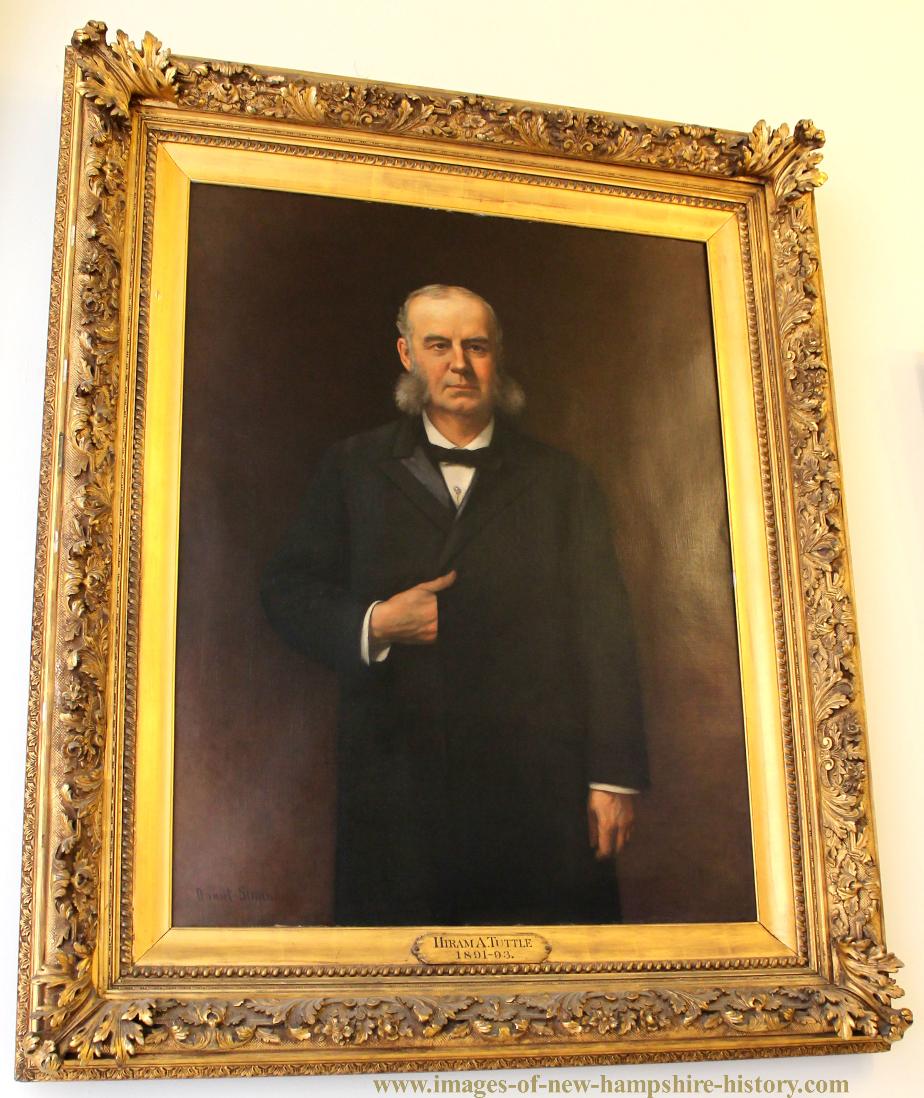
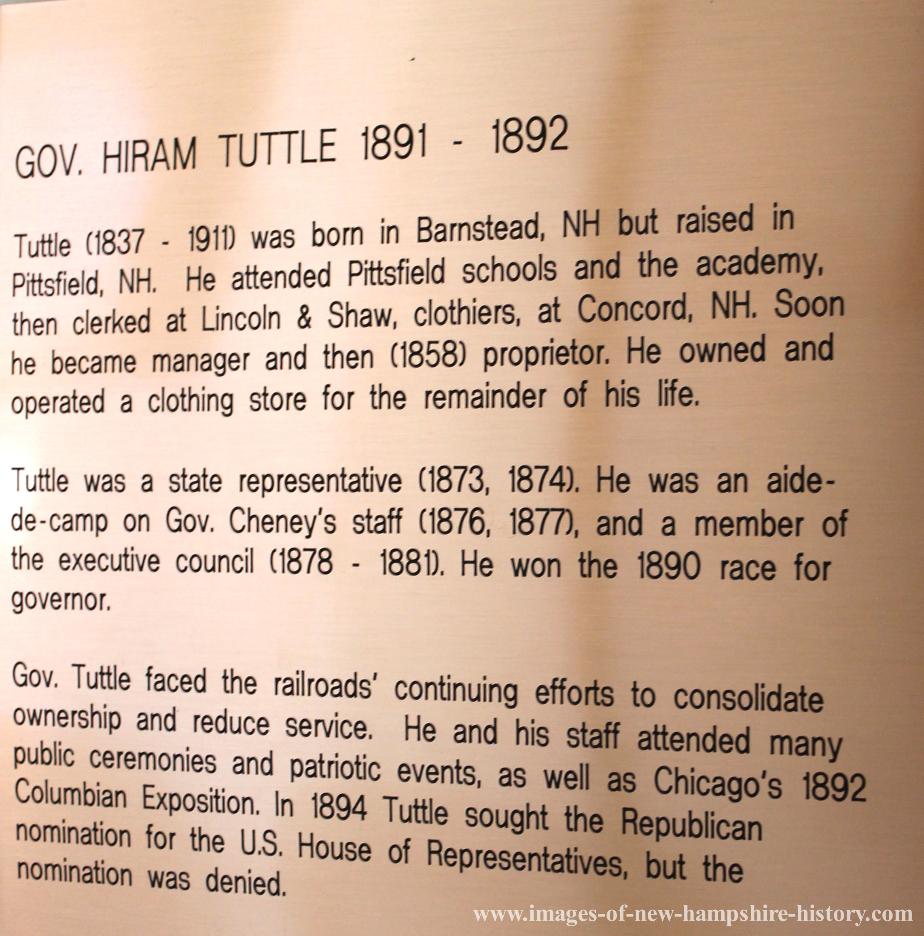
David A. Warde - NH Senate President (1873)
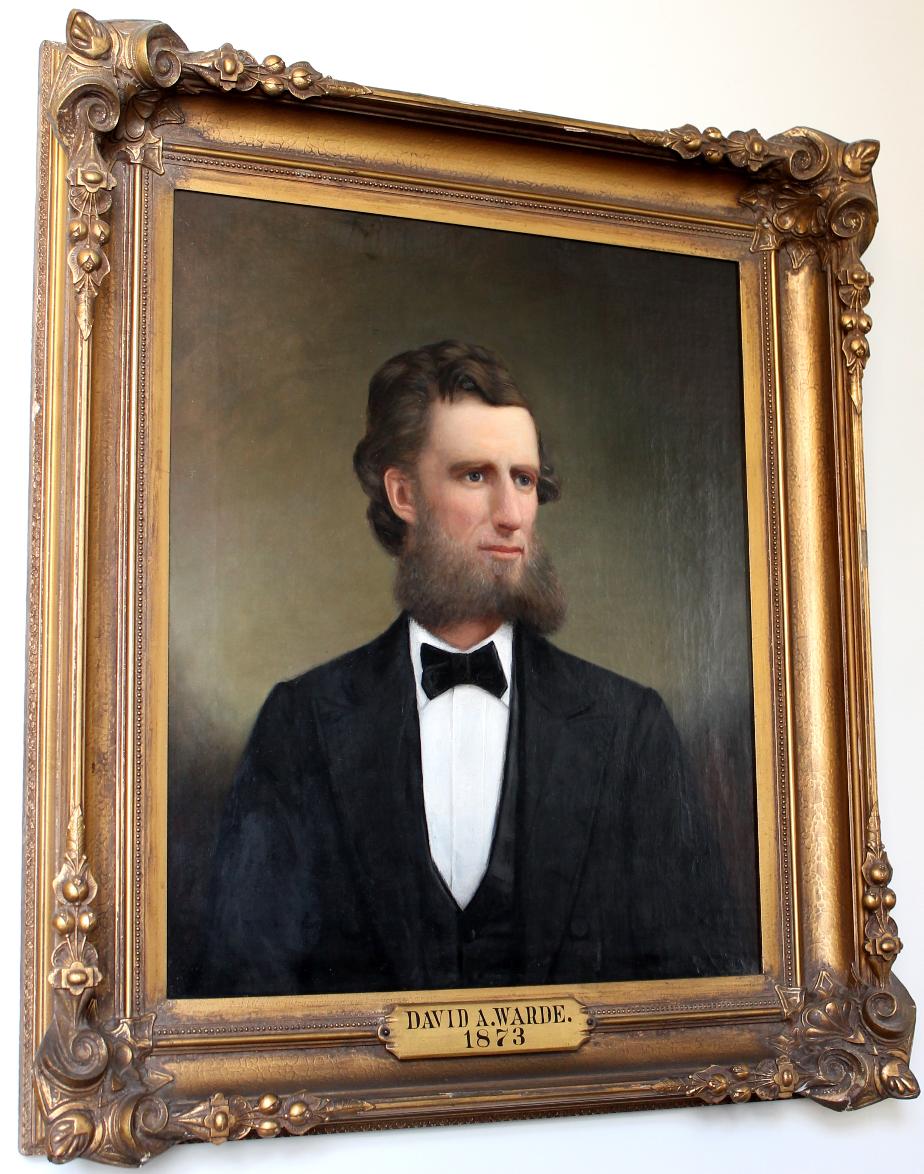

David Andrew Warde, Henniker NH (Feb 1, 1828) became a notable instance of a self-made man, fighting the battles of life bravely after the age of thirteen, when he obtained a brief academic education at Hopkinton, under the instruction of Prof. Ballard. At the age of fifteen, he went to Concord and found employment in an eating-saloon, which business he followed but a few months. Locking the saloon, upon the last night of his engagement, and handing the key to the proprietor, he said, “I will never sell another glass of liquor while I live: I shall seek new business to-morrow.” He immediately entered the hardware store of Porter & Rolfe, of Concord, where he remained until March, 1852, when, in company with a partner, he became the owner of the stock of the store where he had been employed, the partnership lasting until 1855, when it was dissolved. Mr. Warde continued in business alone until 1858, when he became associated with an intimate friend, who survived him in the business. As the head of this business house, Mr. Warde achieved an enviable reputation as a business man, and was widely known, not only in this but in other states, as an active and enterprising man, who achieved success by industry and well-directed application. He represented Ward 5, Concord, in the legislatures of 1867 and 1868, and his senatorial district in the years 1872 and 1873, the last year serving as president of the senate with marked abil ity. He was one of the water commissioners of Con cord several years. He was ever foremost with his aid in every movement that tended for the public welfare. Mr. Warde married, Nov. 12, 1852, Martha, daughter of Perley Cleaves, of Concord. His domestic relations were of the happiest character, he being a kind, indul gent, and thoughtful husband, father, and neighbor. He died Thursday, May 14, 1874, of pneumonia, having been ill but nine days. His funeral was largely attend ed, some of the most prominent gentlemen in the state being present; and, as a mark of the high esteem in which he was held, all places of business were closed during the solemn ceremonies of his burial. He was followed to his last resting-place by a long line of friends, and his remains were tenderly laid to rest, with the choicest flowers around them and the opening spring verdure above them, typical of the life immortal that awaits those who sleep well “after life's fitful fever.” Mr. Warde became a member of the First Baptist church in Concord, in 1852, and was ever after an upright and devoted Christian. He was also a member of Eureka Lodge and Trinity Chapter of Masons. He reflected much honor on the town that sent him forth ; and in his death his native town, as well as his adopted city and the state, suffered a great loss.
George Washington - NH State House Legislative Chamber
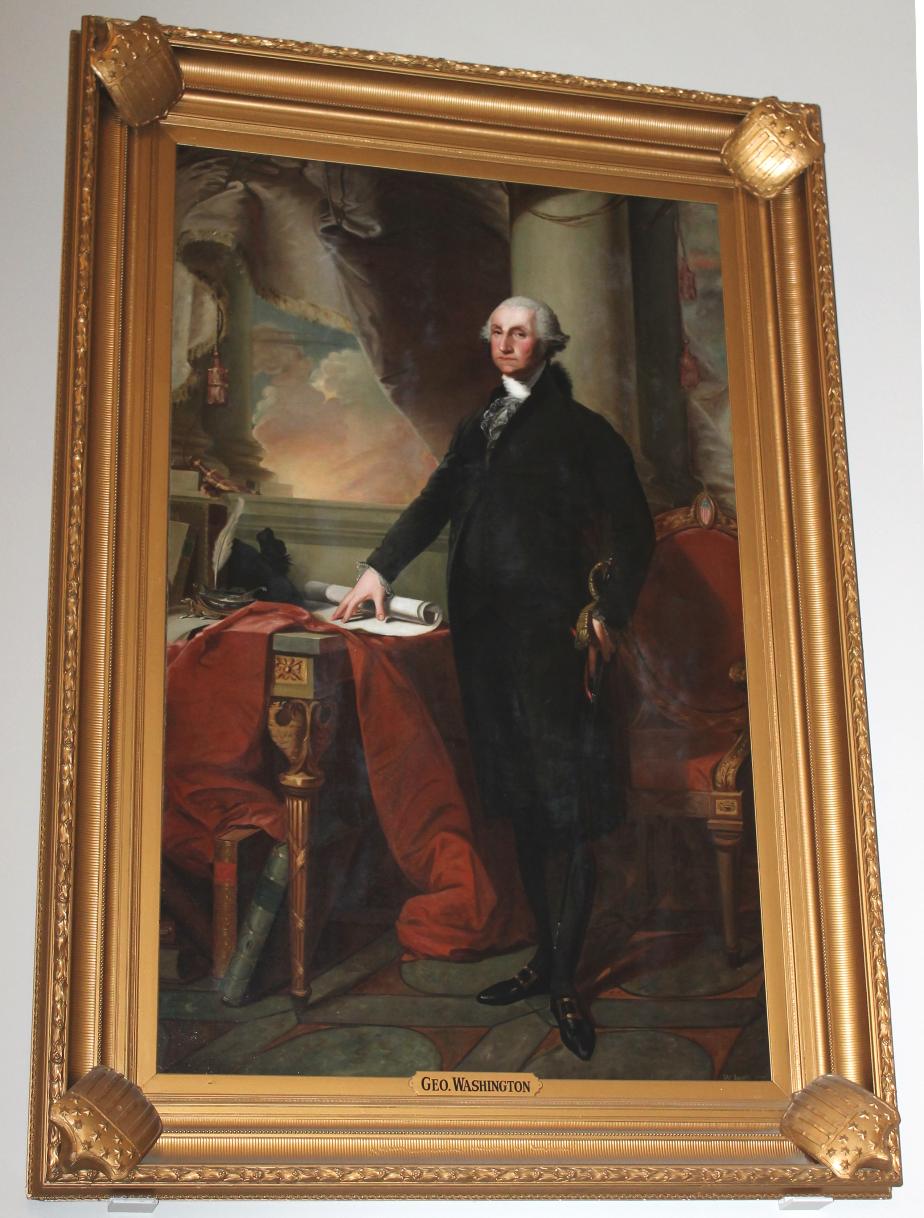
Daniel Webster - NH State House Legislative Chamber
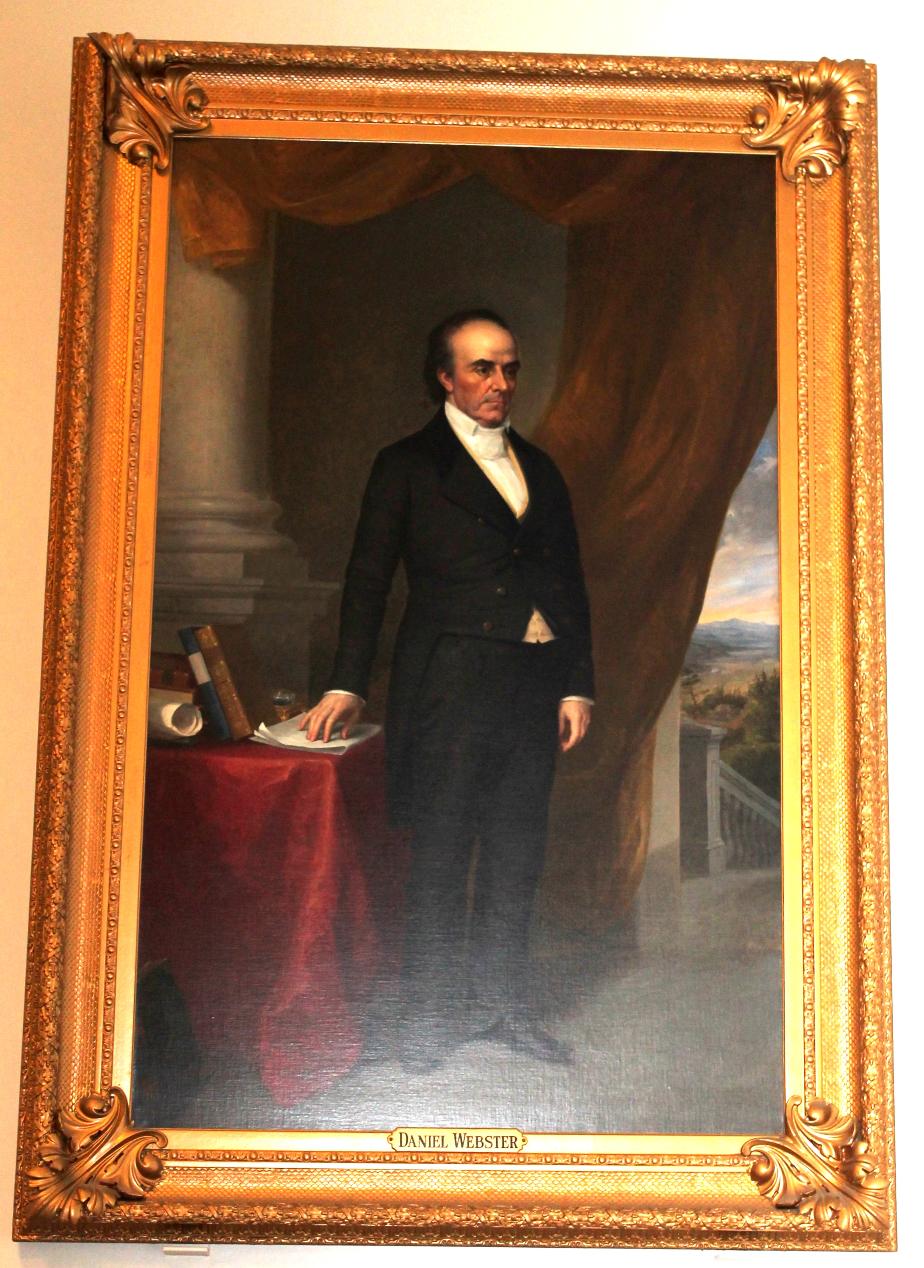
Daniel Webster - NH State Library
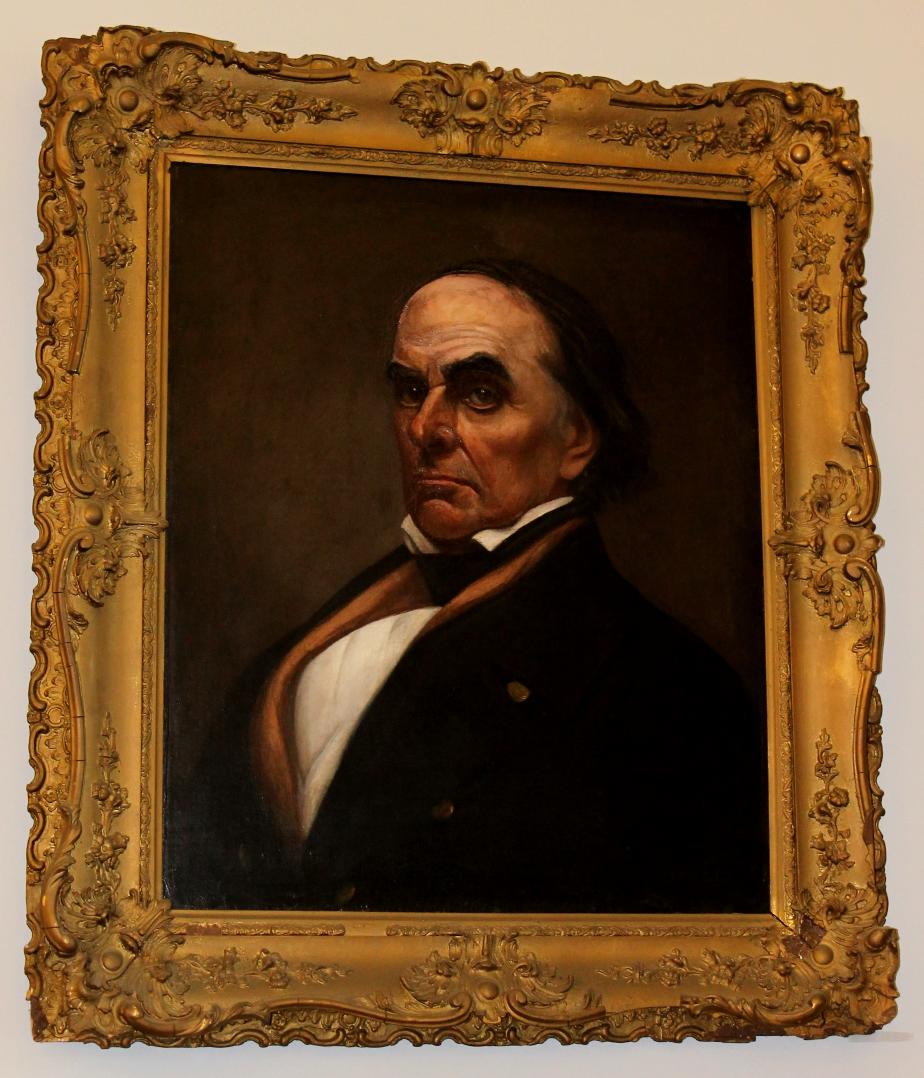
WEBSTER, DANIEL, a Representative from New Hampshire and a Representative and a Senator from Massachusetts; born in Salisbury, N.H., January 18, 1782; attended district schools and Phillips Exeter Academy, Exeter, N.H.; graduated from Dartmouth College, Hanover, N.H., in 1801; principal of an academy at Fryeburg, Maine, in 1802; studied law; admitted to the bar in 1805 and commenced practice in Boscawen, near Salisbury, N.H.; moved to Portsmouth, N.H., in 1807 and continued the practice of law; elected as a Federalist from New Hampshire to the Thirteenth and Fourteenth Congresses (March 4, 1813-March 3, 1817); was not a candidate for reelection in 1816 to the Fifteenth Congress; moved to Boston, Mass., in 1816; achieved national fame as counsel representing Dartmouth College before the United States Supreme Court in the Dartmouth College case 1816-1819; delegate to the Massachusetts State constitutional convention in 1820; elected from Massachusetts to the Eighteenth, Nineteenth, and Twentieth Congresses and served from March 4, 1823, to May 30, 1827; did not serve in the Twentieth Congress; chairman, Committee on the Judiciary (Eighteenth and Nineteenth Congresses); elected as Adams (later Anti-Jacksonian) on June 8, 1827, to the United States Senate for the term beginning March 4, 1827, credentials presented on December 3, 1827, and took oath of office on December 17, 1827; reelected as a Whig in 1833 and 1839 and served from June 8, 1827, until his resignation, effective February 22, 1841; chairman, Committee on Finance (Twenty-third and Twenty-fourth Congresses); unsuccessful Whig candidate for president in 1836; appointed Secretary of State by President William Henry Harrison and again by President John Tyler and served from 1841 to 1843; again elected as a Whig to the United States Senate and served from March 4, 1845, to July 22, 1850, when he resigned; appointed Secretary of State by President Millard Fillmore and served from July 22, 1850, until his death in Marshfield, Massachusetts., October 24, 1852; interment in the Winslow Cemetery.
William Pickering Weeks - NH Senate President - 1849 (Greenland NH)

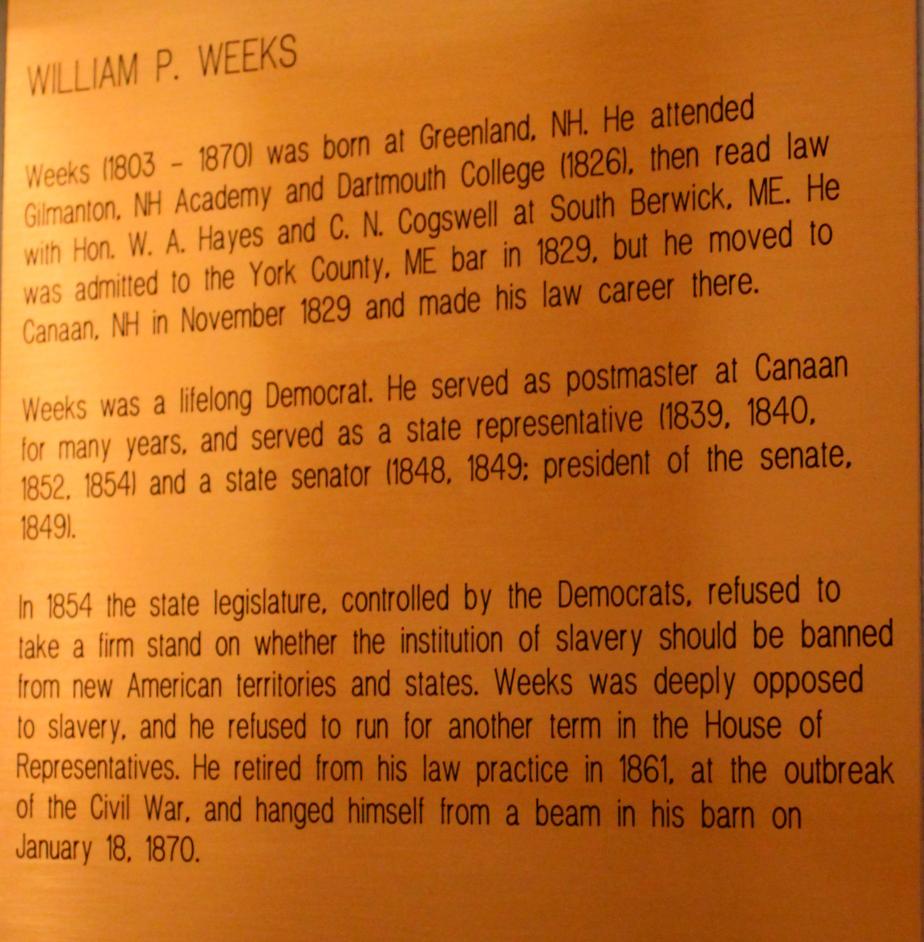
John Sullivan Wells (Durham) US Senator 1855
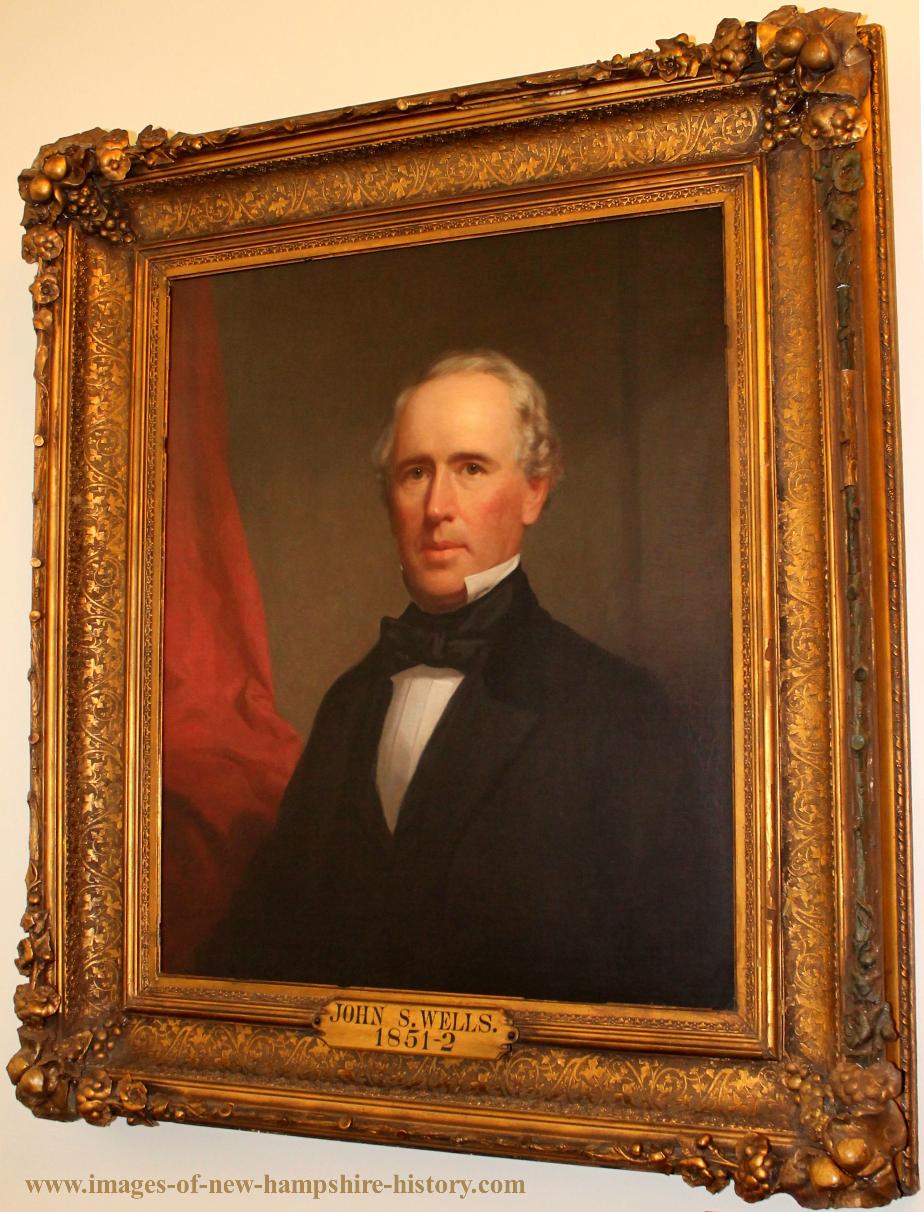

John Sullivan Wells, a Senator from New Hampshire; born in Durham, Strafford County, N.H., October 18, 1803.
John attended Pembroke (N.H.) Academy; studied law; admitted to the bar in 1828 and practiced in Guildhall, Vt., 1828-1835; moved to Lancaster, N.H., in 1836 and continued the practice of law until 1846; solicitor of Coos County 1838-1847; moved to Exeter, Rockingham County, N.H., and resumed the practice of law; member, State house of representatives 1839-1841, serving as speaker in 1841; attorney general of New Hampshire 1847; member and president of the State senate 1851-1852; appointed to the United States Senate to fill the vacancy caused by the death of Moses Norris and served from January 16 to March 3, 1855; died in Exeter, N.H., August 1, 1860; interment in Exeter Cemetery, Exeter, Rockingham County, N.H.
Benning Wentworth - NH State House Portrait

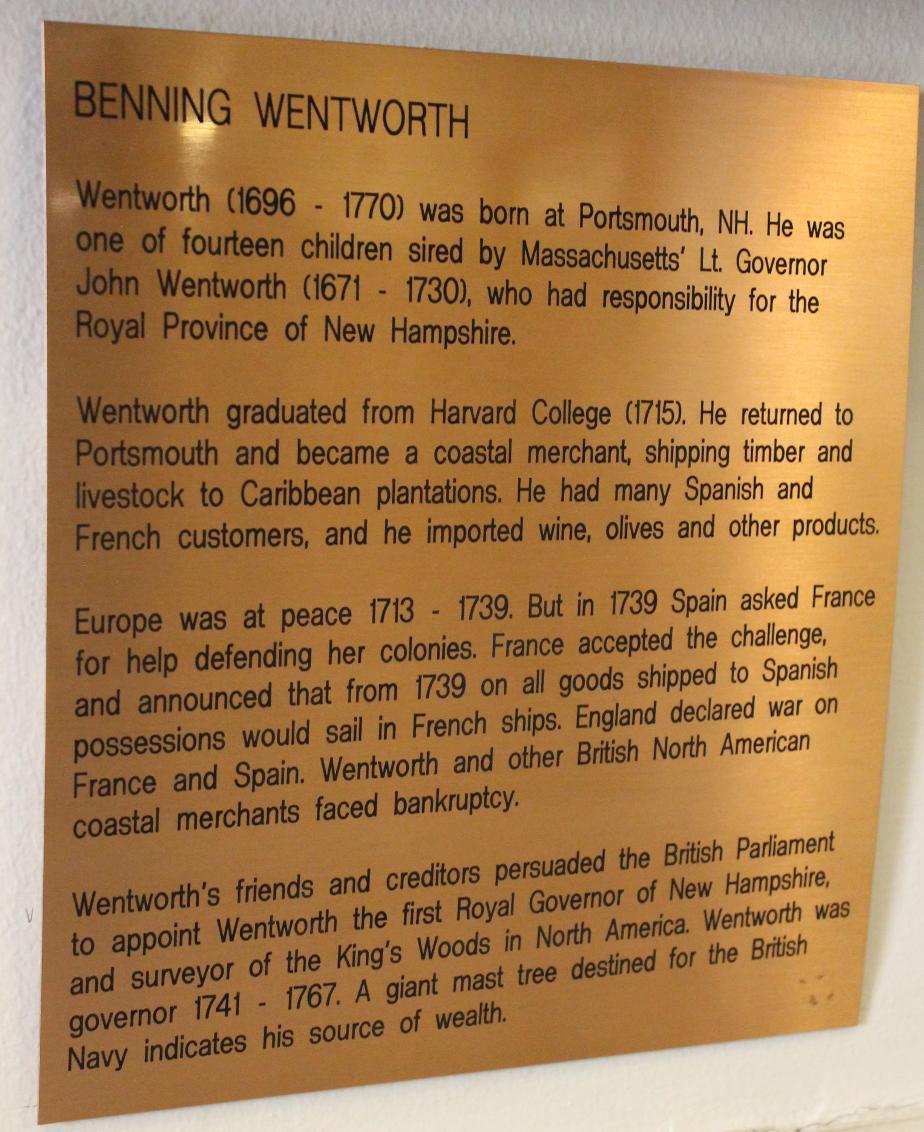
Governor John Wentworth 1717-1730
John Wentworth was a grandson of "Elder" William Wentworth (born at Alford, Lincolnshire, England, in 1615; died in Dover, New Hampshire, March 16, 1697)
An early settler in New England. William was a follower of the Rev. John Wheelwright. With him and 33 others, William signed, August 4, 1639, “A Combination for a Government at Exeter, N. H.” William moved to Wells, Maine, with Wheelwright; and when the latter went to England on the accession of Oliver Cromwell to power, William moved to Dover, where he was a ruling elder and often preached. On his death, he left a widow, nine sons, and one daughter. John Wentworth was raised to be a sea captain. In 1712 he was appointed by Queen Anne a councilor for New Hampshire; in 1713 he became a justice of the common pleas, and late in 1717 lieutenant governor. Before New Hampshire received its own Royal Governor in 1741, its governors were also commissioned to govern the neighboring Province of Massachusetts Bay, where they spent most of their time. Consequently the lieutenant governors exercised significant power. As lieutenant governor, John Wentworth had little function in the government for several years. Then in January 1723, Governor Samuel Shute abruptly returned to England, so Wentworth took over in New Hampshire, governing until the arrival of Shute's replacement, William Burnet, in 1728.
He continued as Lt. Governor until his death in 1730, again governing between Burnet's death in 1729 and the arrival of Jonathan Belcher in 1730. During his administration he brought focus on the border dispute between New Hampshire and Massachusetts, cultivating power centers in London that eventually led to resolution of that dispute (albeit in 1740, long after his death), and establishing the dynasty that would dominate New Hampshire until independence.

Governor John Wentworth 1767-1775
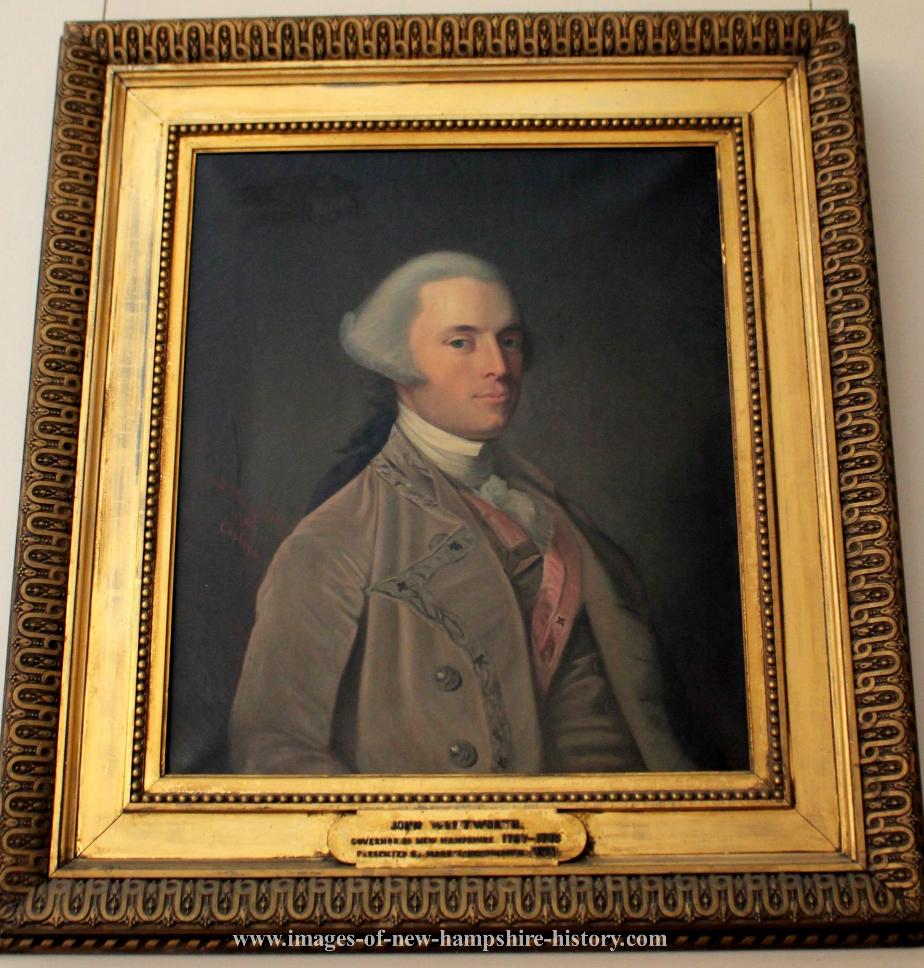
Wentworth was born in Portsmouth, New Hampshire, on August 9, 1737.[1] His ancestry went back to some of the earliest settlers of the Province of New Hampshire, and he was grandson of John Wentworth, who served as the province's lieutenant governor in the 1720s, a nephew to Governor Benning Wentworth,[2] and a descendant of "Elder" William Wentworth. His father Mark was a major landowner and merchant in the province, and his mother, Elizabeth Rindge Wentworth, was also from the upper echelons of New Hampshire society.[3] In 1751, he enrolled in Harvard College, receiving a bachelor's degree in 1755 and a master's degree in 1758.[4] During his time at Harvard, he was a classmate and became a close friend of future Founding Father and President of the United States John Adams.[5]
In 1759, the young Wentworth made his first significant investment, joining a partnership in the purchase and development of land in the Lake Winnipesaukee area. Wentworth sat on a committee of partners that oversaw the settlement of the community, which the investors named Wolfeboro. In 1763, his father sent him to London to act on behalf of his merchant interests. Based on his father's introductions, he was soon mingling with the upper levels of British society. Among the connections he made was one with the Marquess of Rockingham, a distant relative (although neither was apparently aware of this) and a leading Whig politician. In 1765, Wentworth, still in London, was appointed by the province as one of its agents. That same year Rockingham became Prime Minister and led the repeal of the hated Stamp Act. Whether Wentworth influenced Rockingham's decision is uncertain, but New Hampshire's other agent, Barlow Trecothick, drafted with Rockingham a position paper on the matter, and Wentworth was clearly sympathetic to colonial opposition to the Stamp Act.
Wentworth's uncle Benning had spent many years of his governorship lining his pockets by selling land grants to the west of the Connecticut River, territory to which the province held dubious claim. In 1764, the Lords of Trade ruled that New Hampshire's western border was at the Connecticut River, decisively awarding the territory (the future state of Vermont) to the Province of New York. The governor, however, refused to resign, leading the Lords of Trade to consider his recall. Wentworth interceded, and convinced them to allow his uncle the dignity of resigning in his nephew's favor.
In August 1766, he was commissioned as Governor and vice admiral of New Hampshire, and Surveyor General of the King's Woods in North America. Before he returned to North America he was awarded a Doctorate of Common Law by Oxford University. After a difficult crossing he arrived at Charleston, South Carolina in March 1767, where he proceeded to make the first major survey of the forests of Georgia and the Carolinas on behalf of the crown.[6] He then made his way north overland, and was received in Portsmouth with pomp and ceremony on June 13, 1767.
New Hampshire Colonial Governor. Born into a New Hampshire family of wealth and position, he attended Harvard College and by 1758 had received both a bachelor and masters degree. He became Governor of New Hampshire in 1766. As a loyalist during the American Revolution, Wentworth was forced to flee to New York City in 1776, and to England in 1778. His property and possessions were seized by the government that was established upon his departure. From the mid-1780s Wentworth lived in Halifax, Nova Scotia, and served as Lieutenant Governor of Nova Scotia from 1792 until his retirement in 1808. During his service he was knighted and awarded a baronetcy in 1795. Wentworth was buried in the crypt beneath St. Paul's Church in Halifax, where a tablet exists to his memory.
James Weston - Governor 1871-1872 & 1874-1875
James Westonwas born in Manchester, New Hampshire on August 27, 1827. His education was attained in academies at Manchester and Piscataquog, where he studied engineering. He went to work in the railroad industry, establishing a successful career an engineer. He first entered politics as mayor of Manchester, a position he won election to in 1861, 1867, 1869, 1870 and 1874. Weston next secured the 1871 Democratic gubernatorial nomination, and after a close popular election, the legislature named Weston the official governor. In 1872 and 1873 he lost his reelection bids, but was successful in winning reelection in 1874. During his two terms, an important railroad merger was authorized; and numerous Democratic appointments were made in the judiciary, as well as in state jobs that were previously held by the Republican party. After completing his term, Weston retired from political life. He continued to stay active, working in the banking, insurance and railroad industries. Governor James A. Weston passed away in Manchester on May 8, 1895.
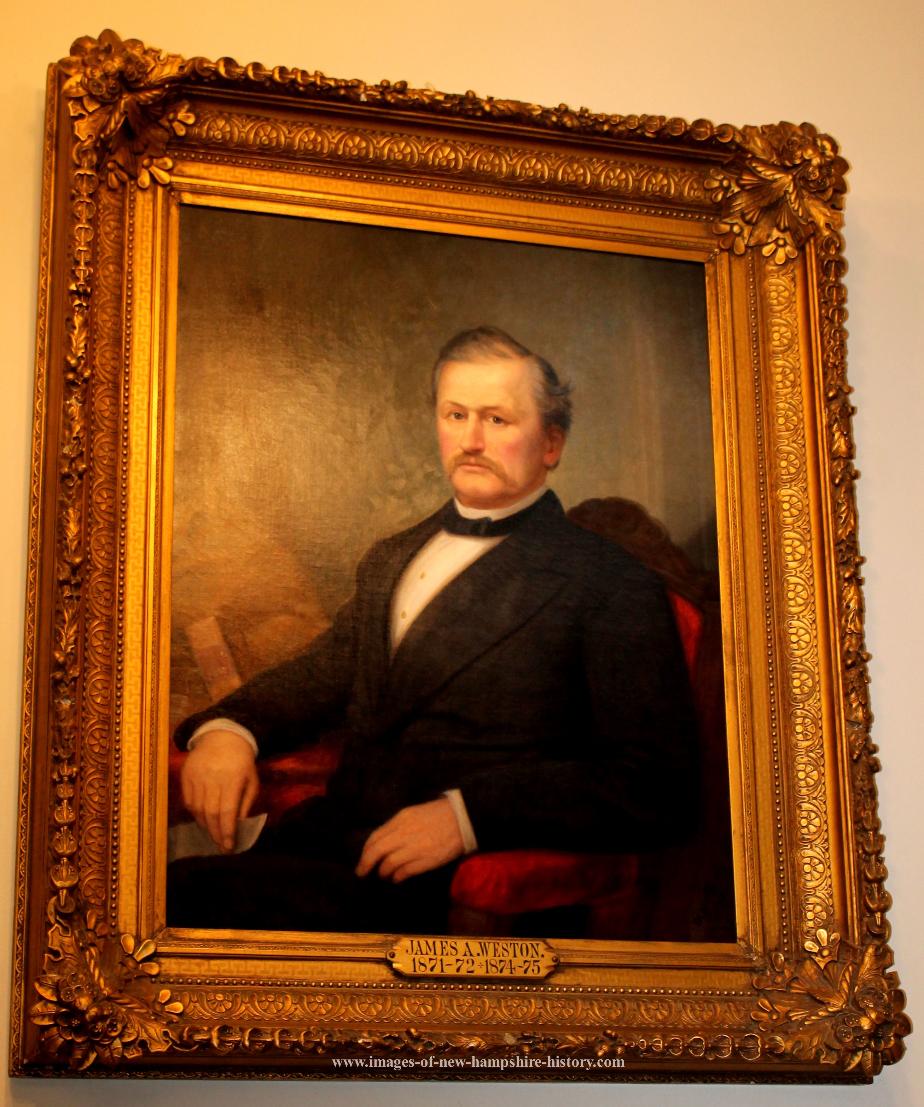
General William Whipple 1730 - 1785 Portsmouth
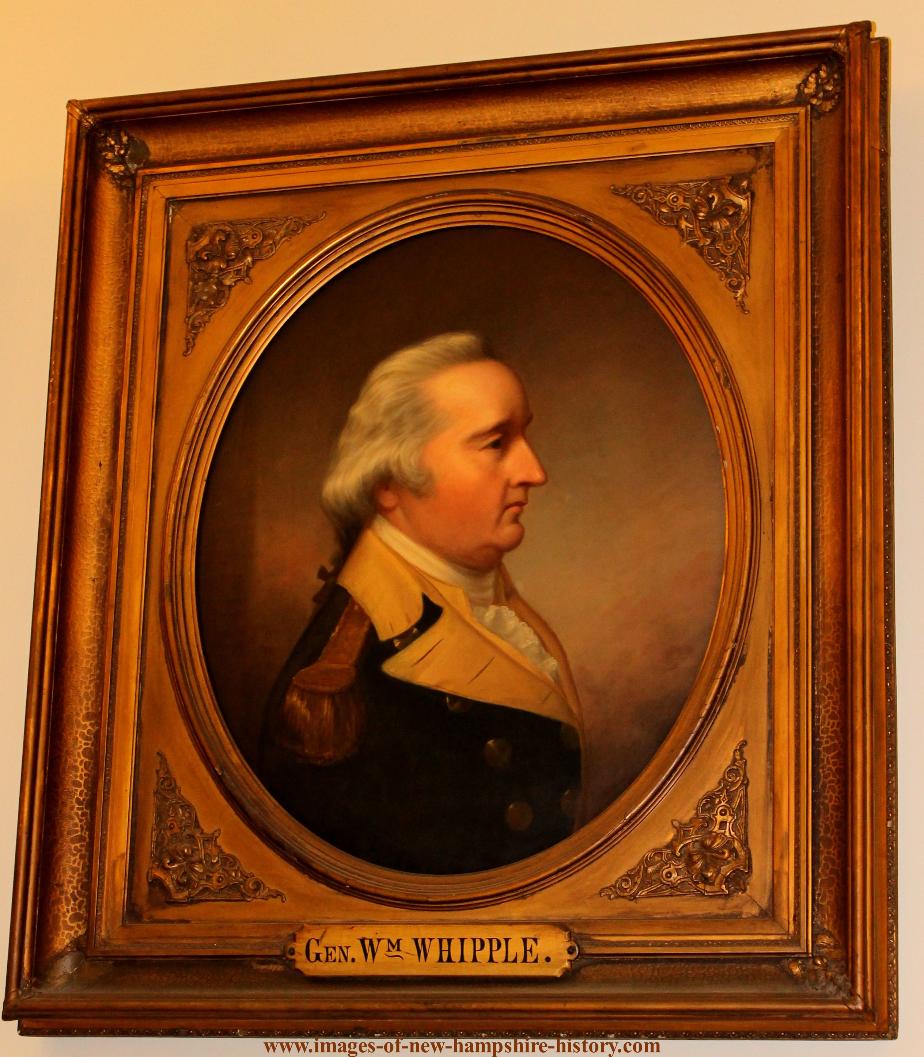
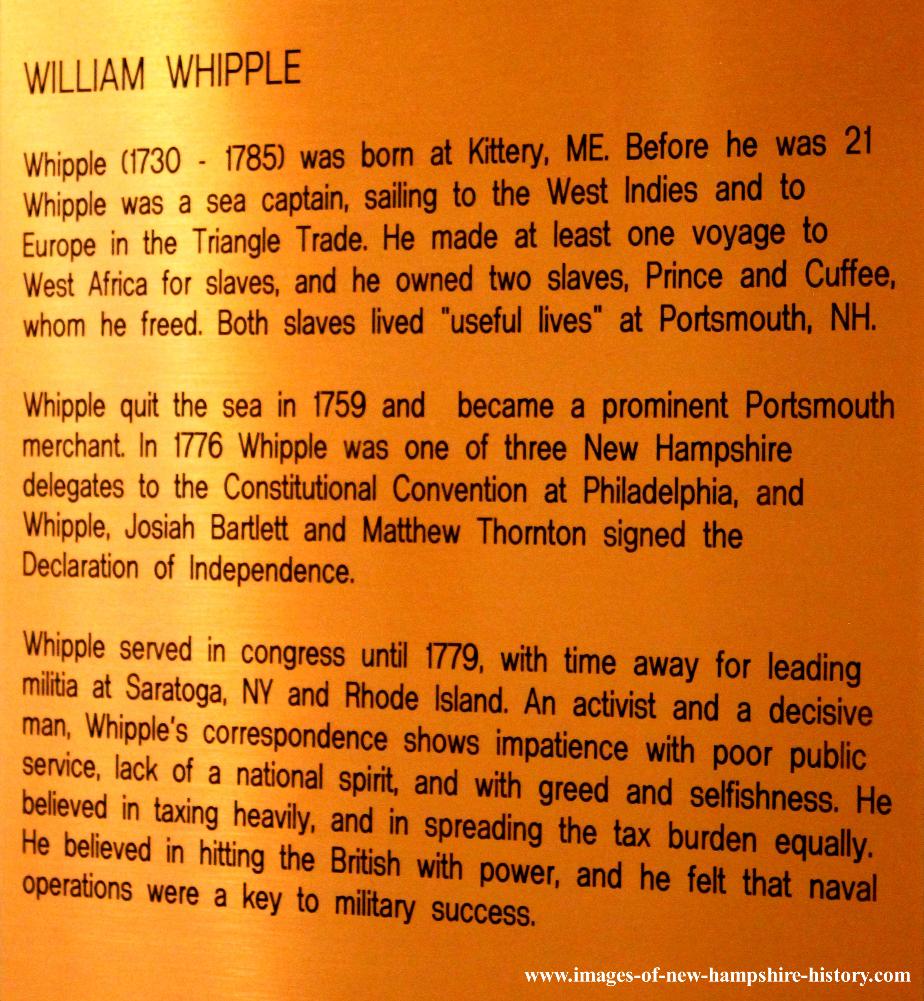
Governor Jared Williams 1847 - 1849

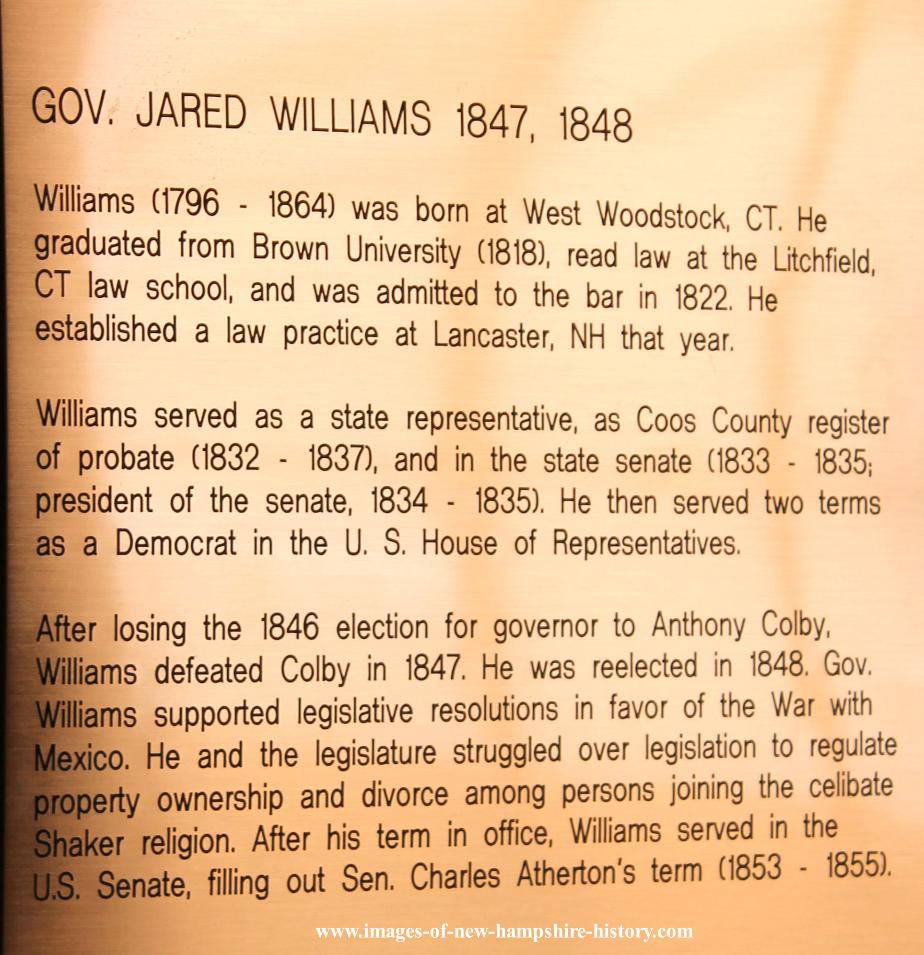
Governor John C. Winant 1925-1927 & 1931-1935
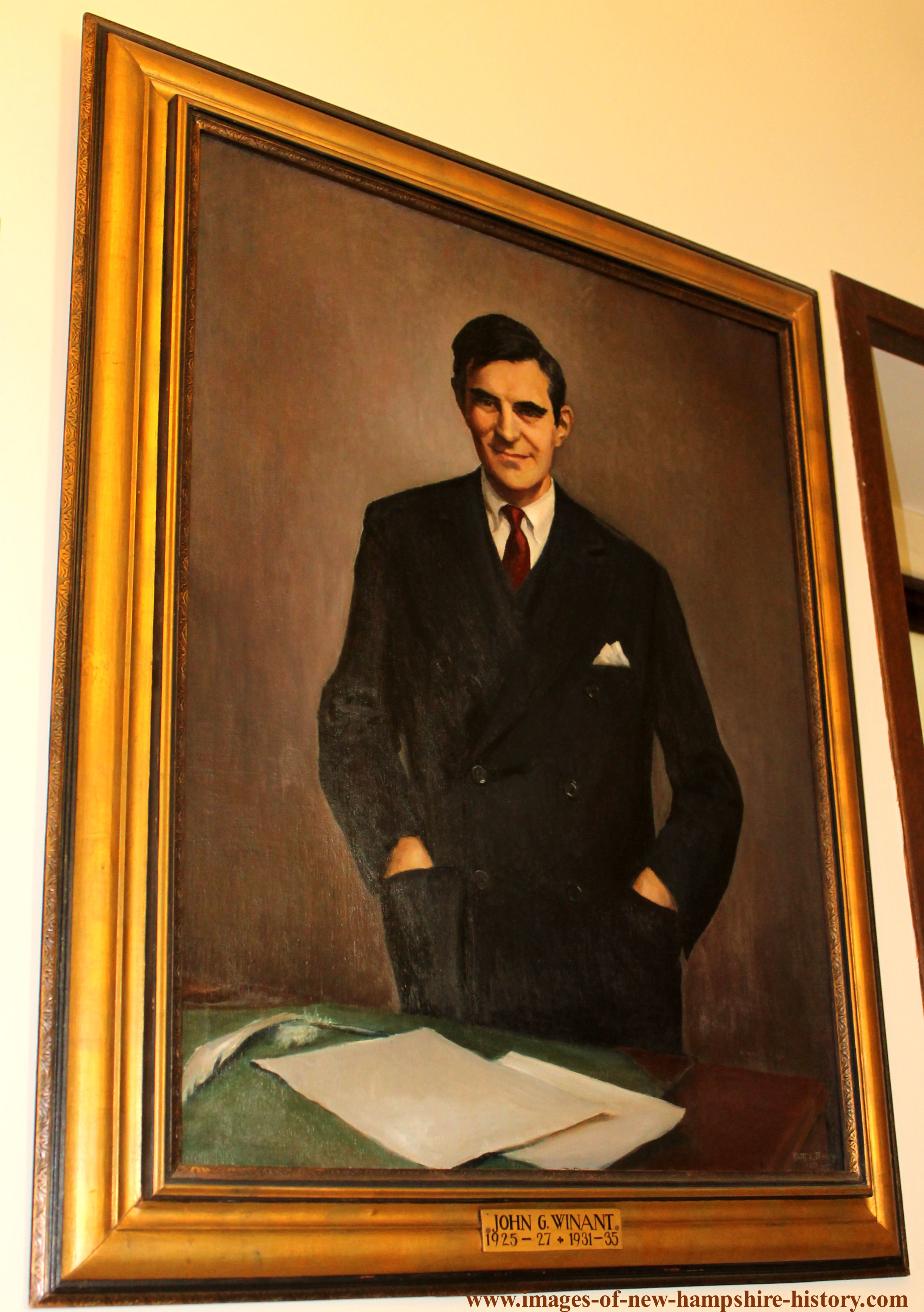
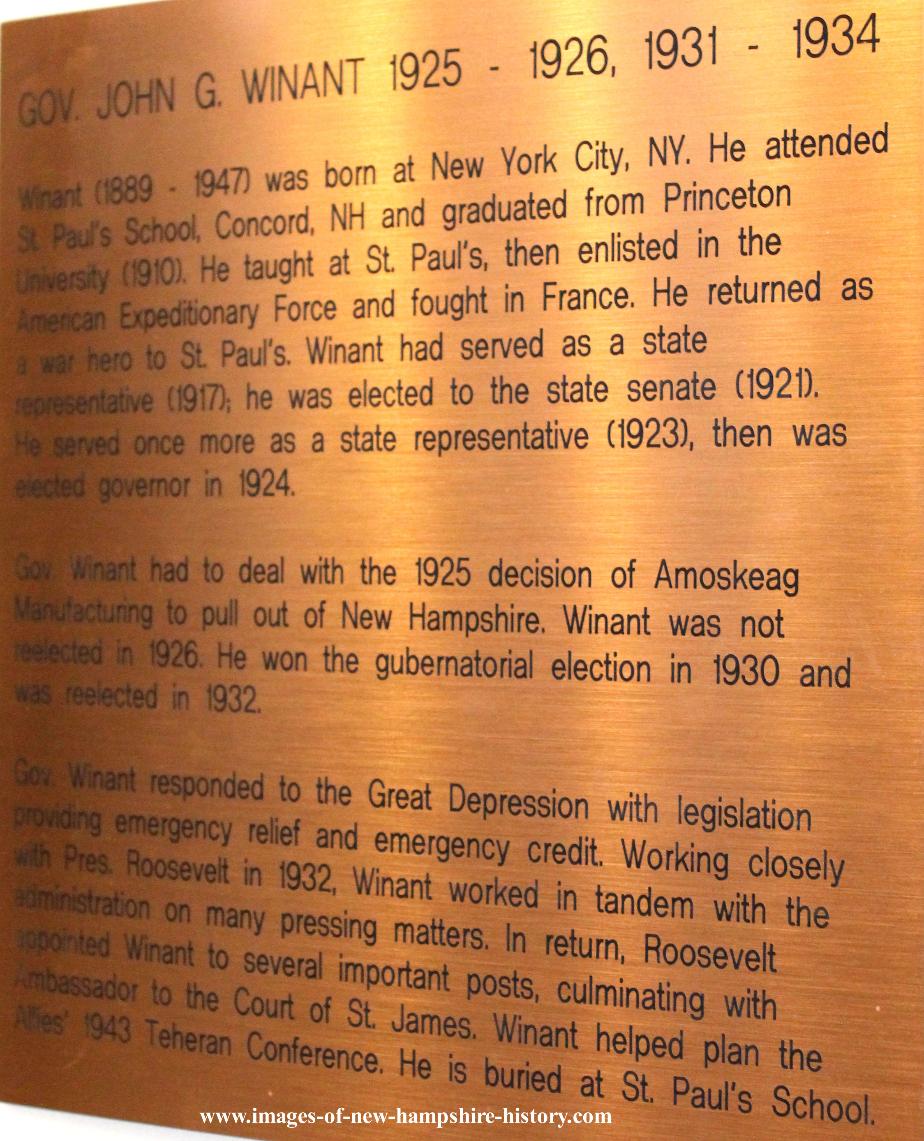
Governor Levi Woodbury 1823-1824
